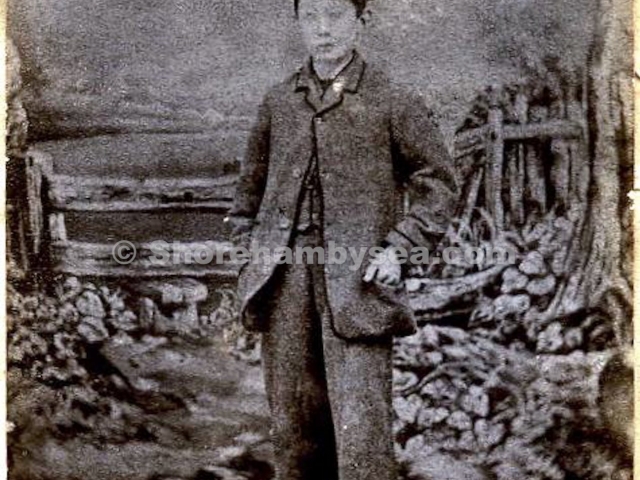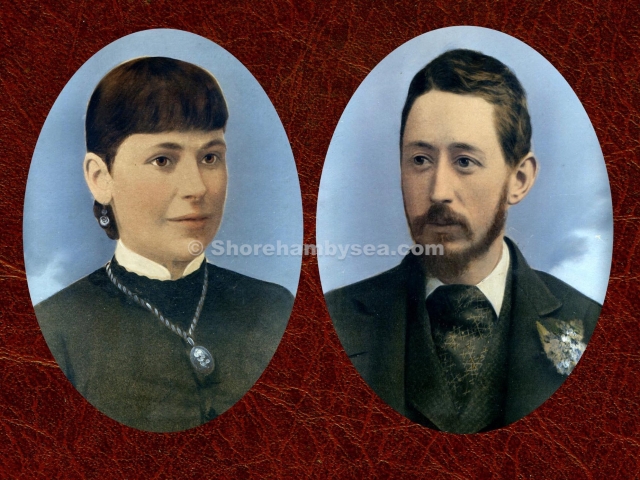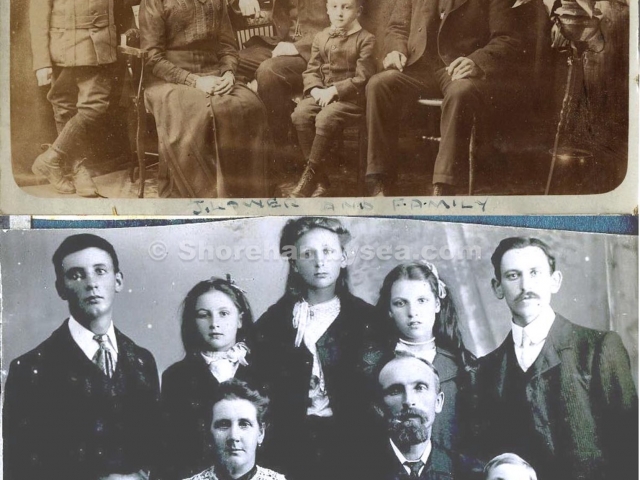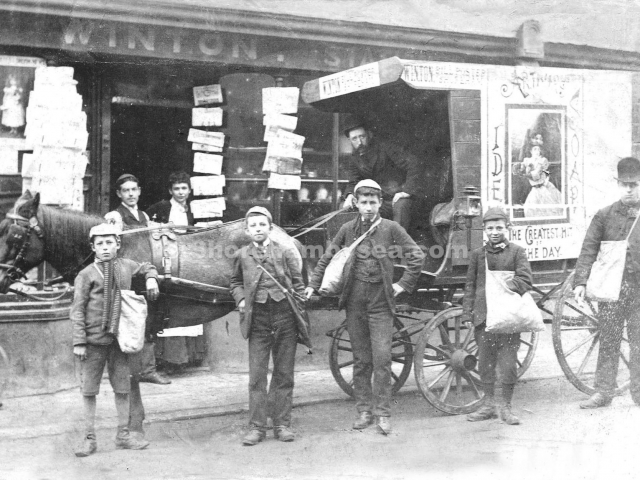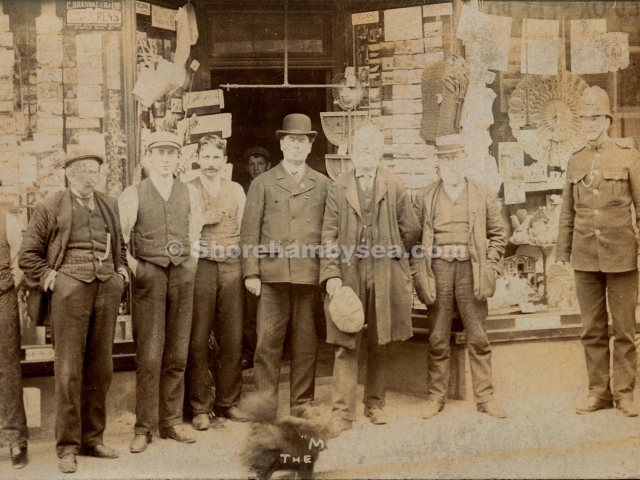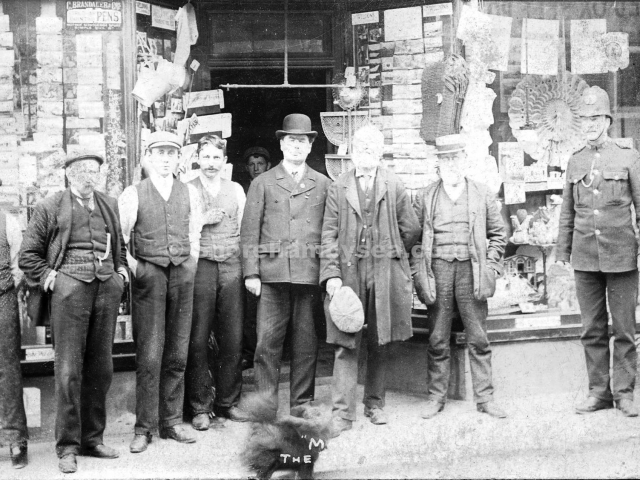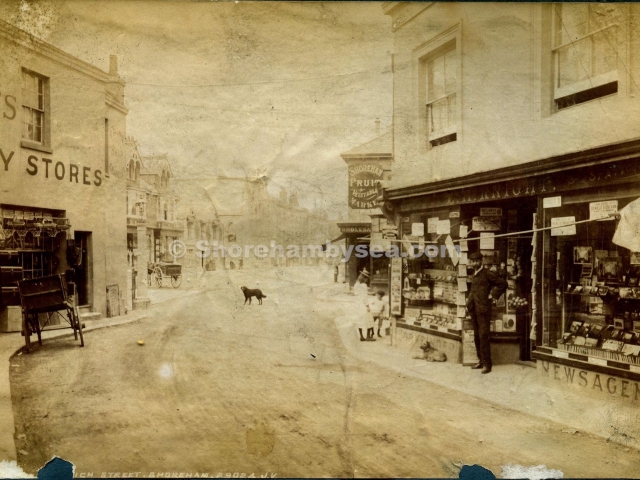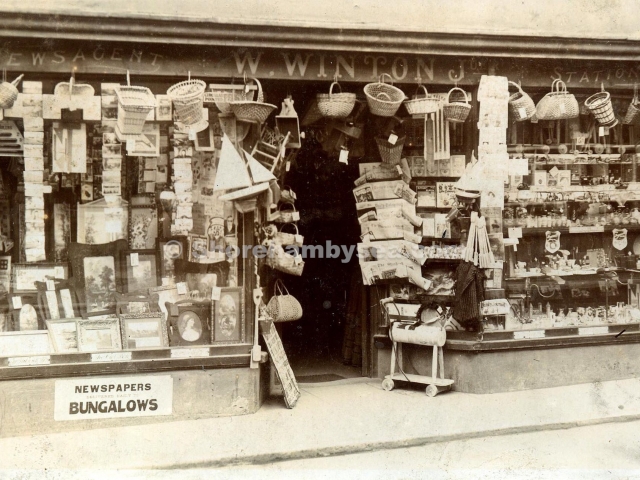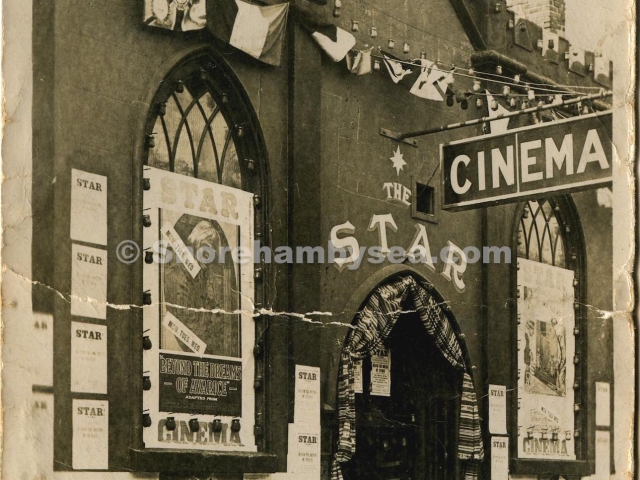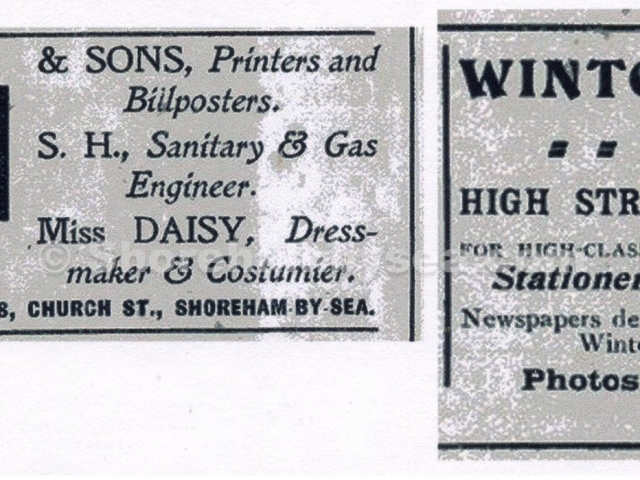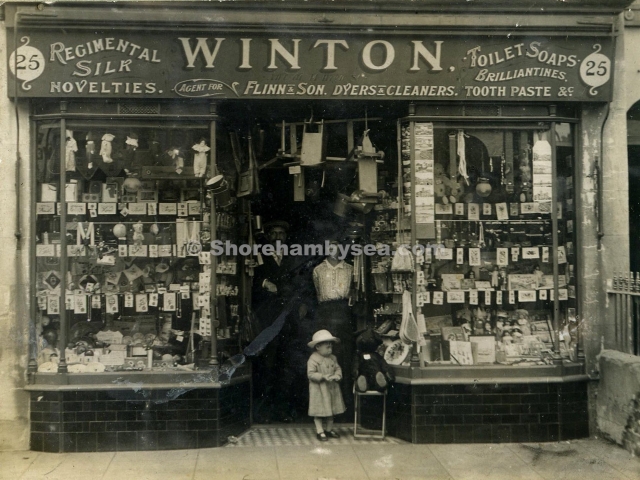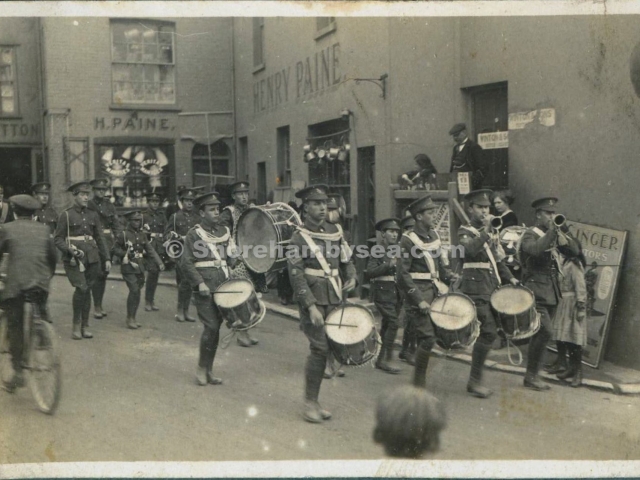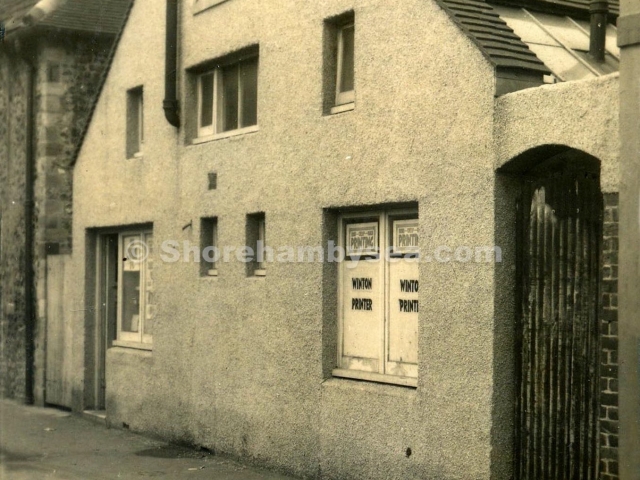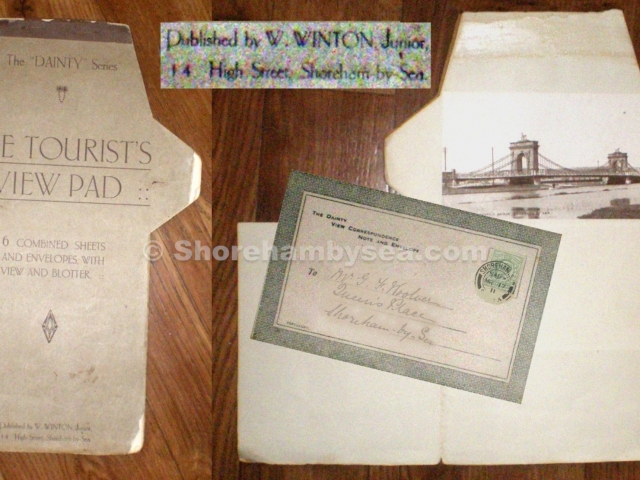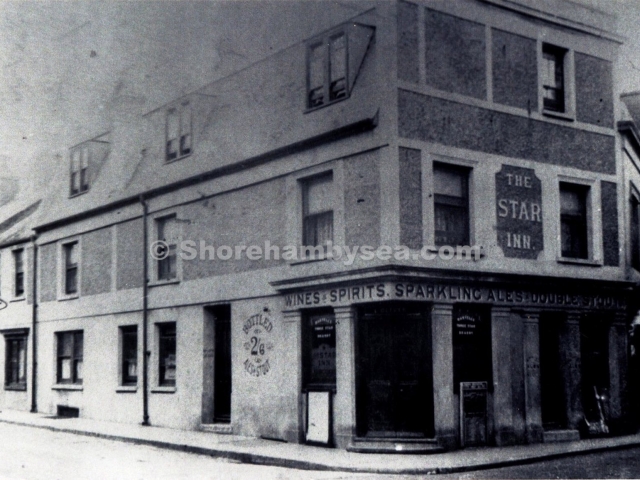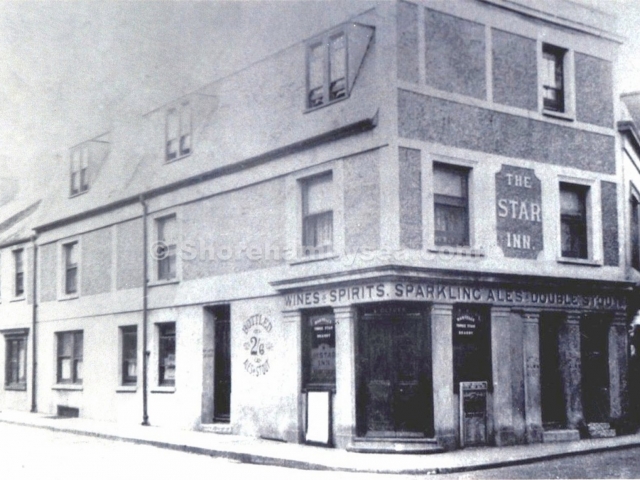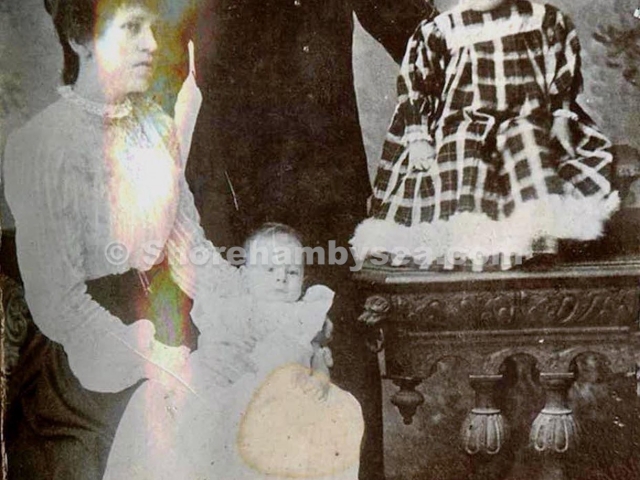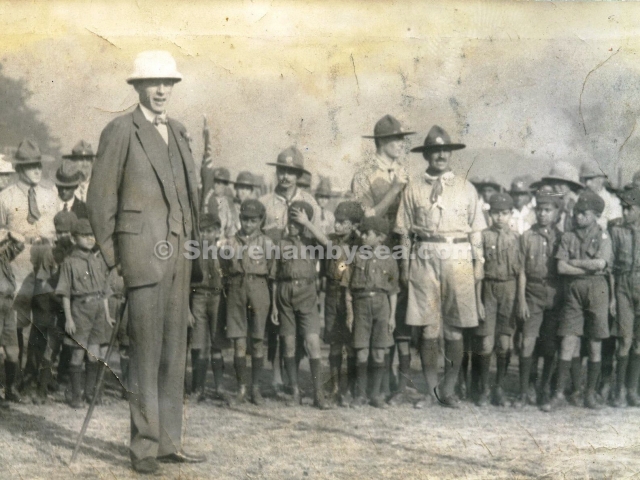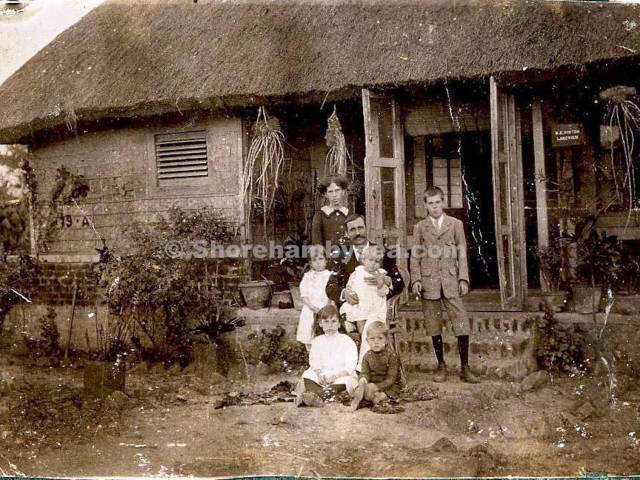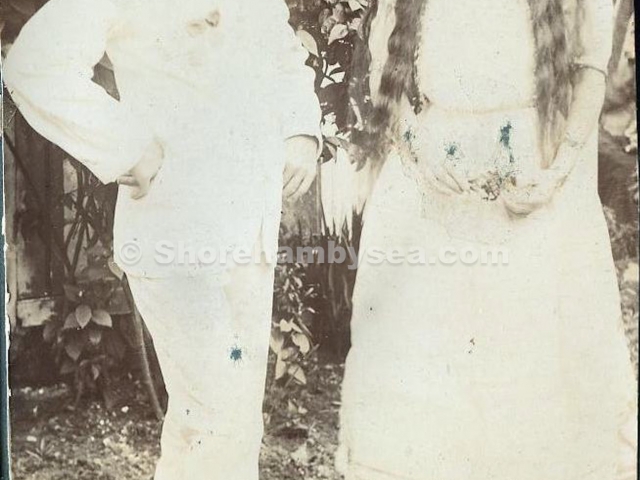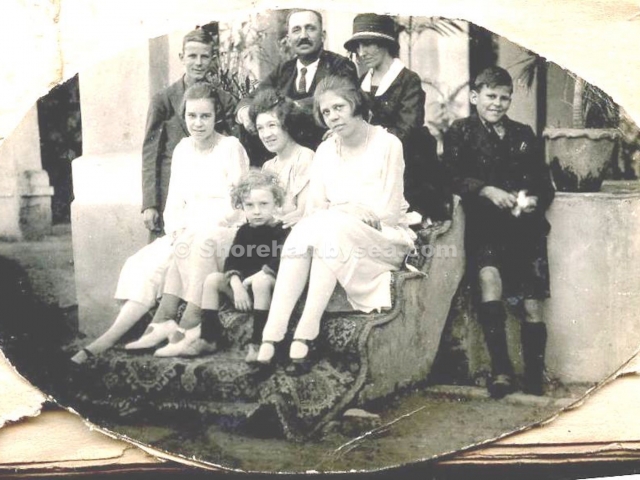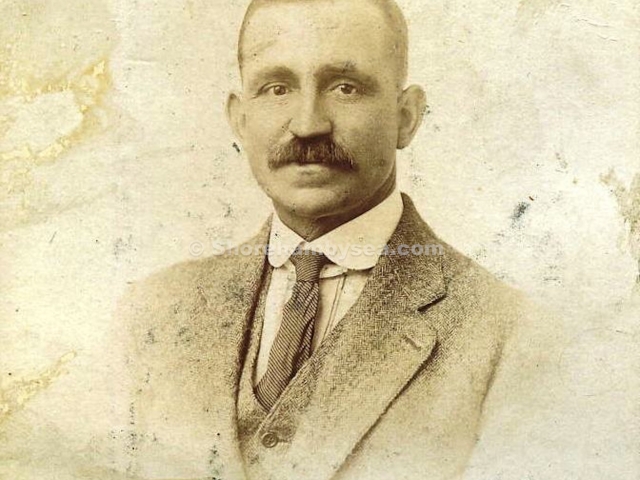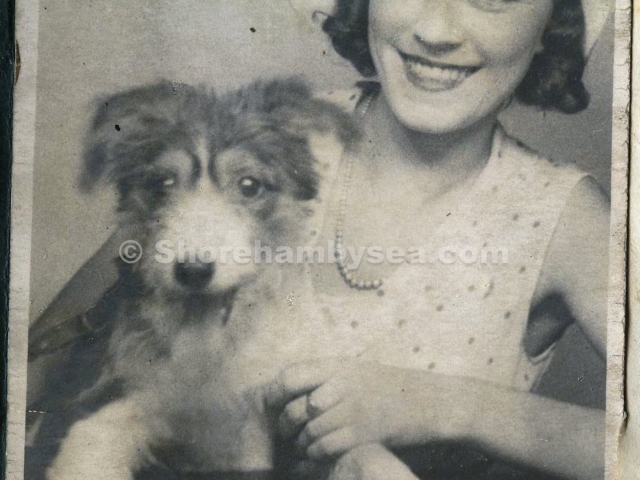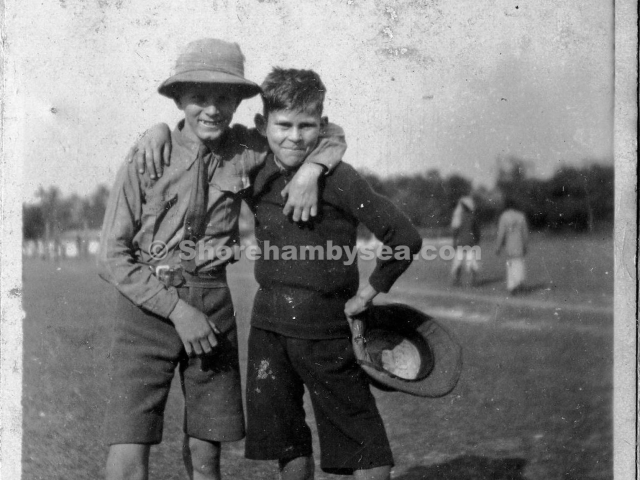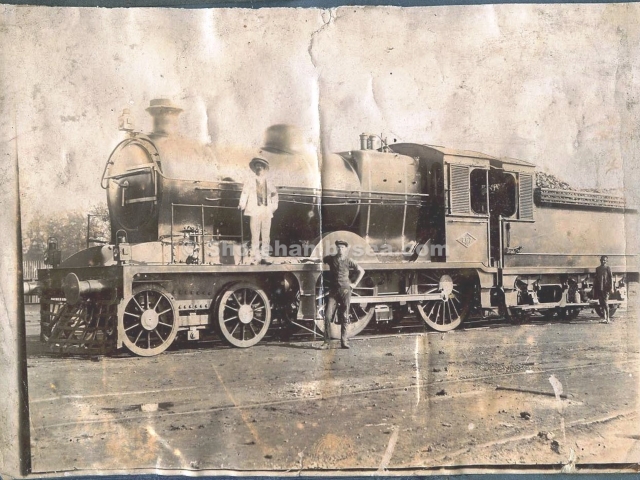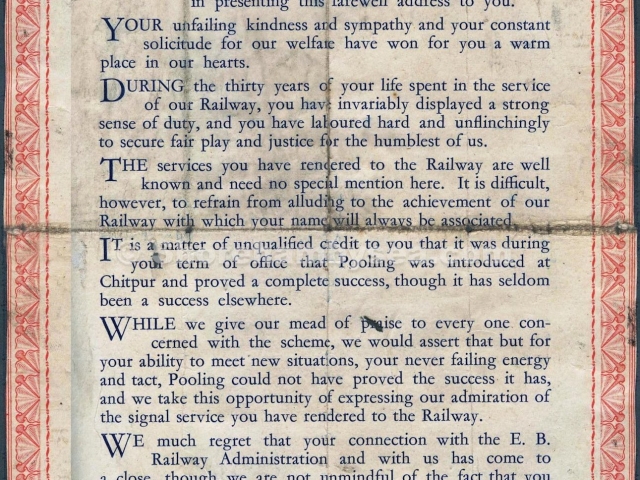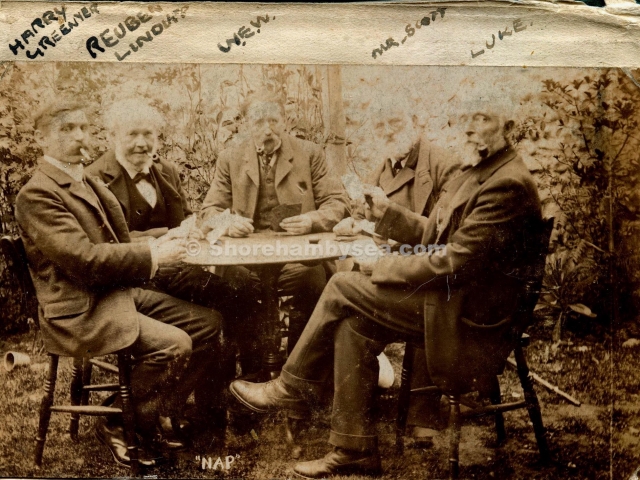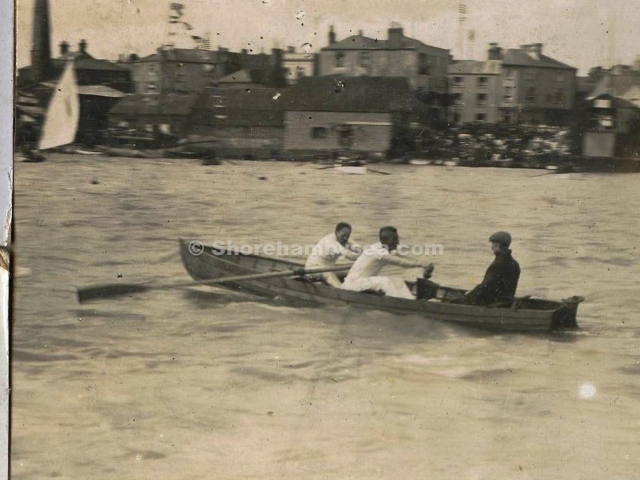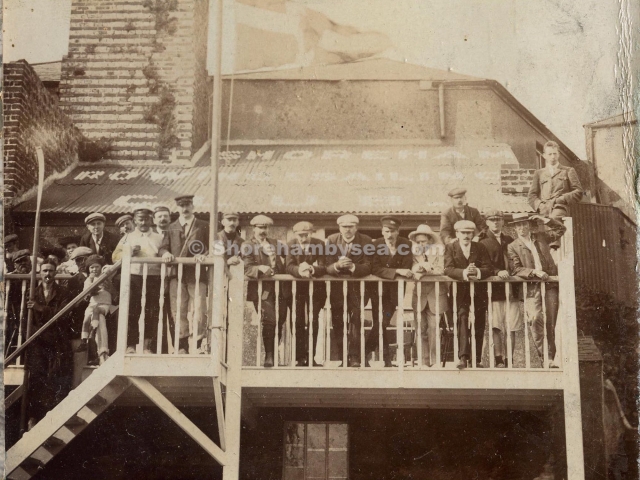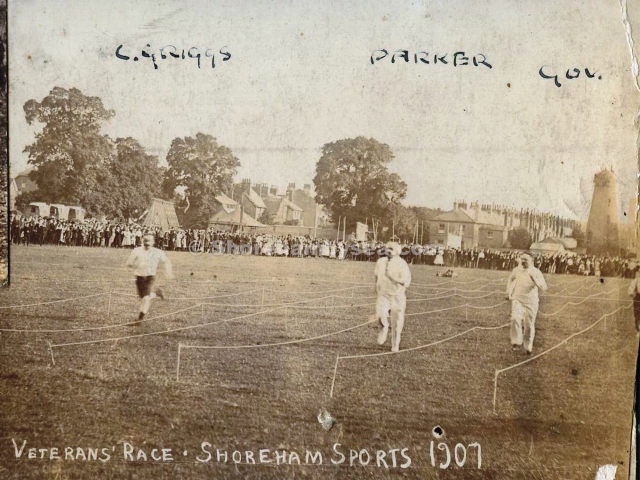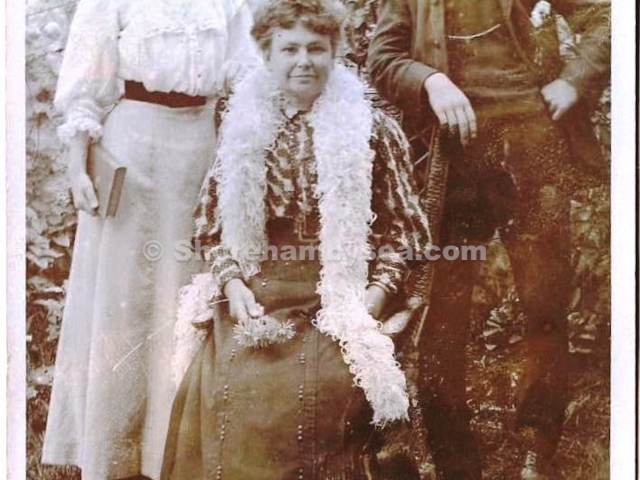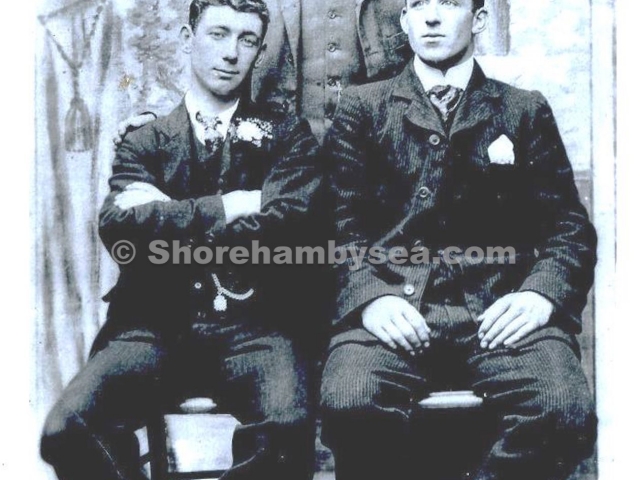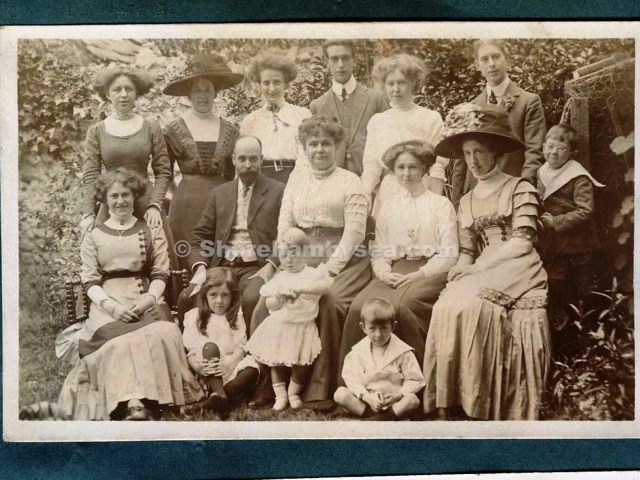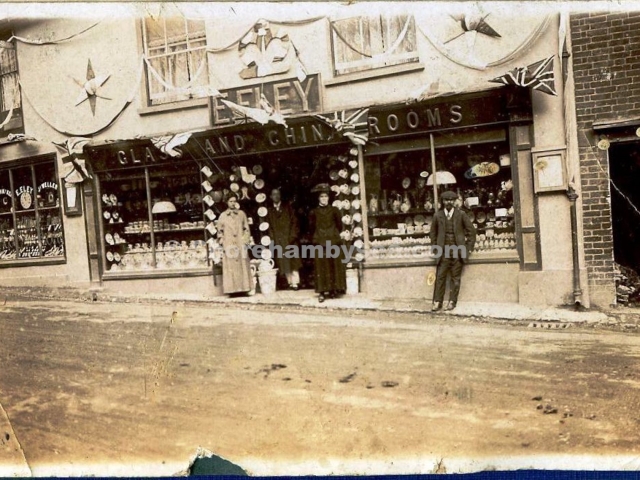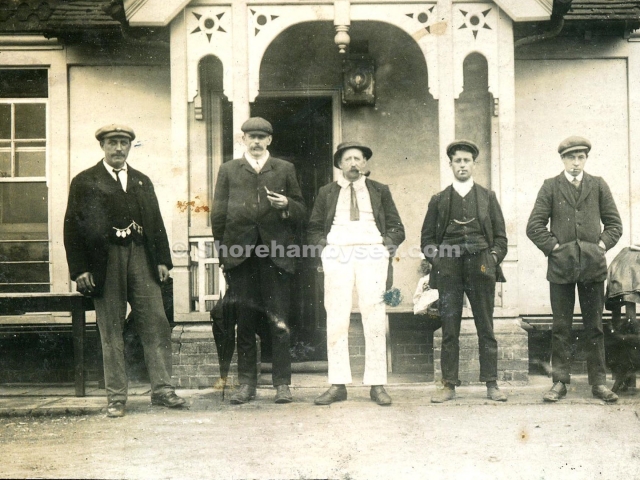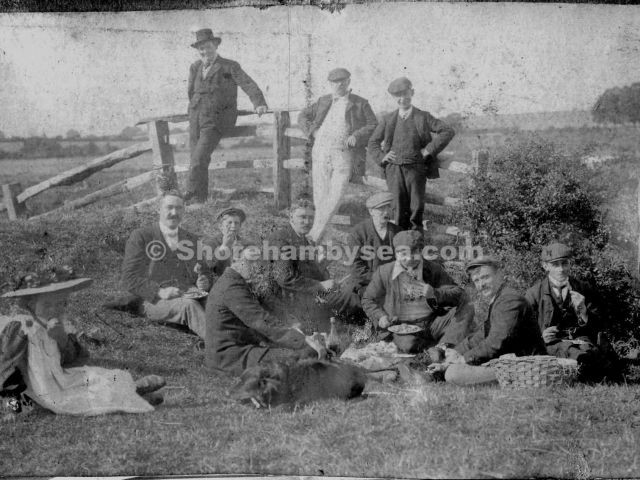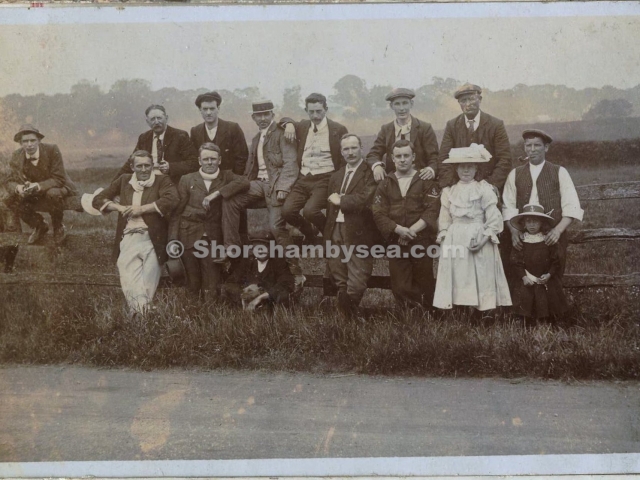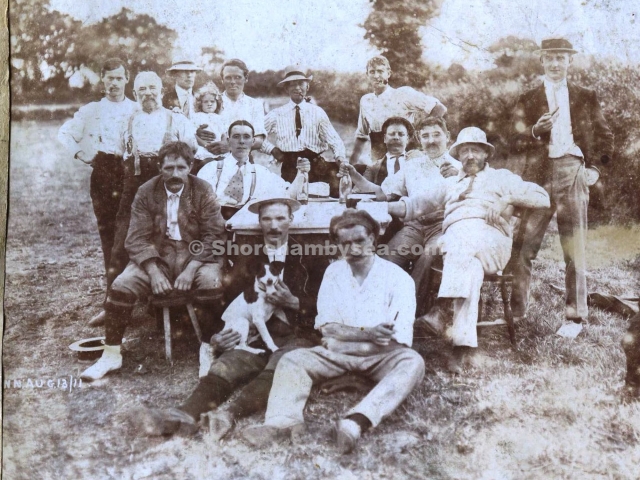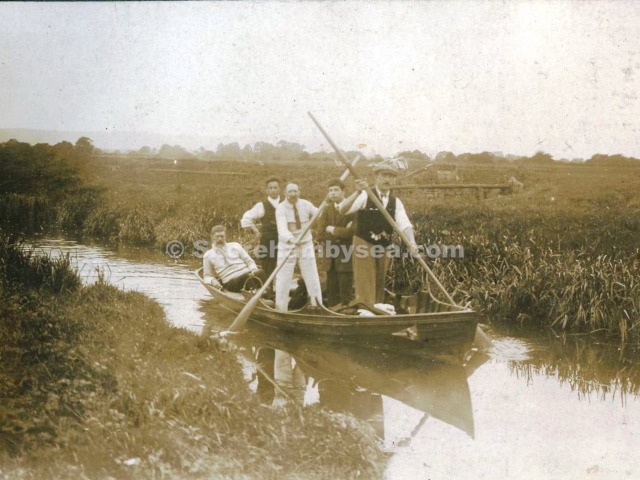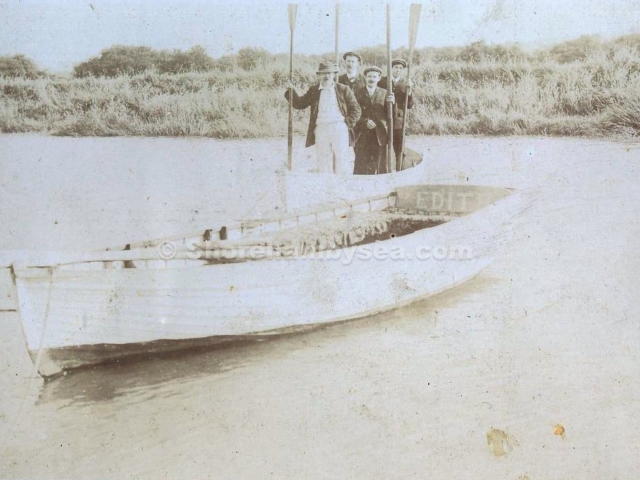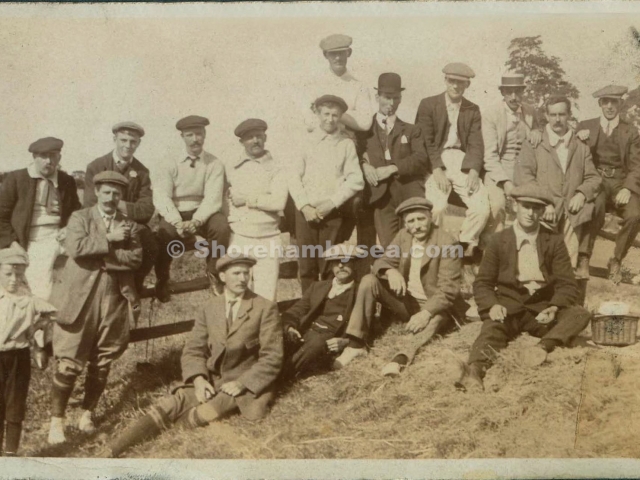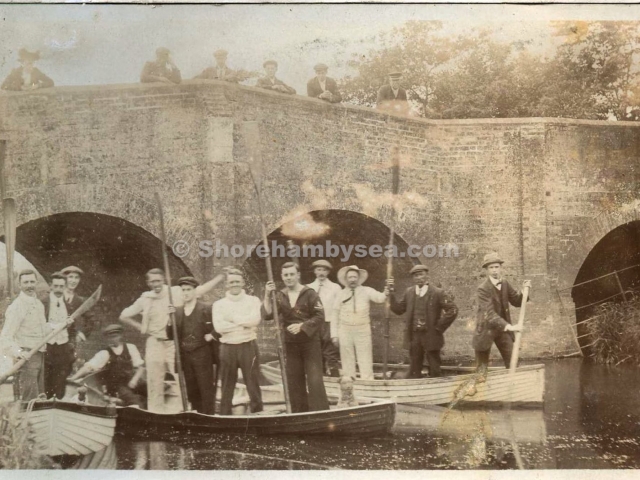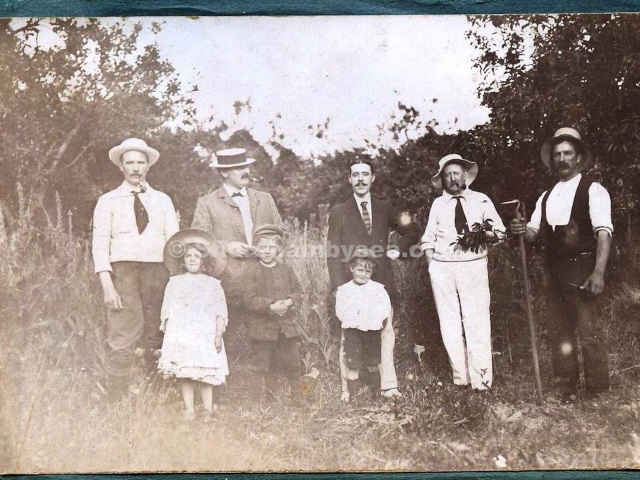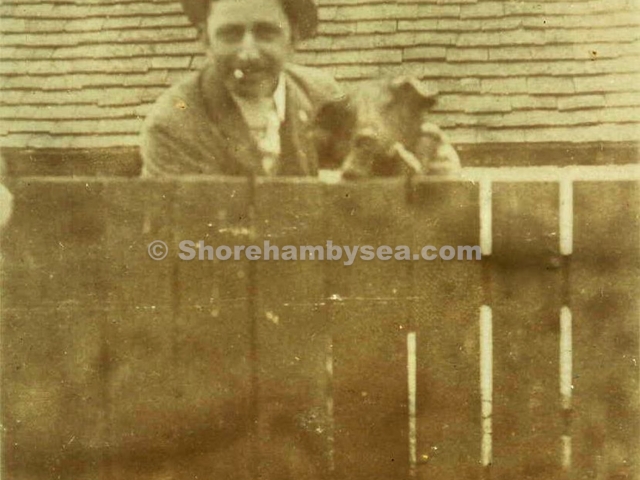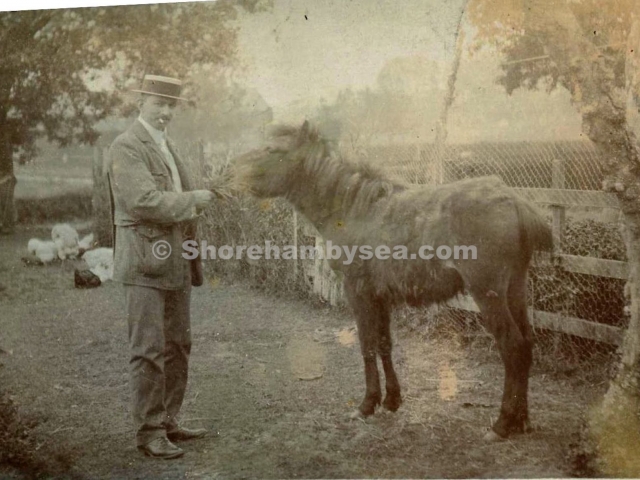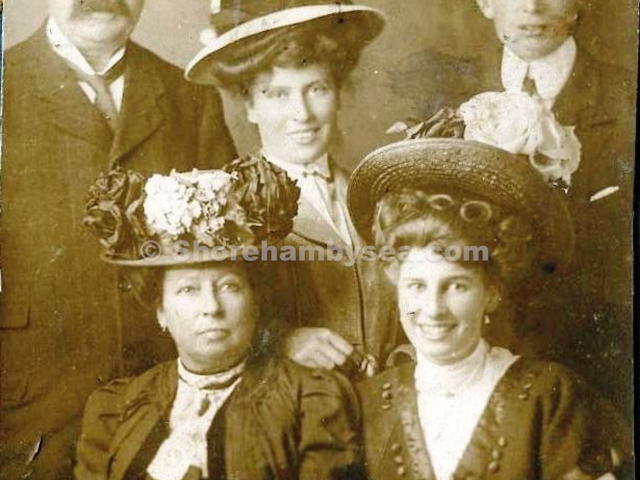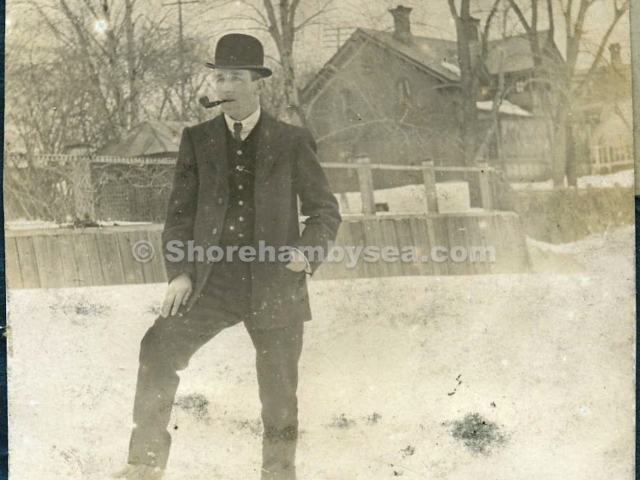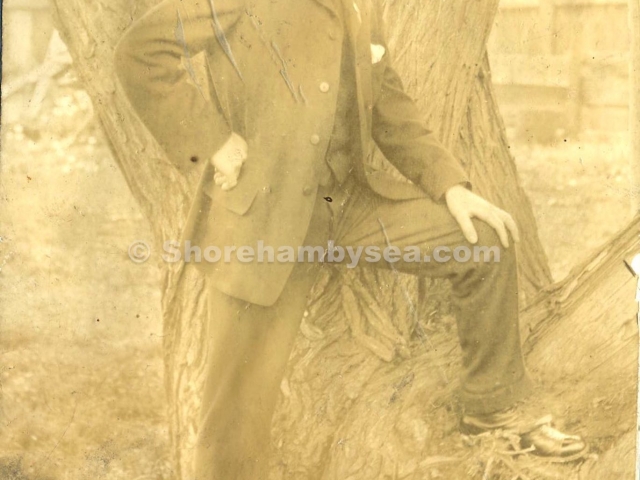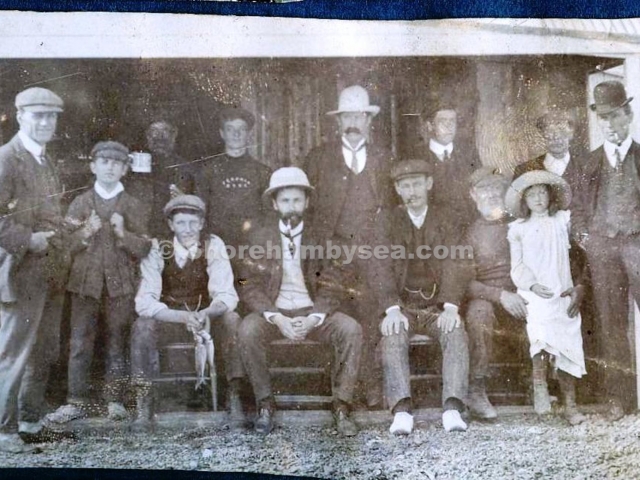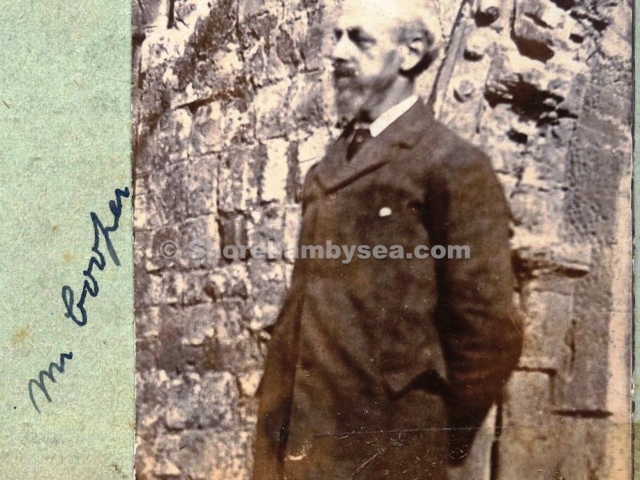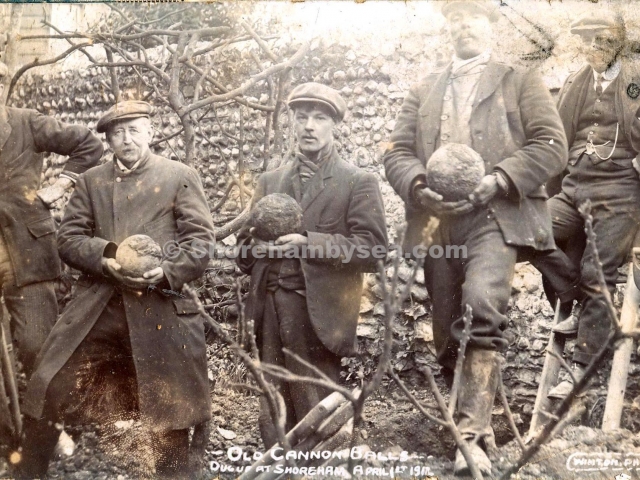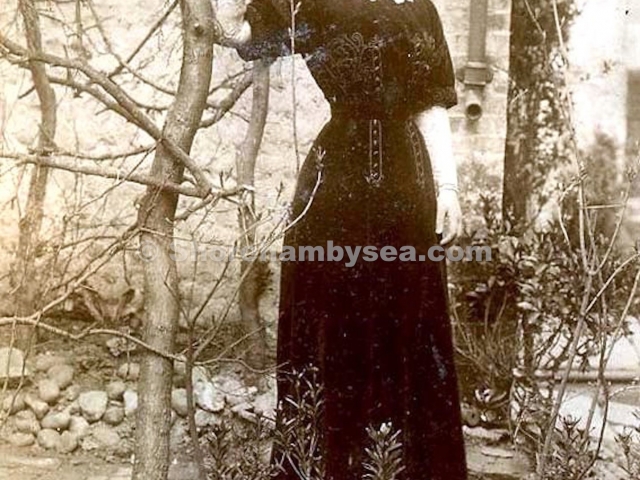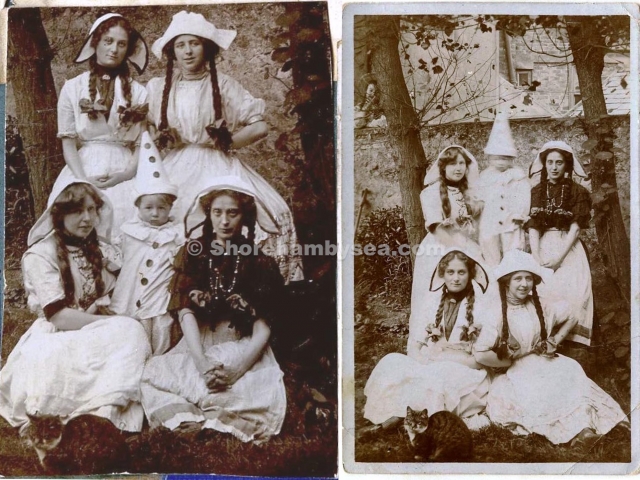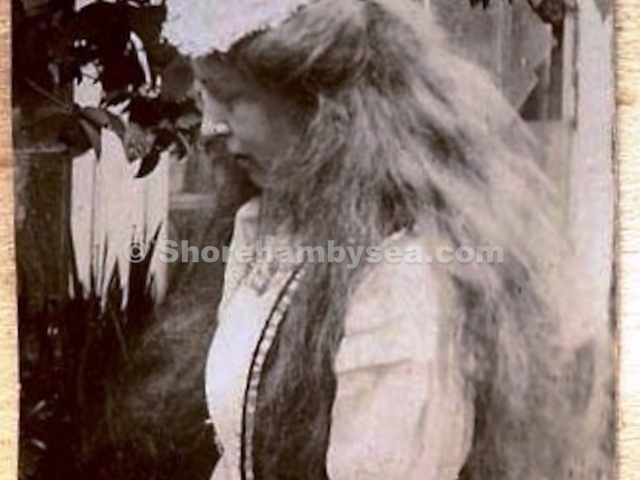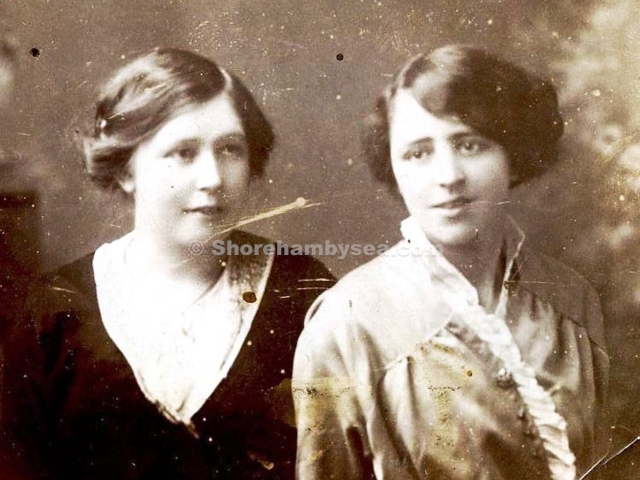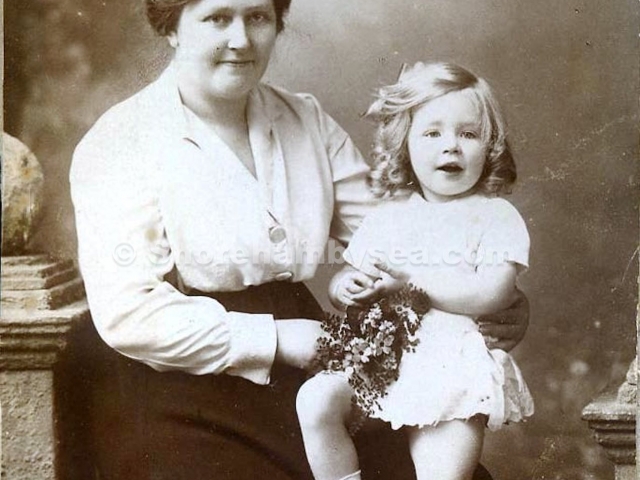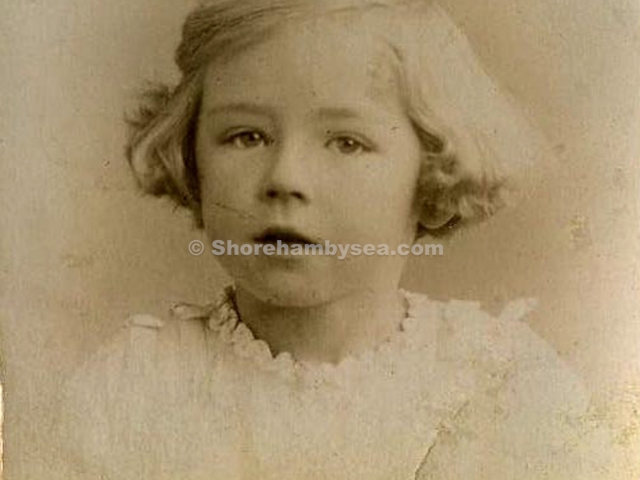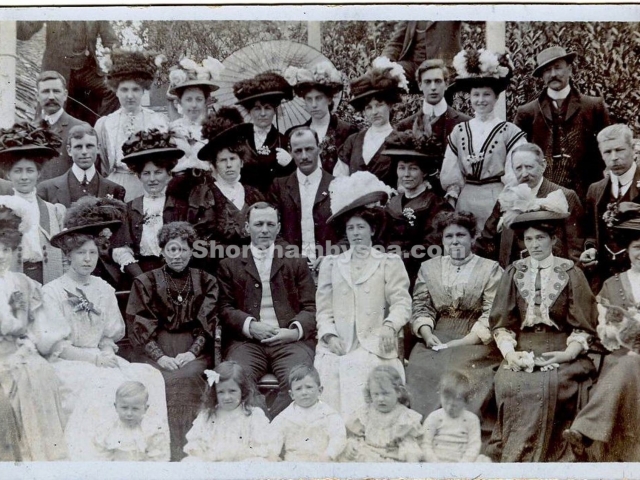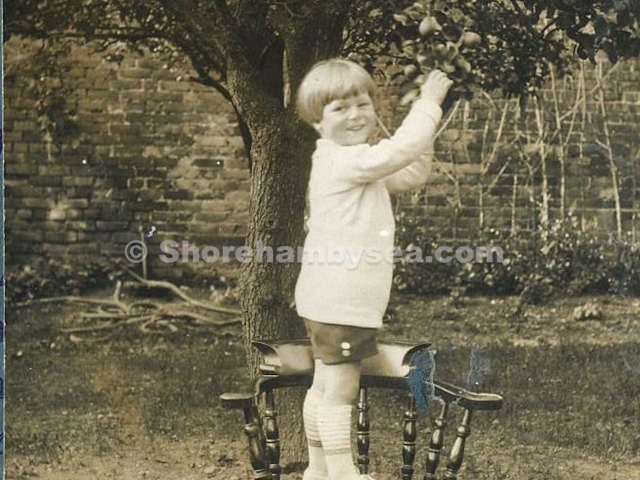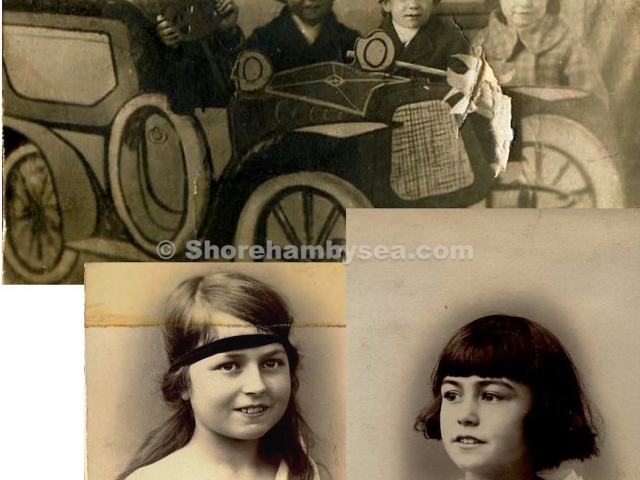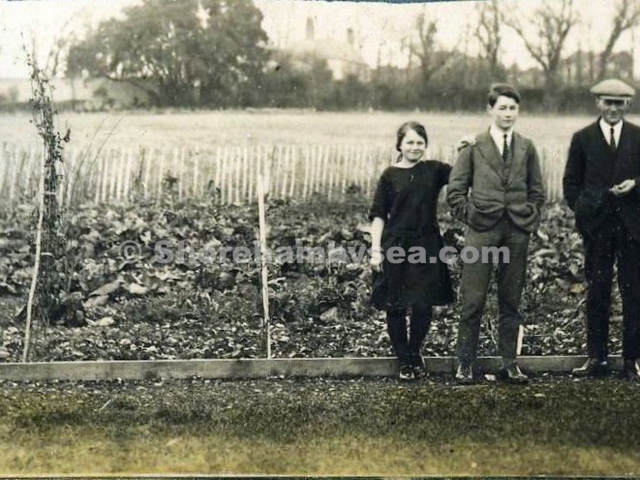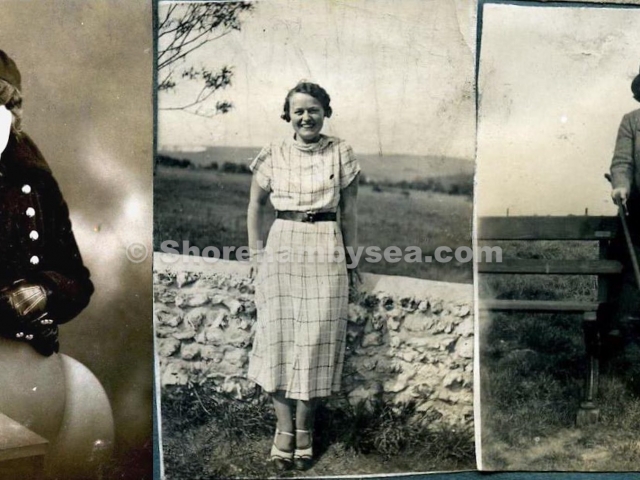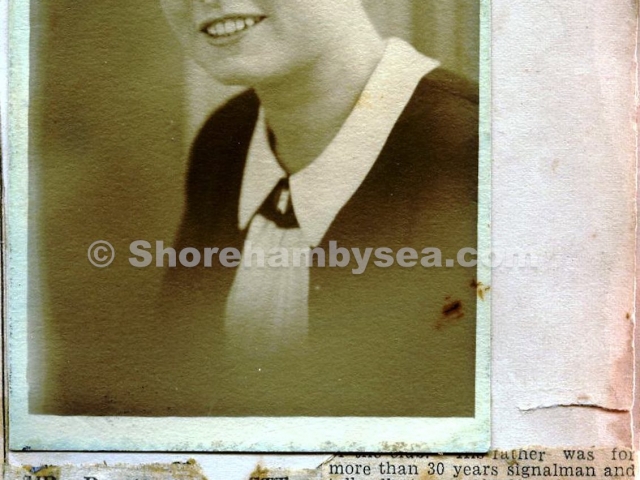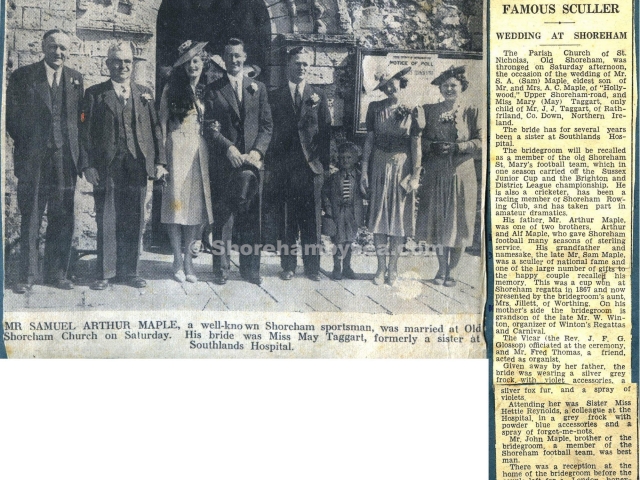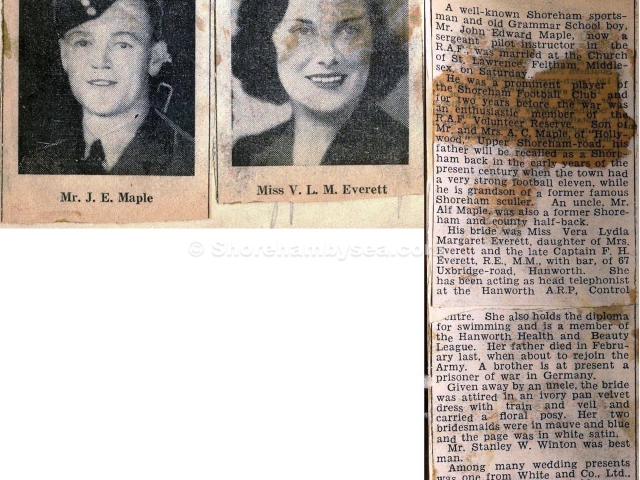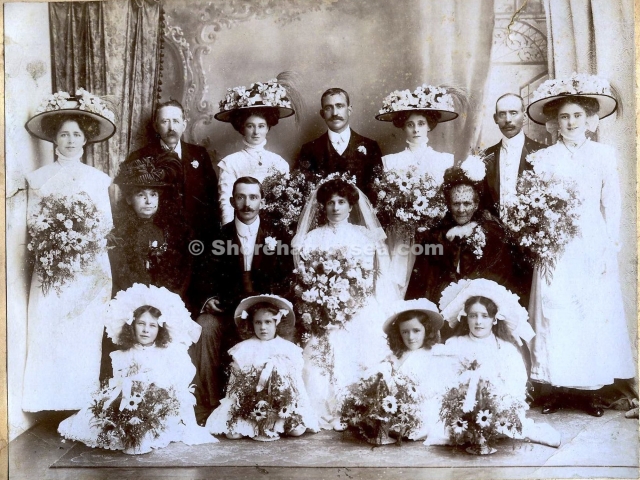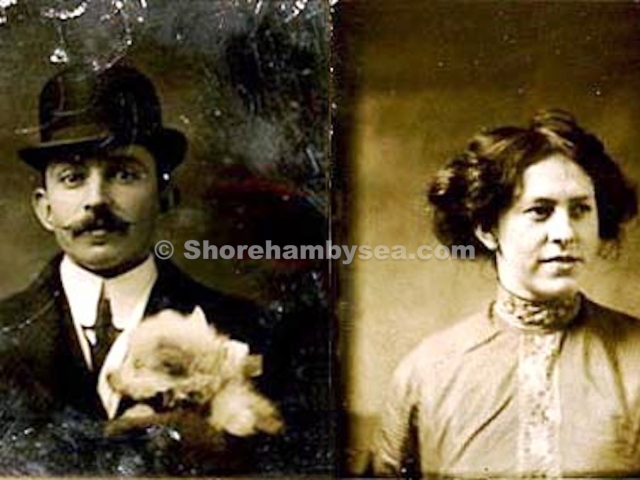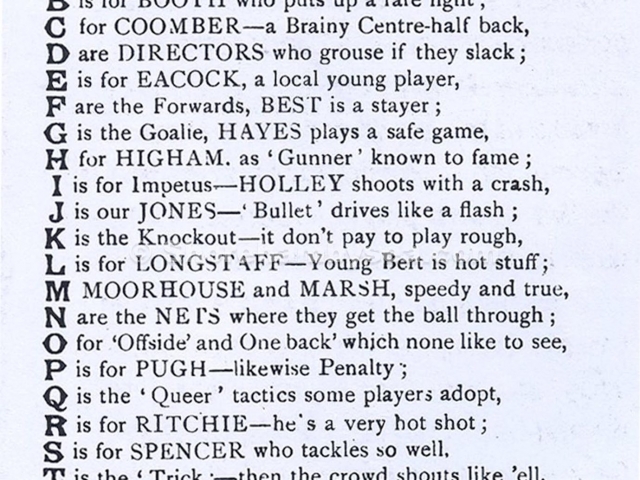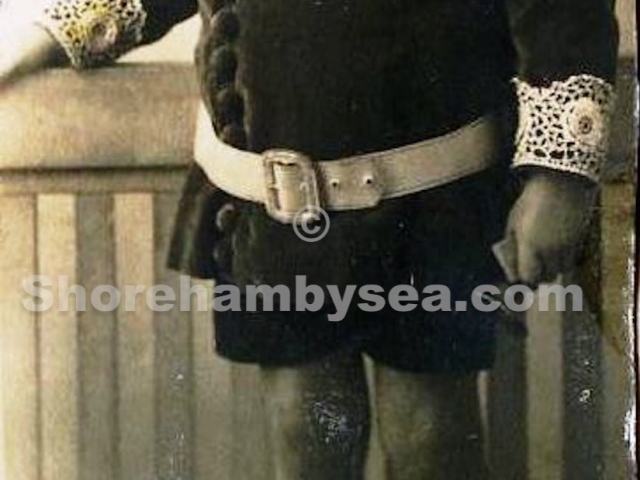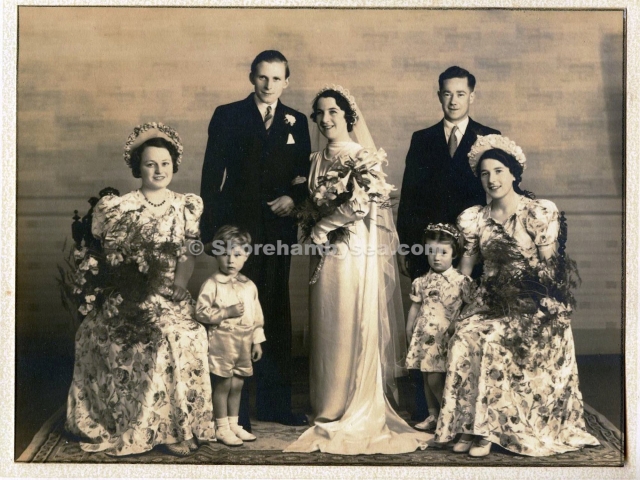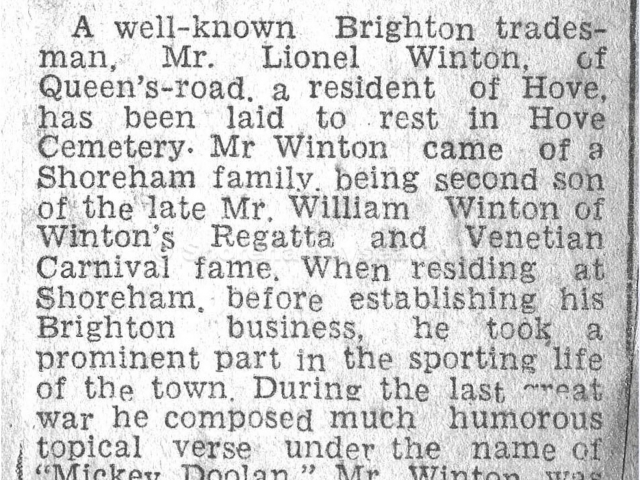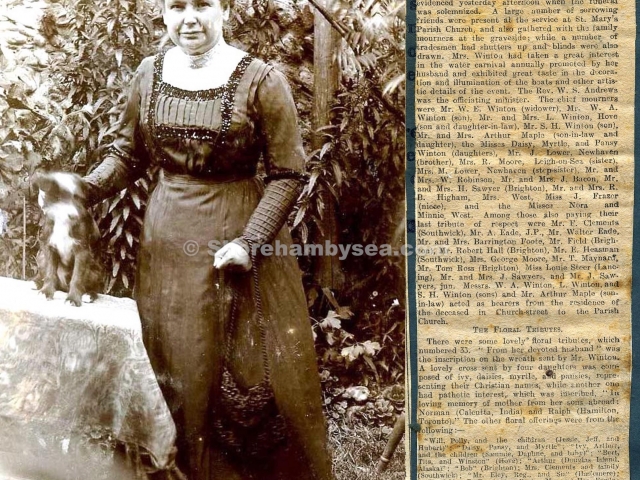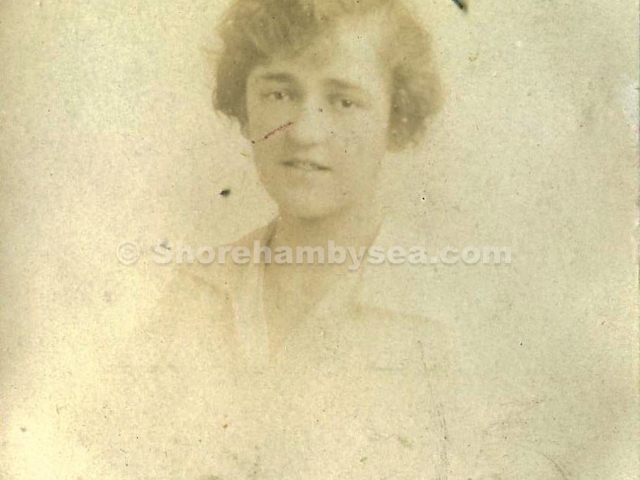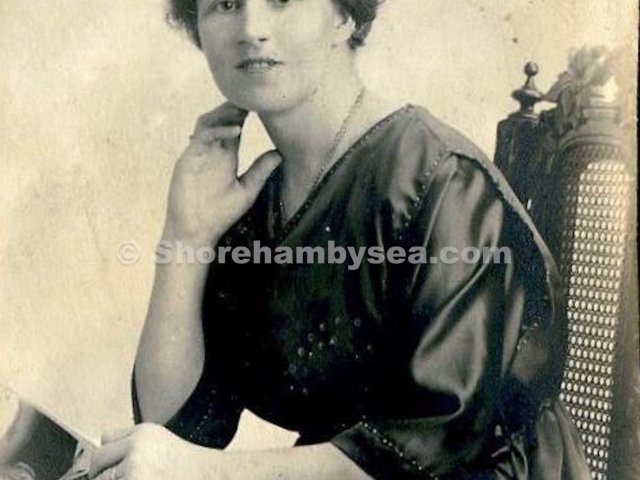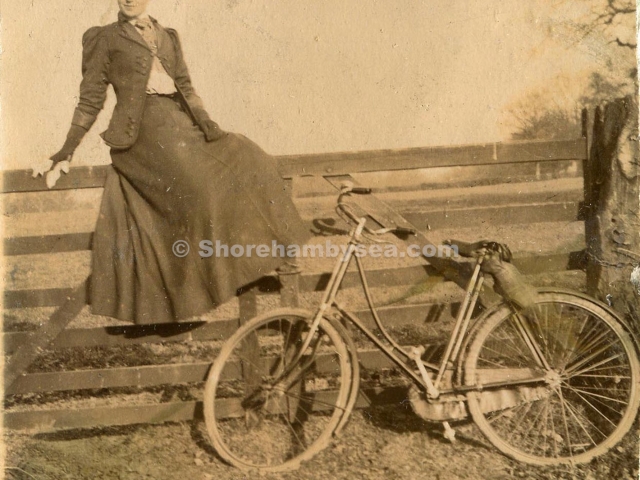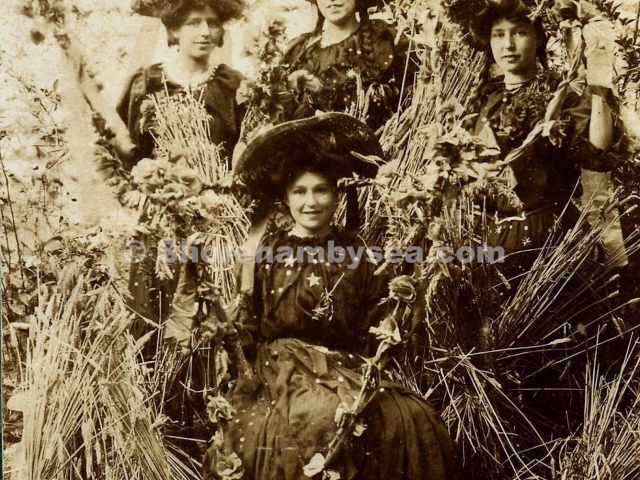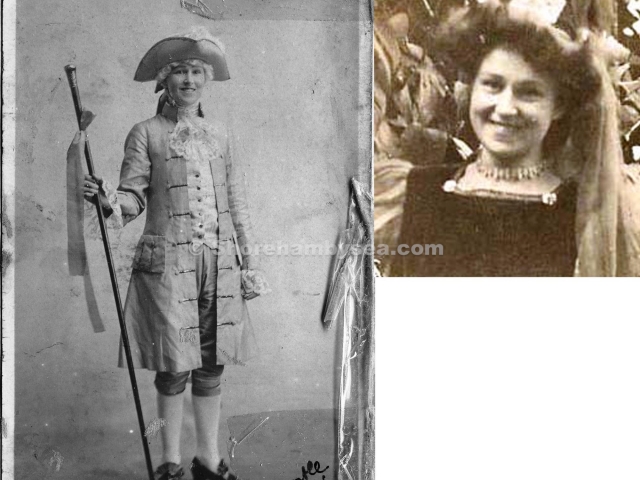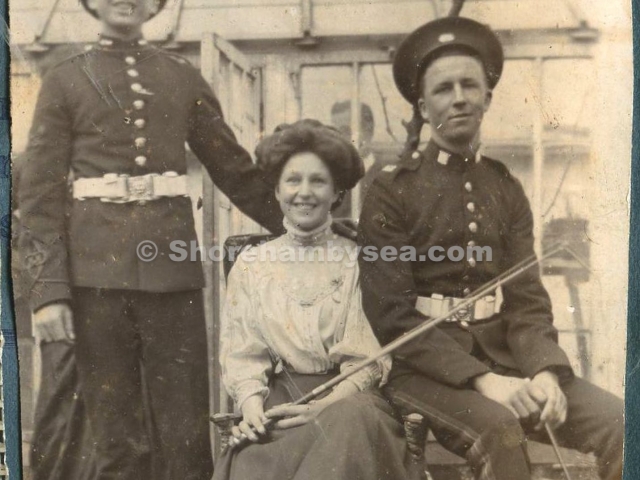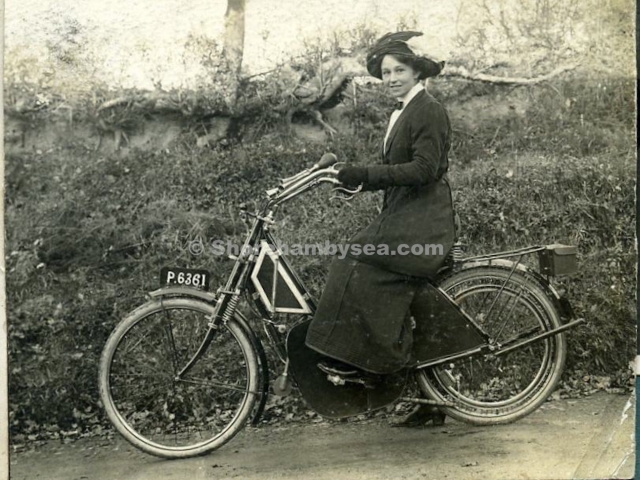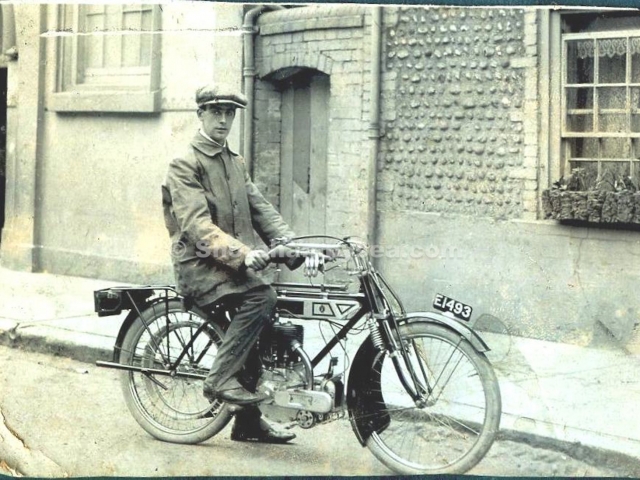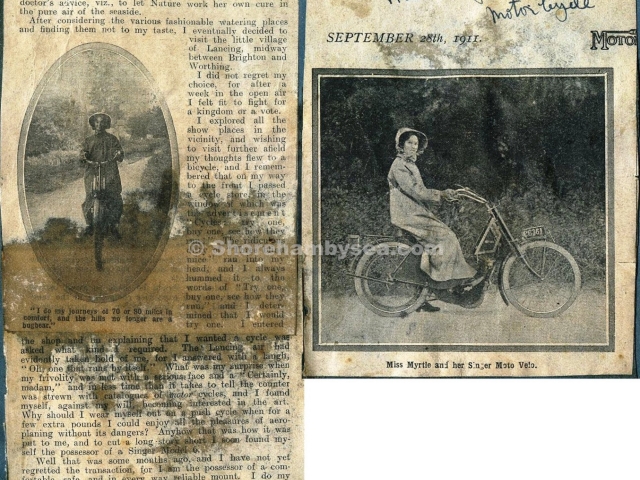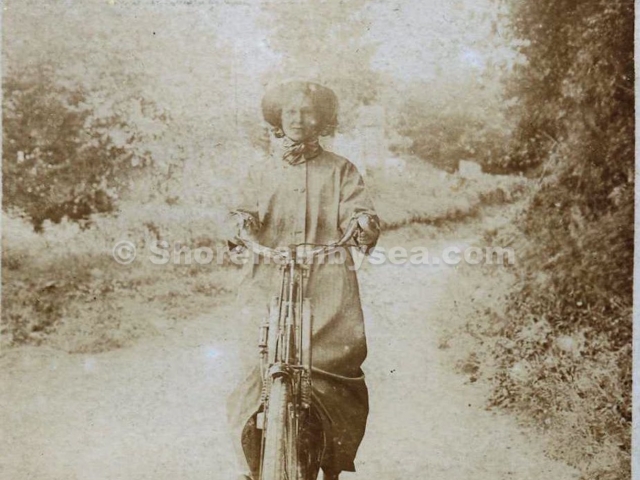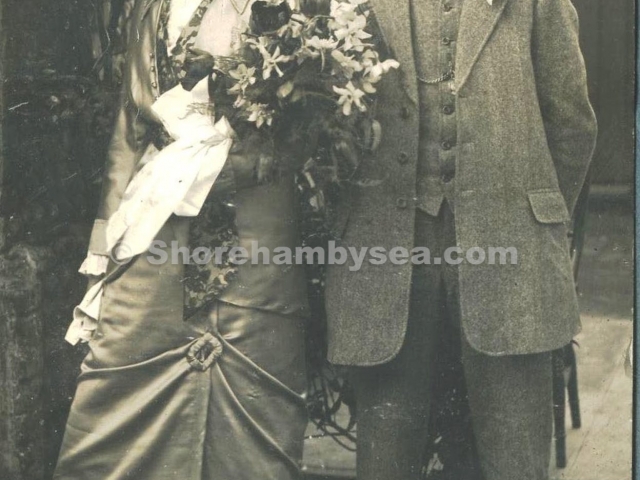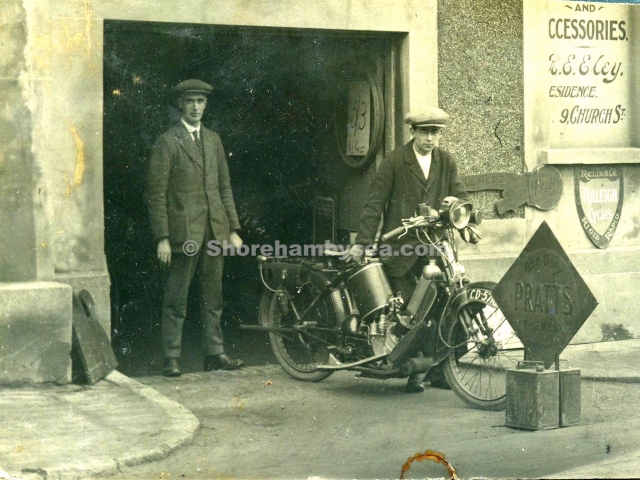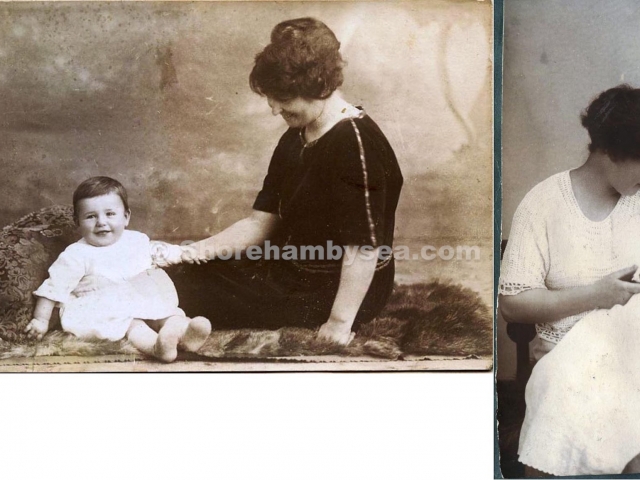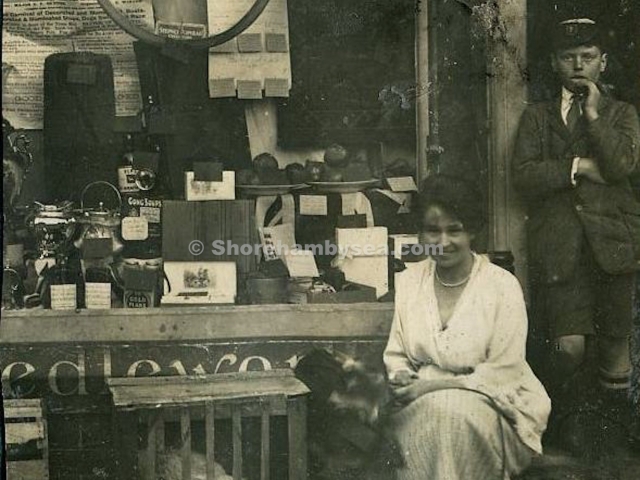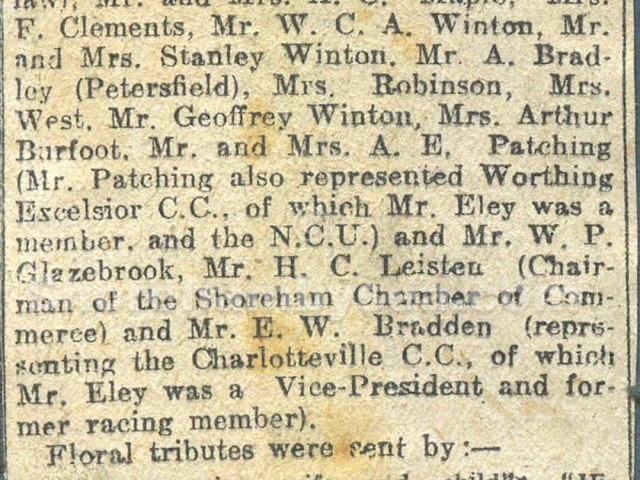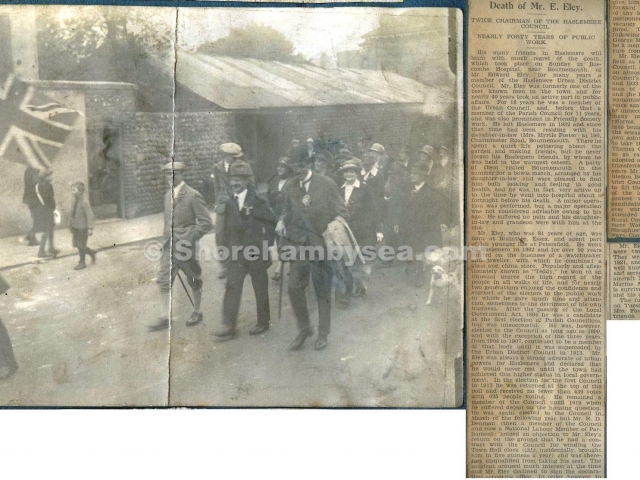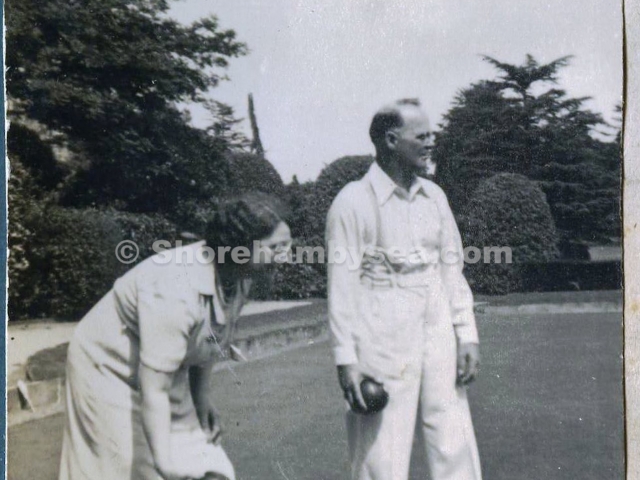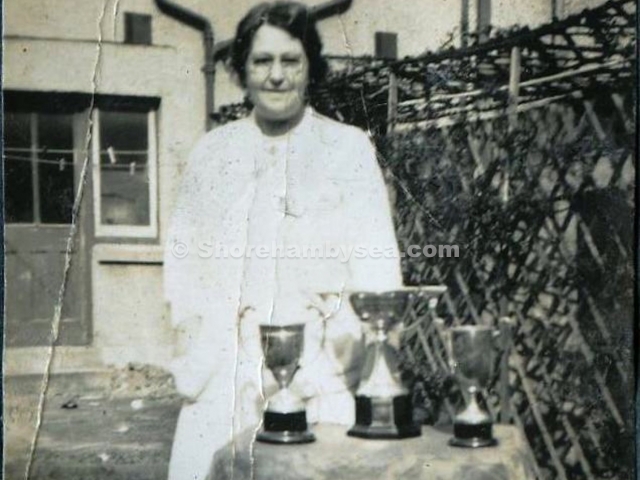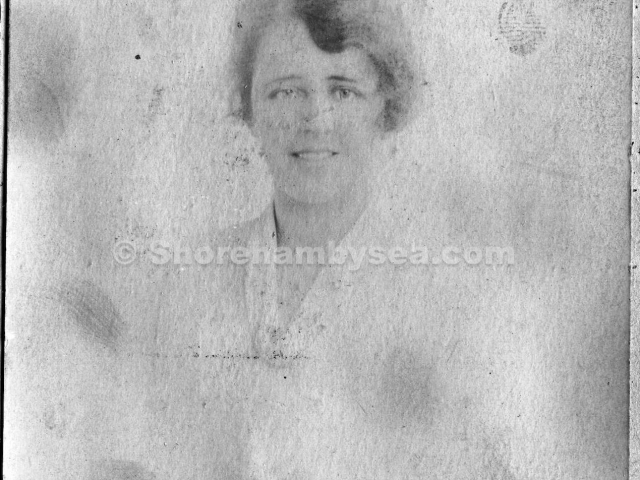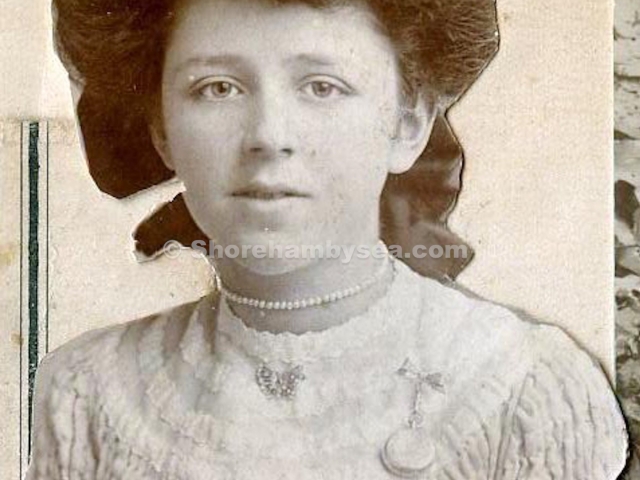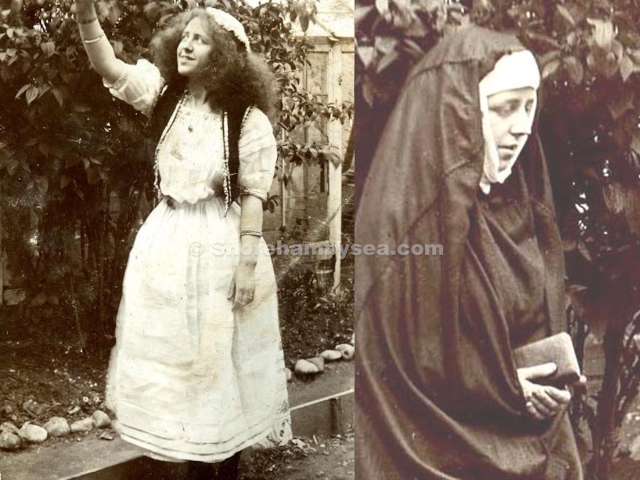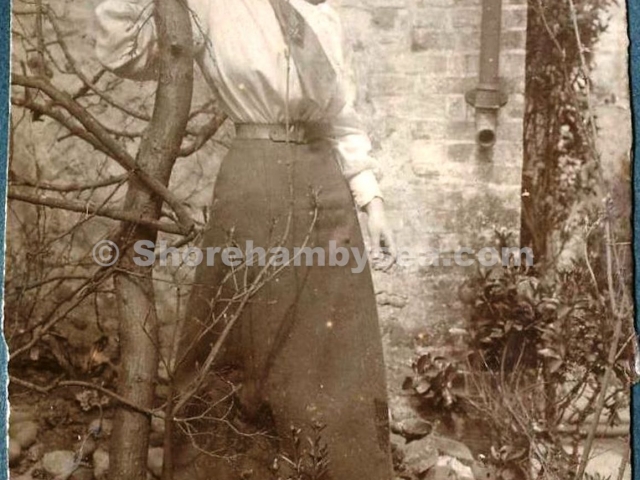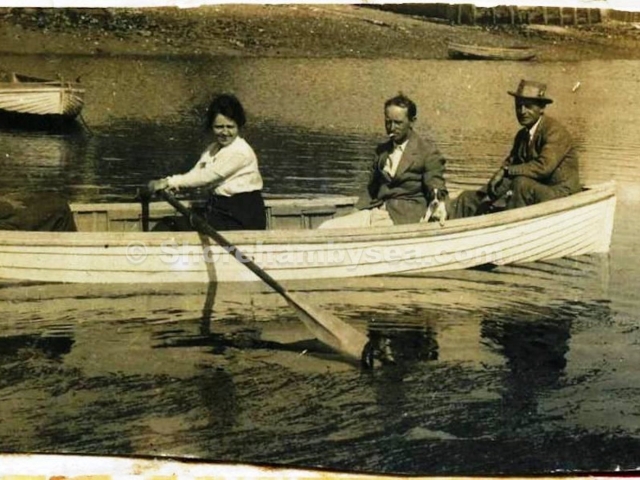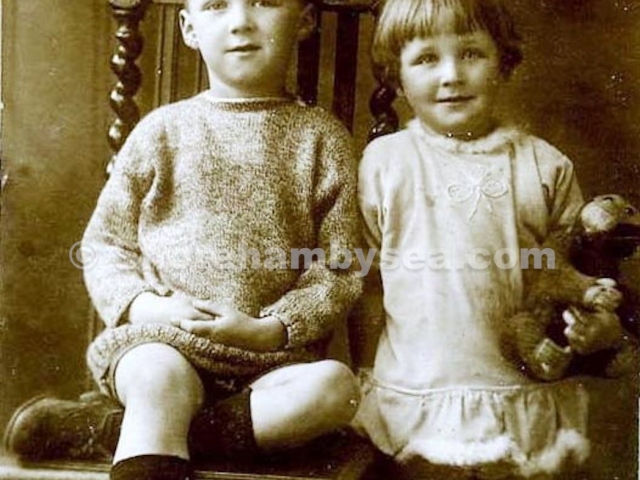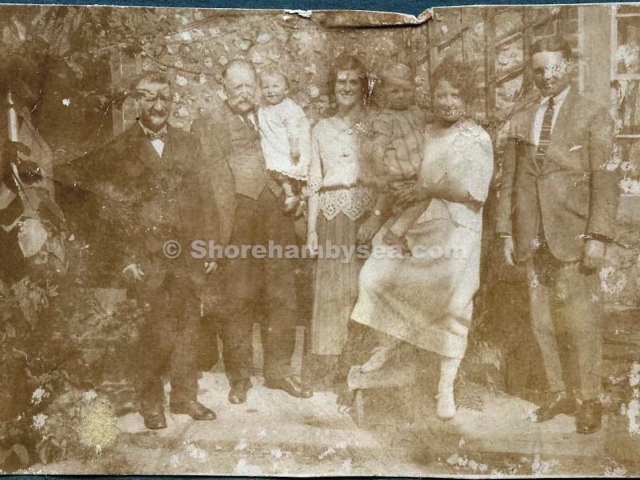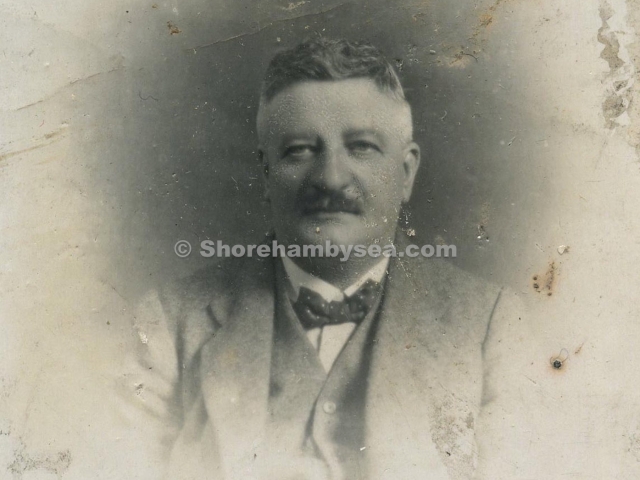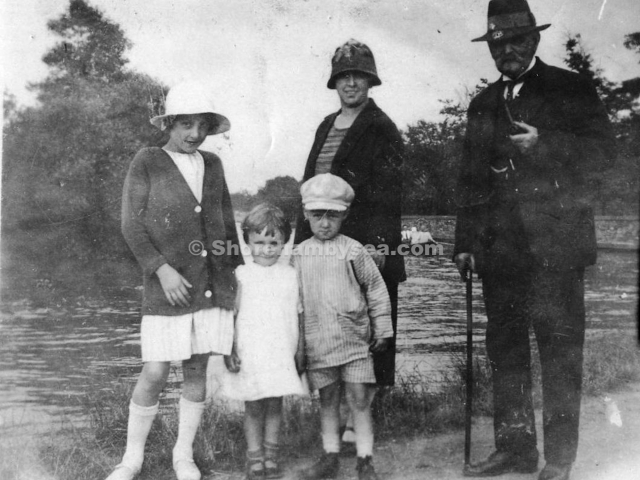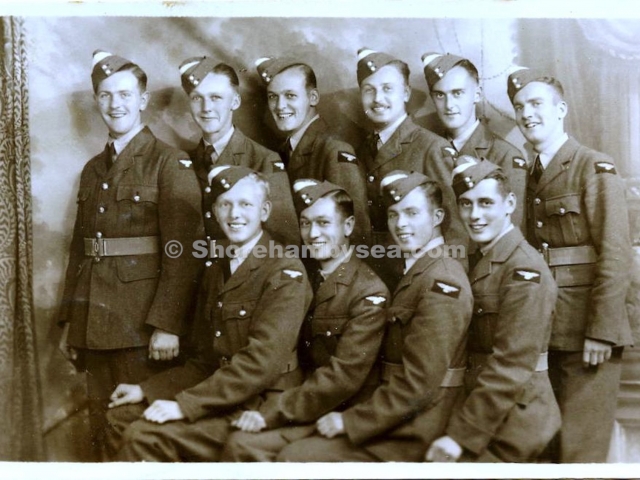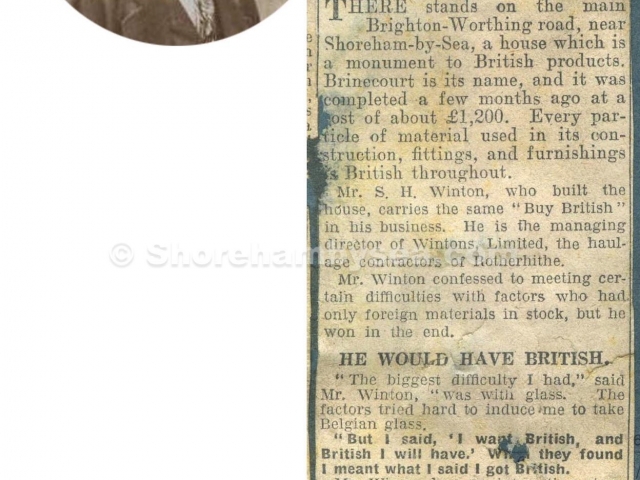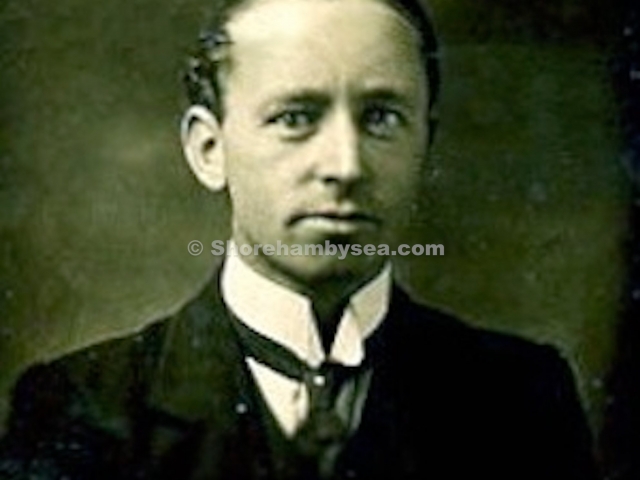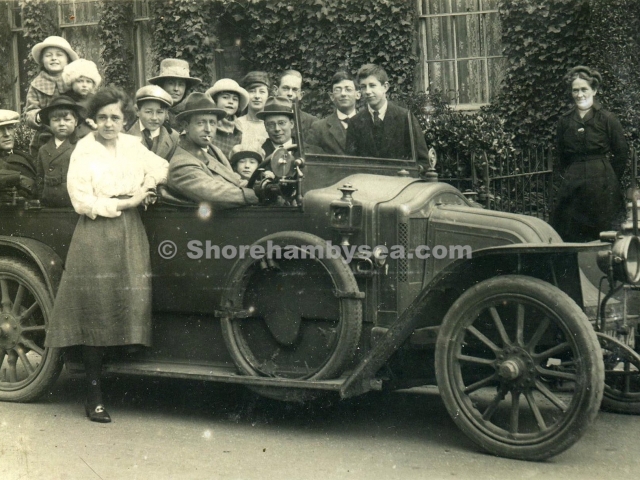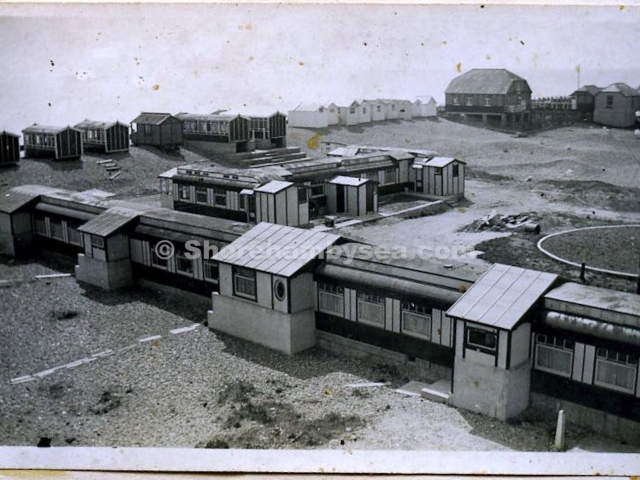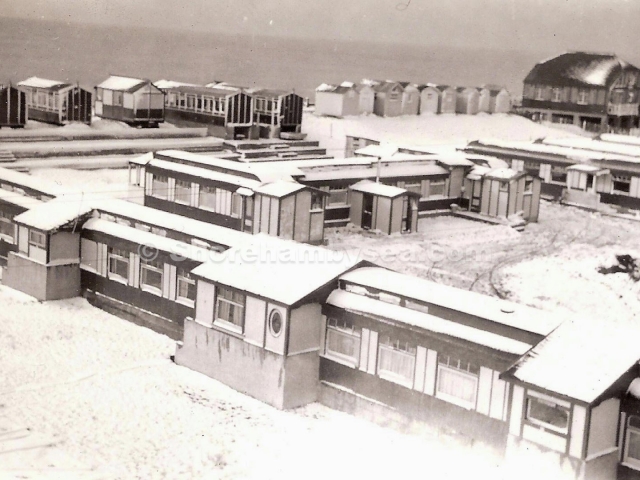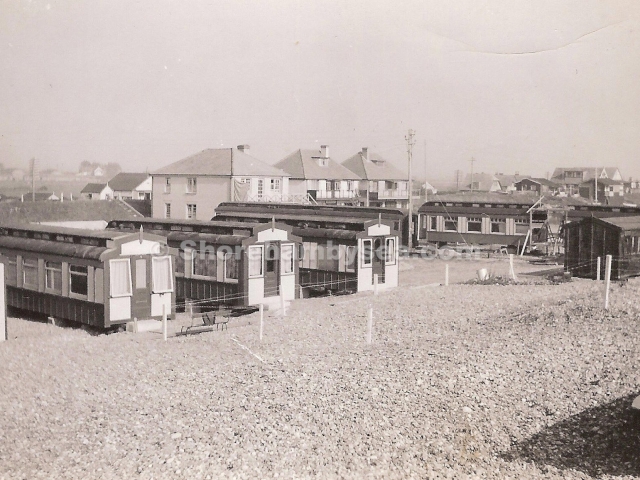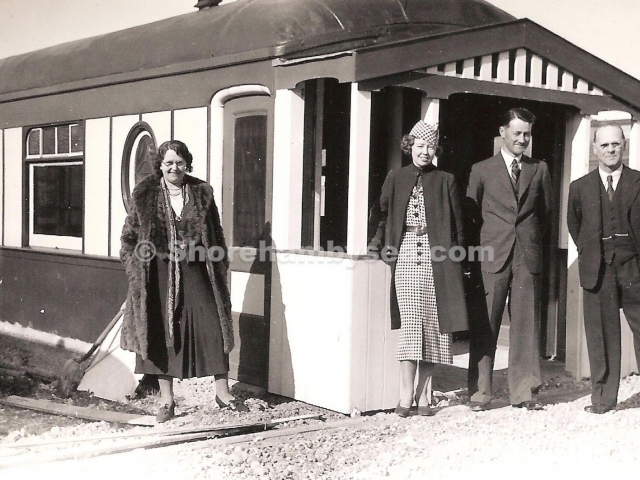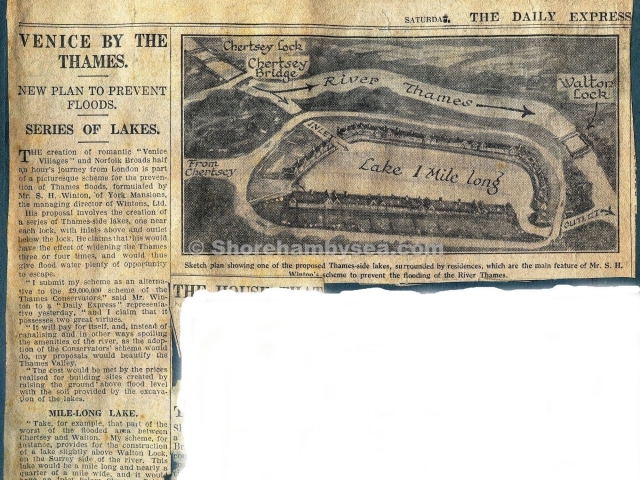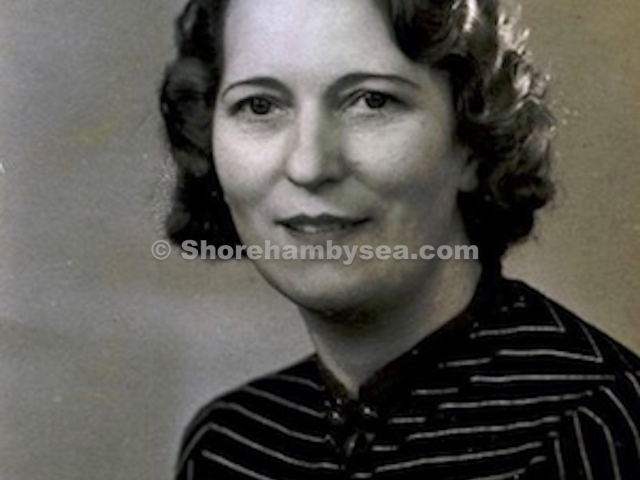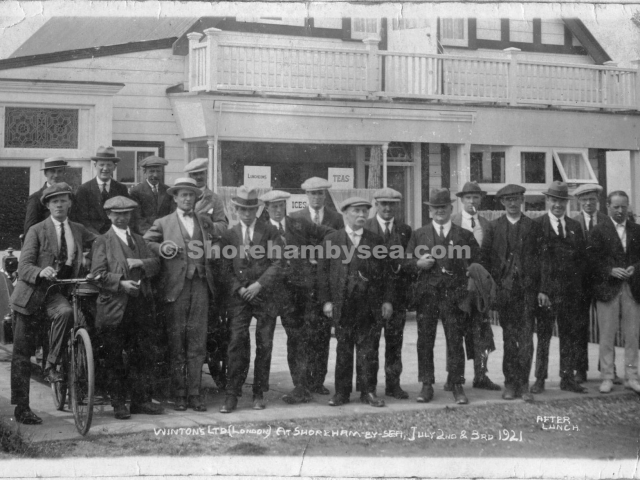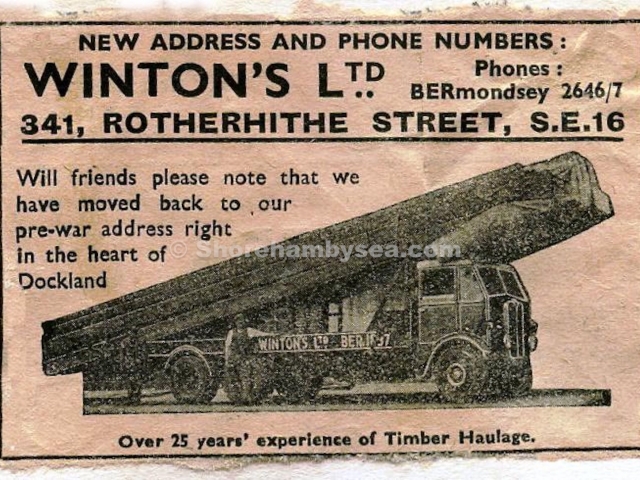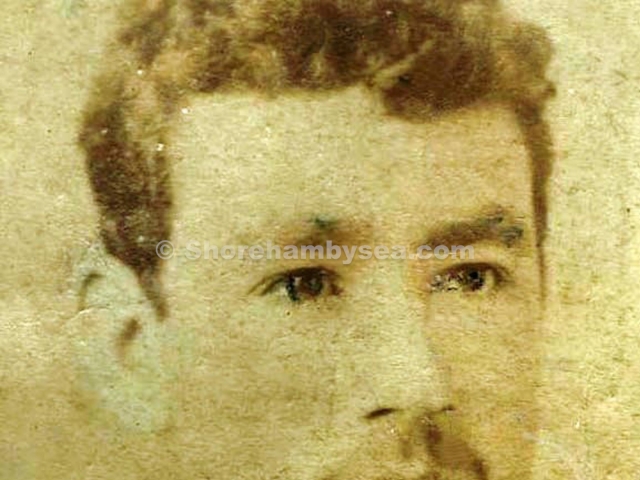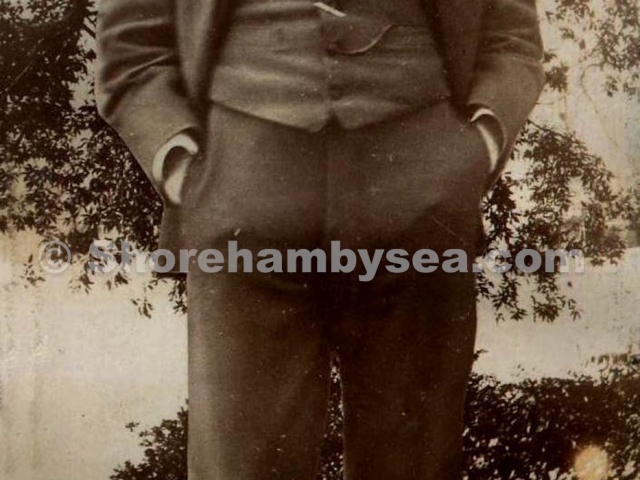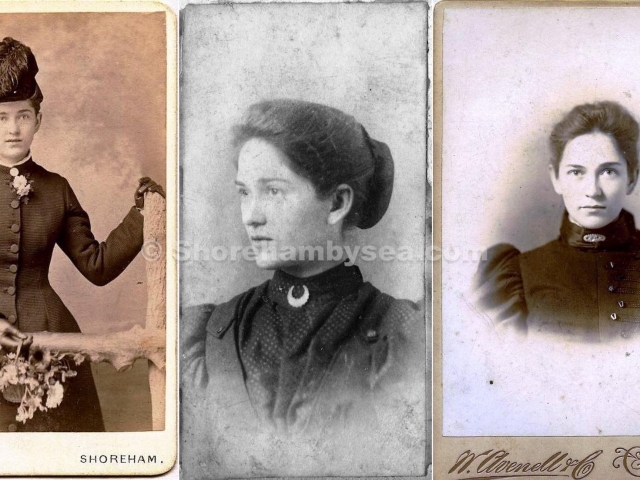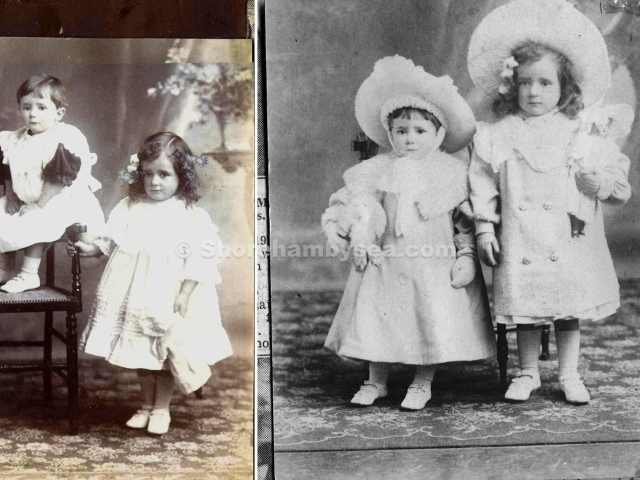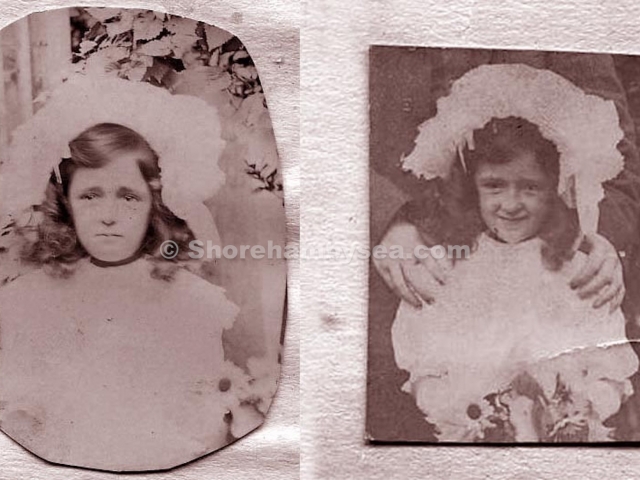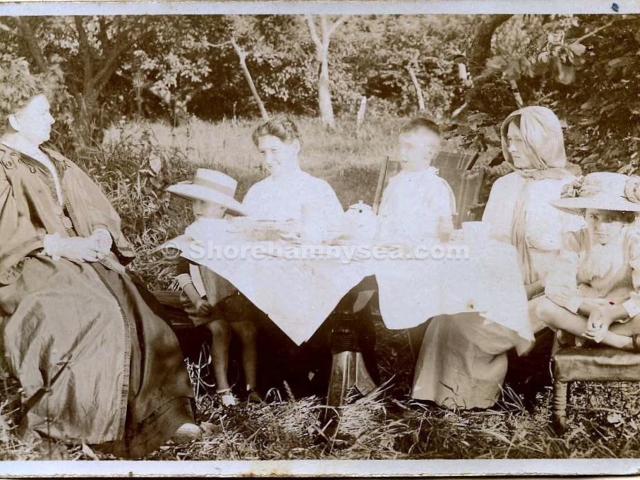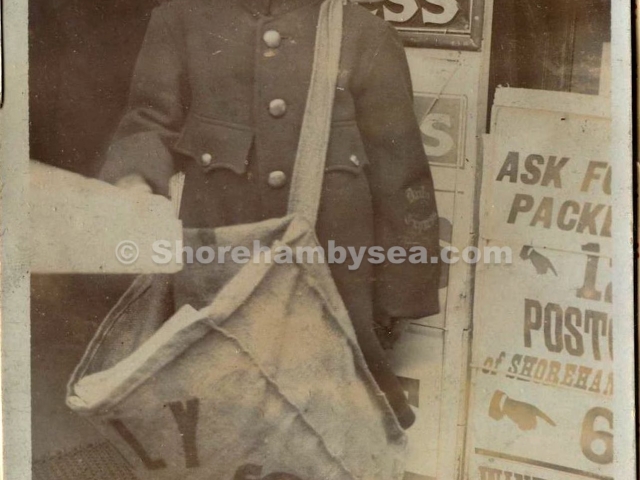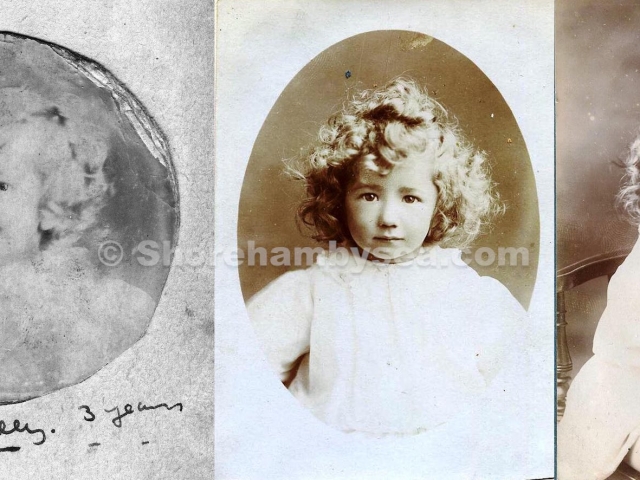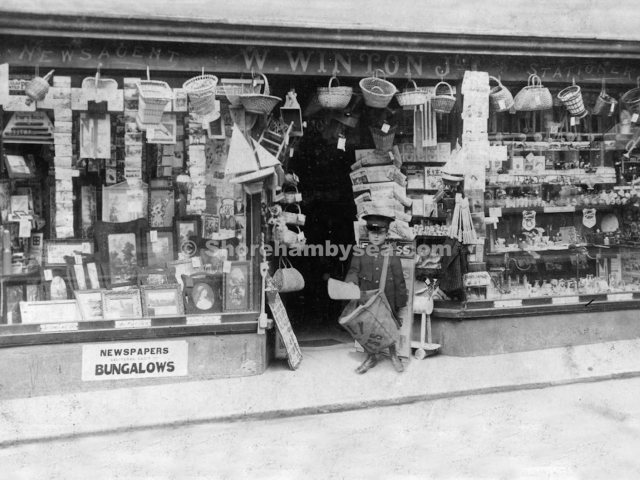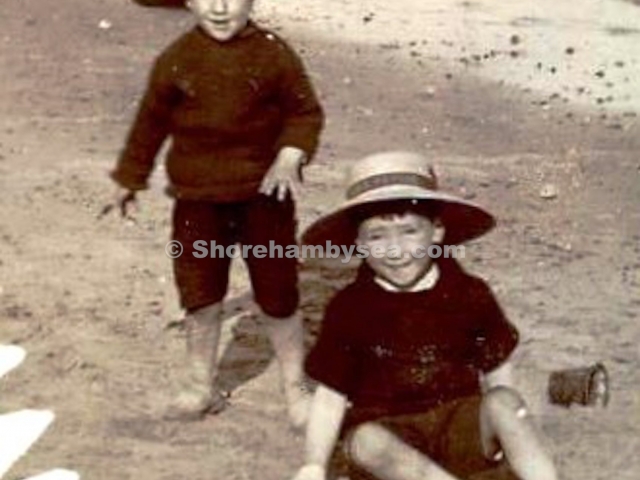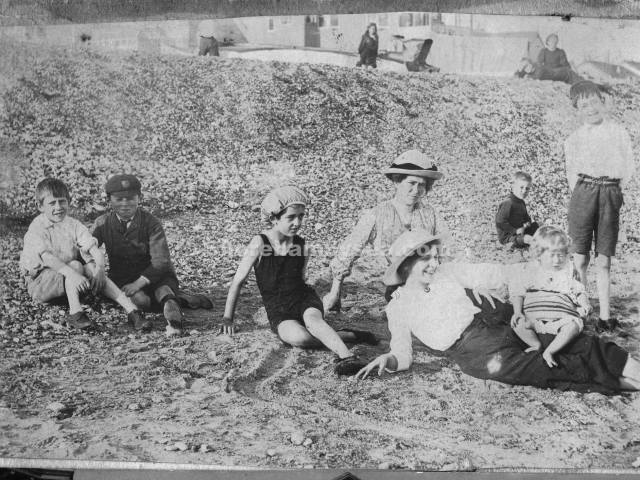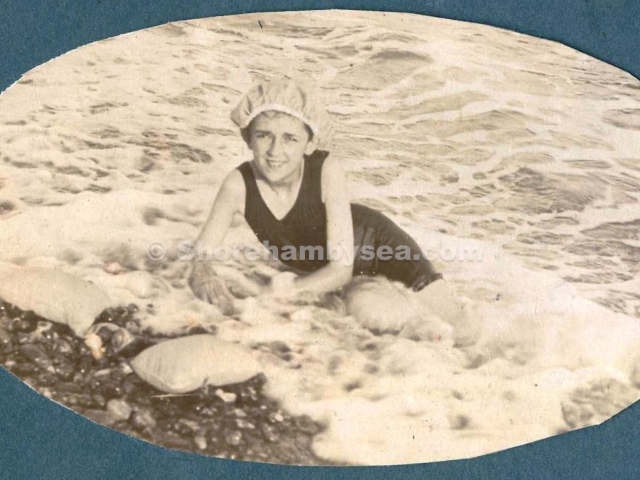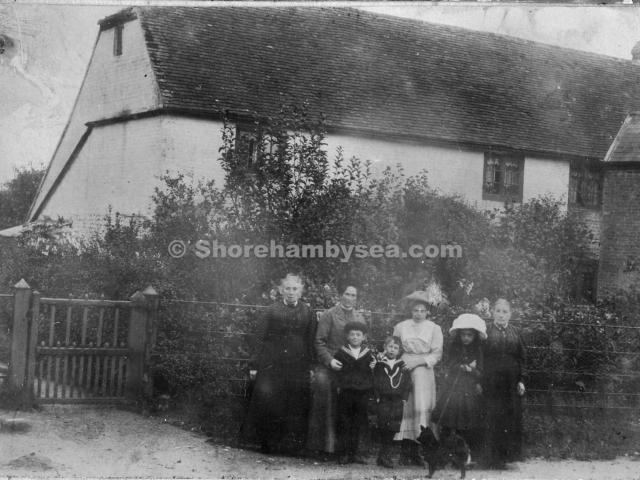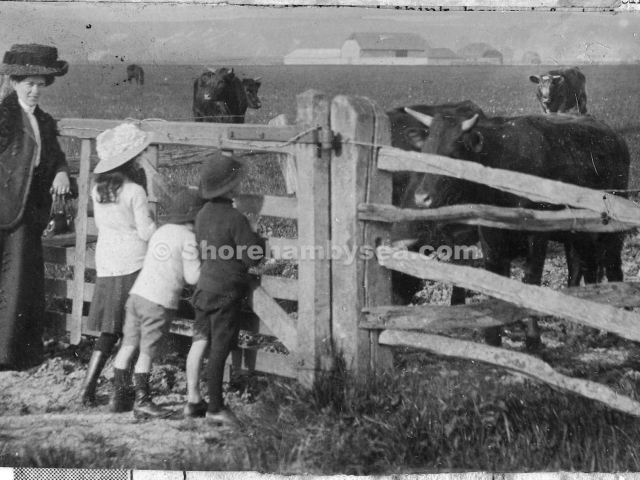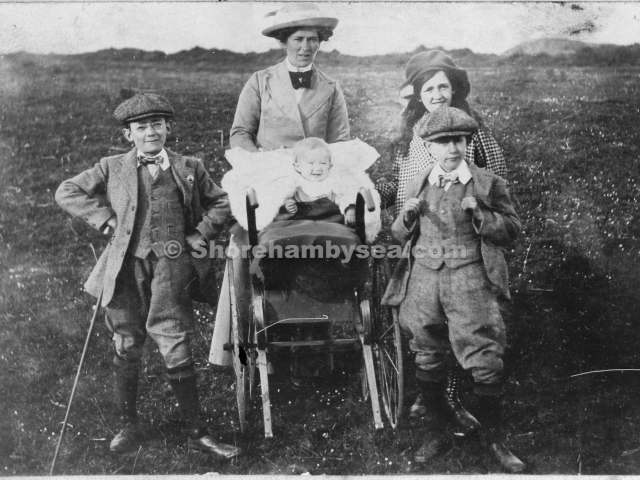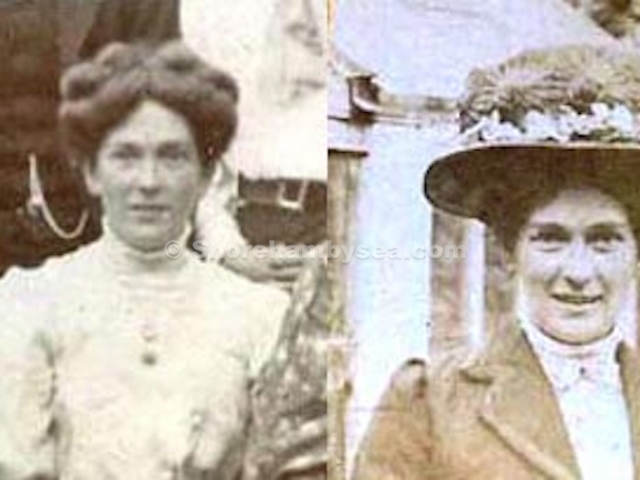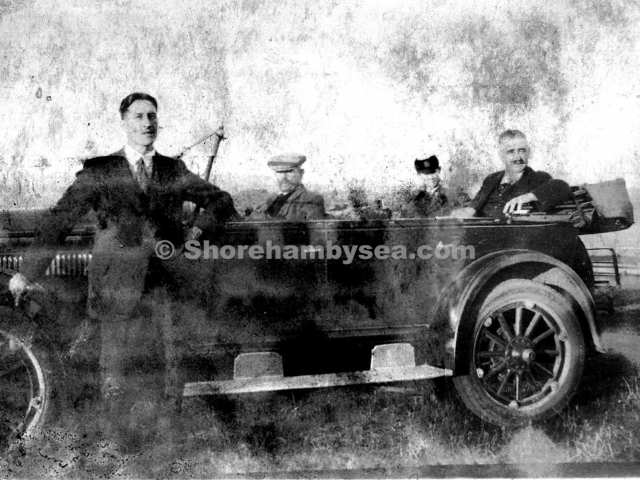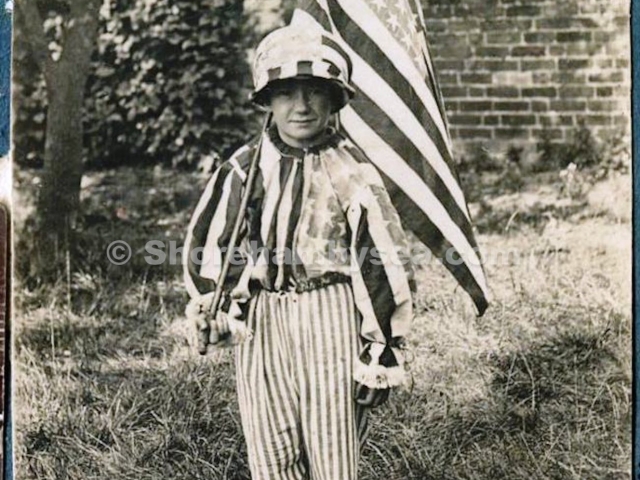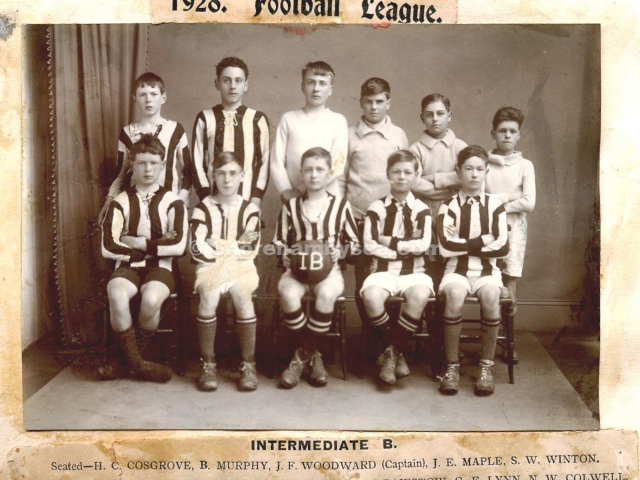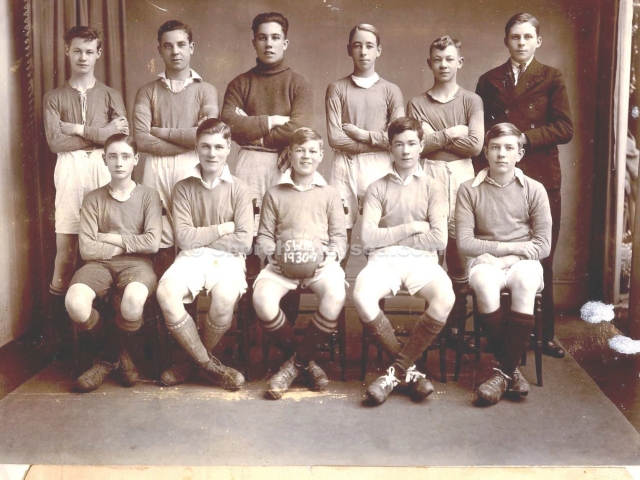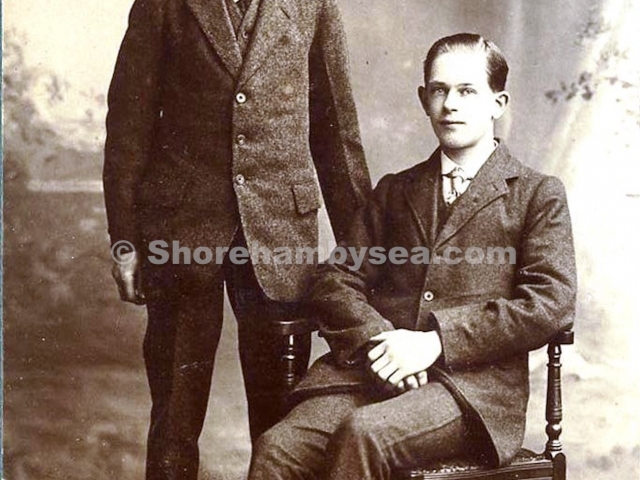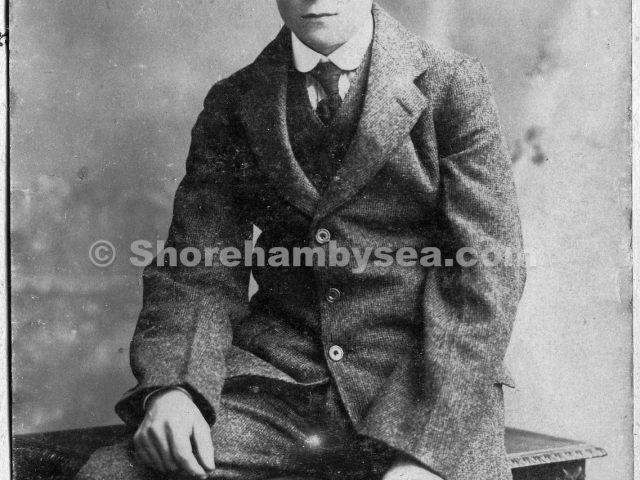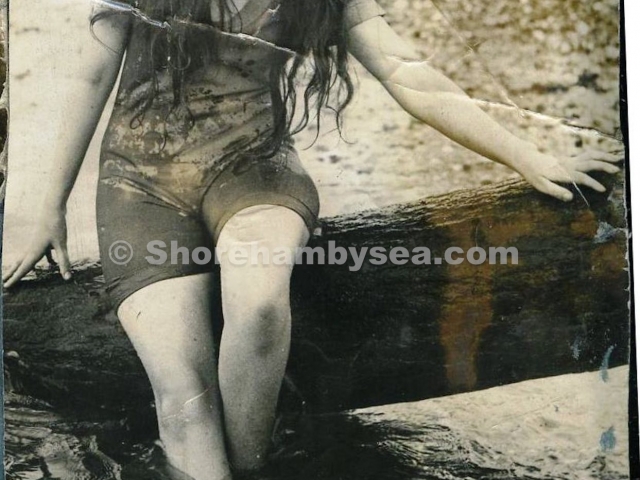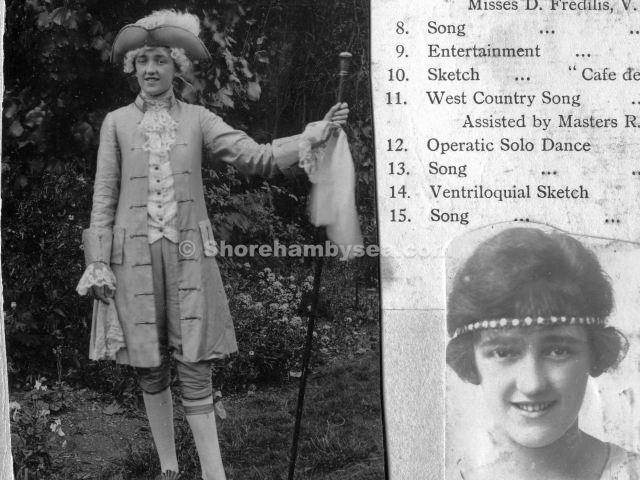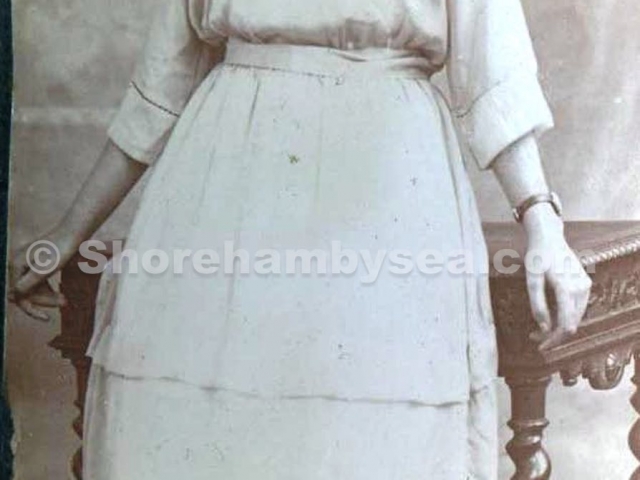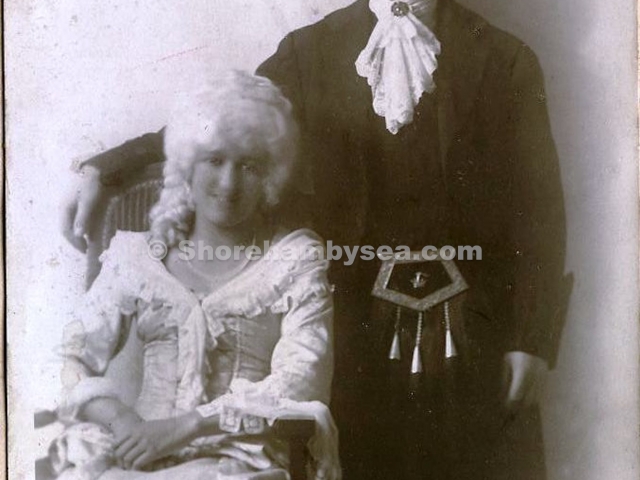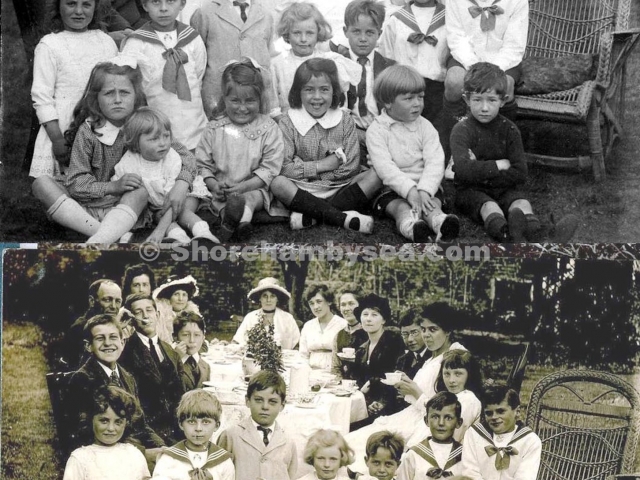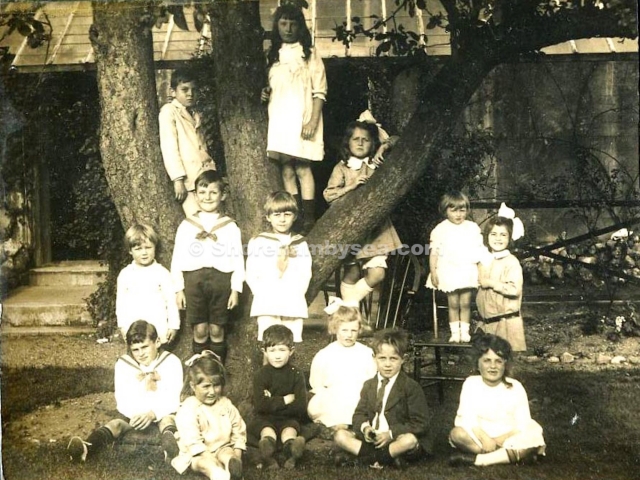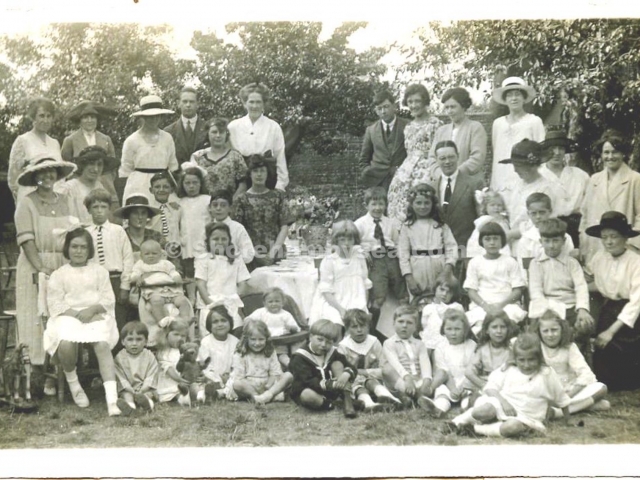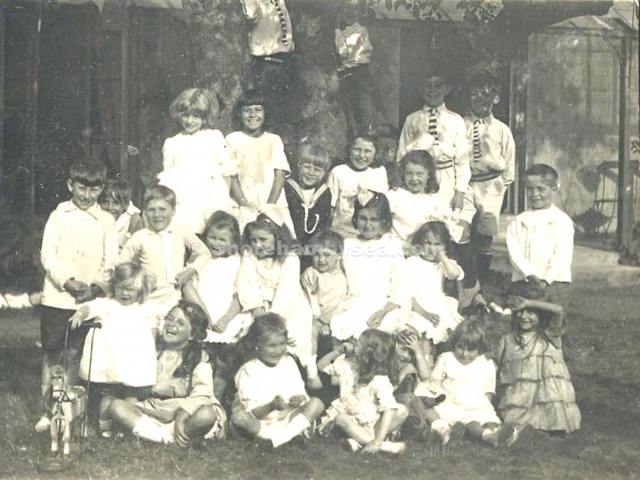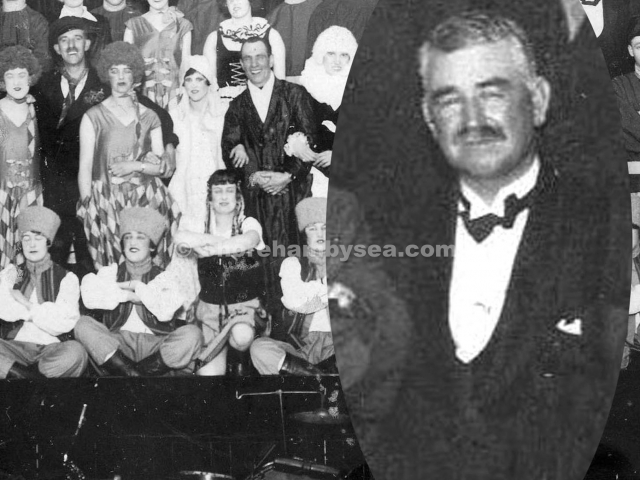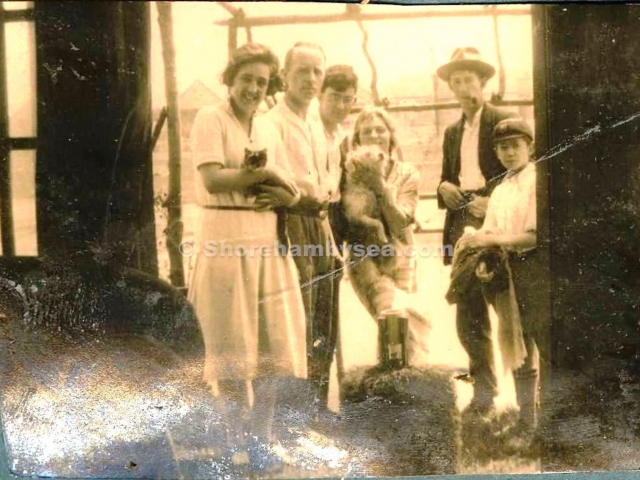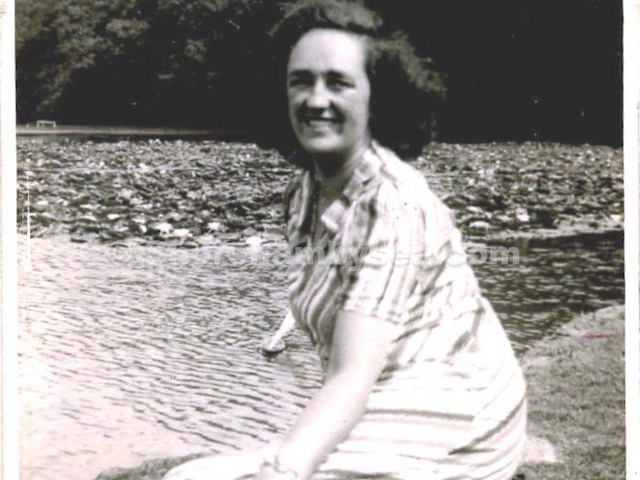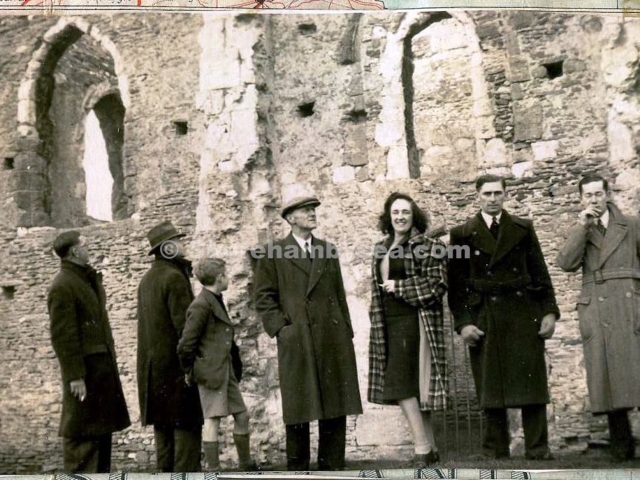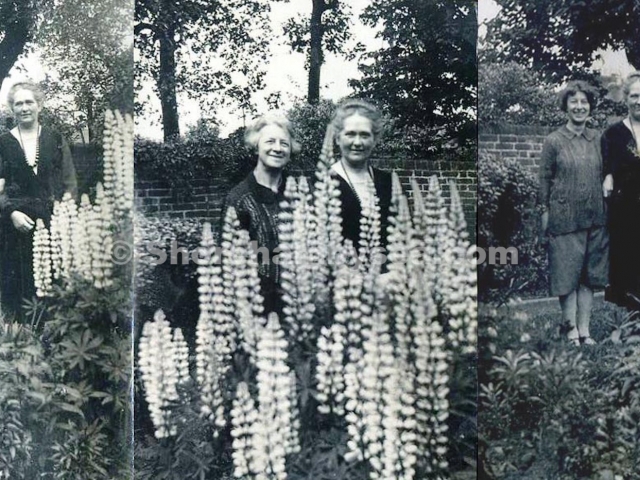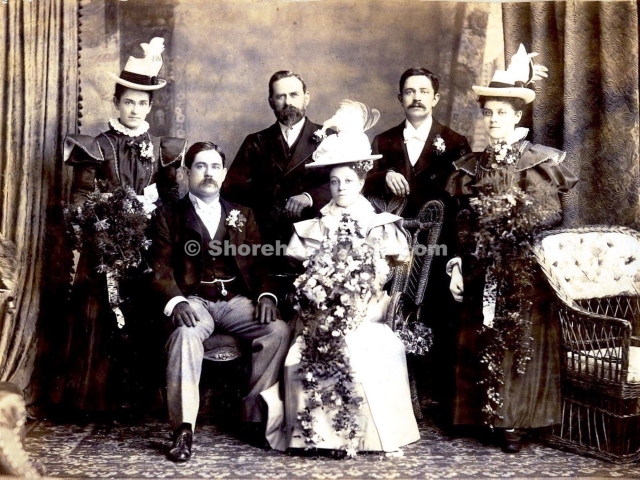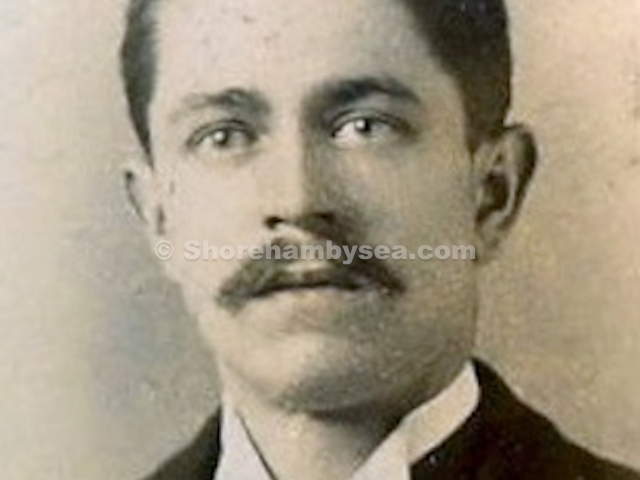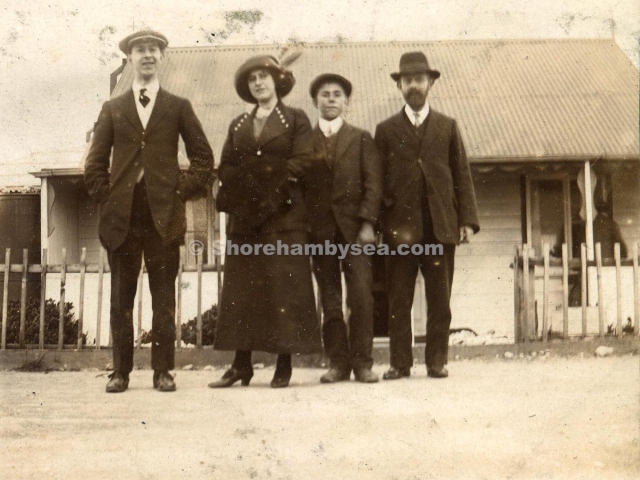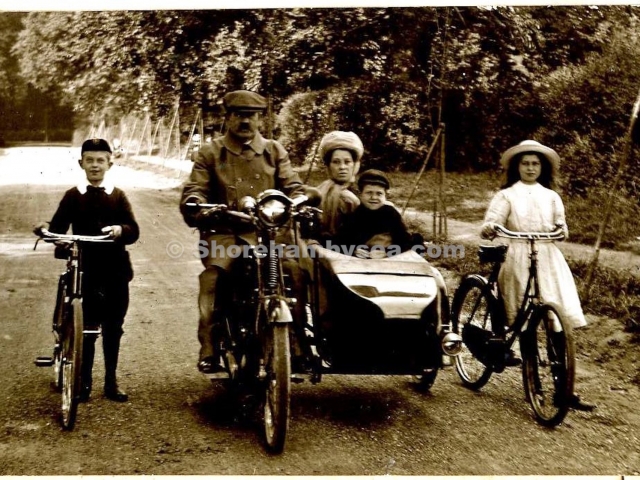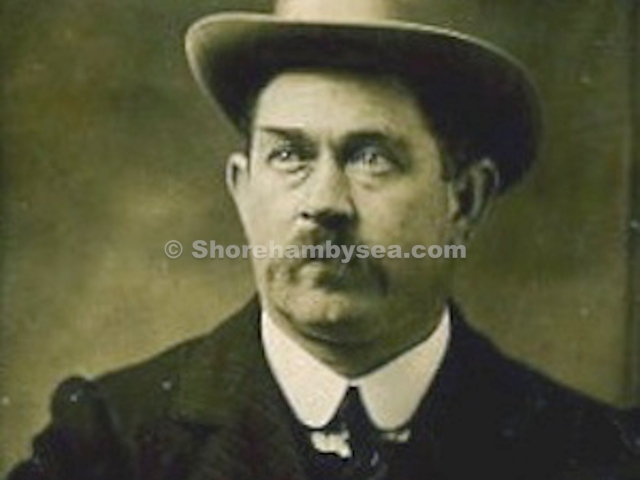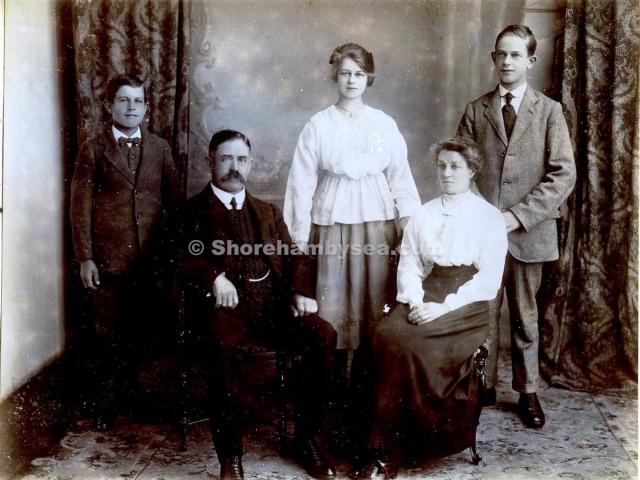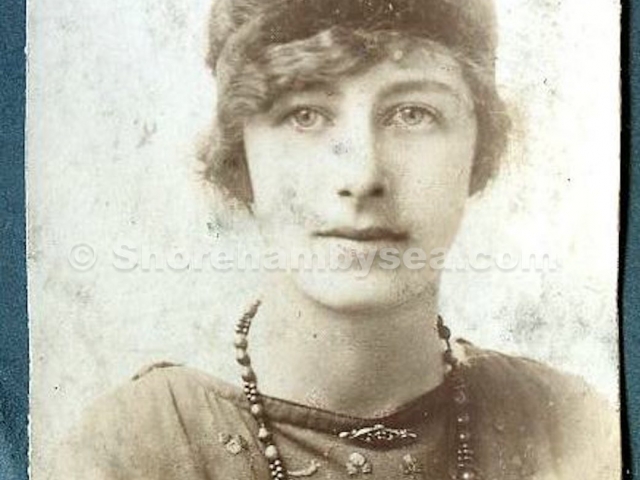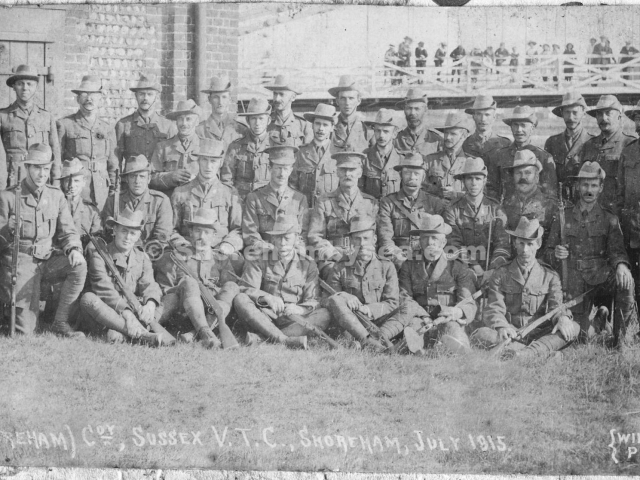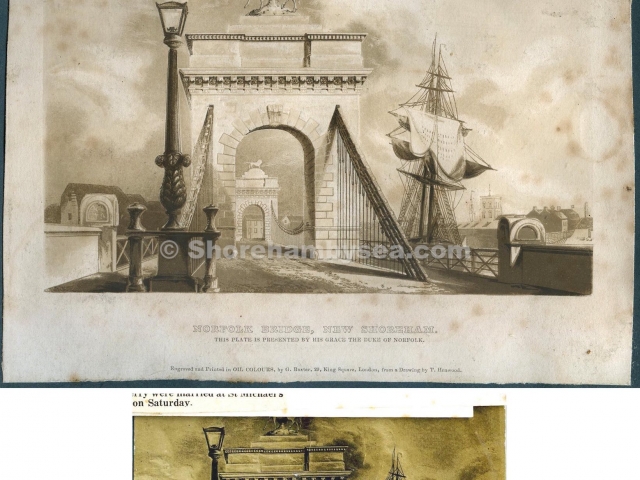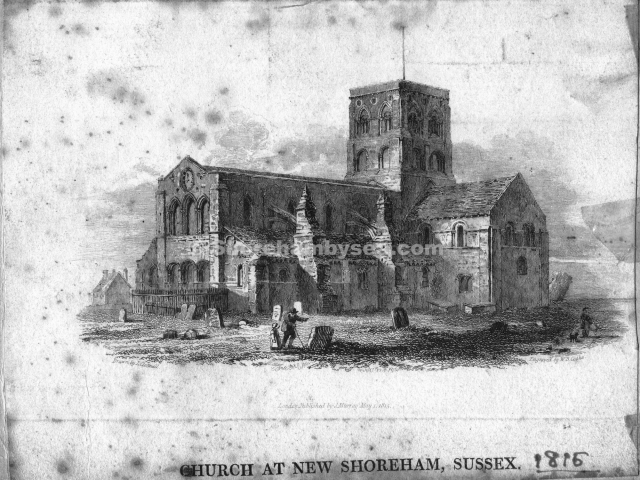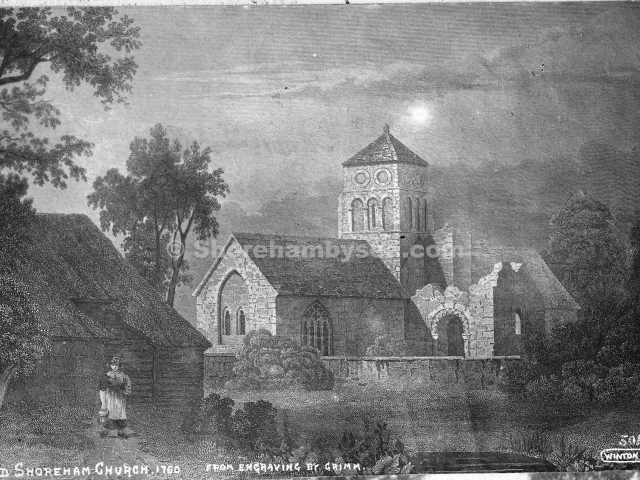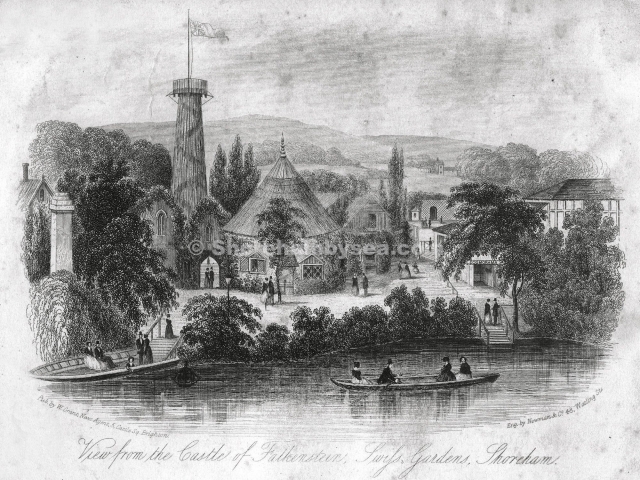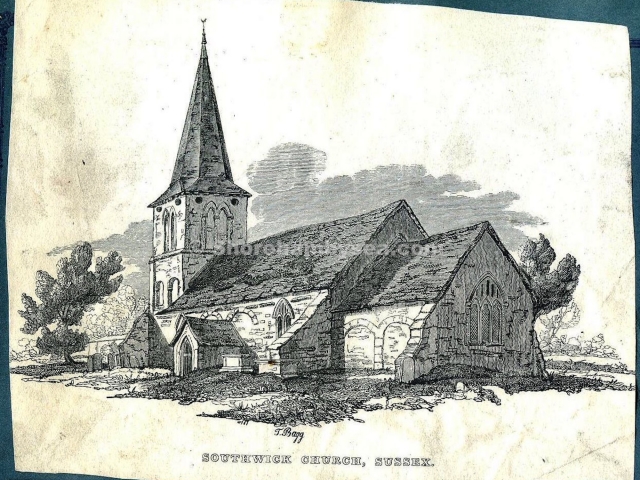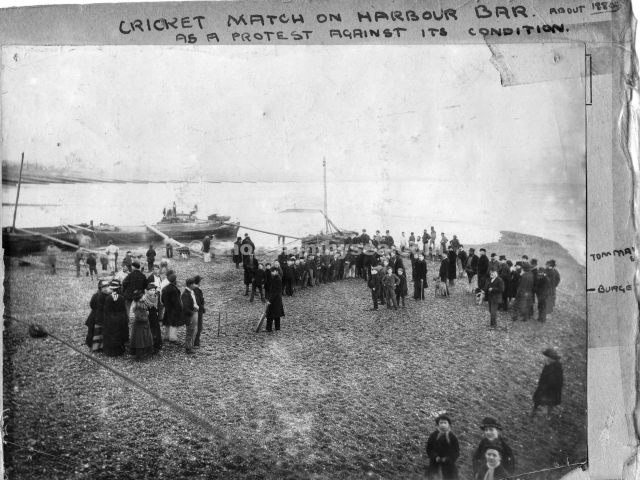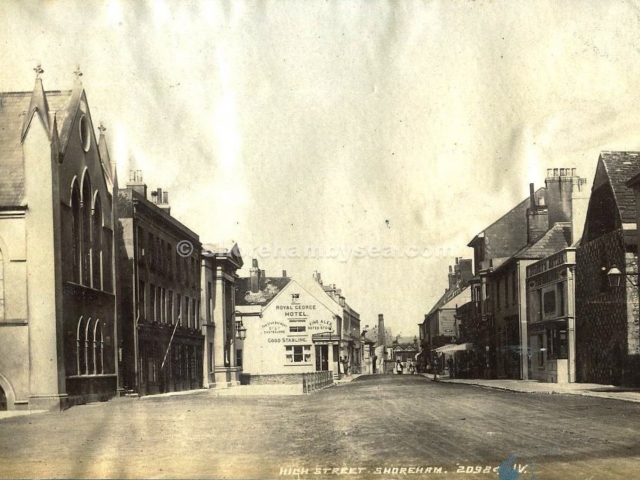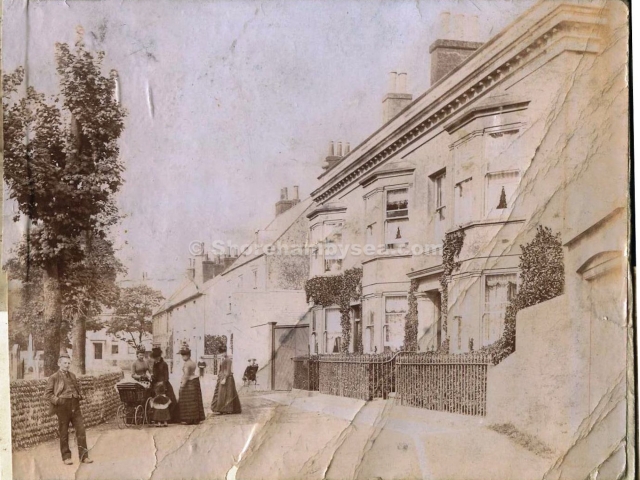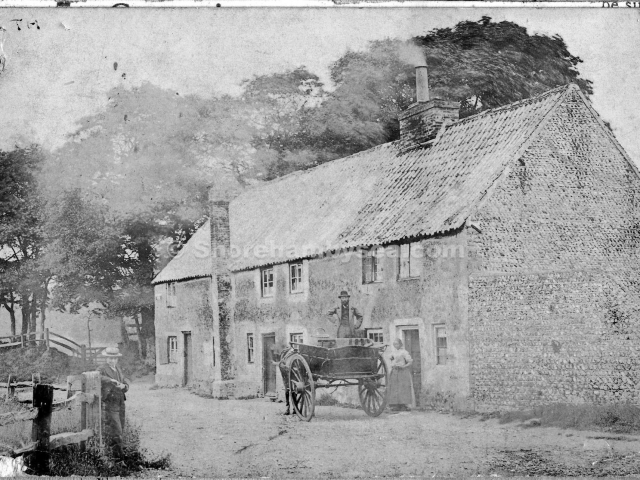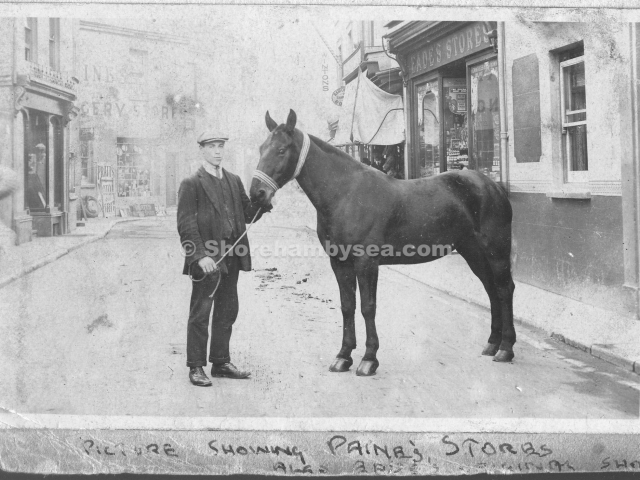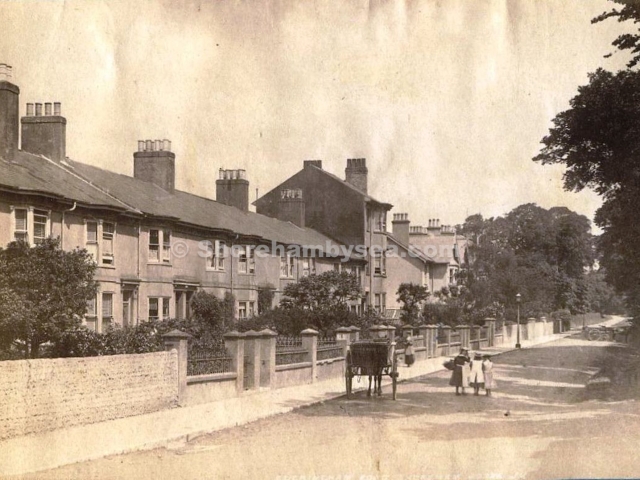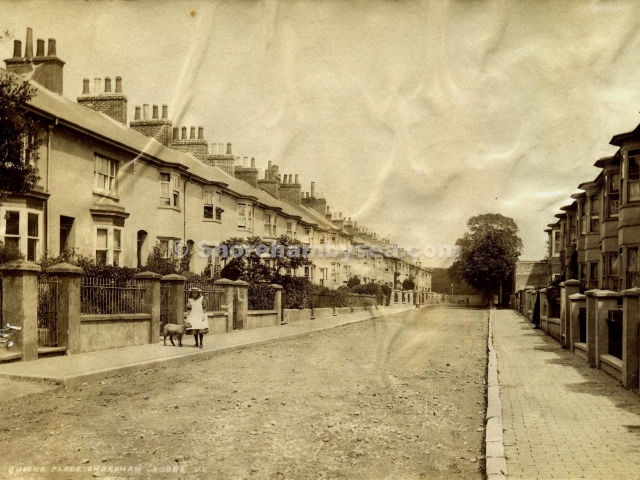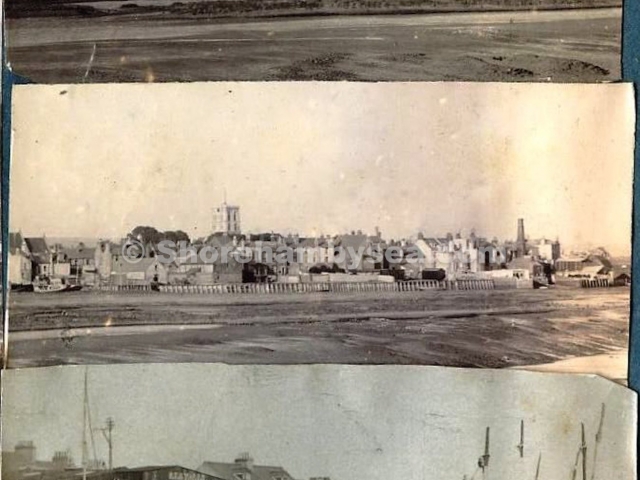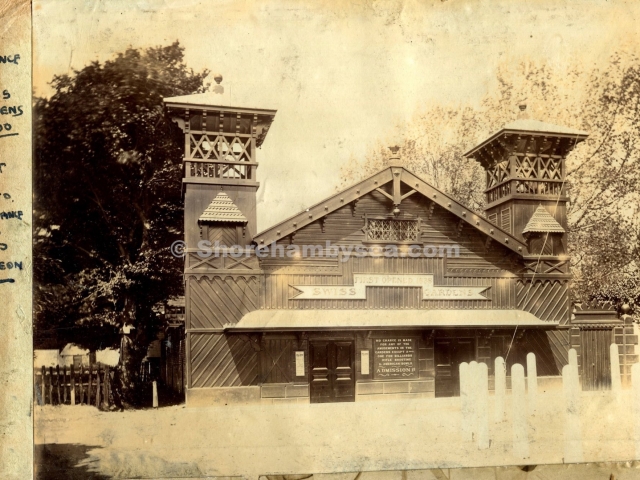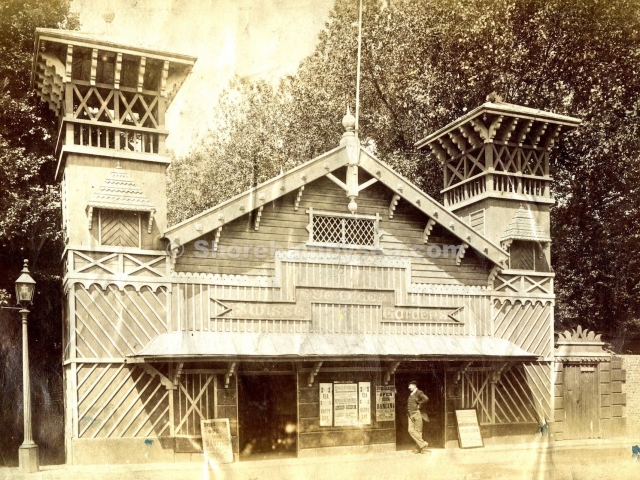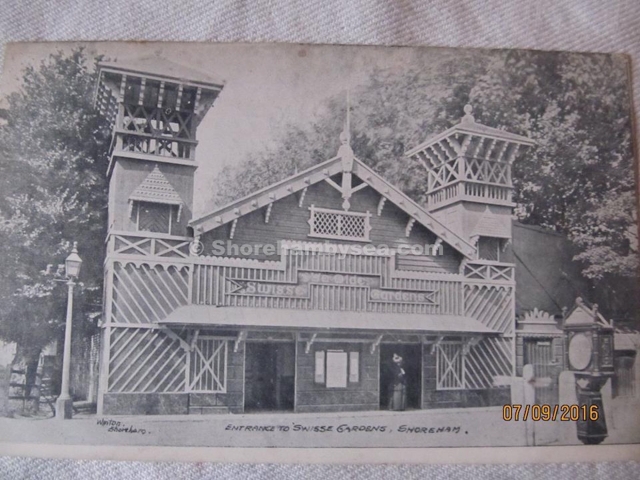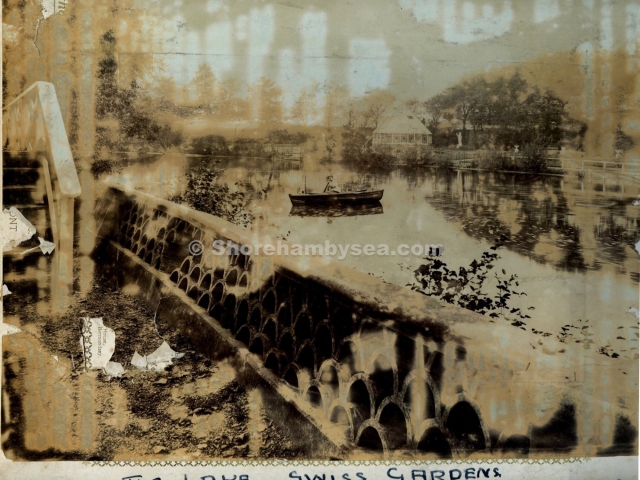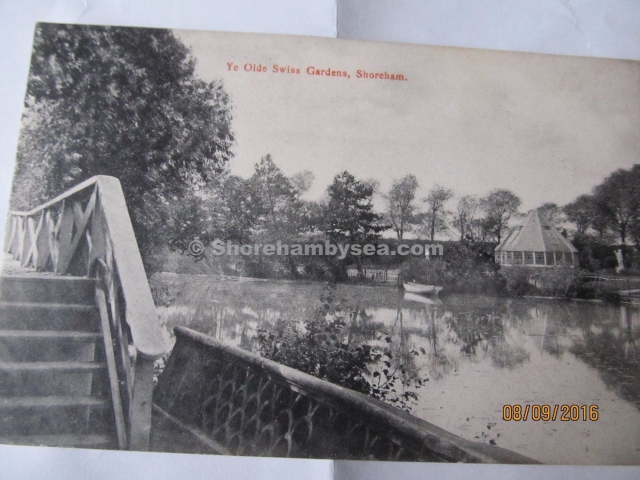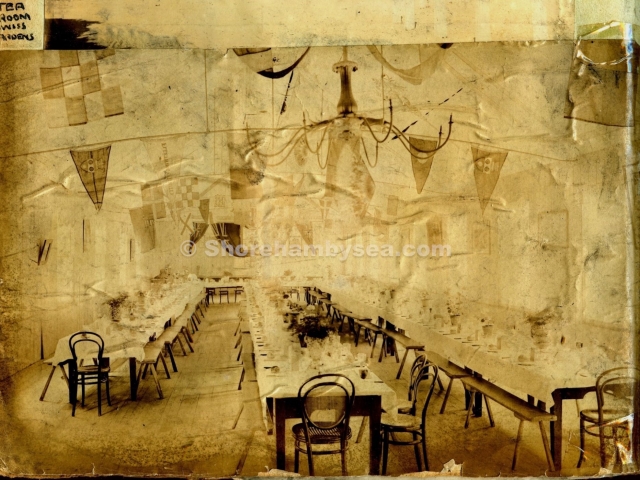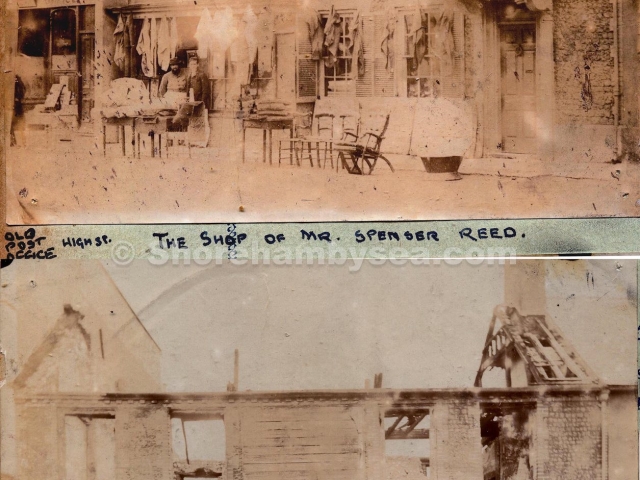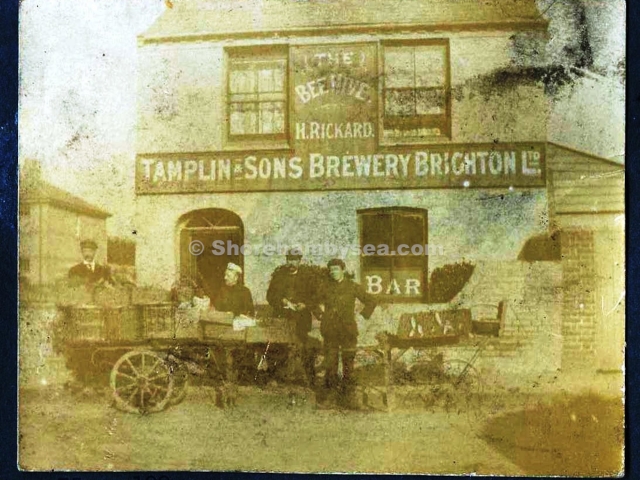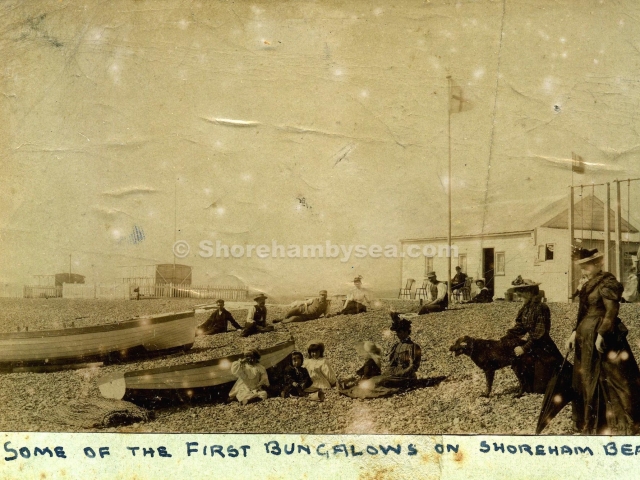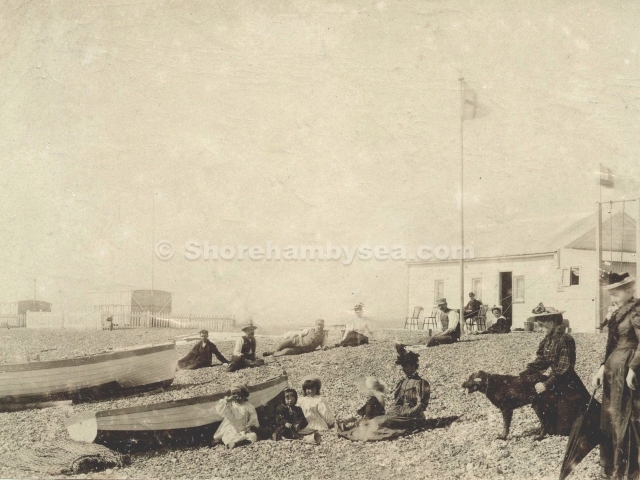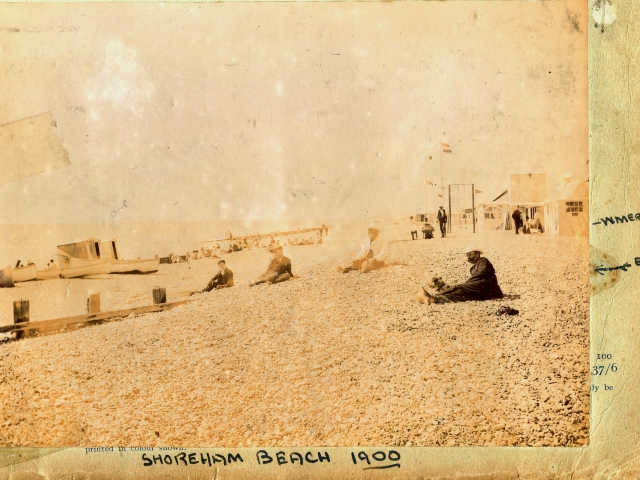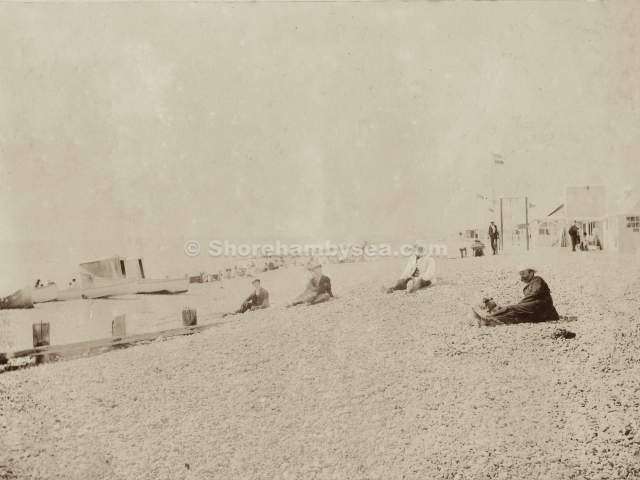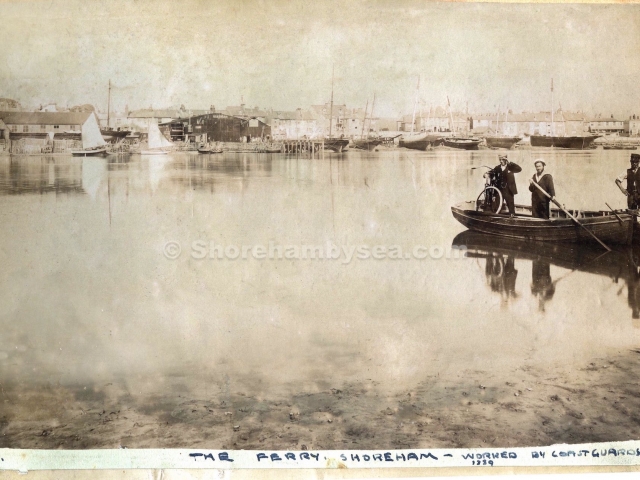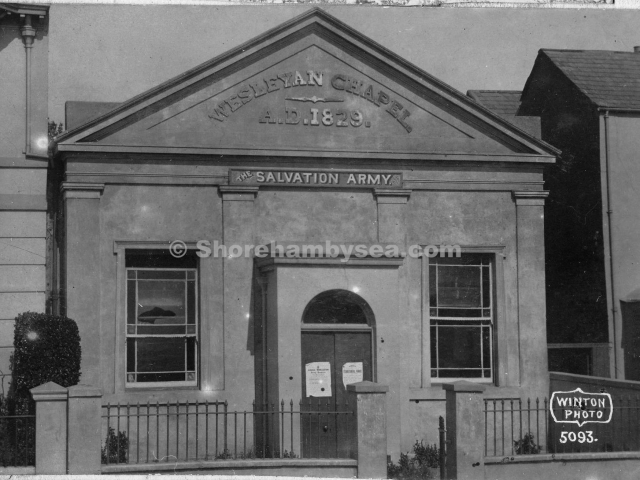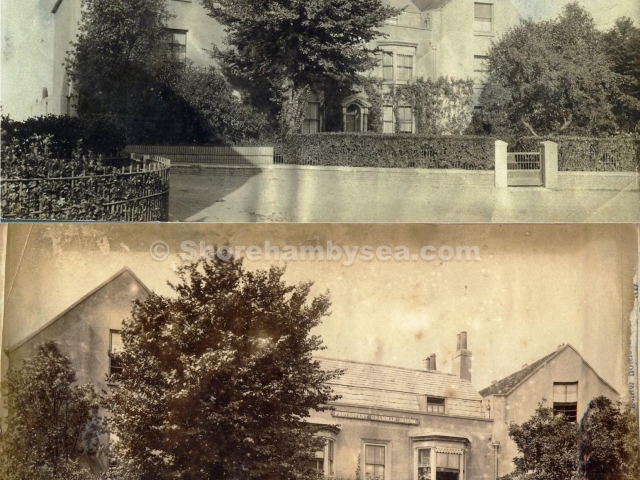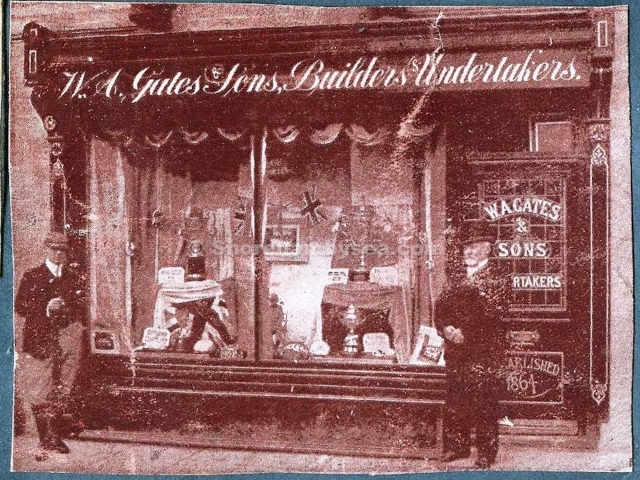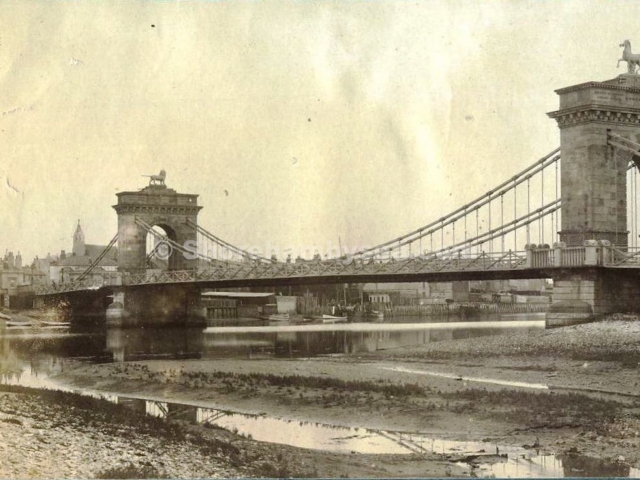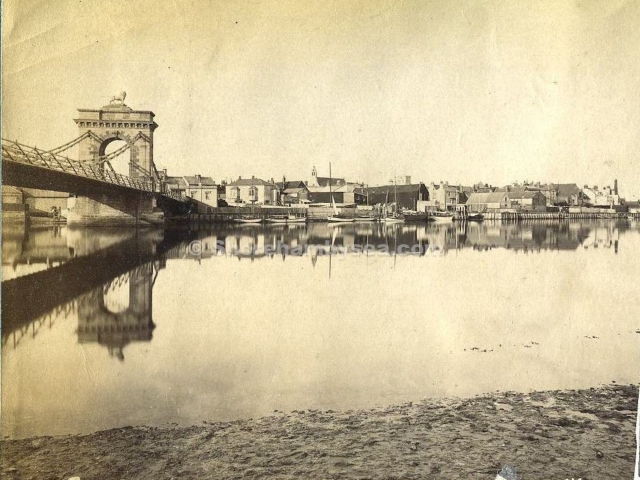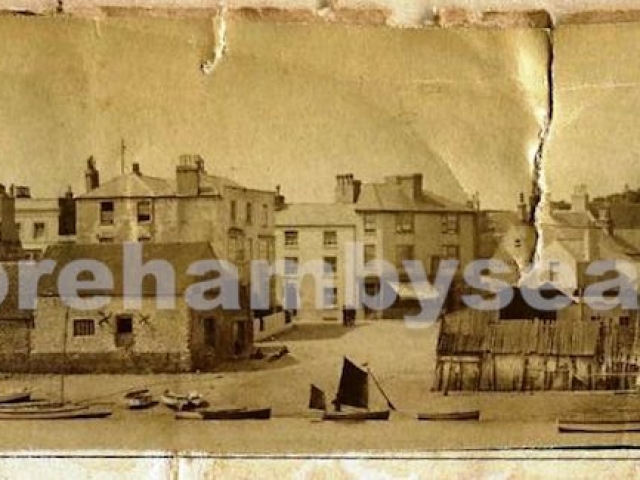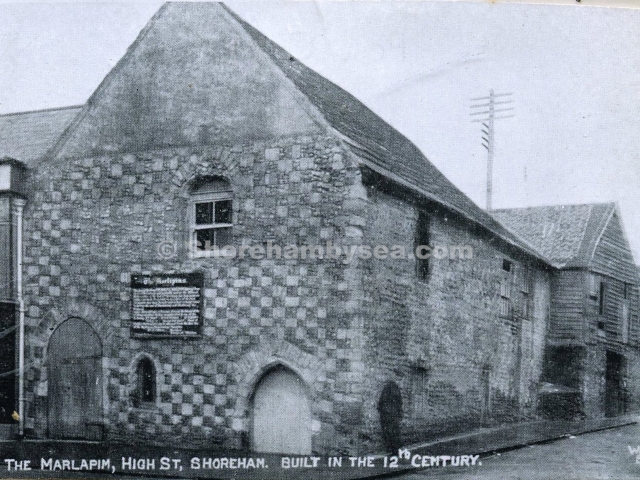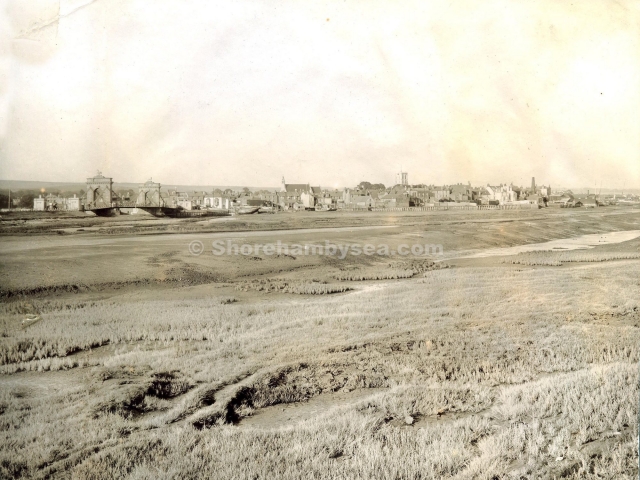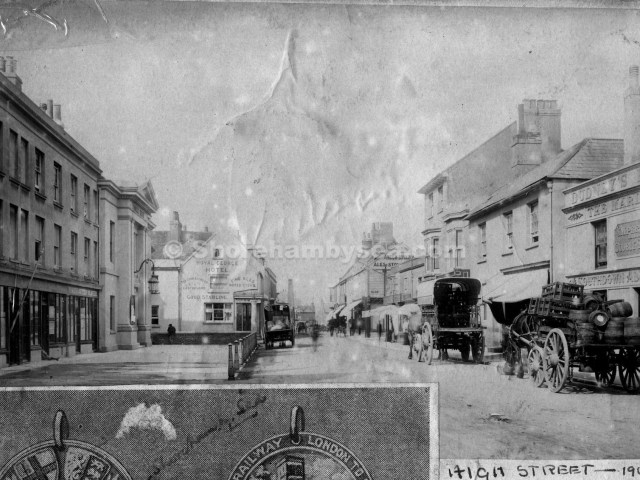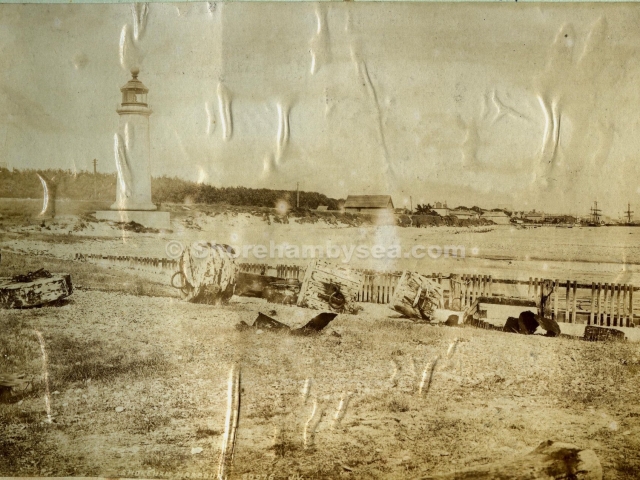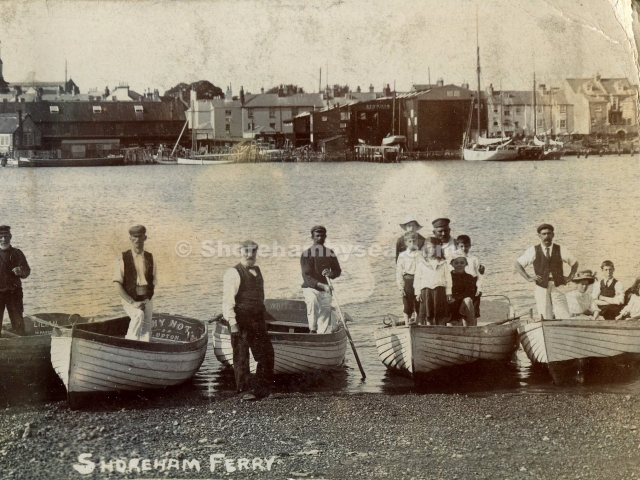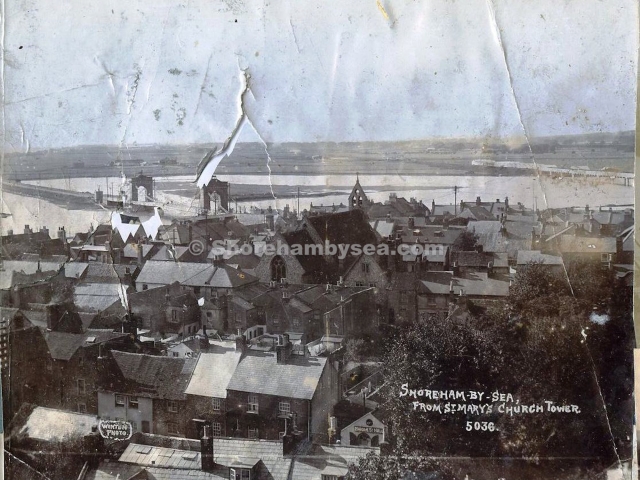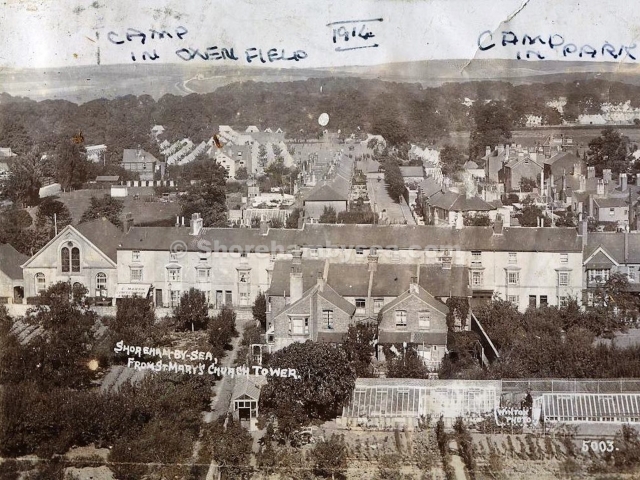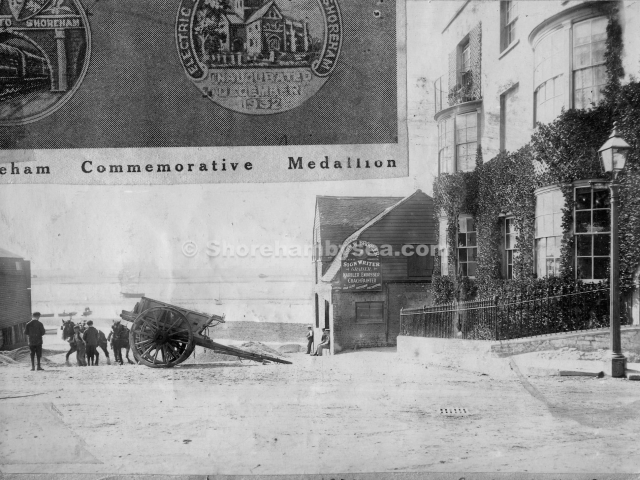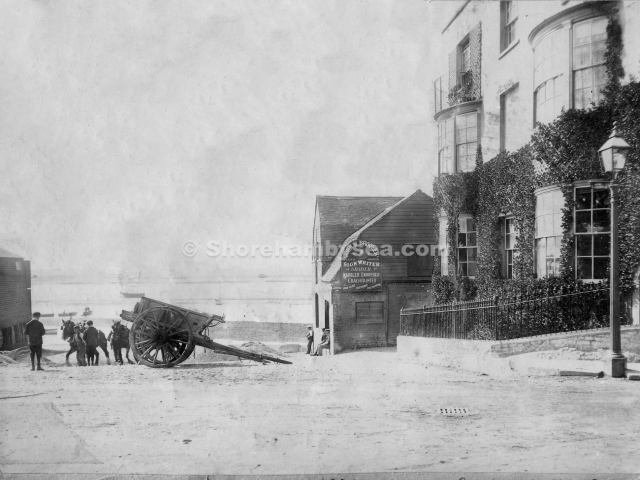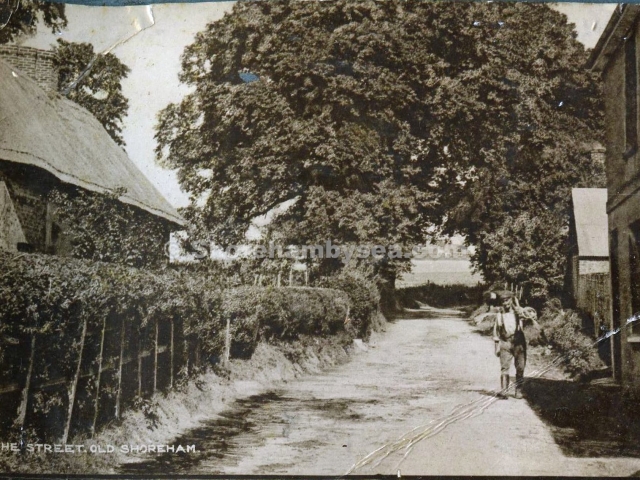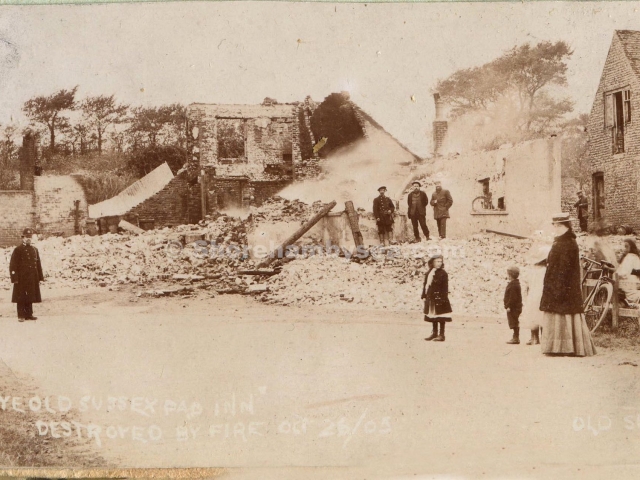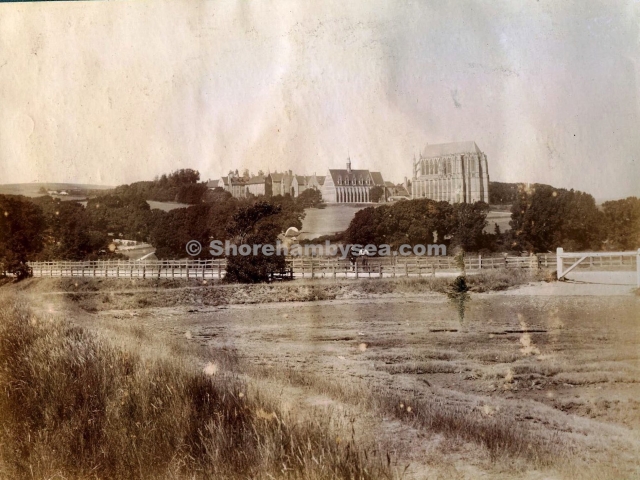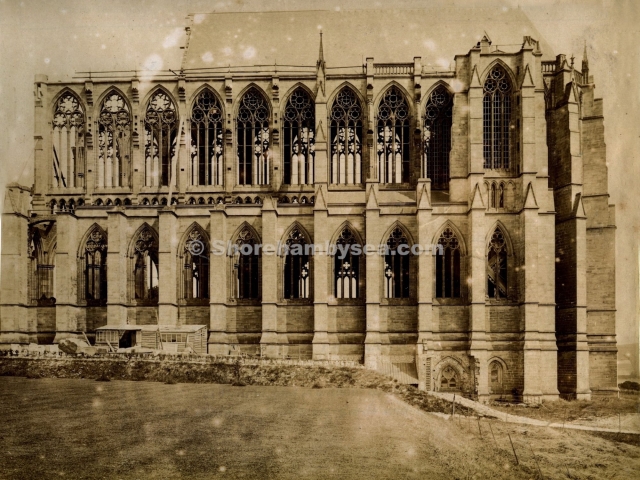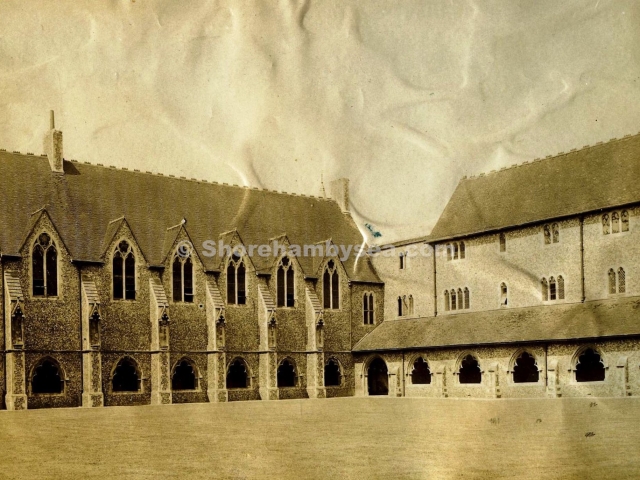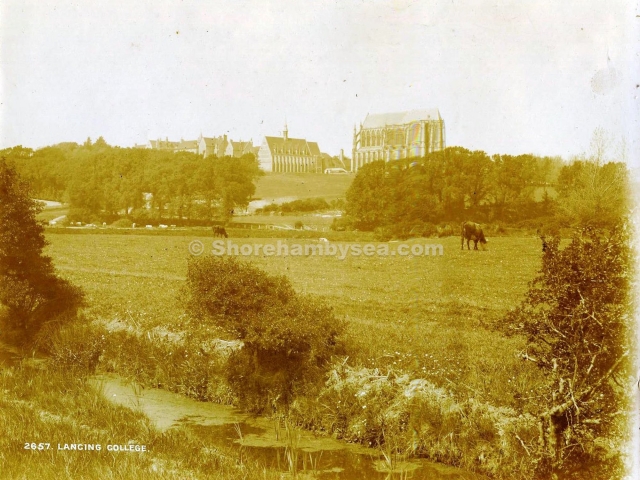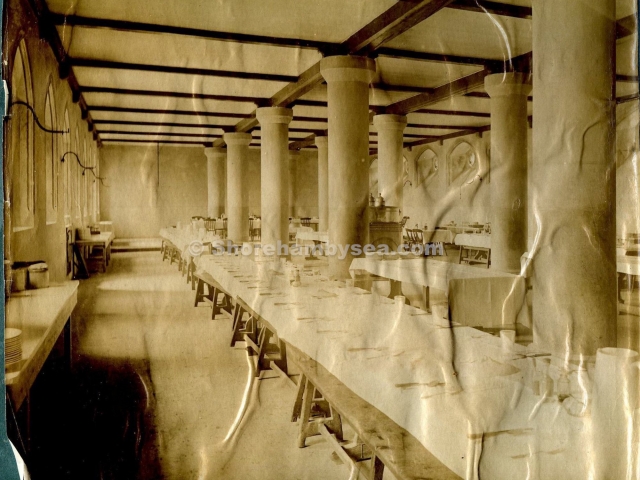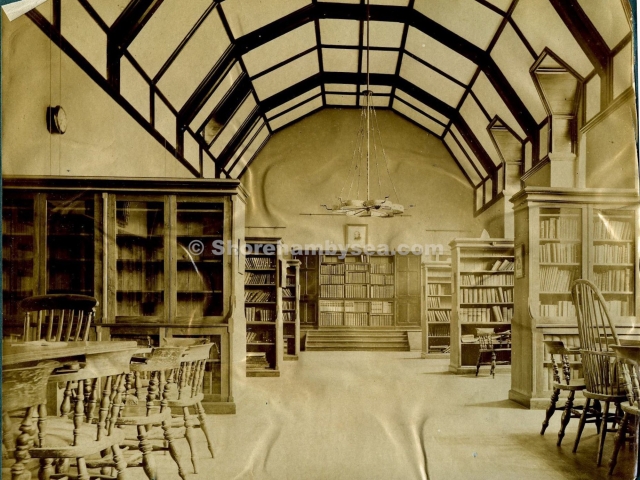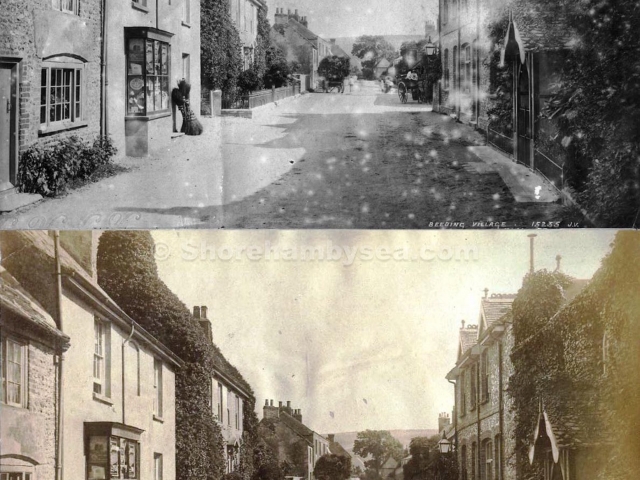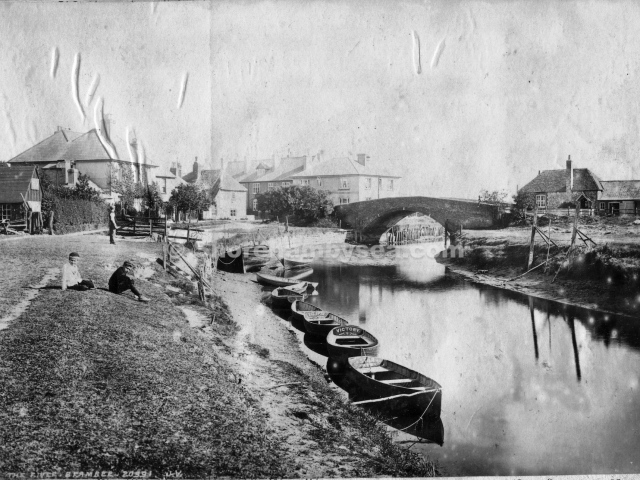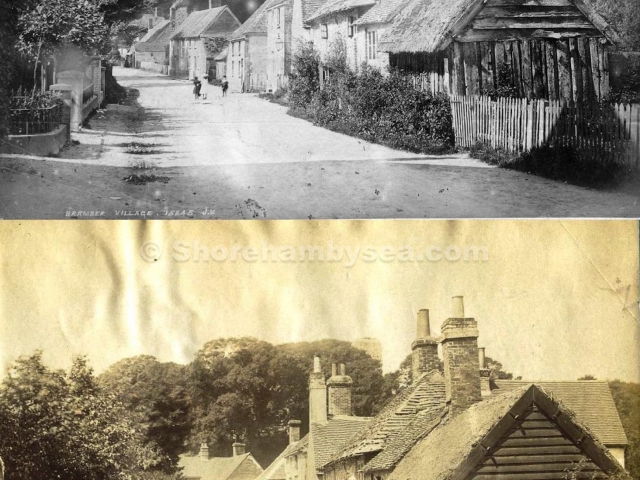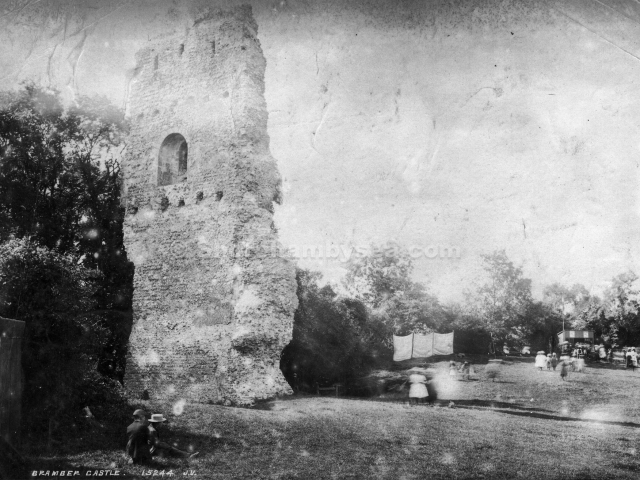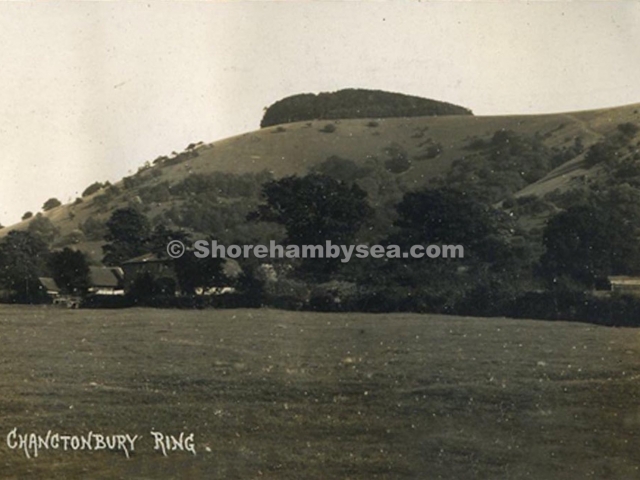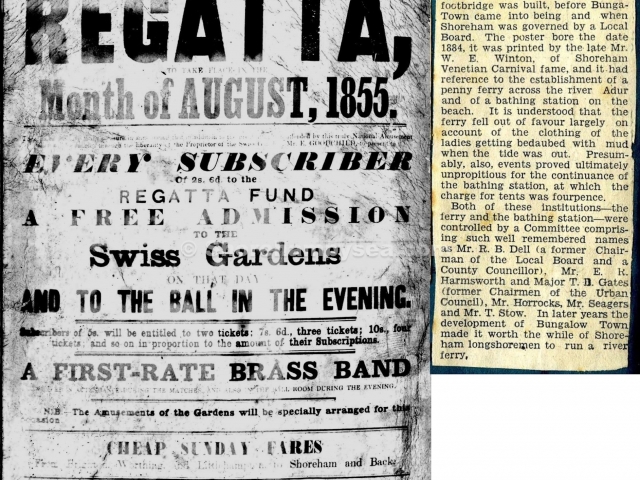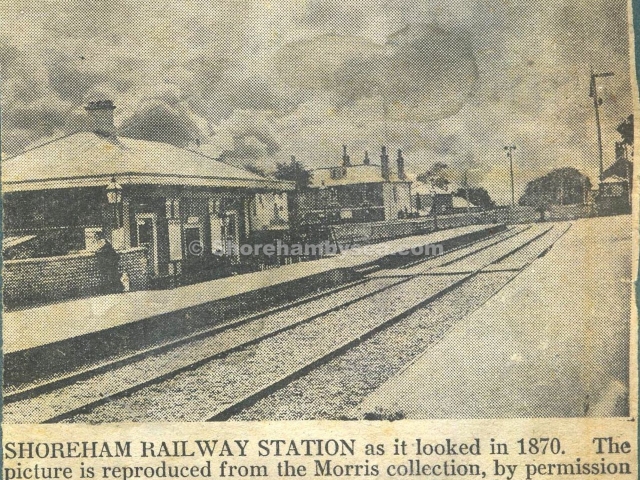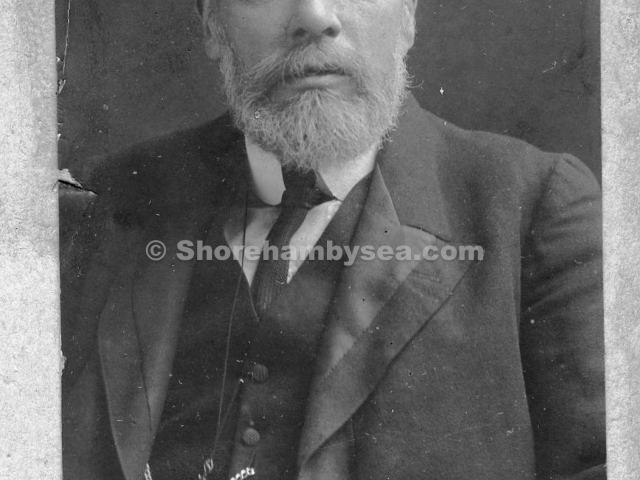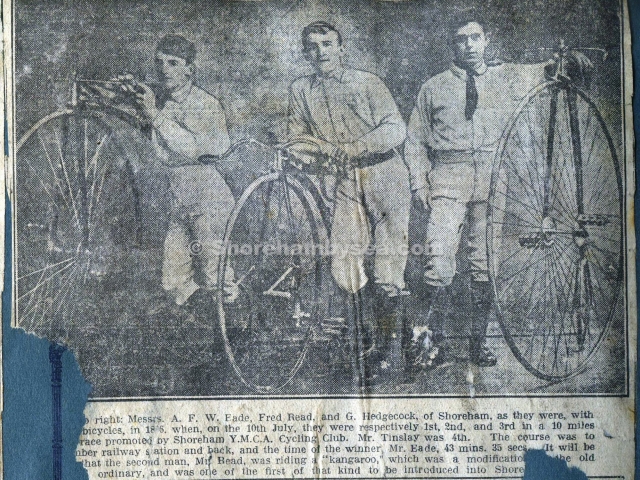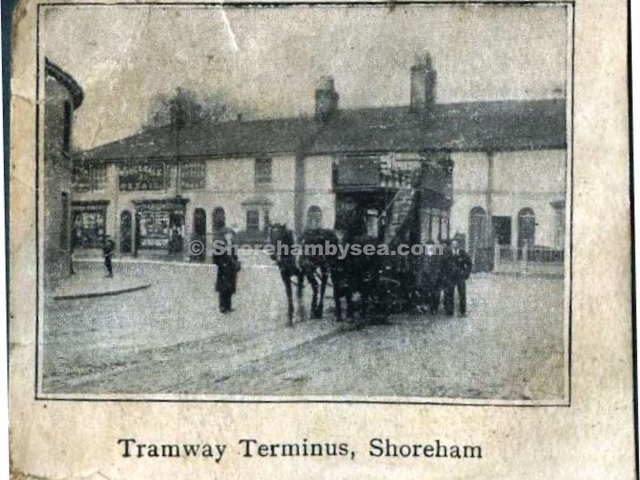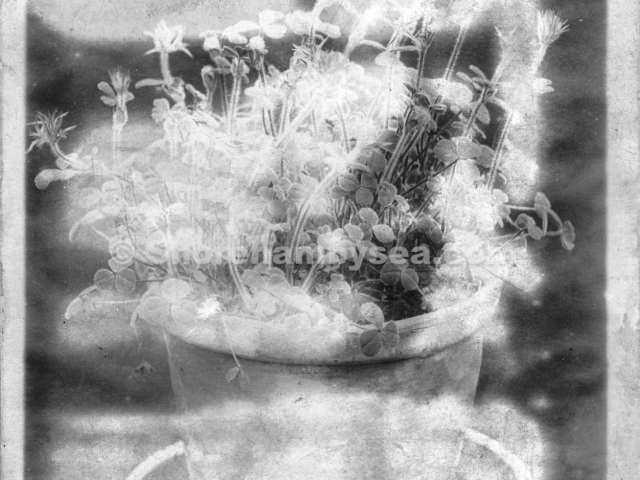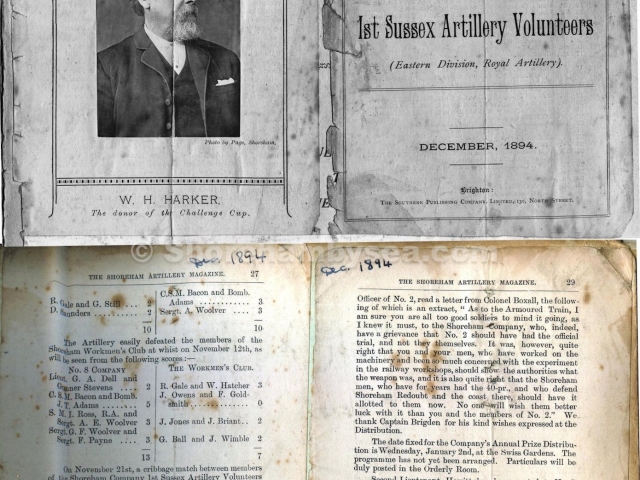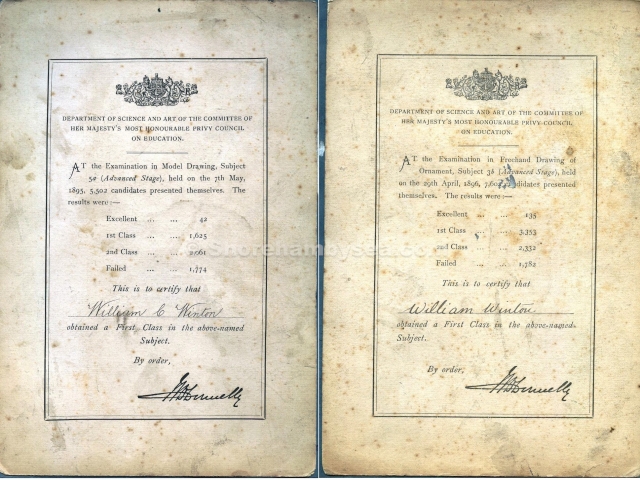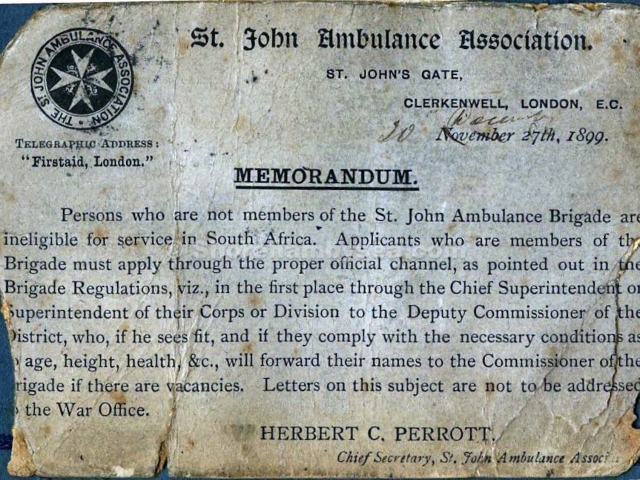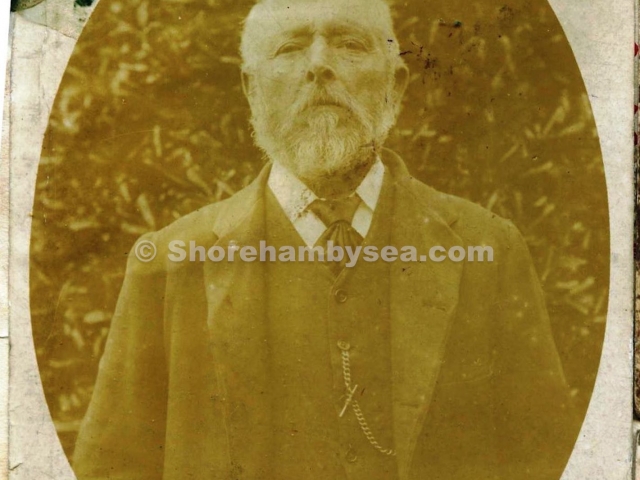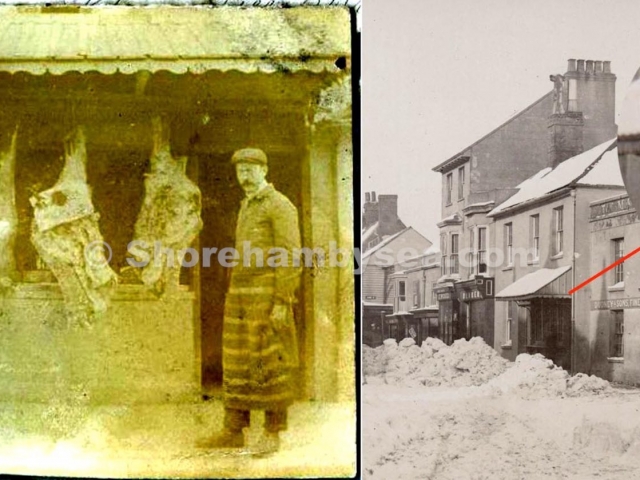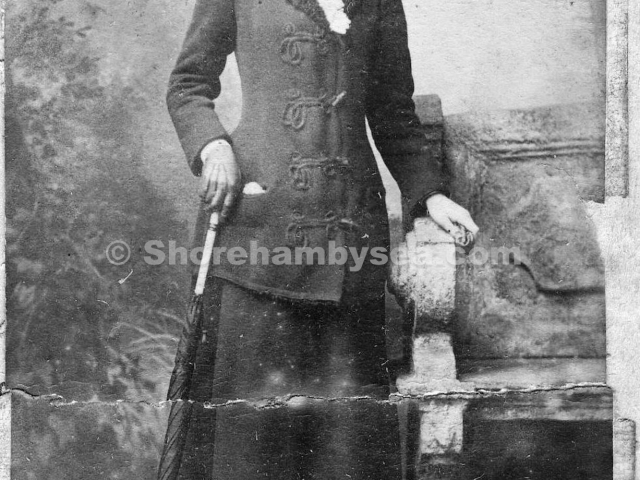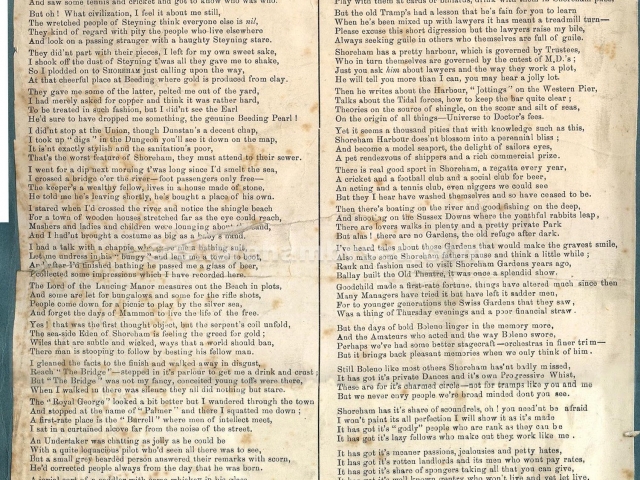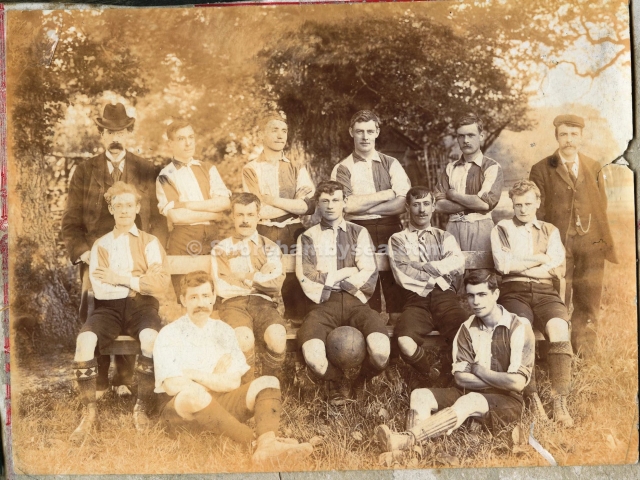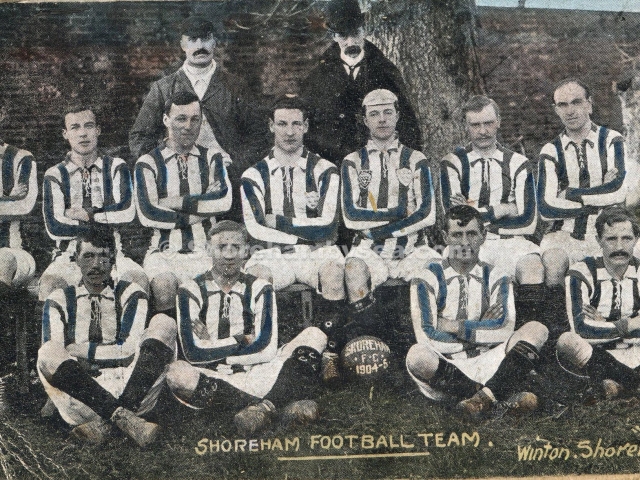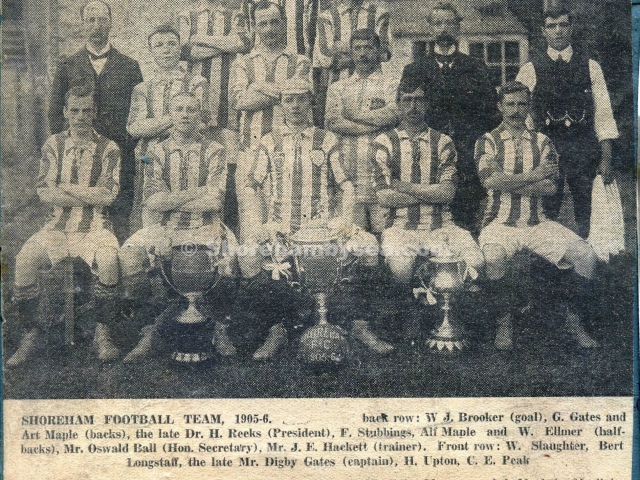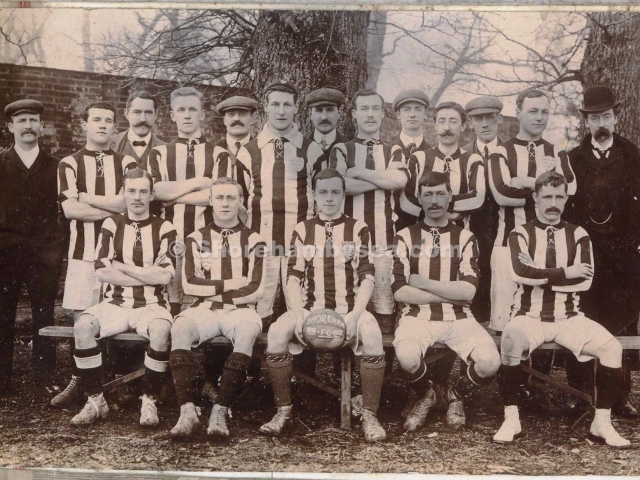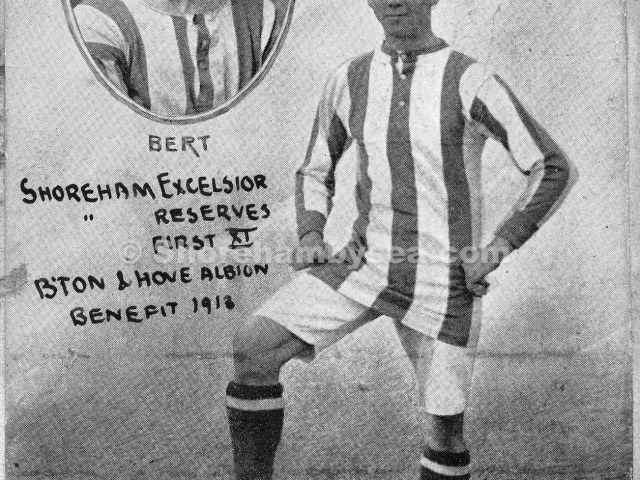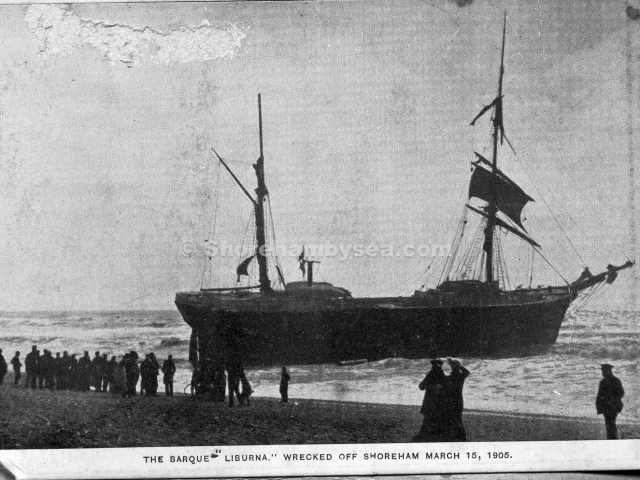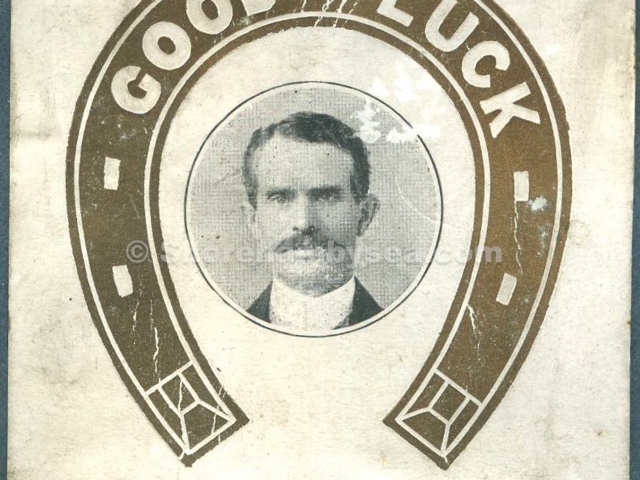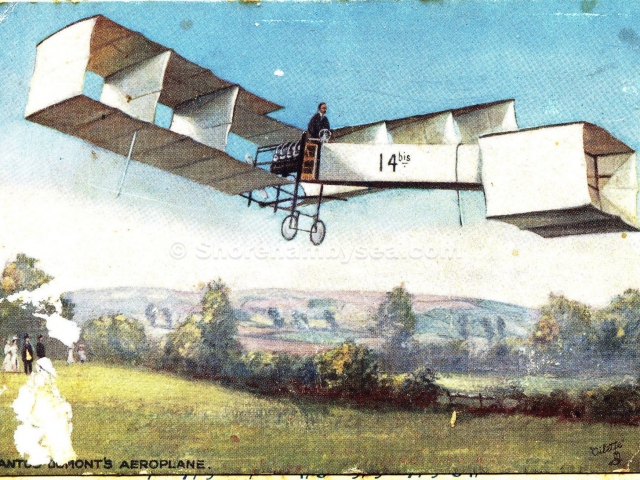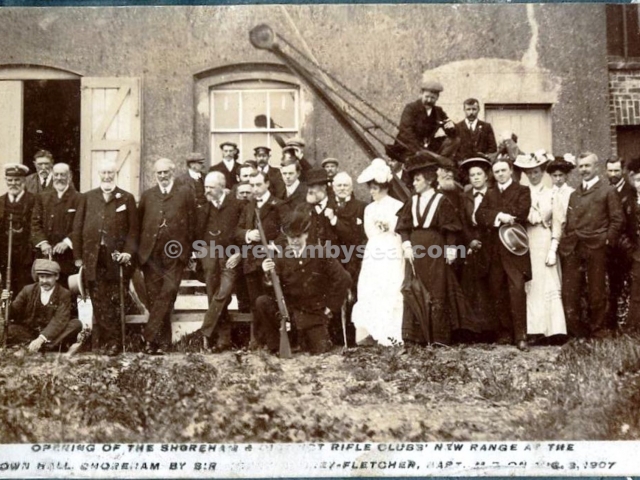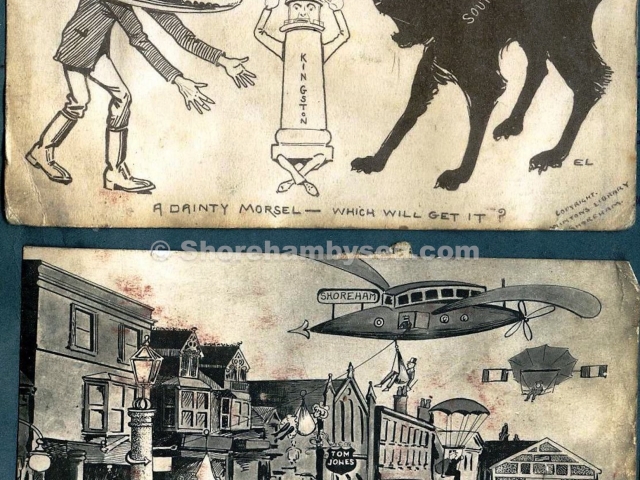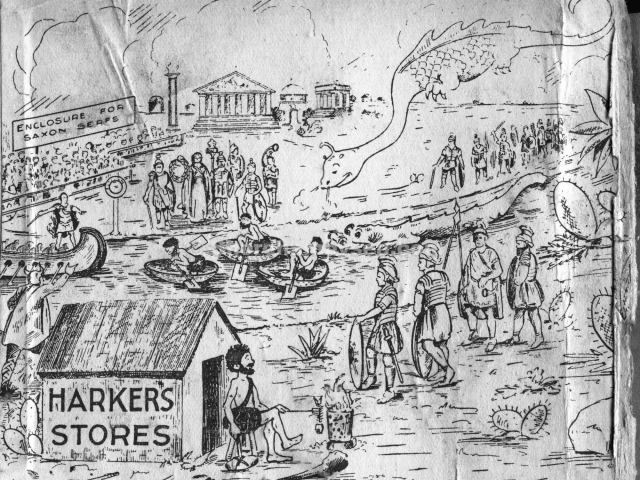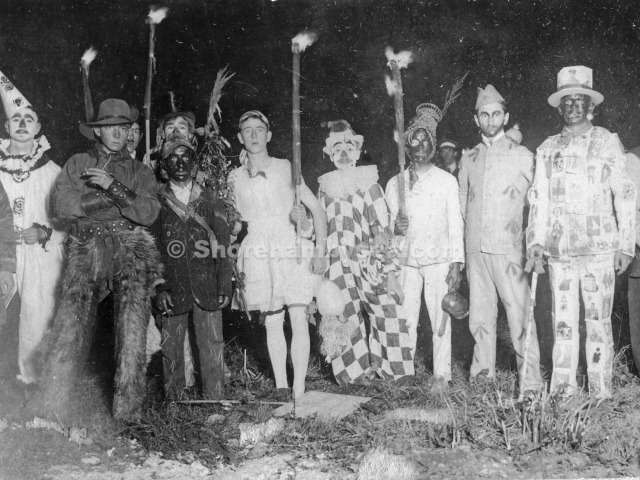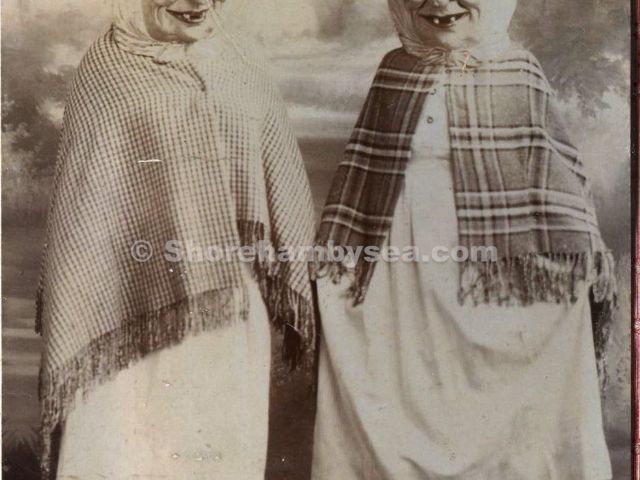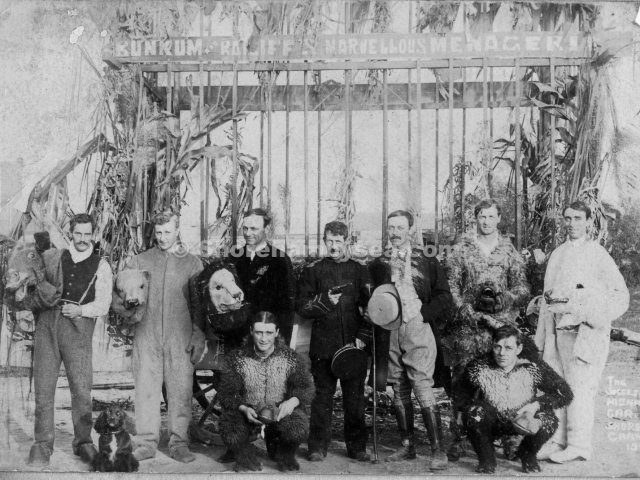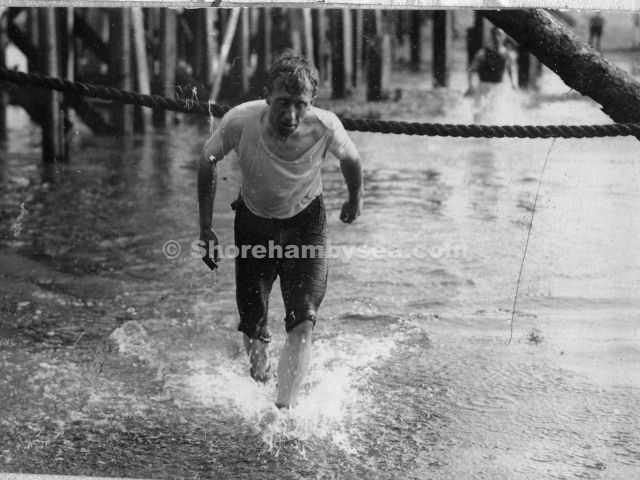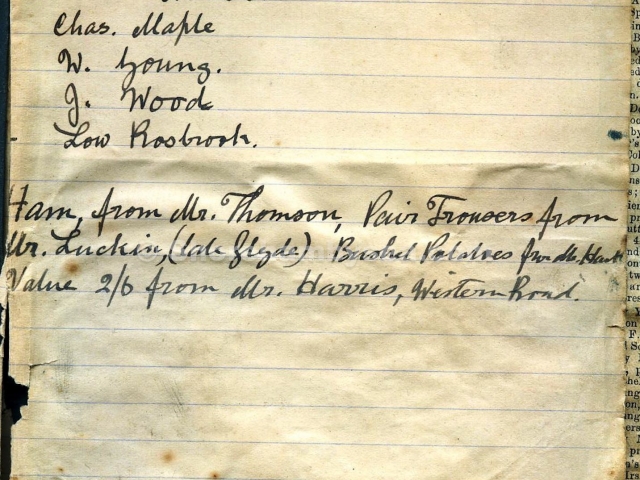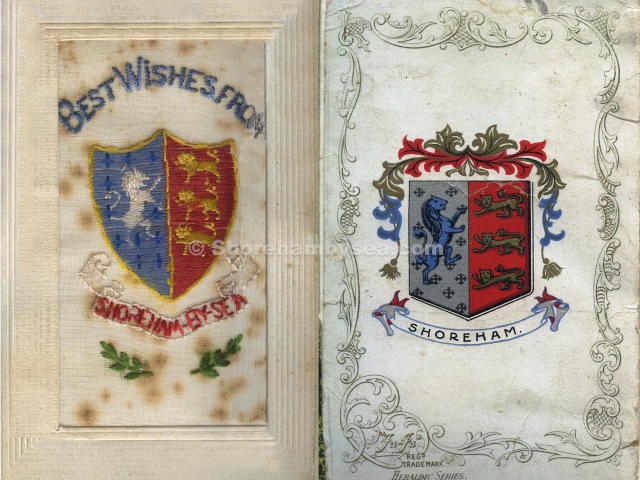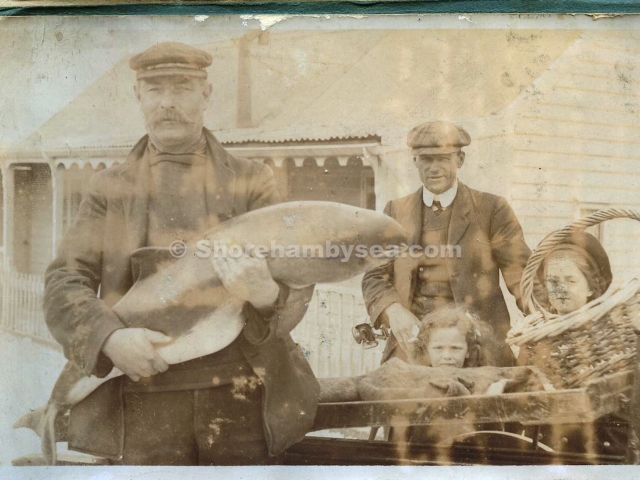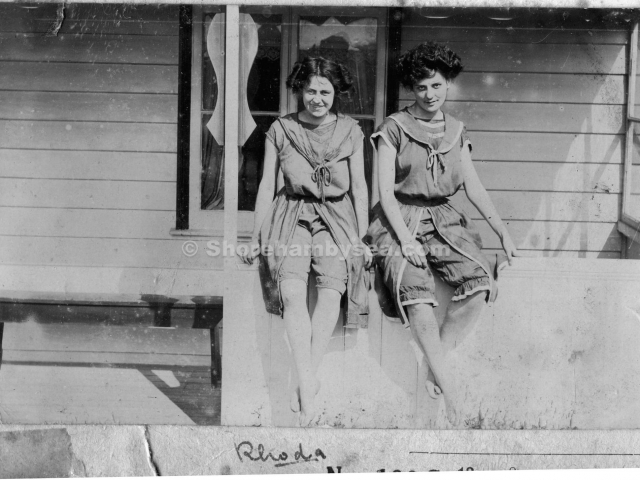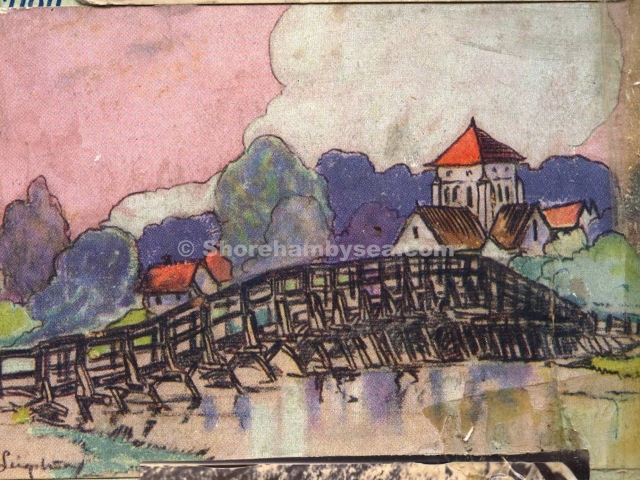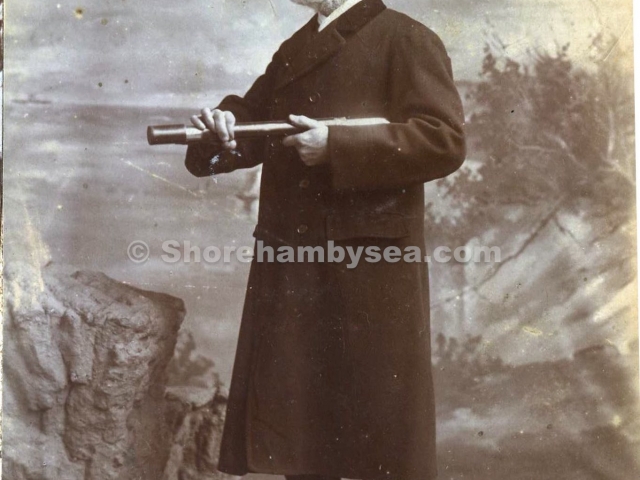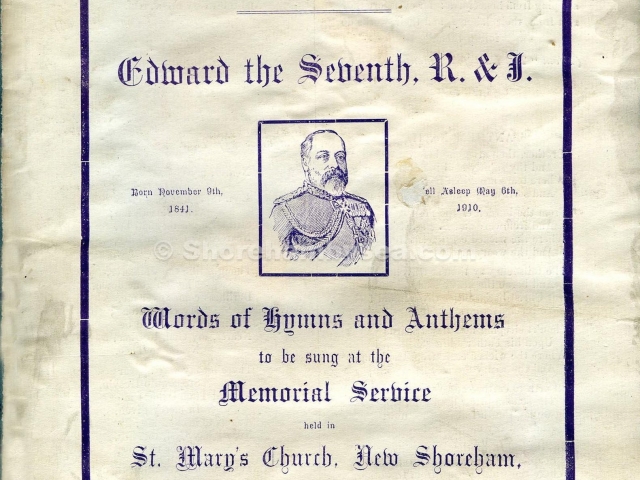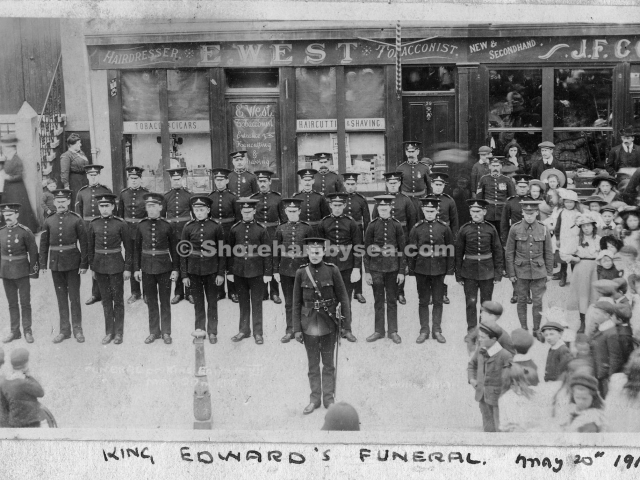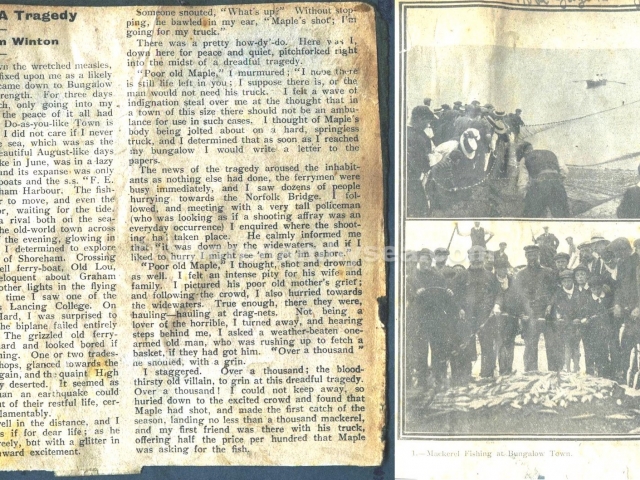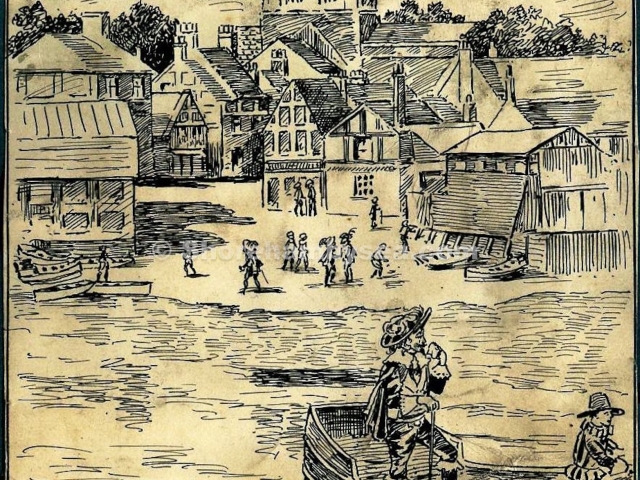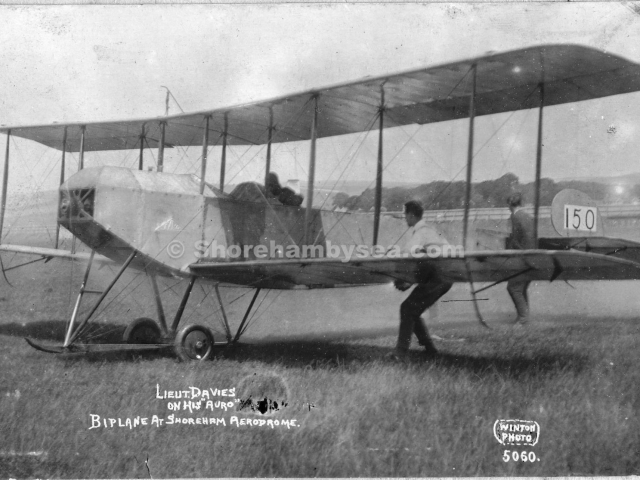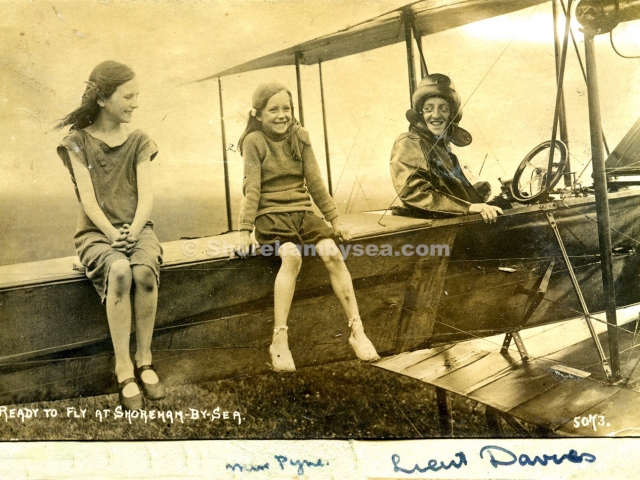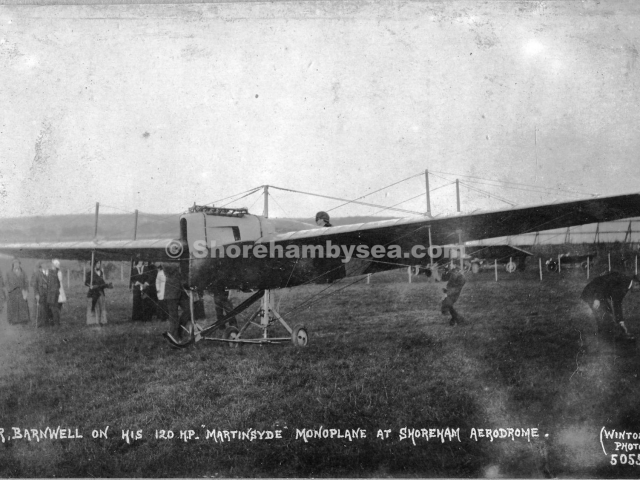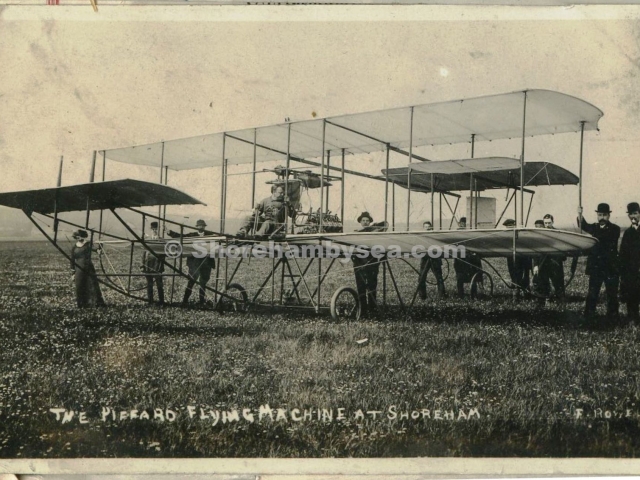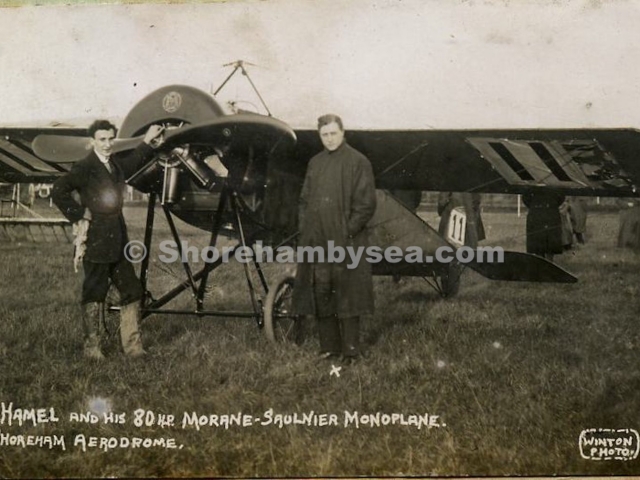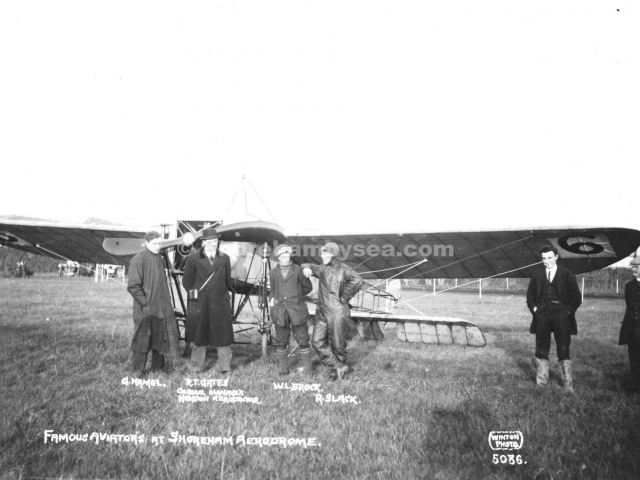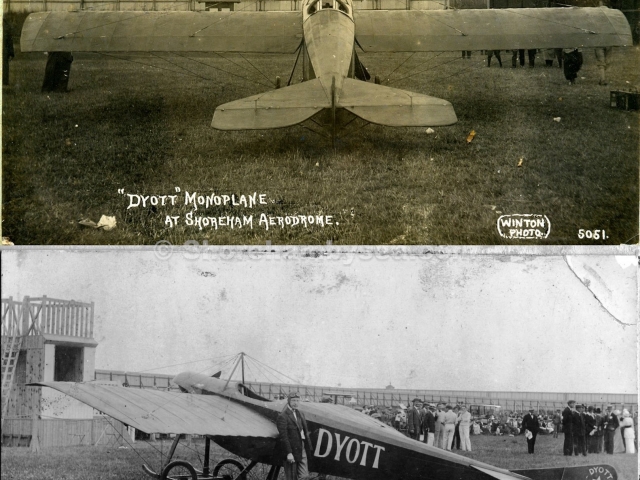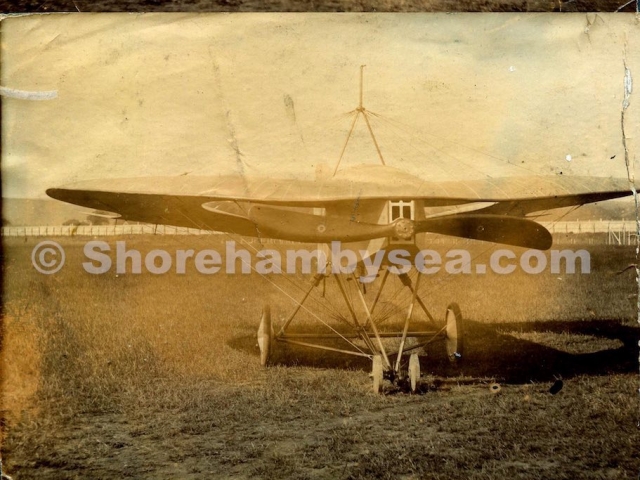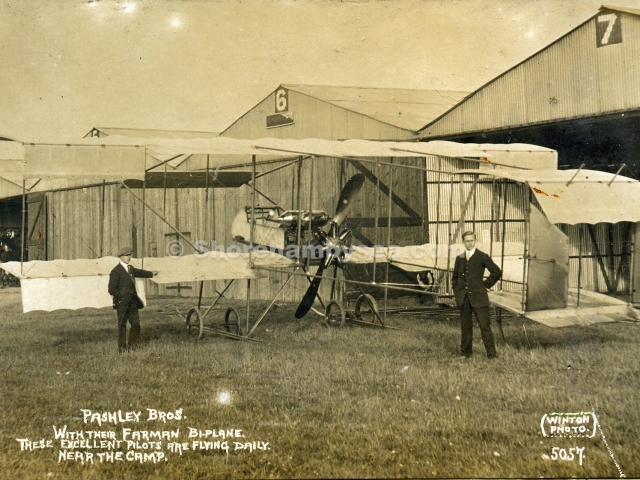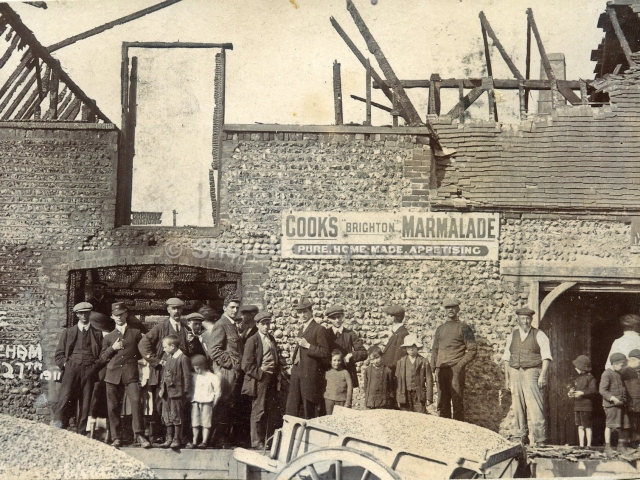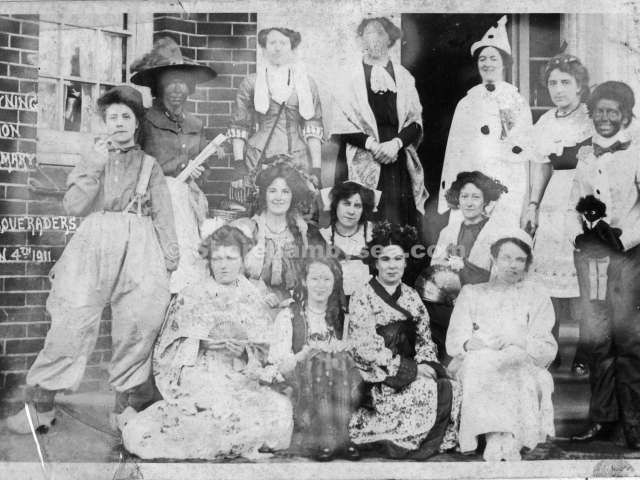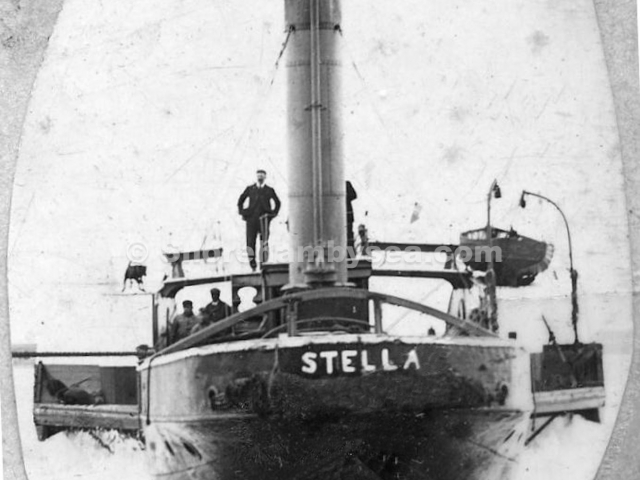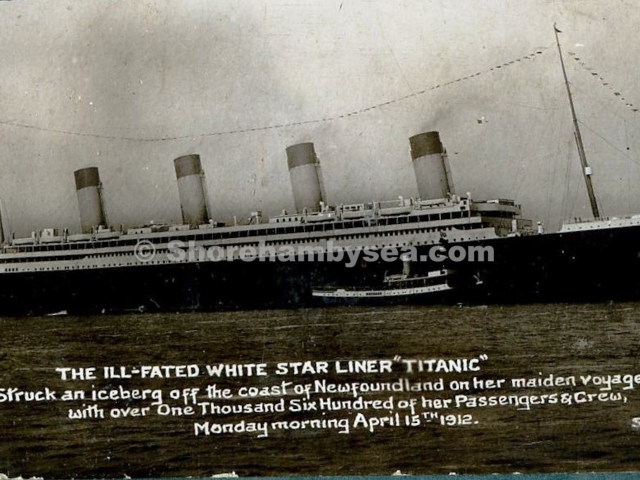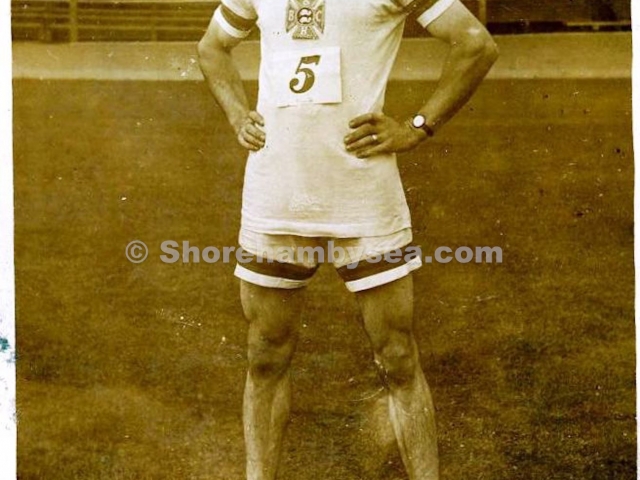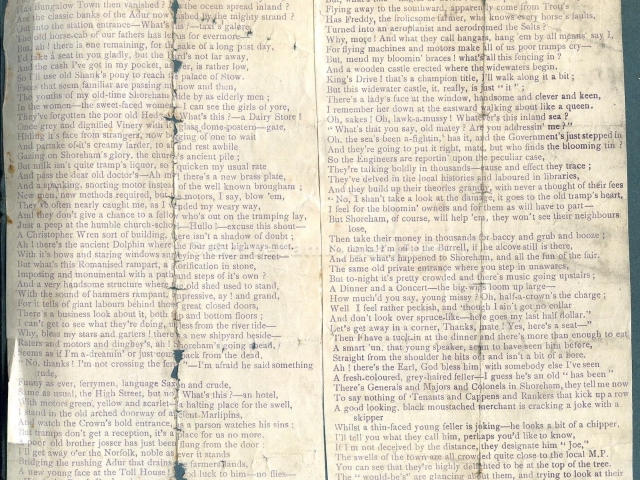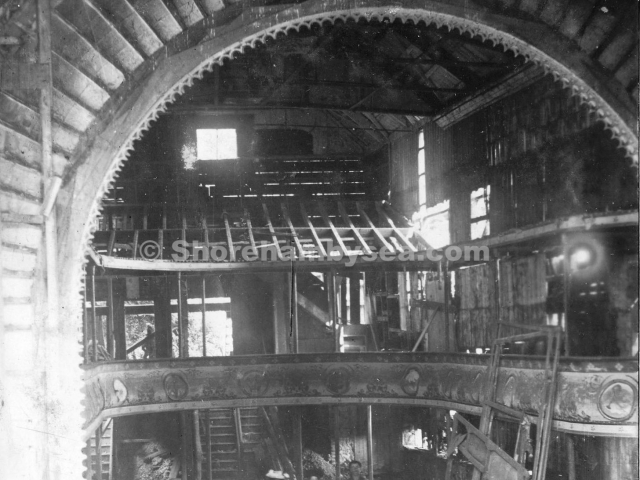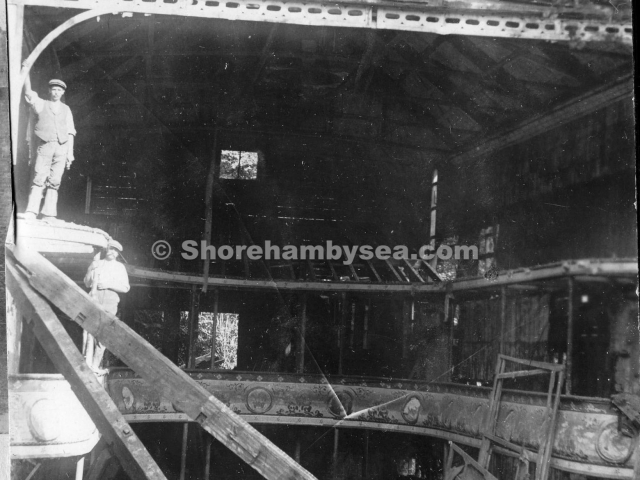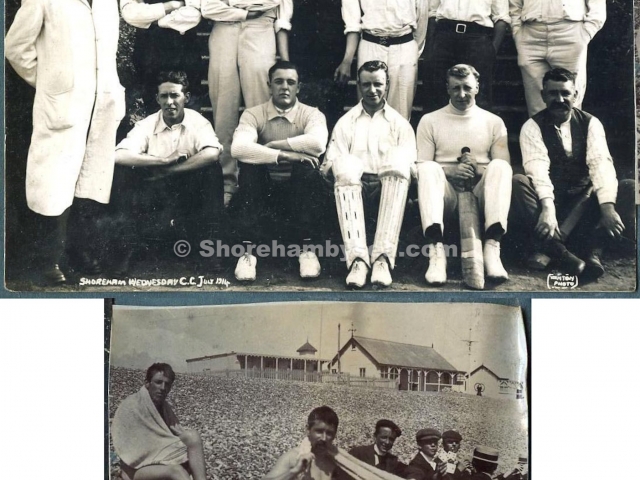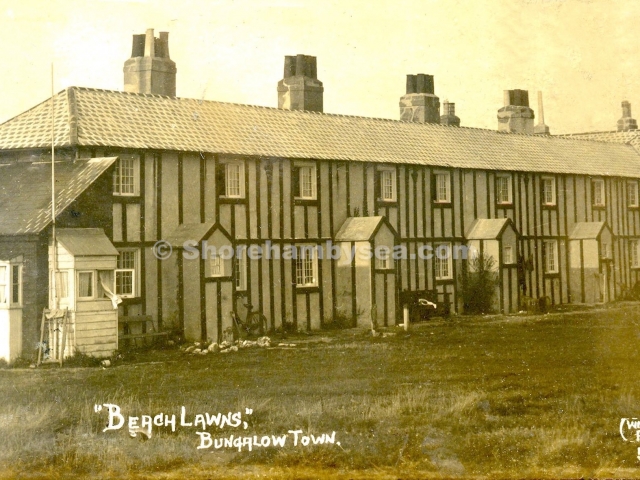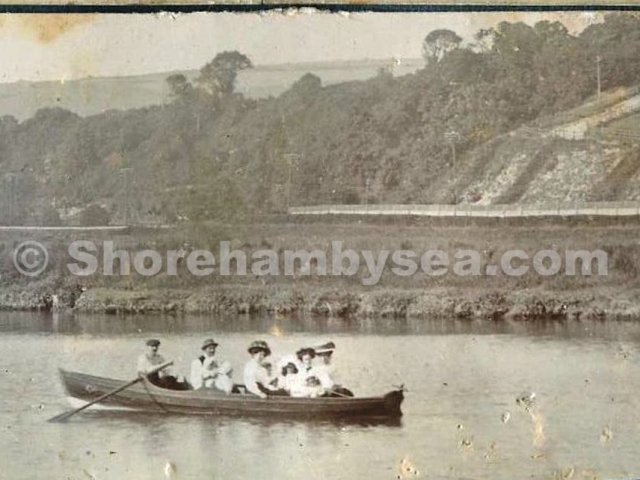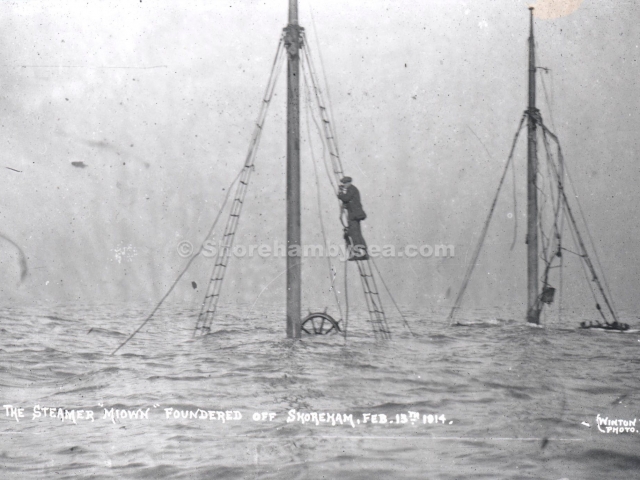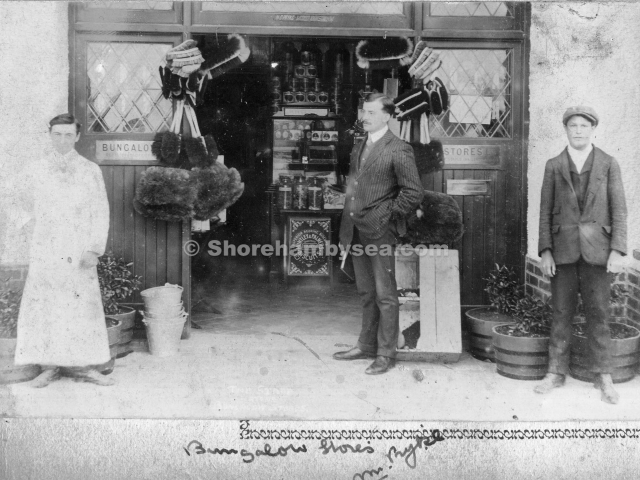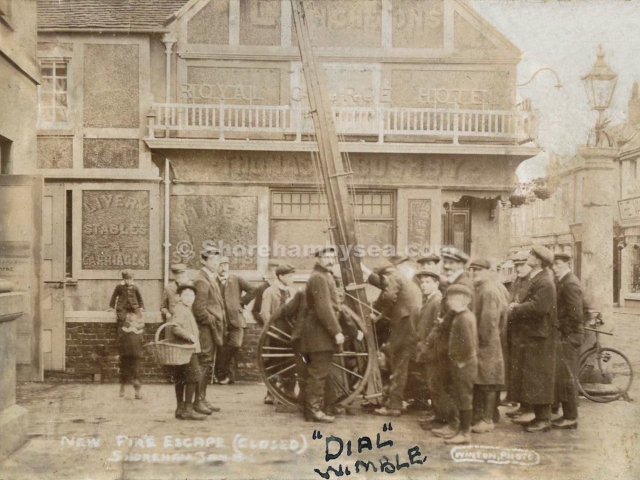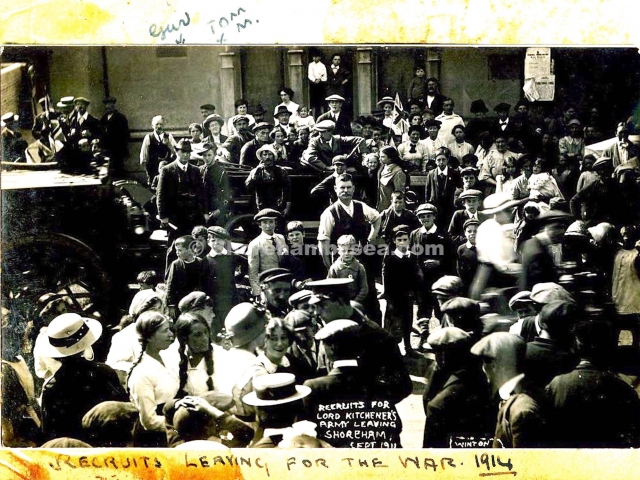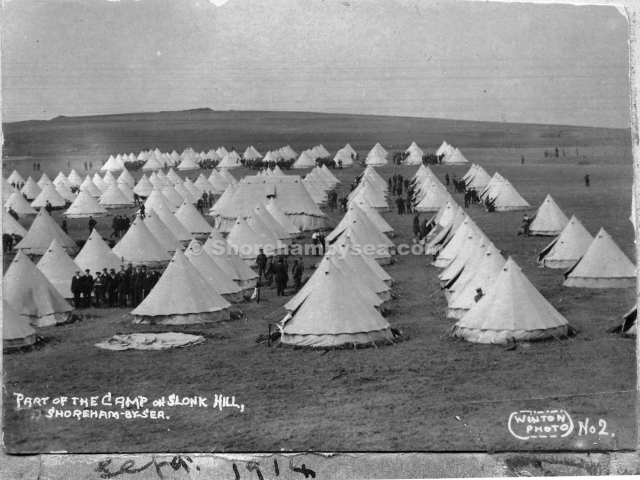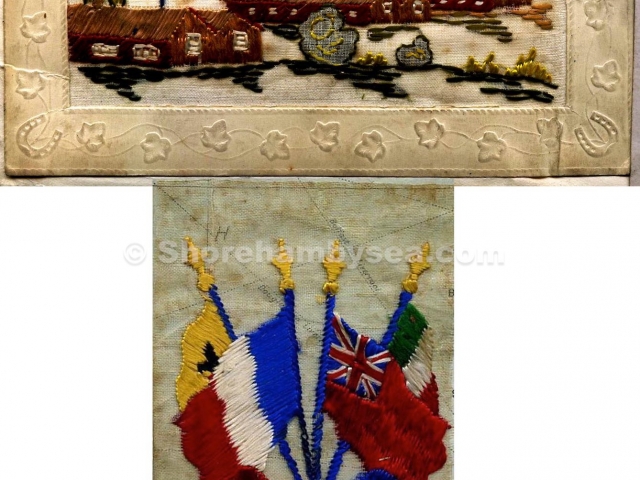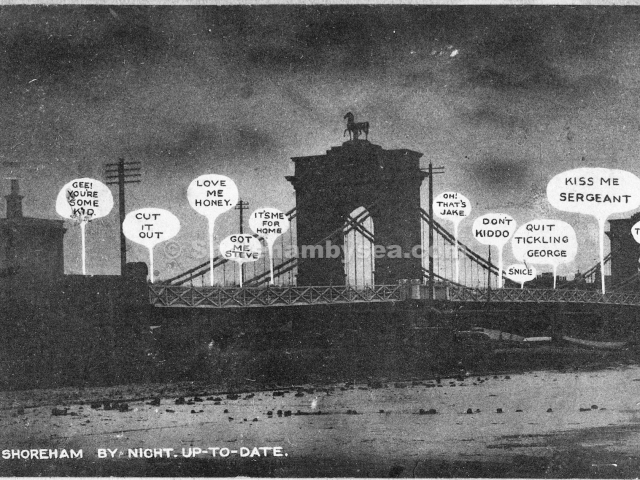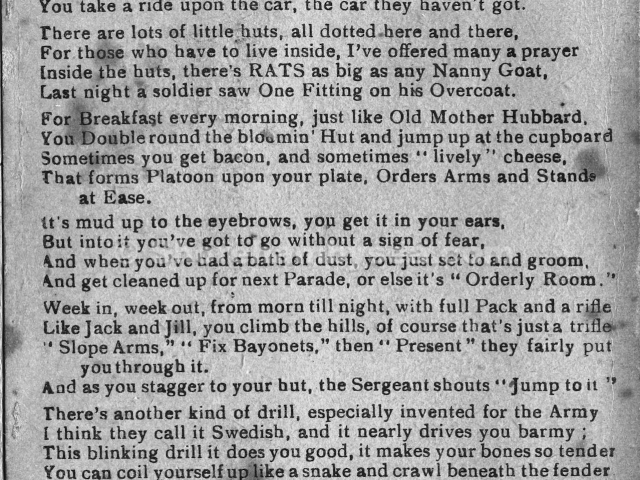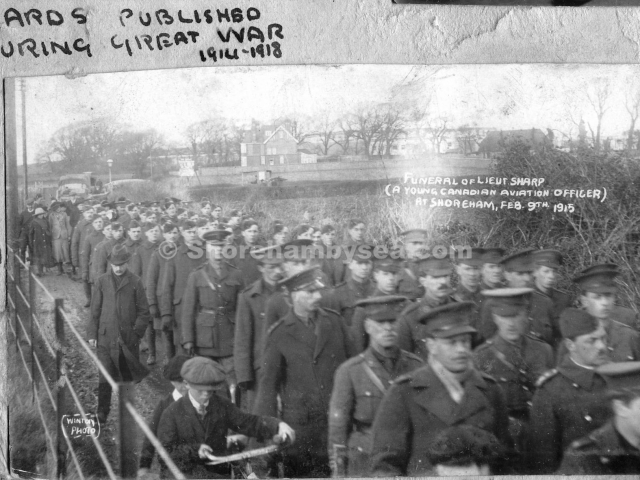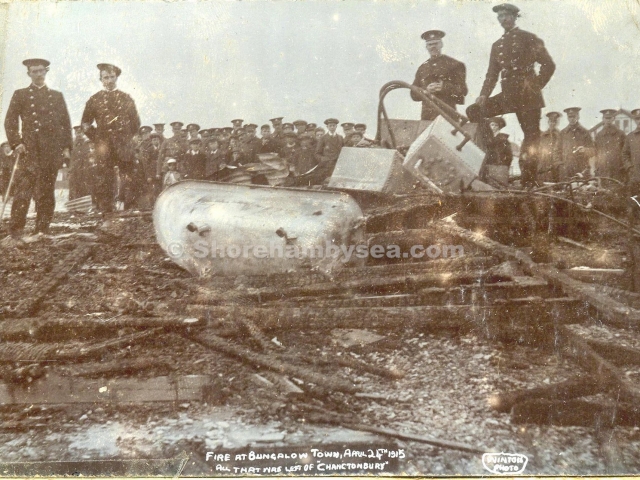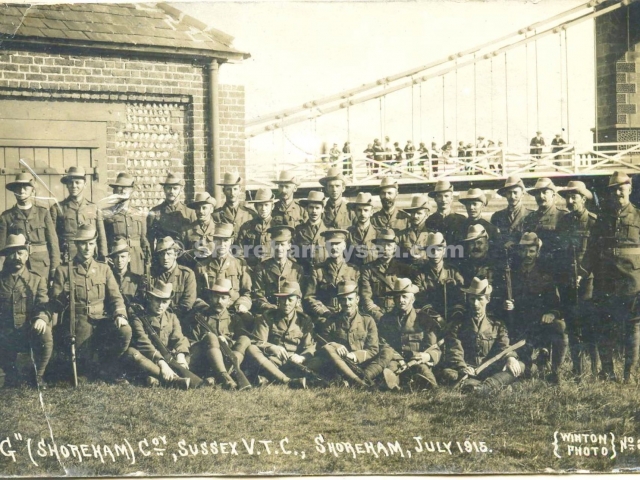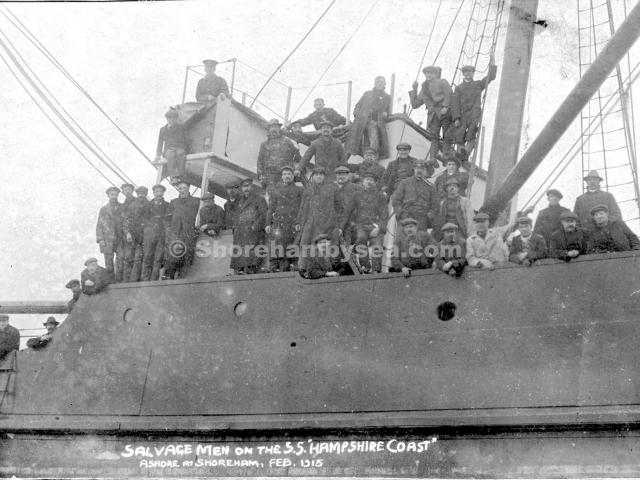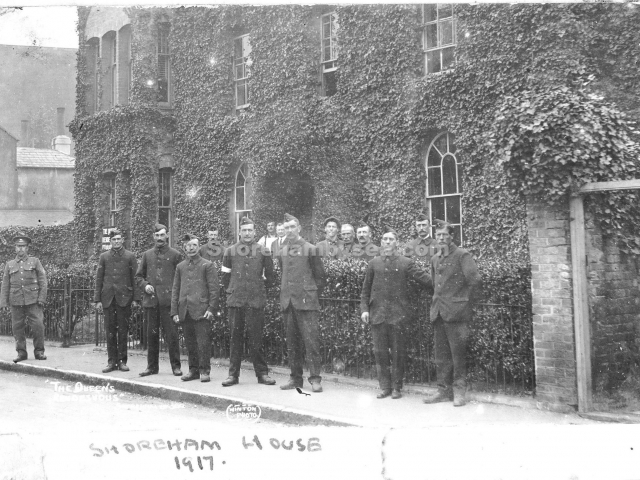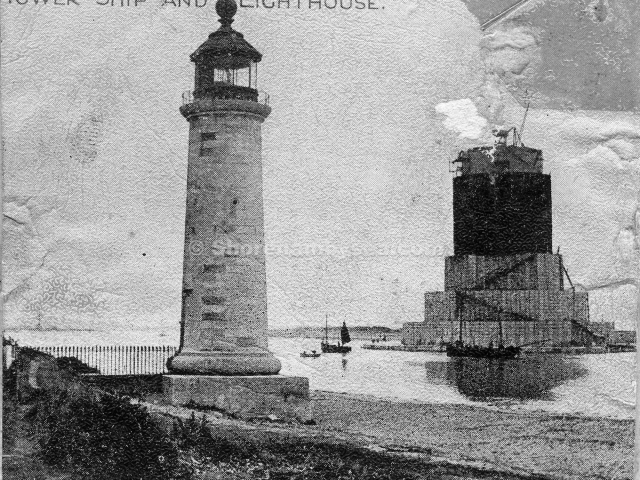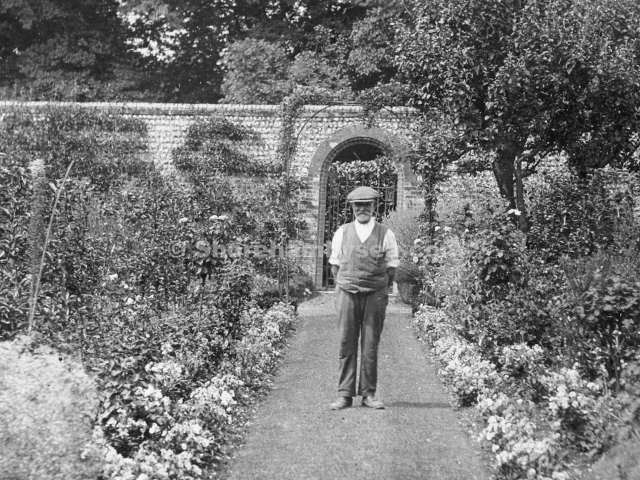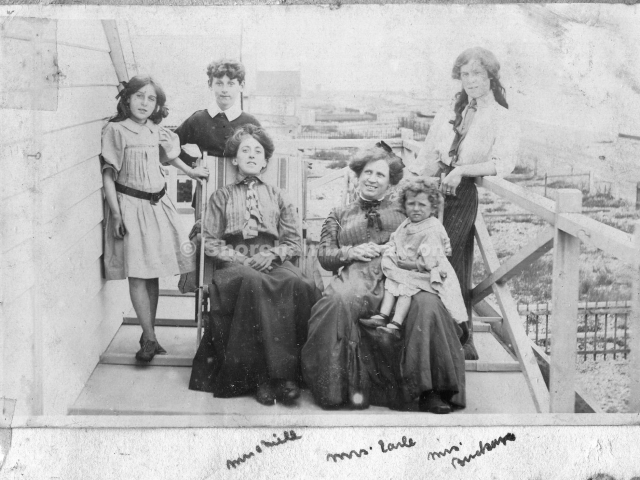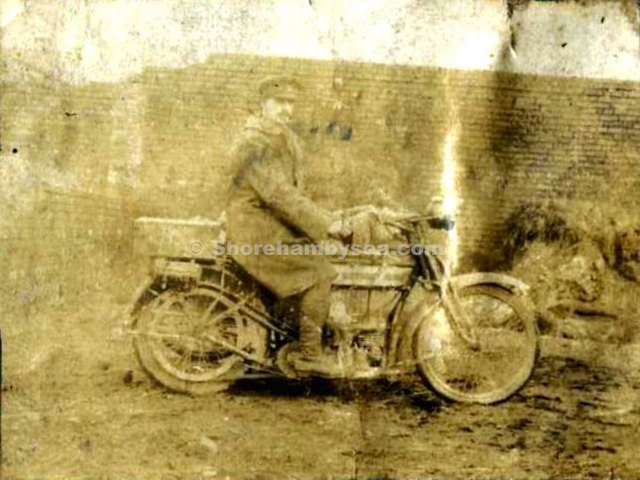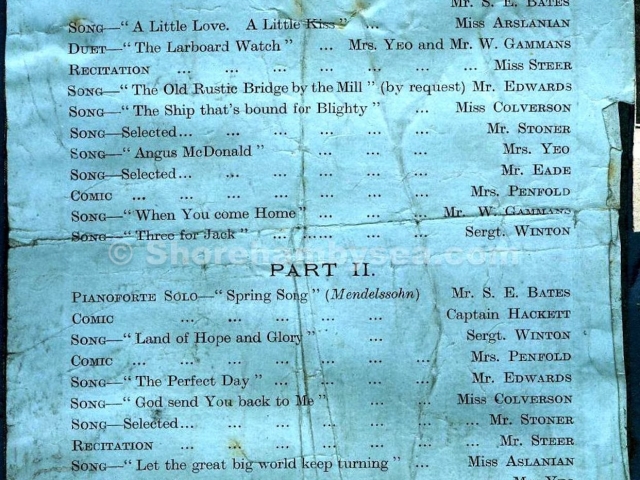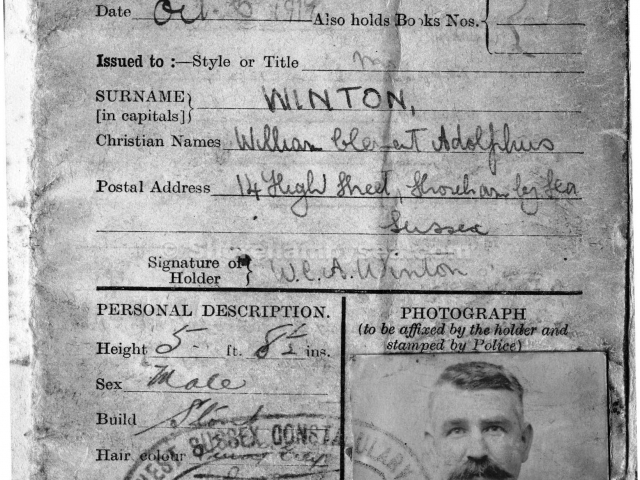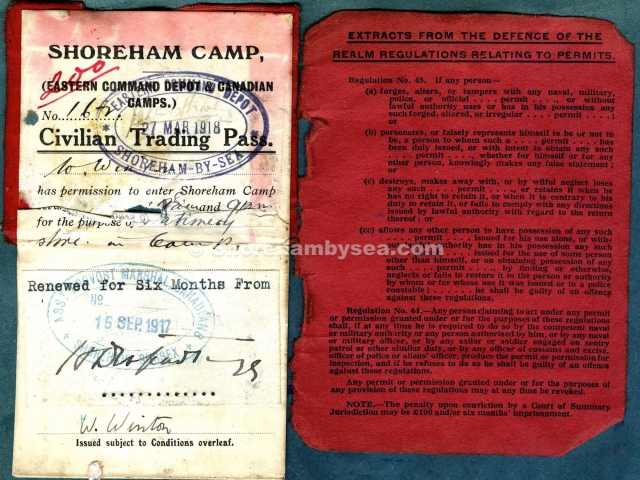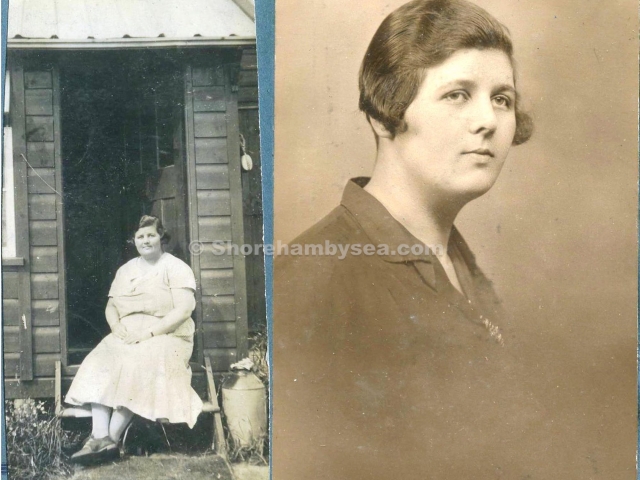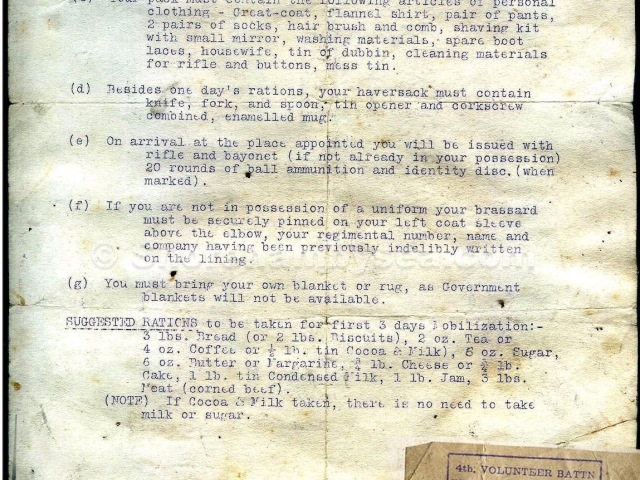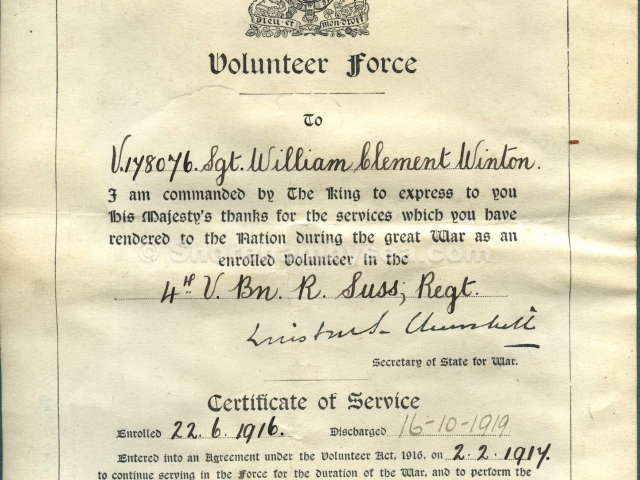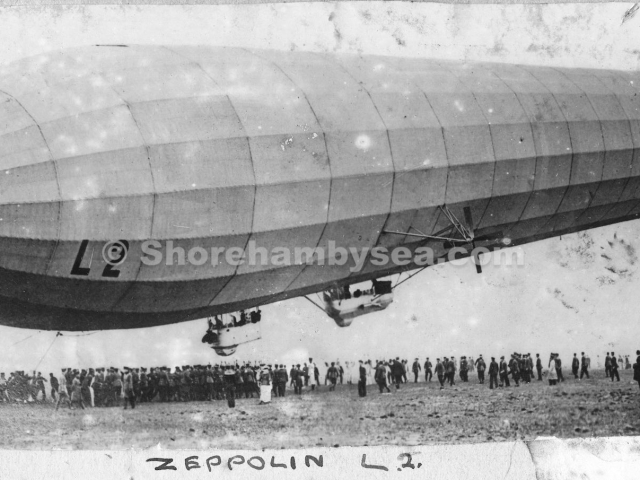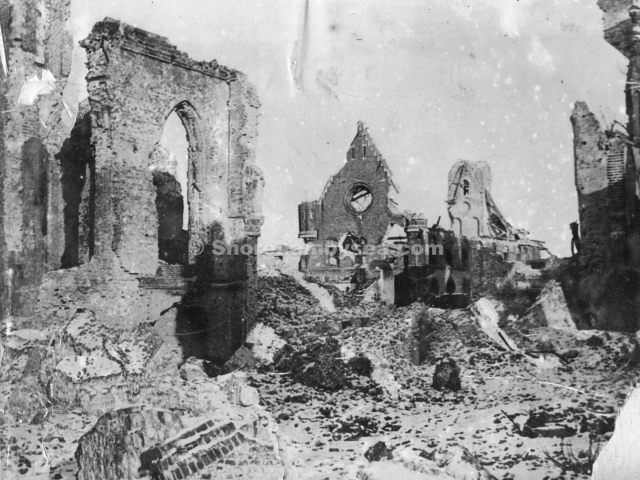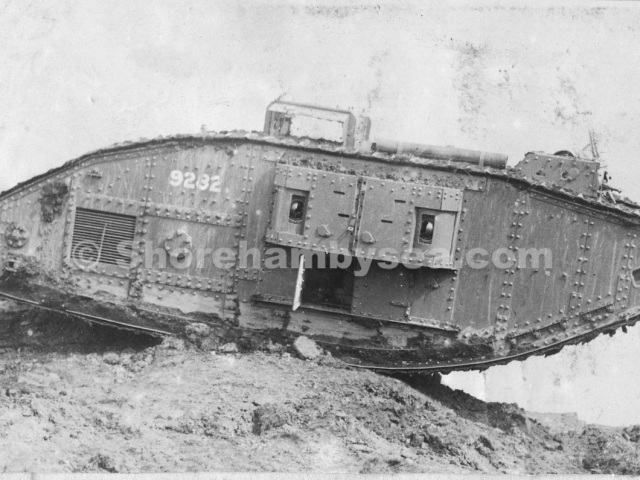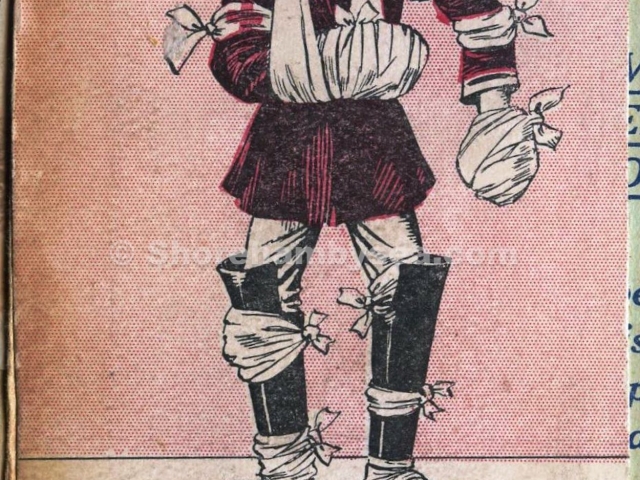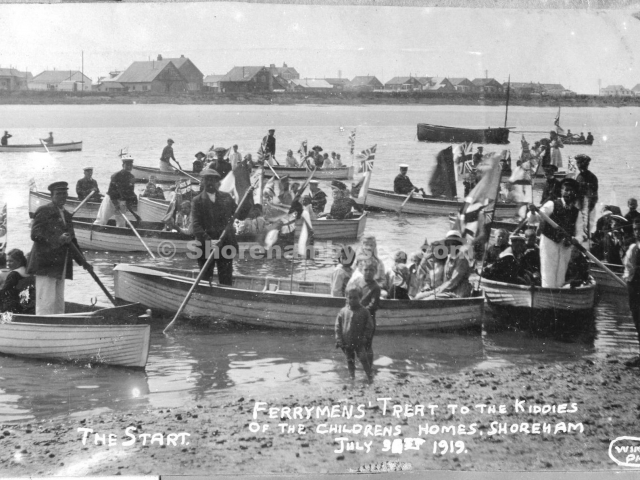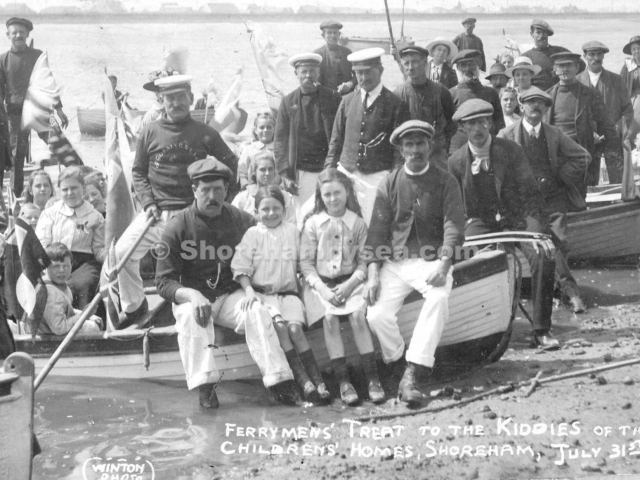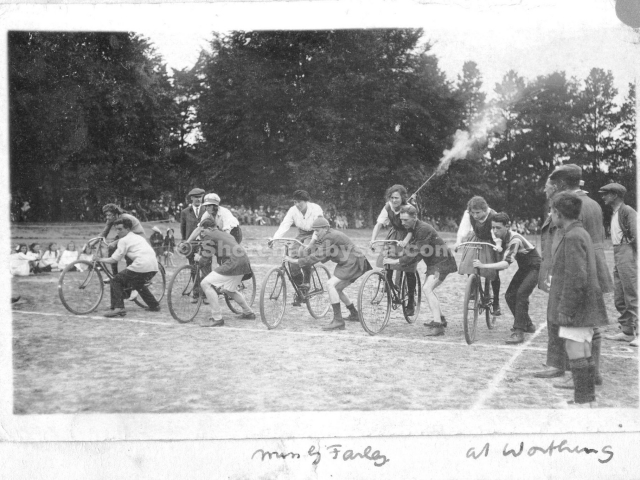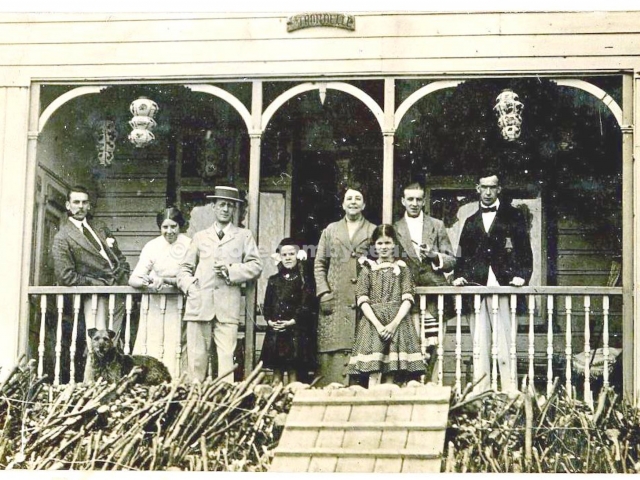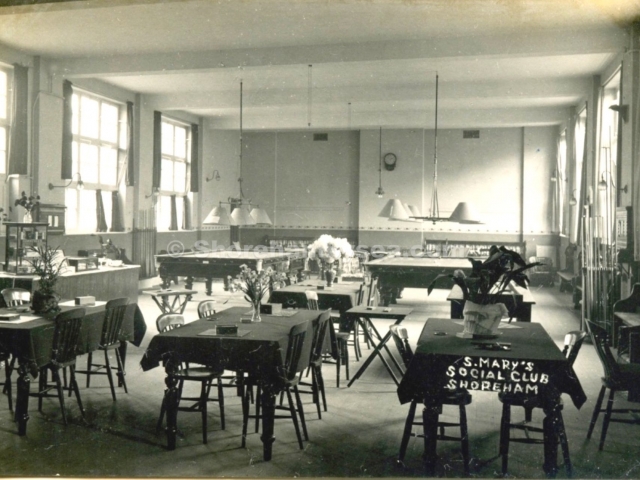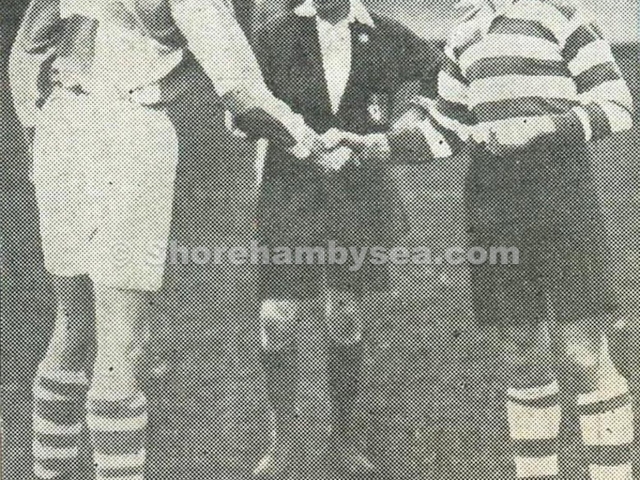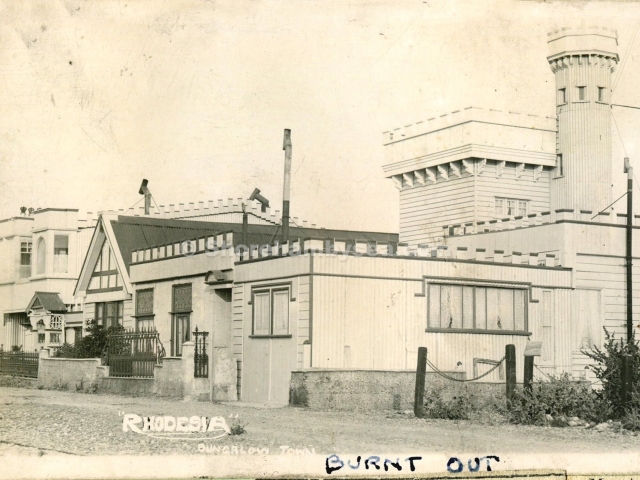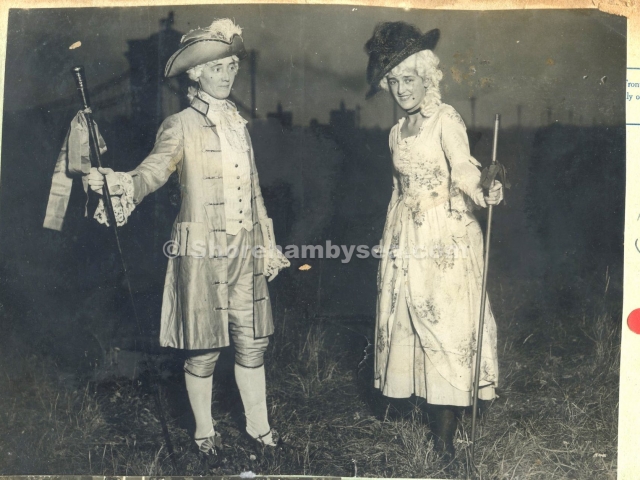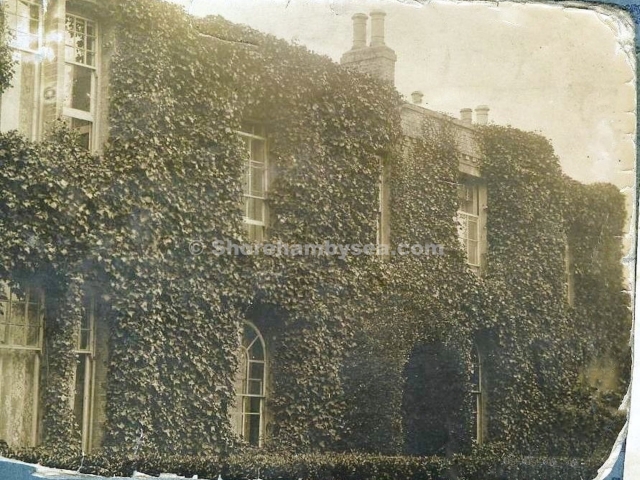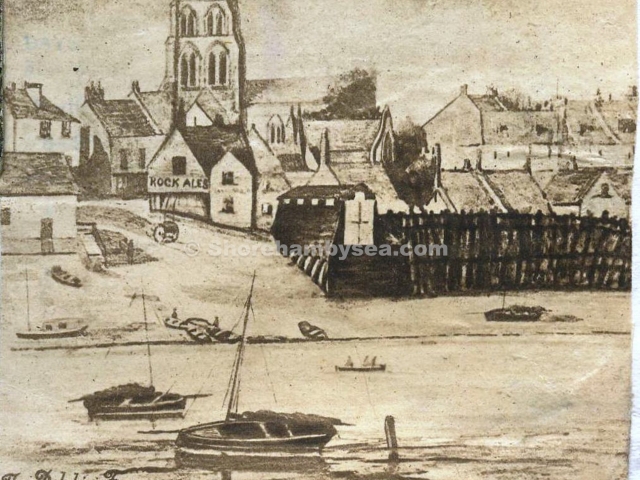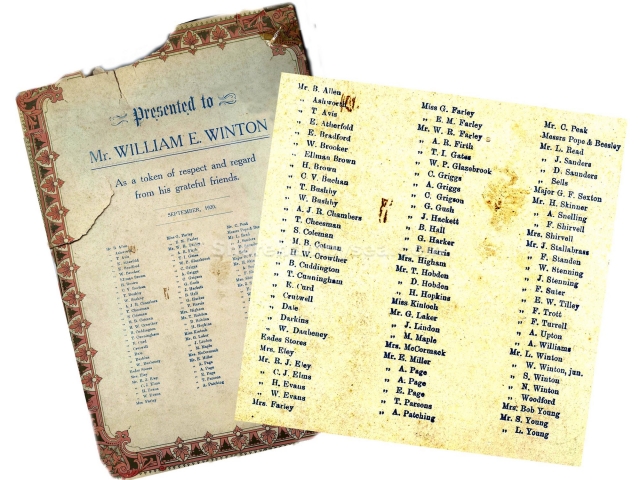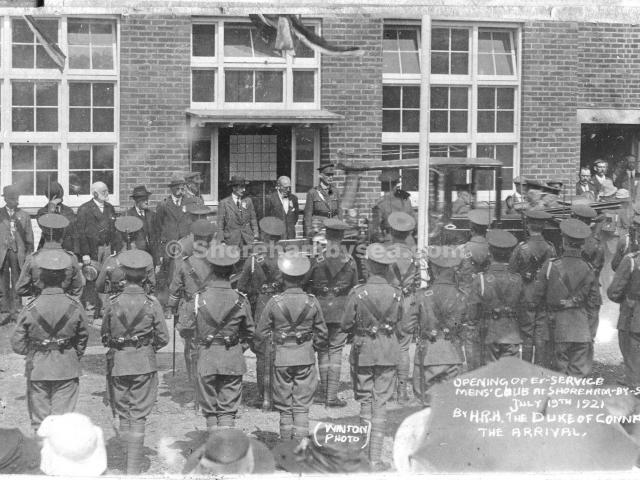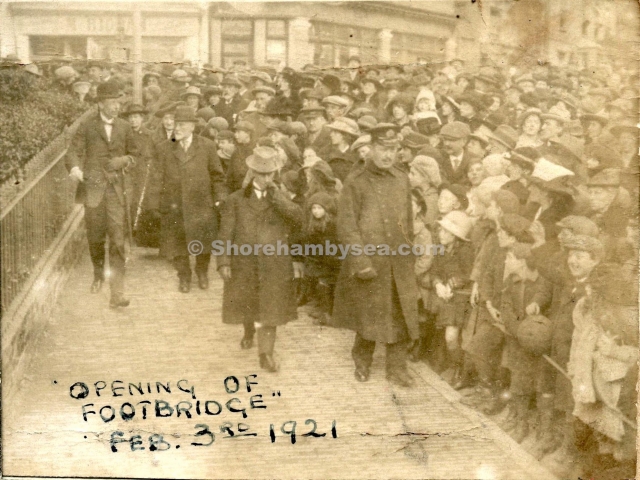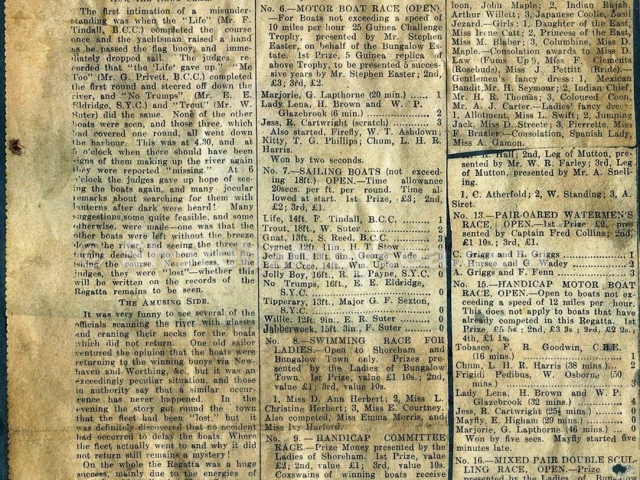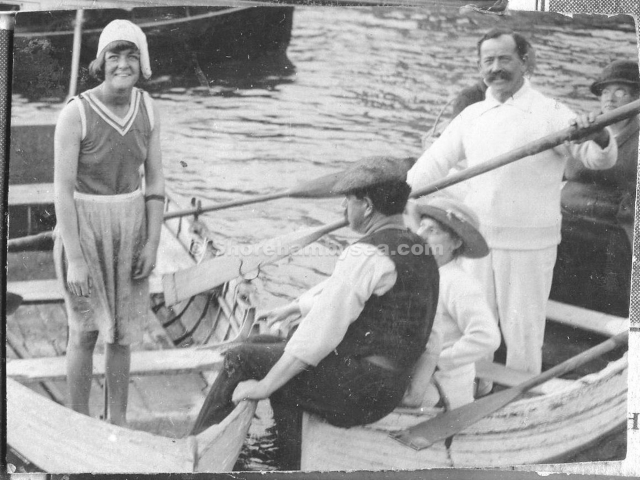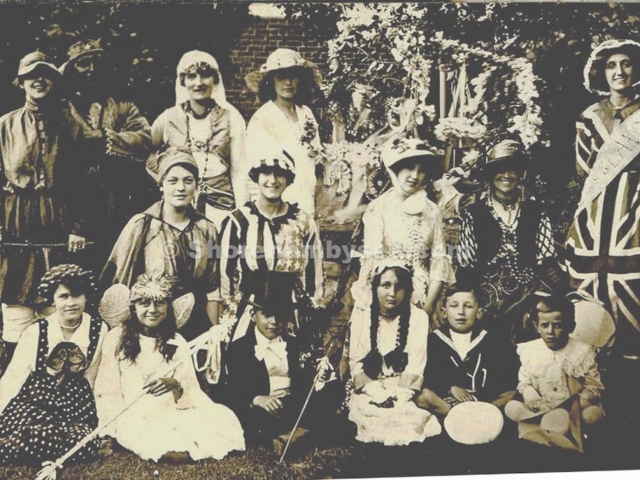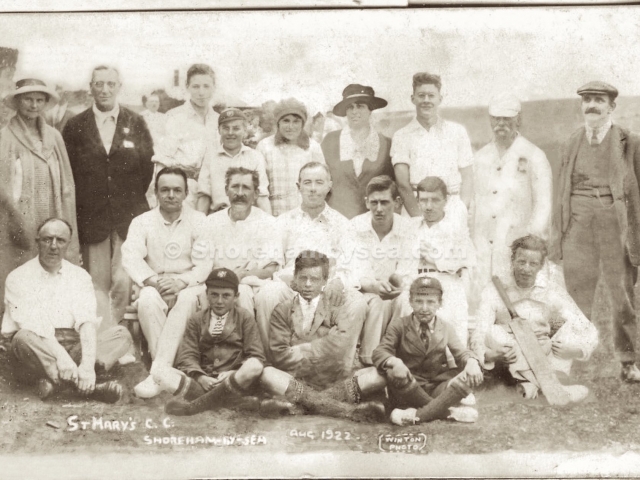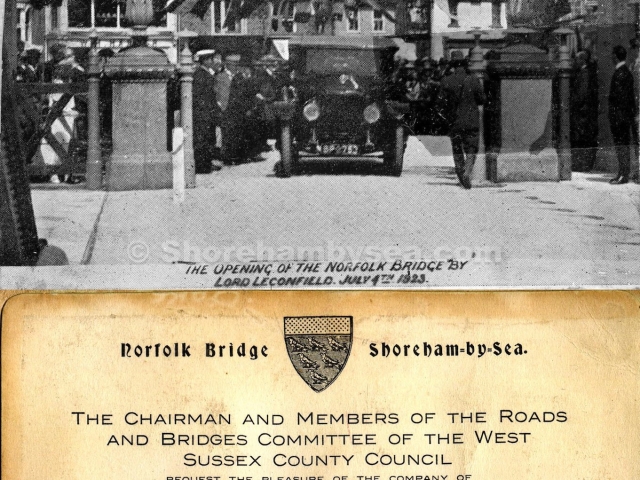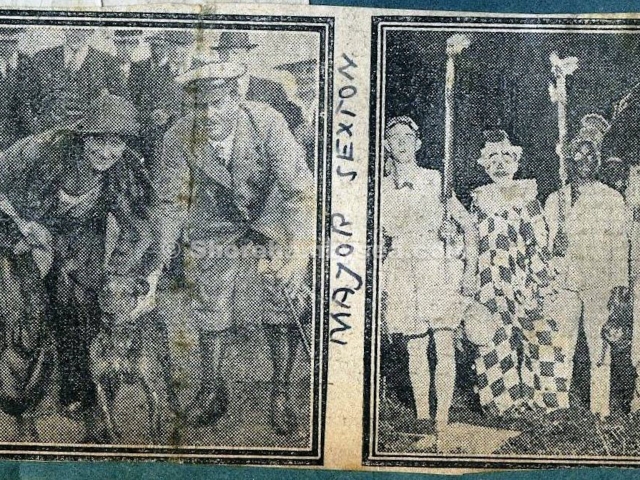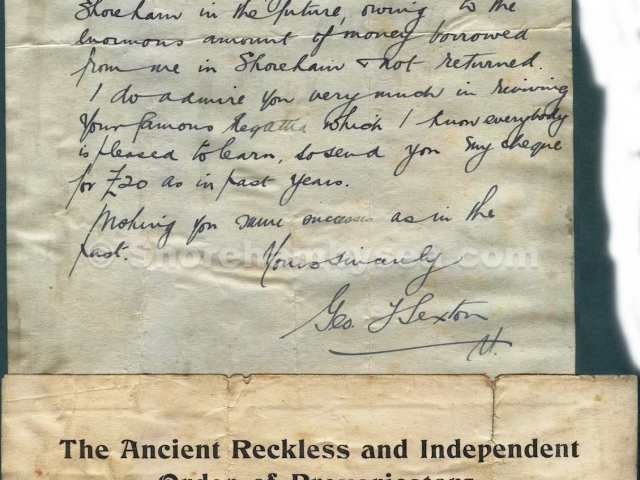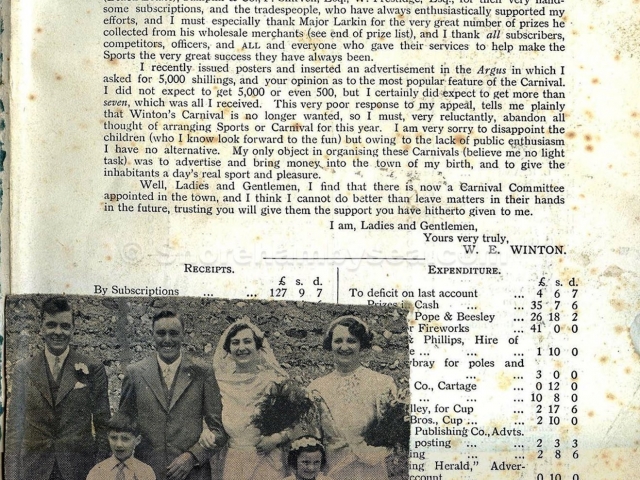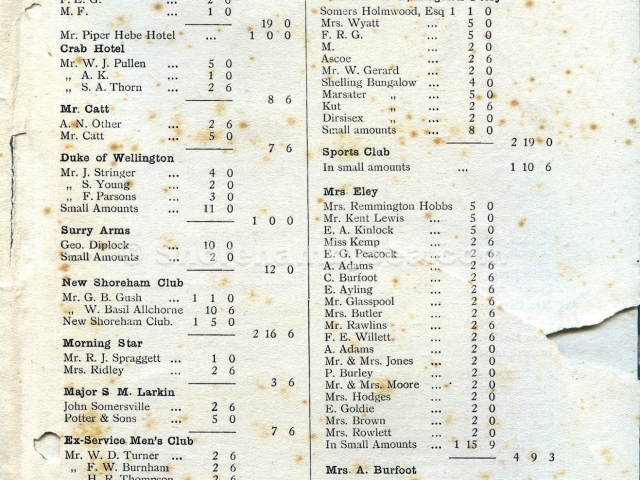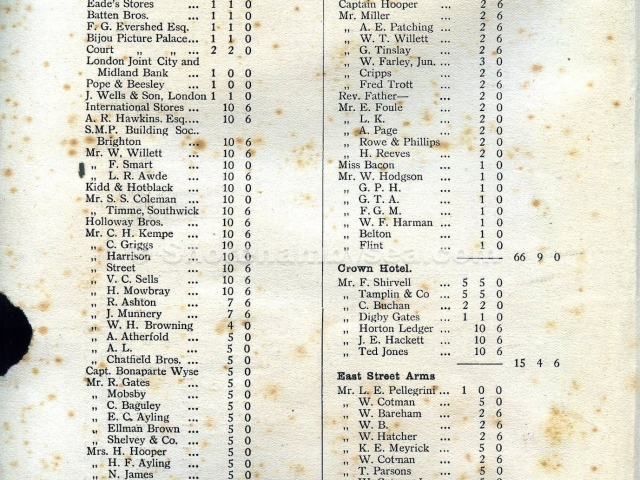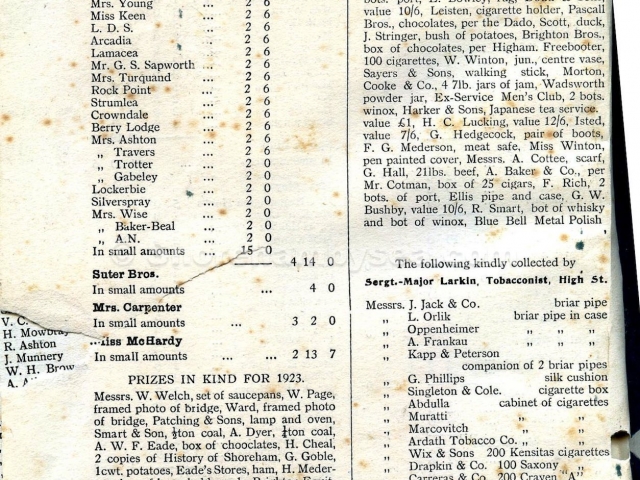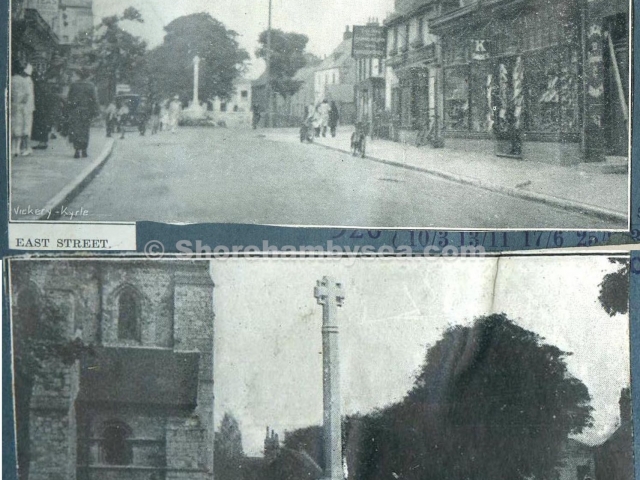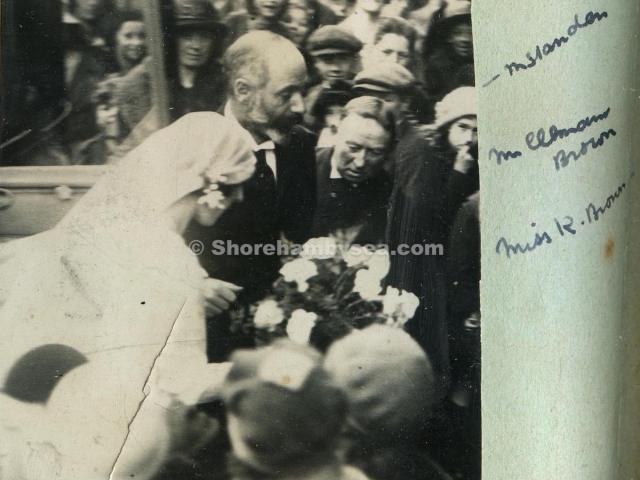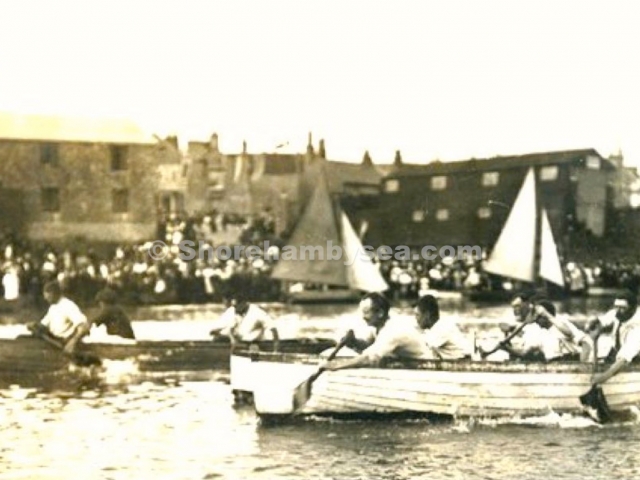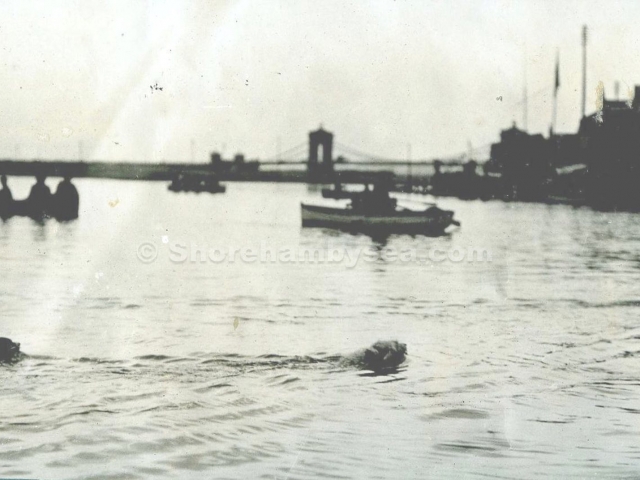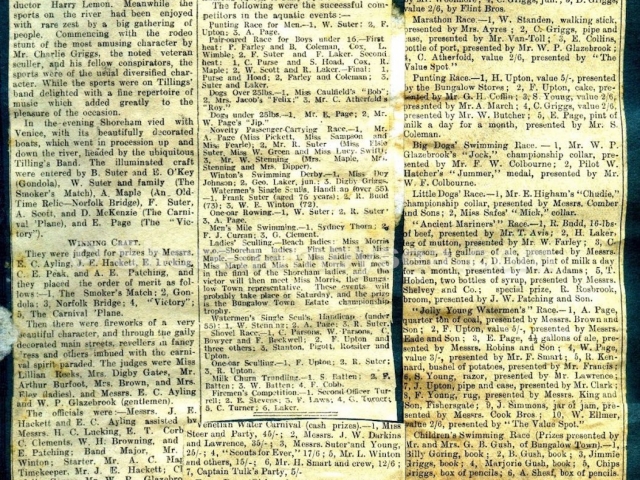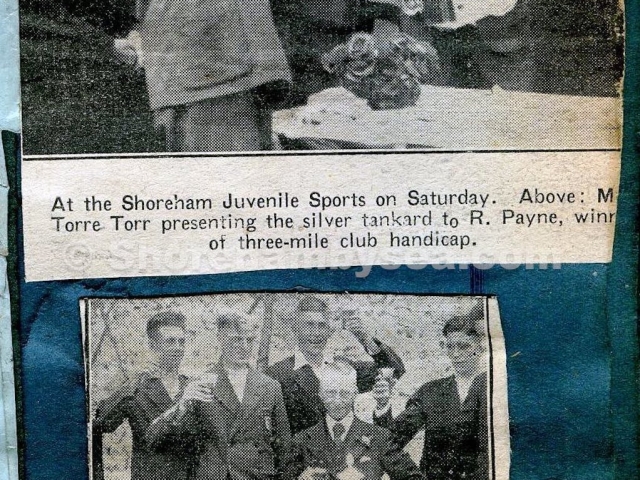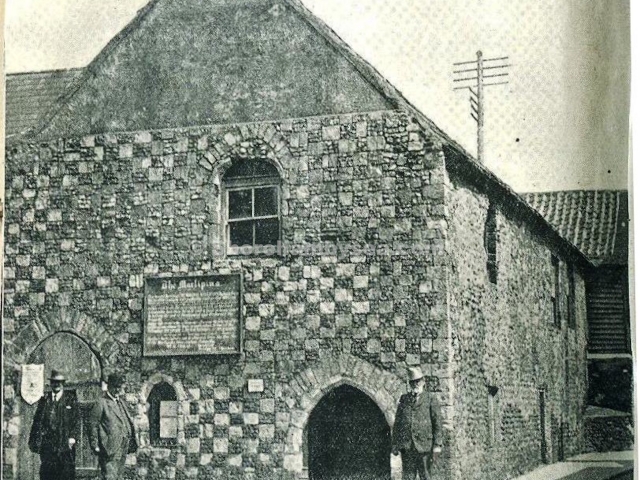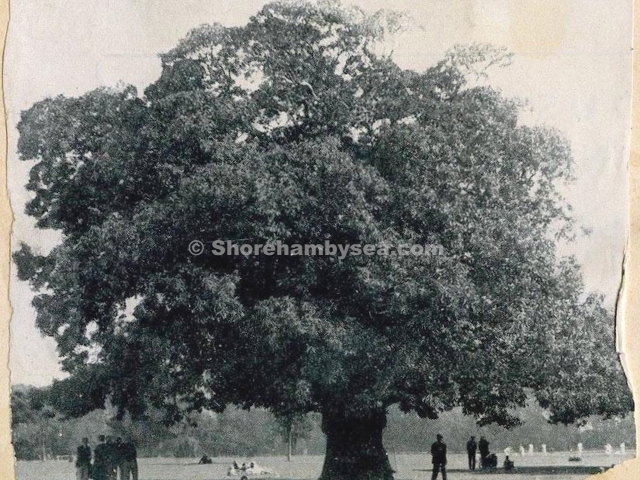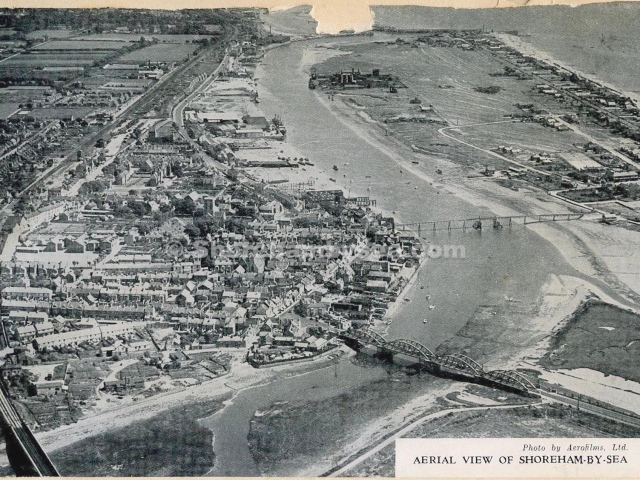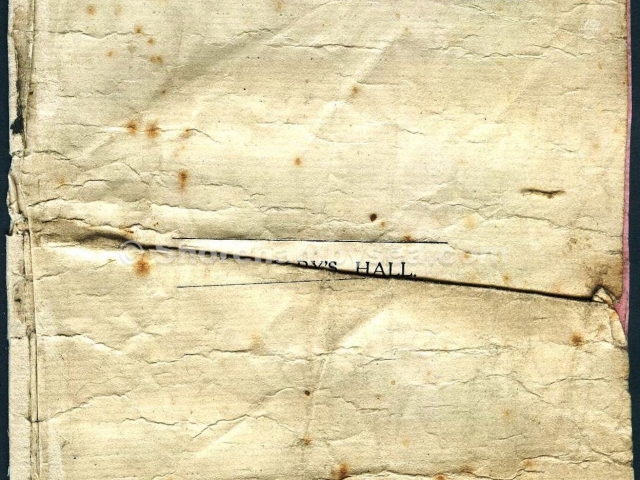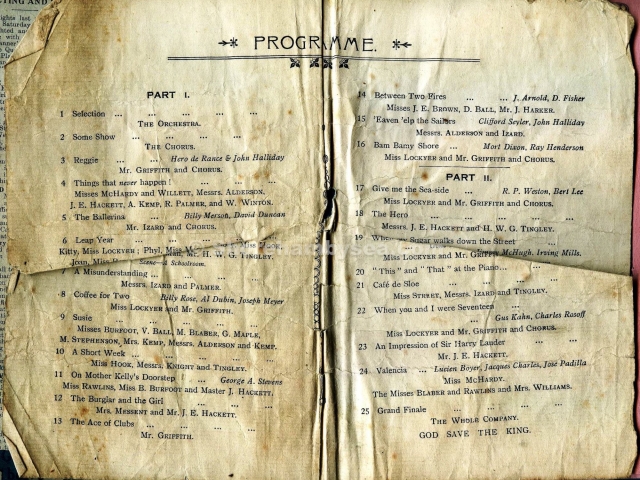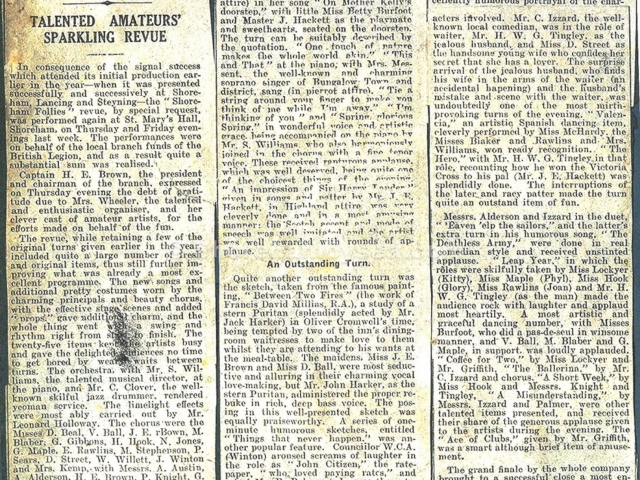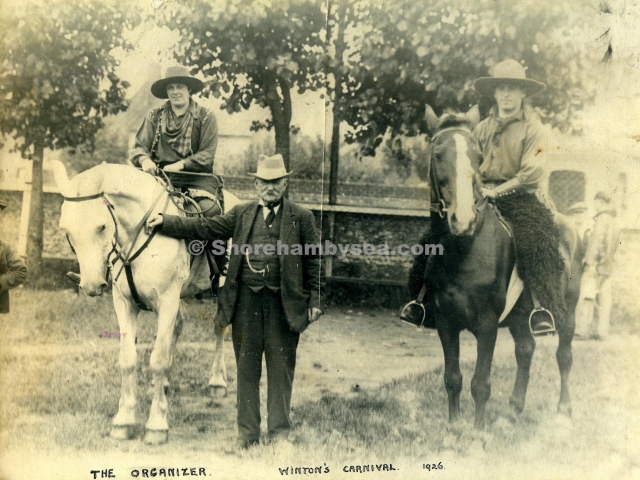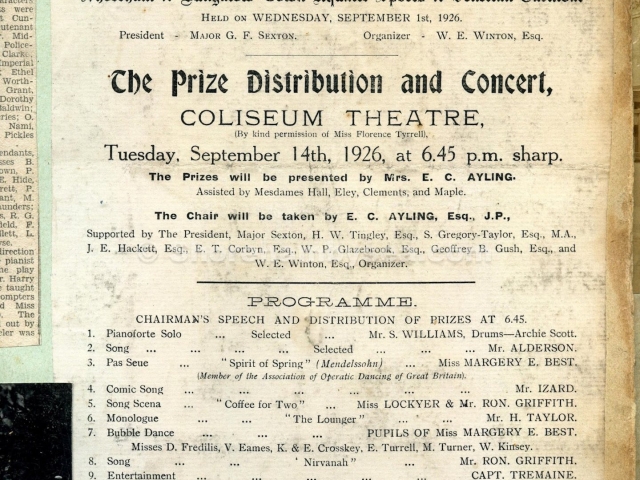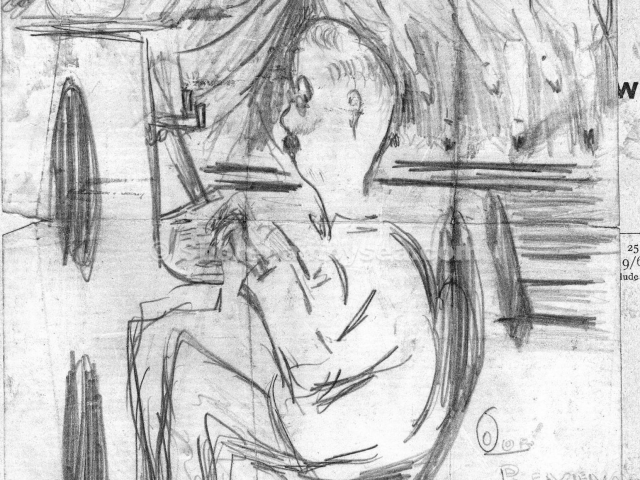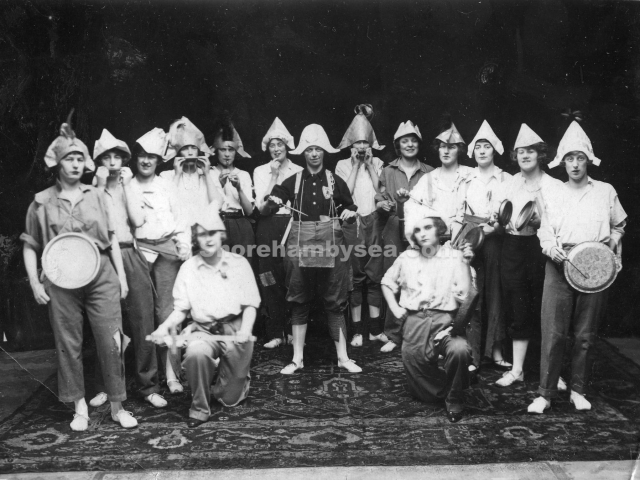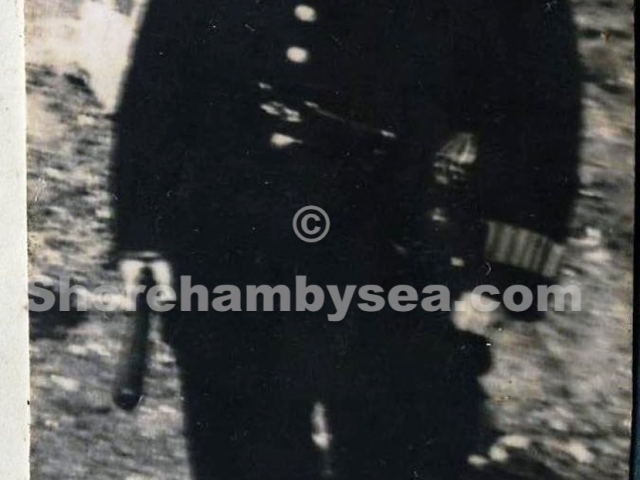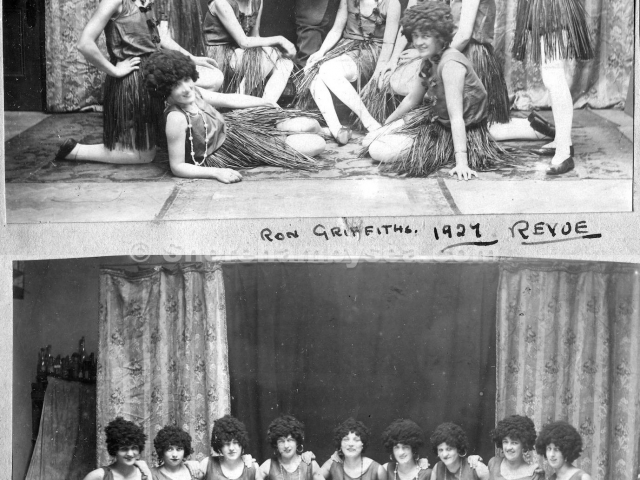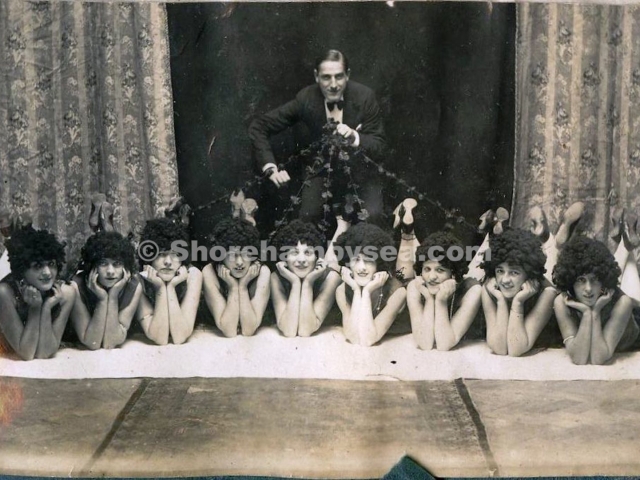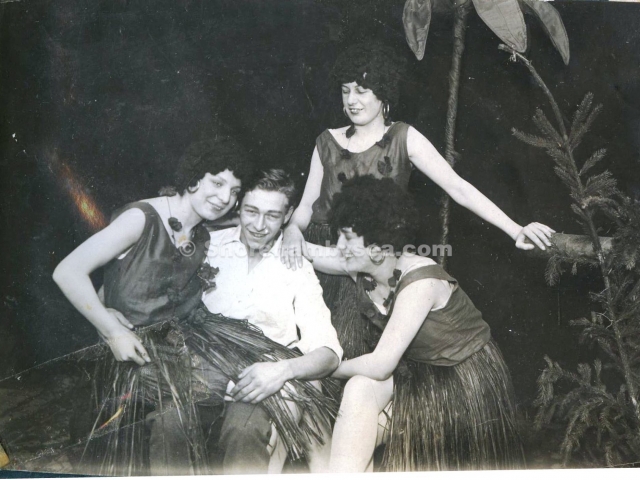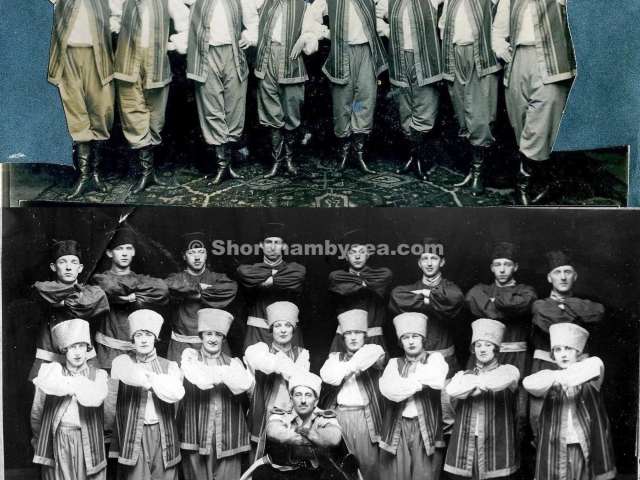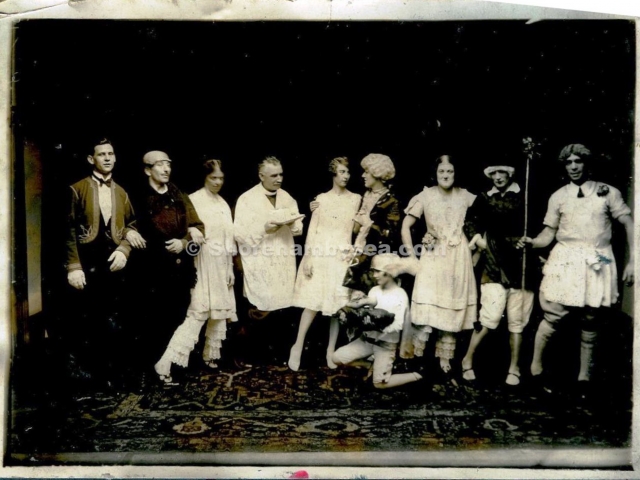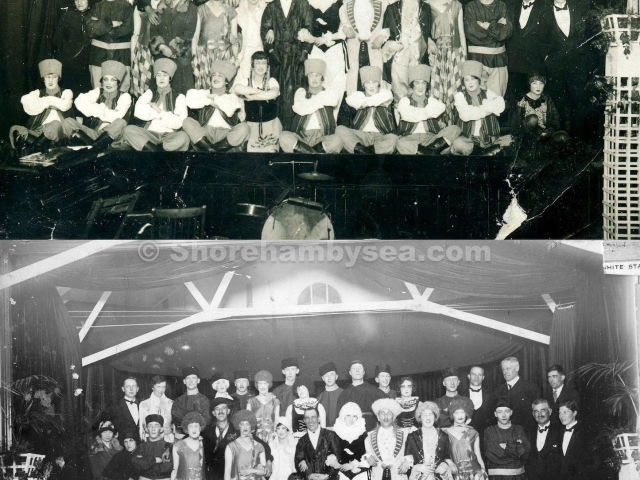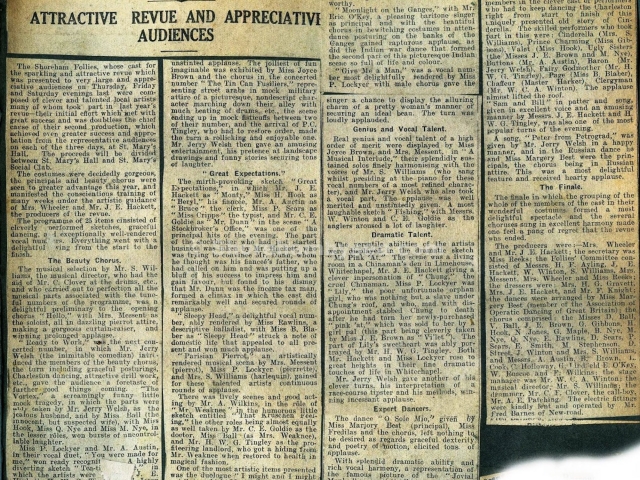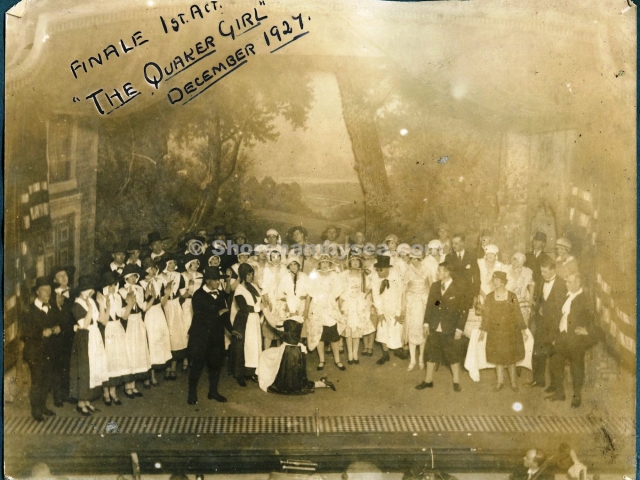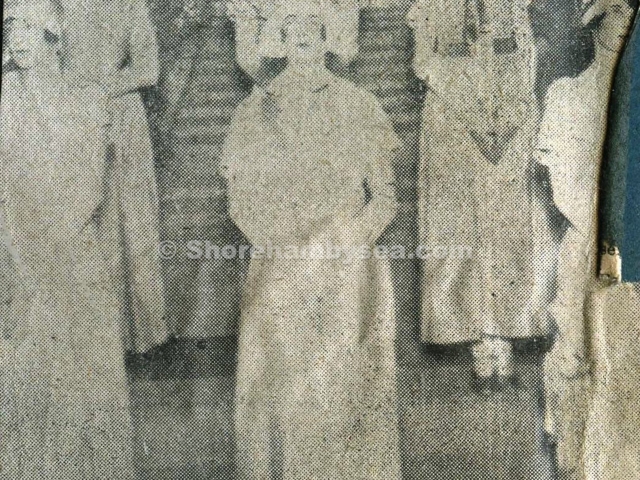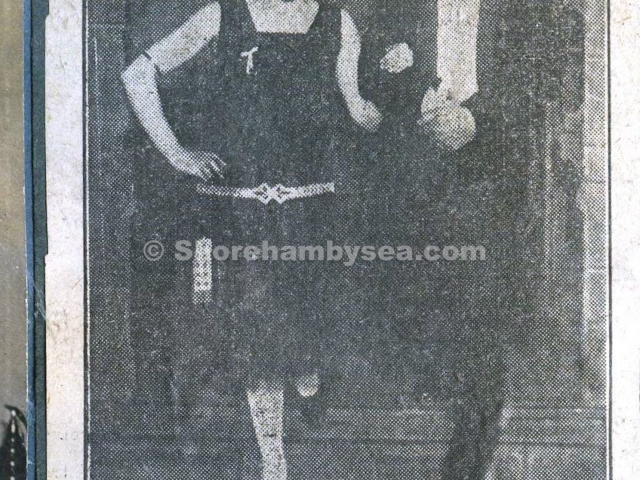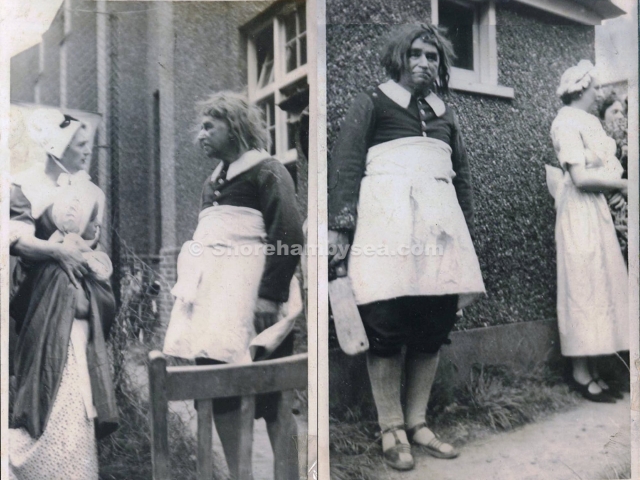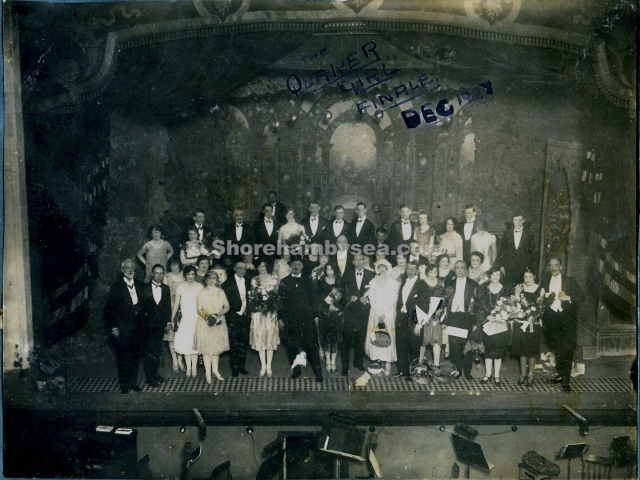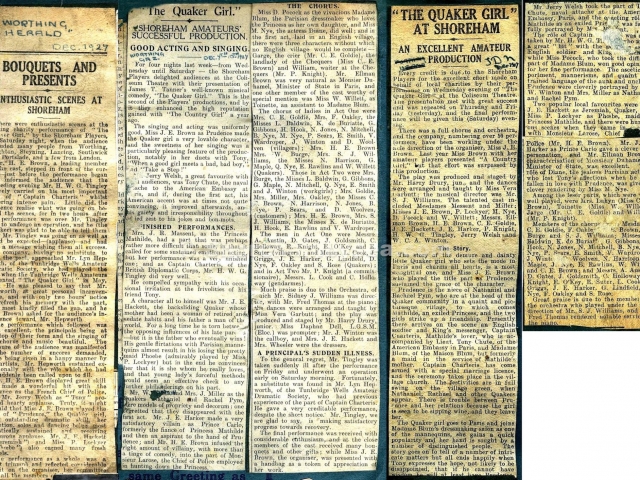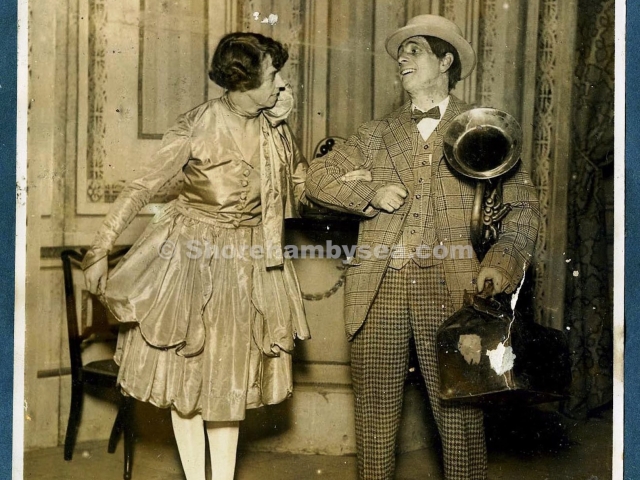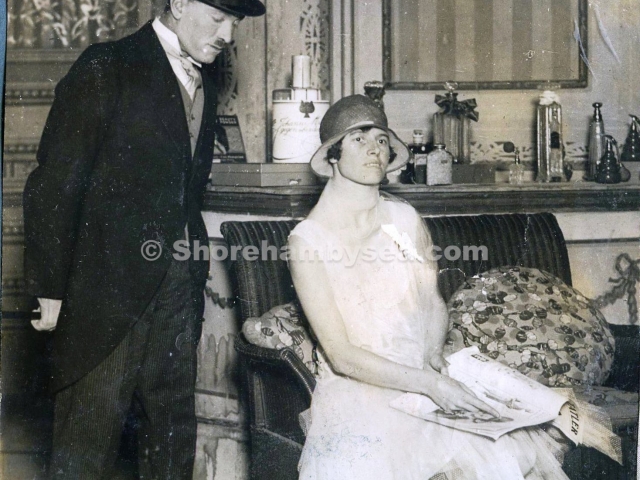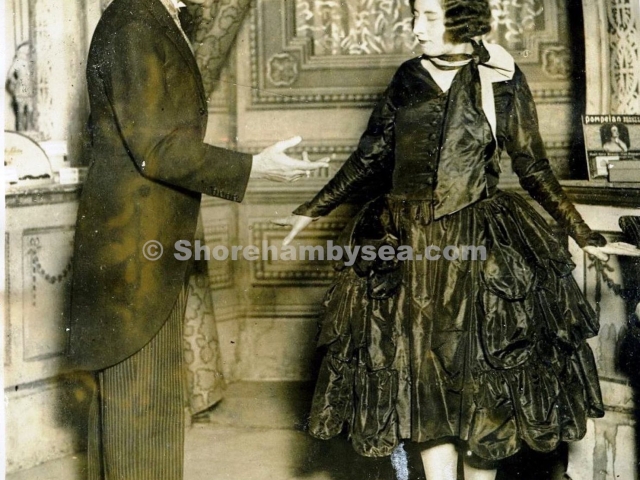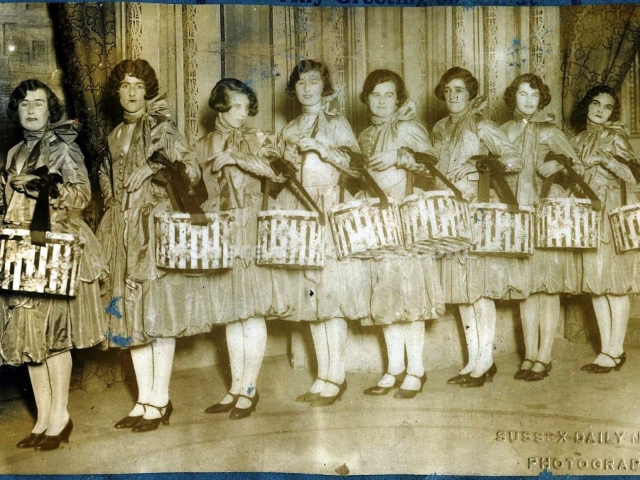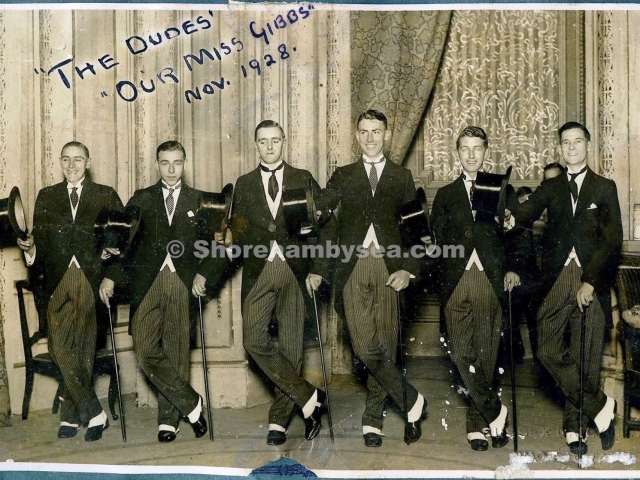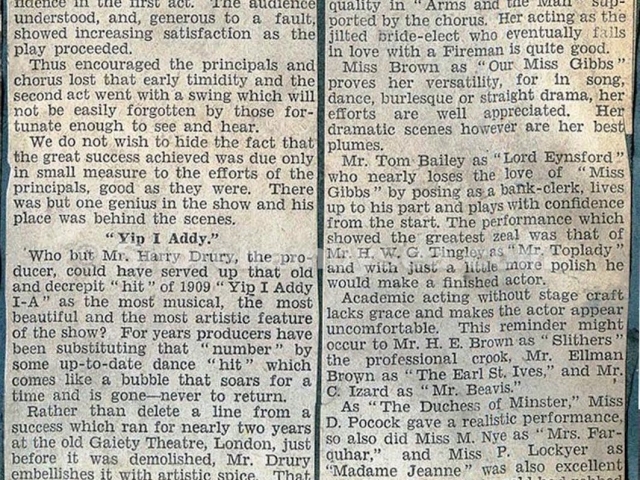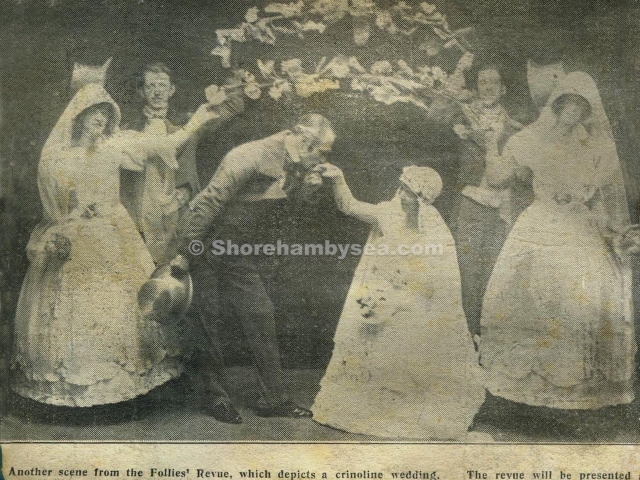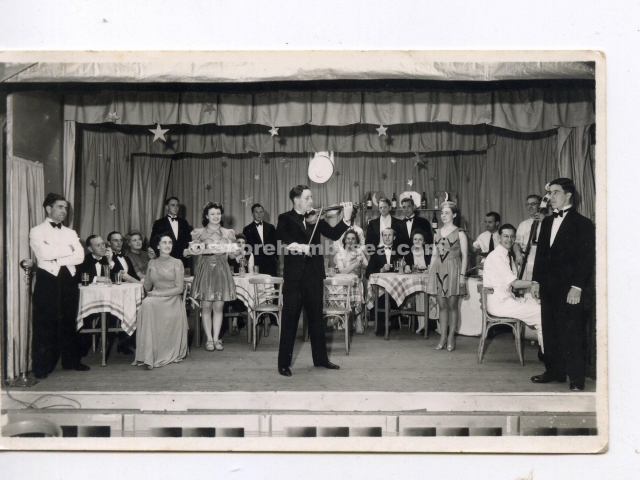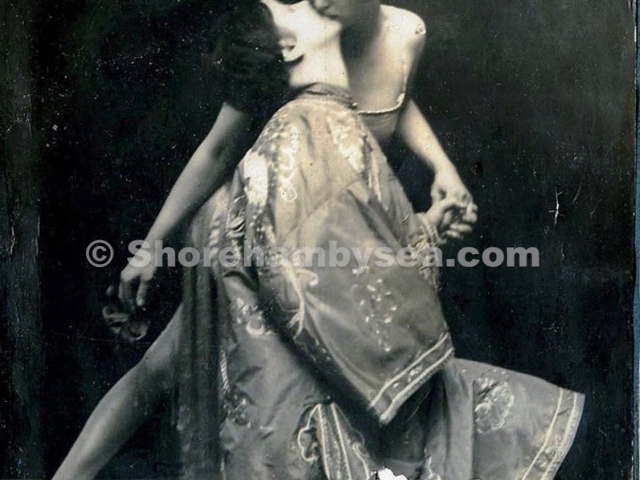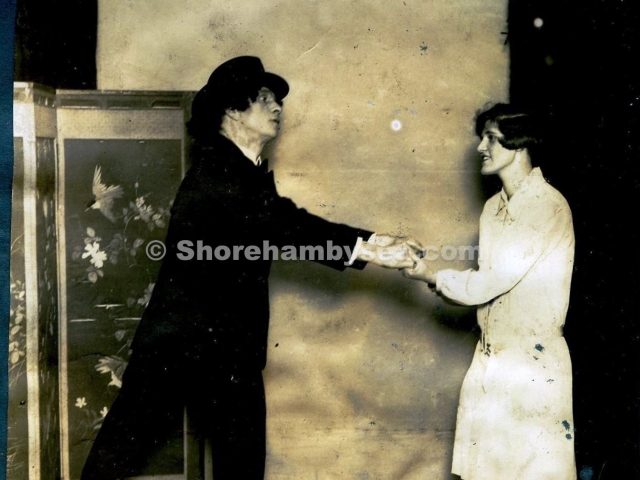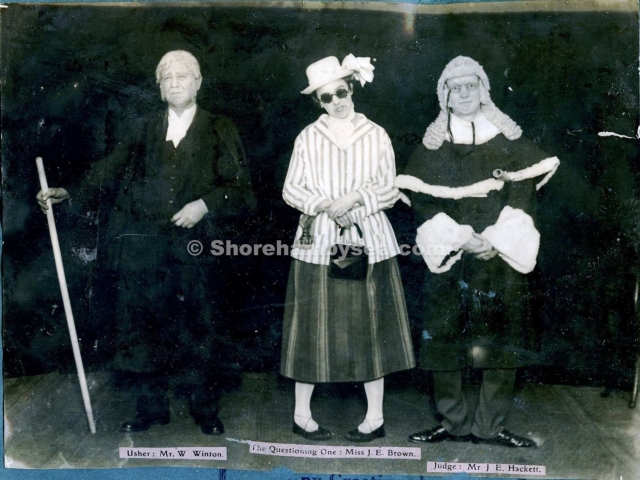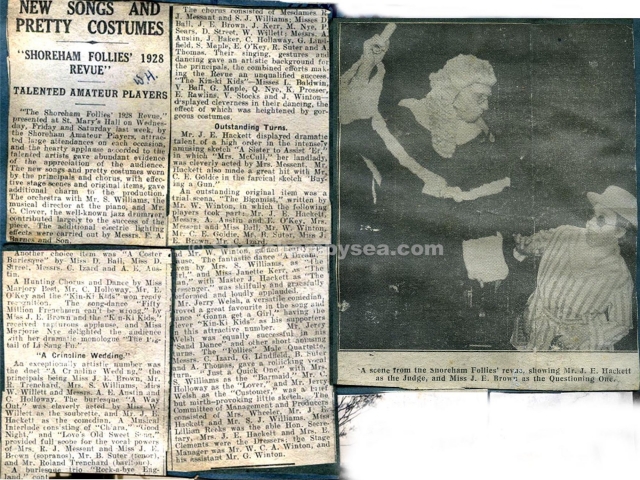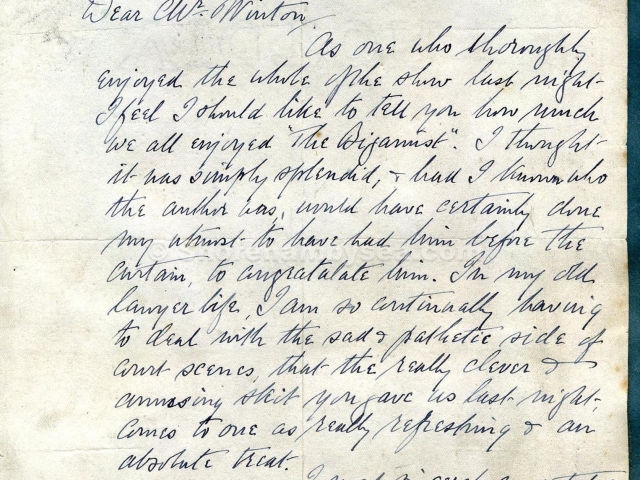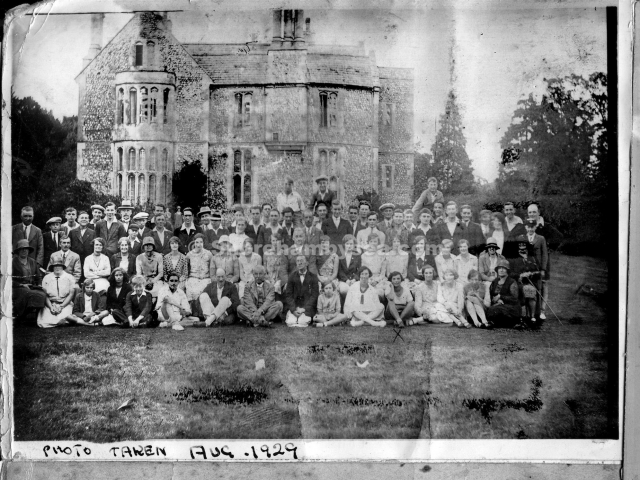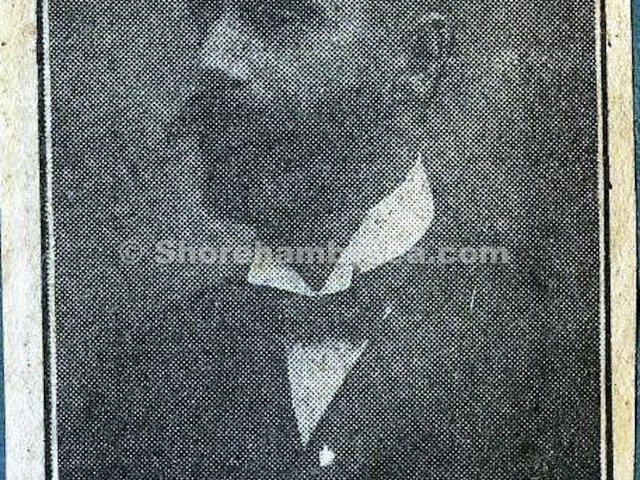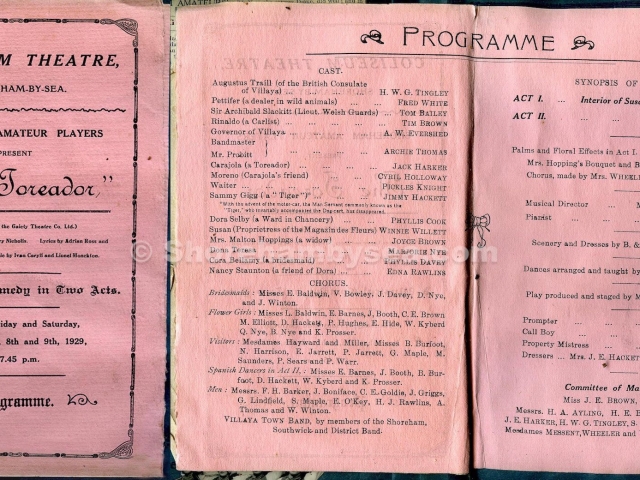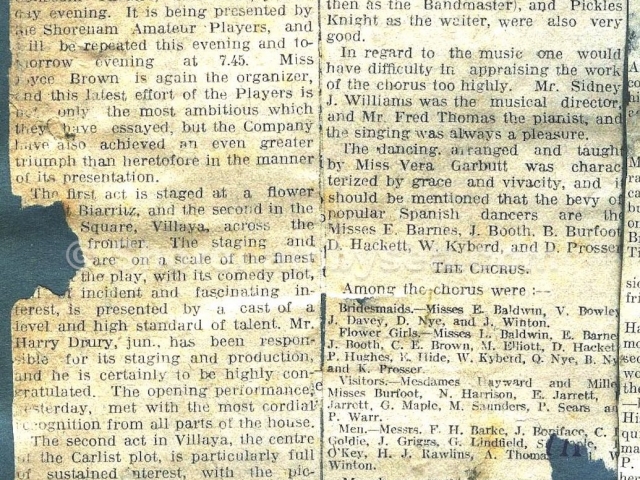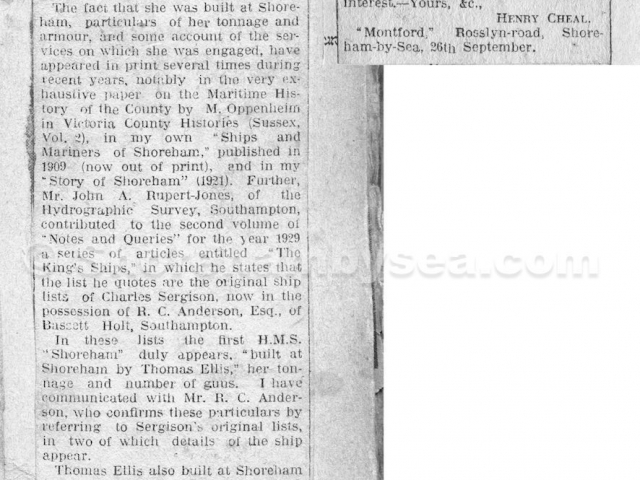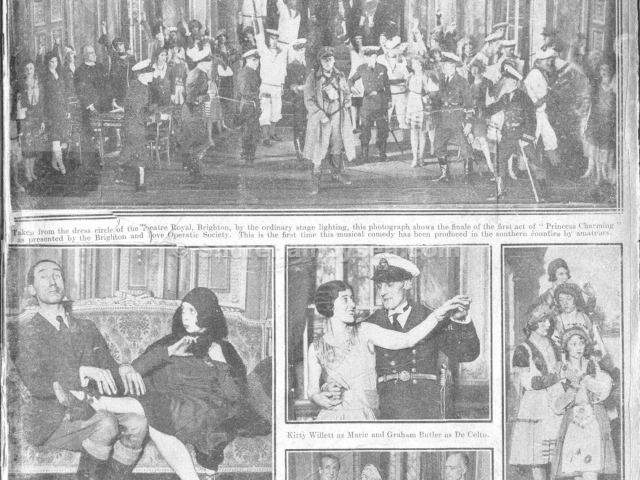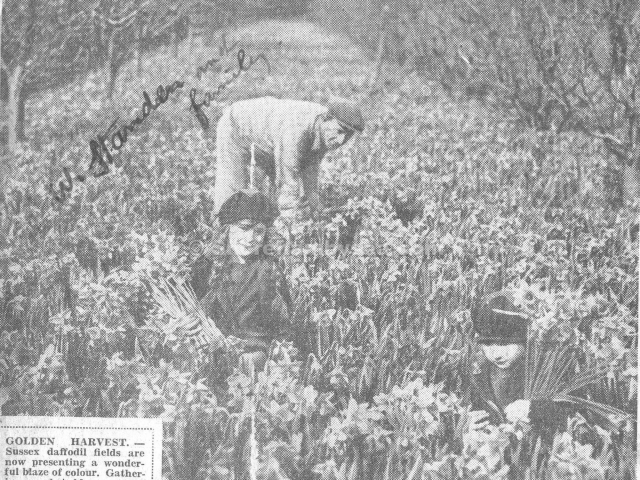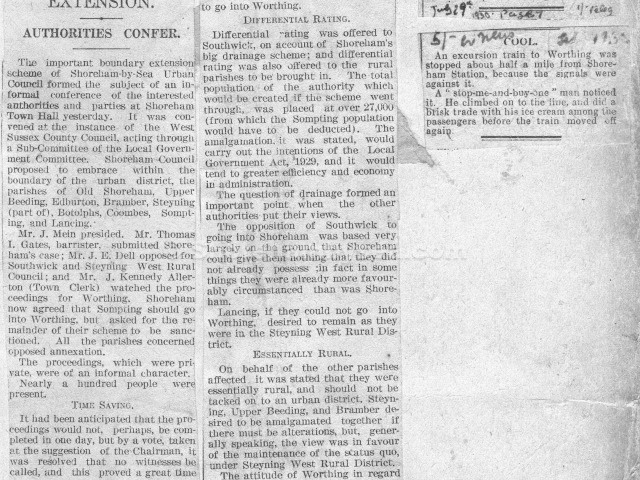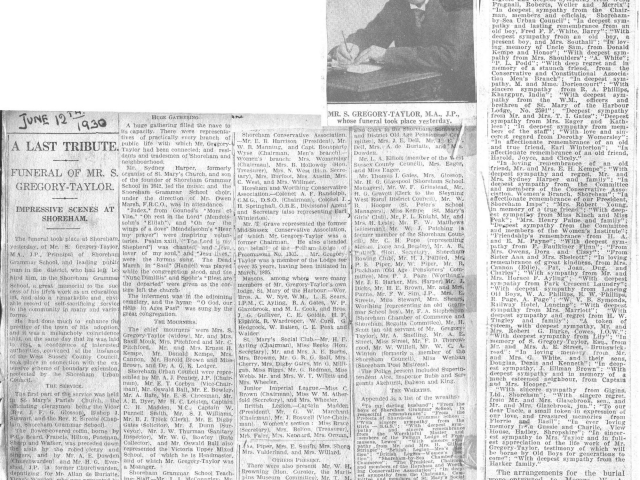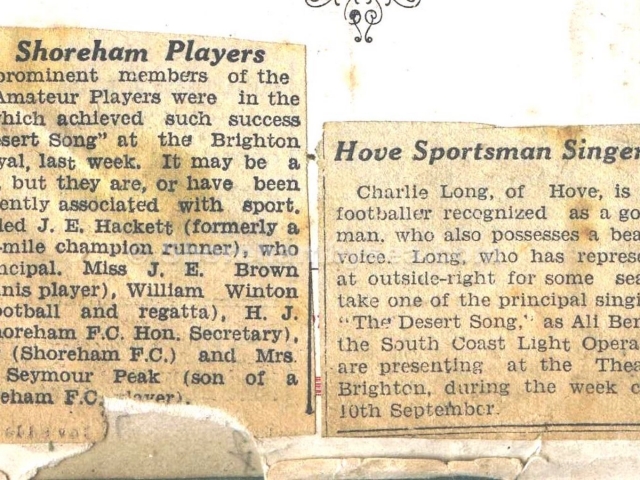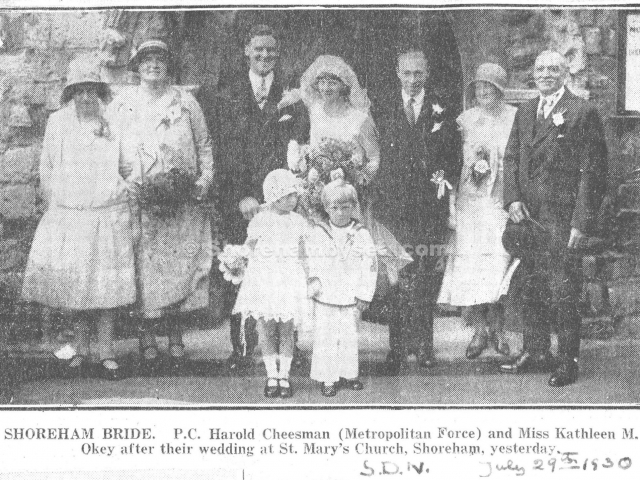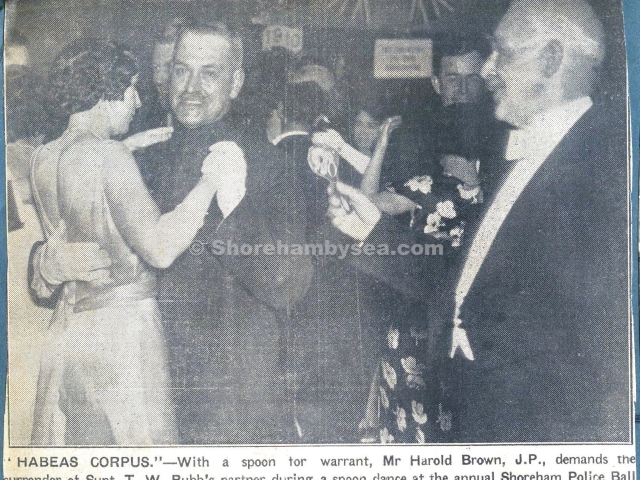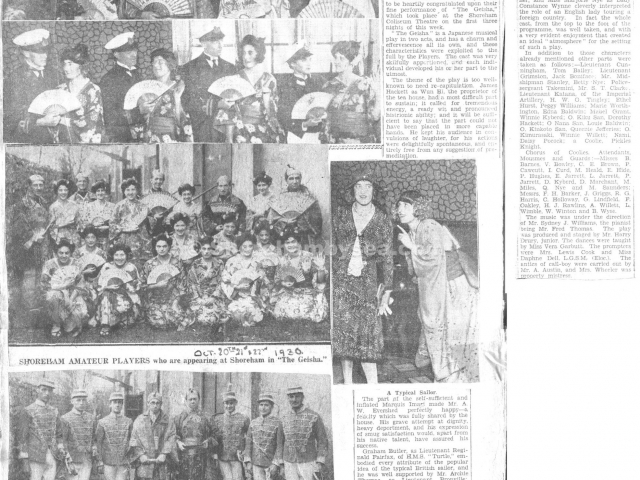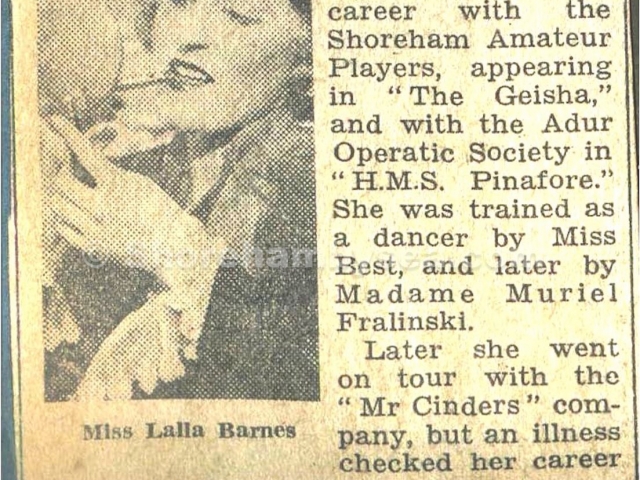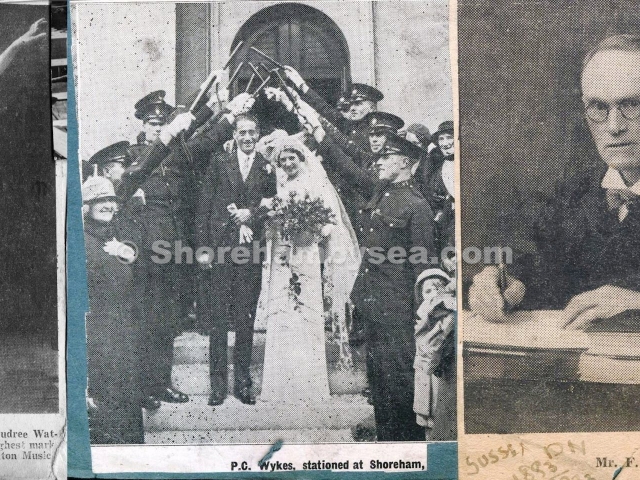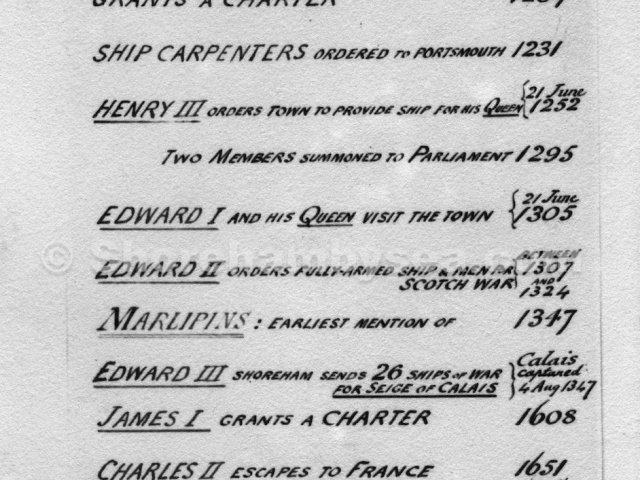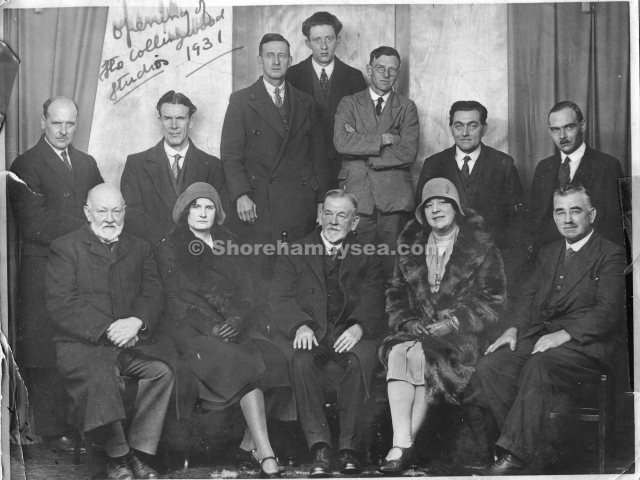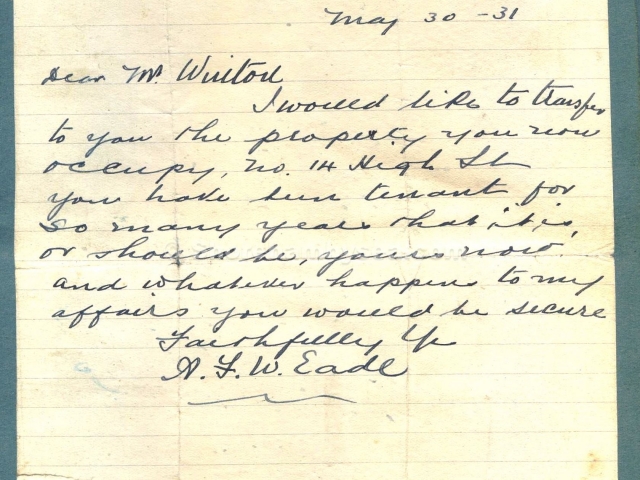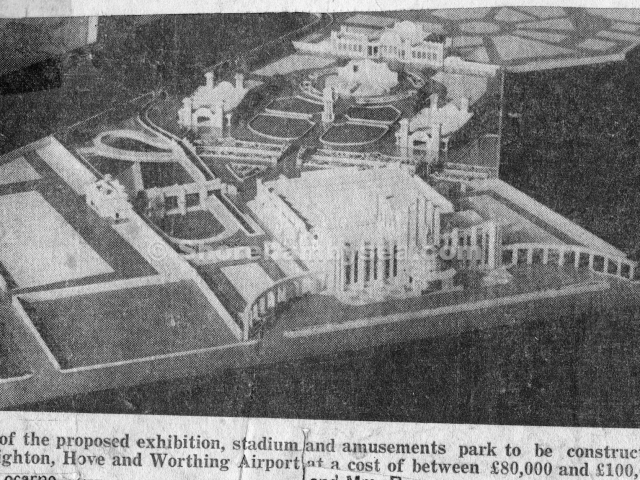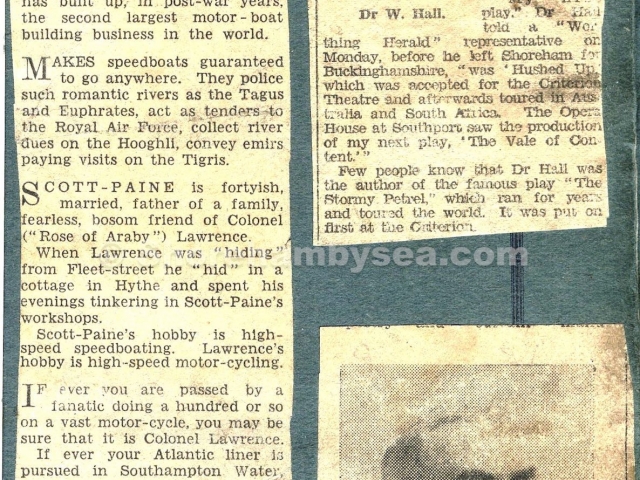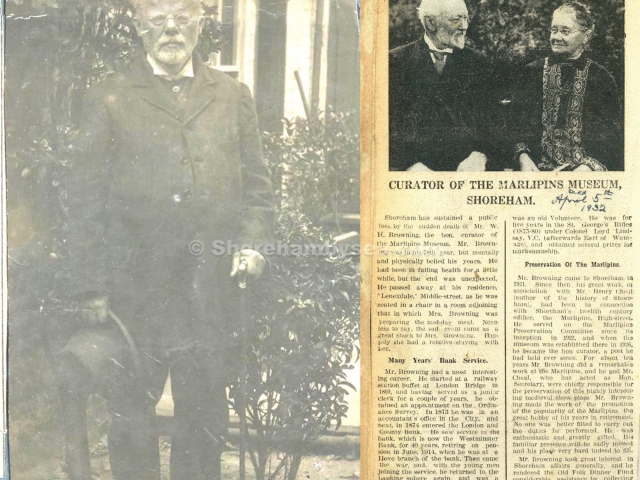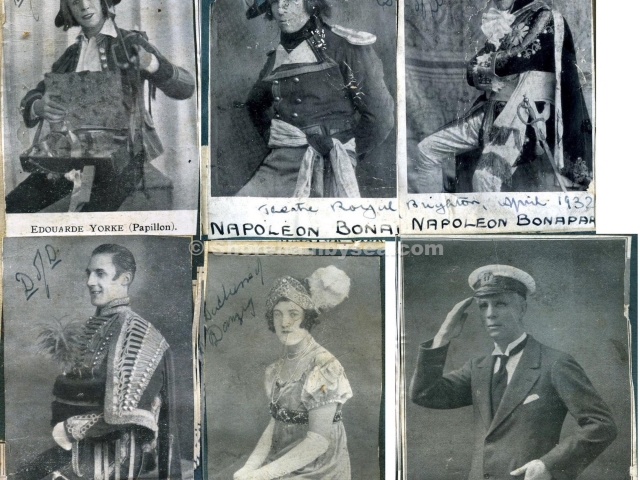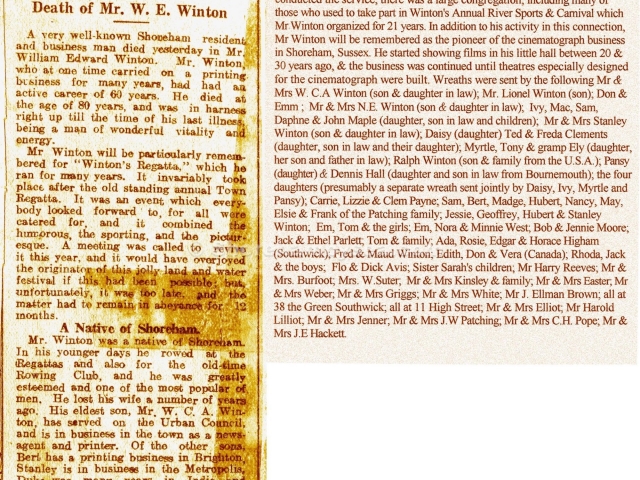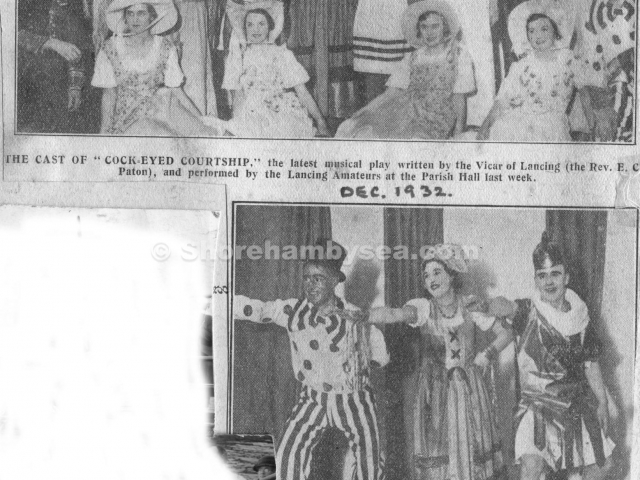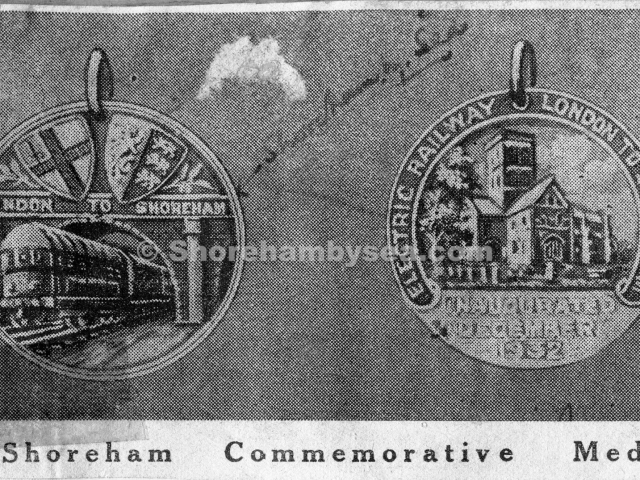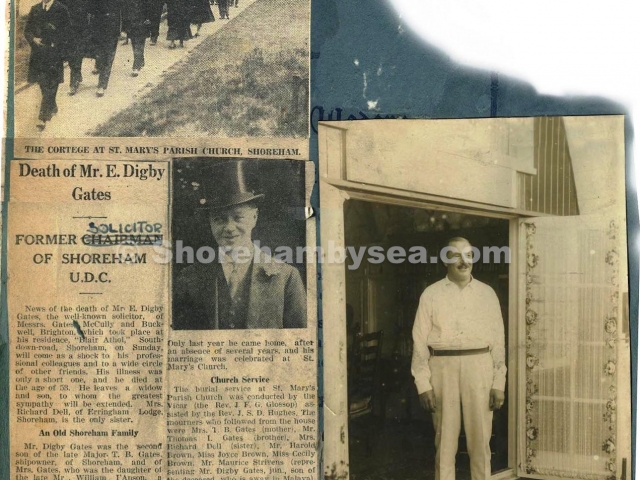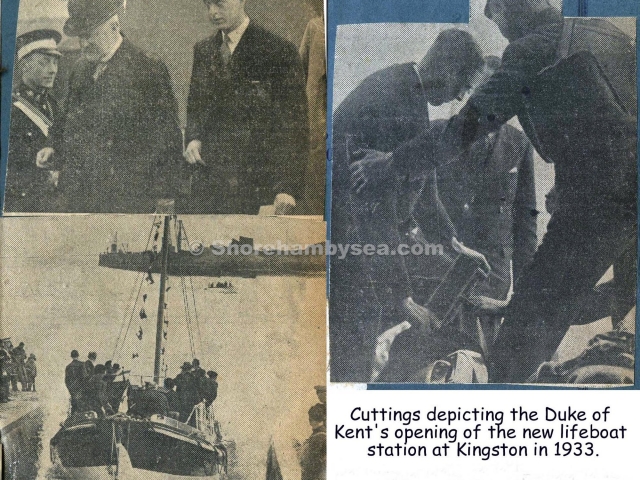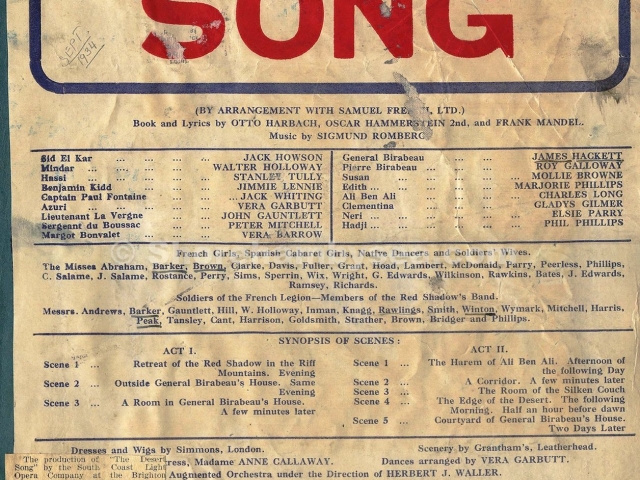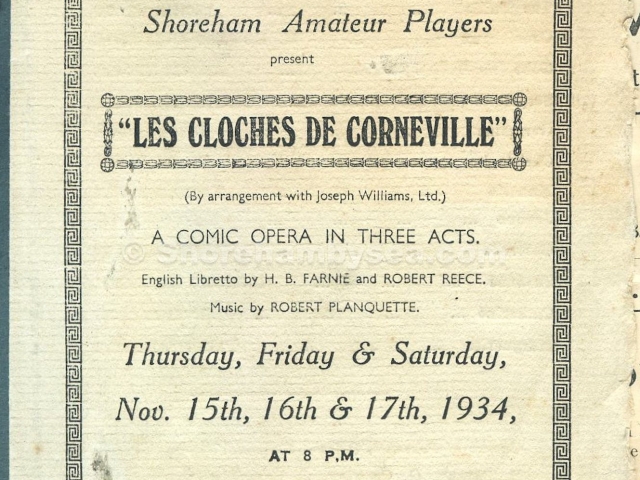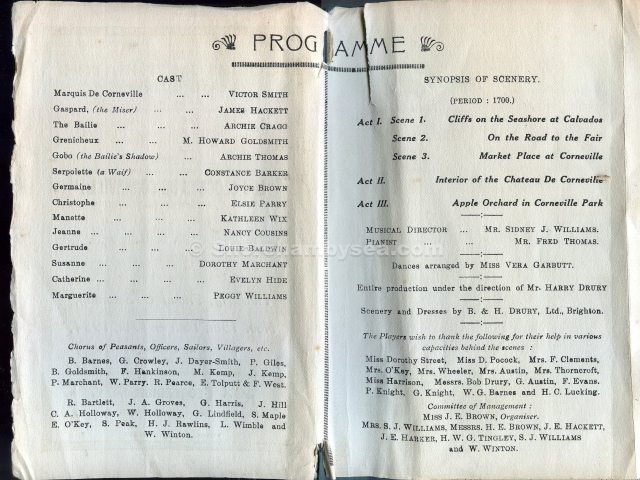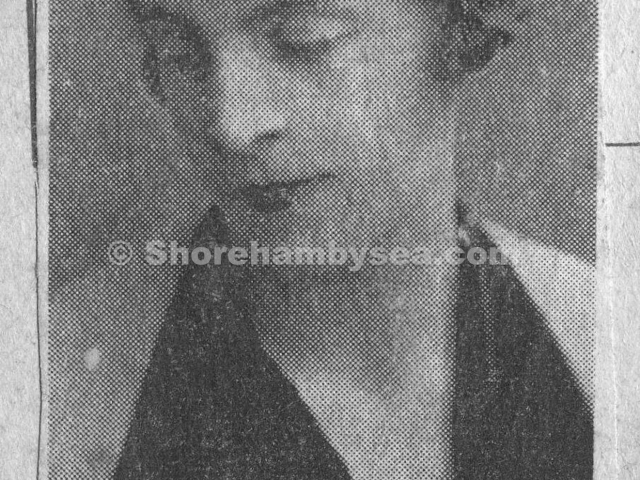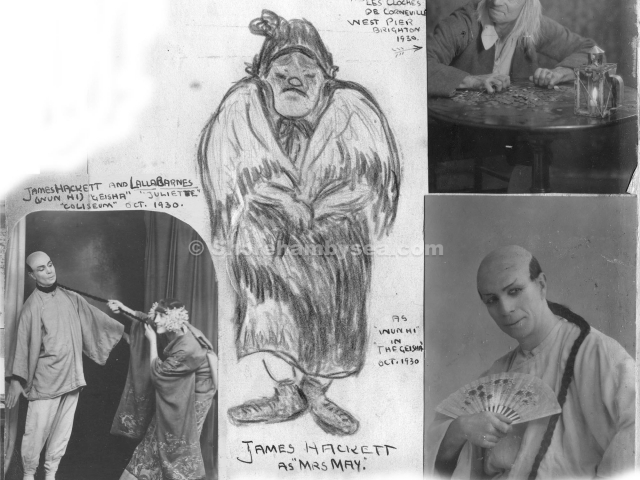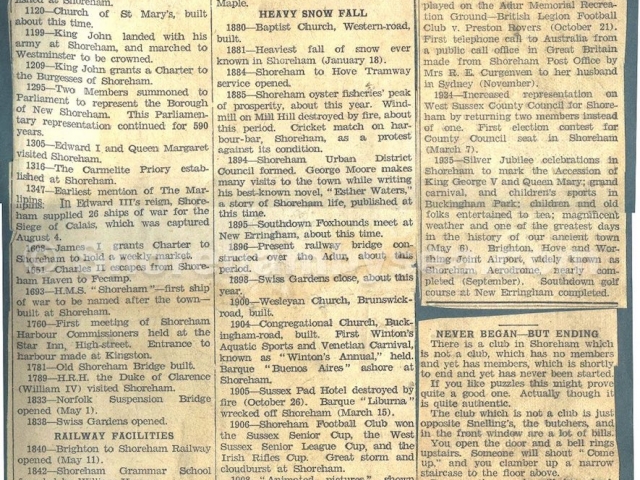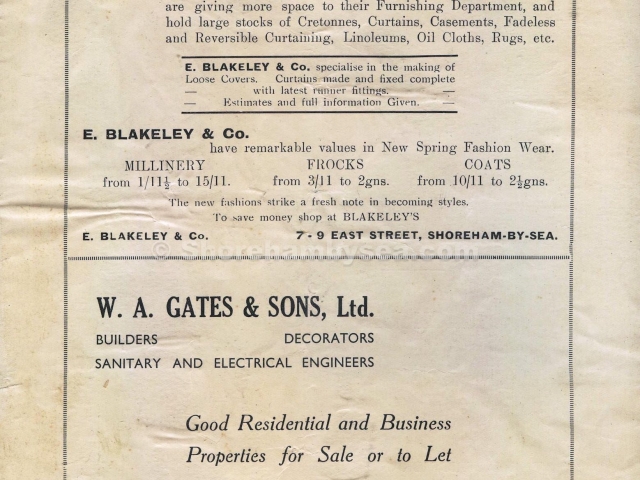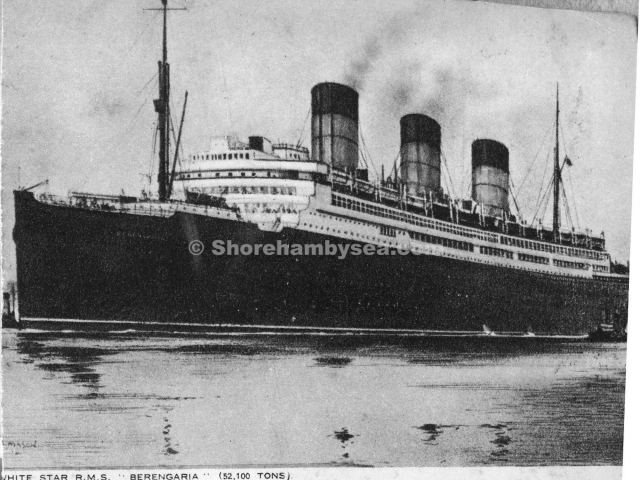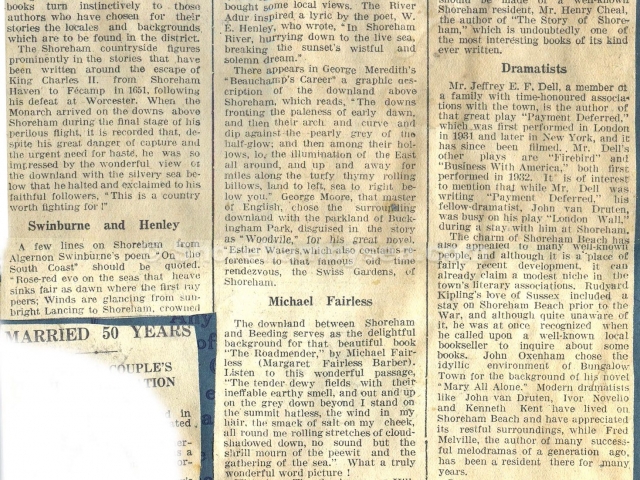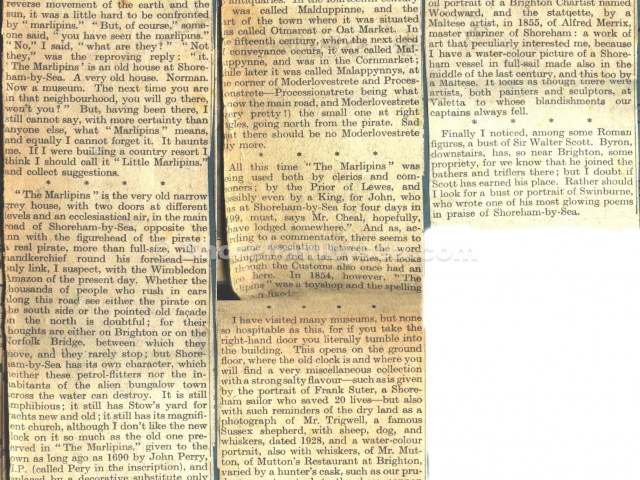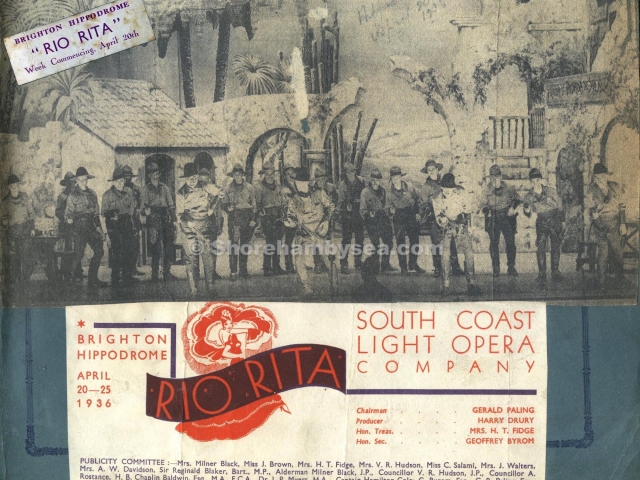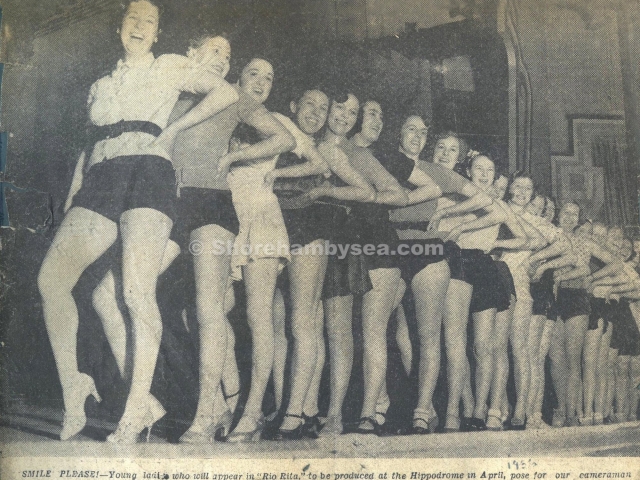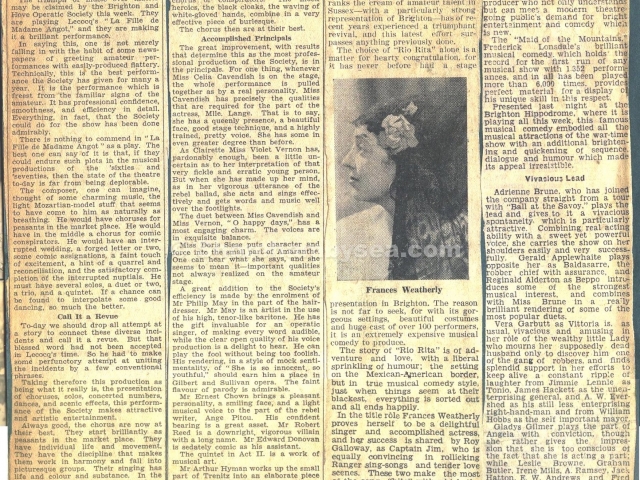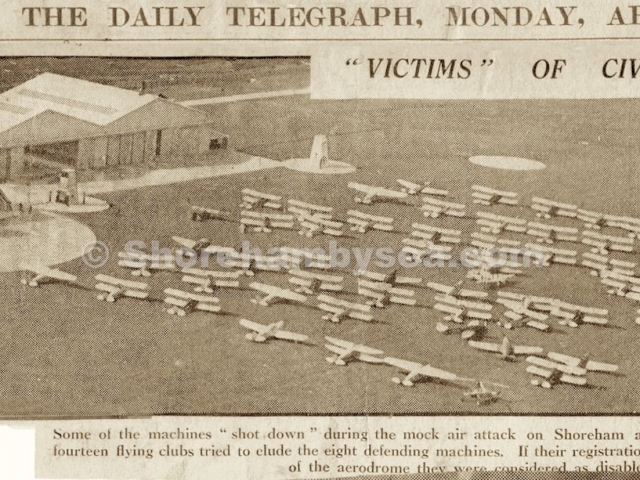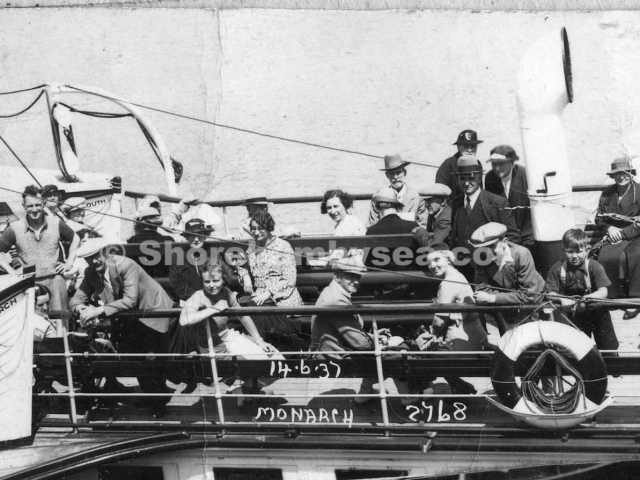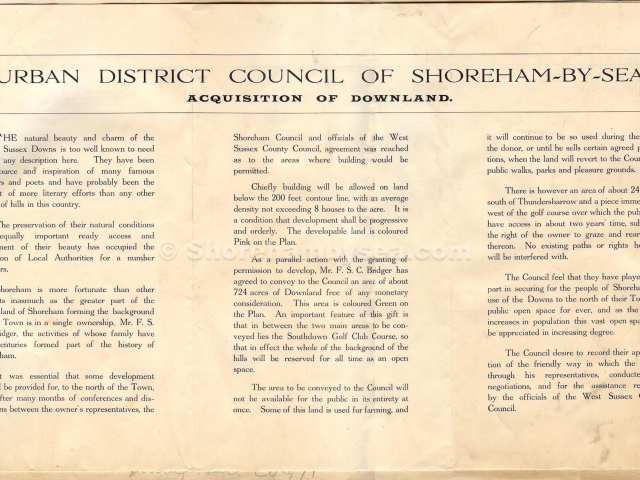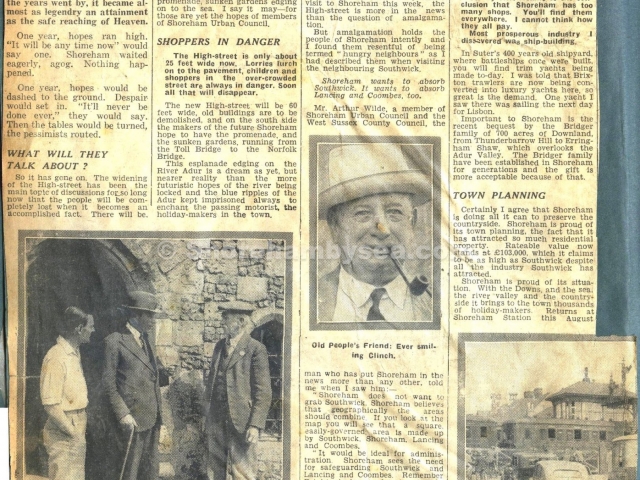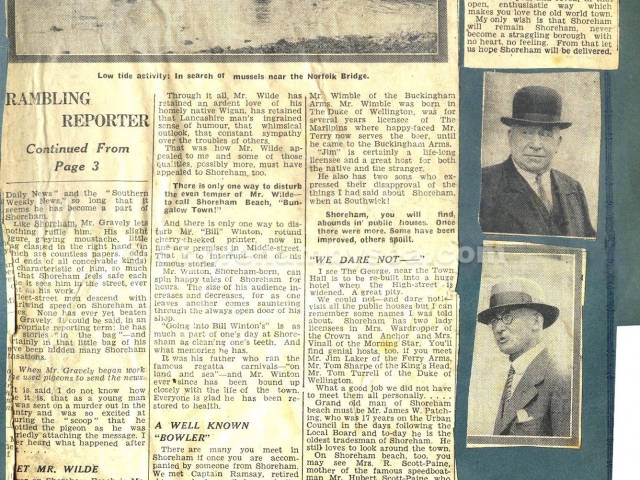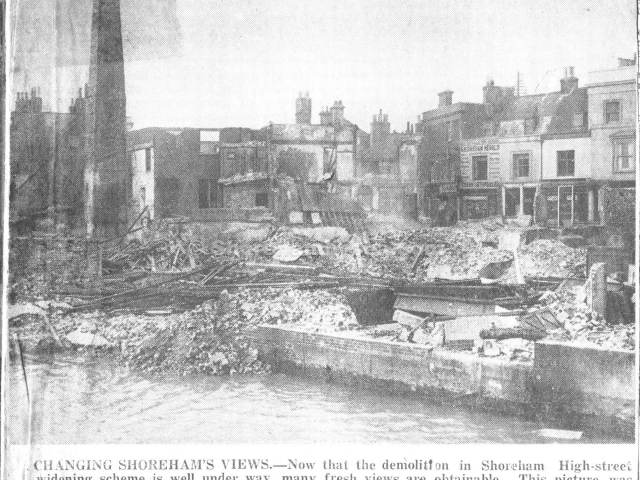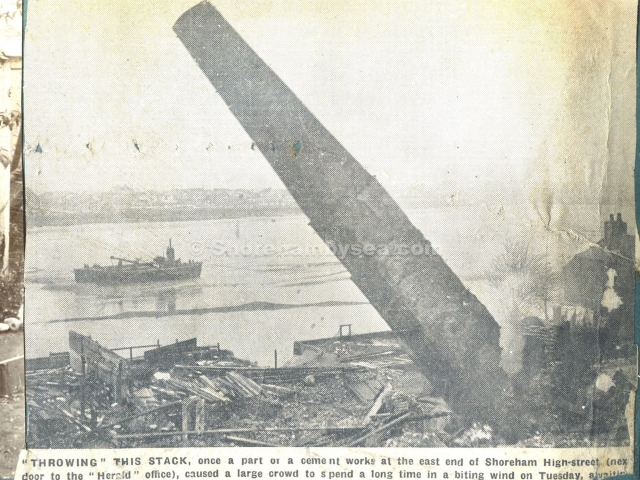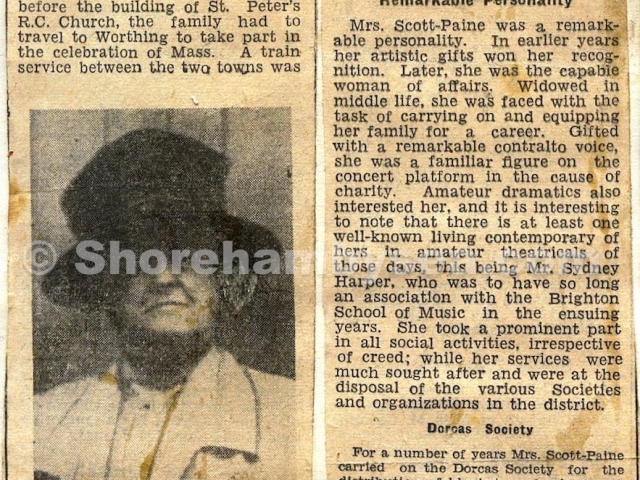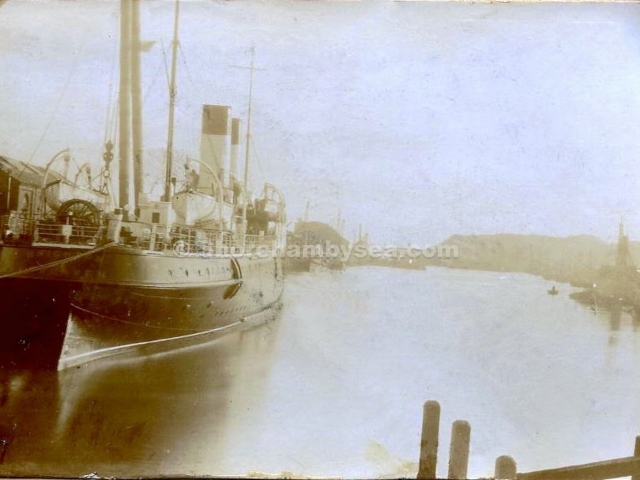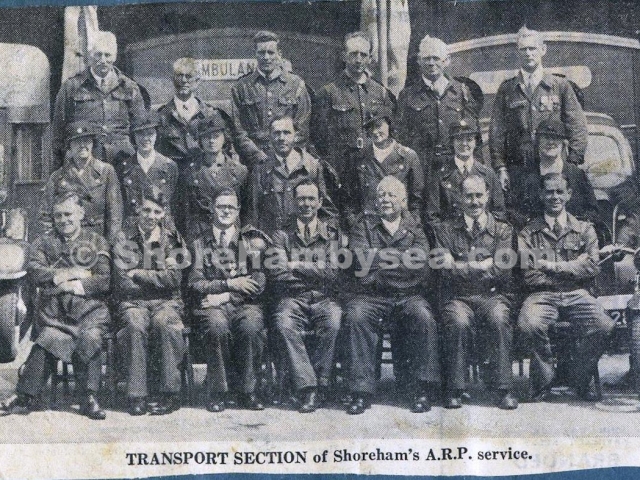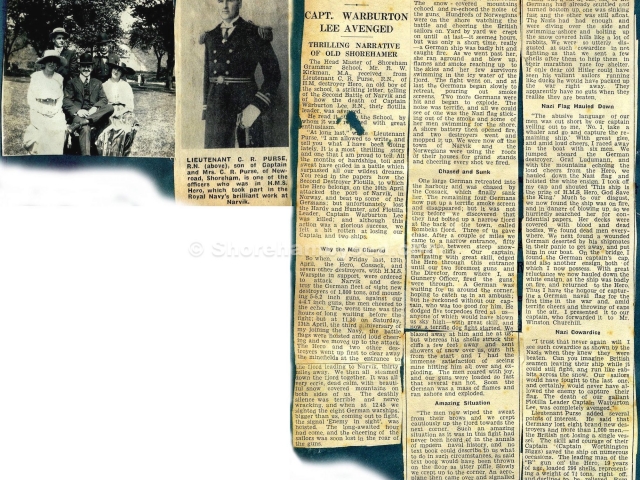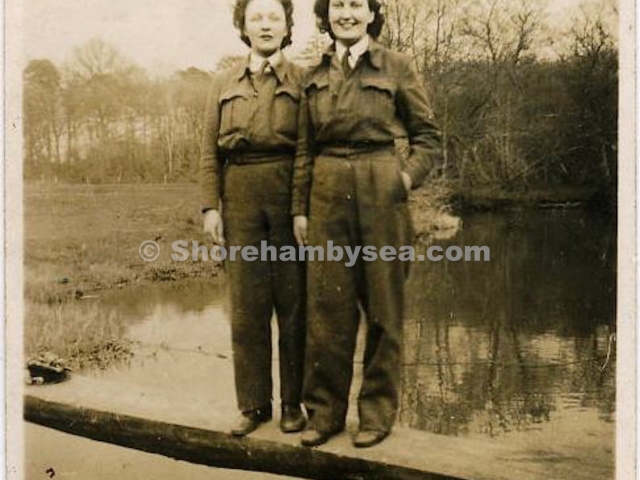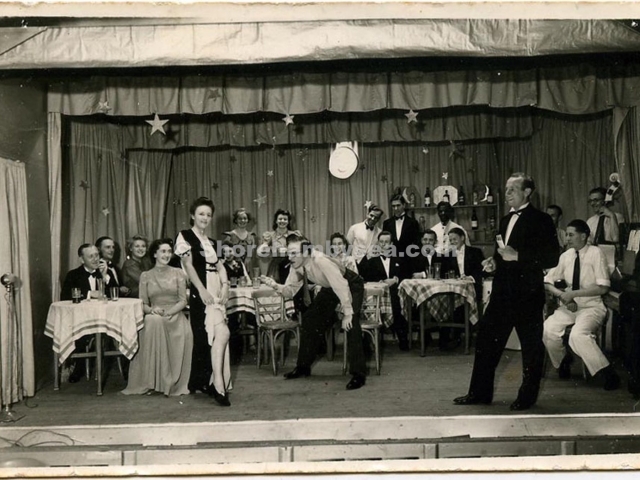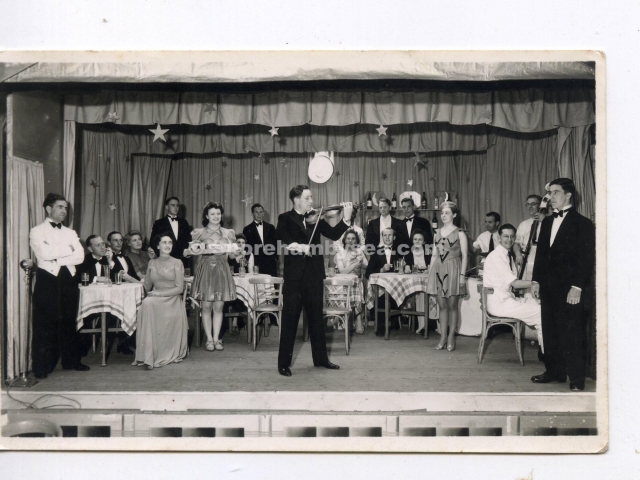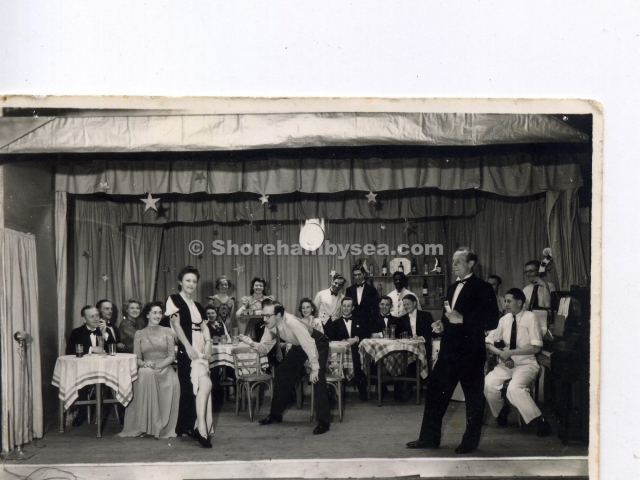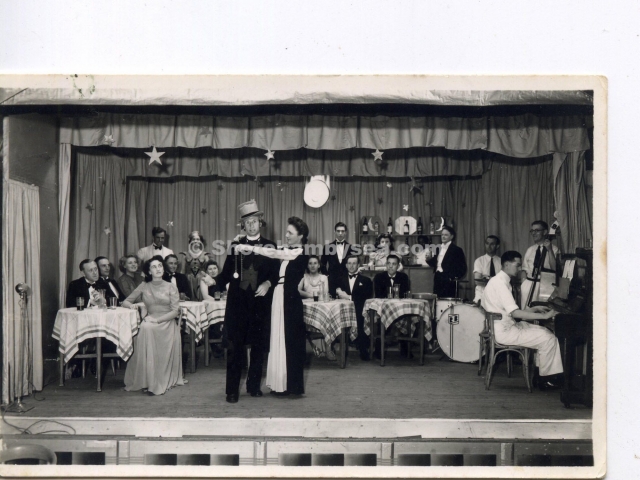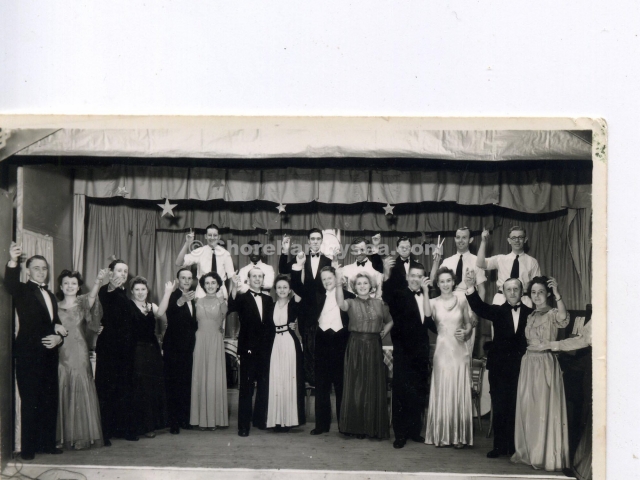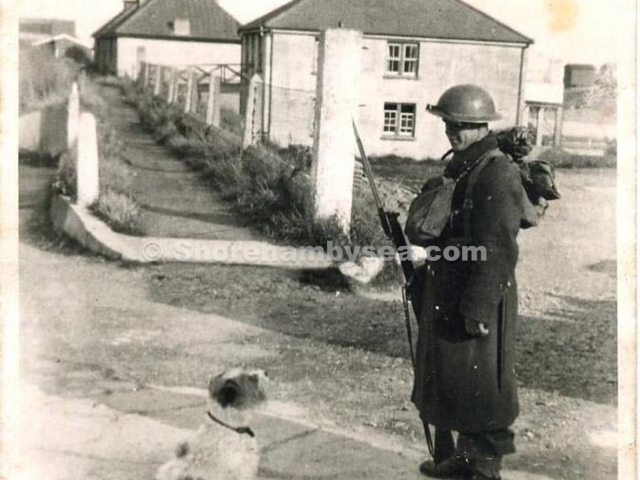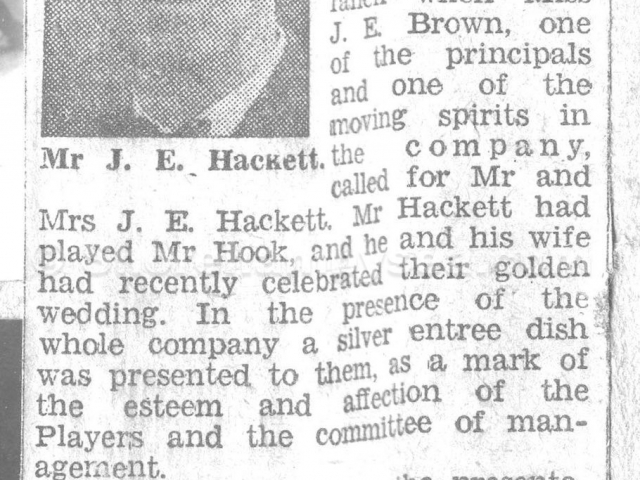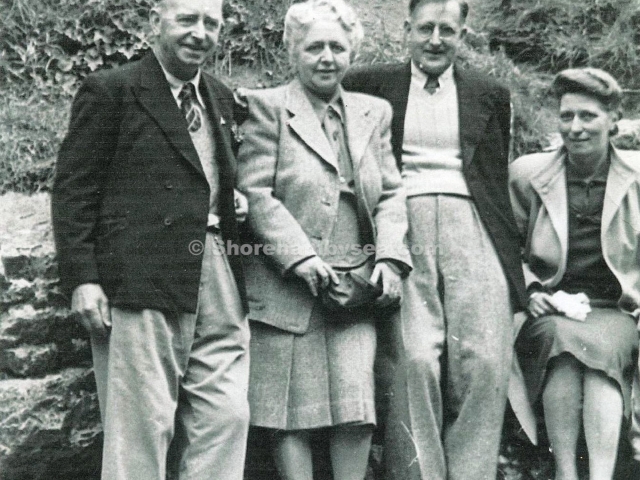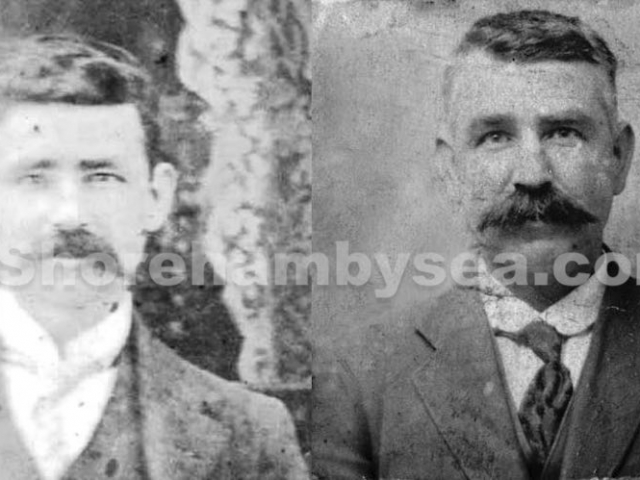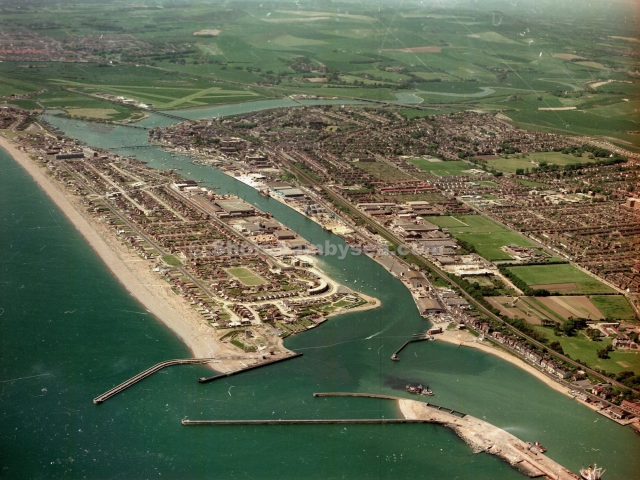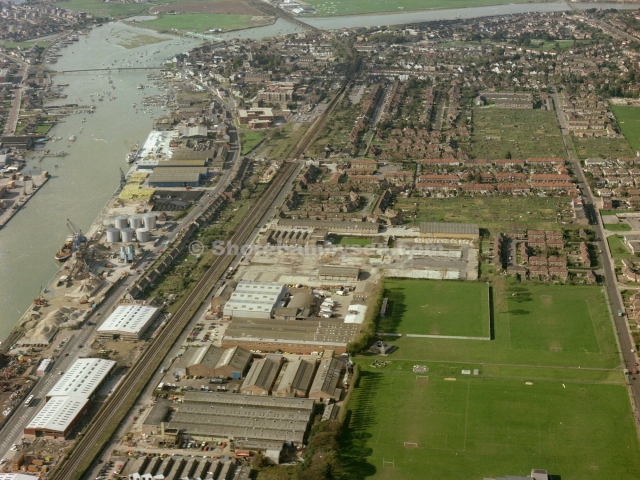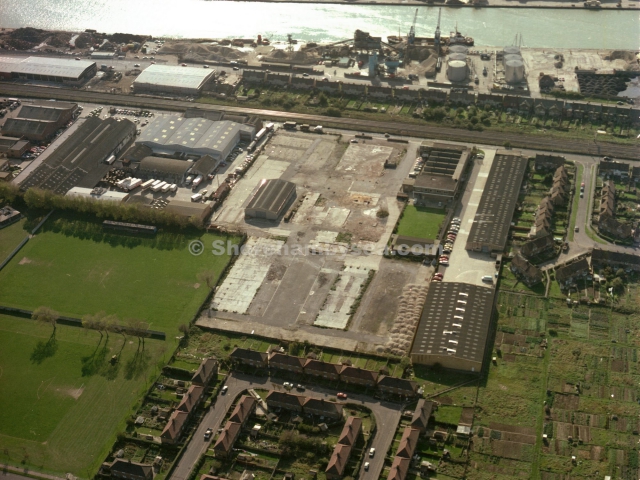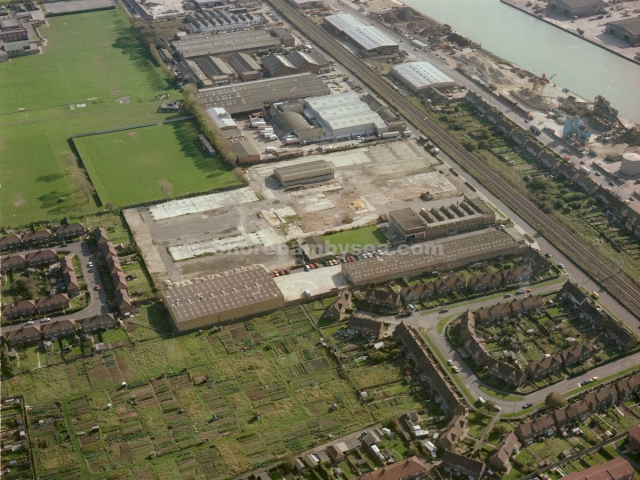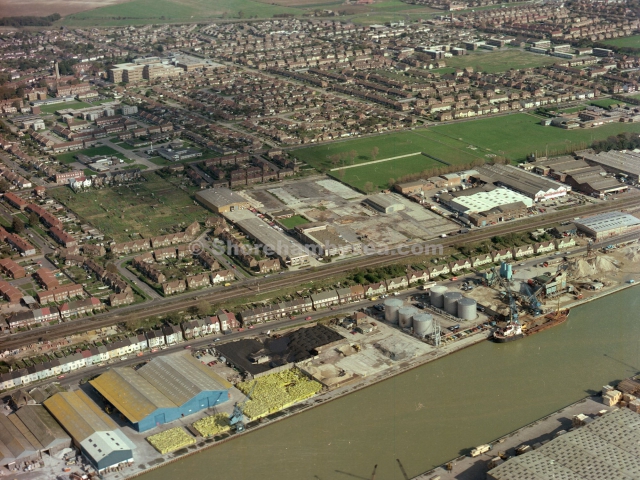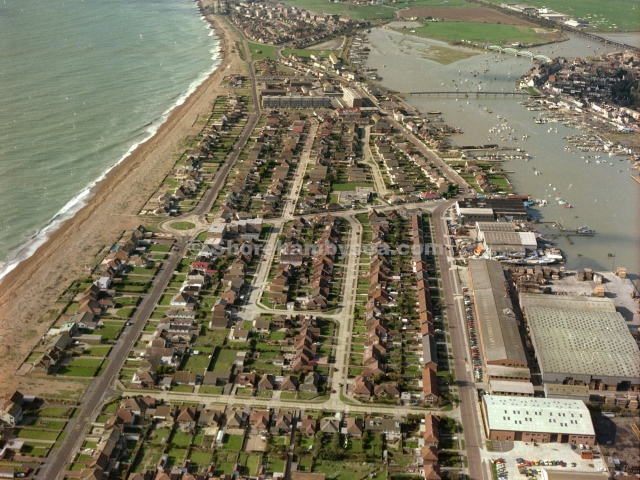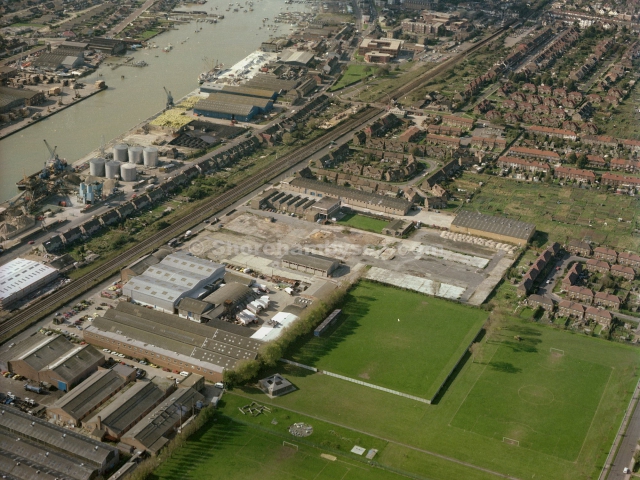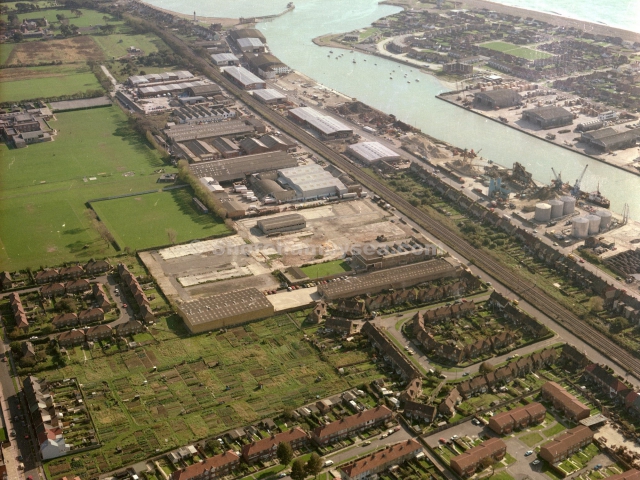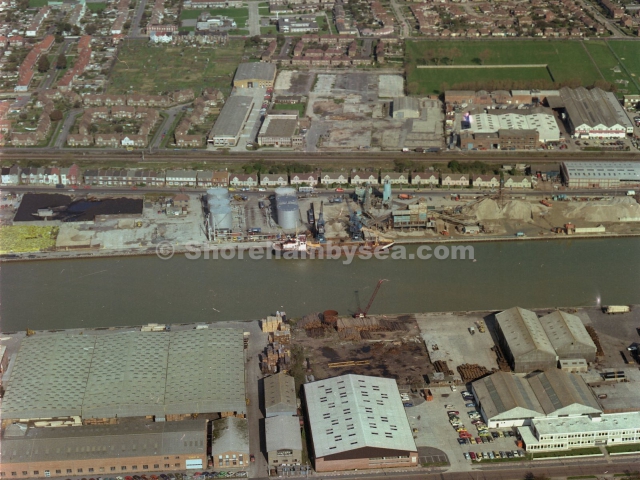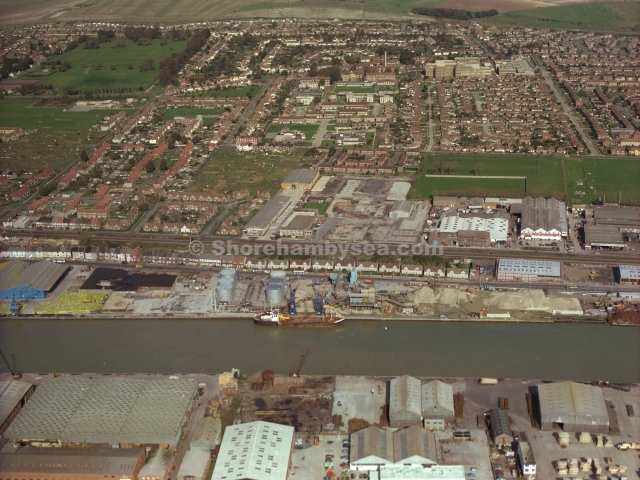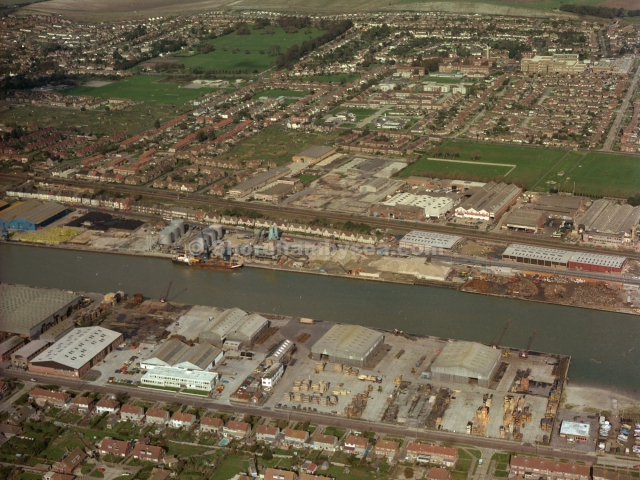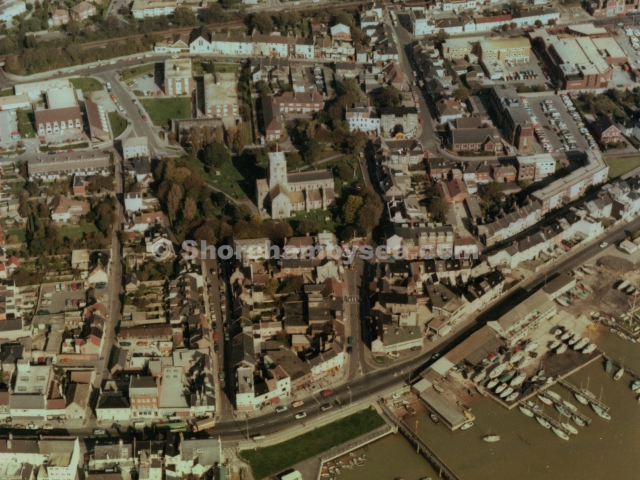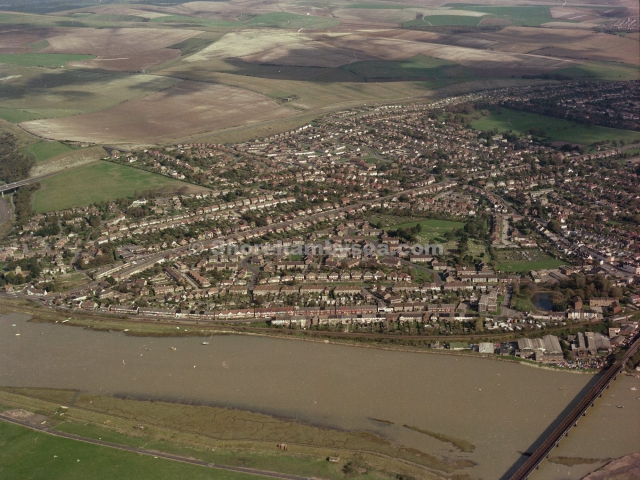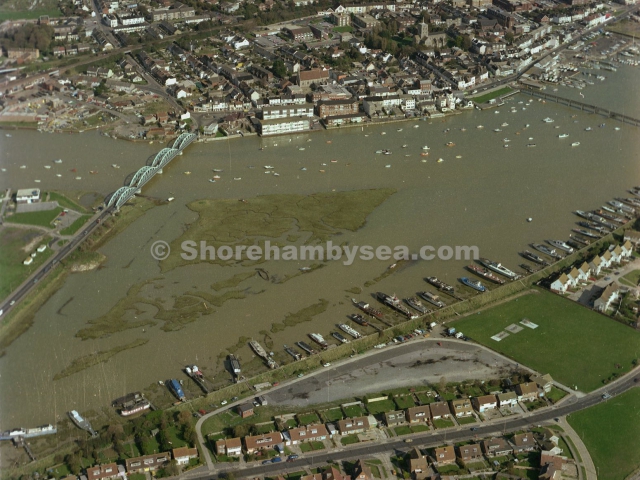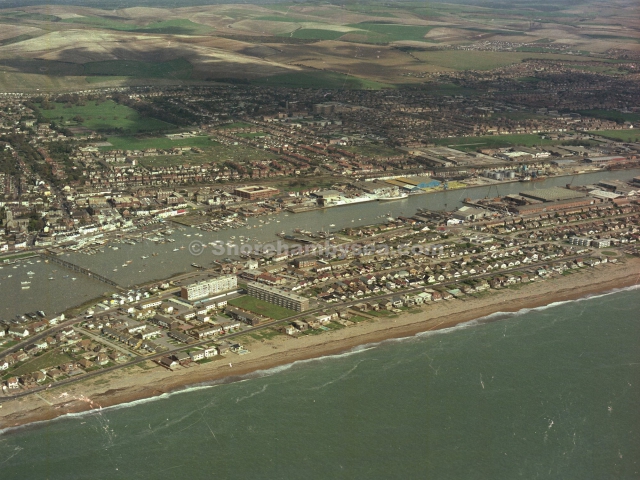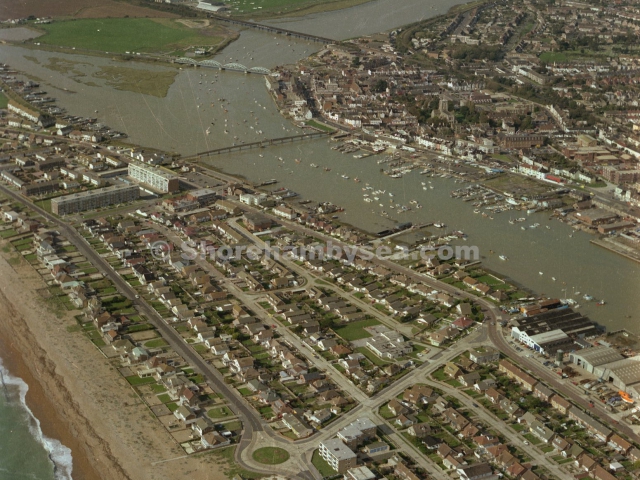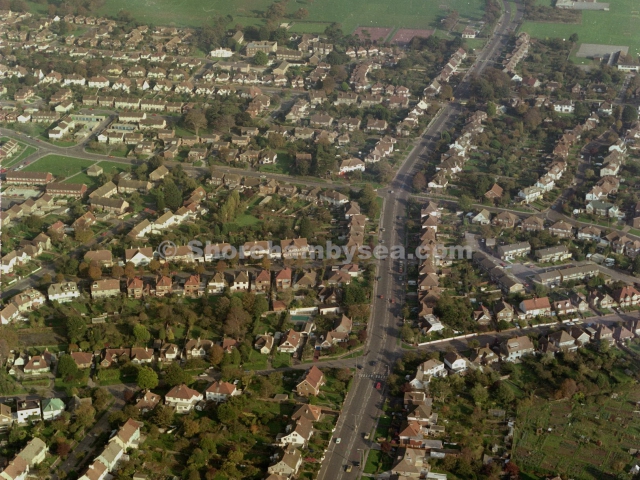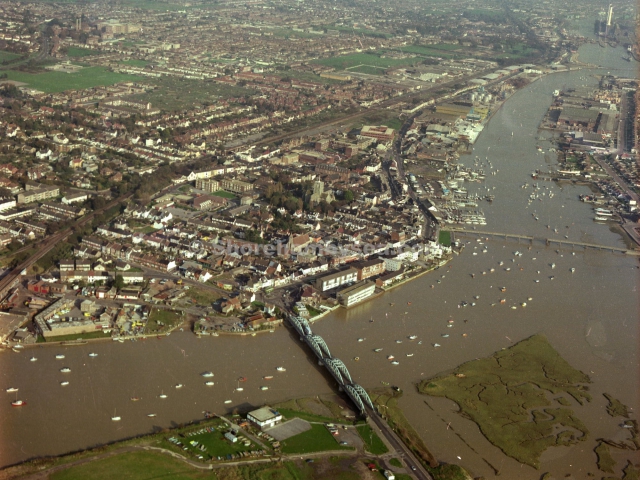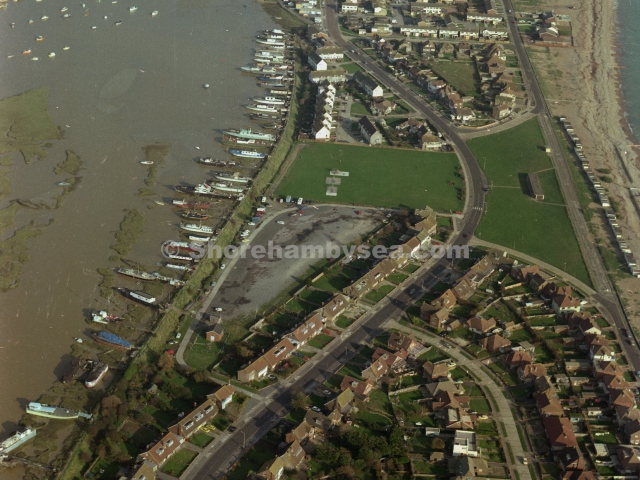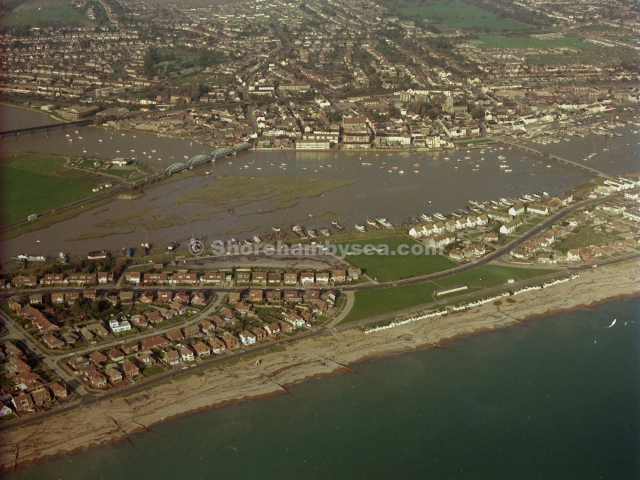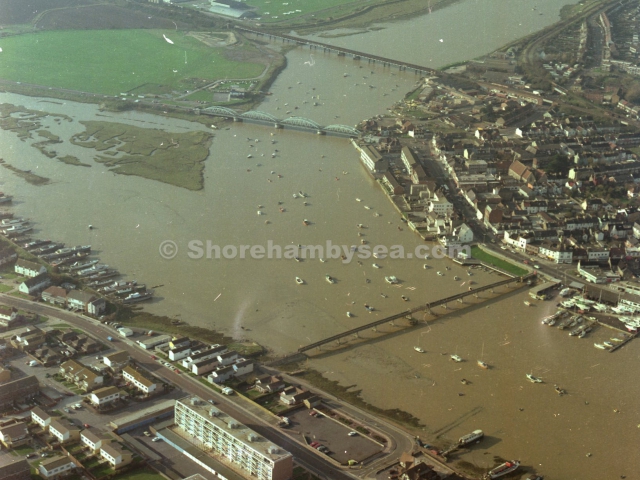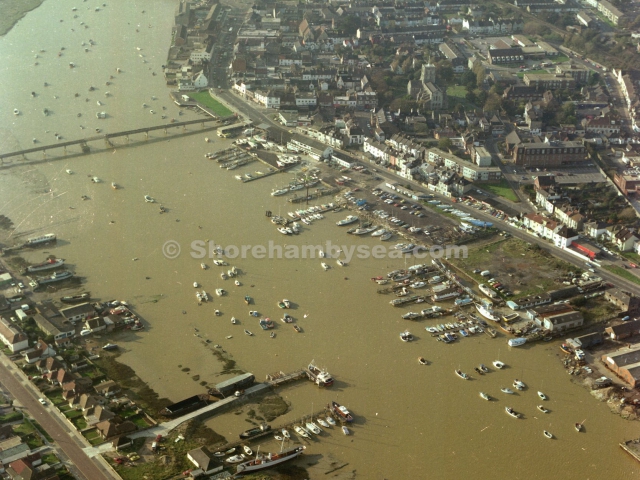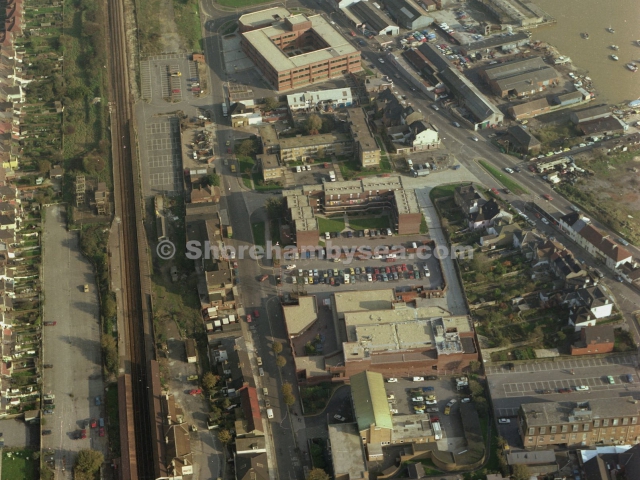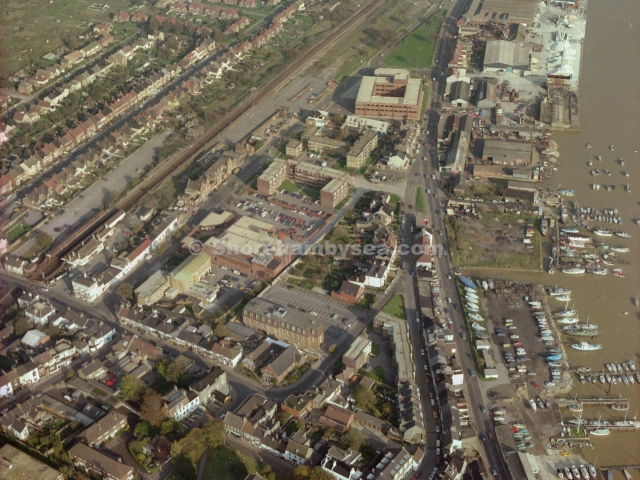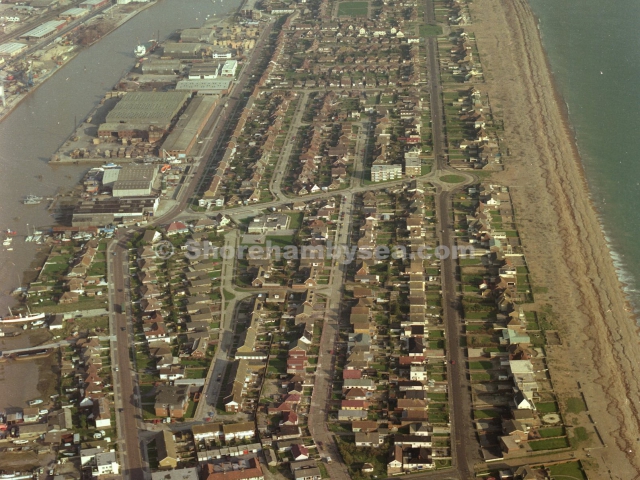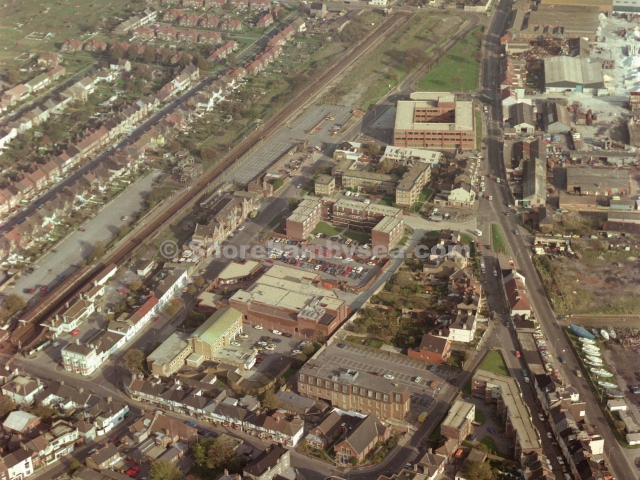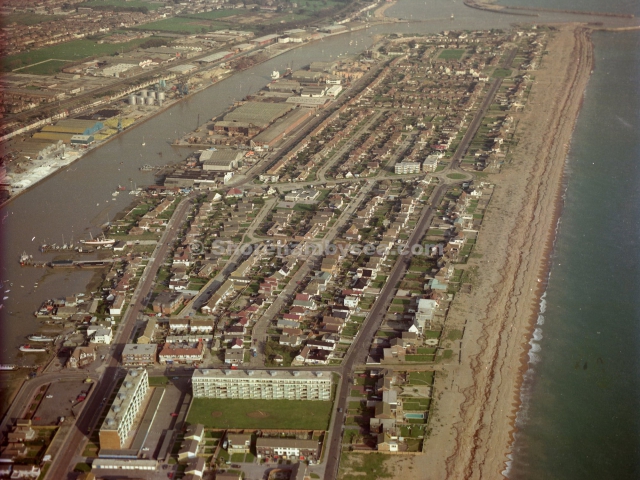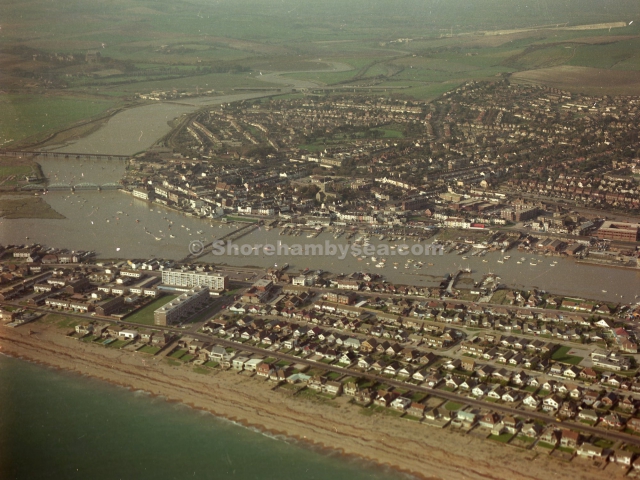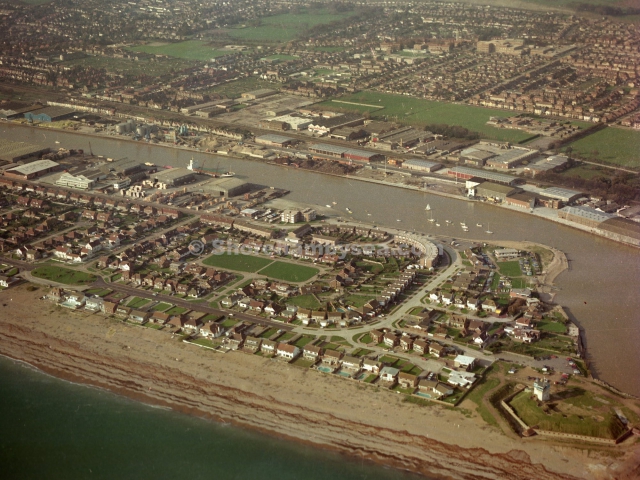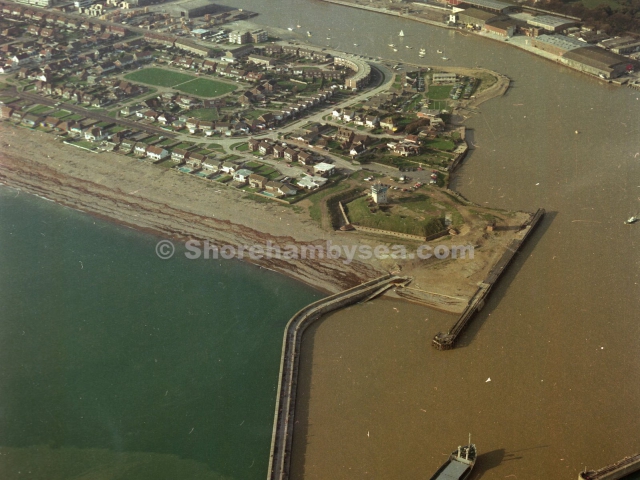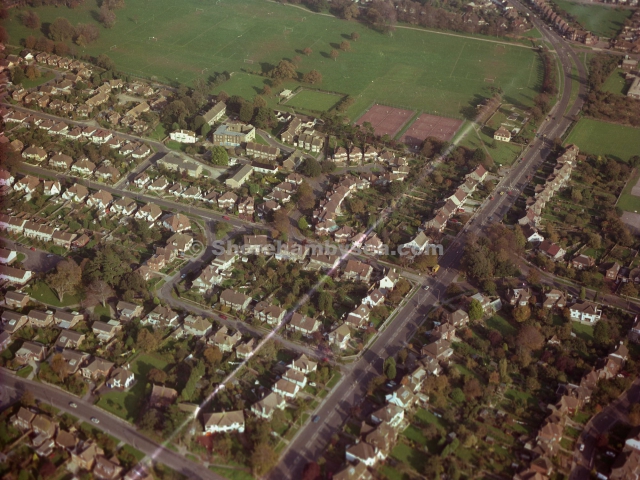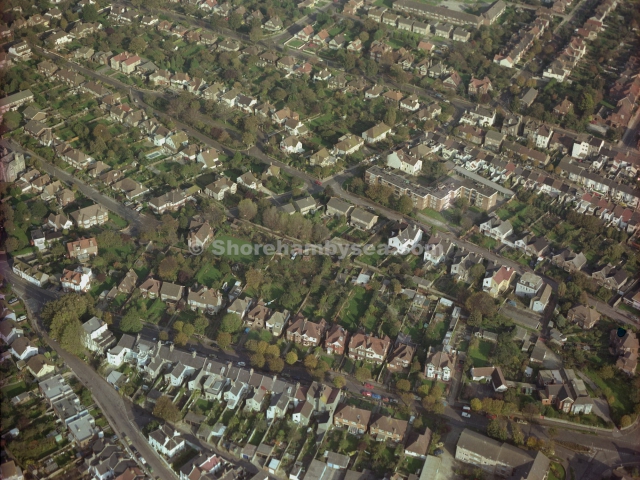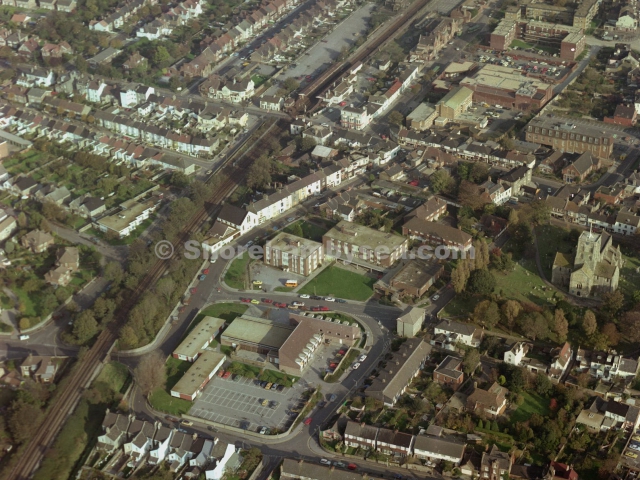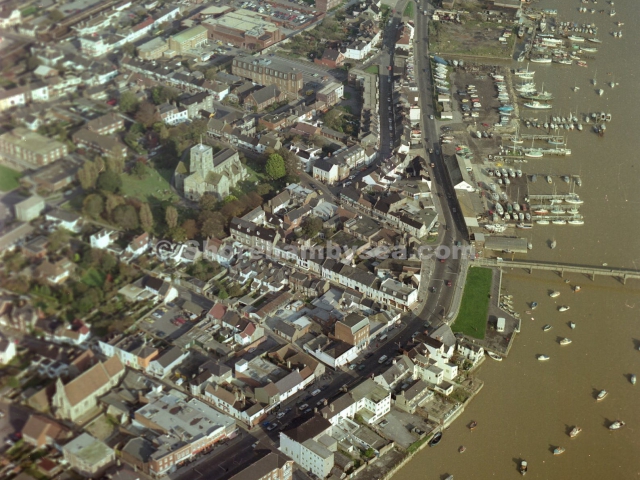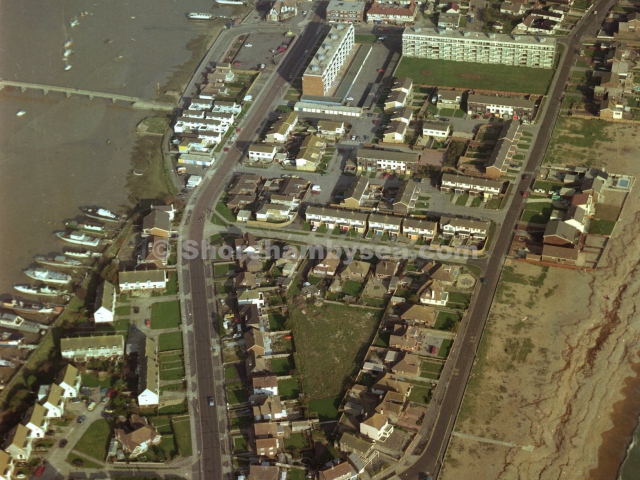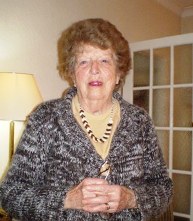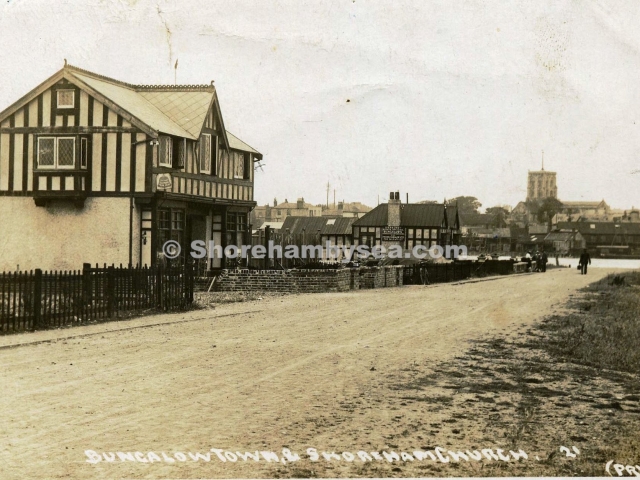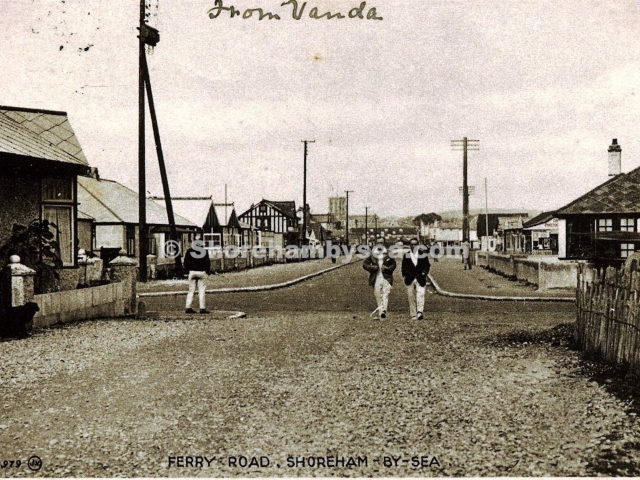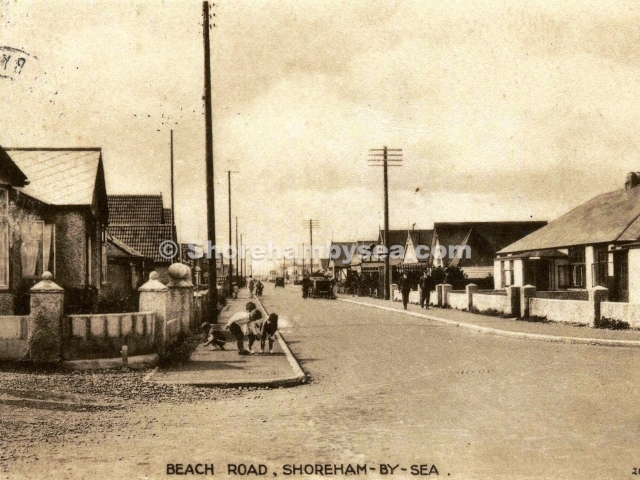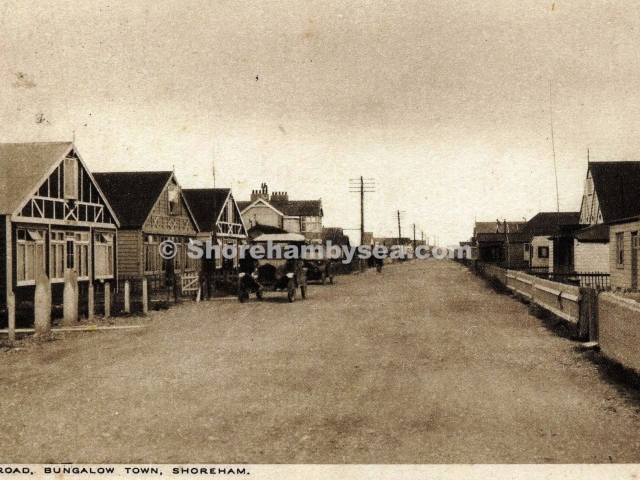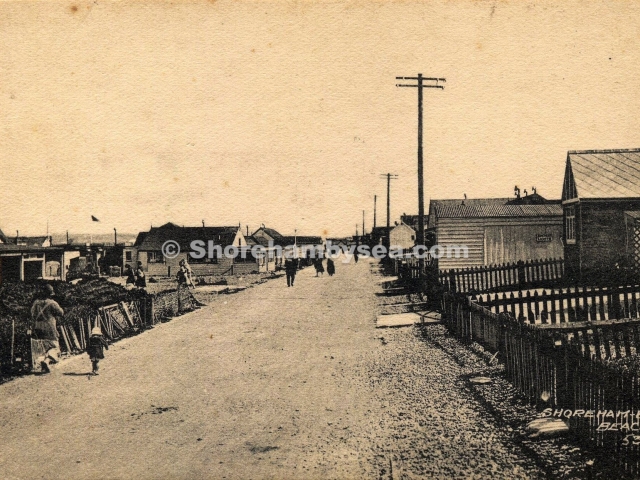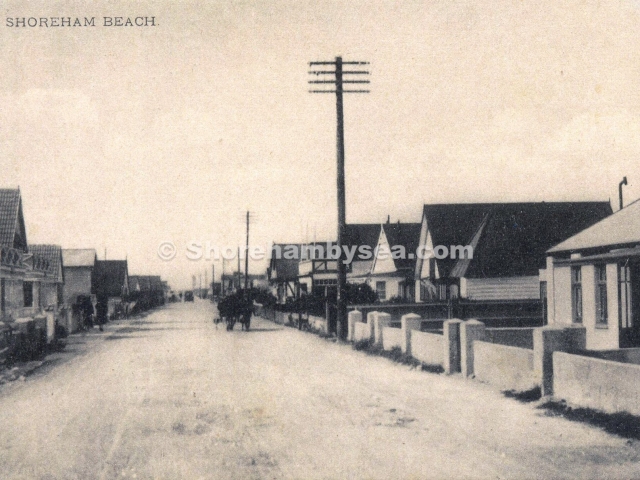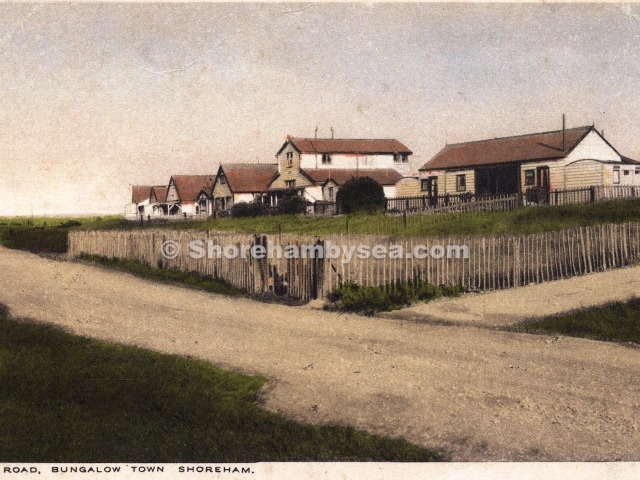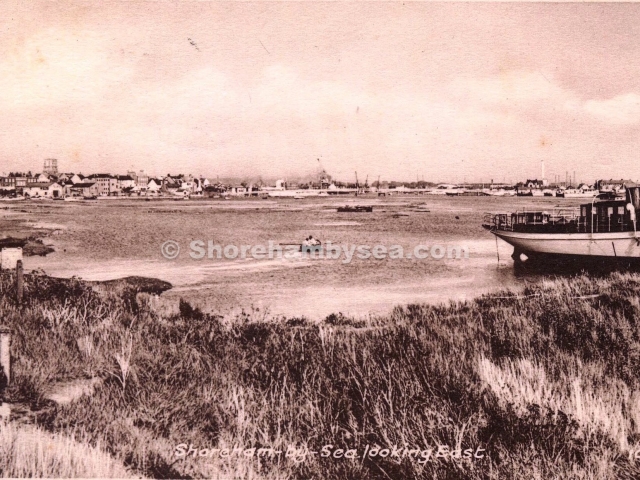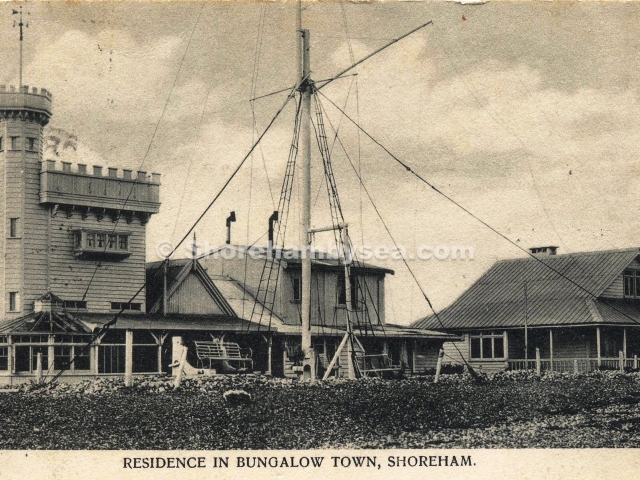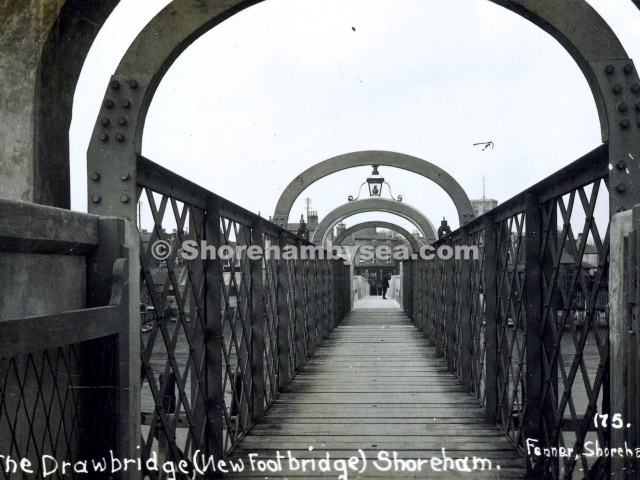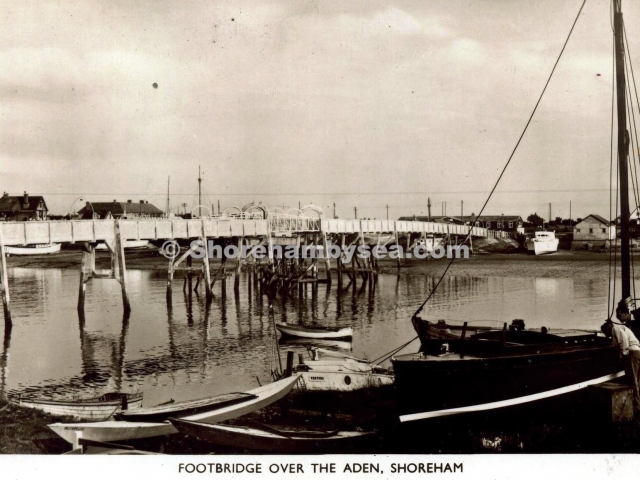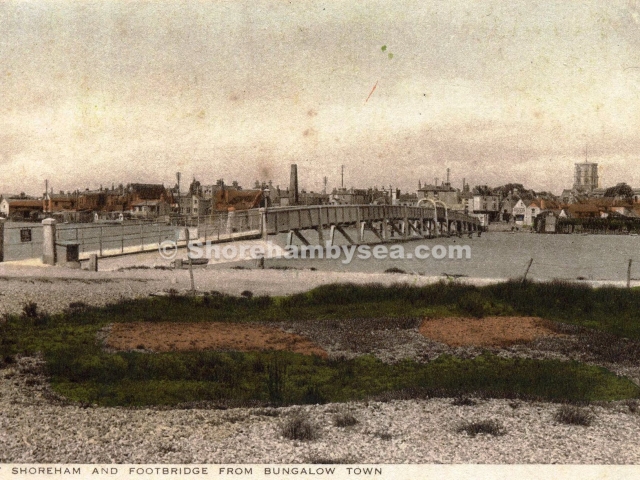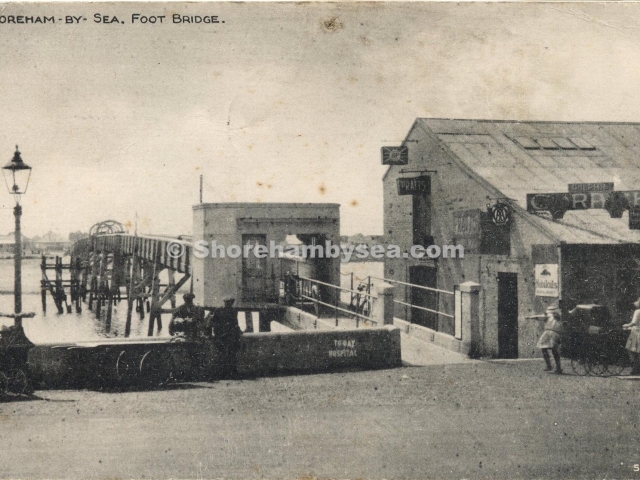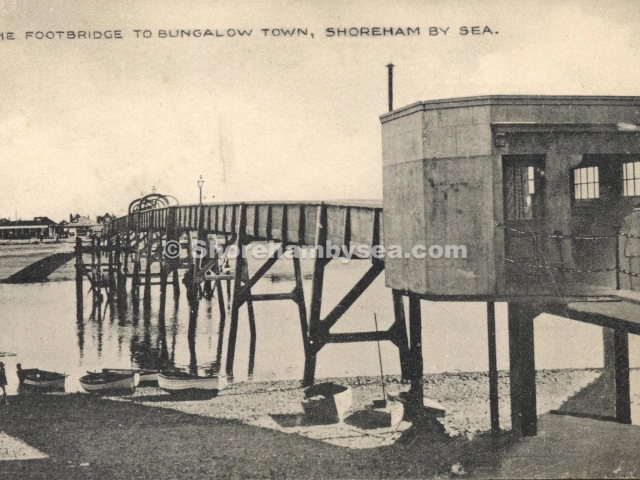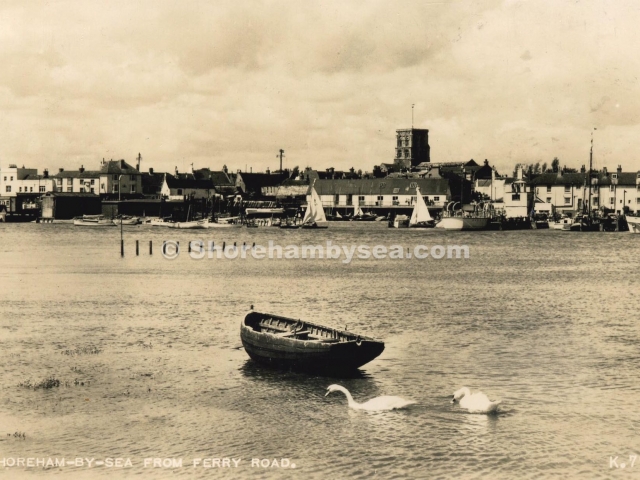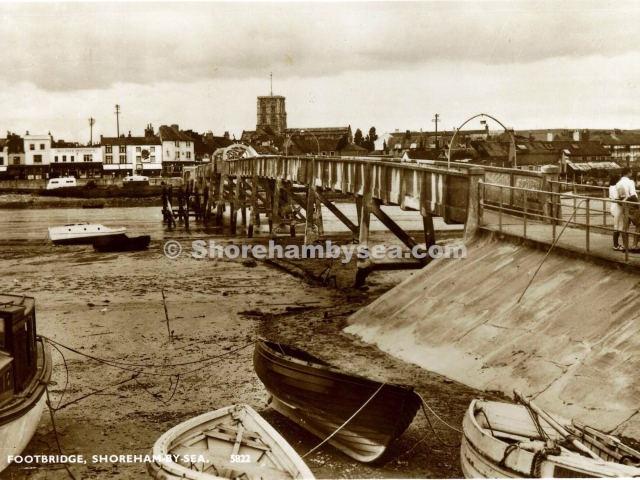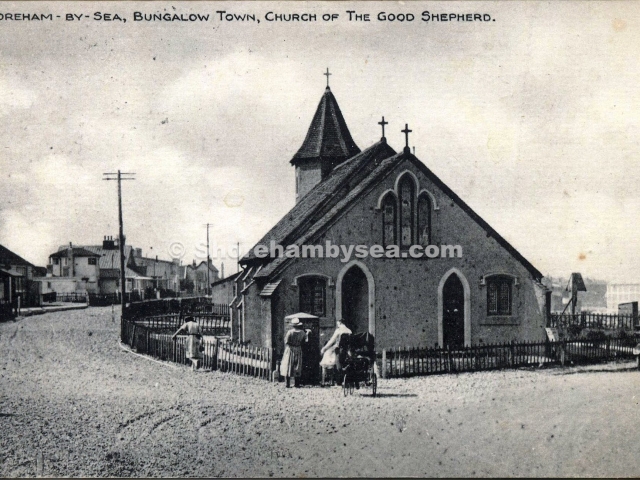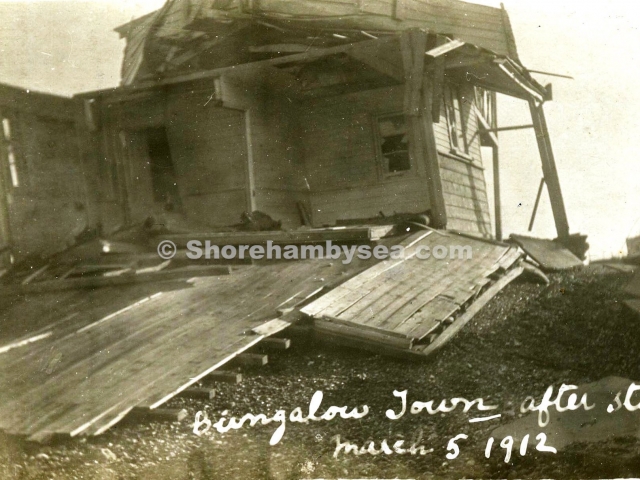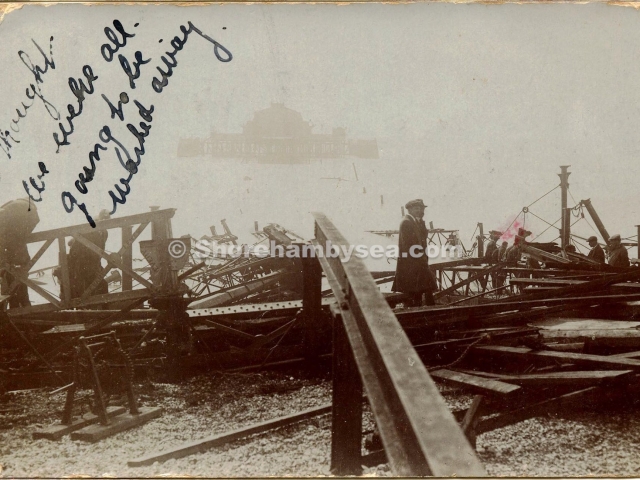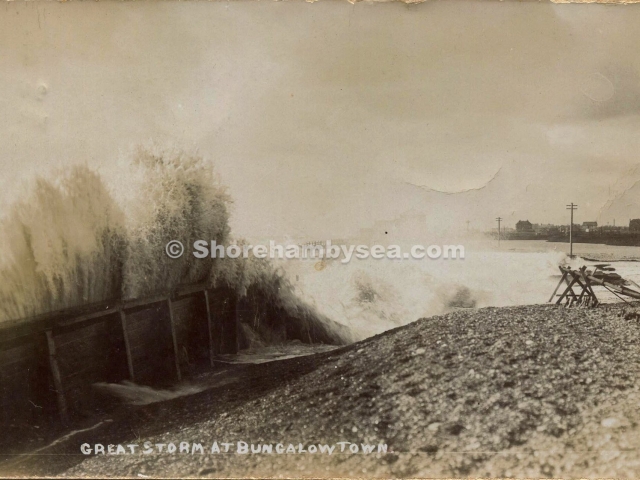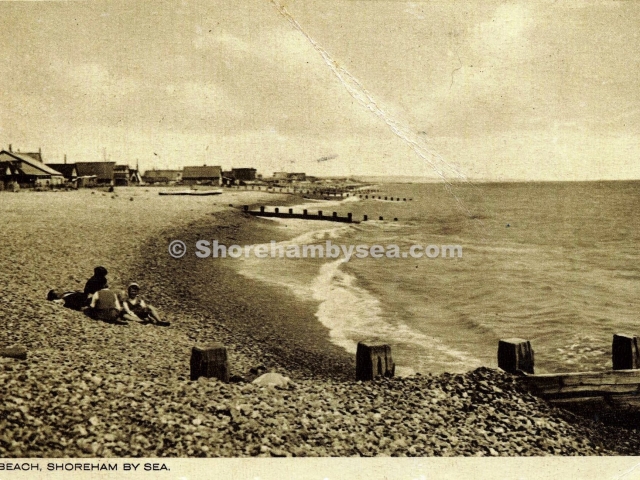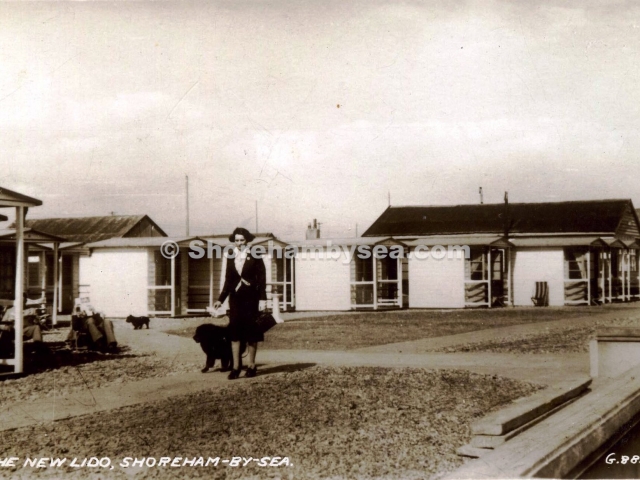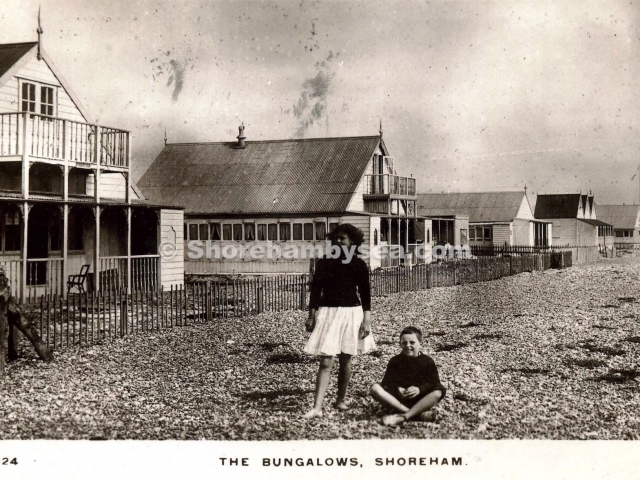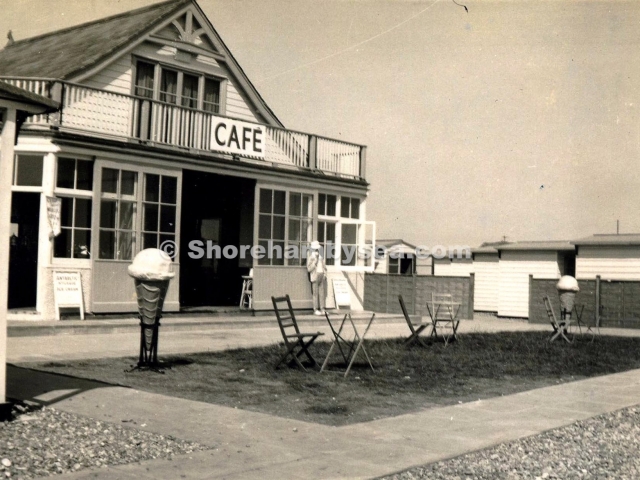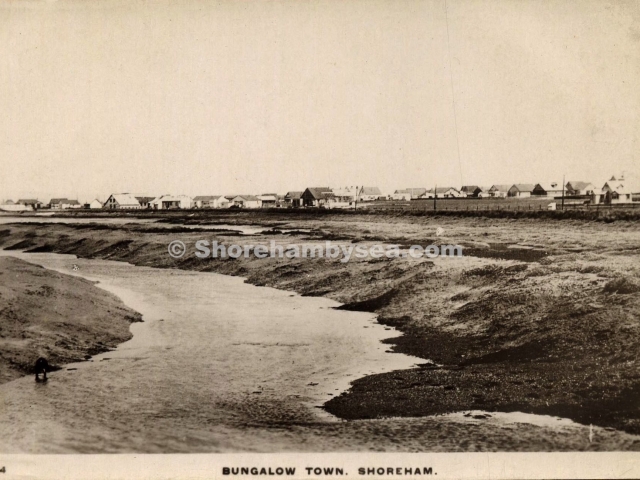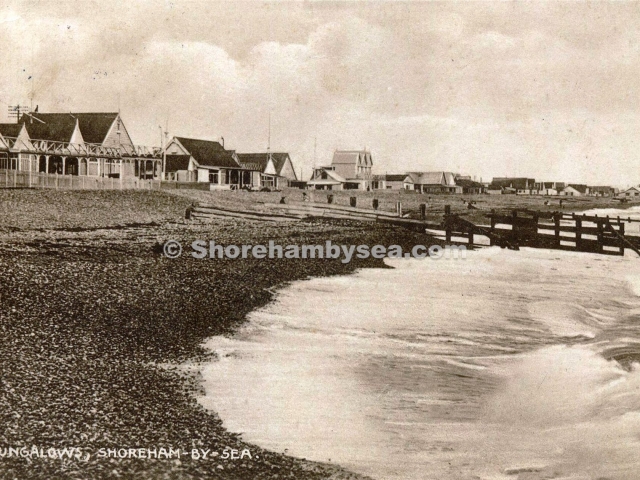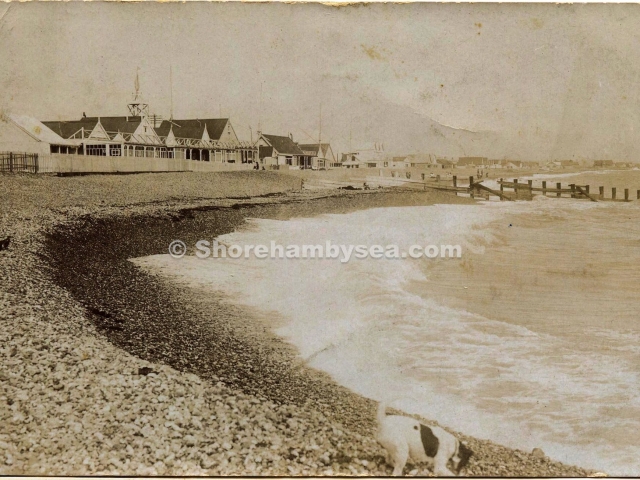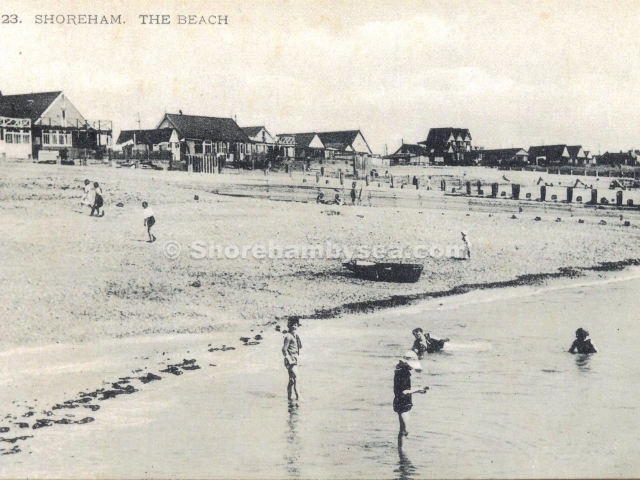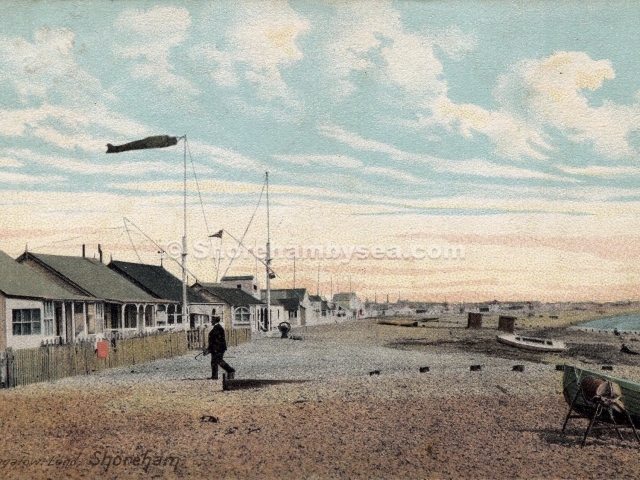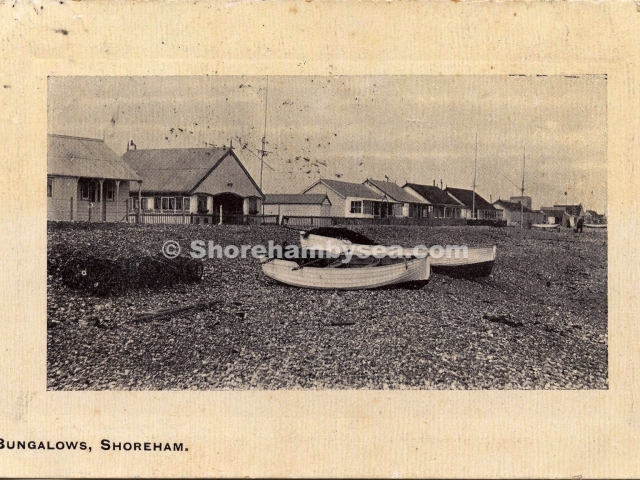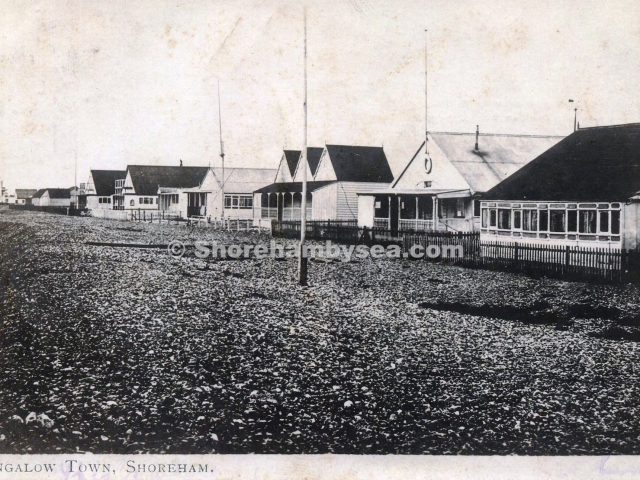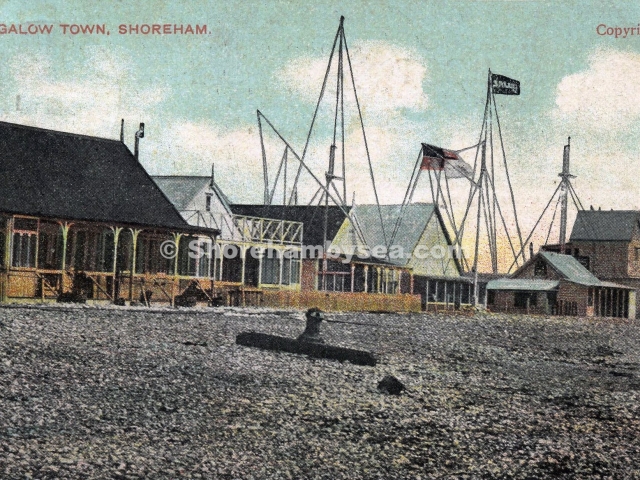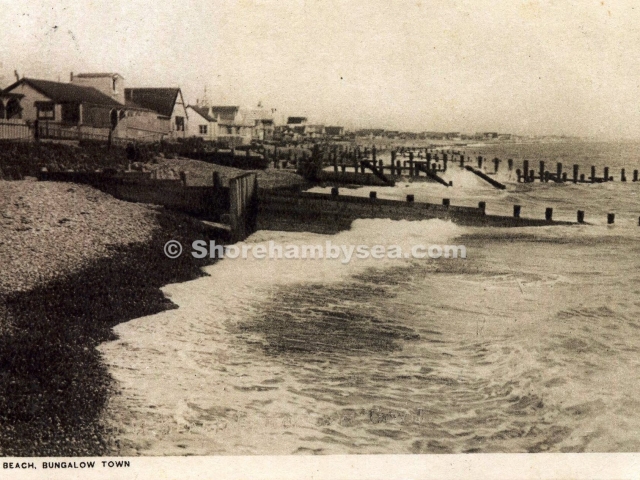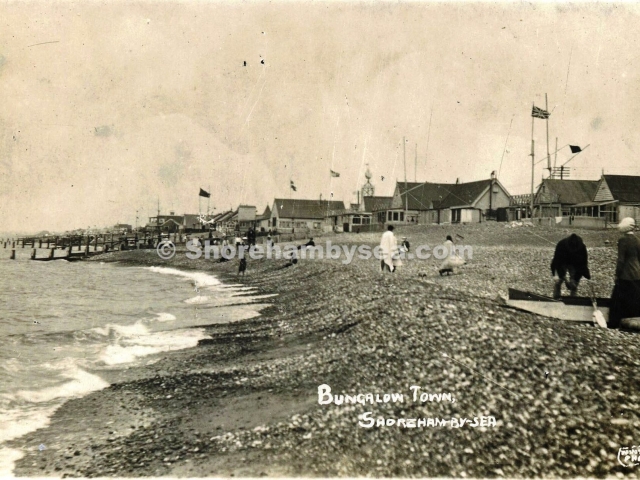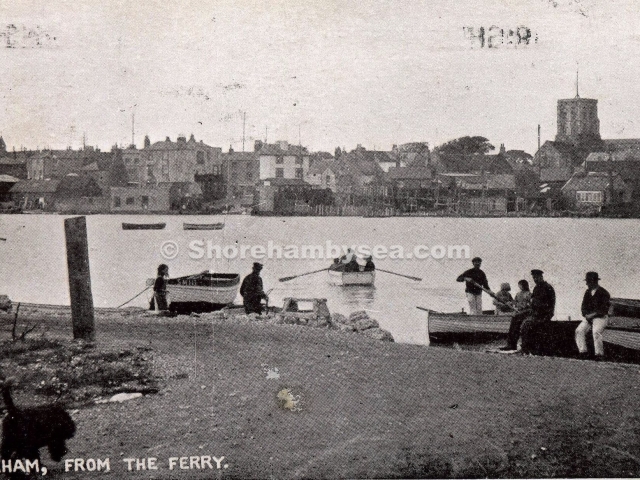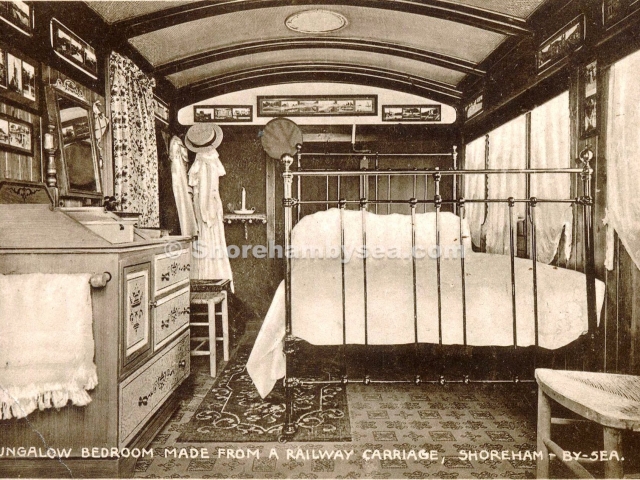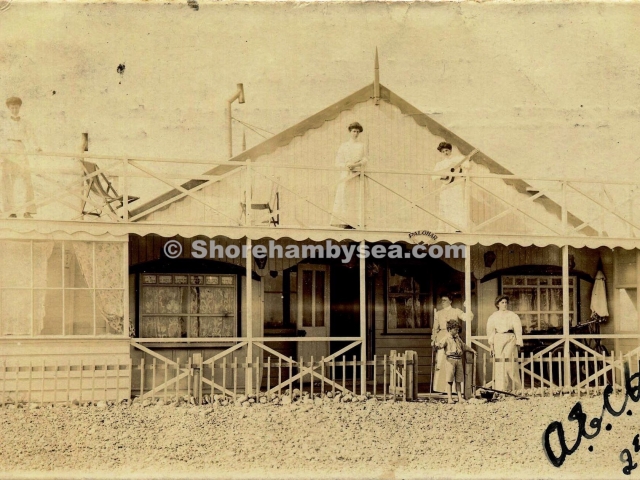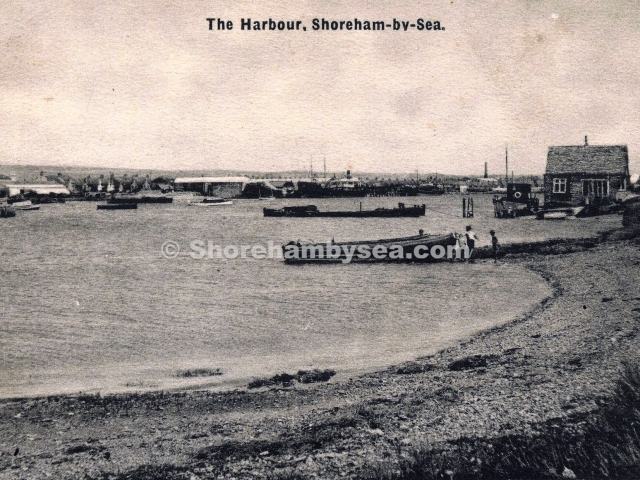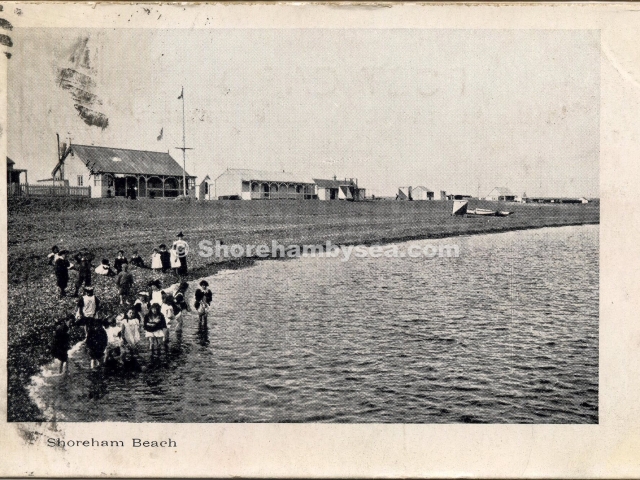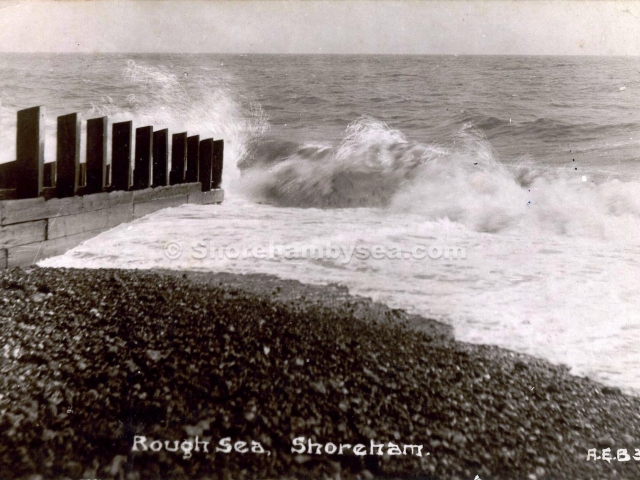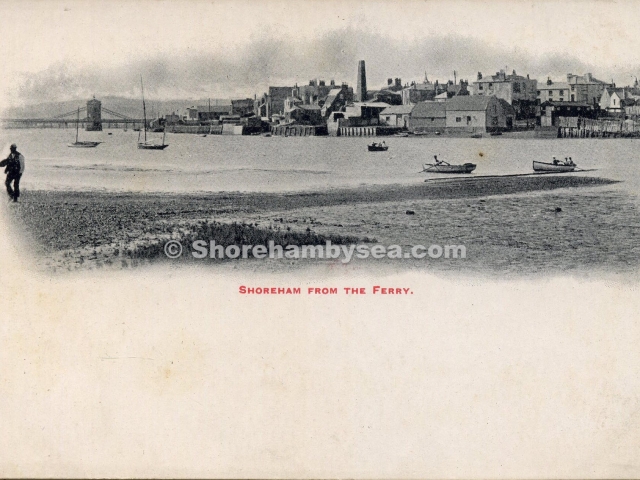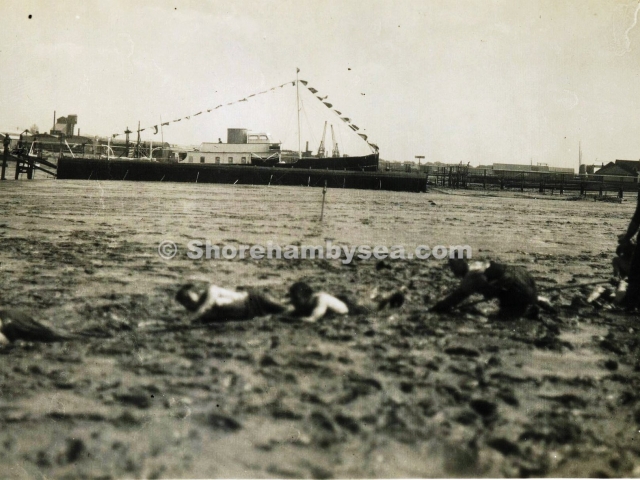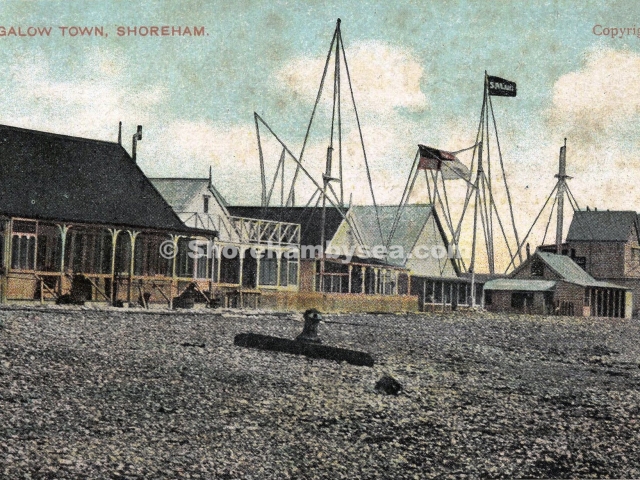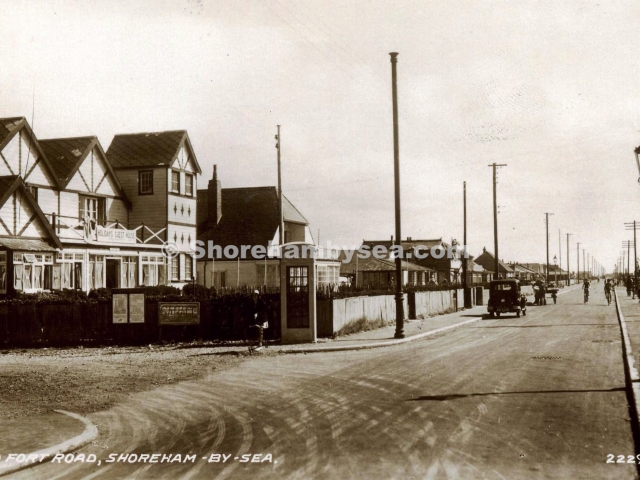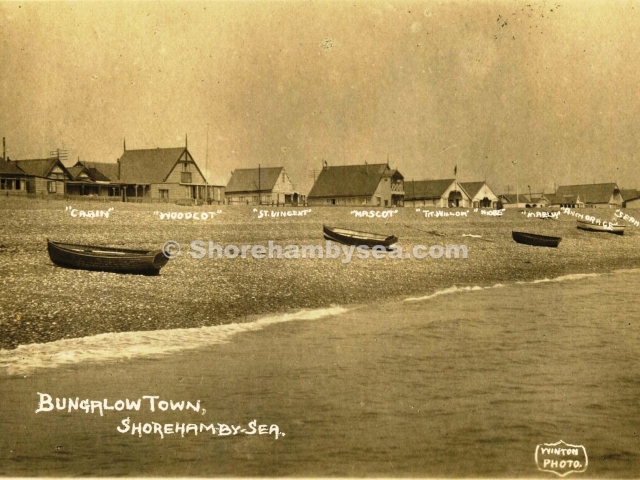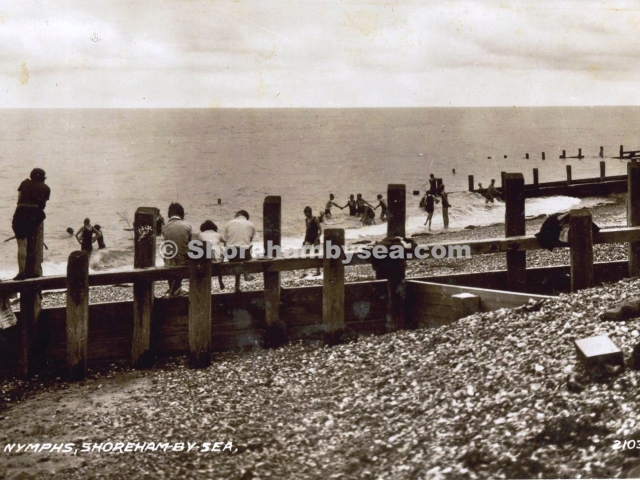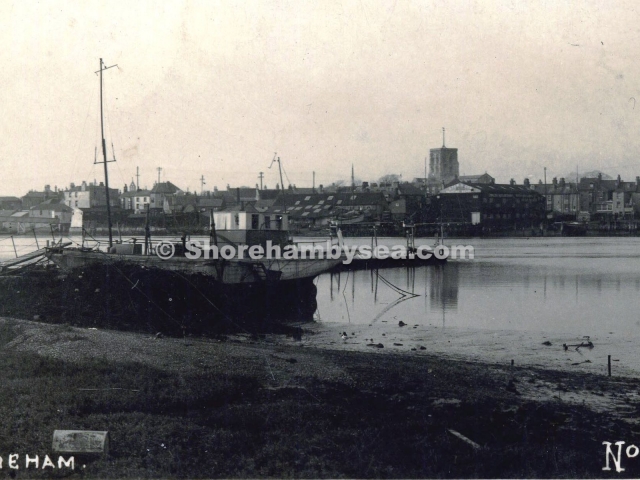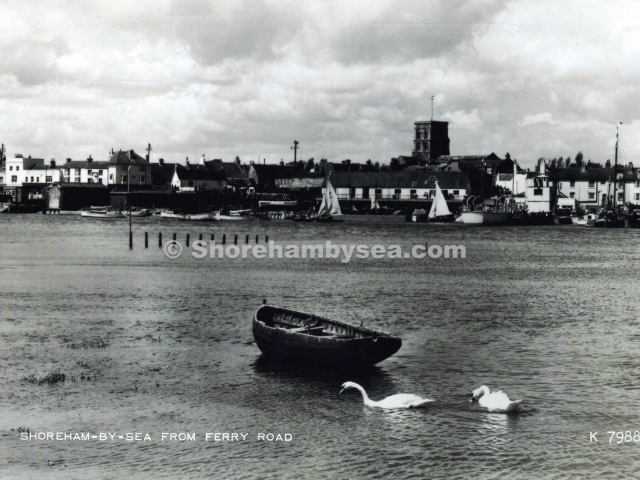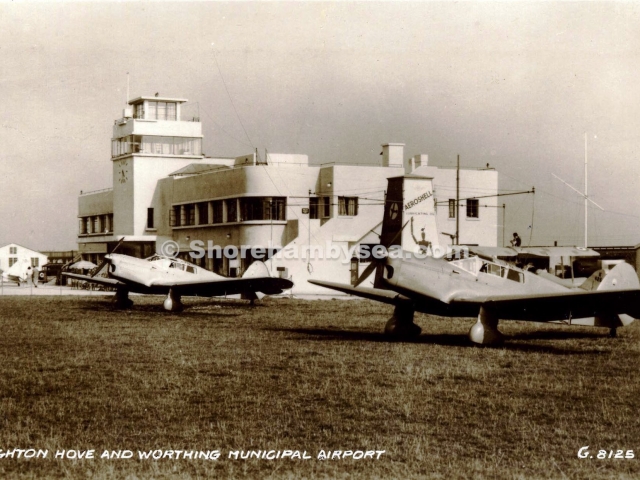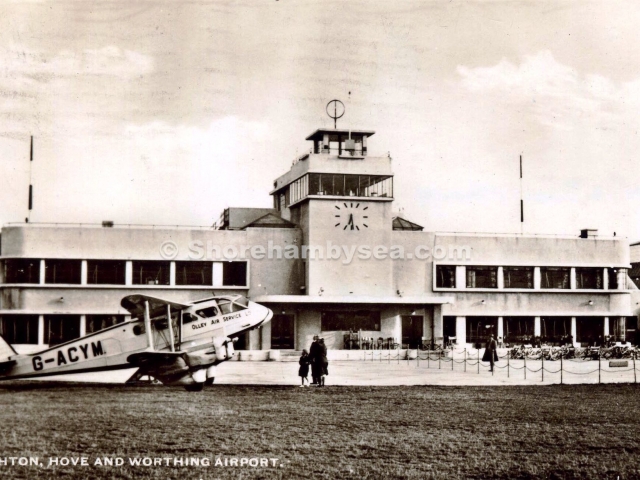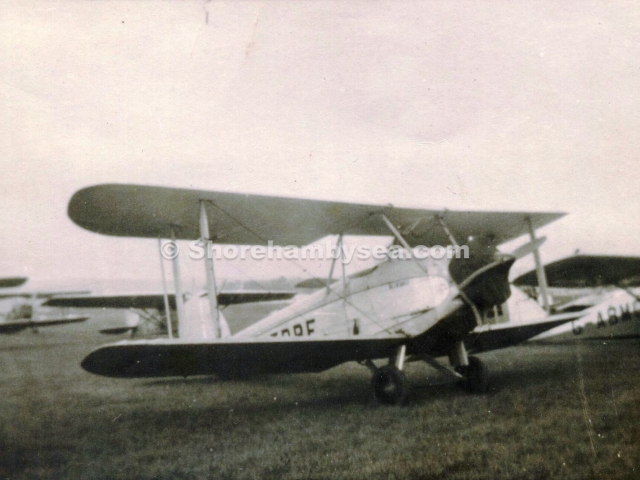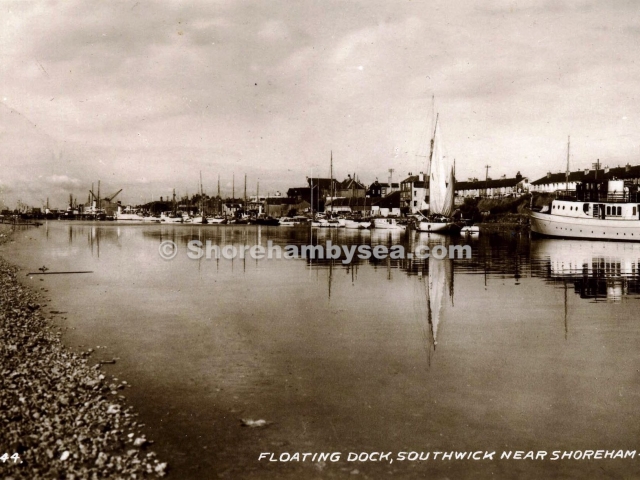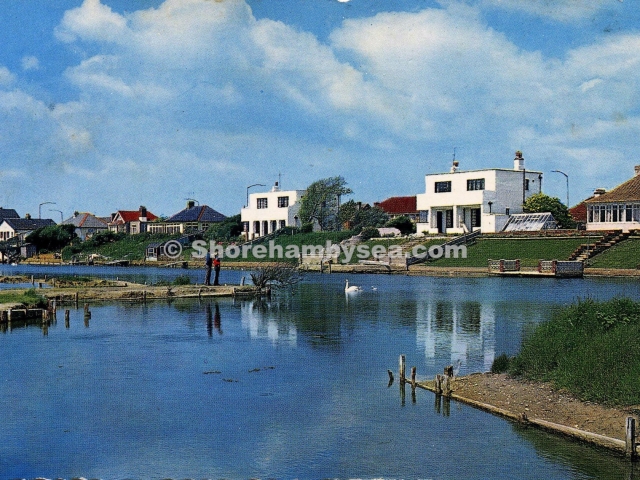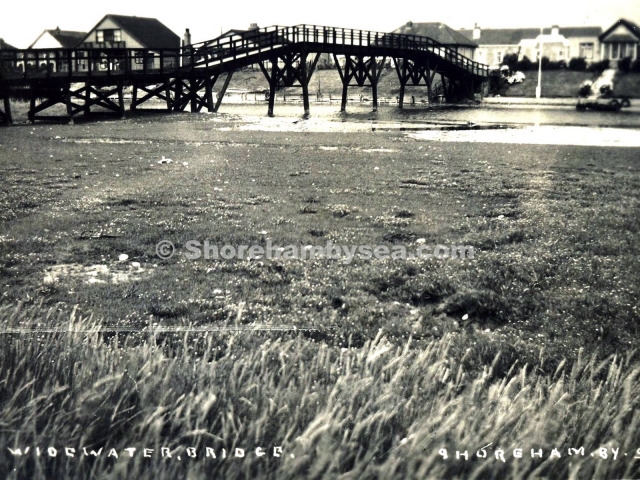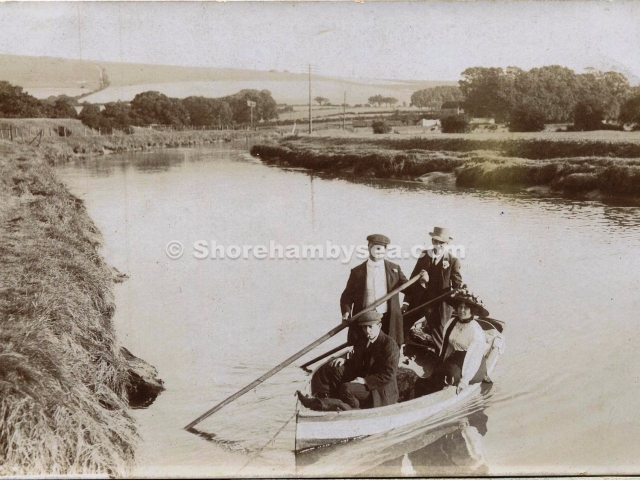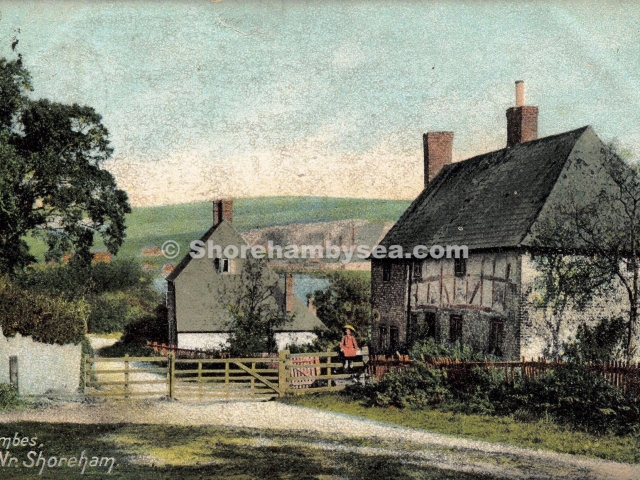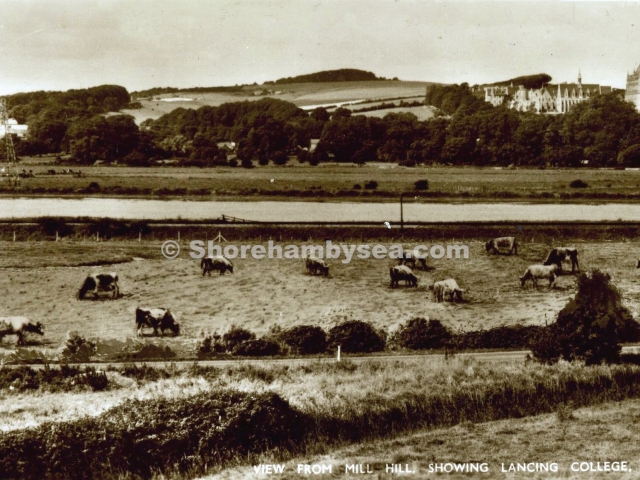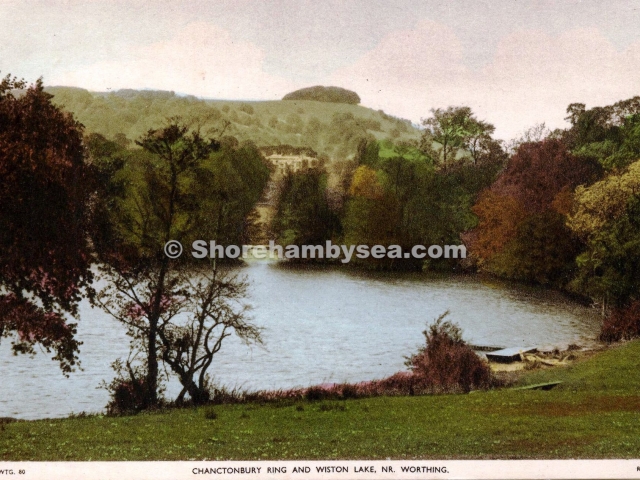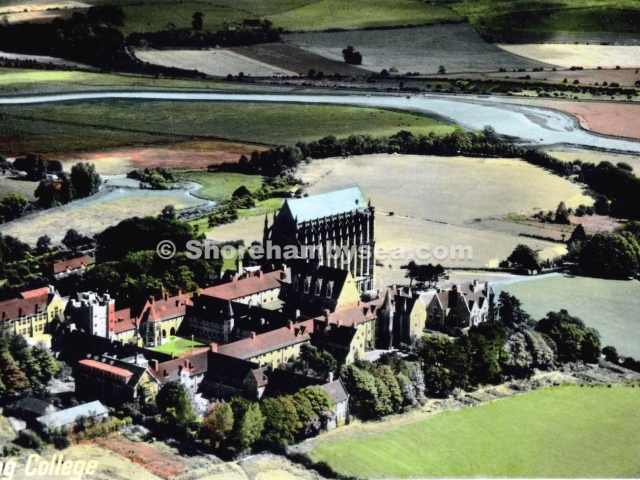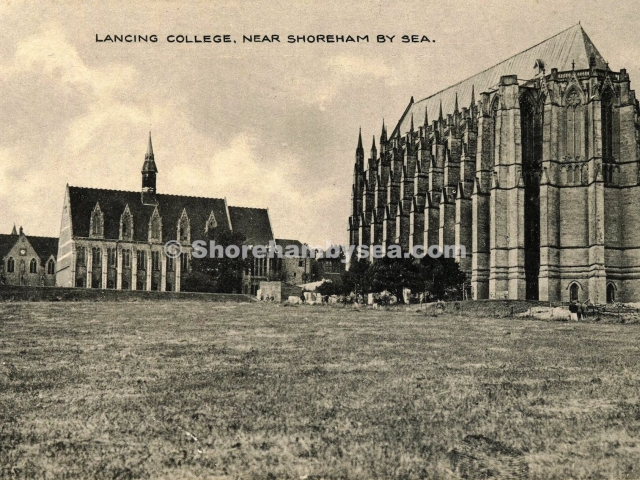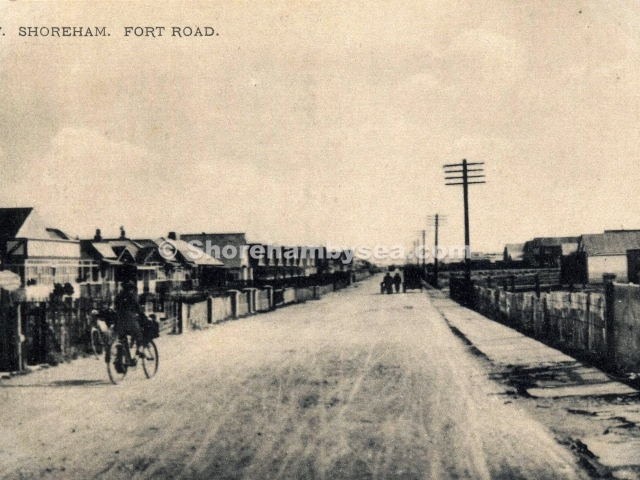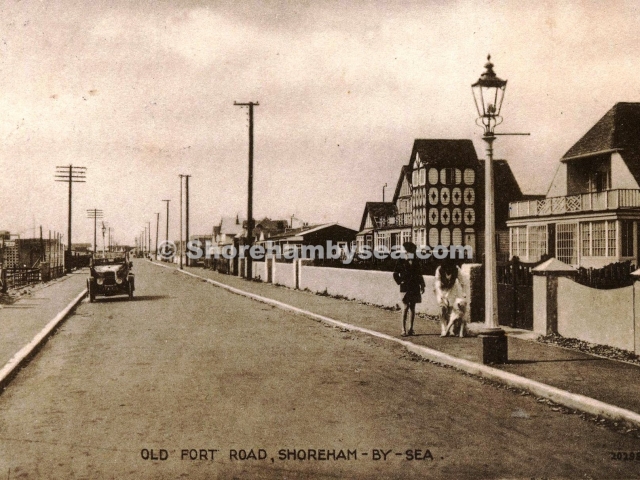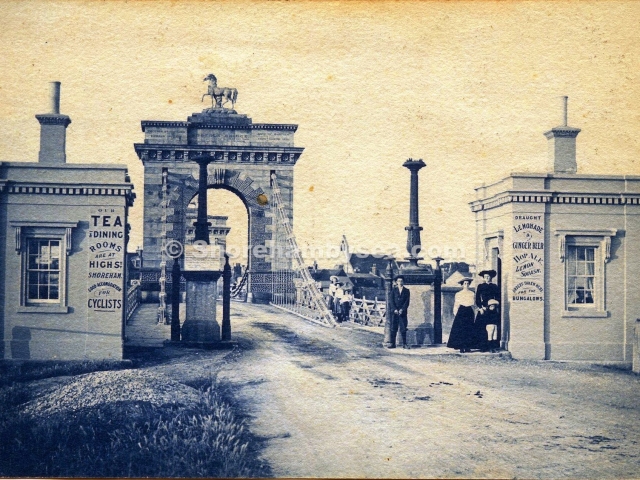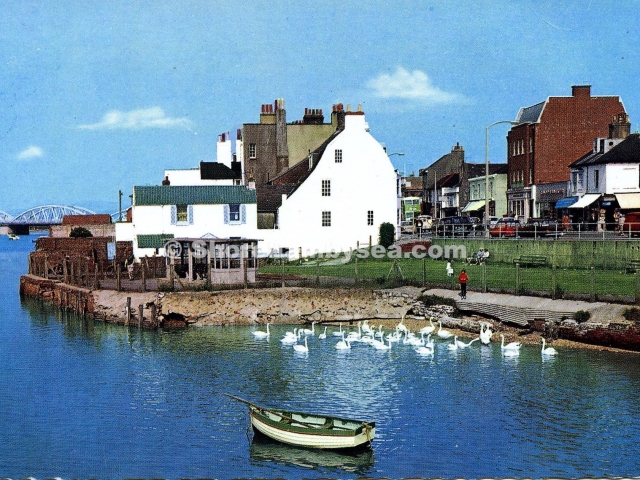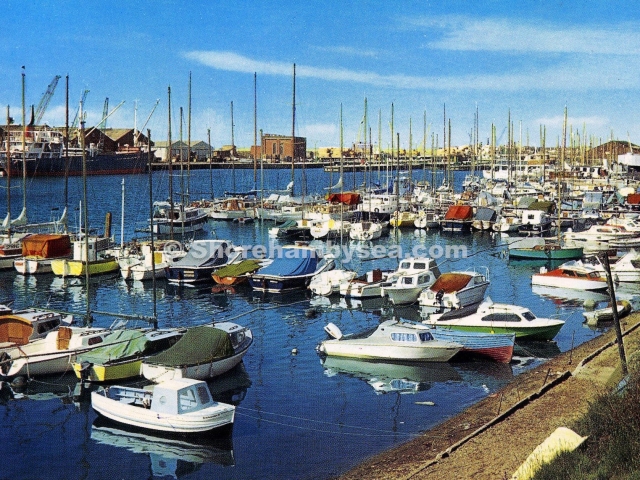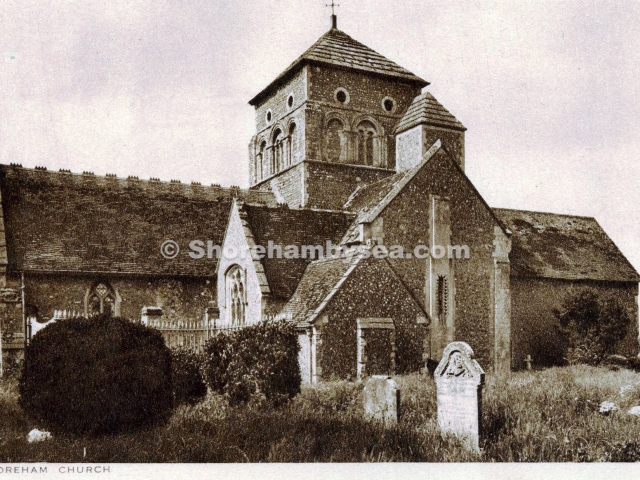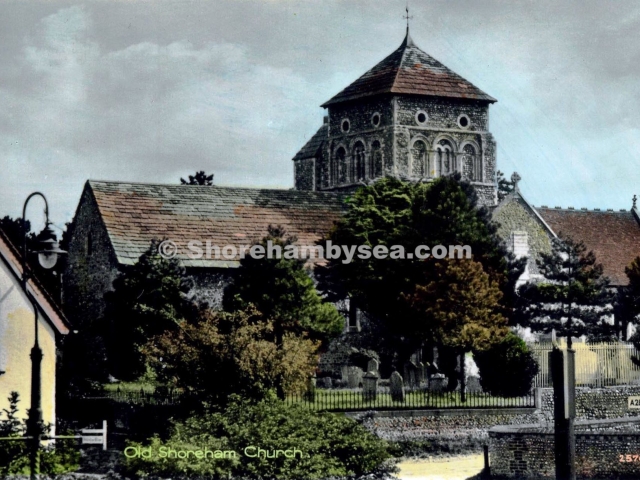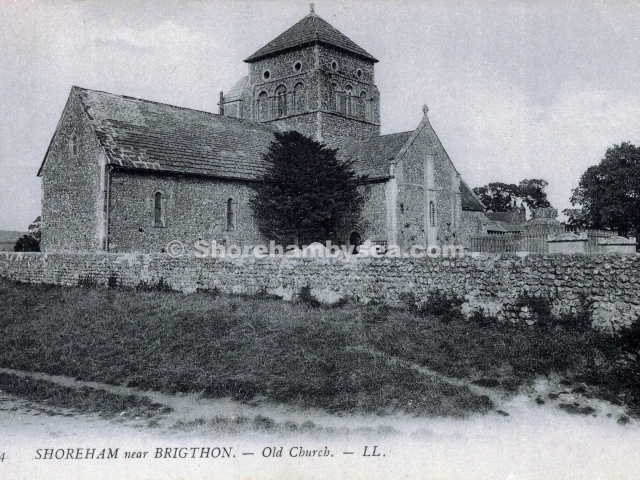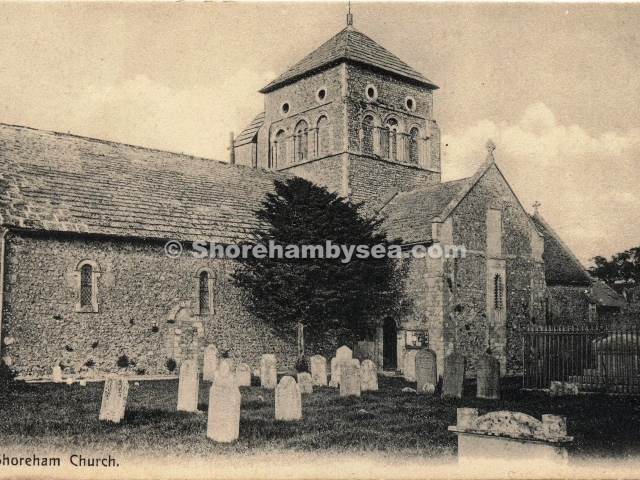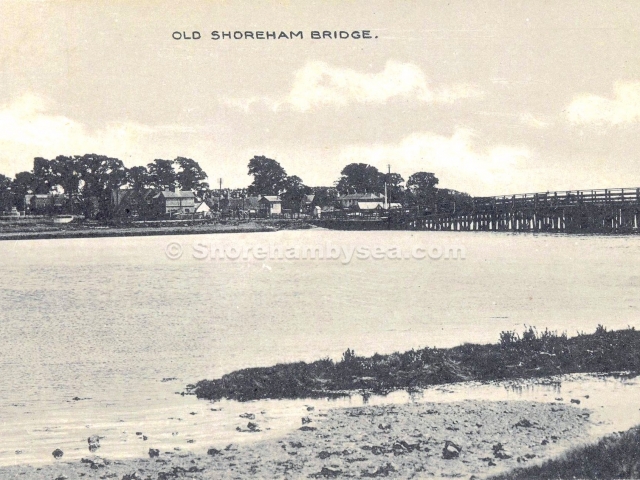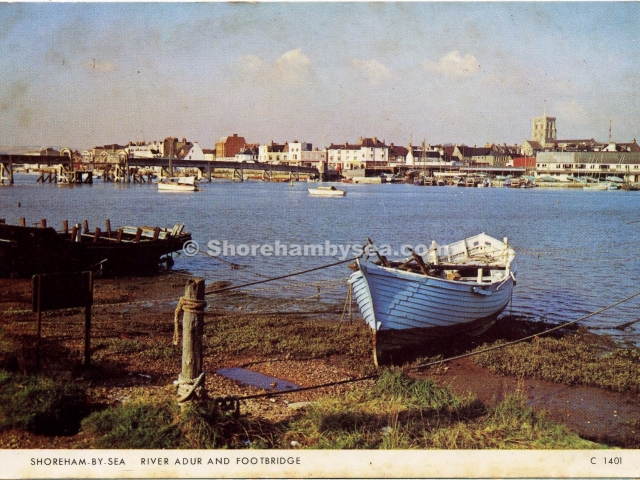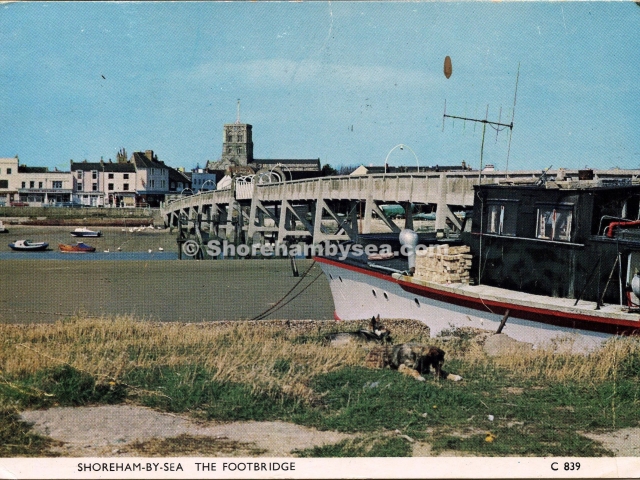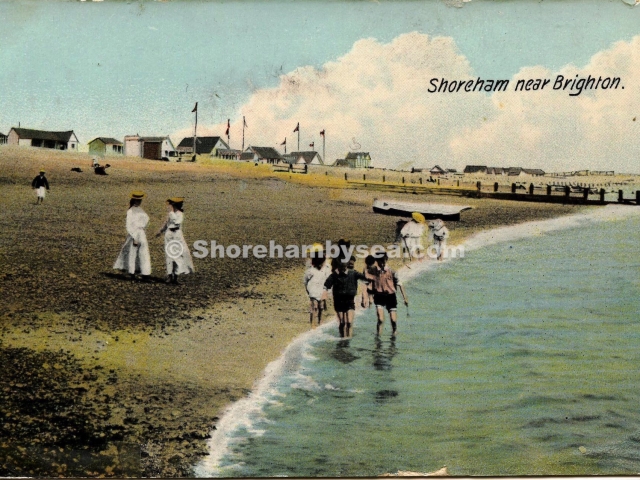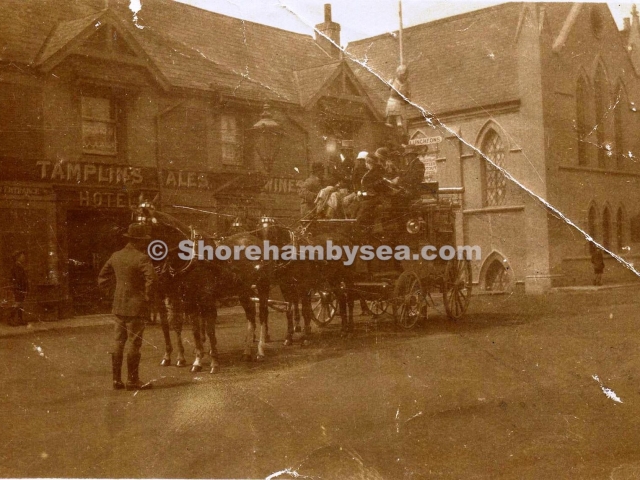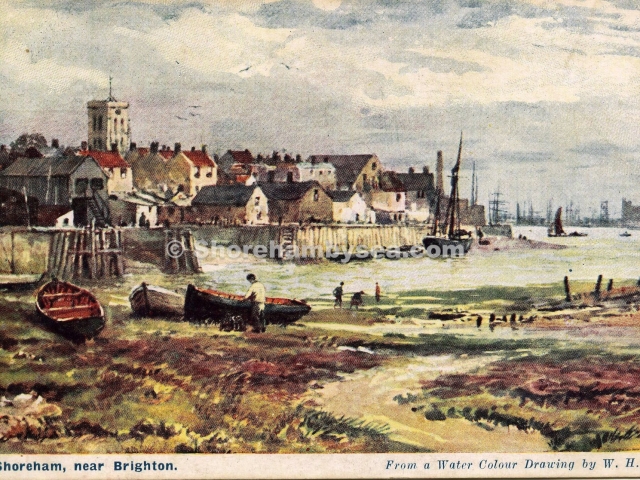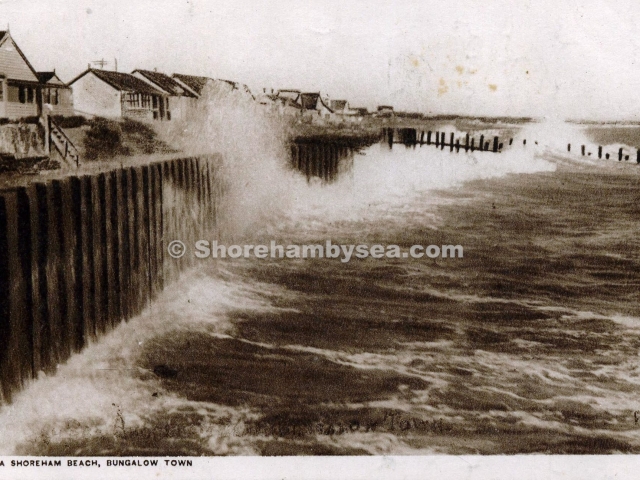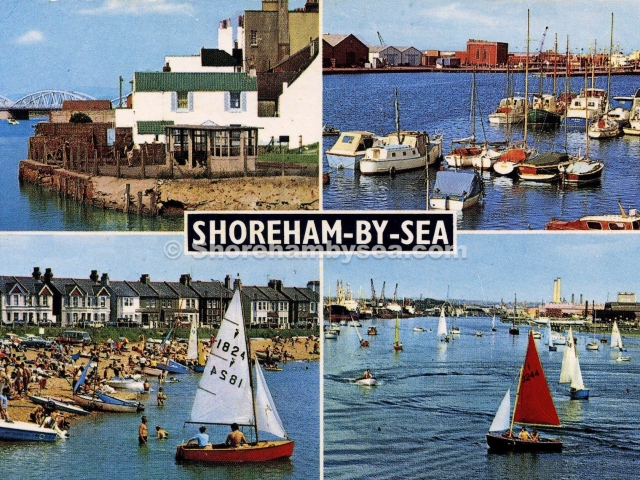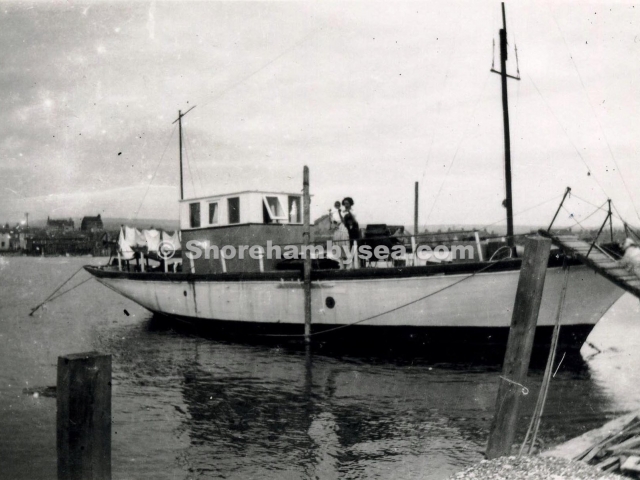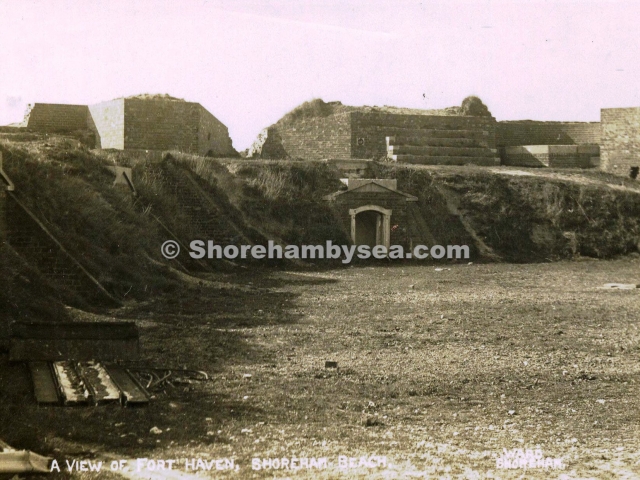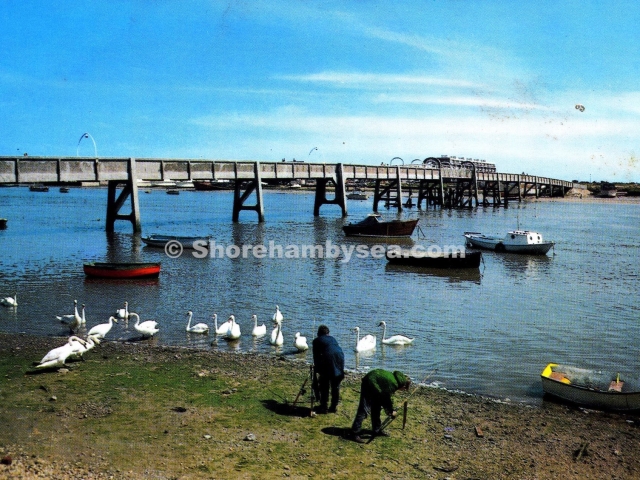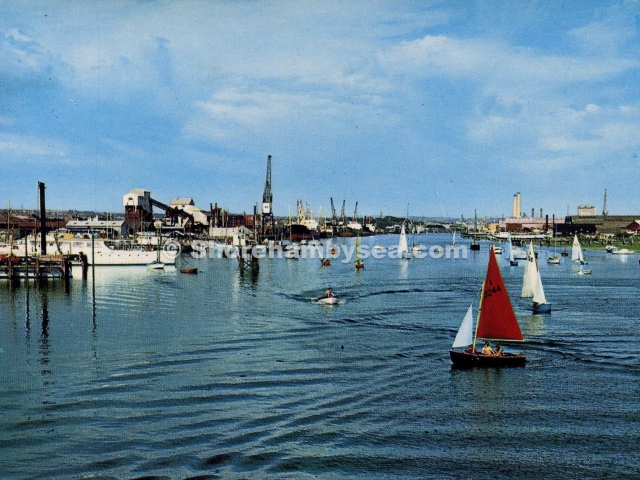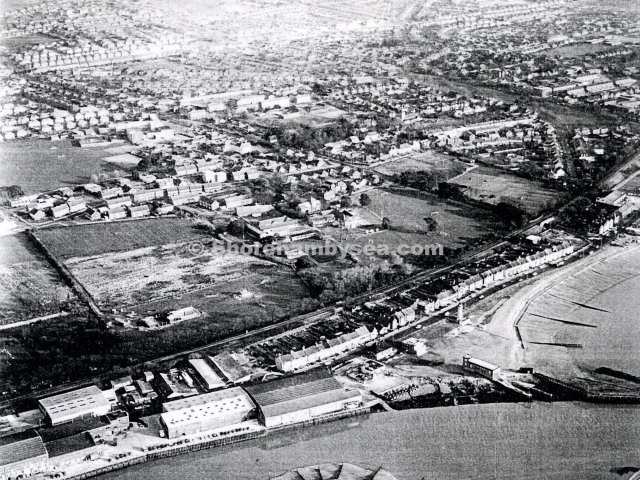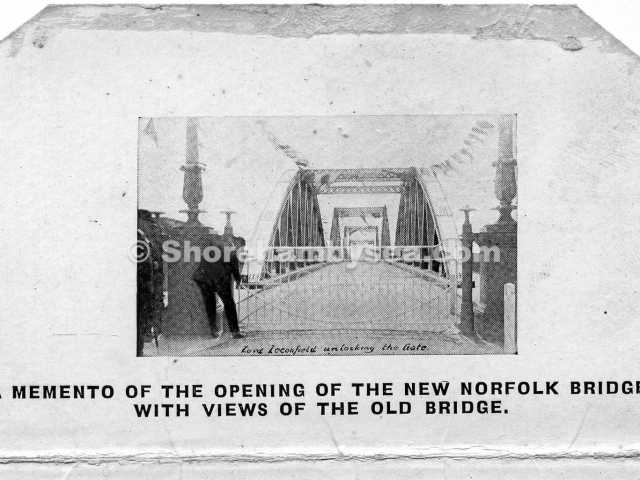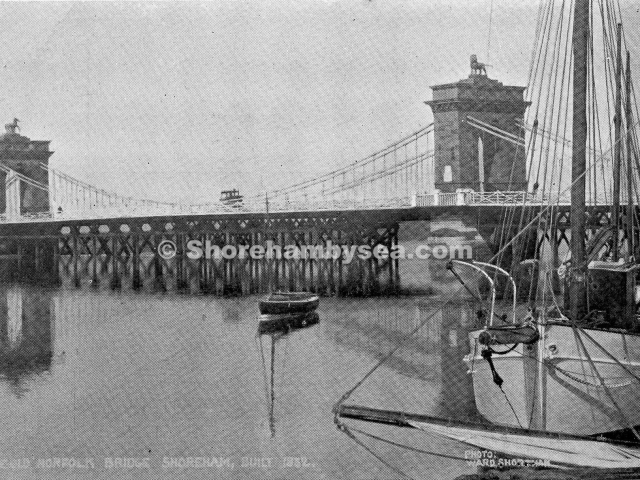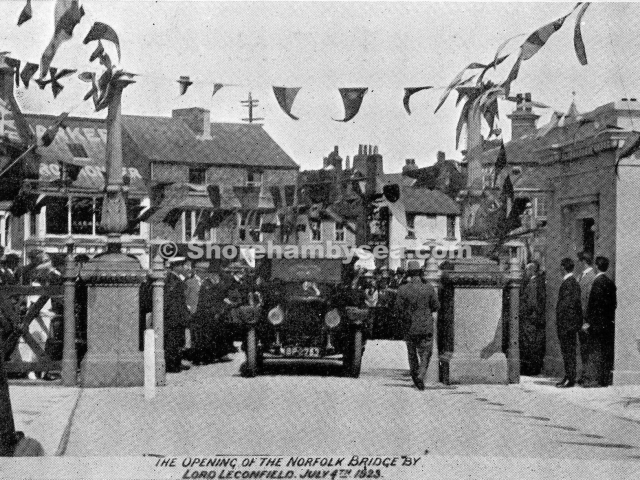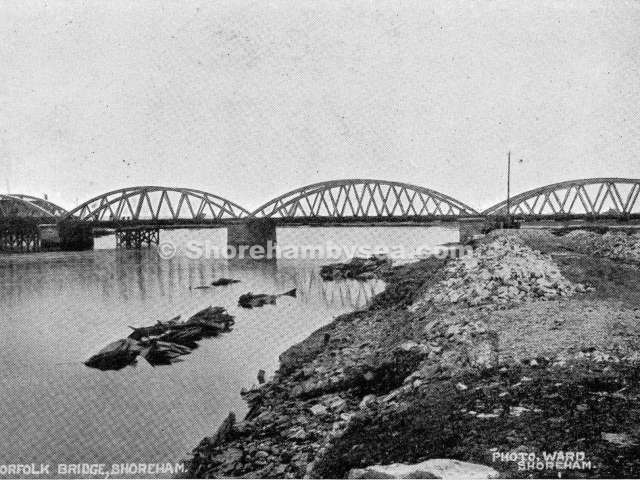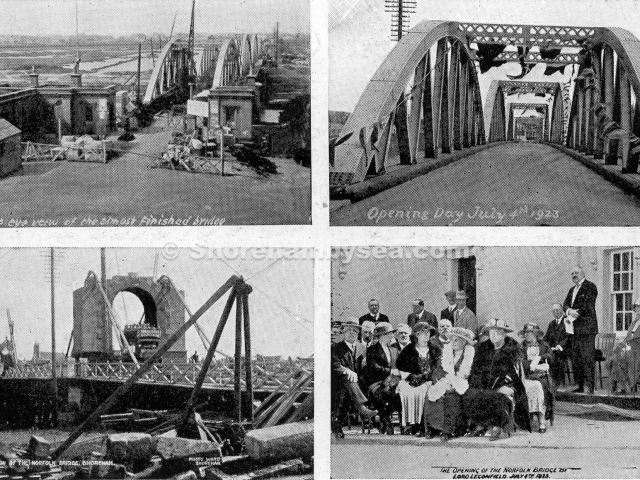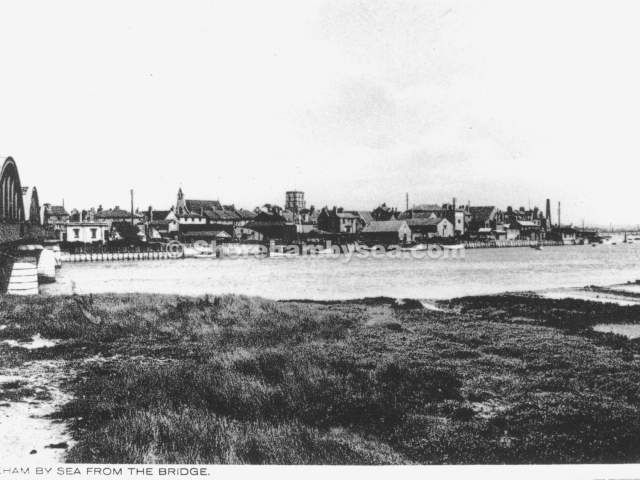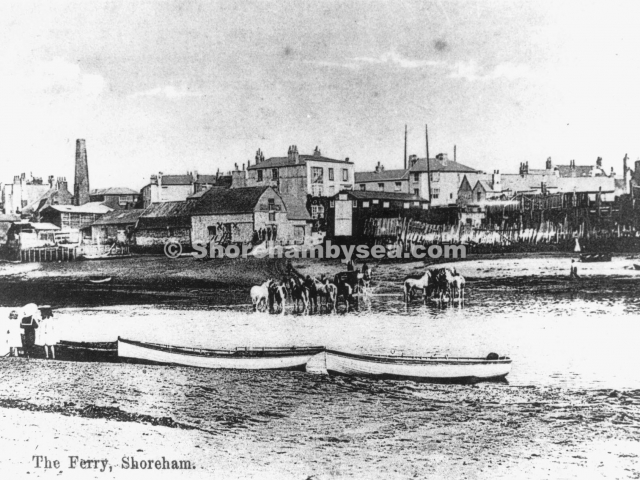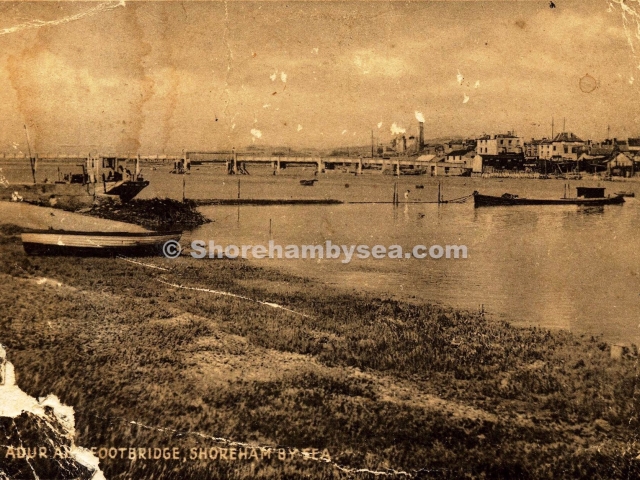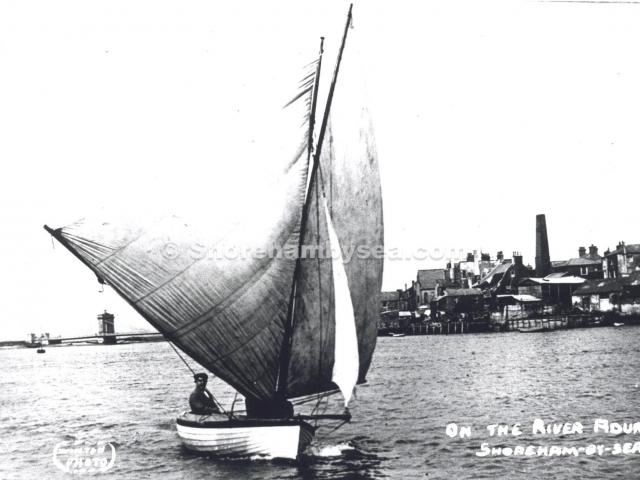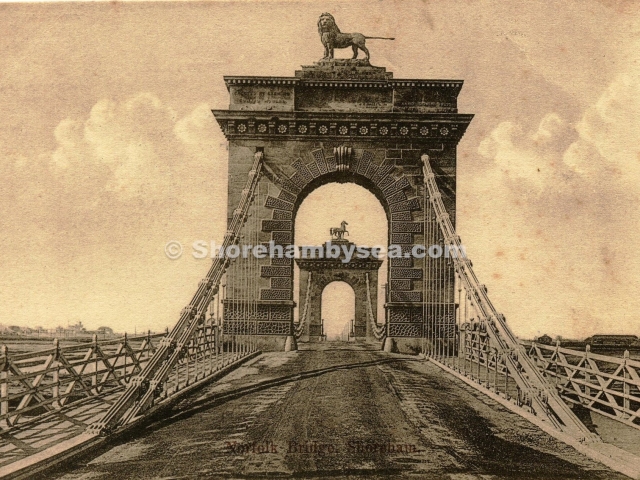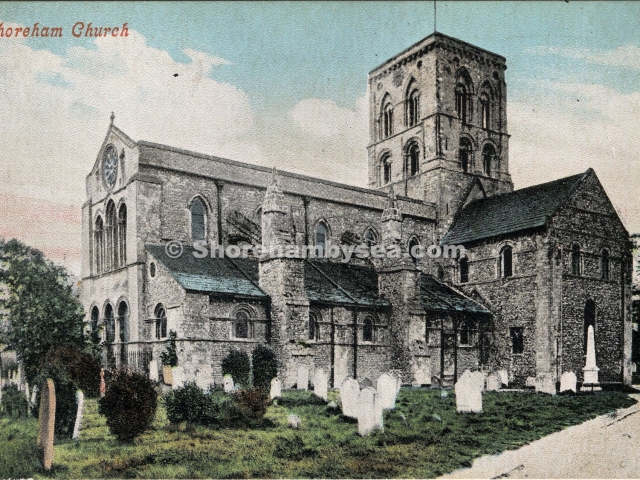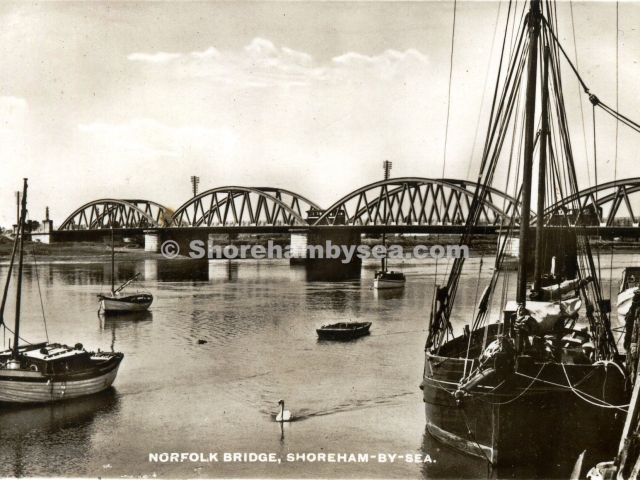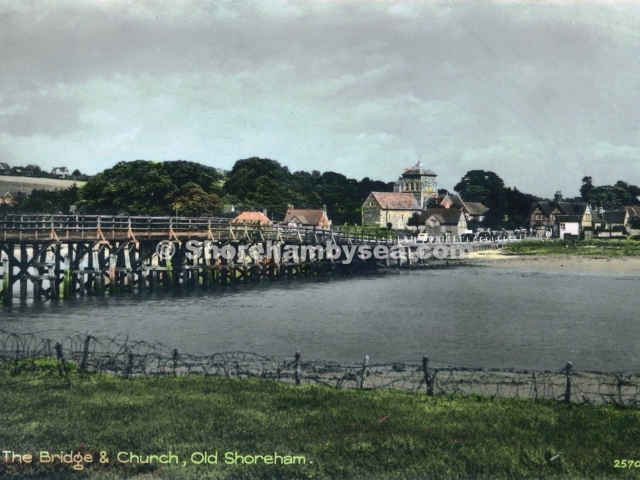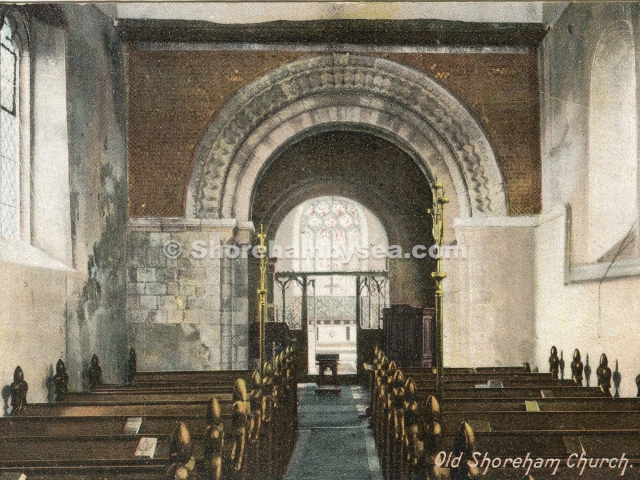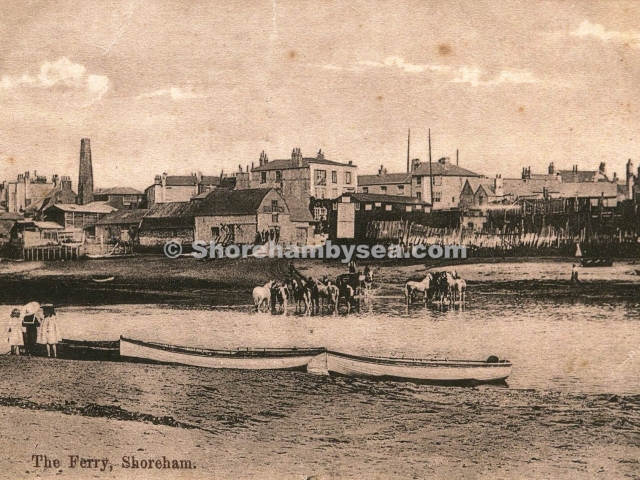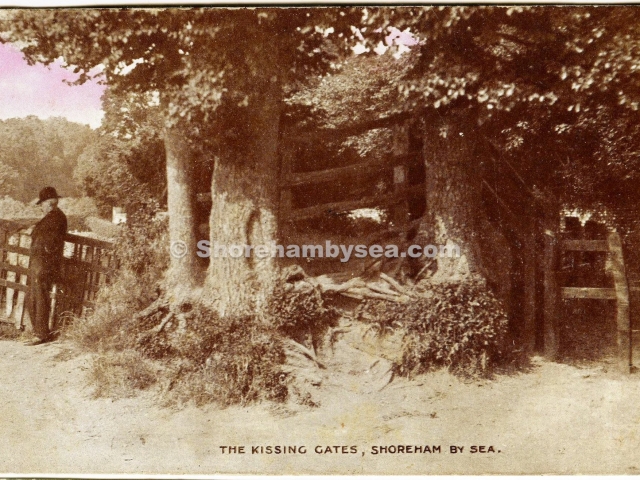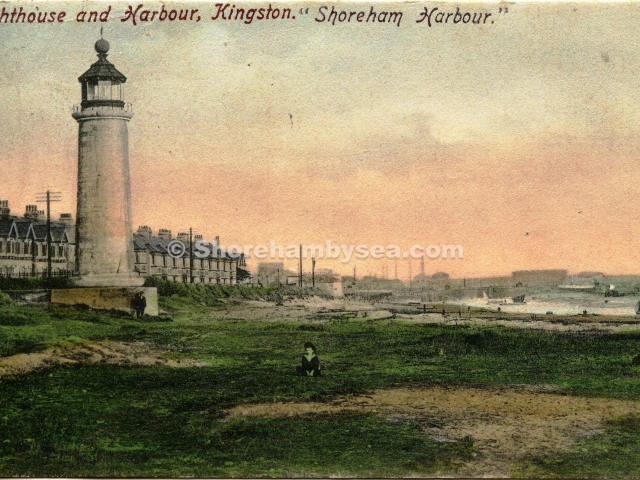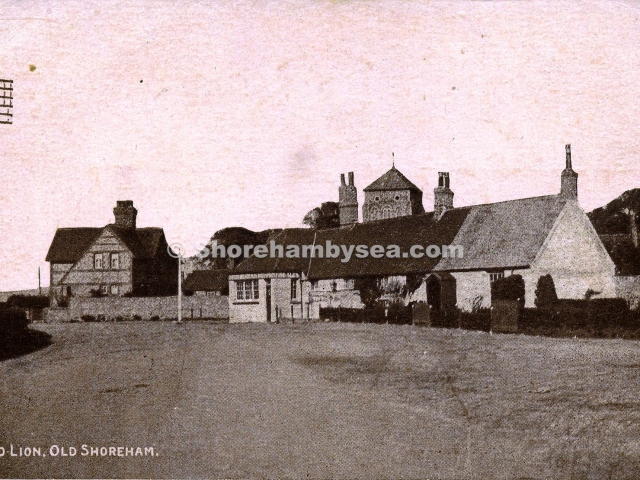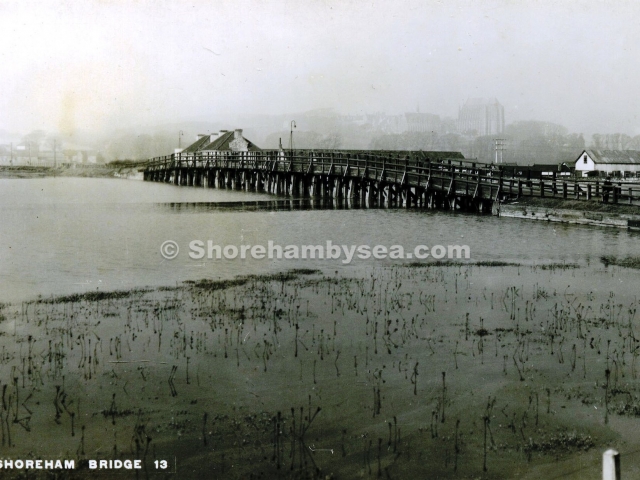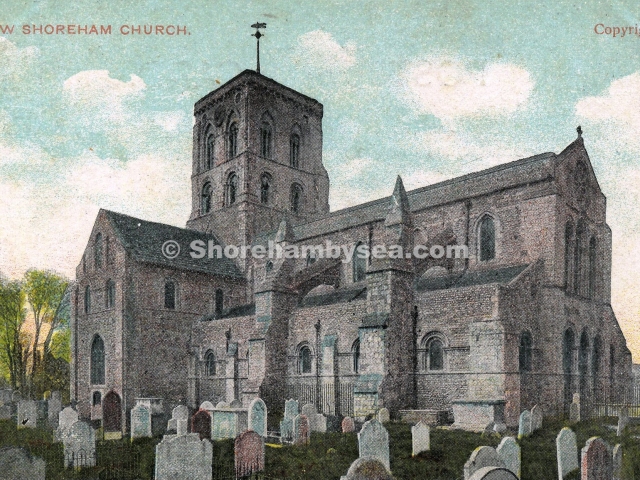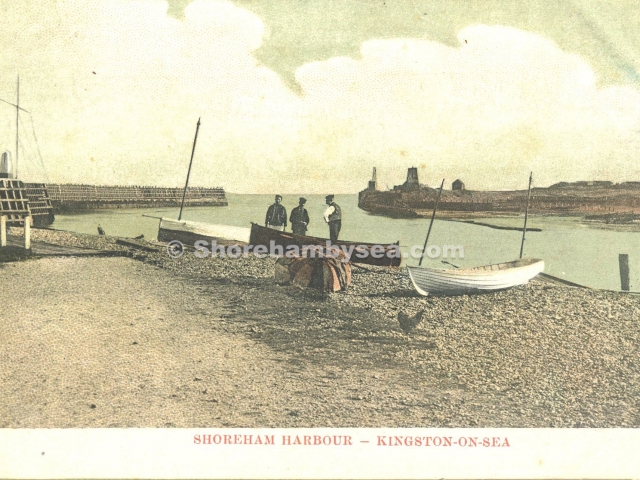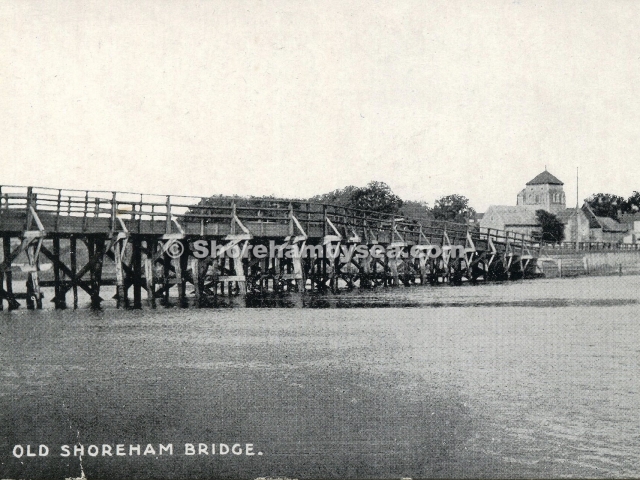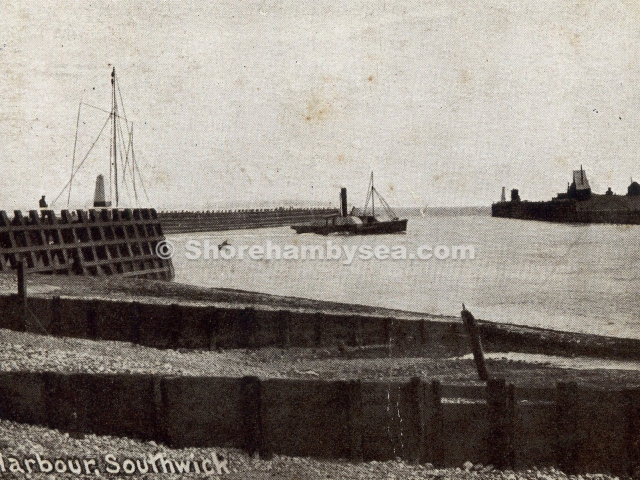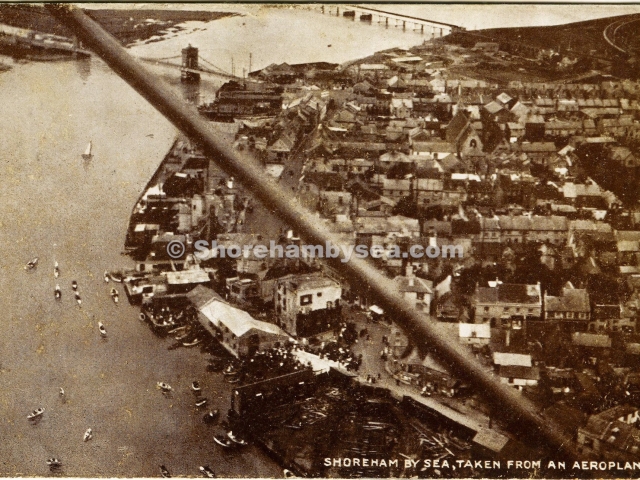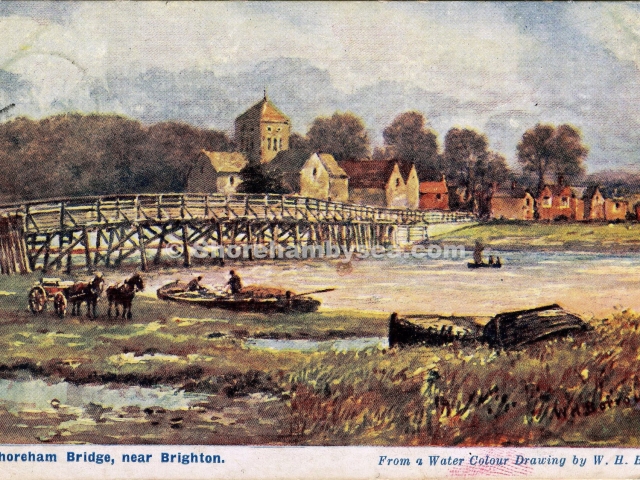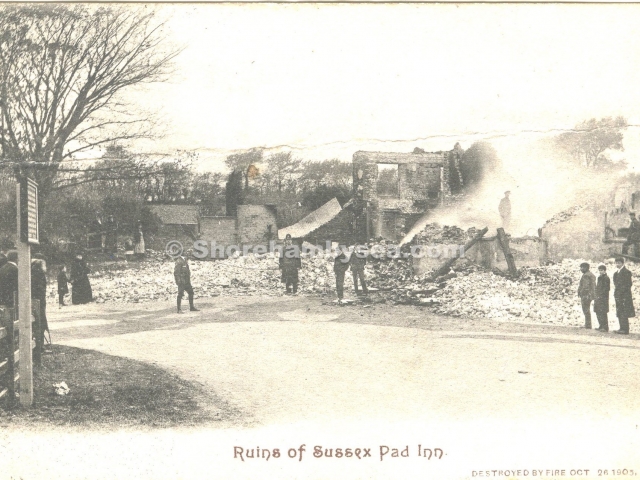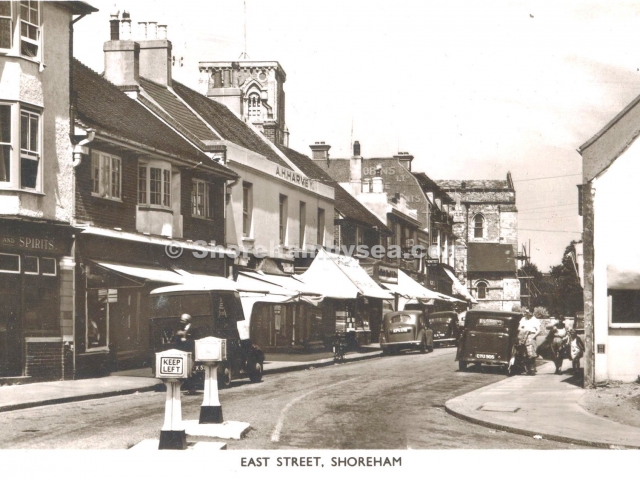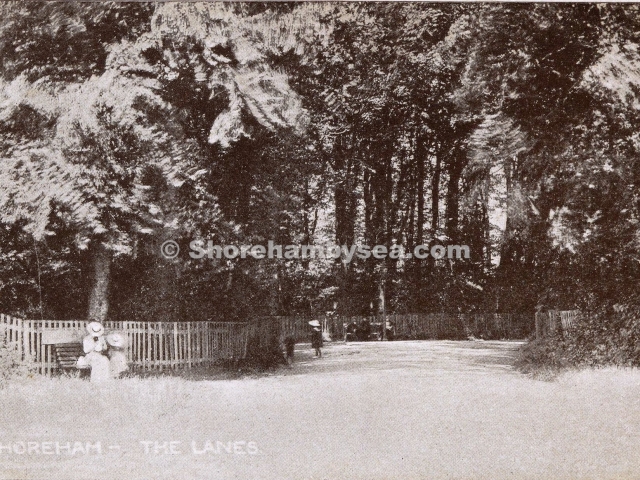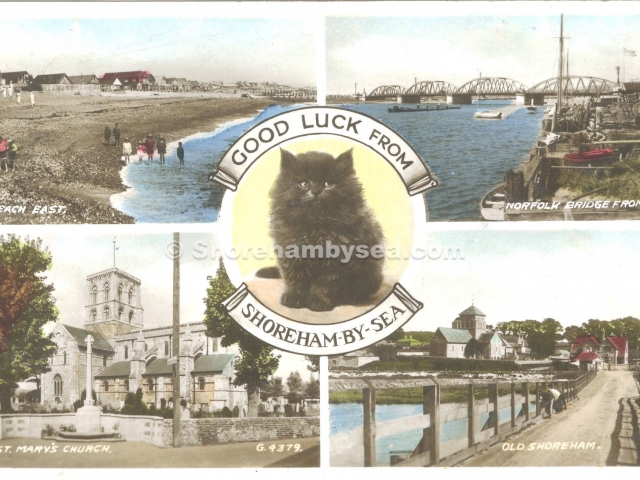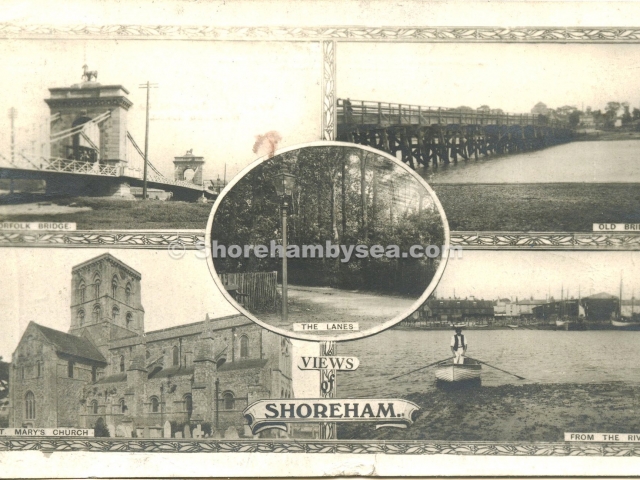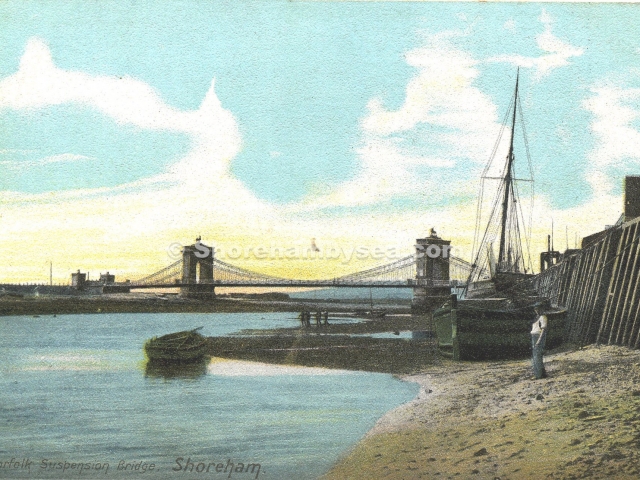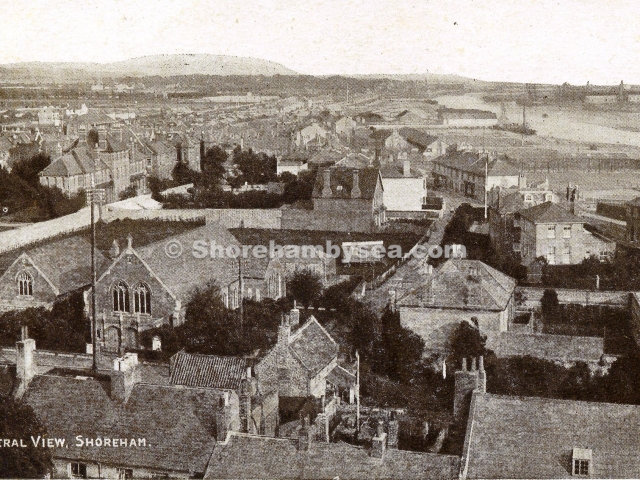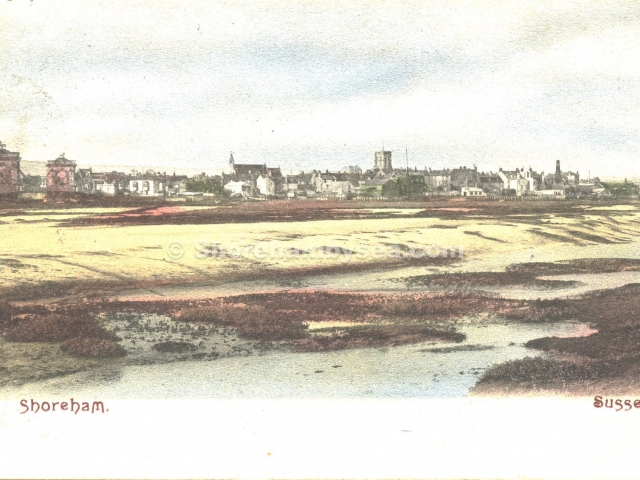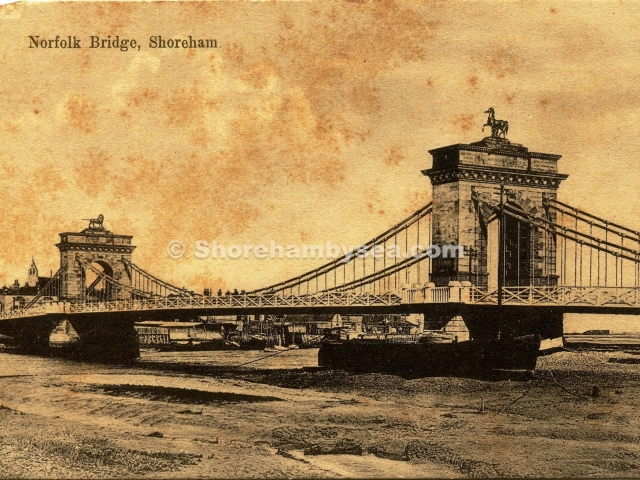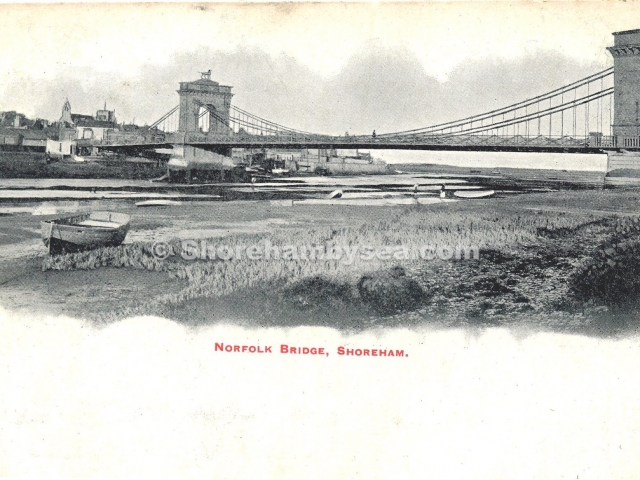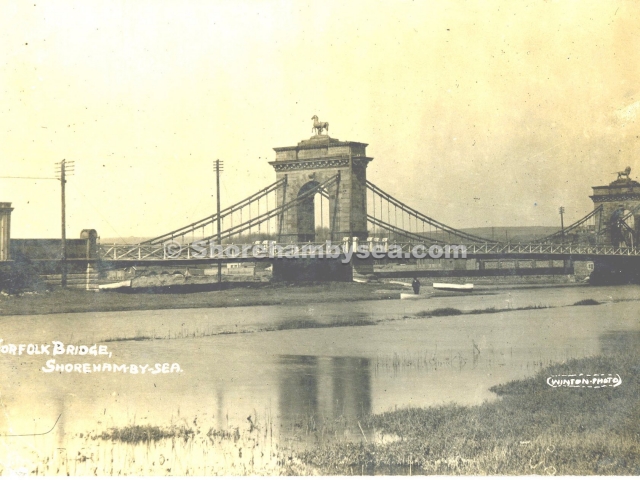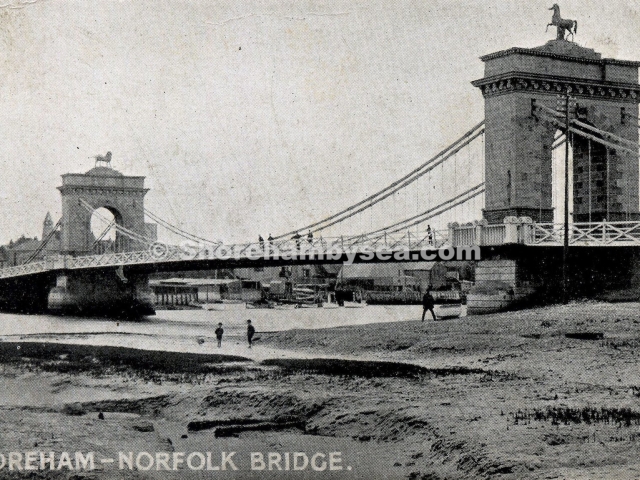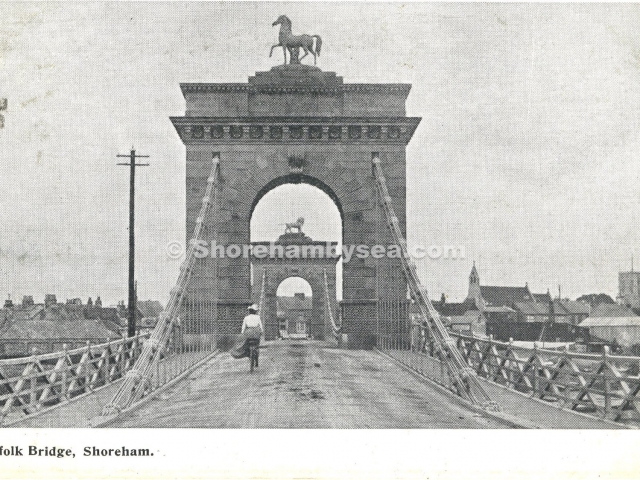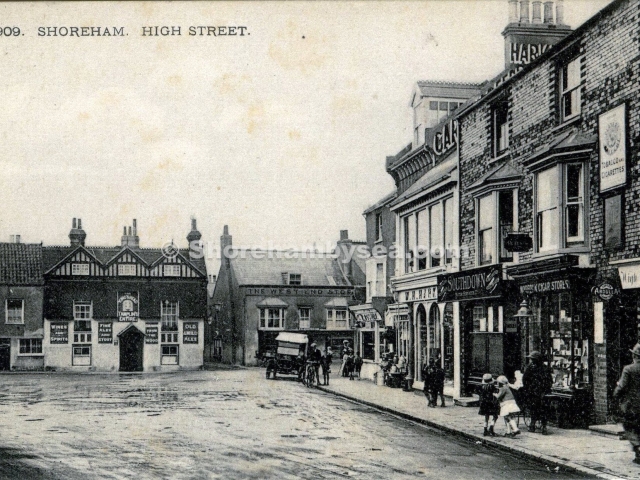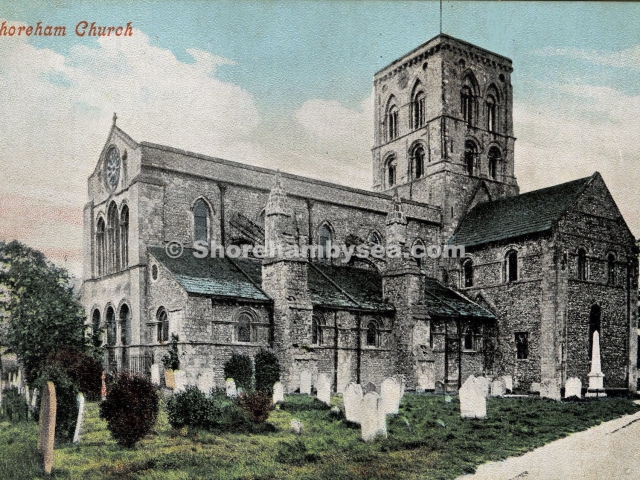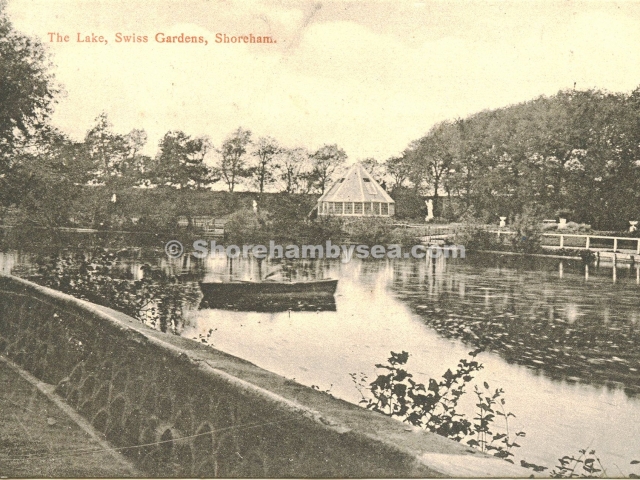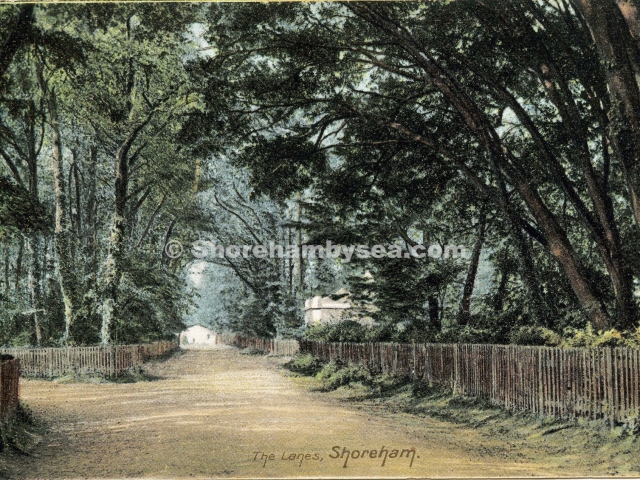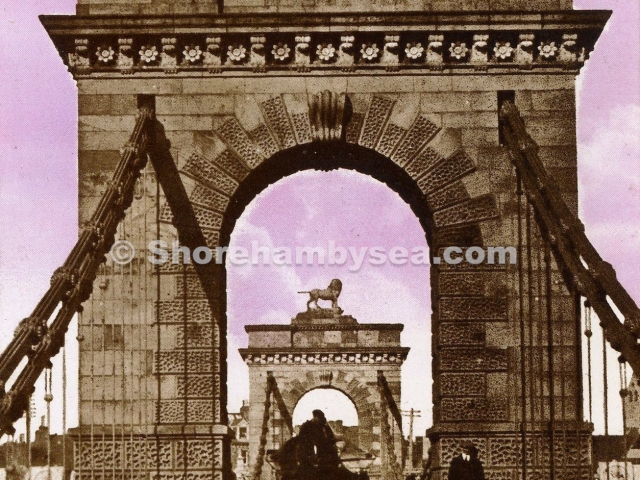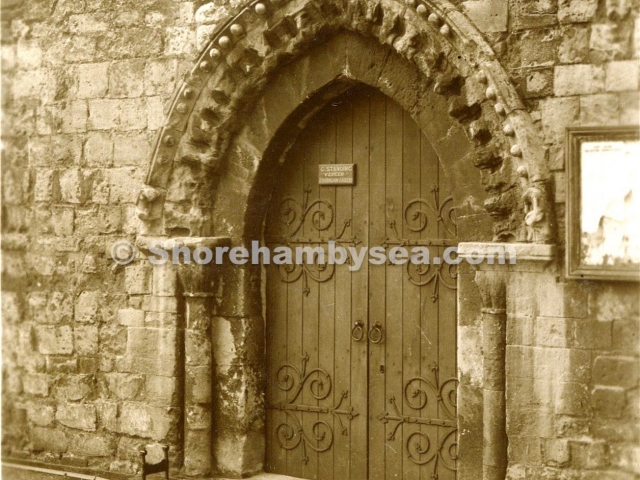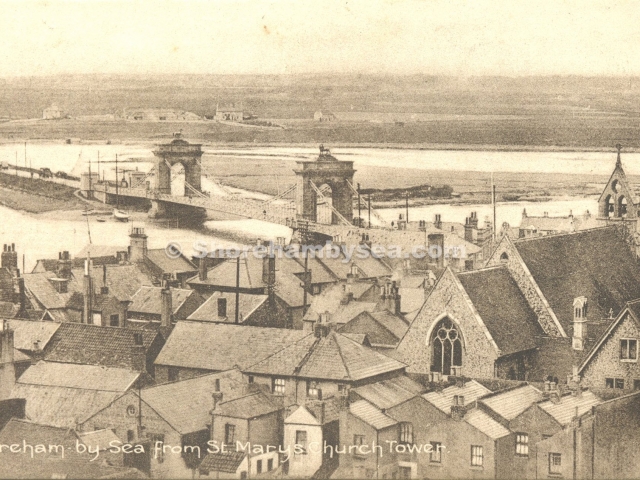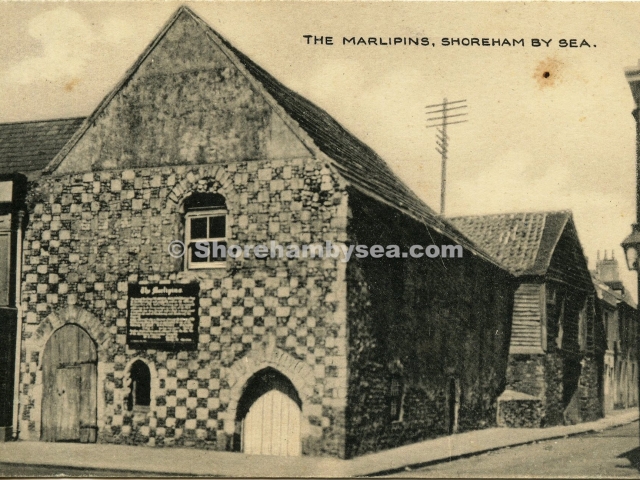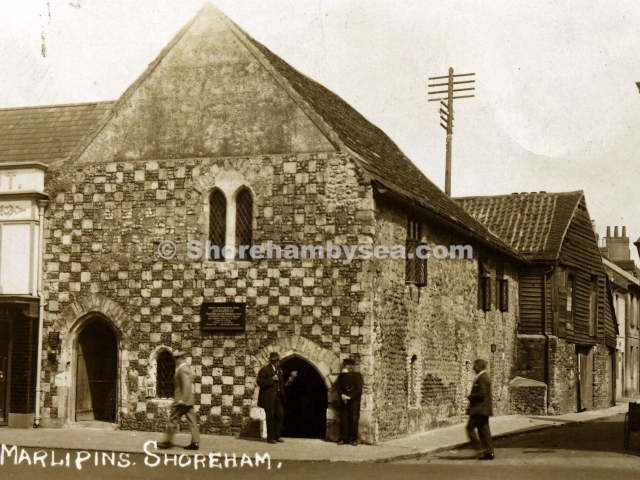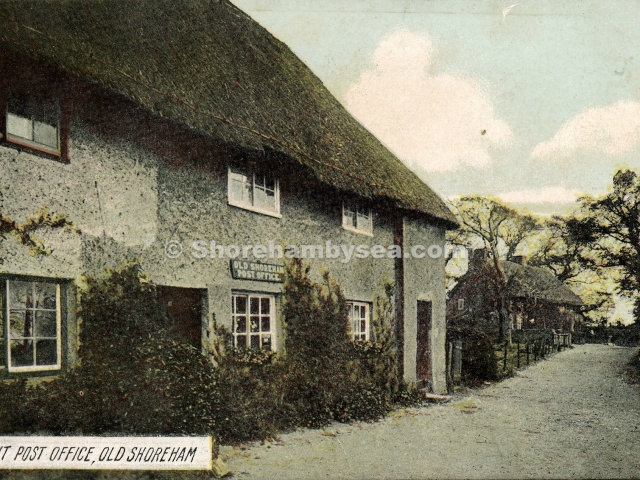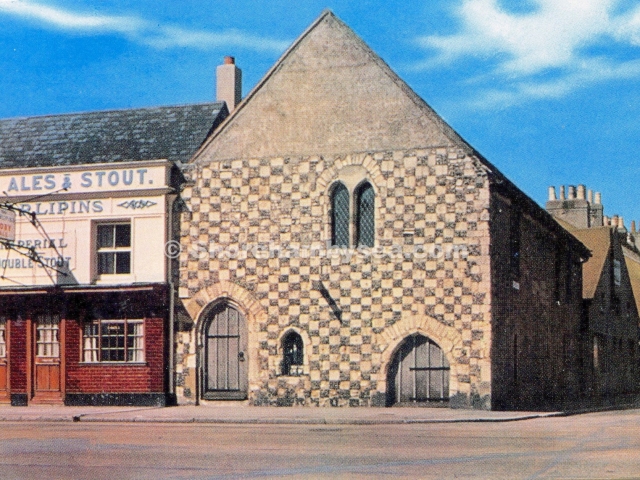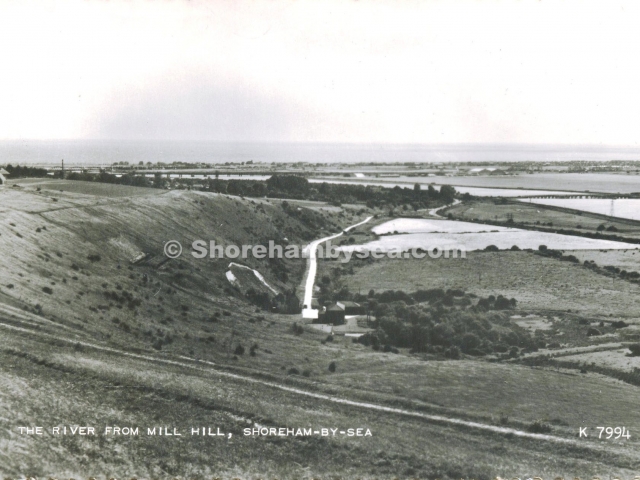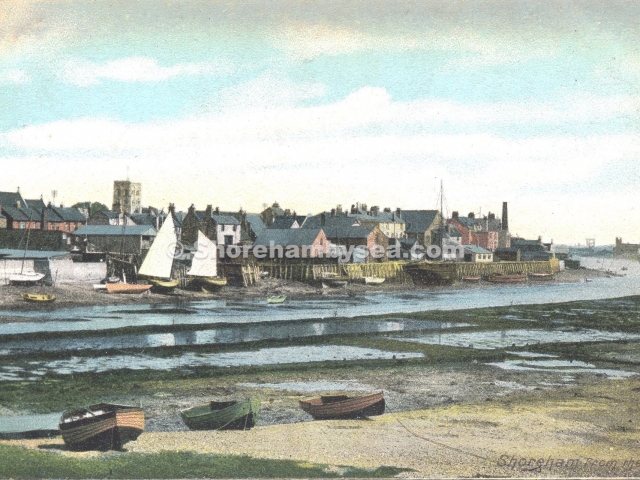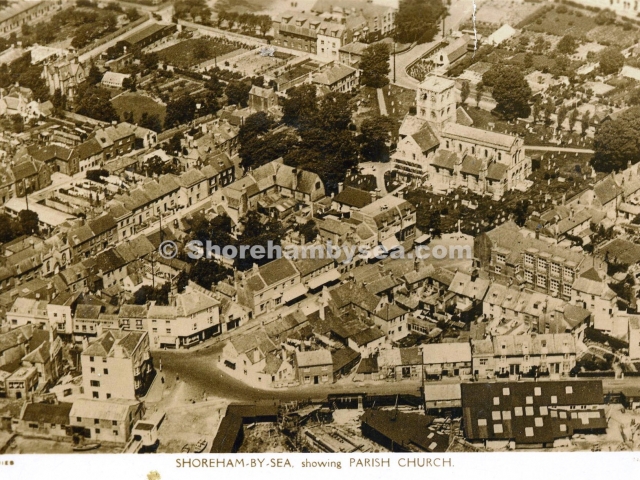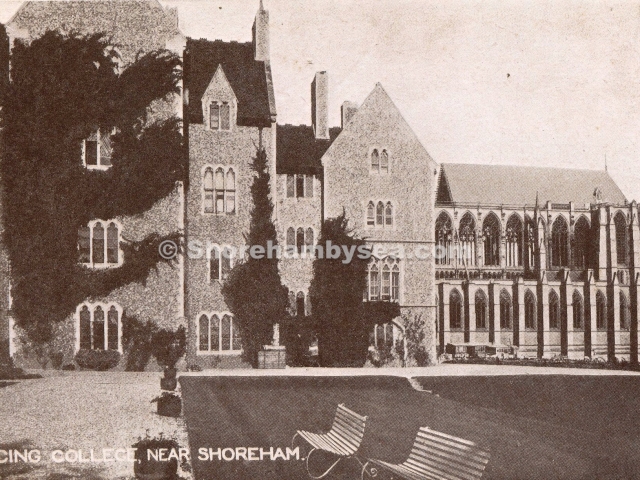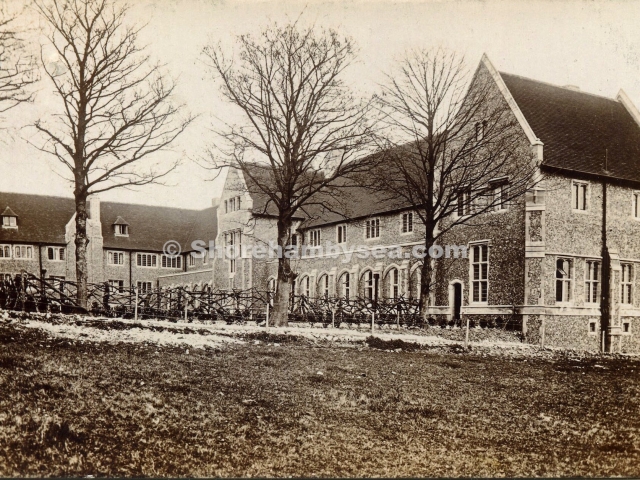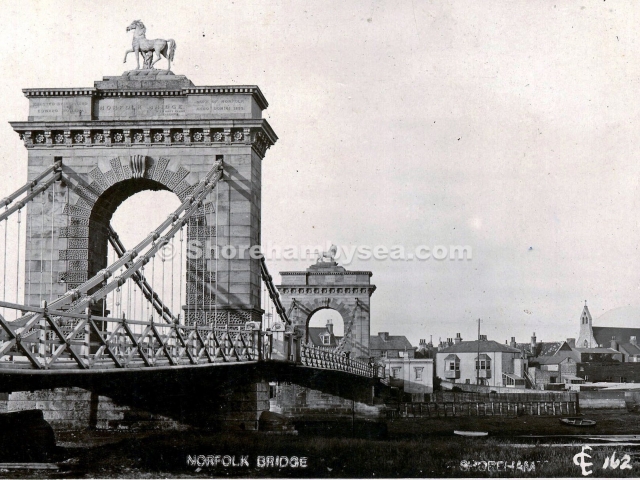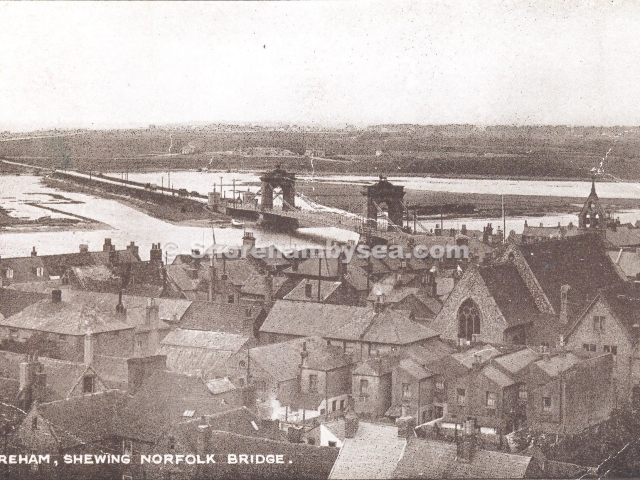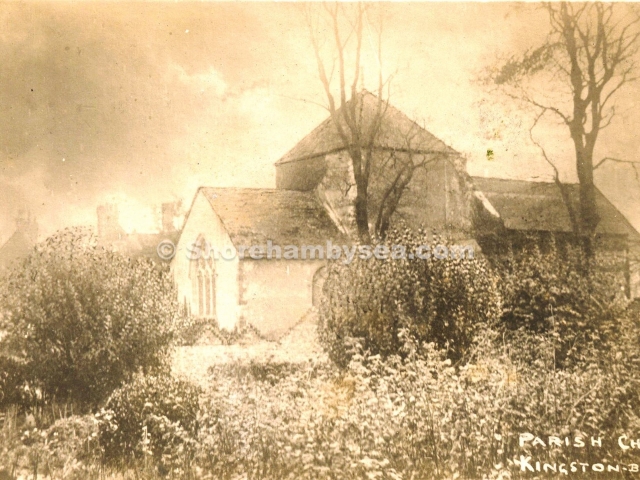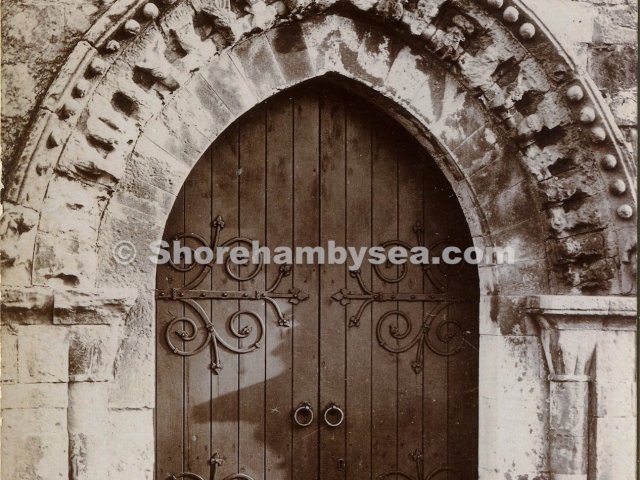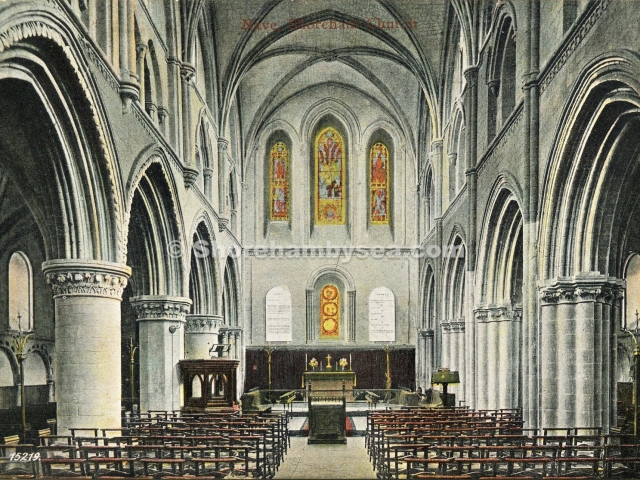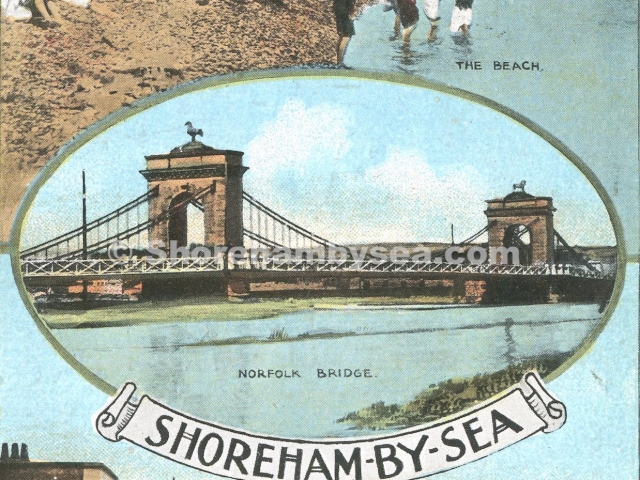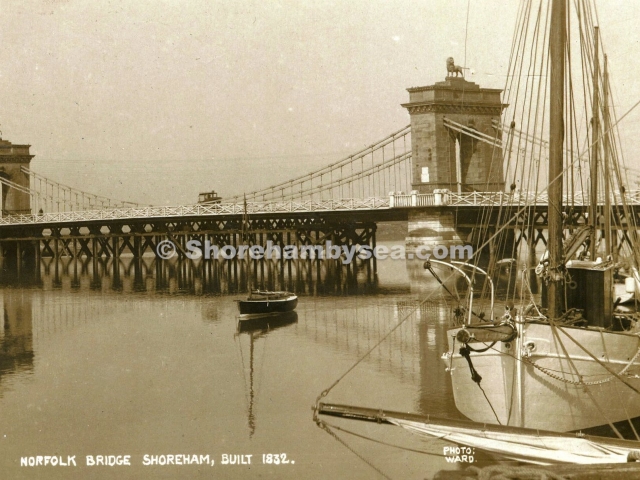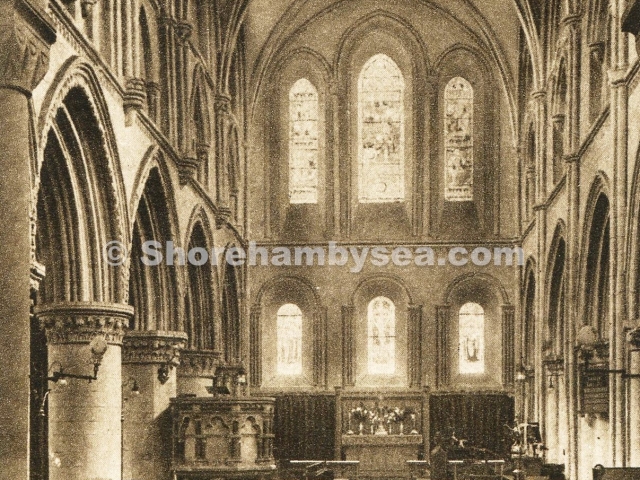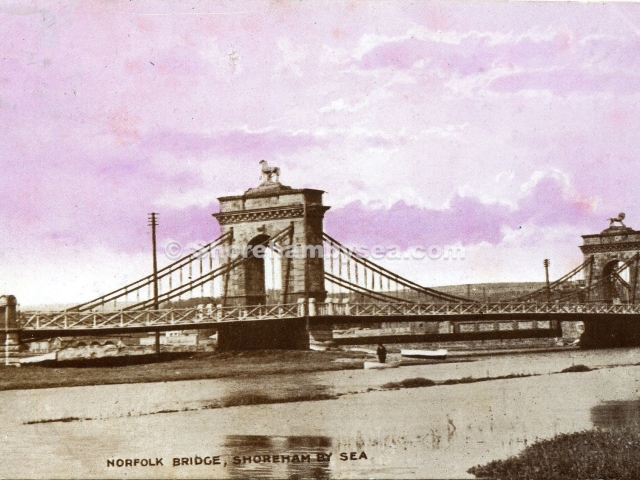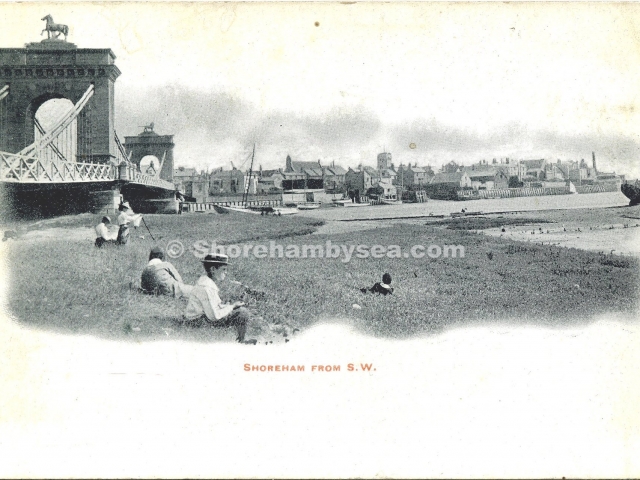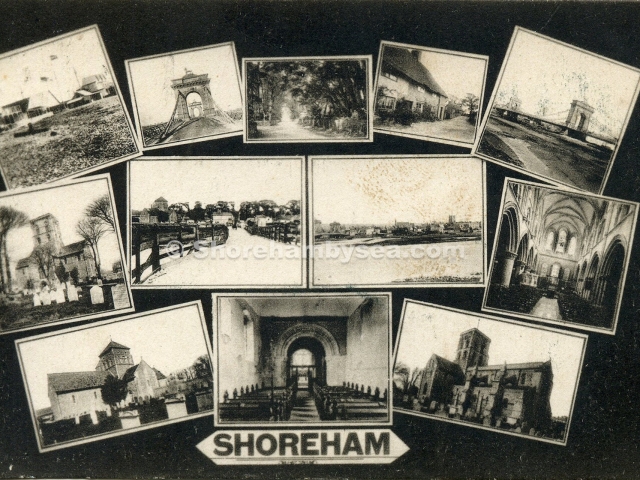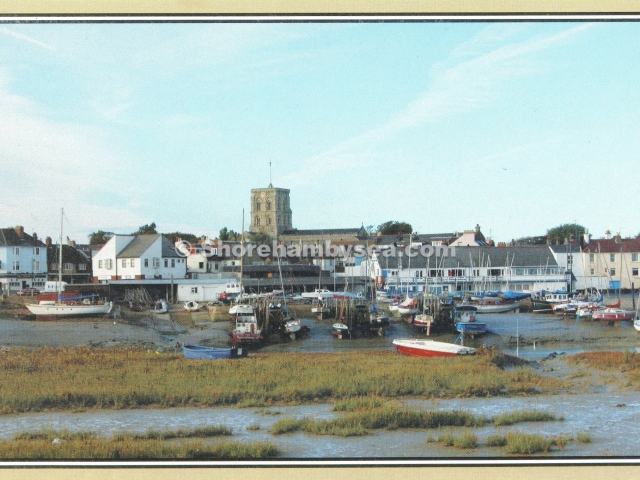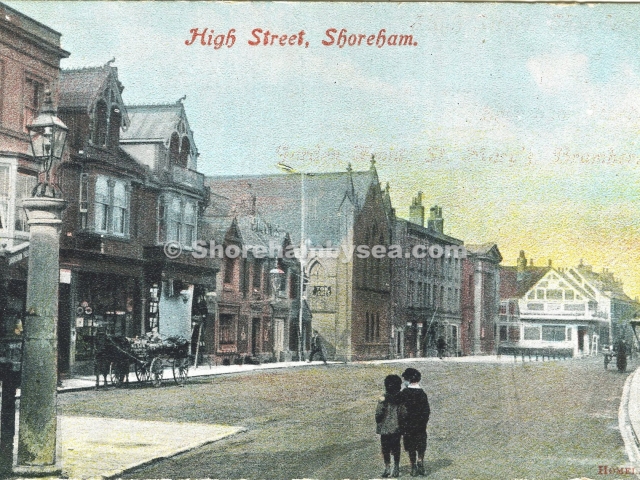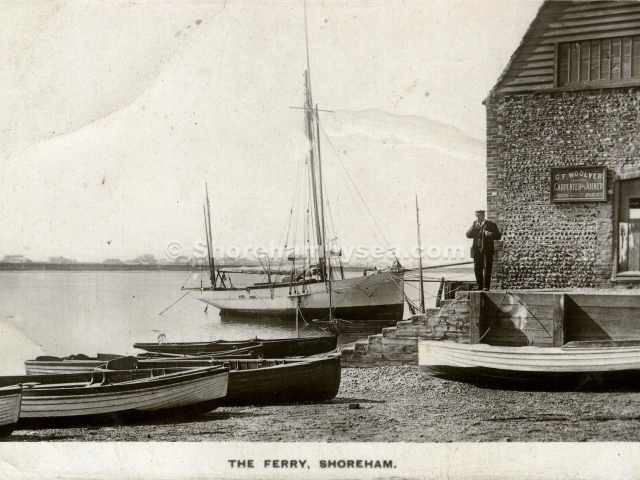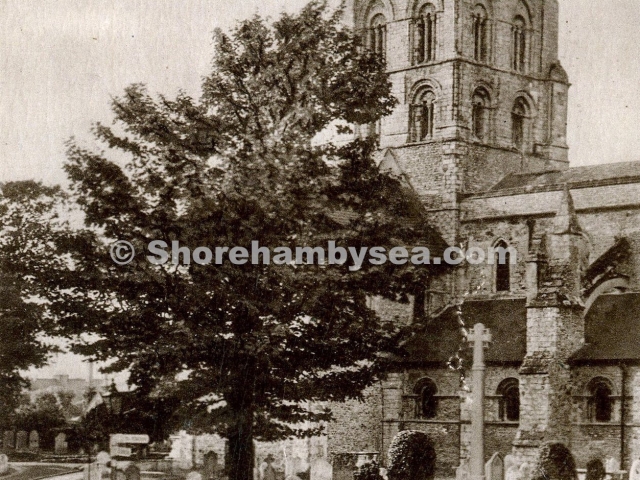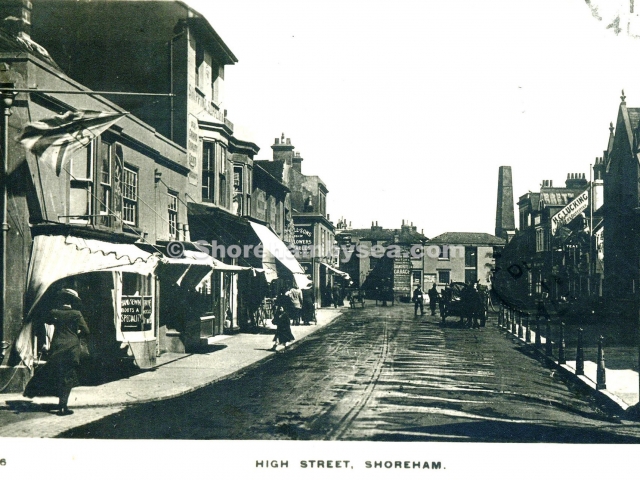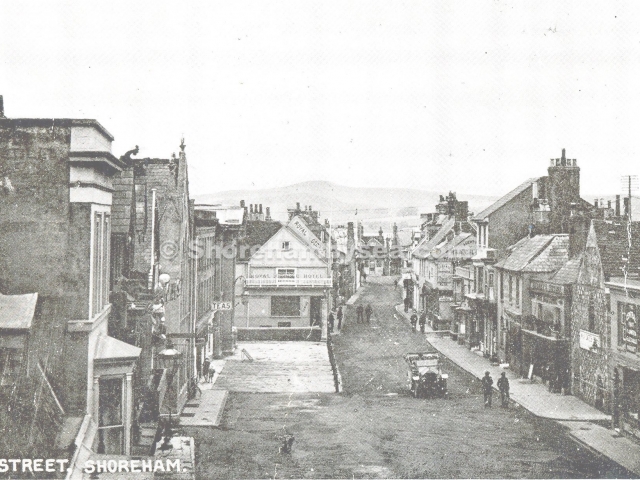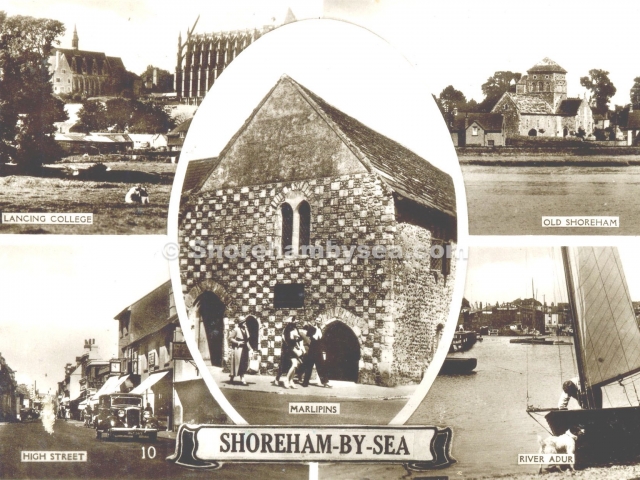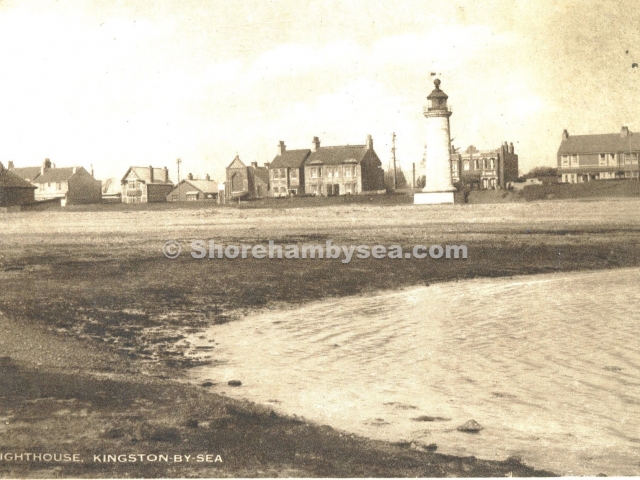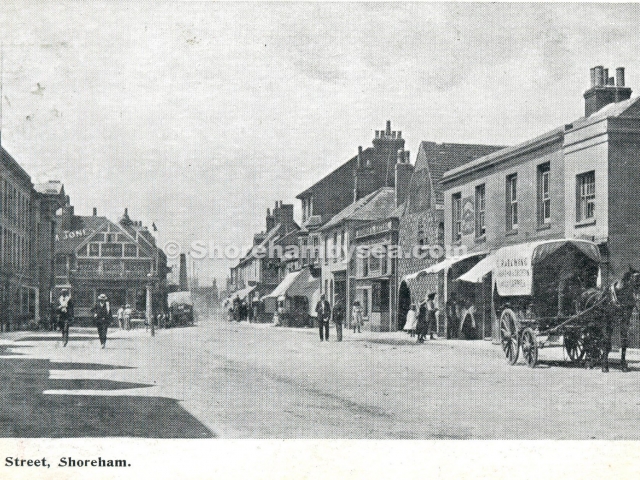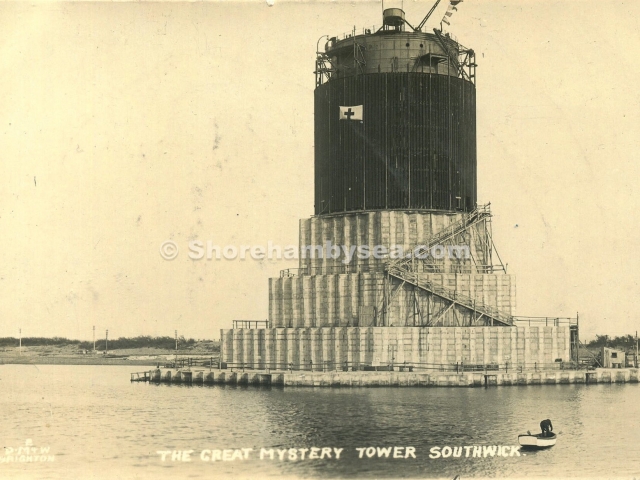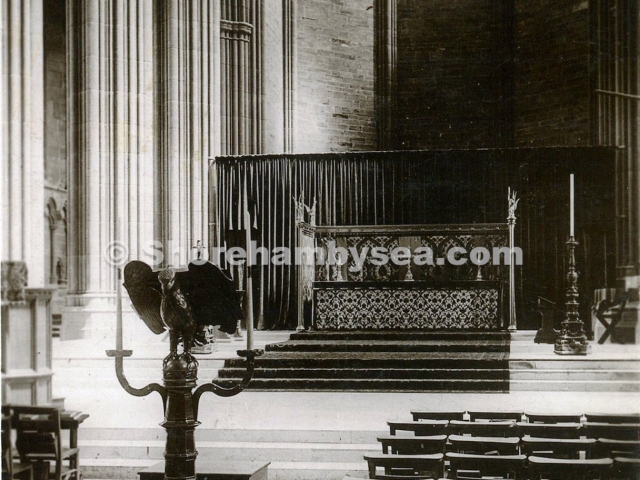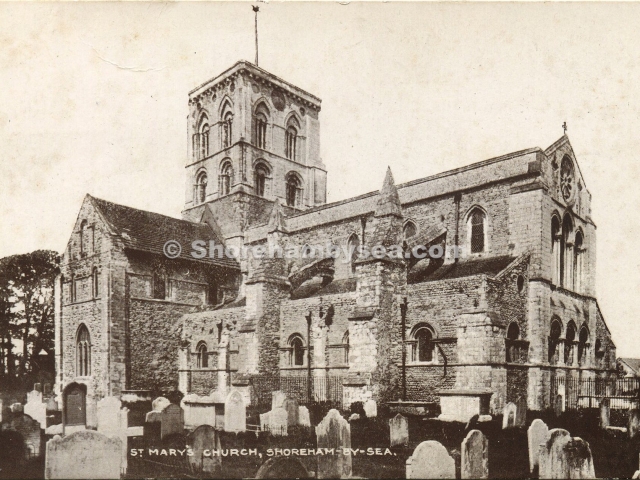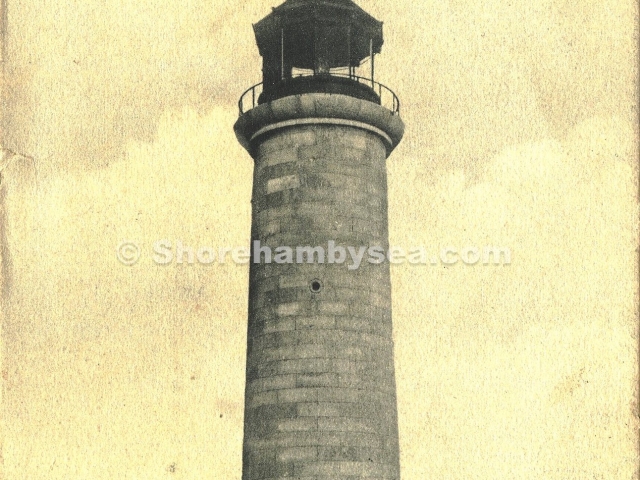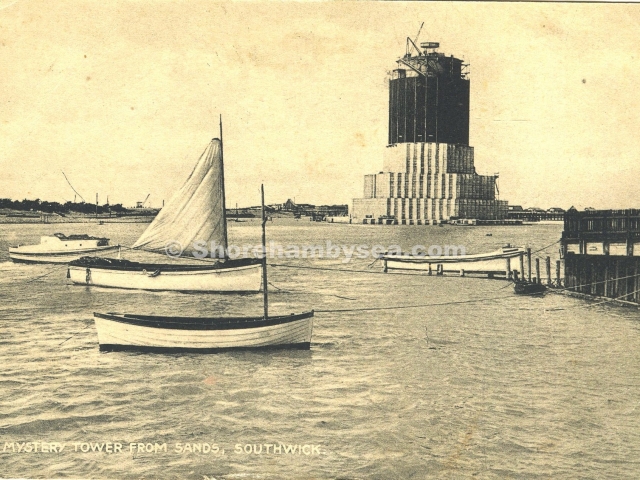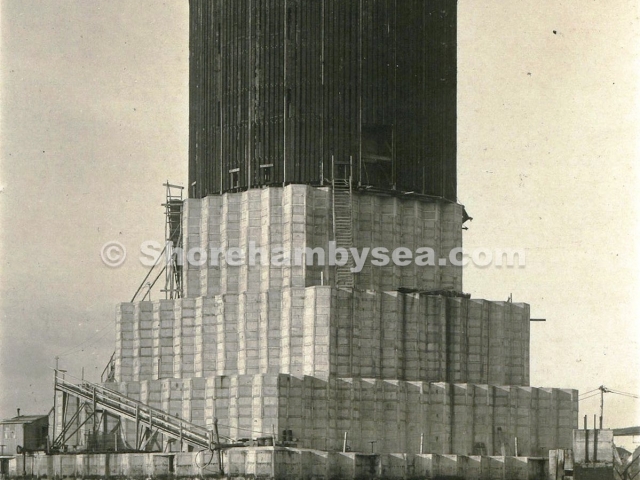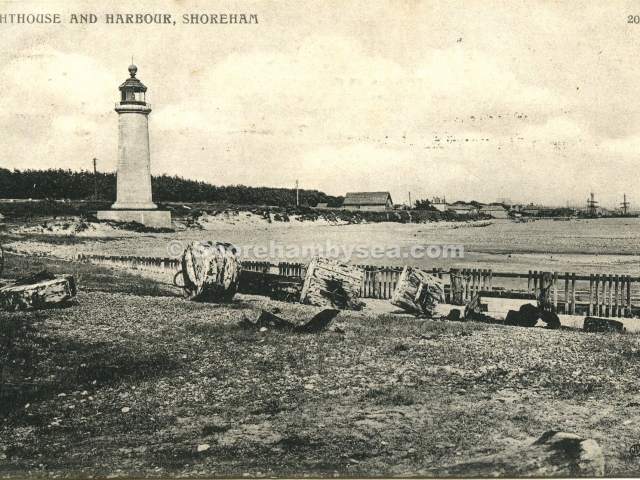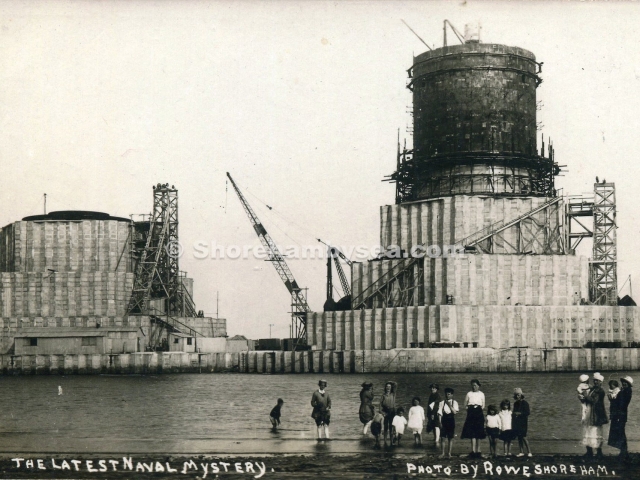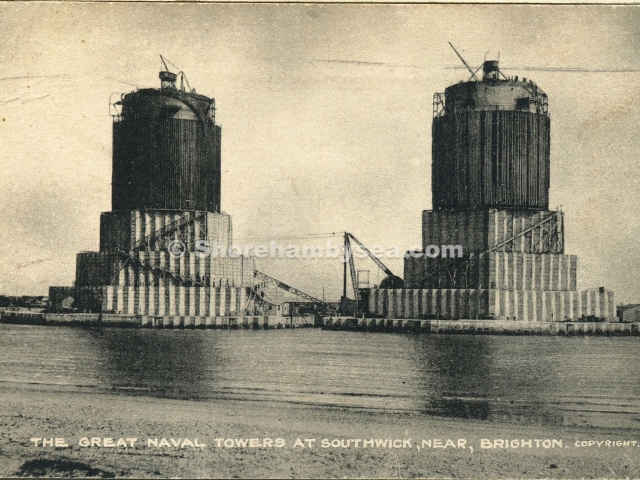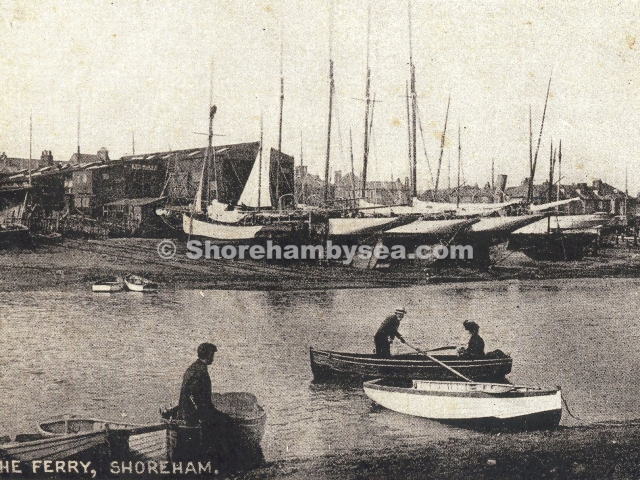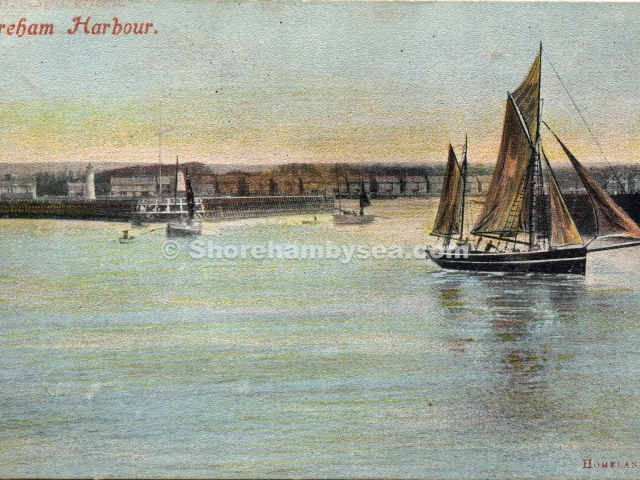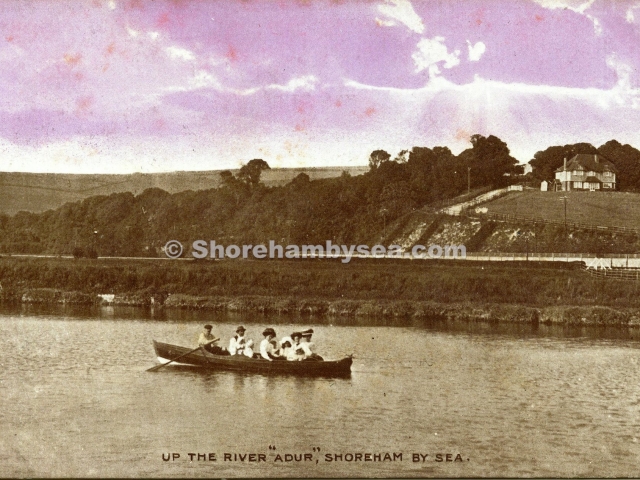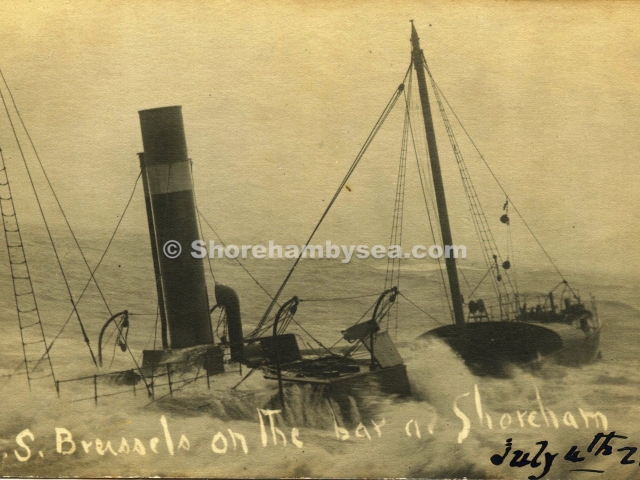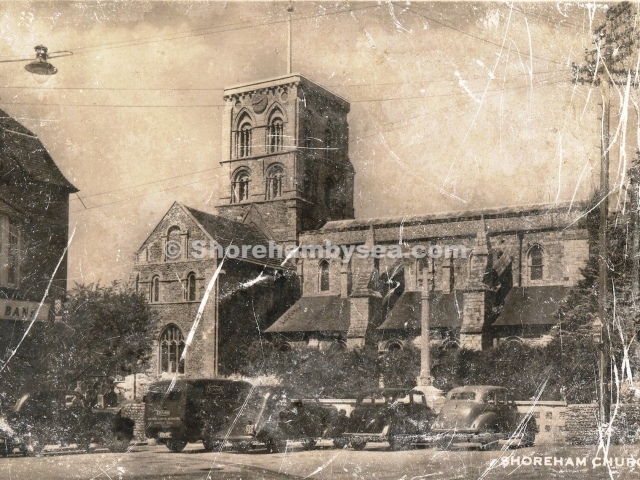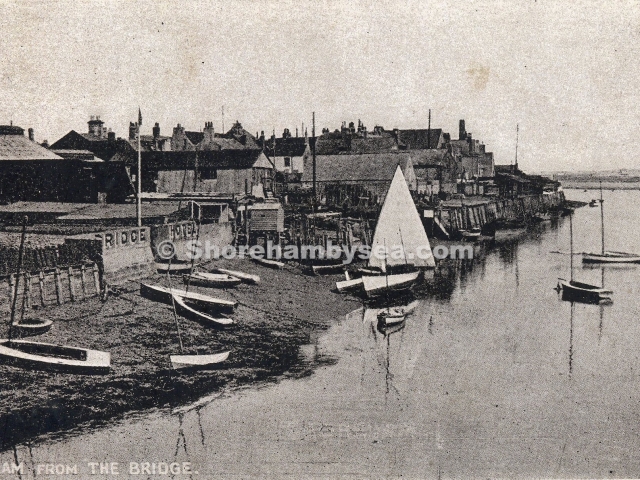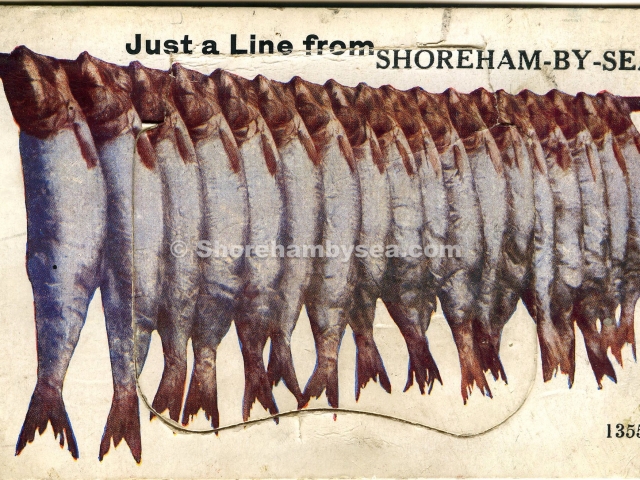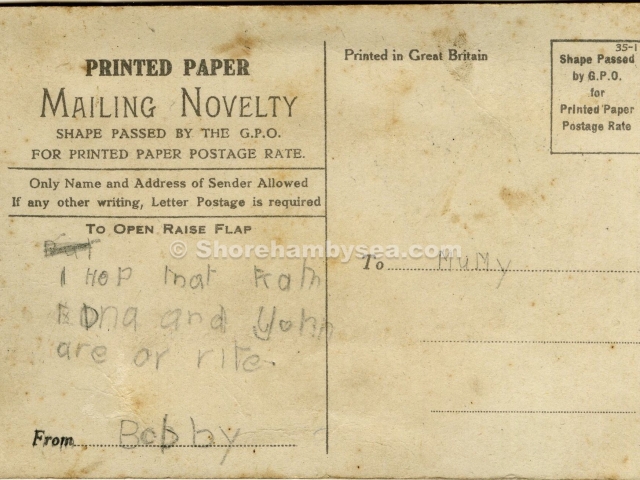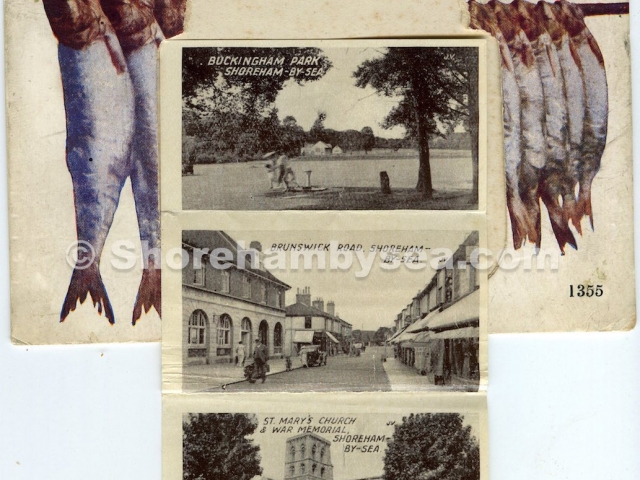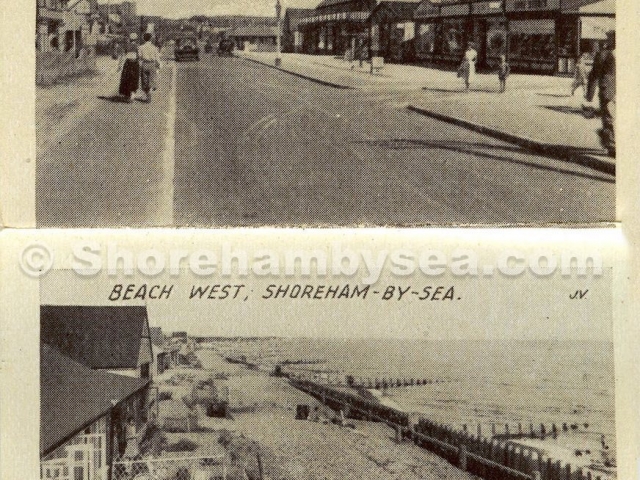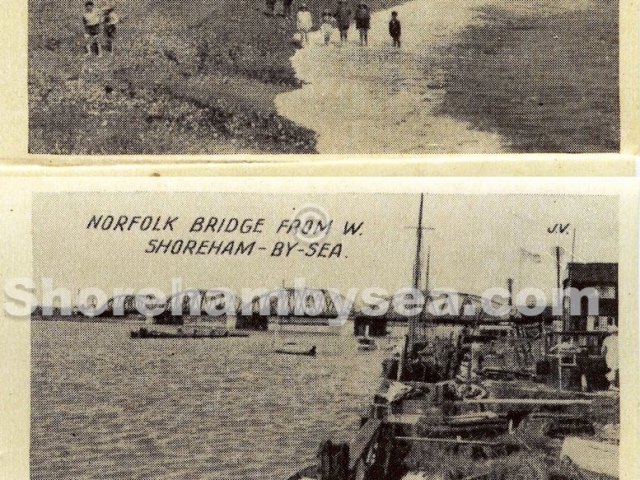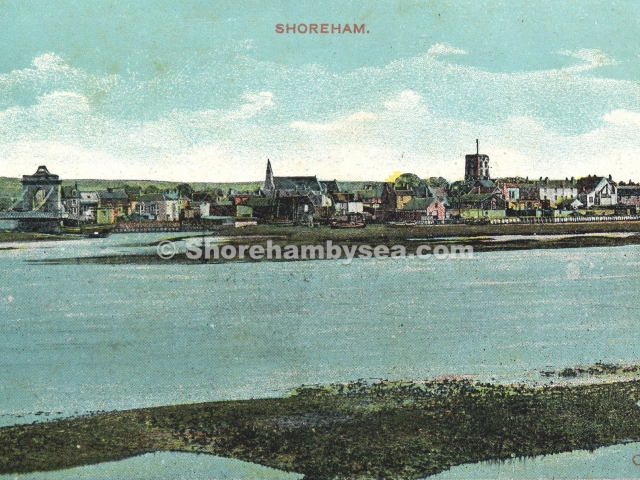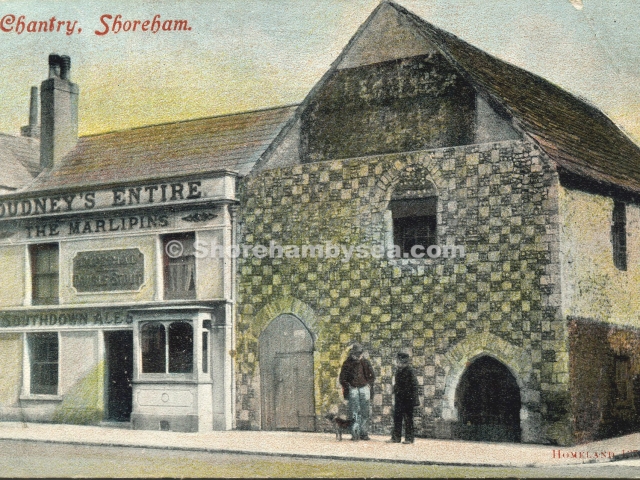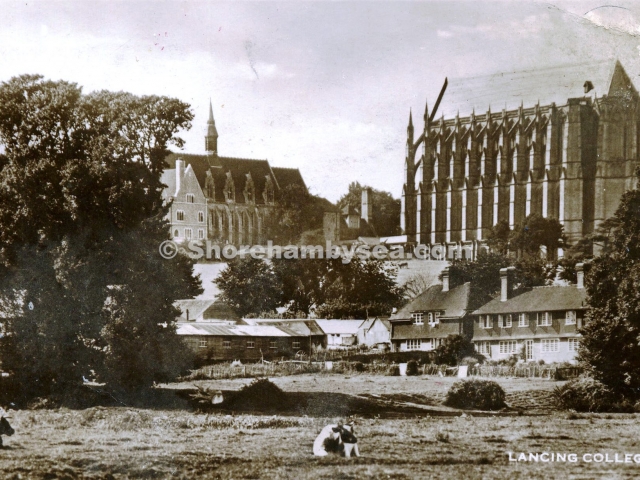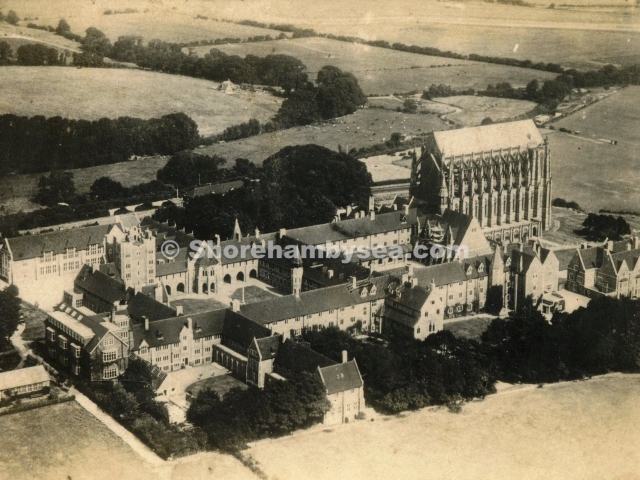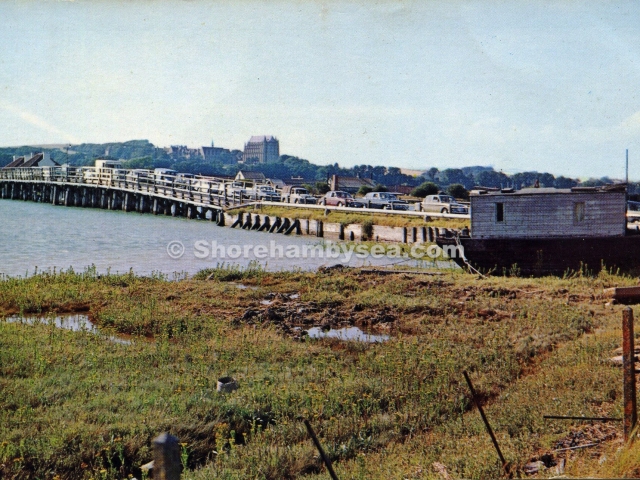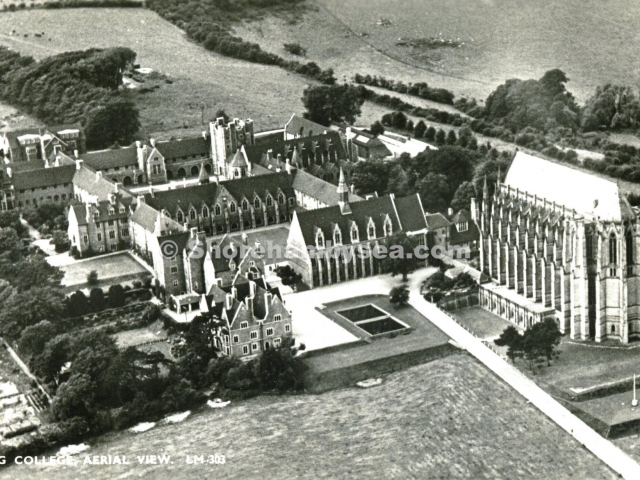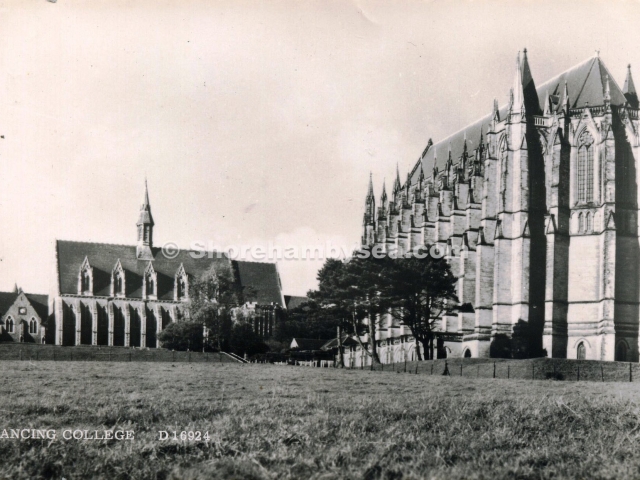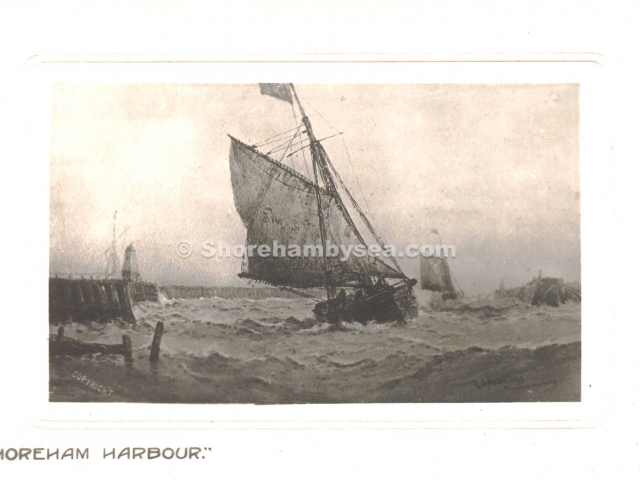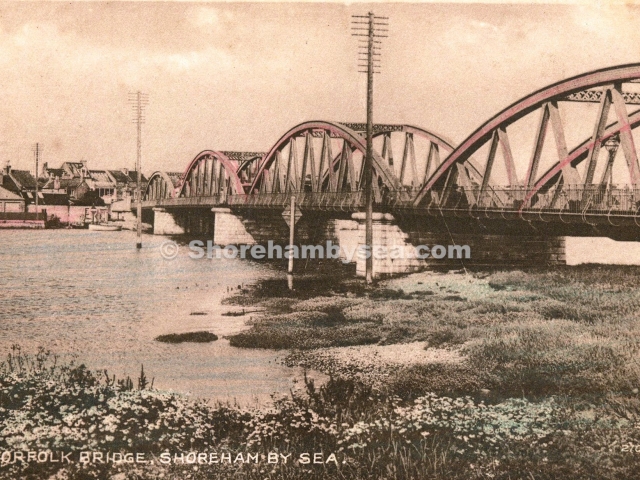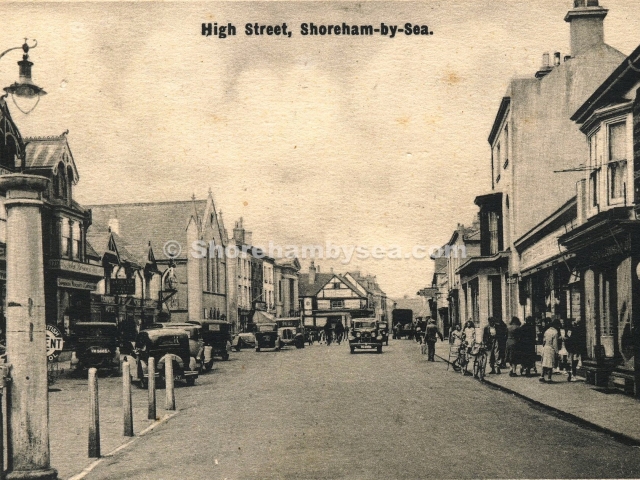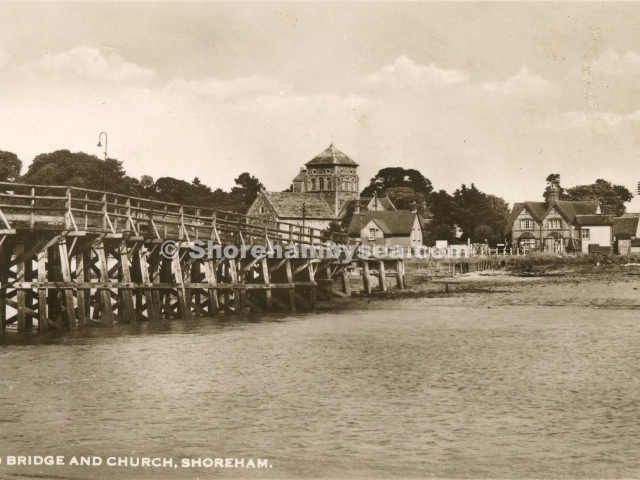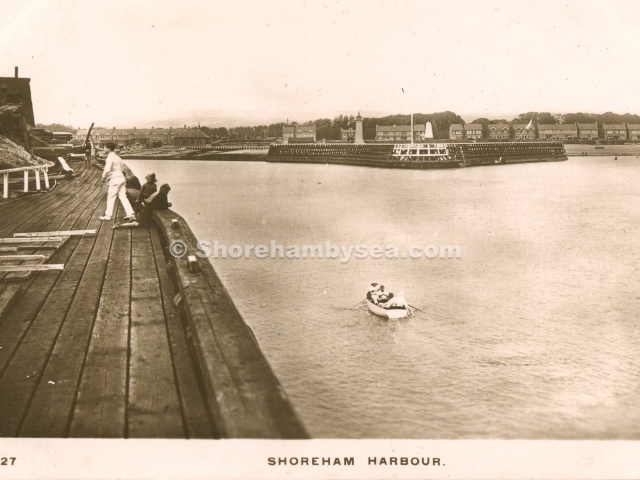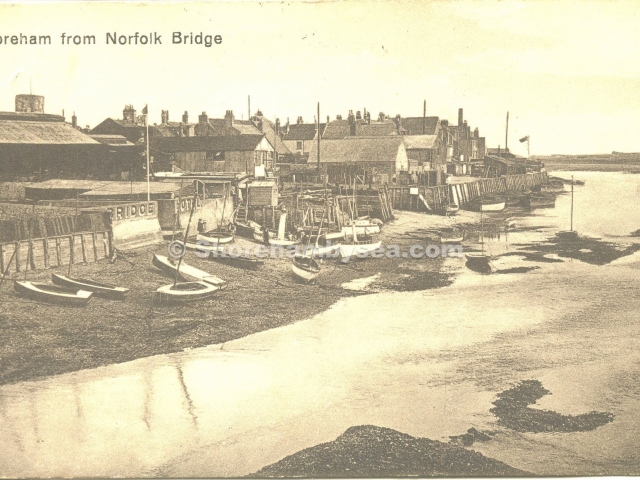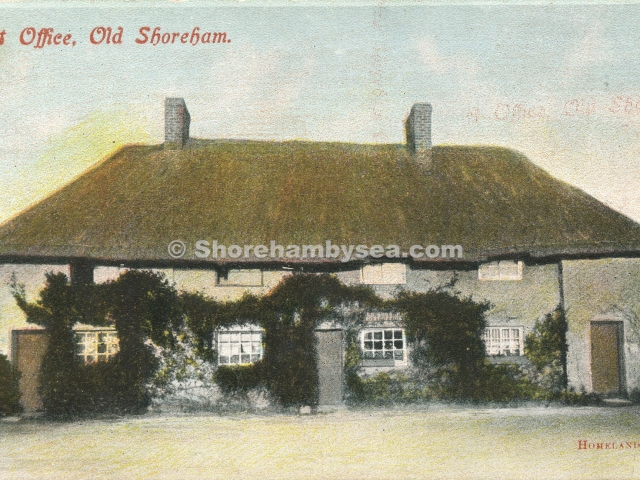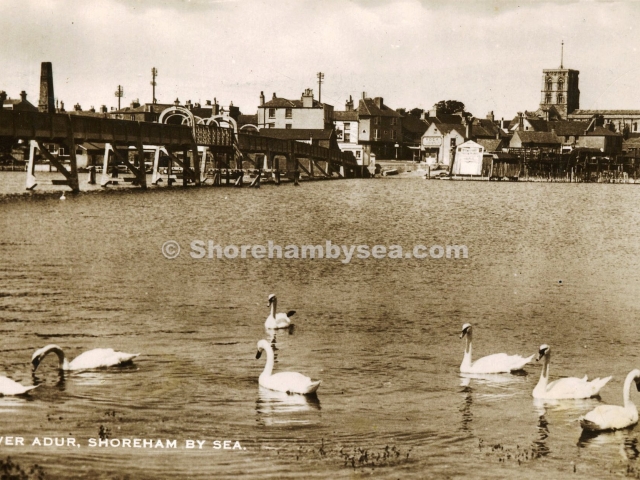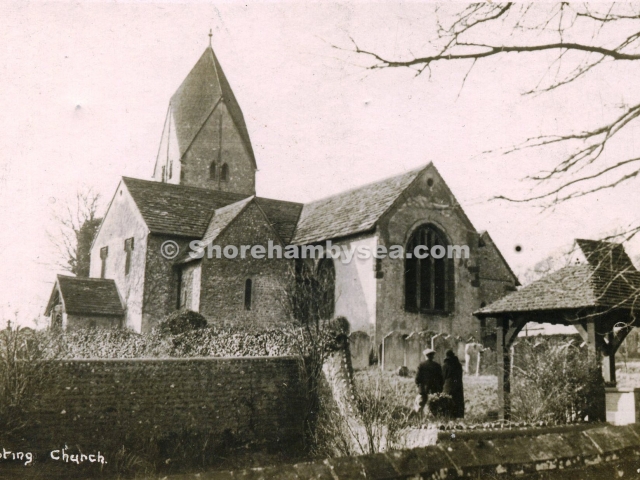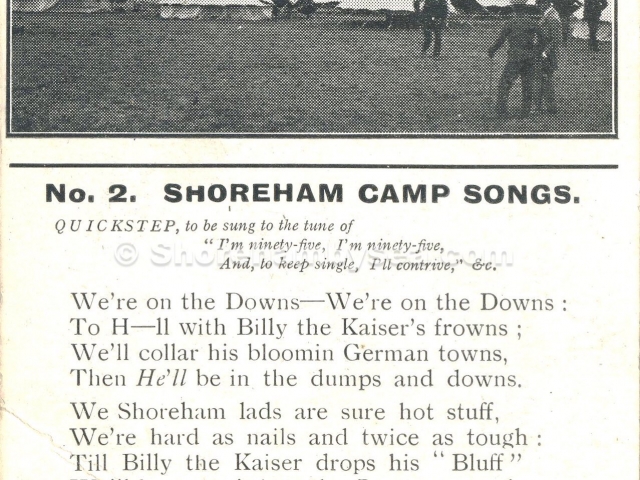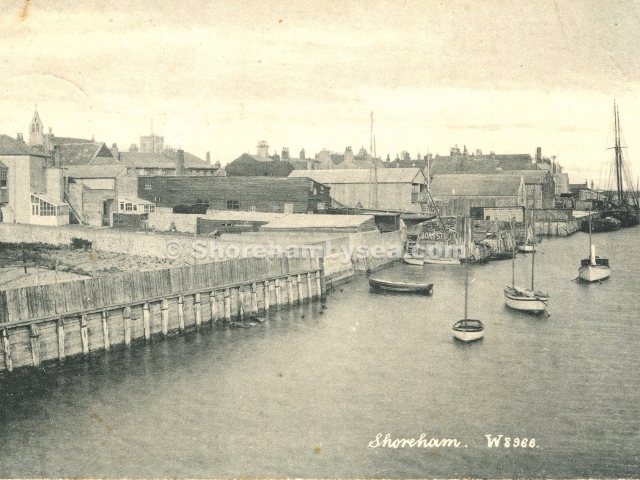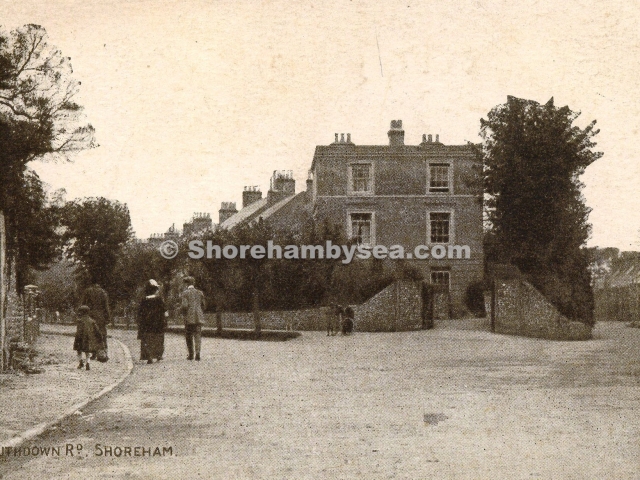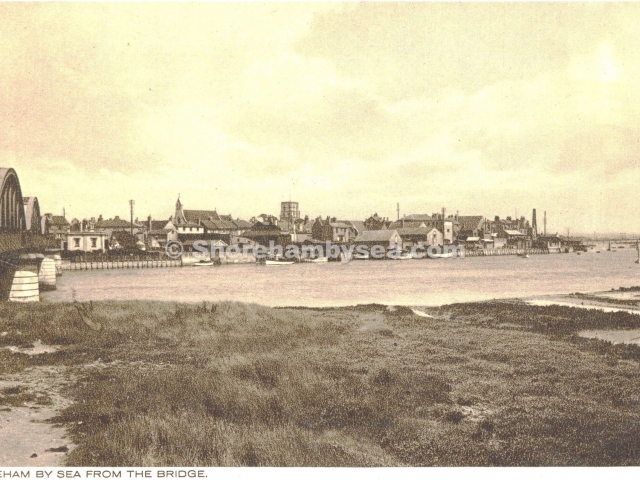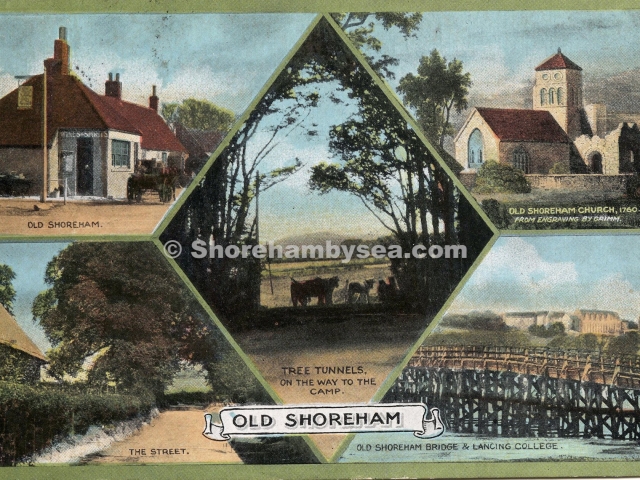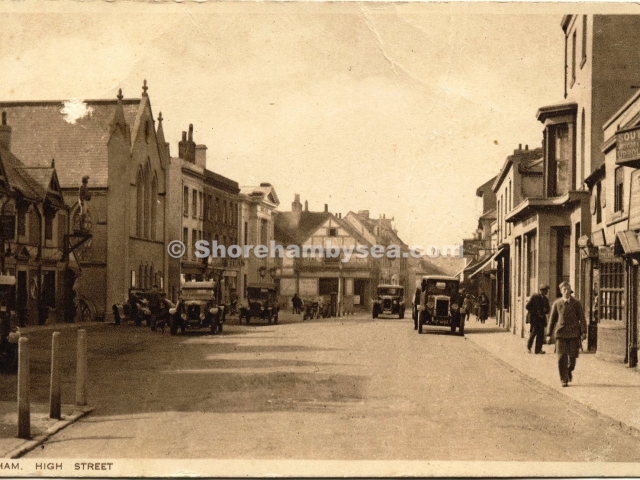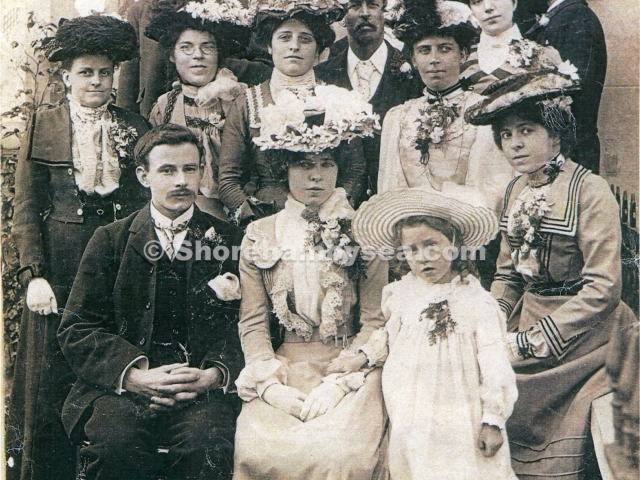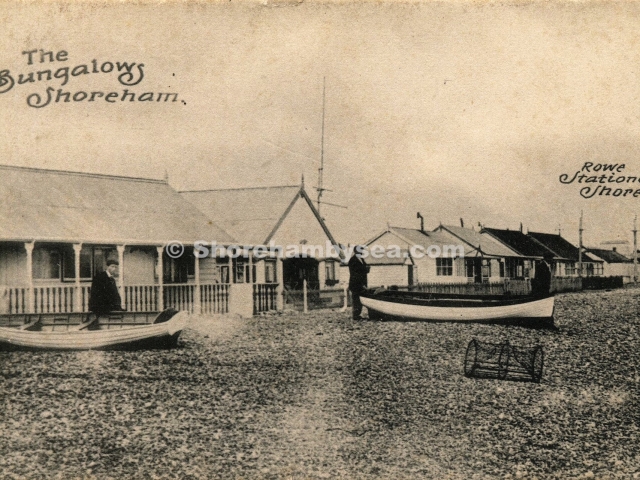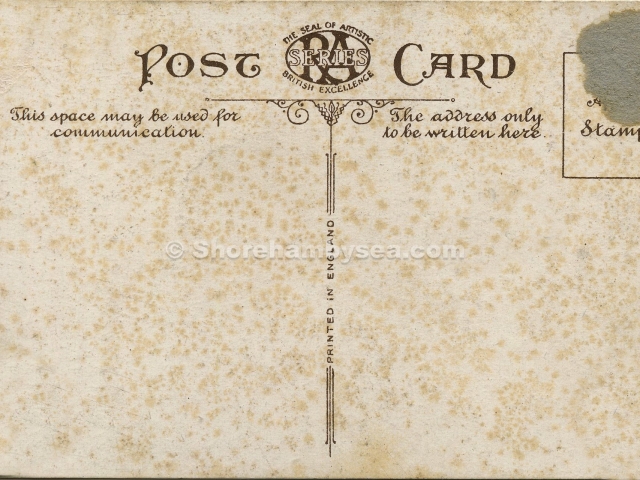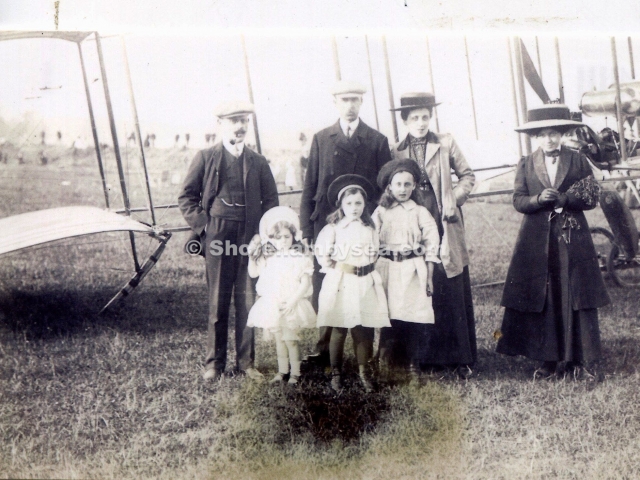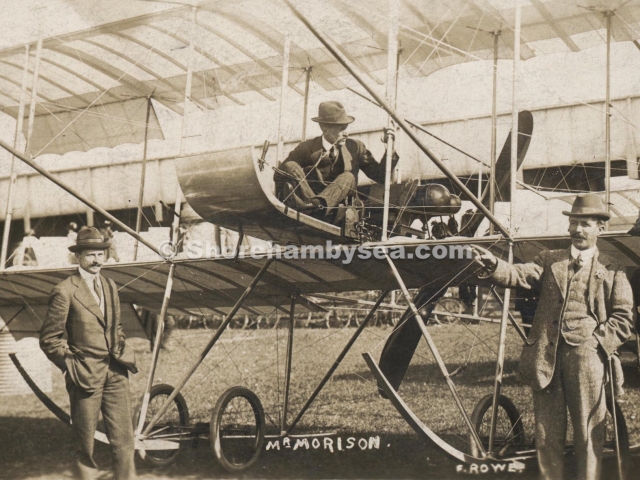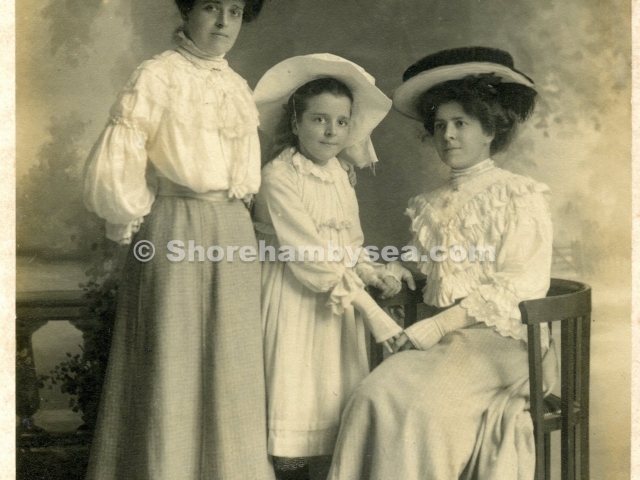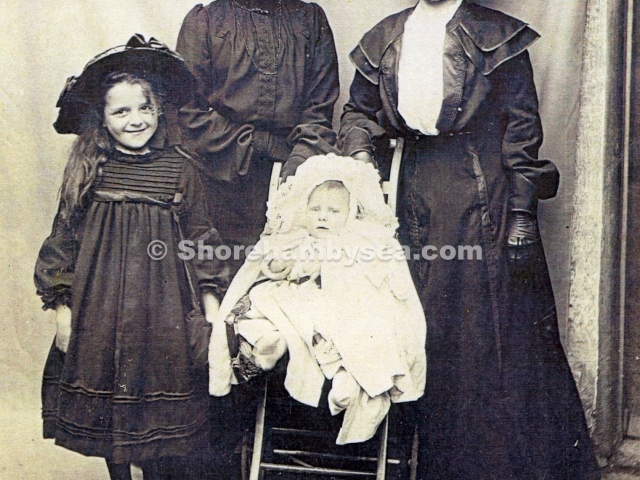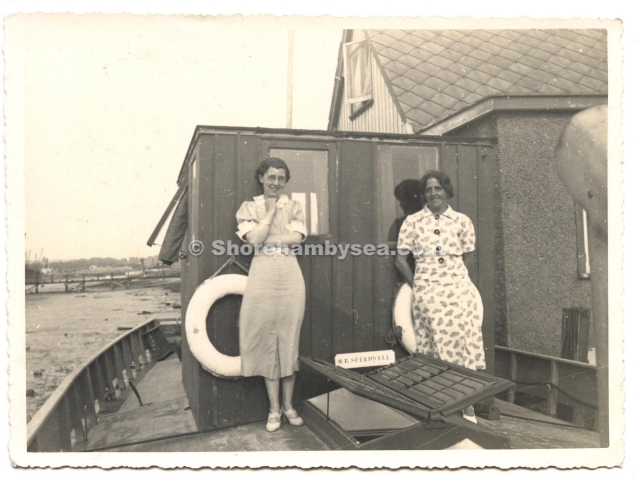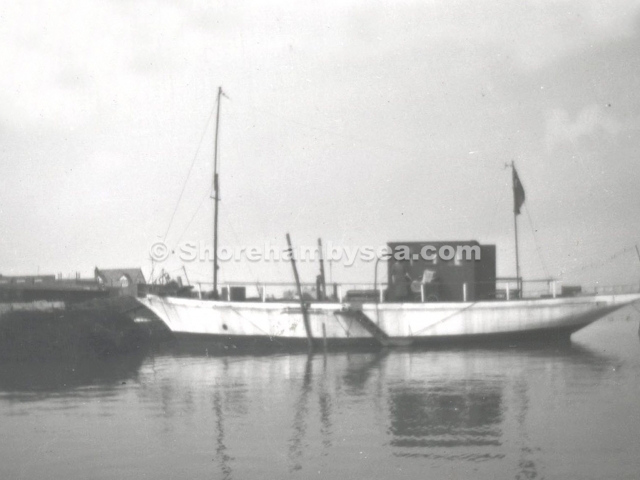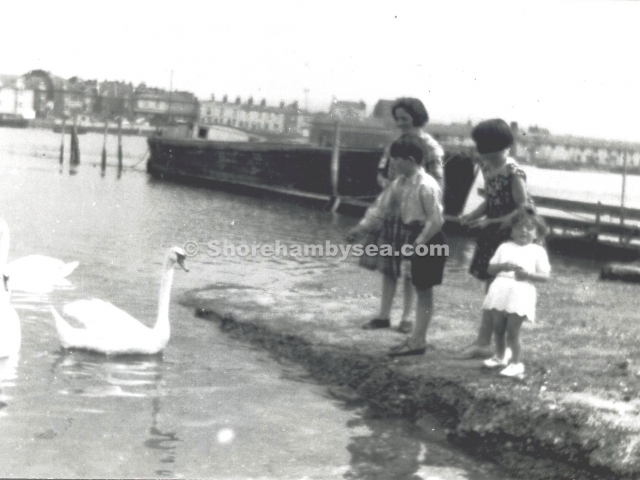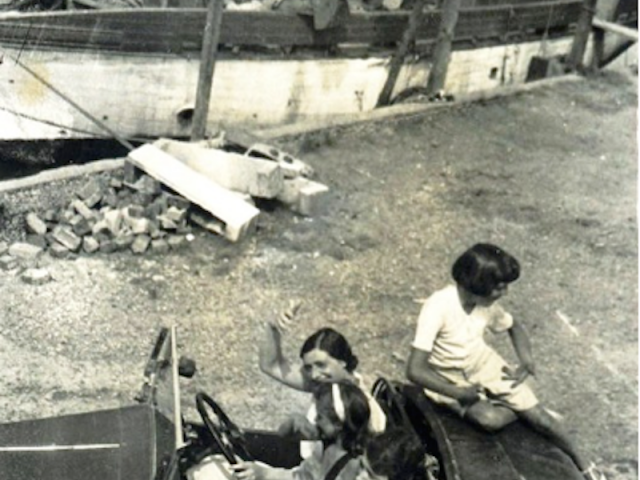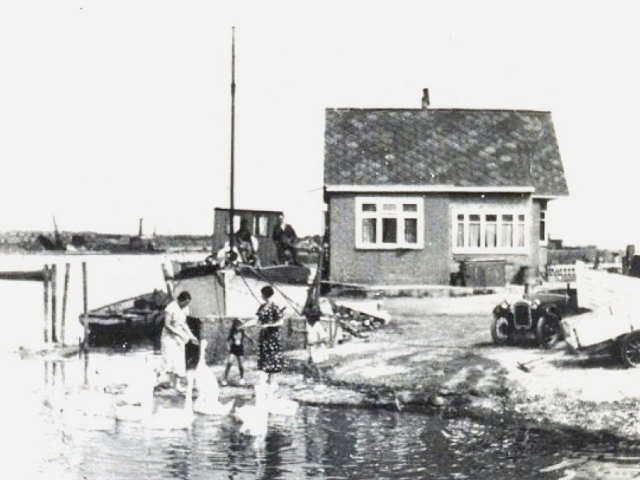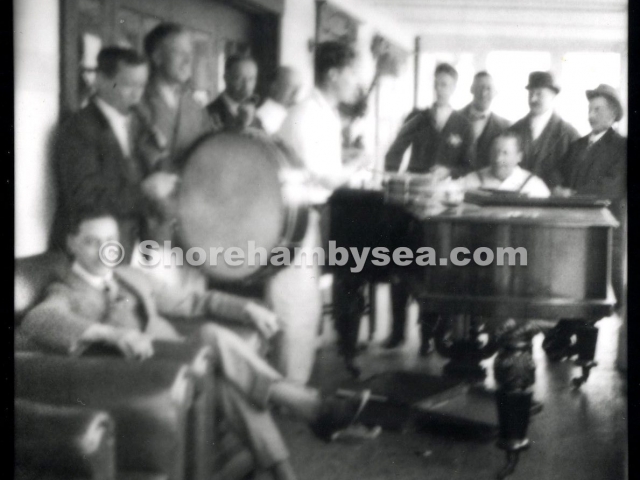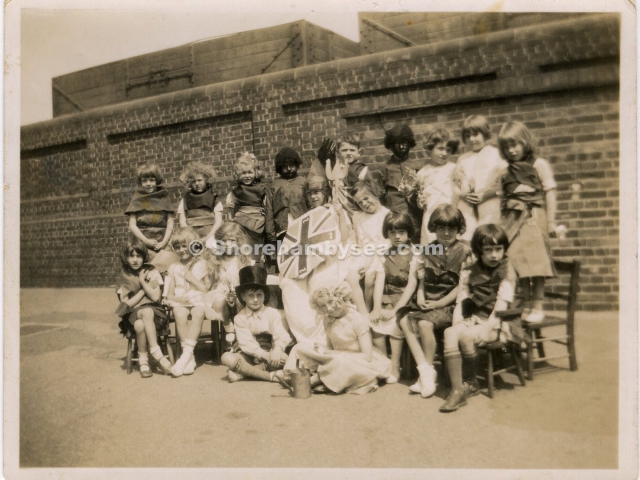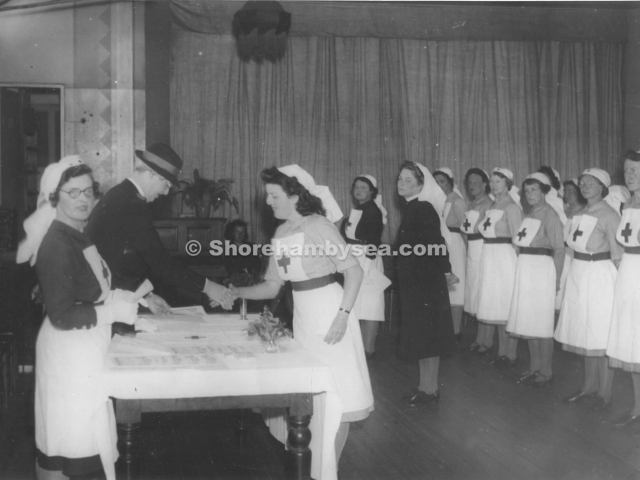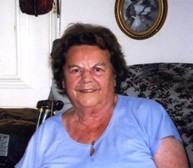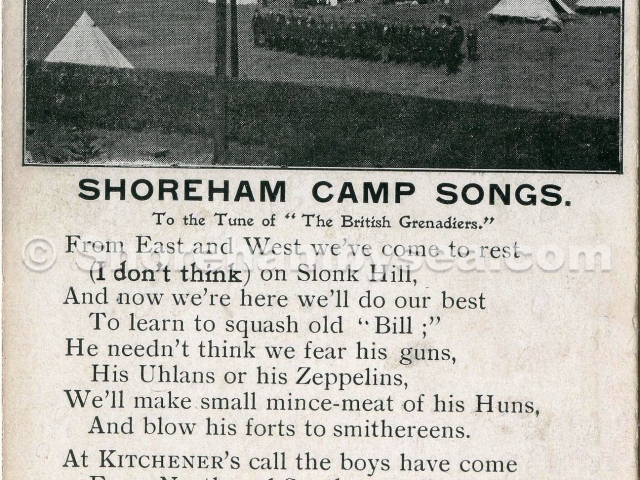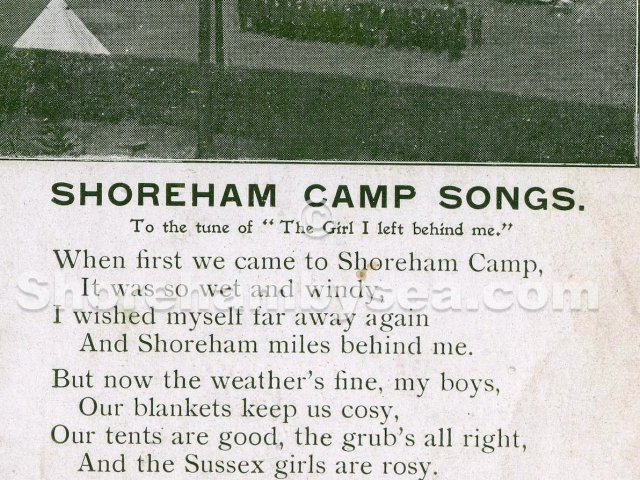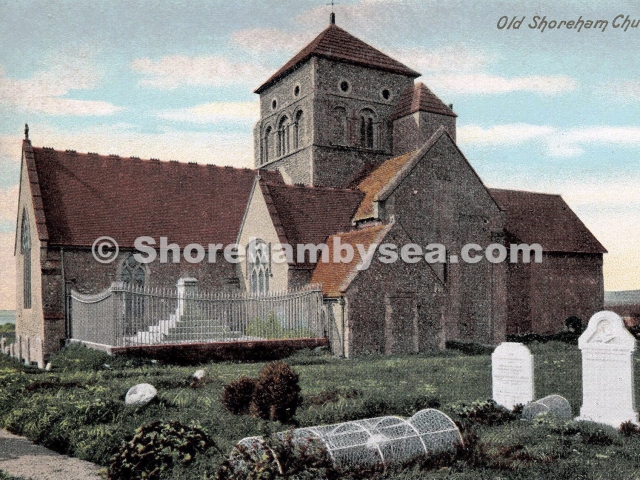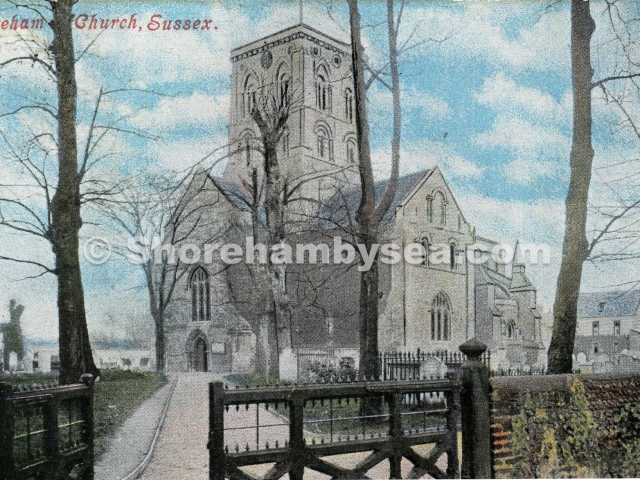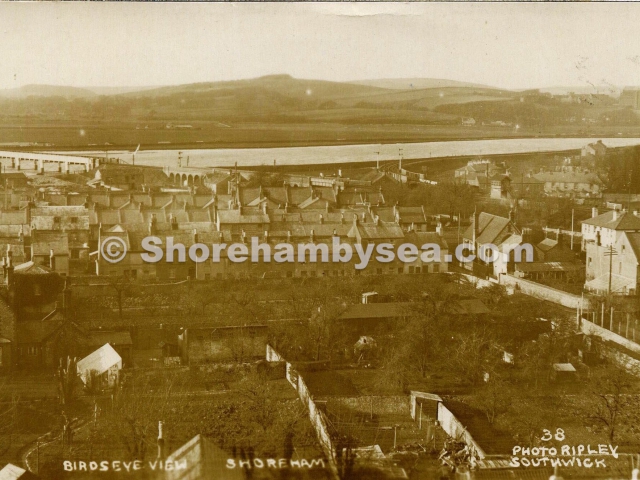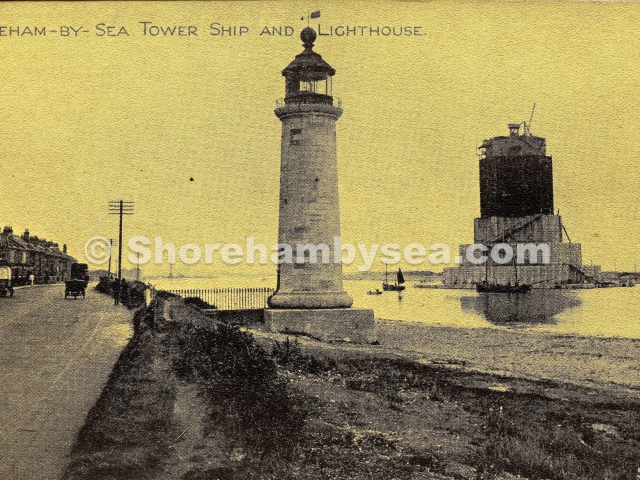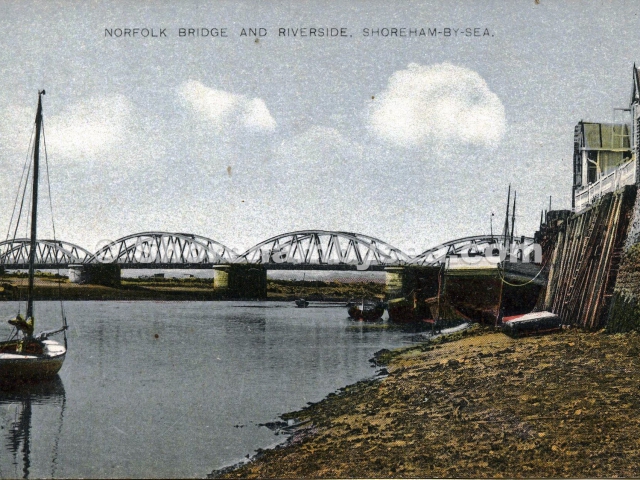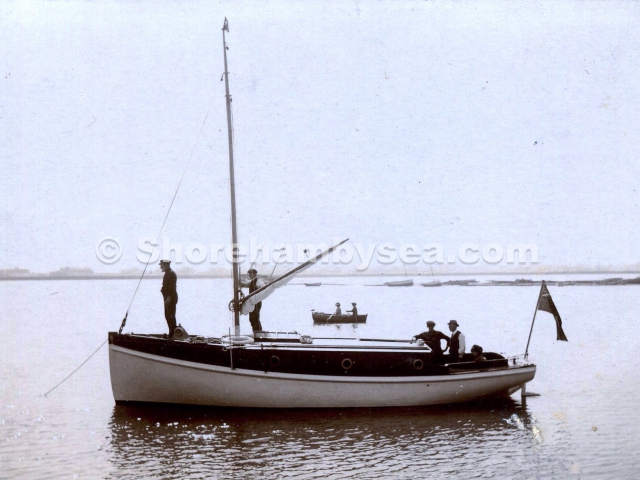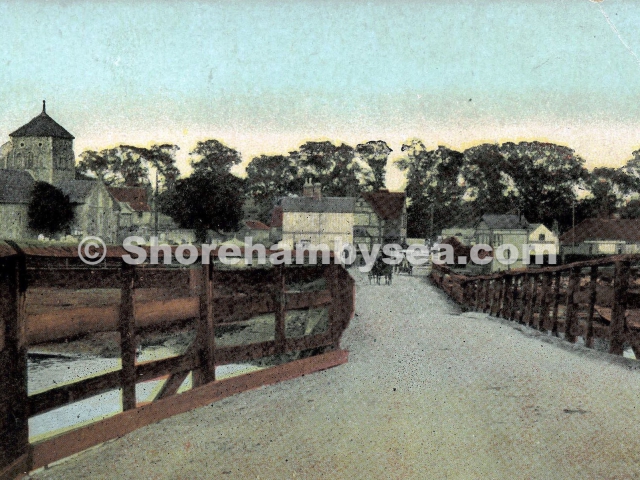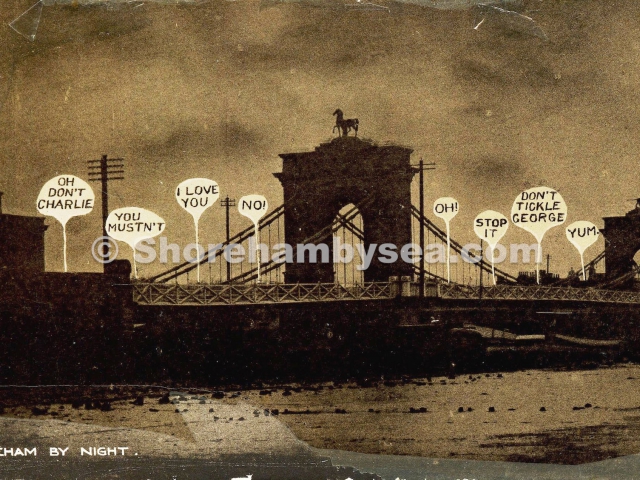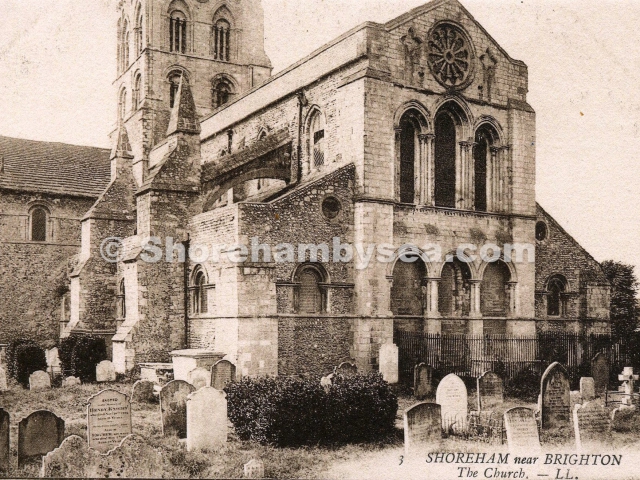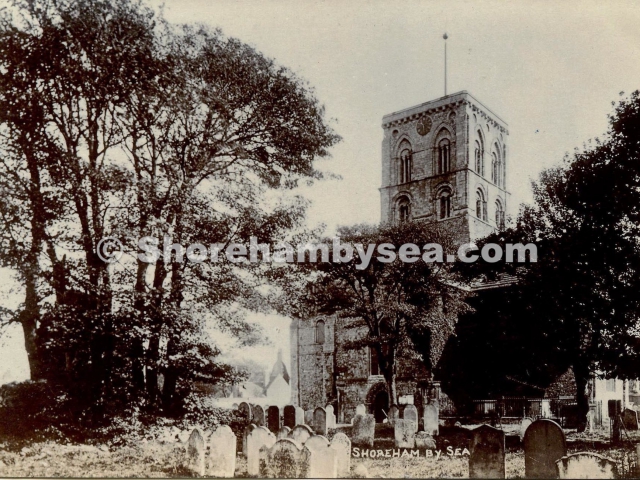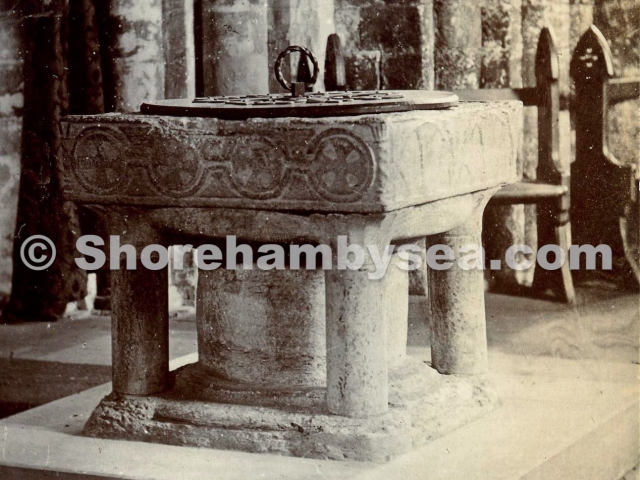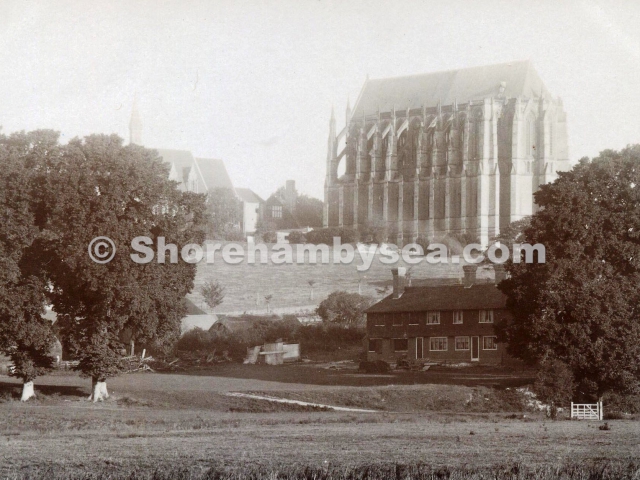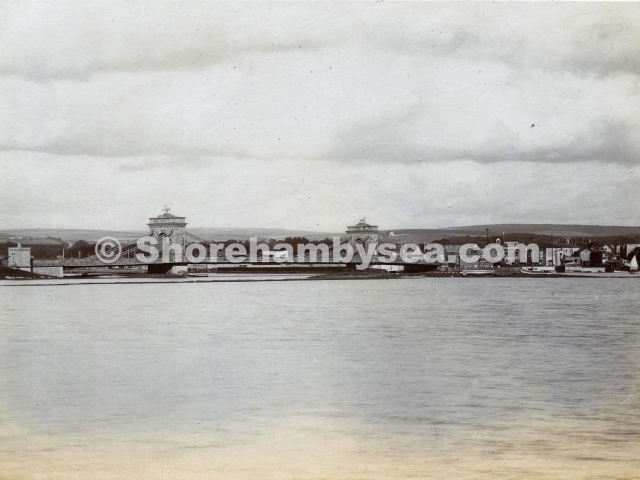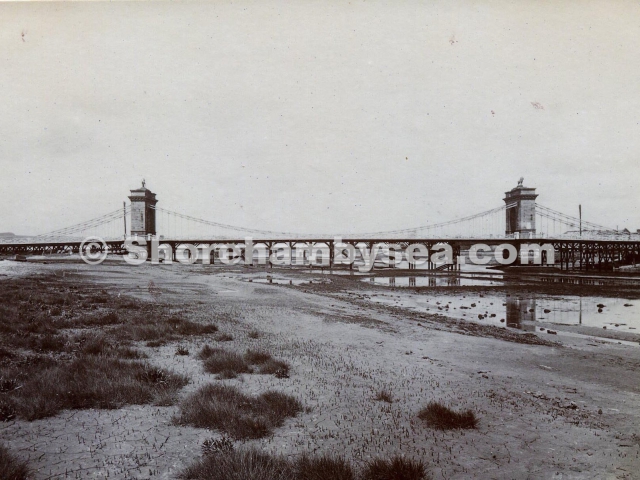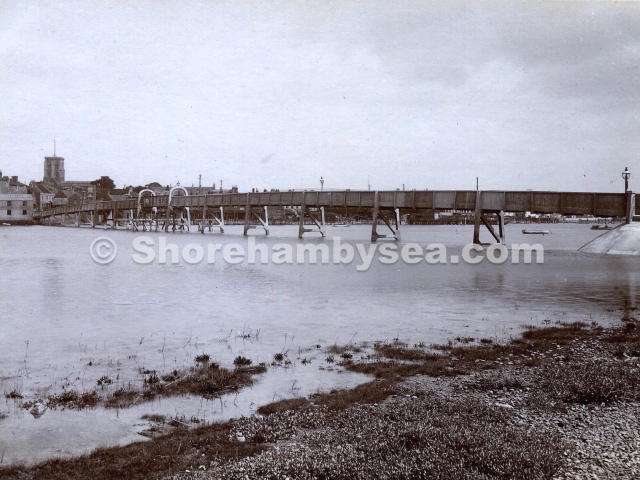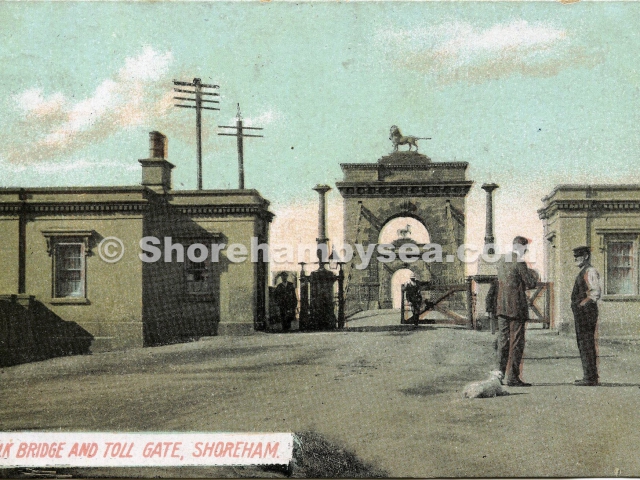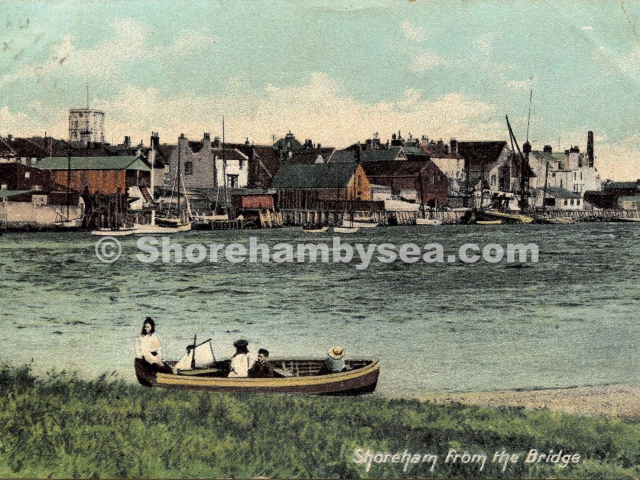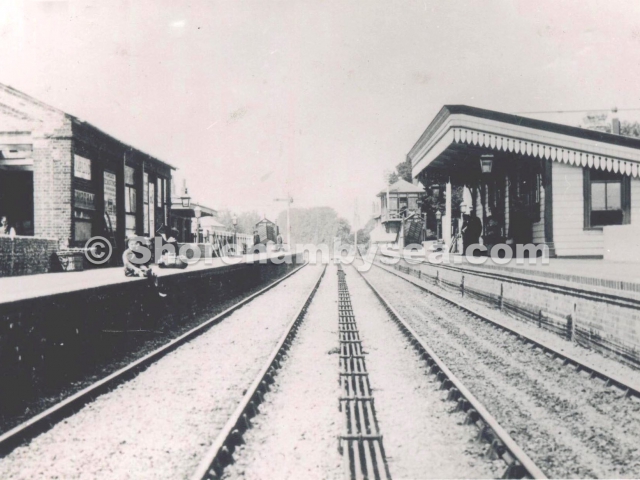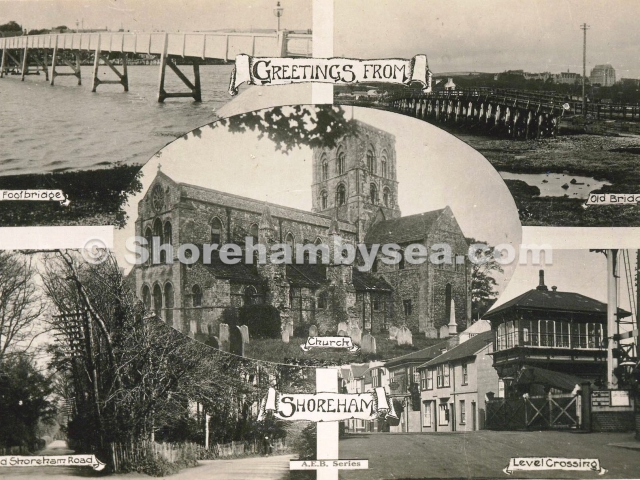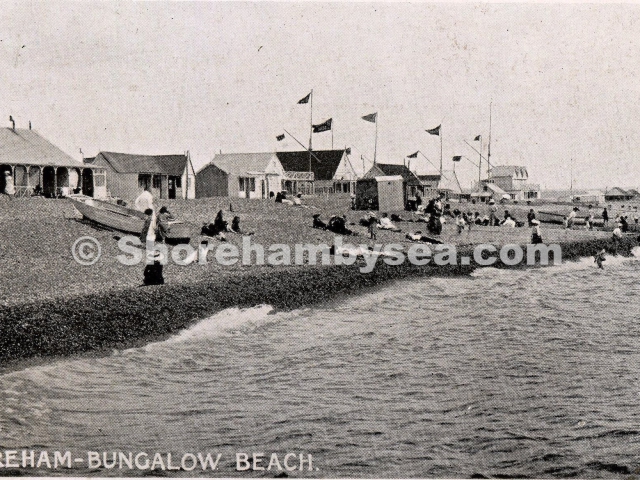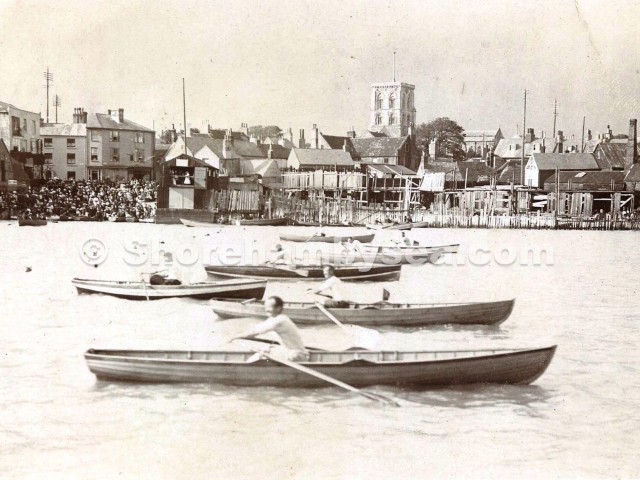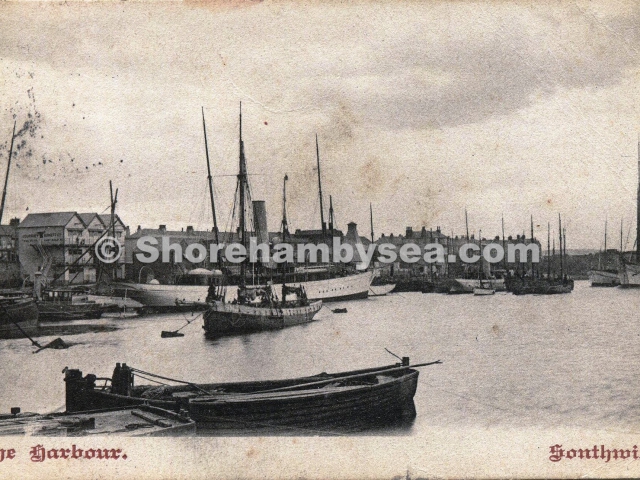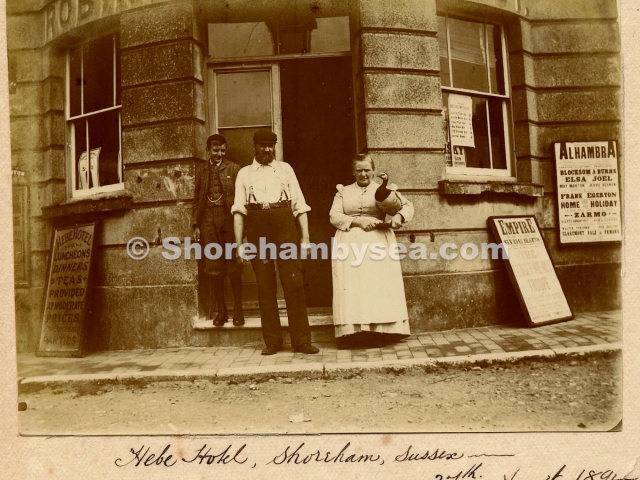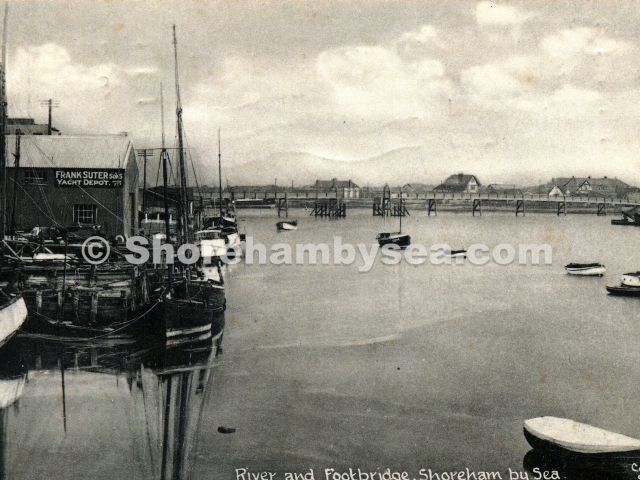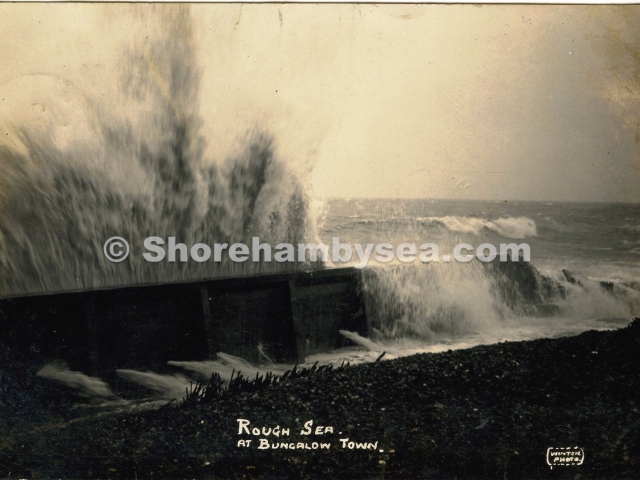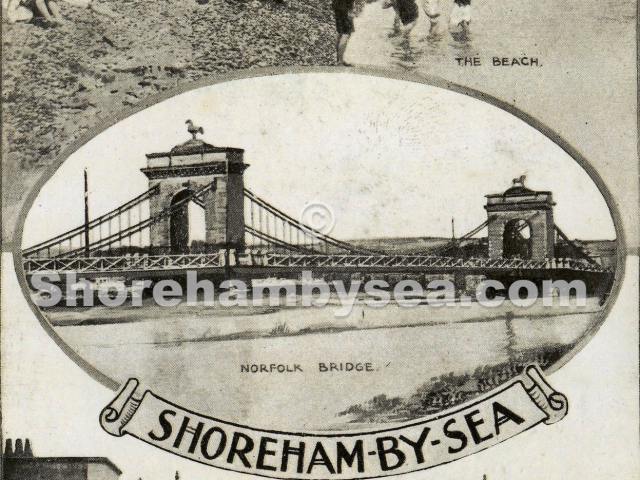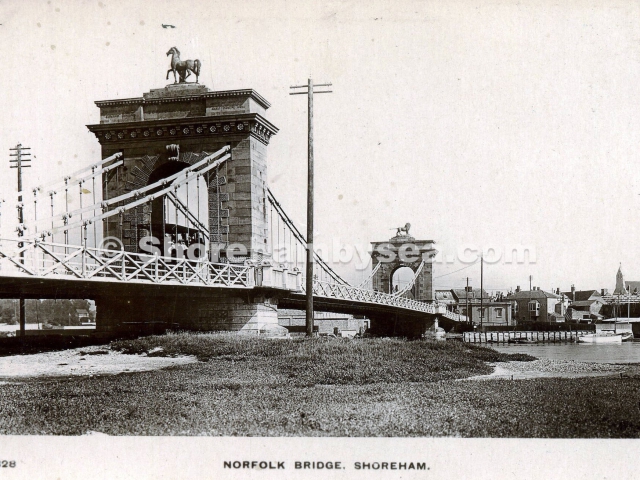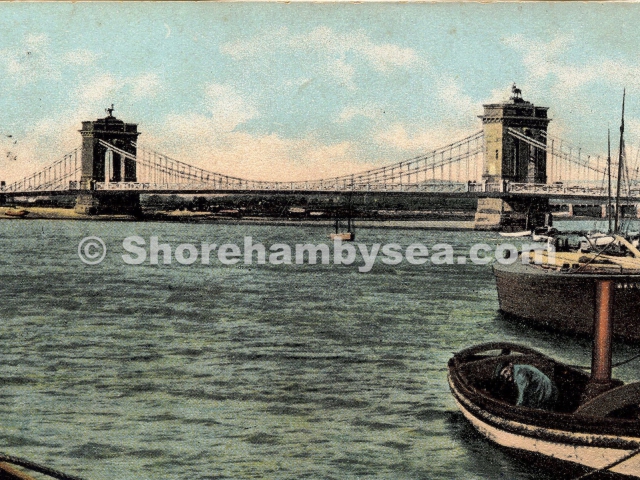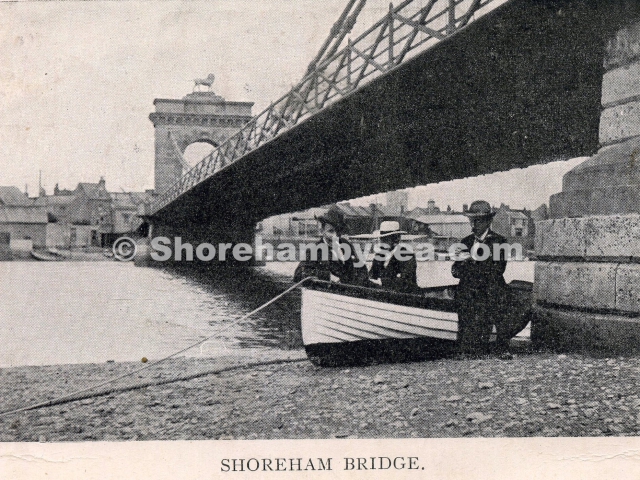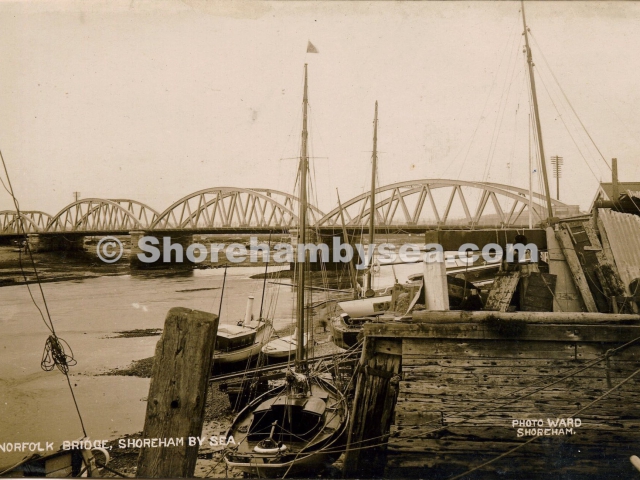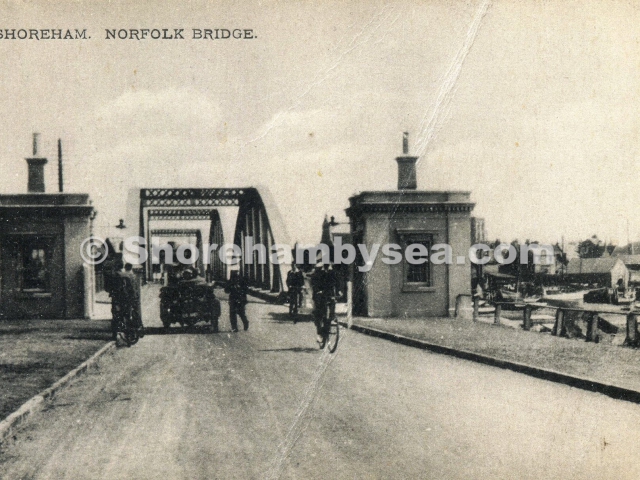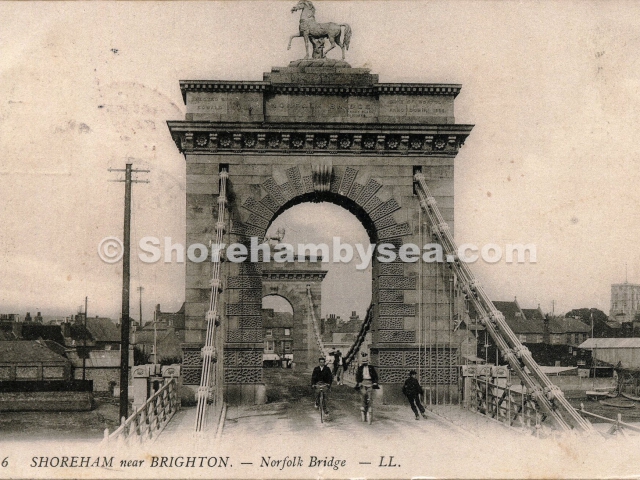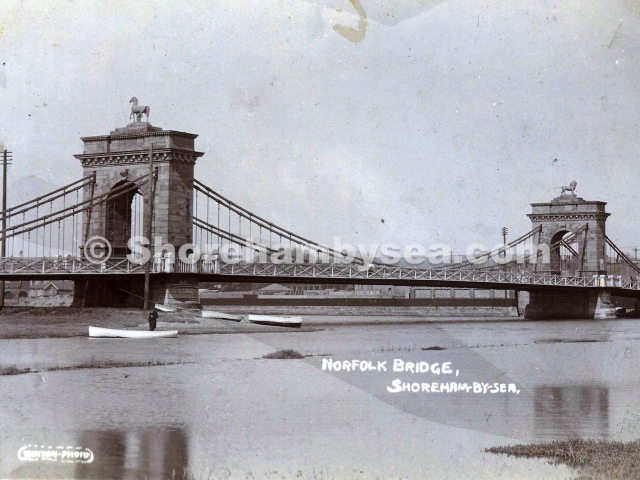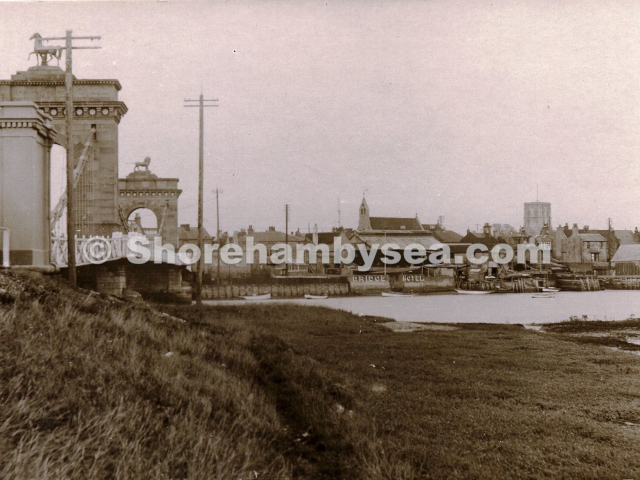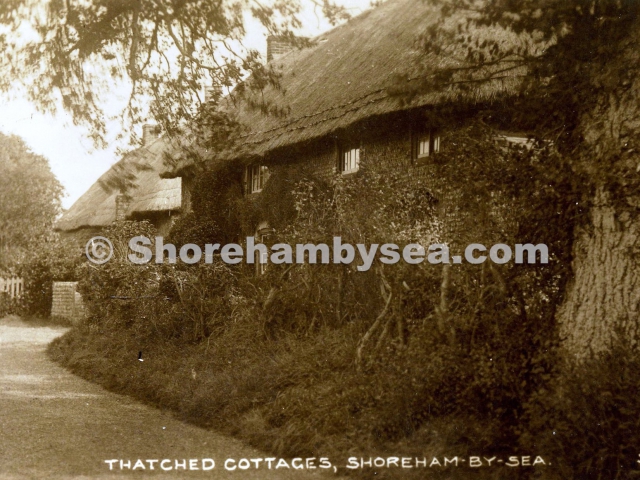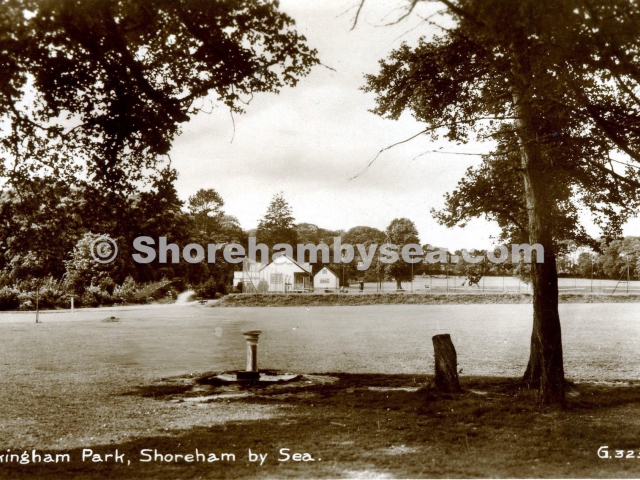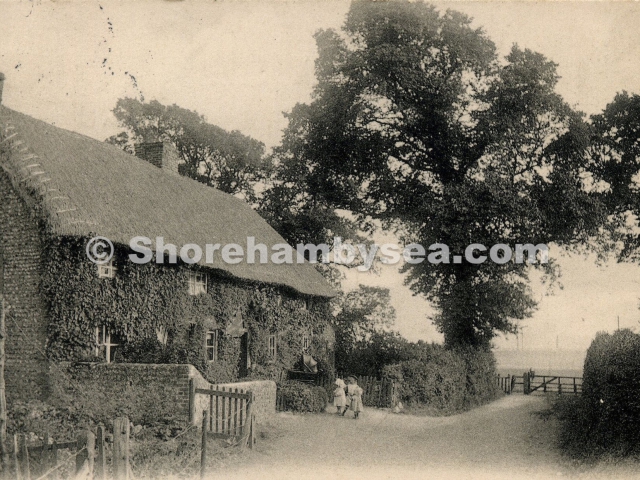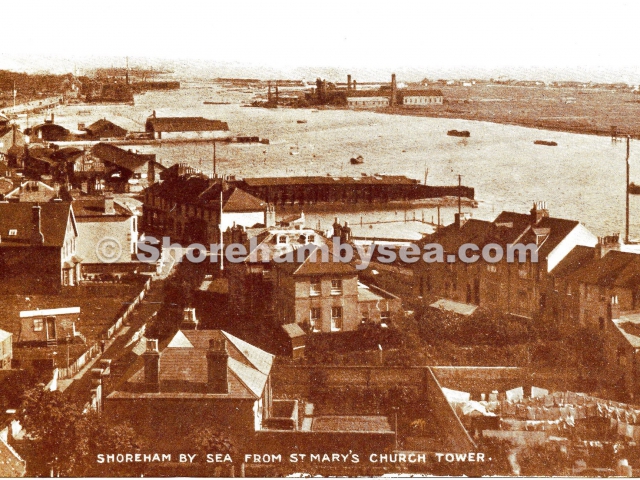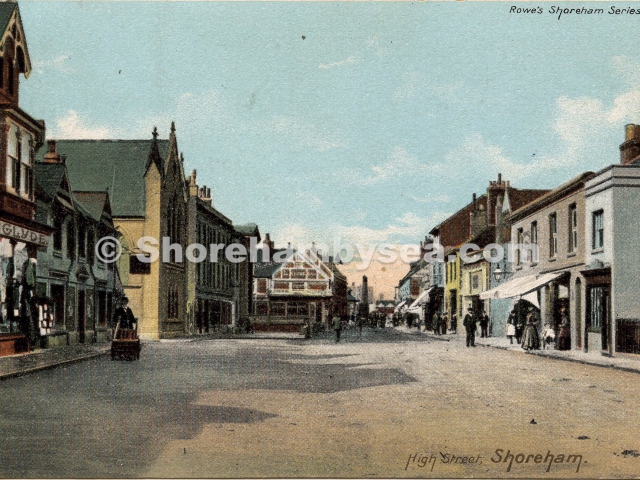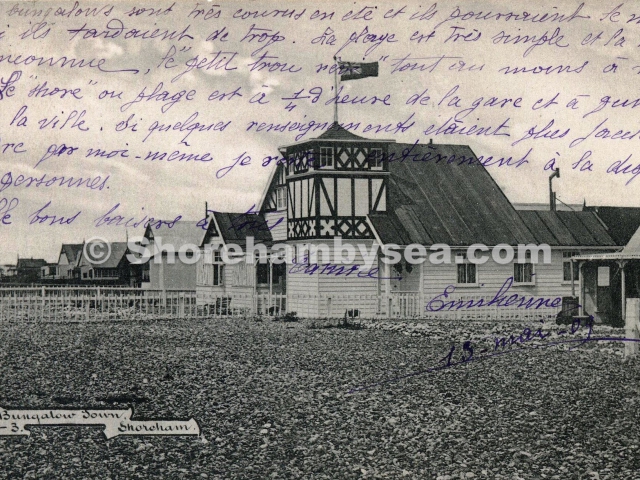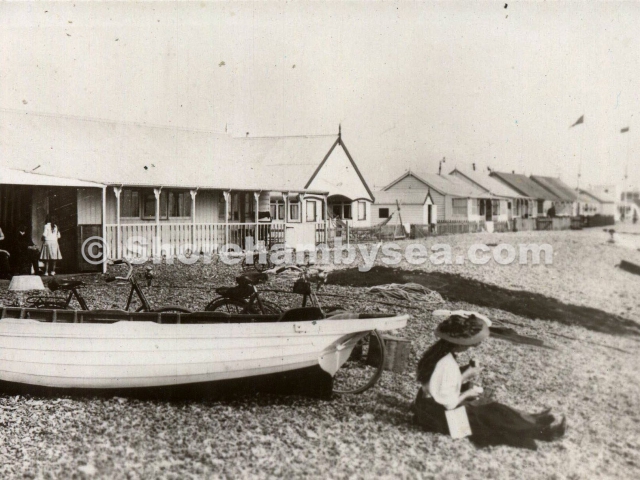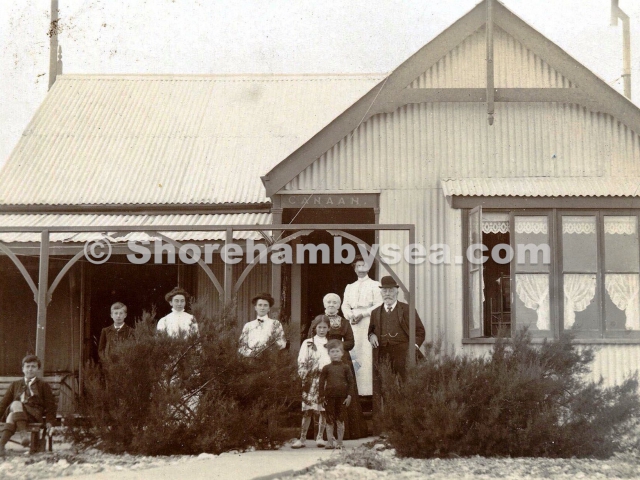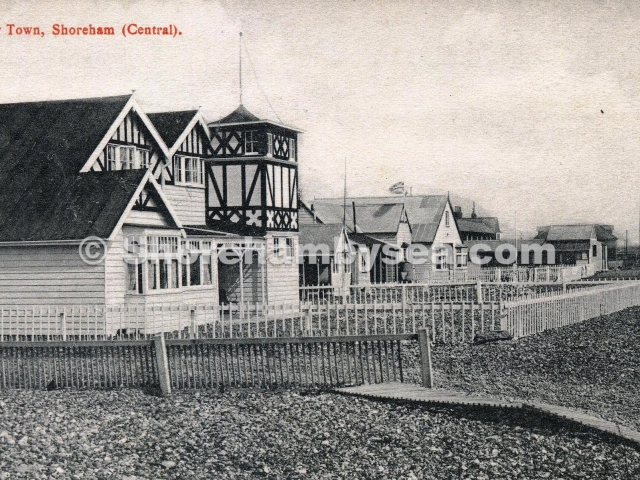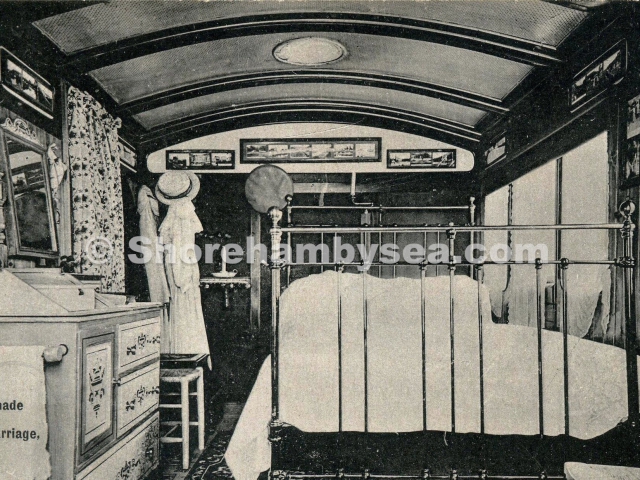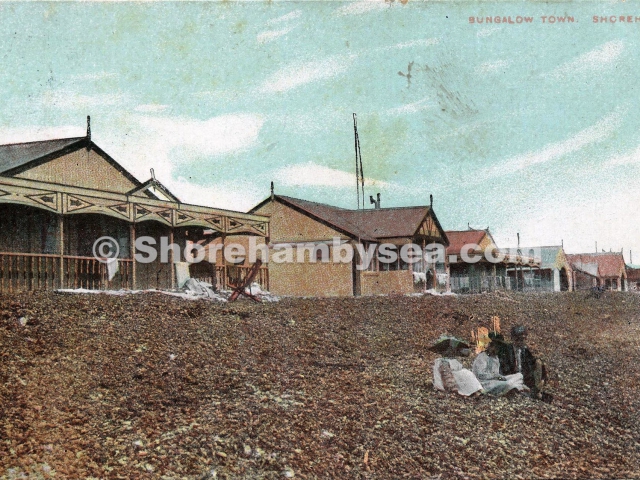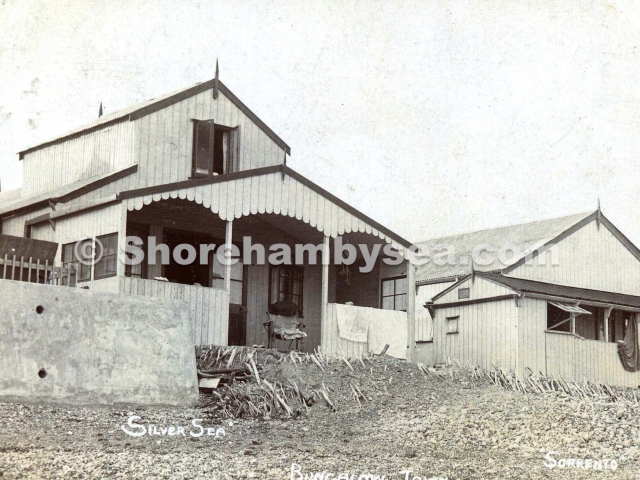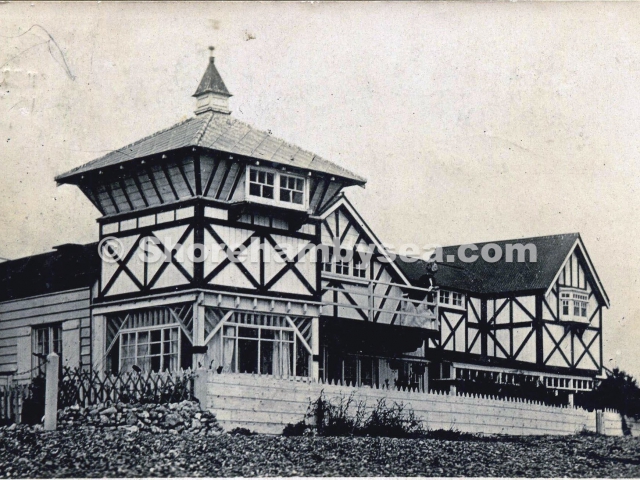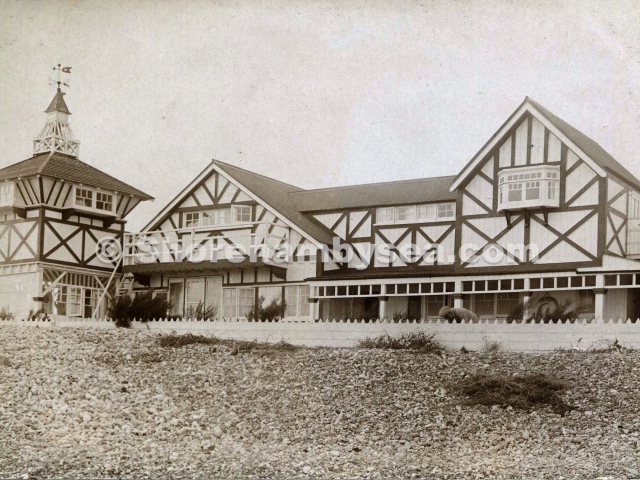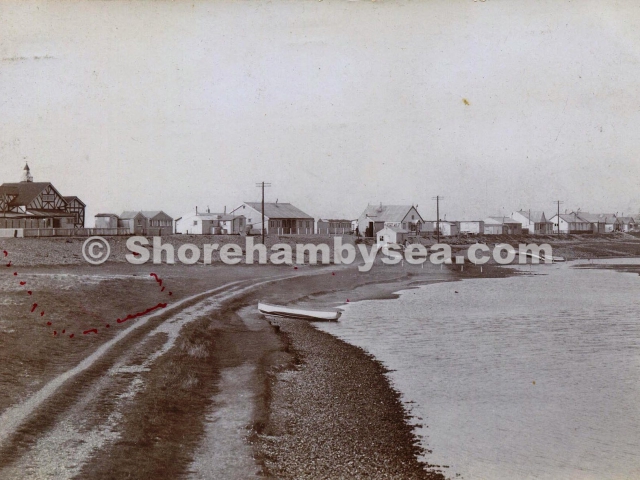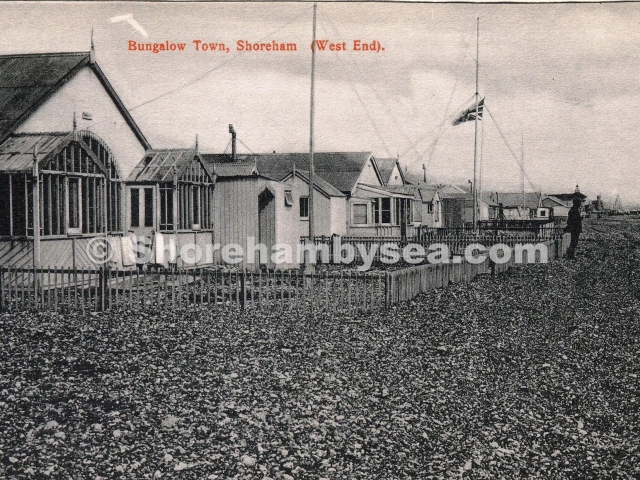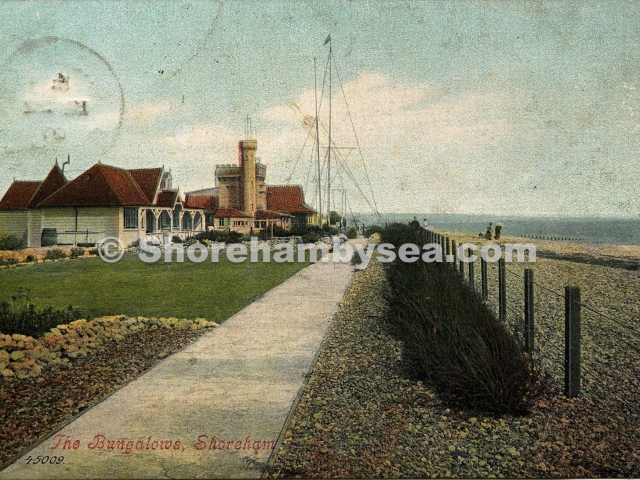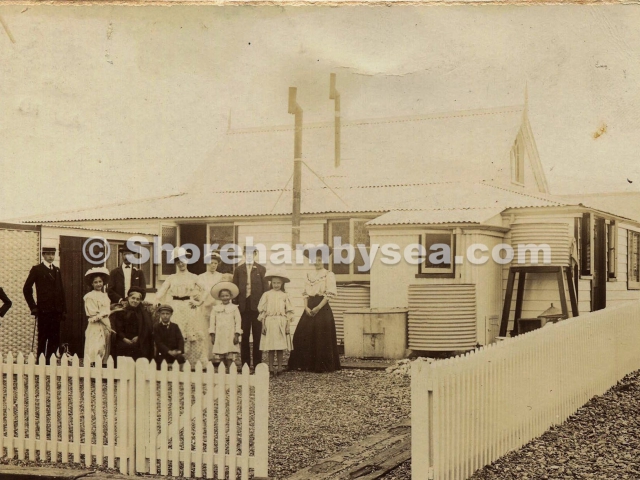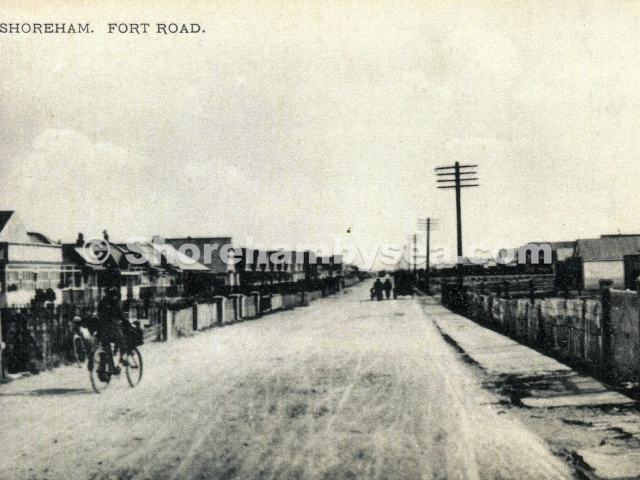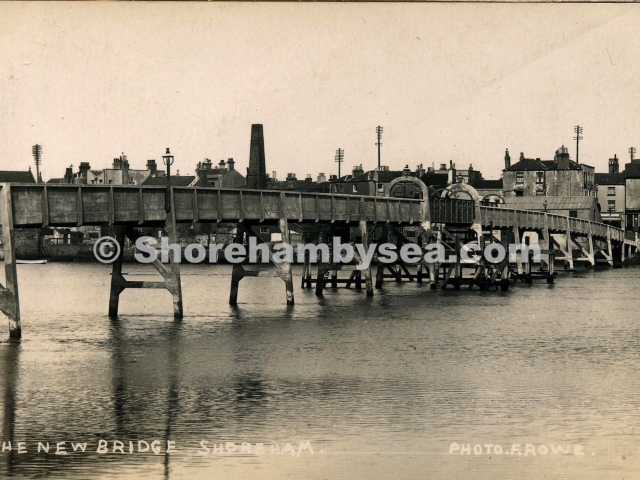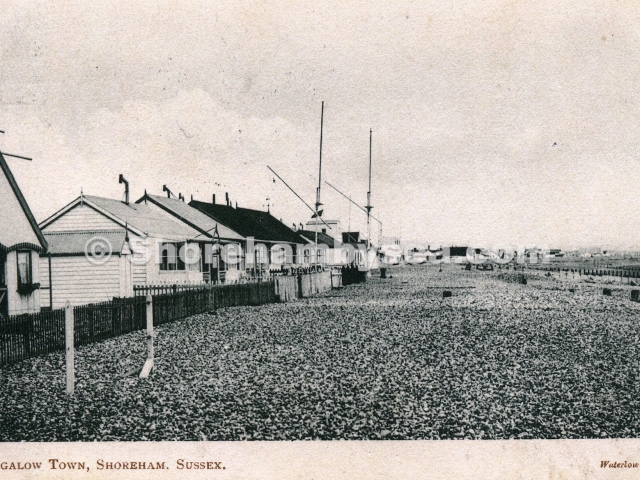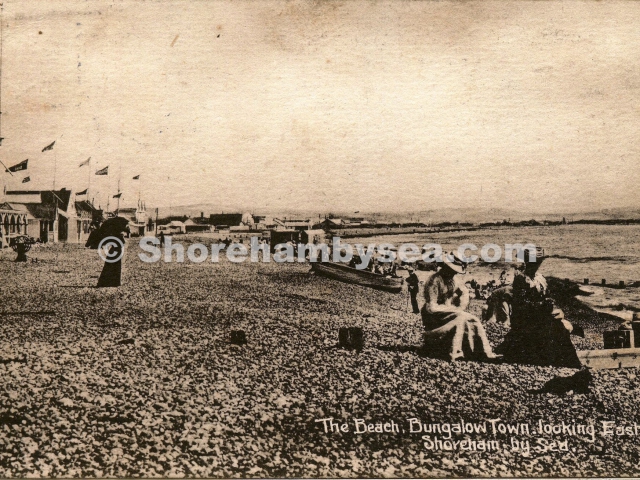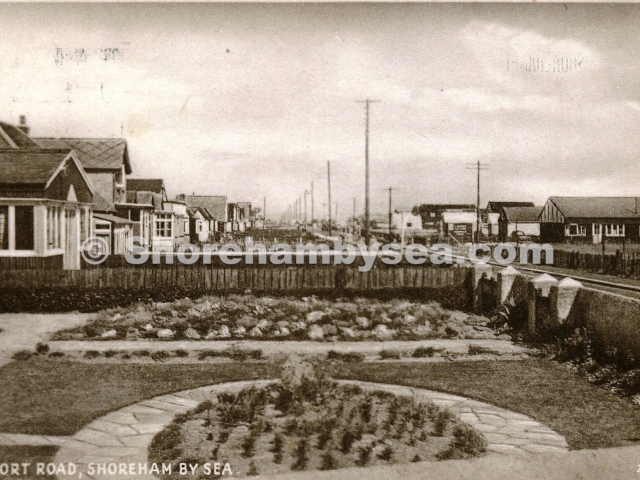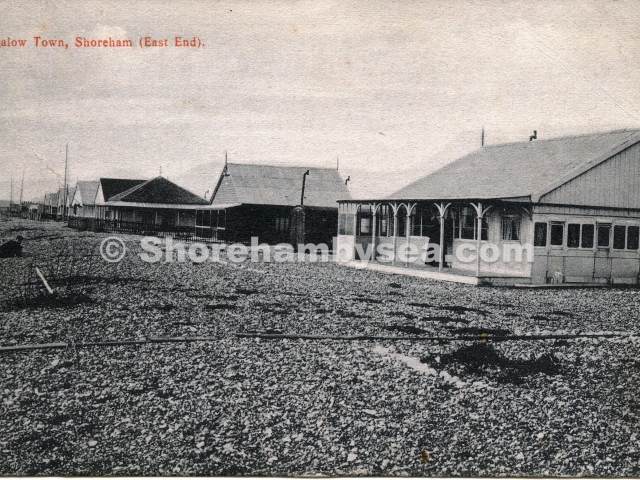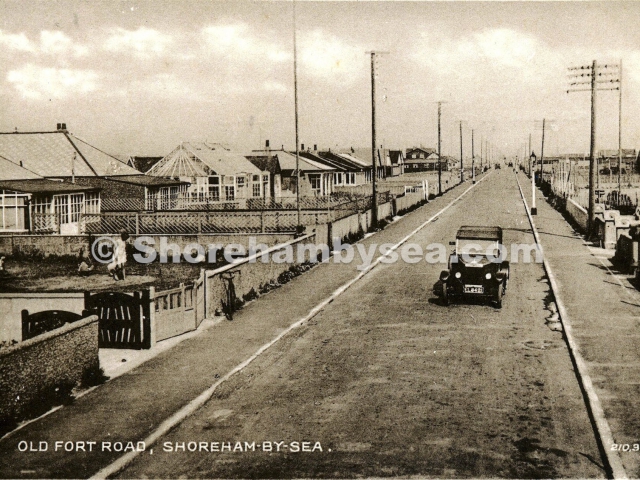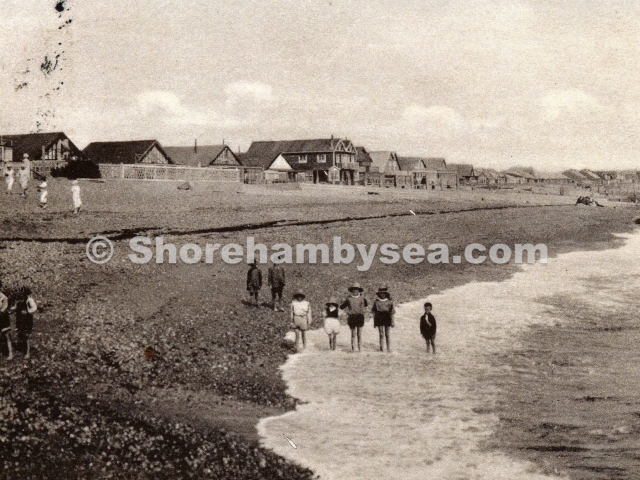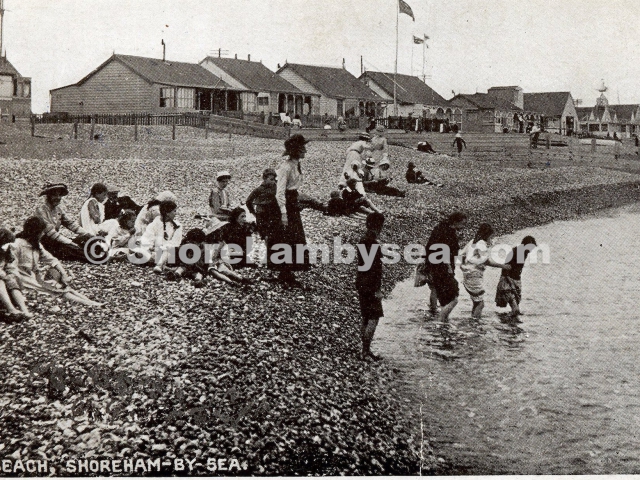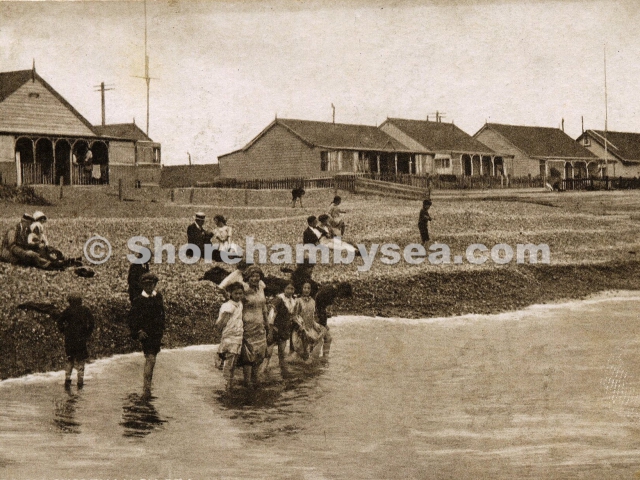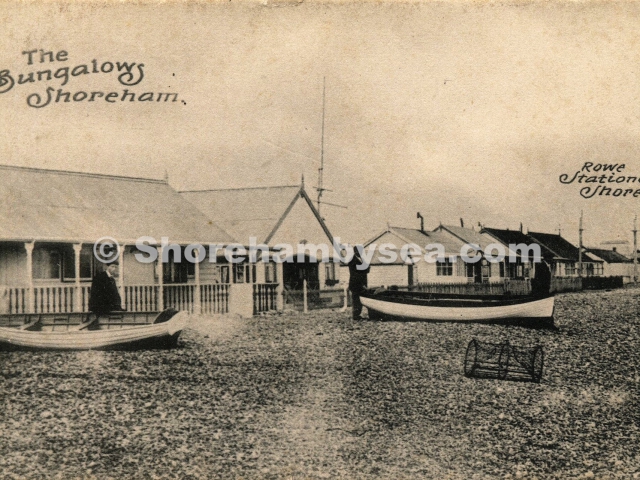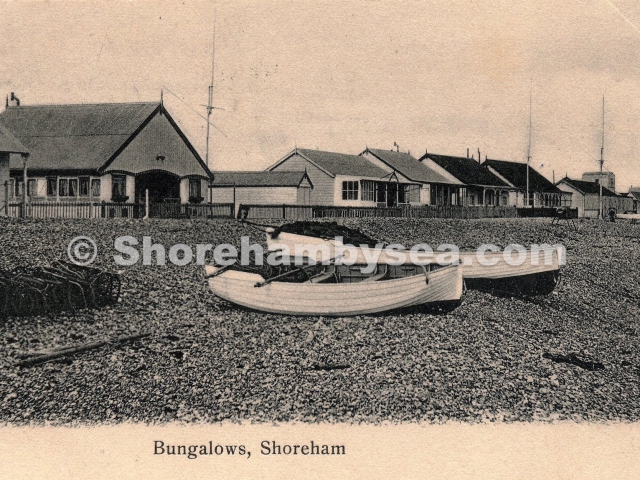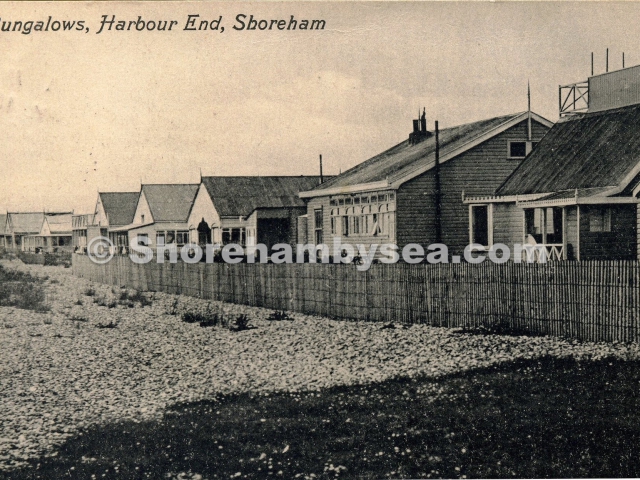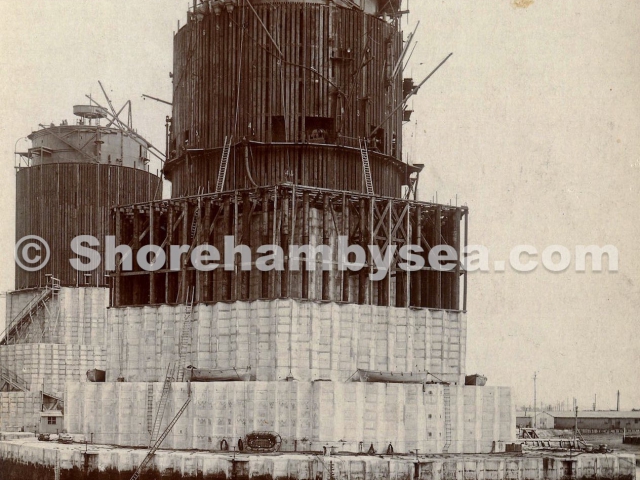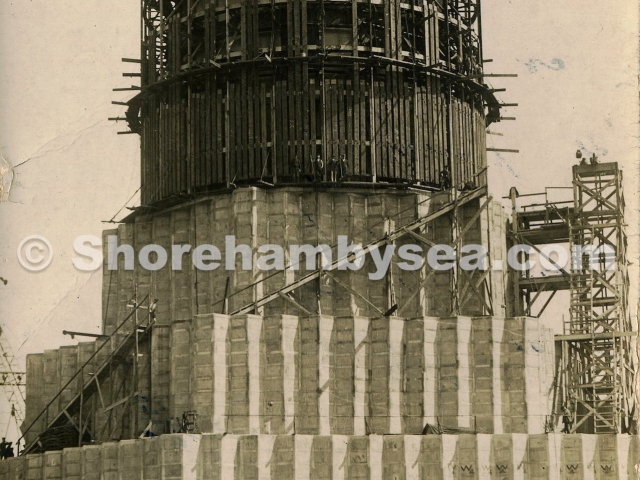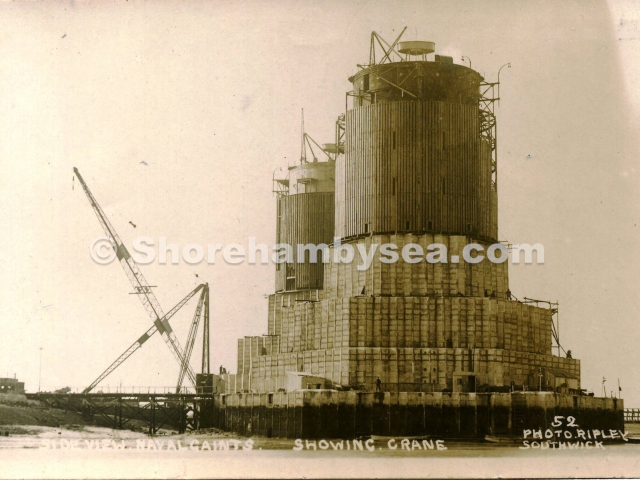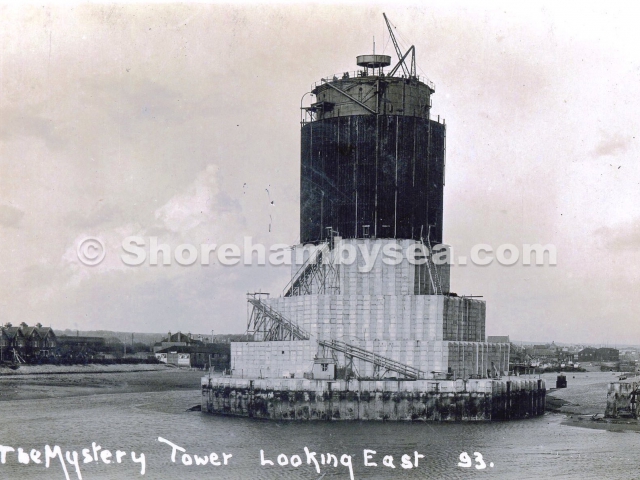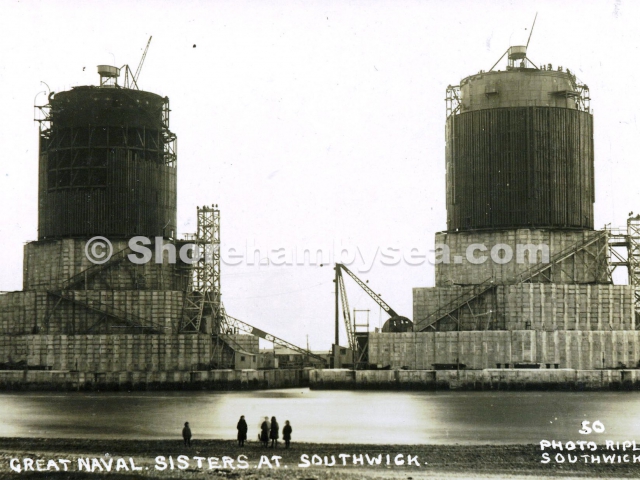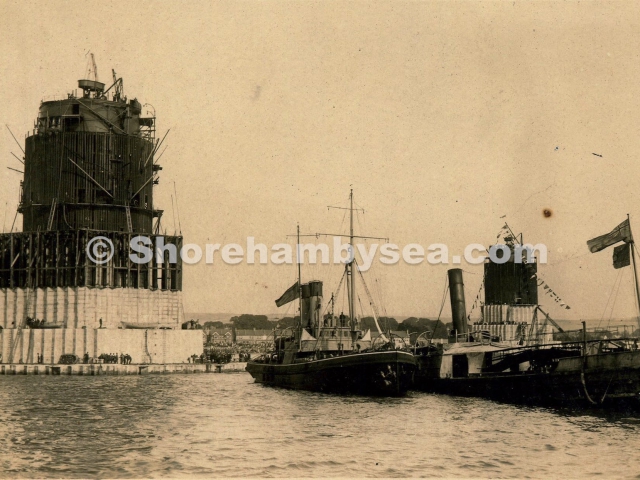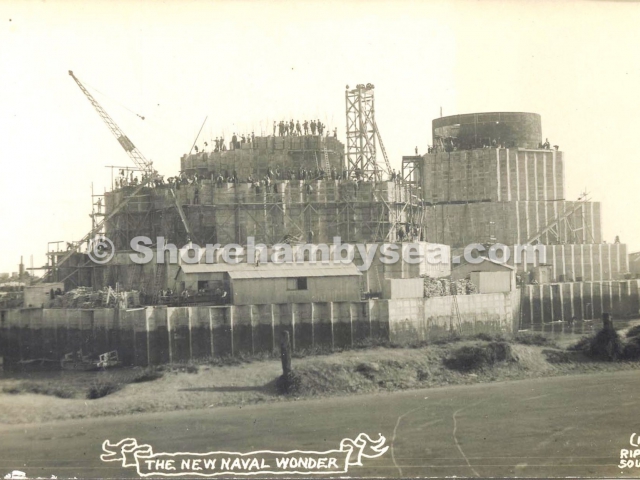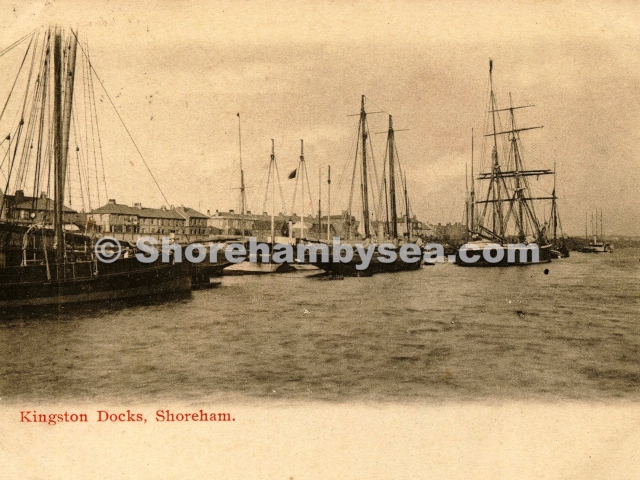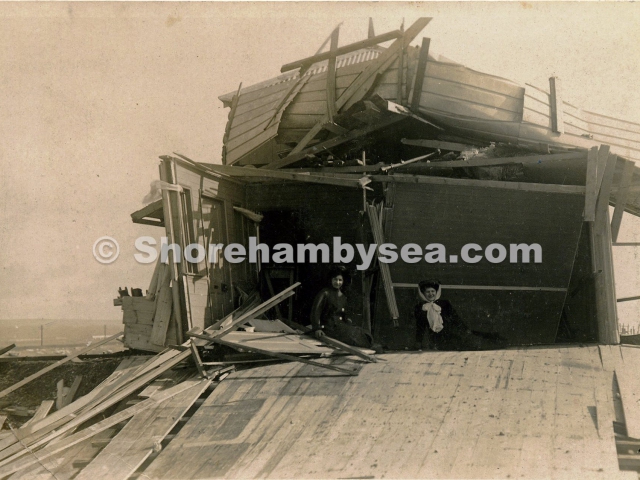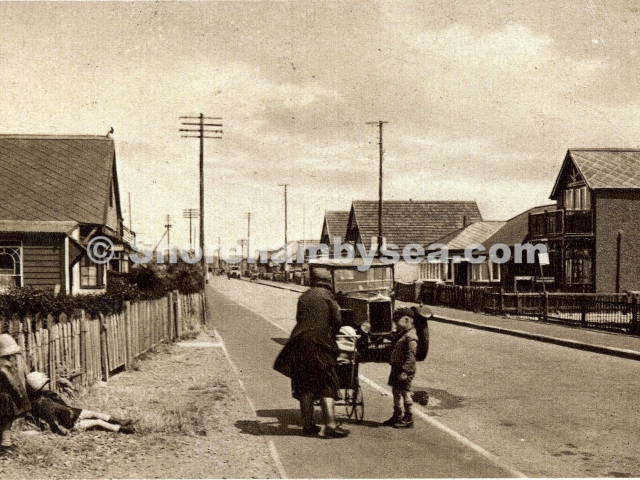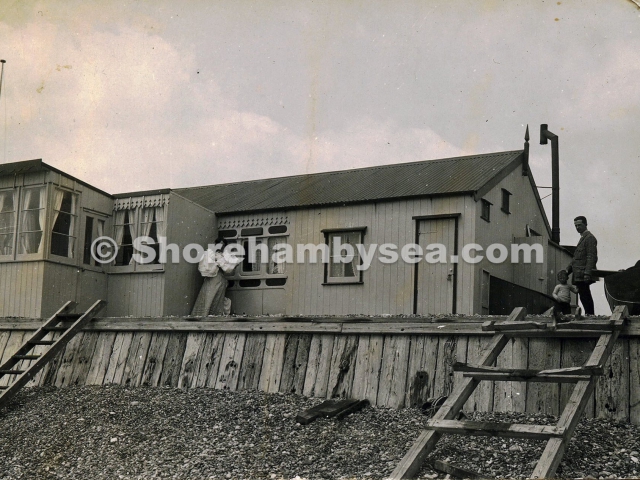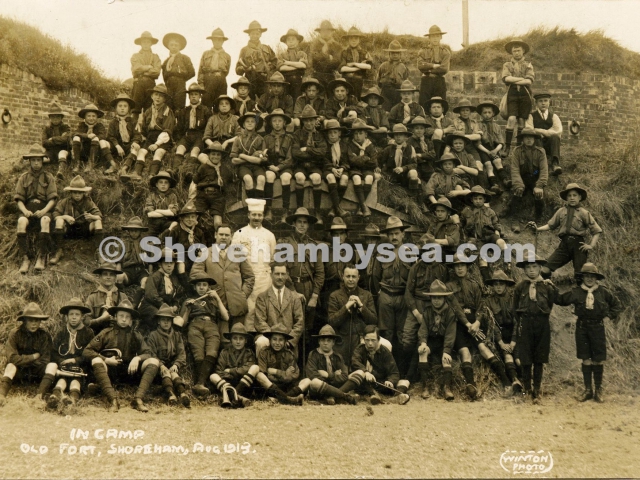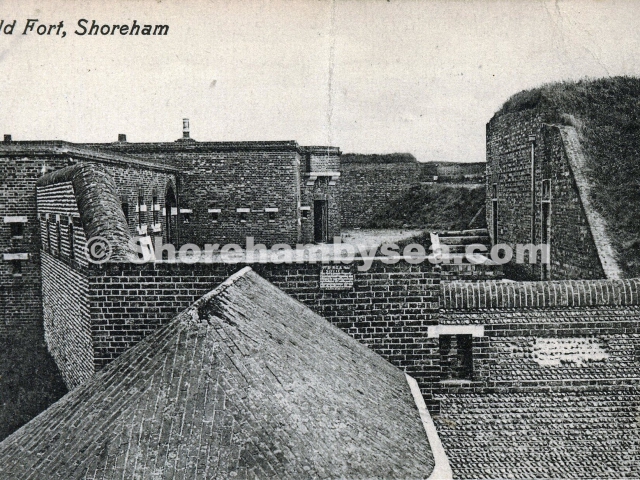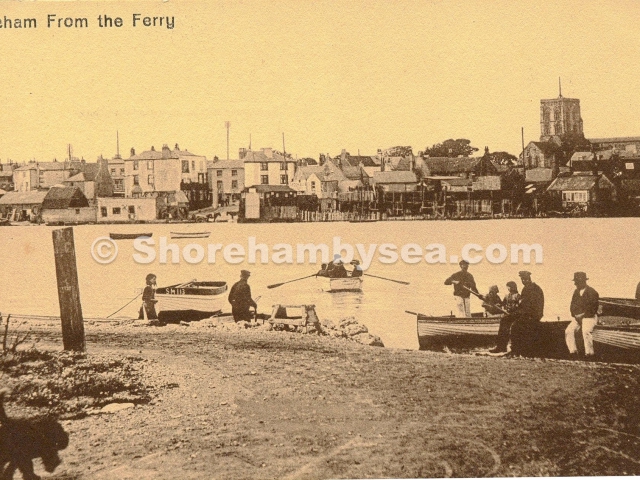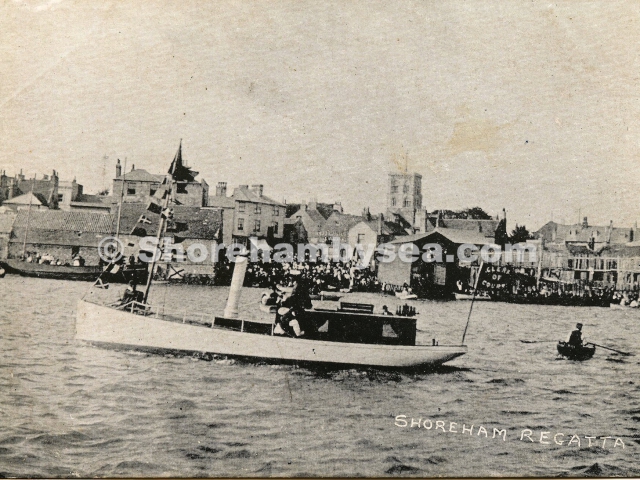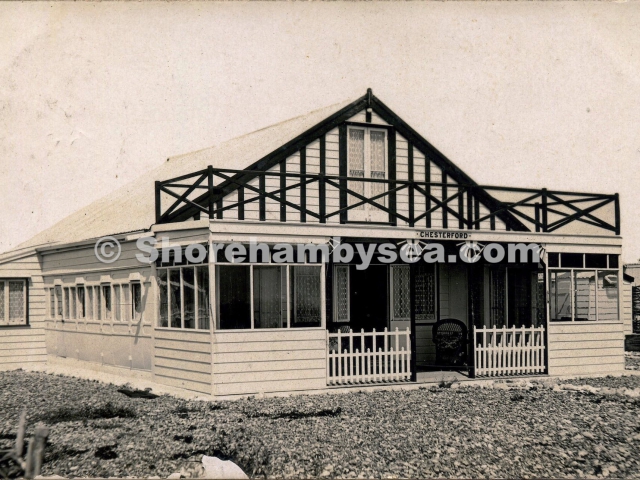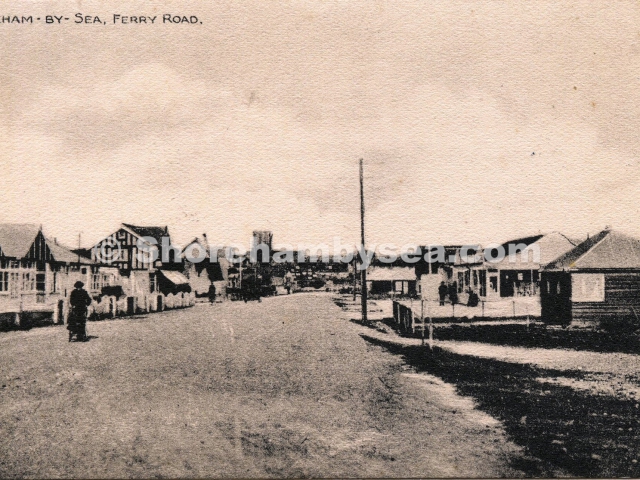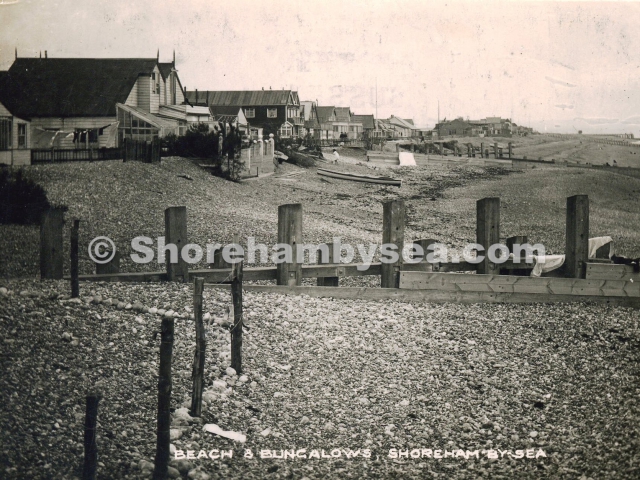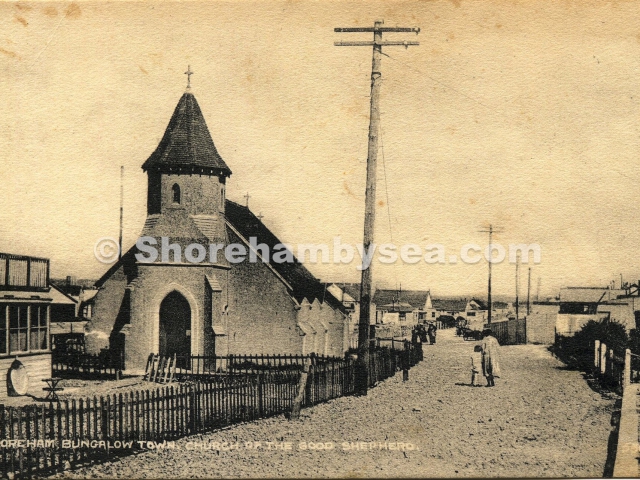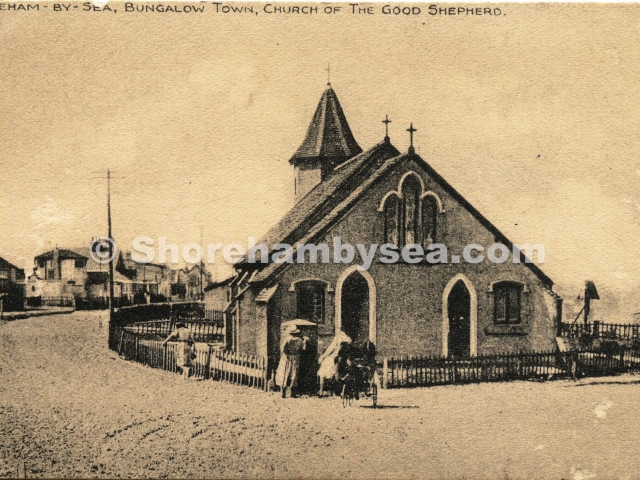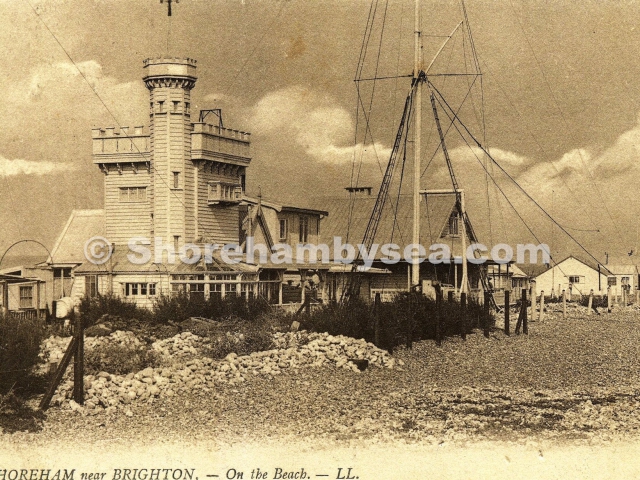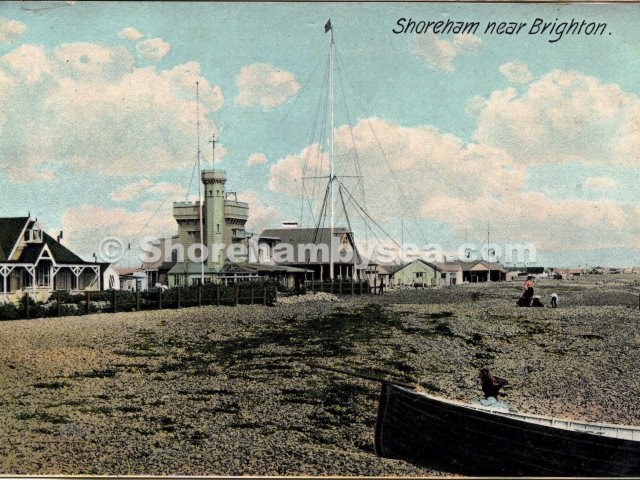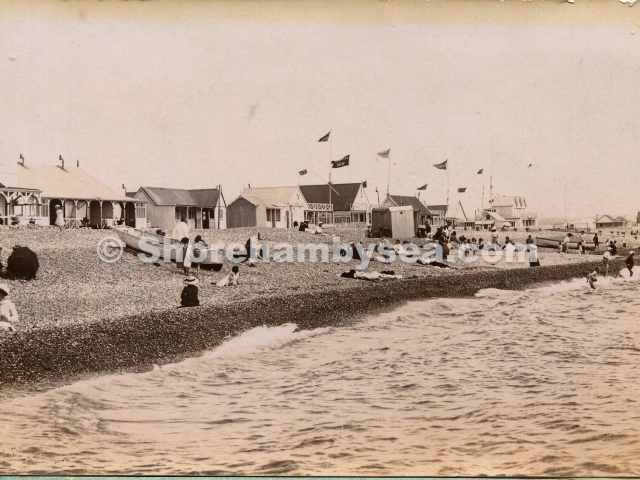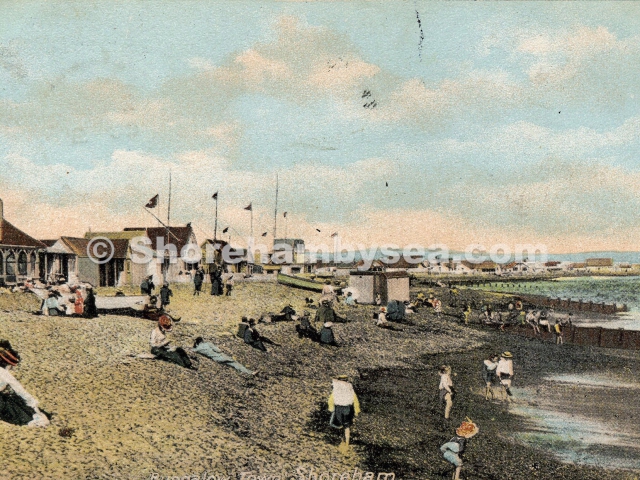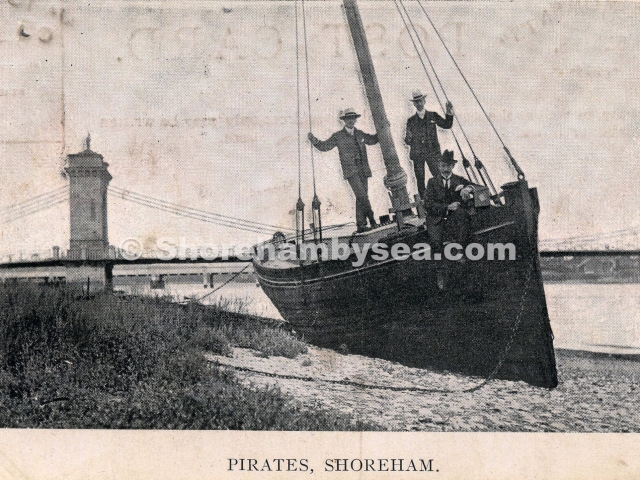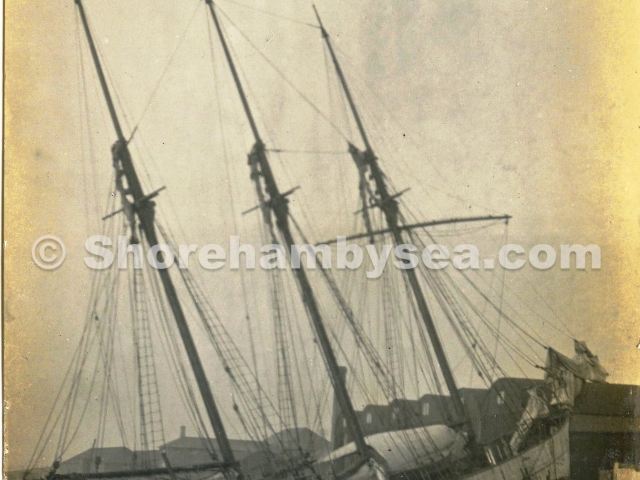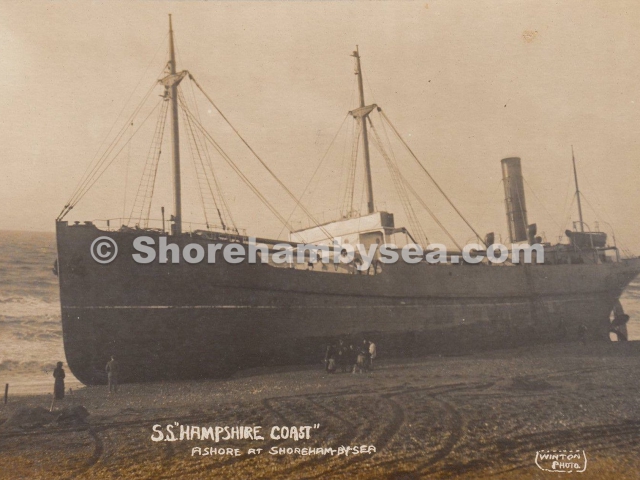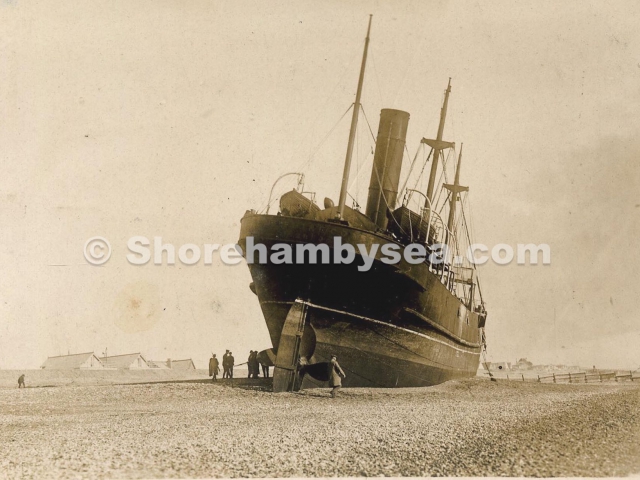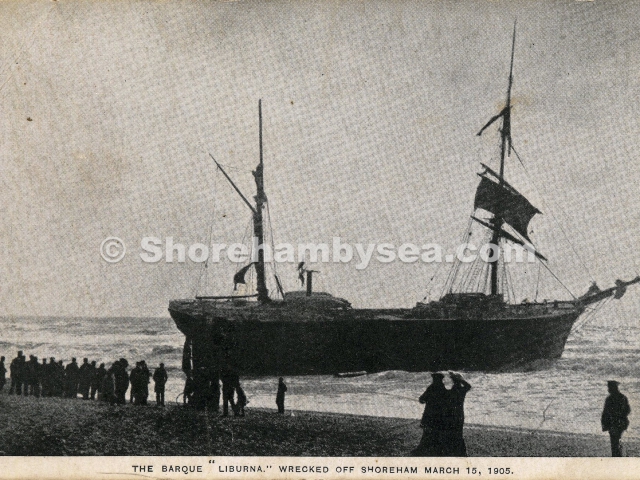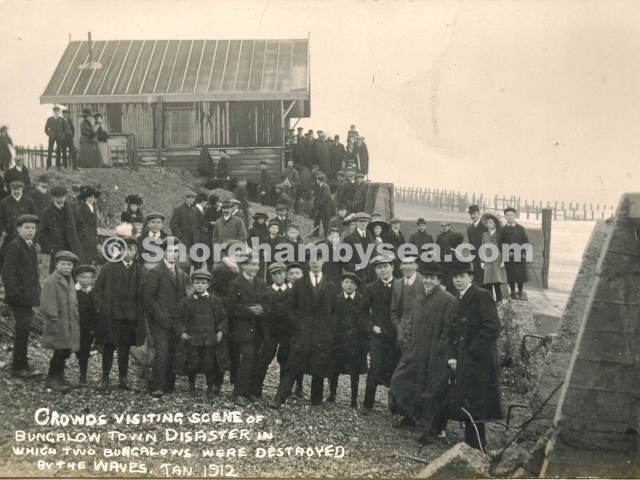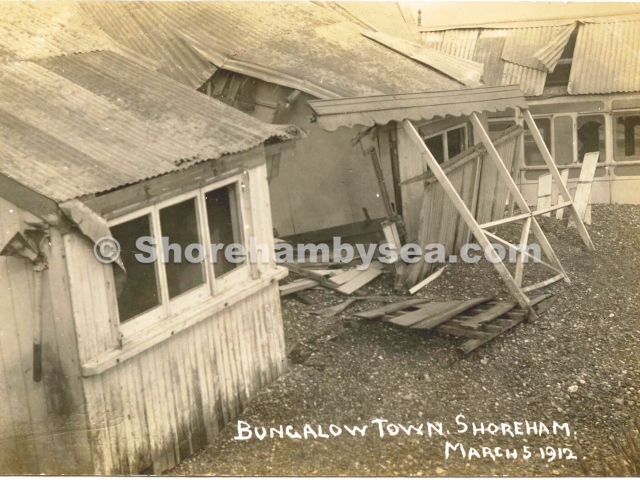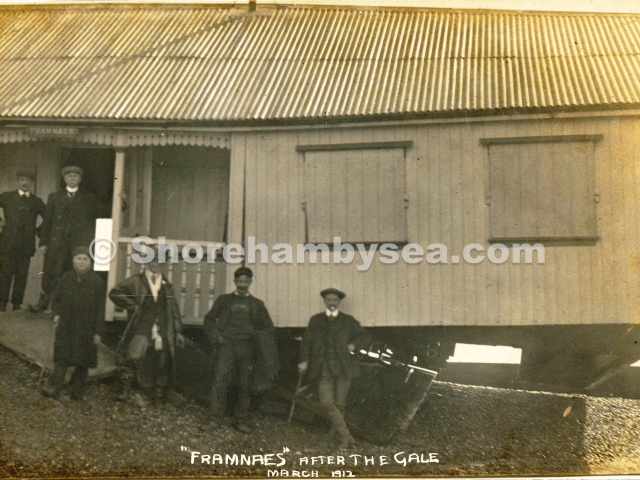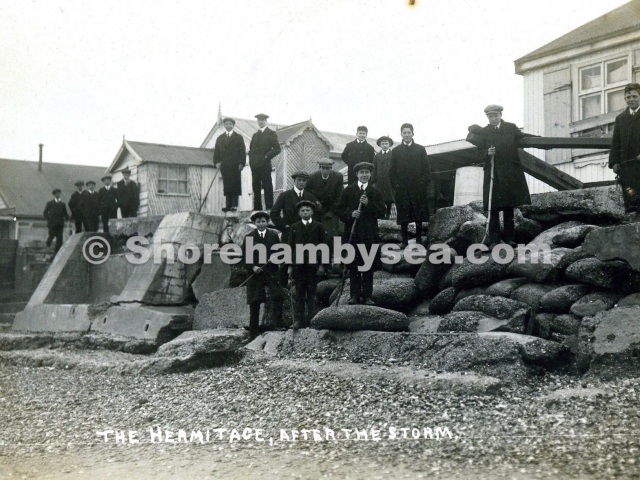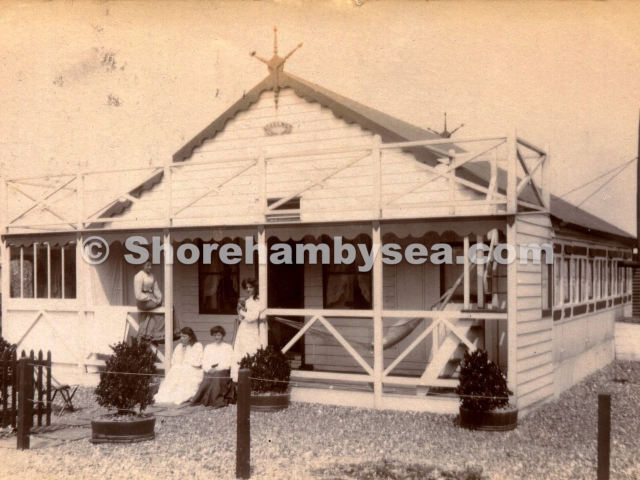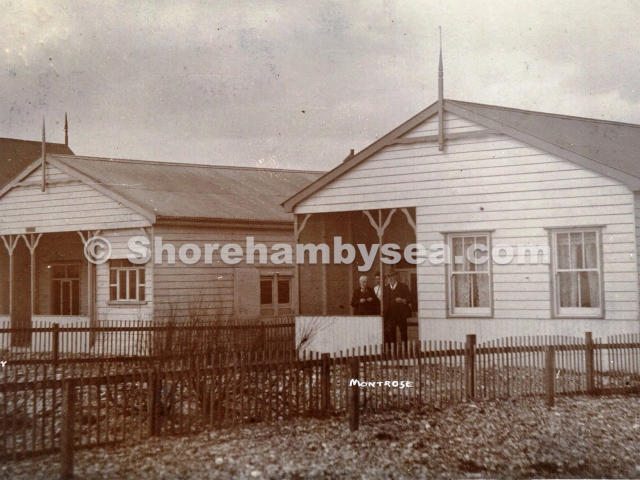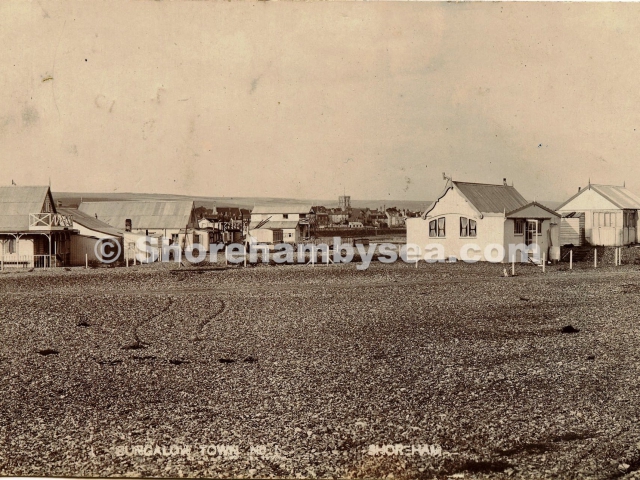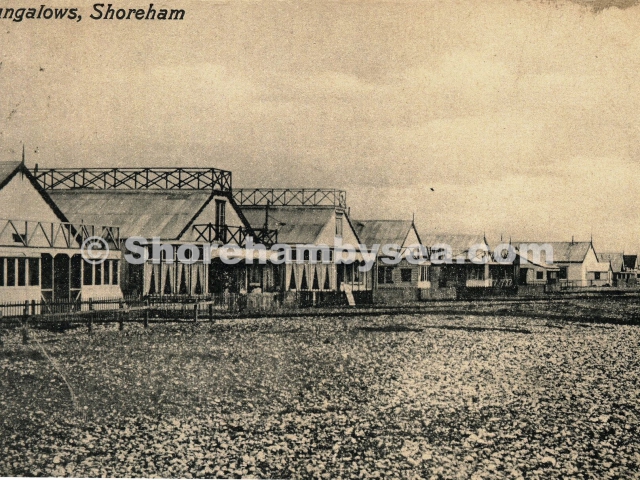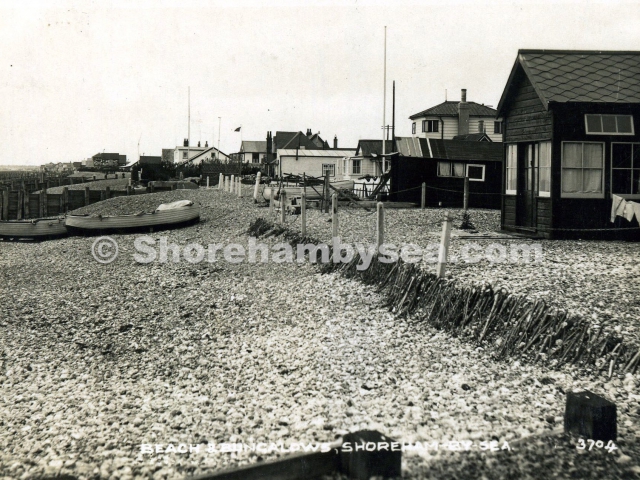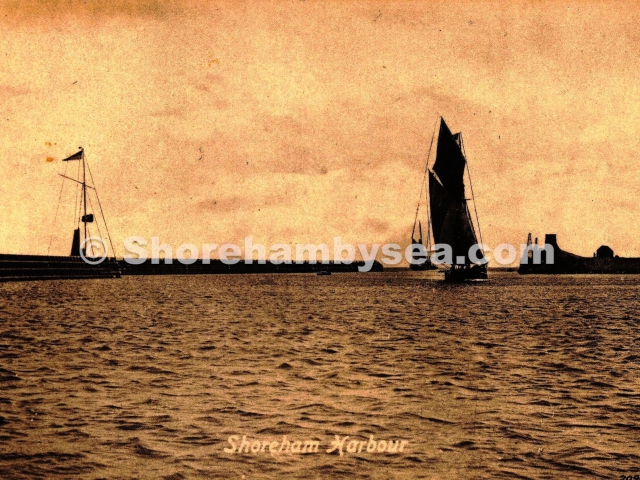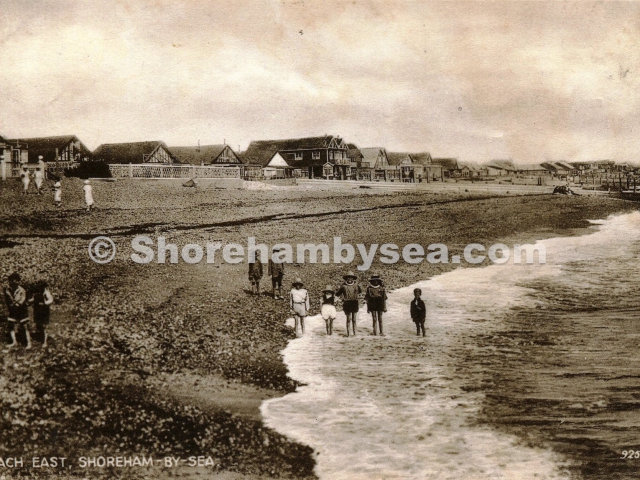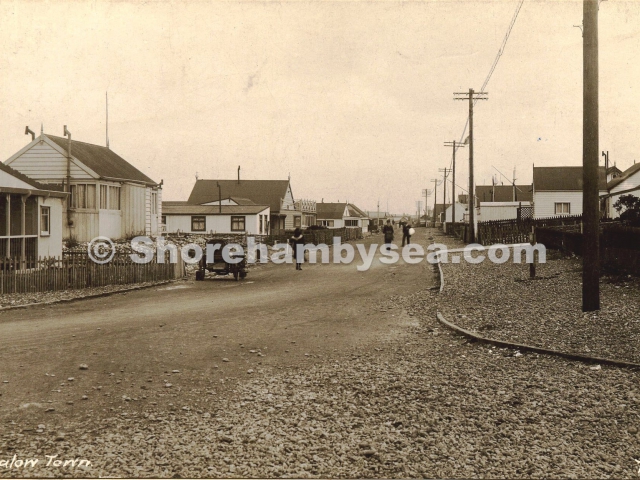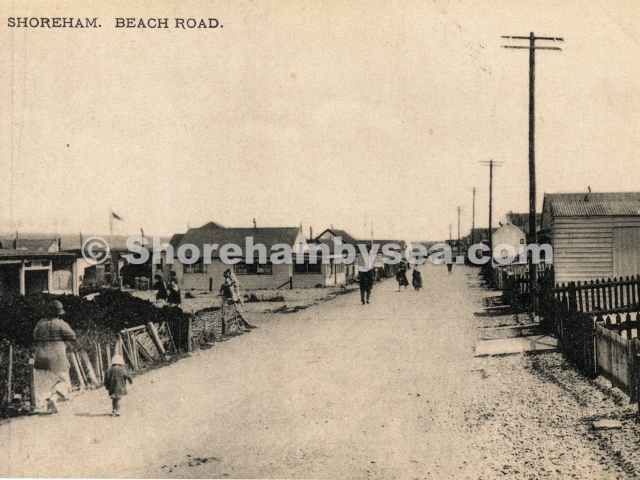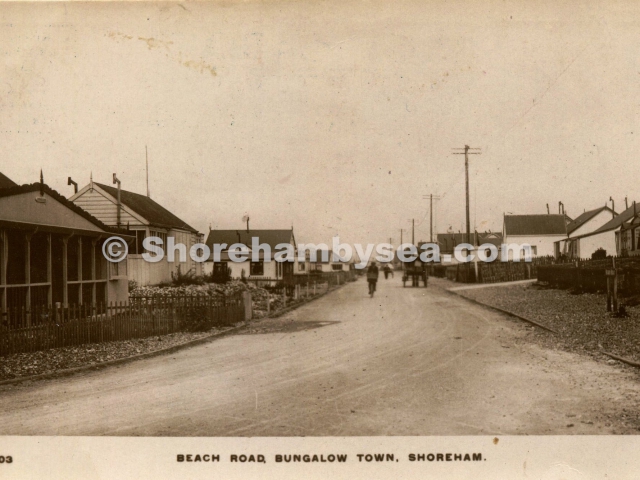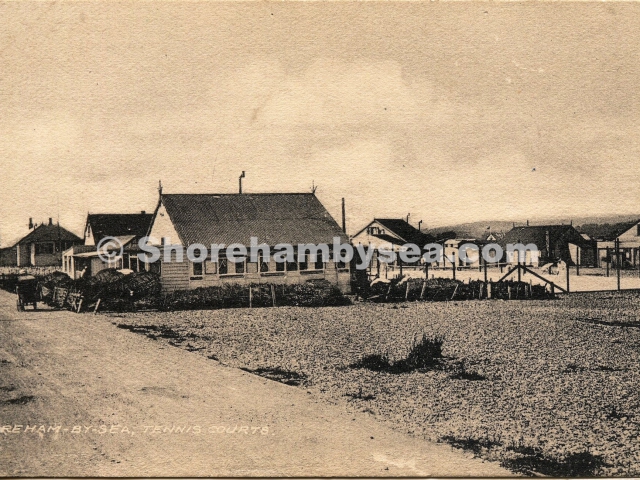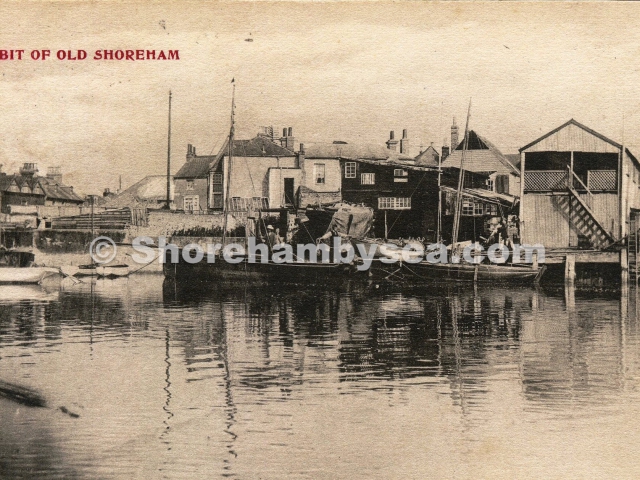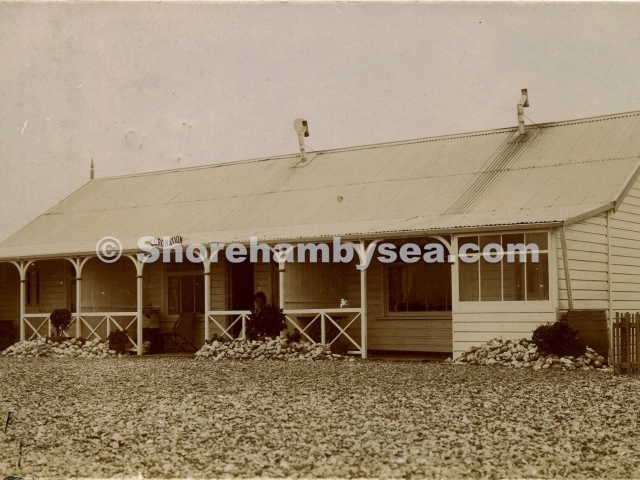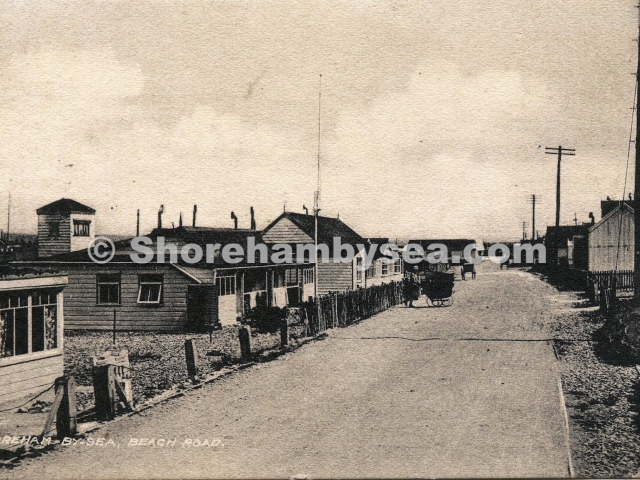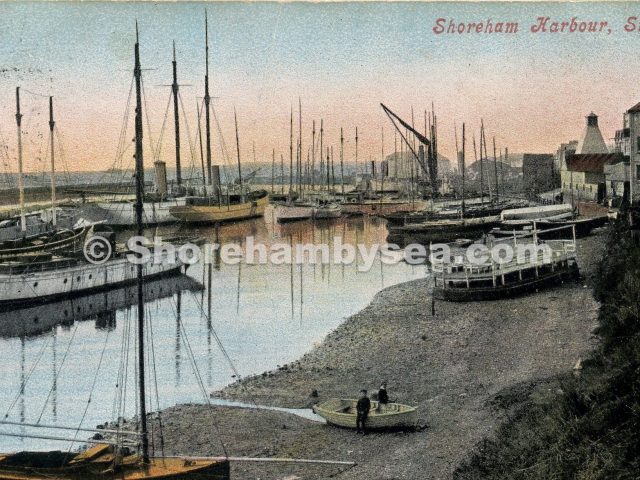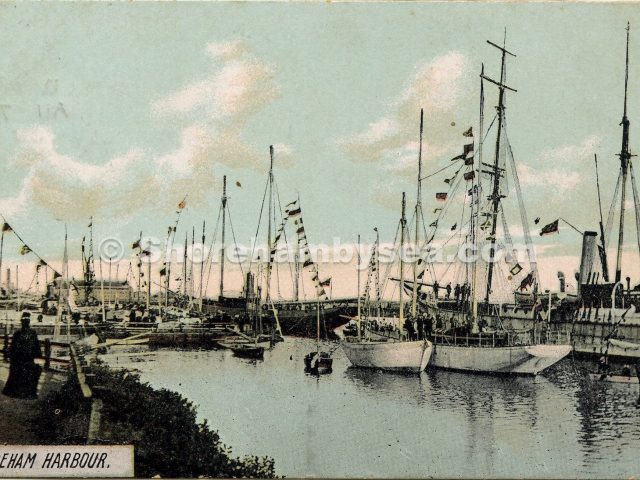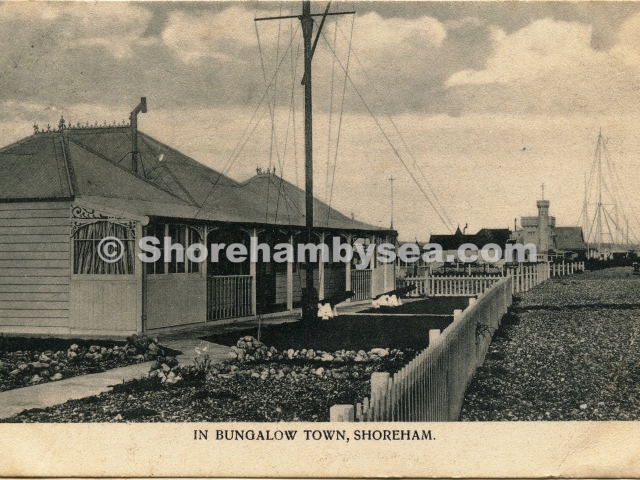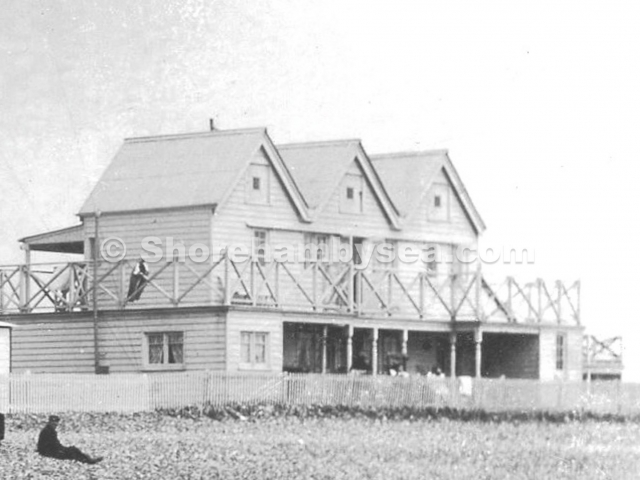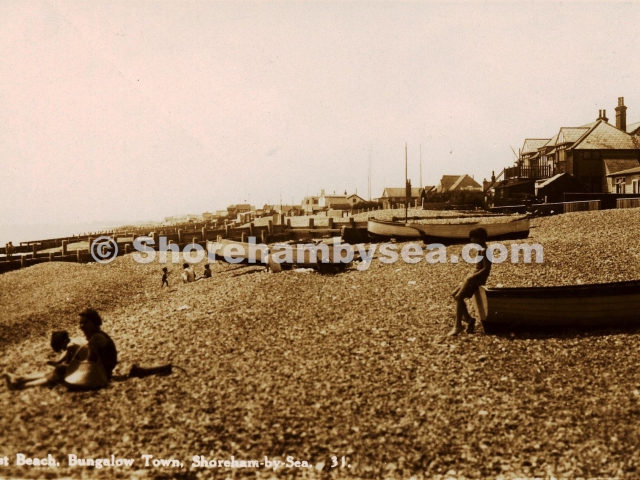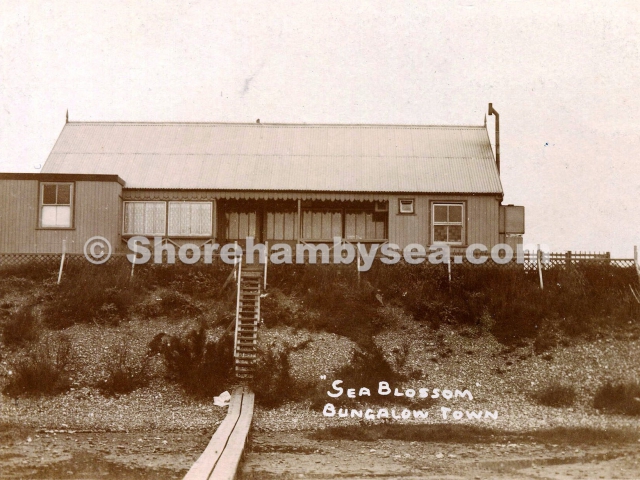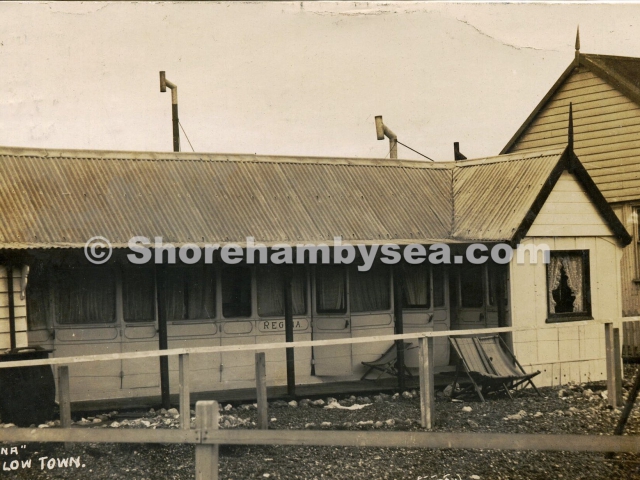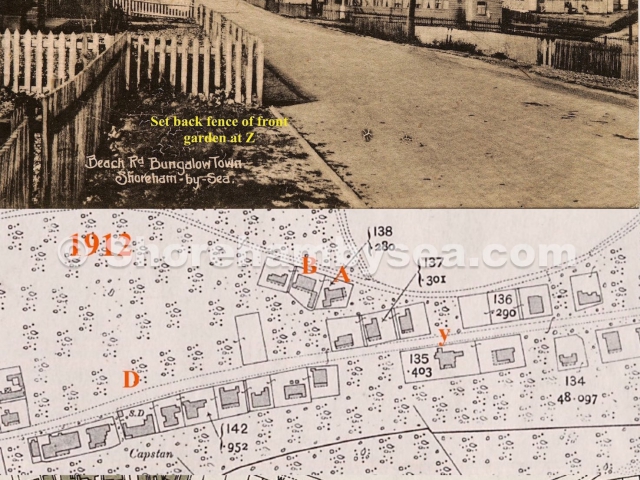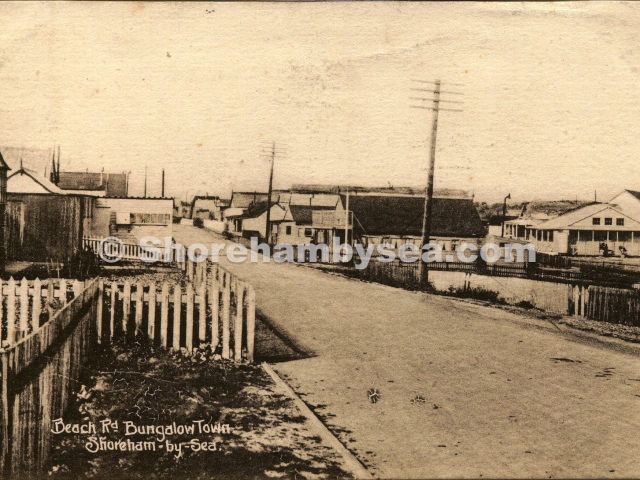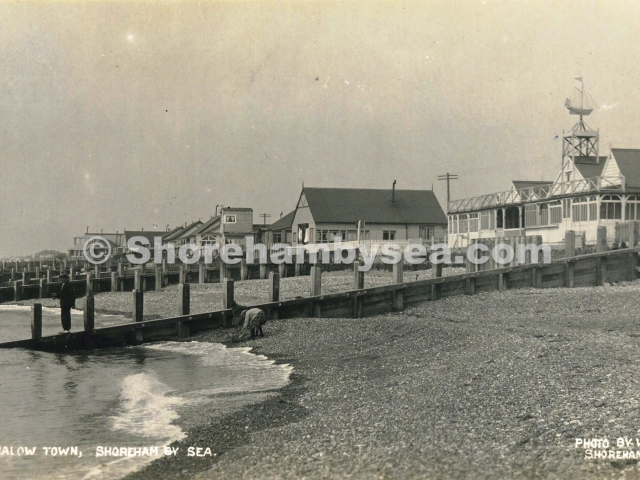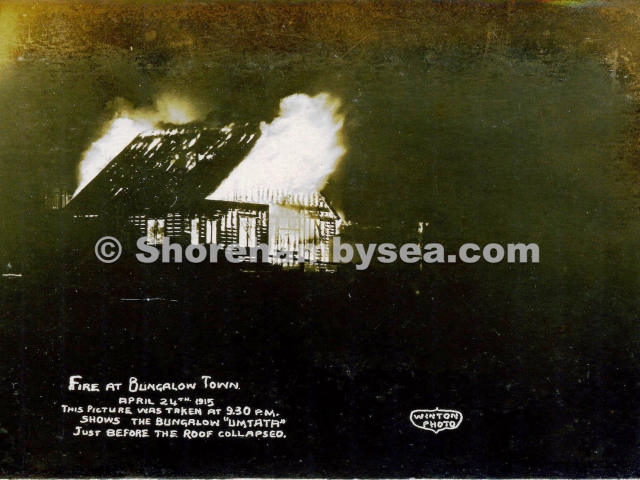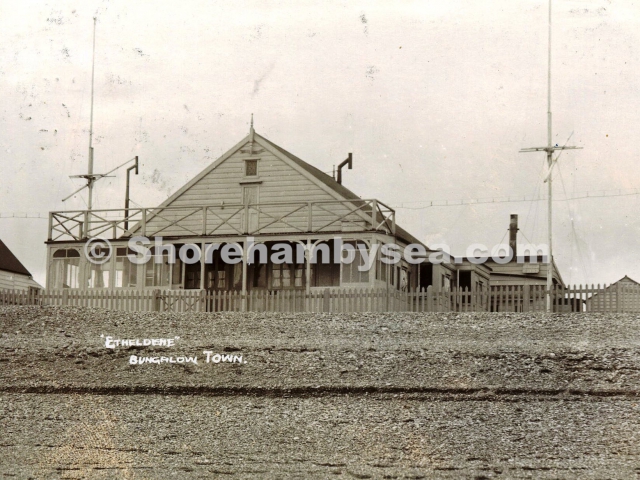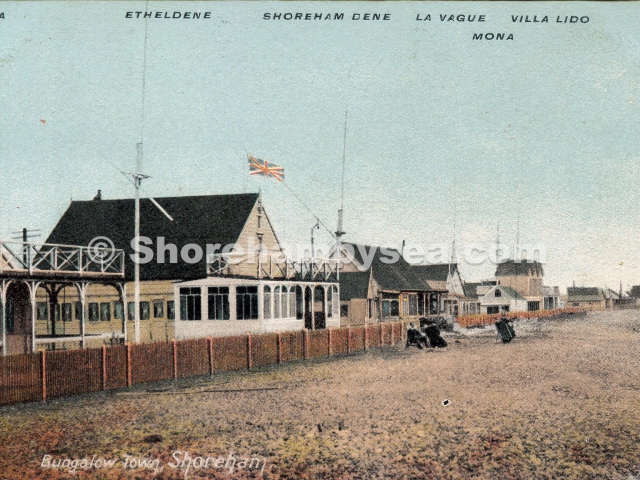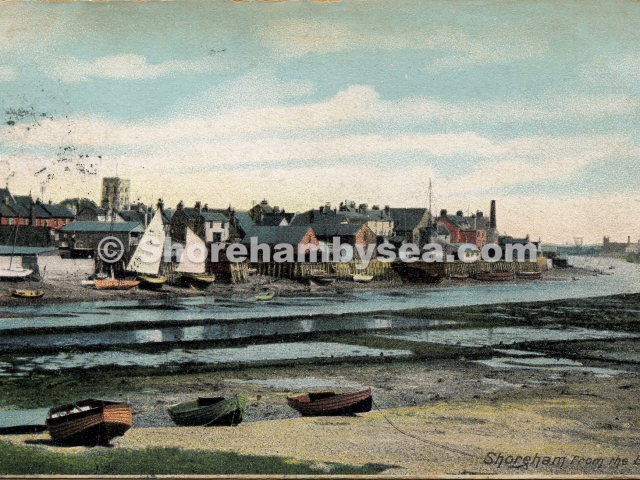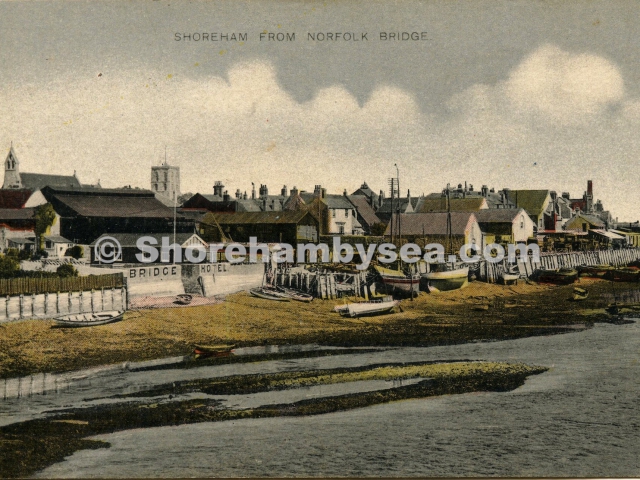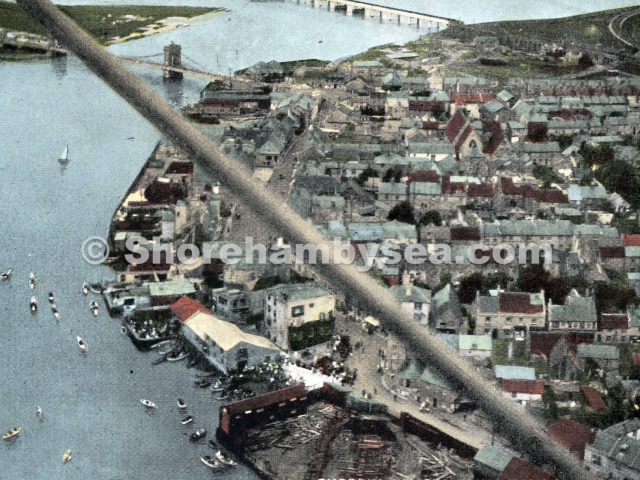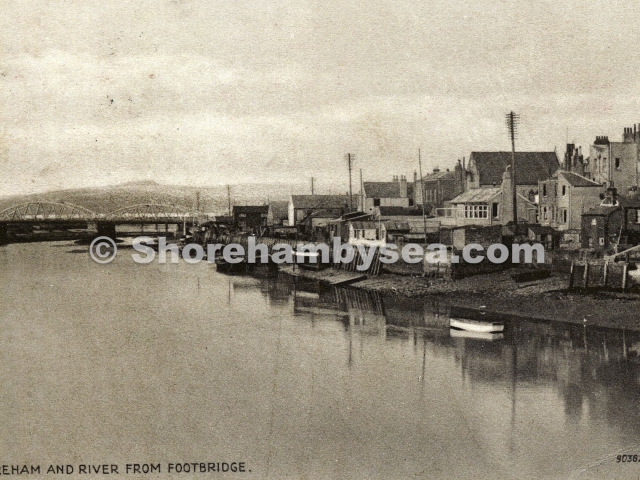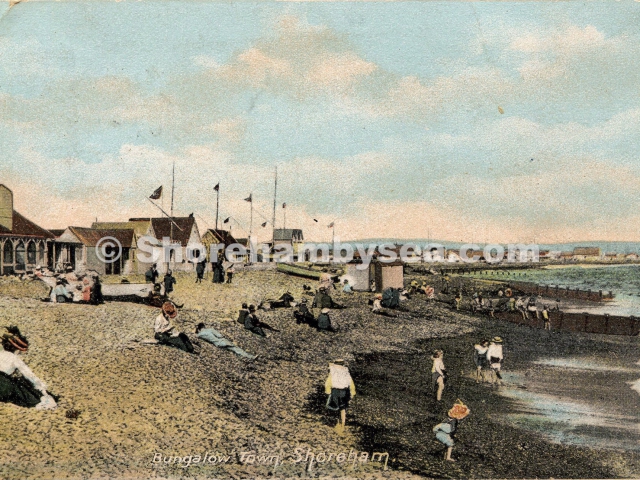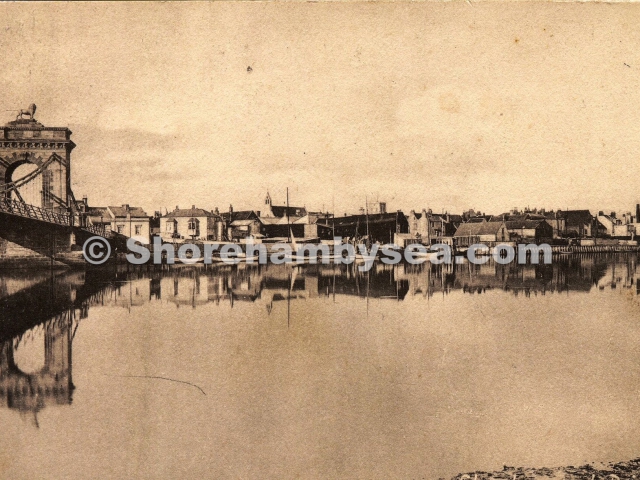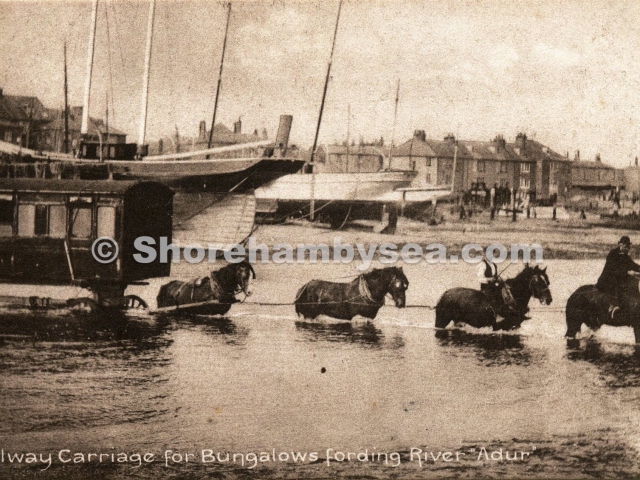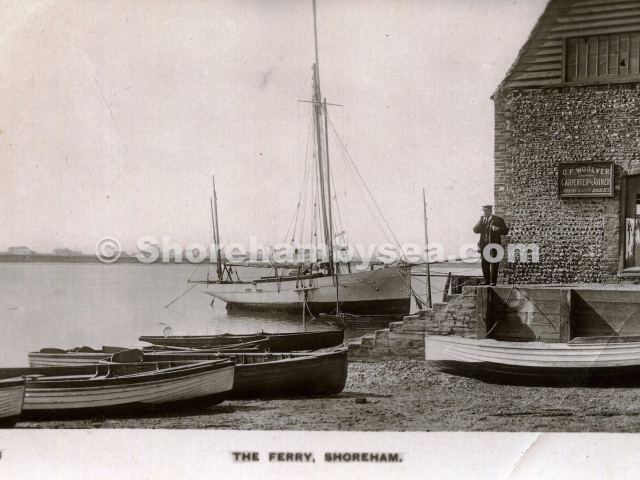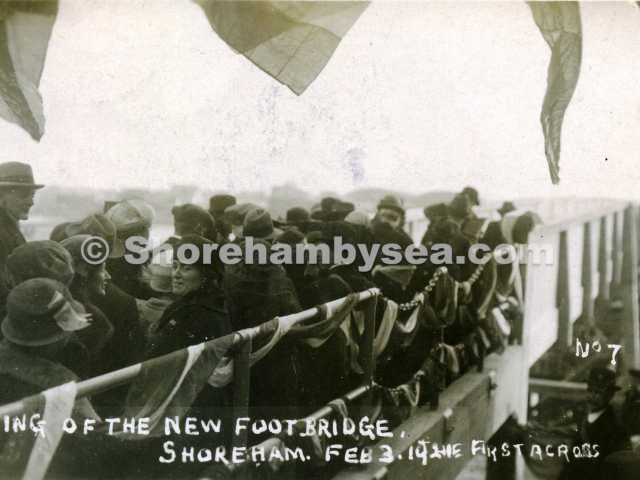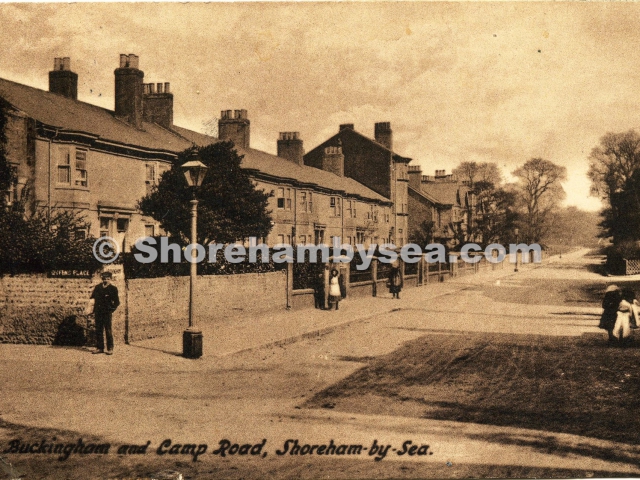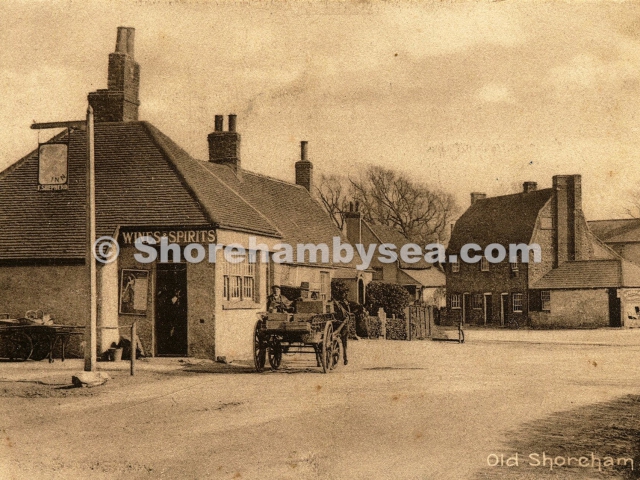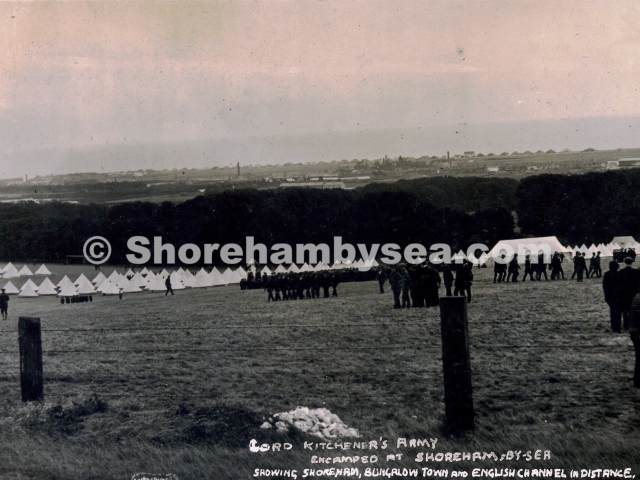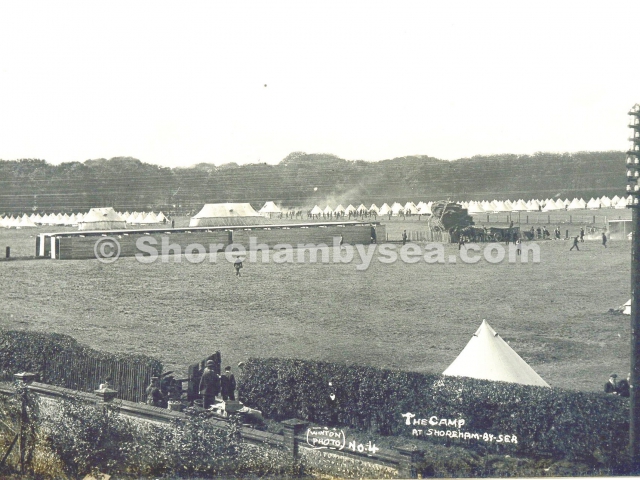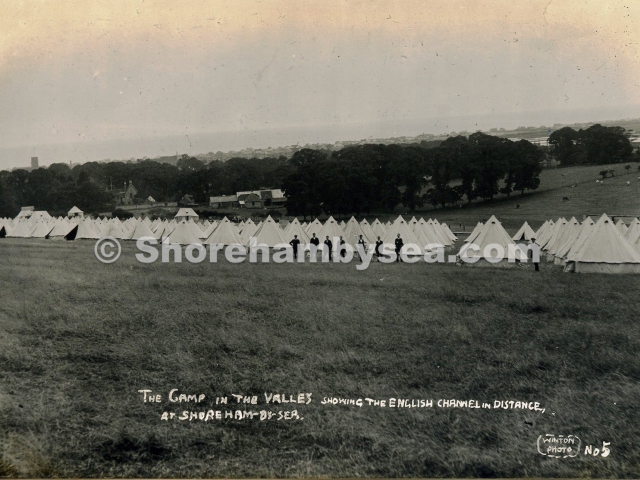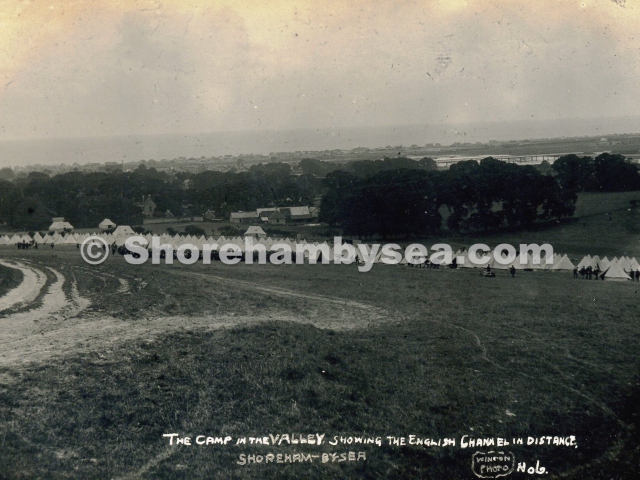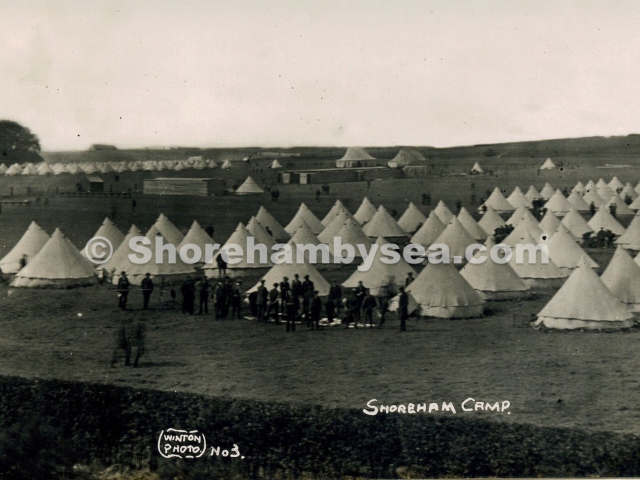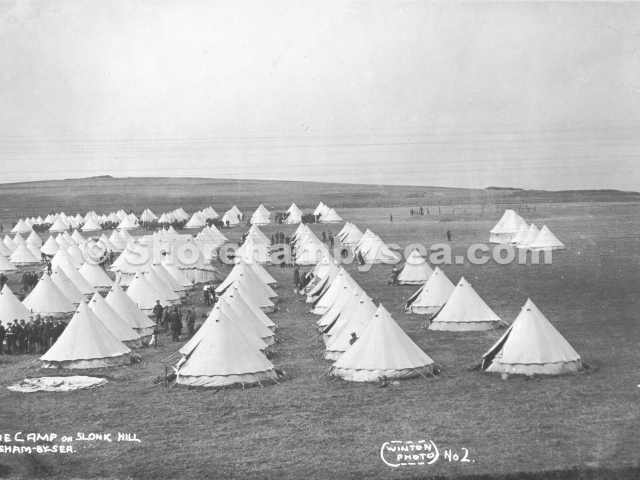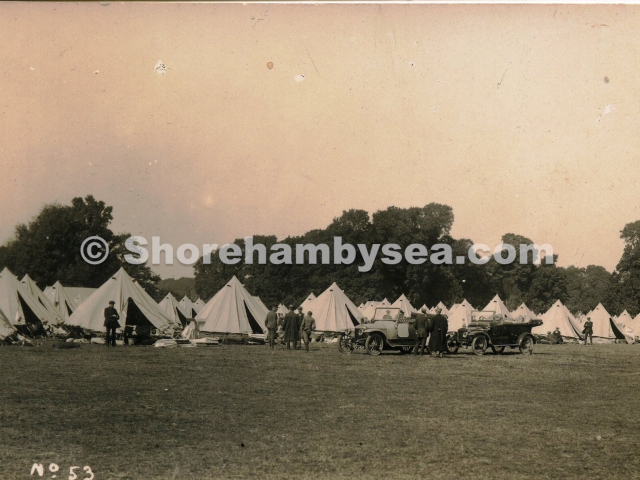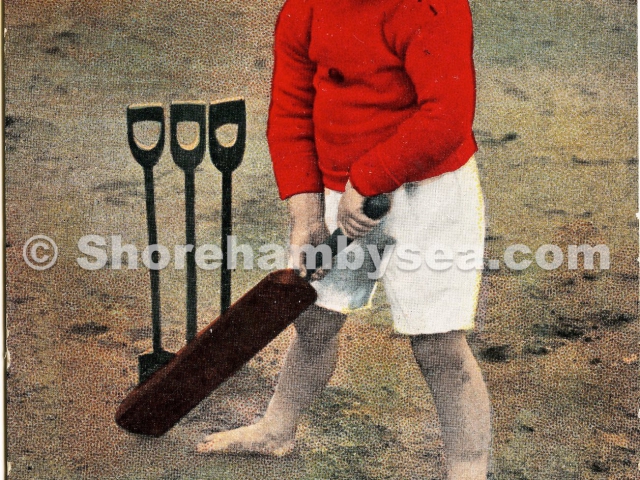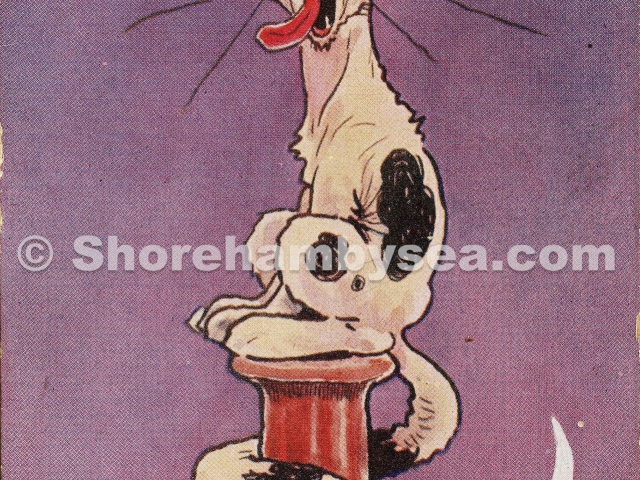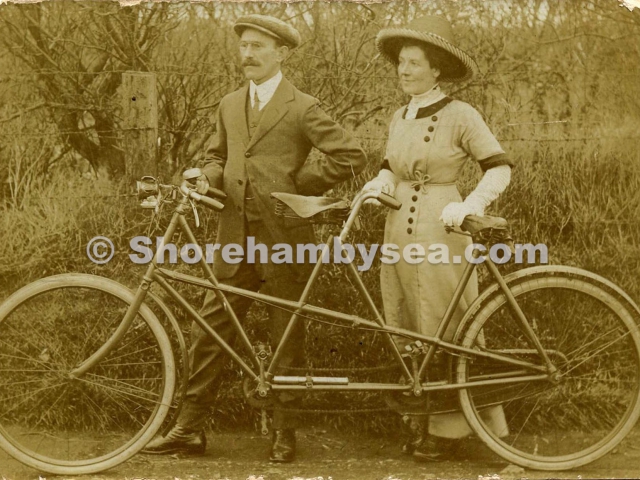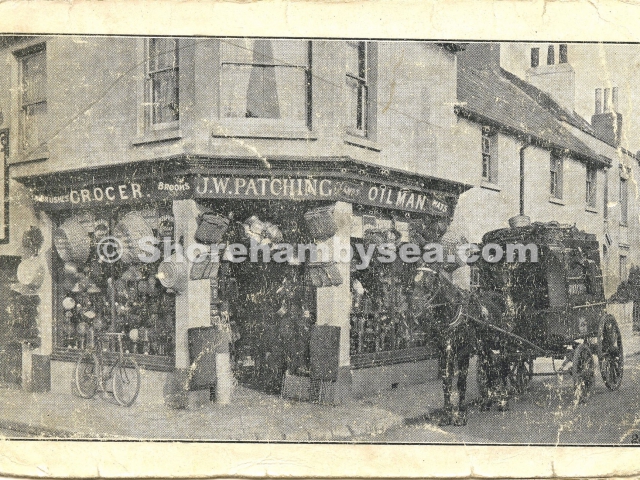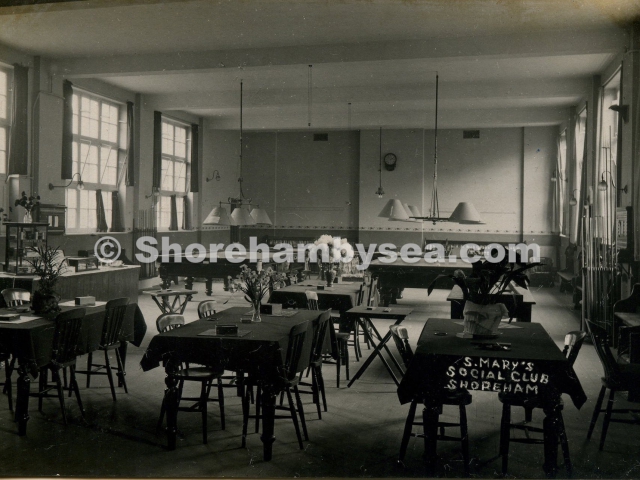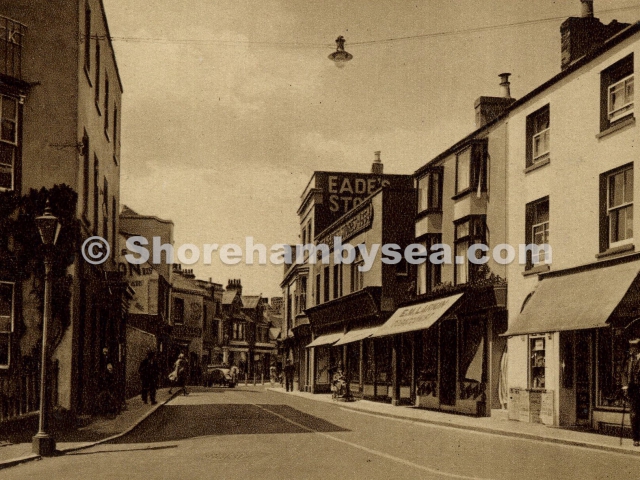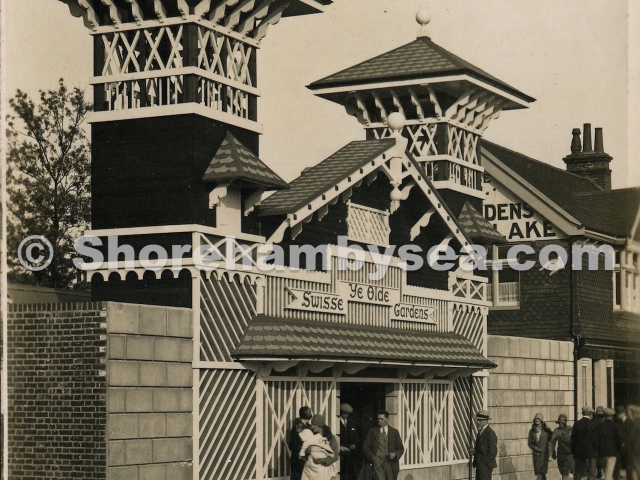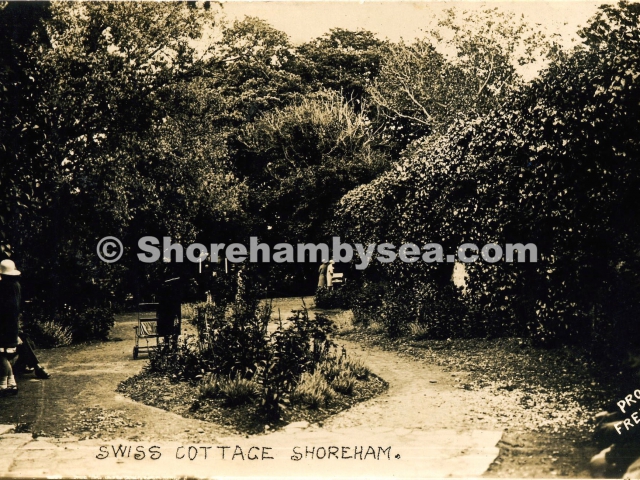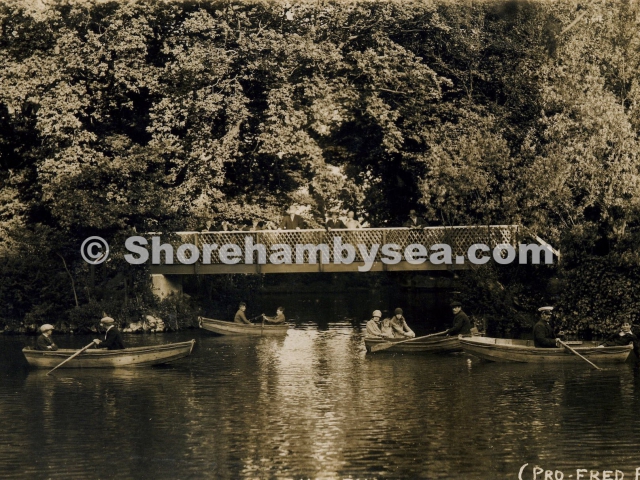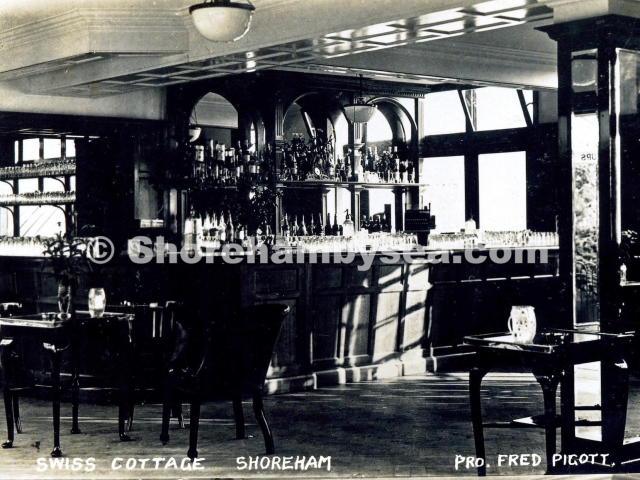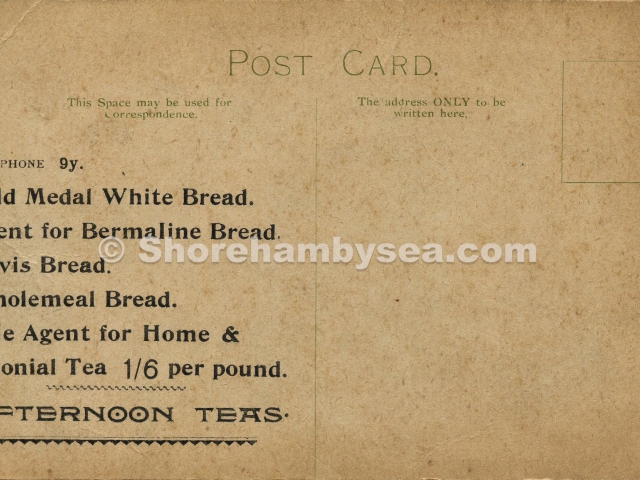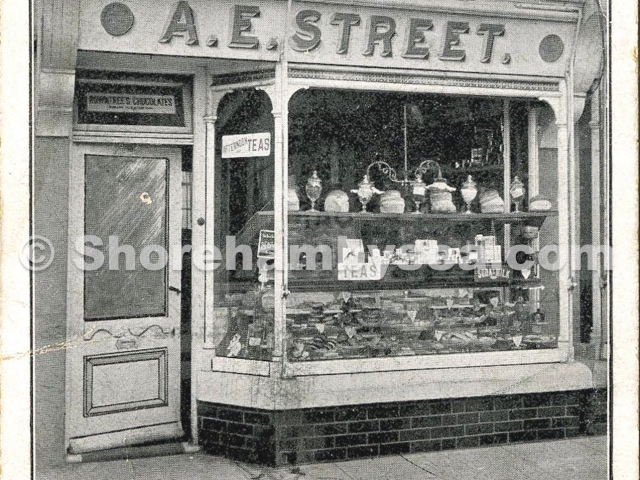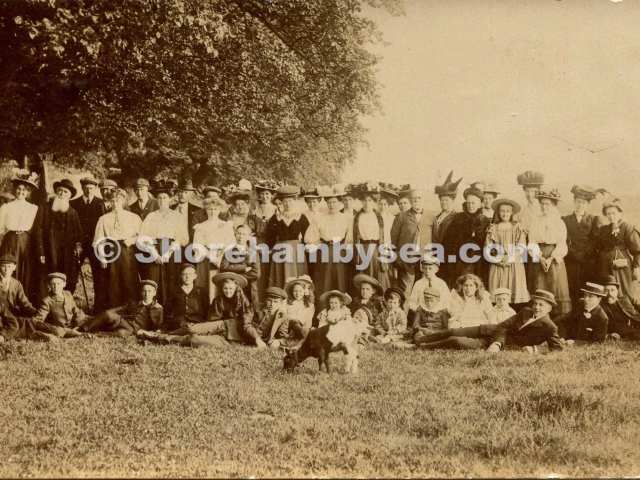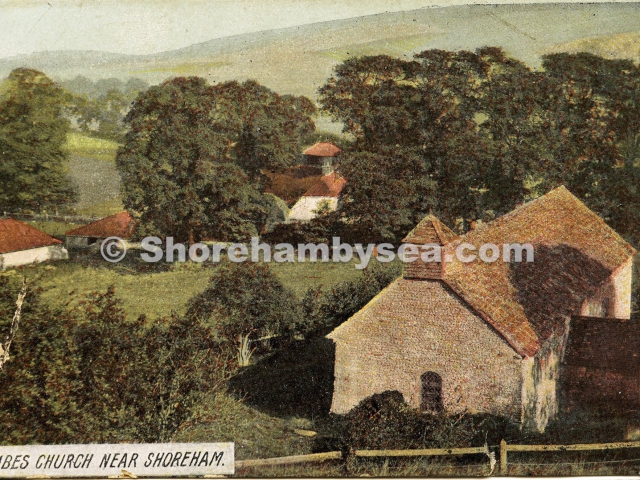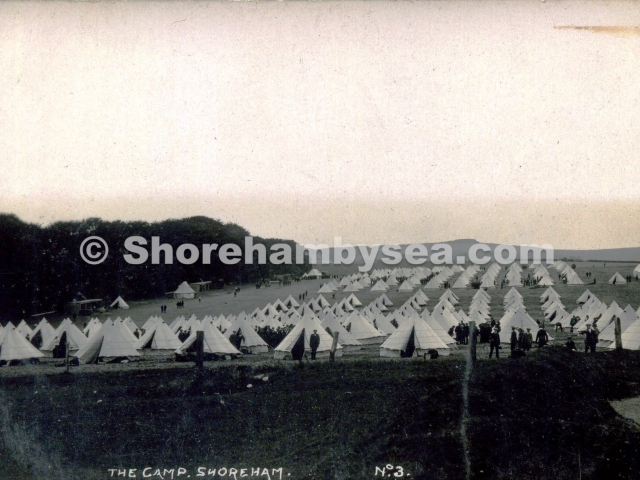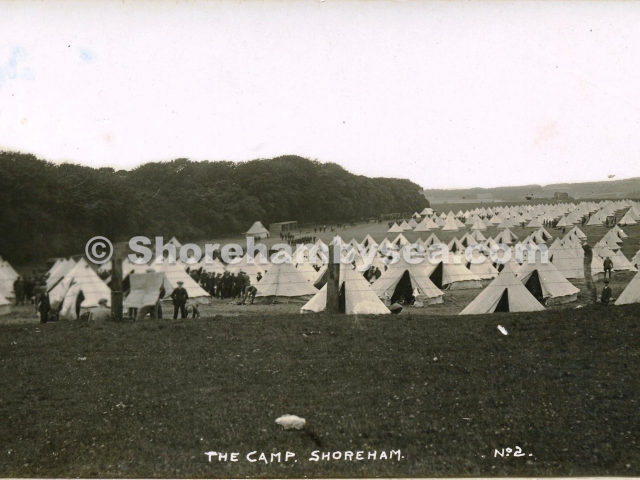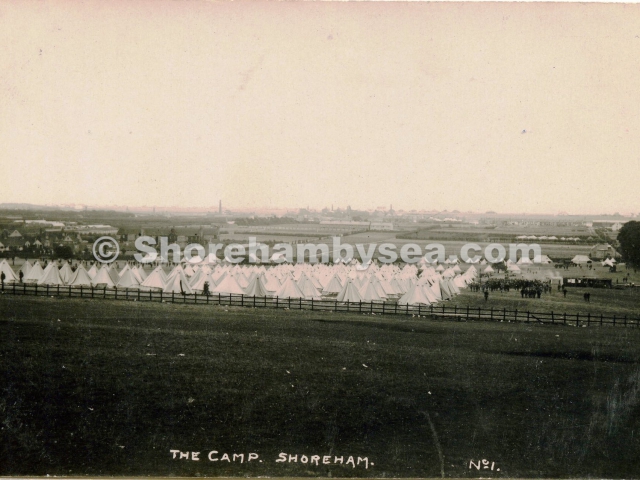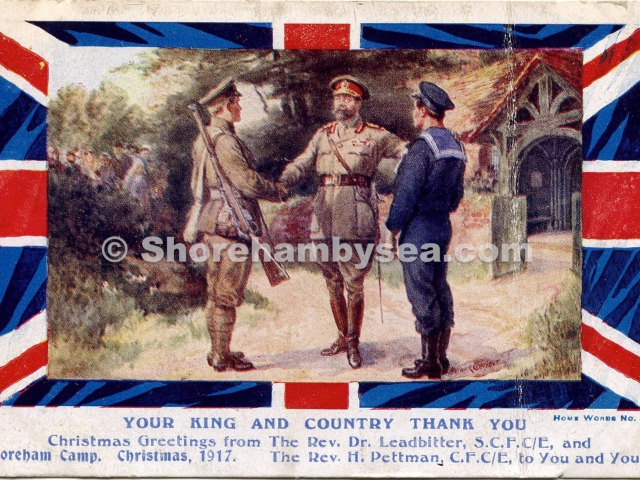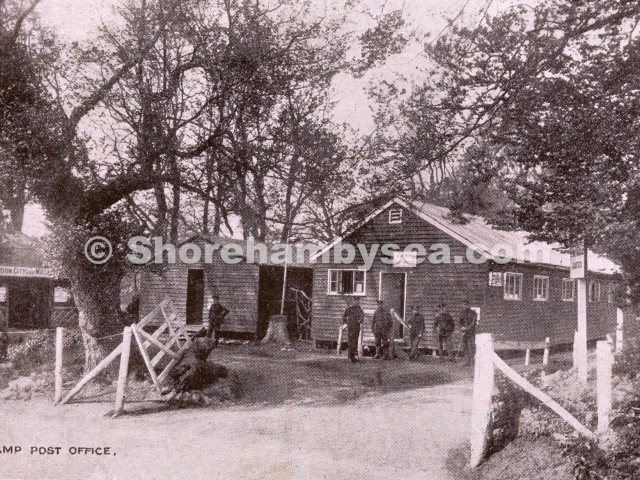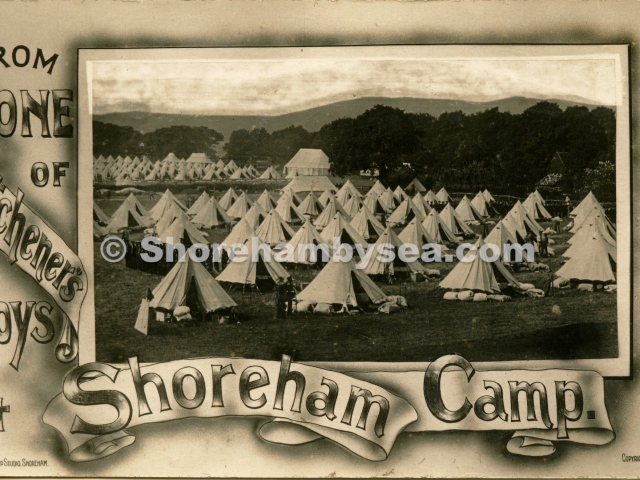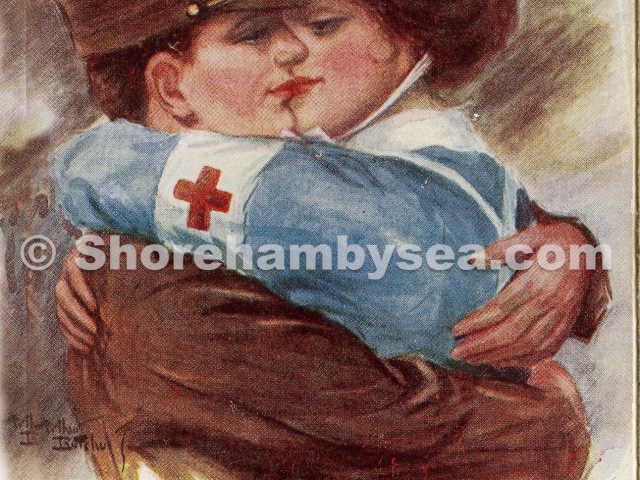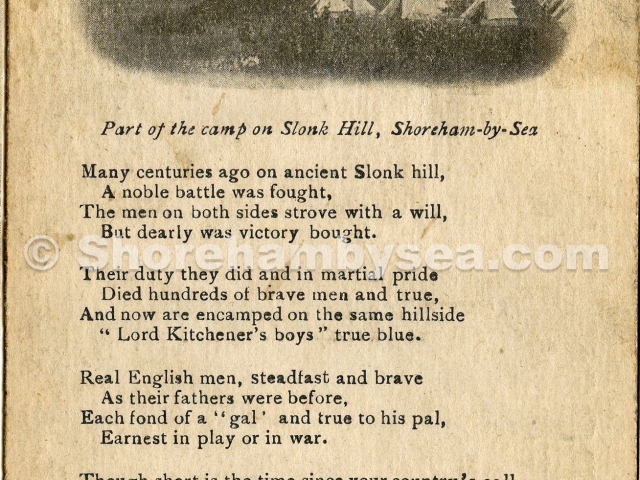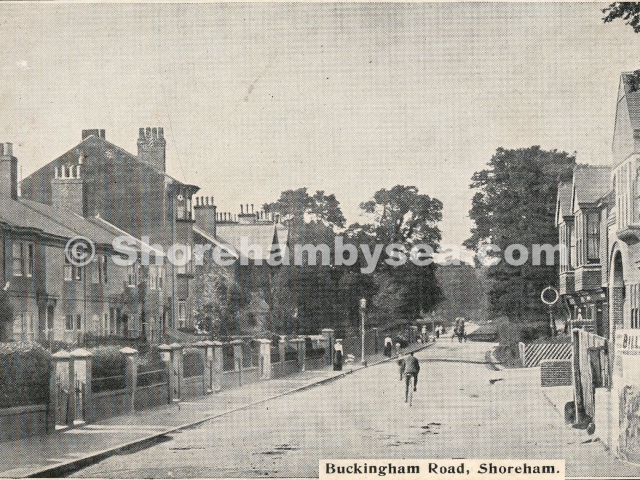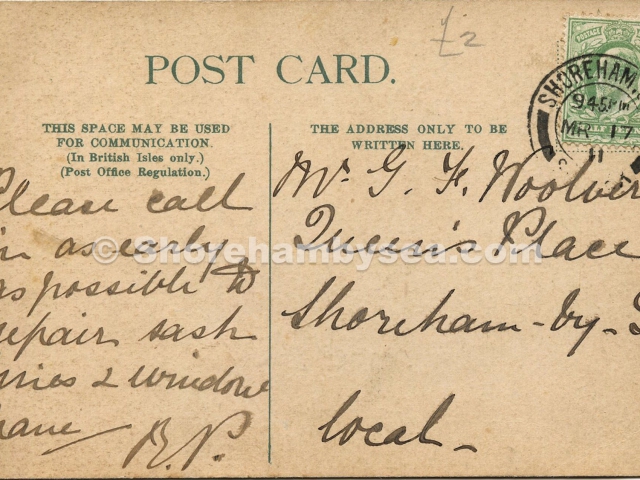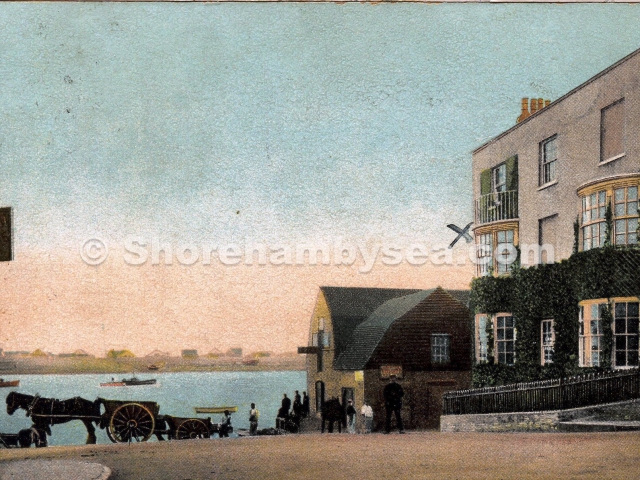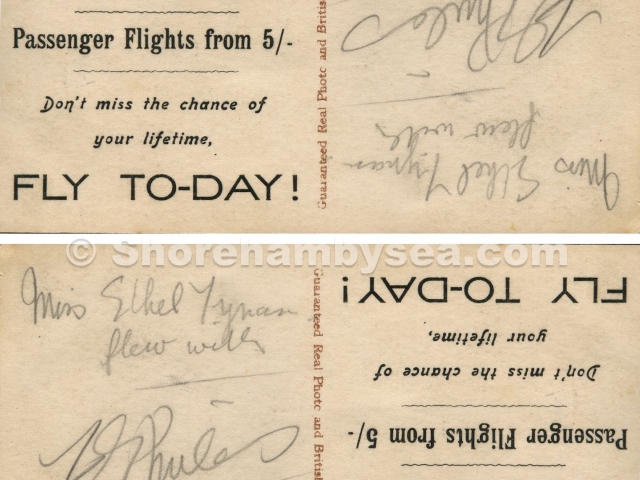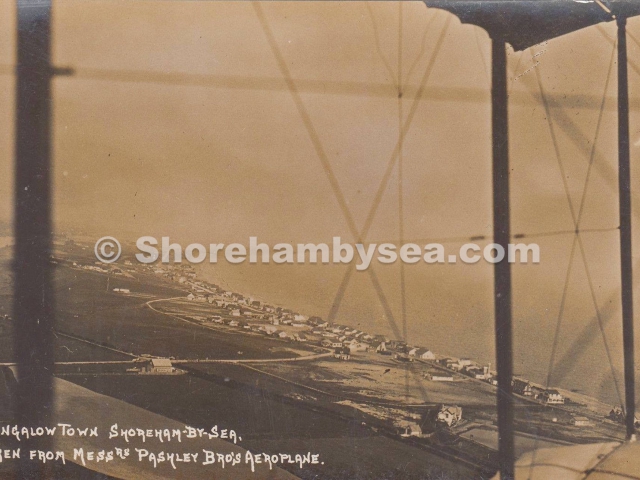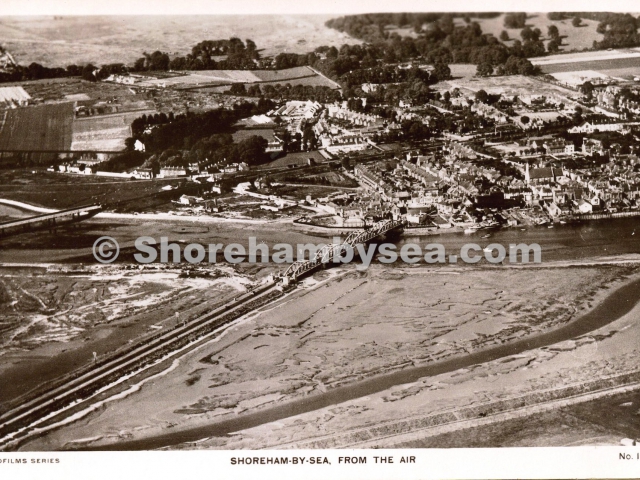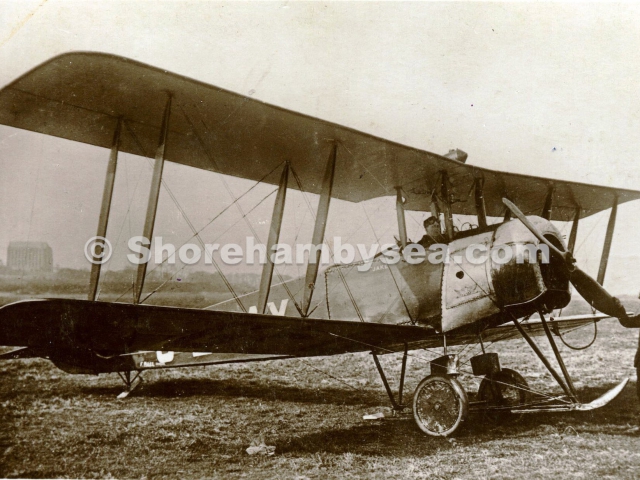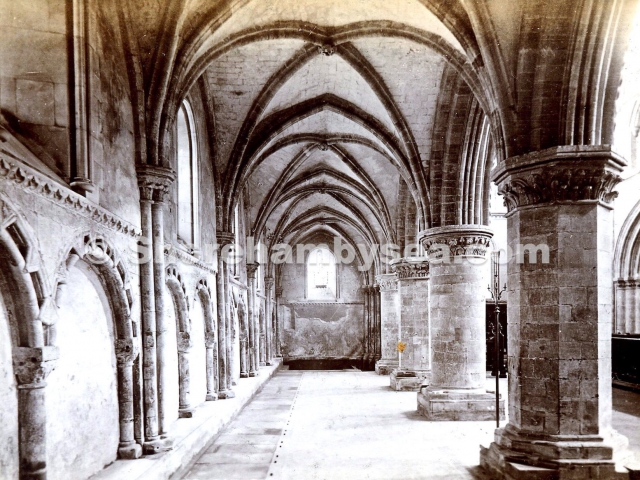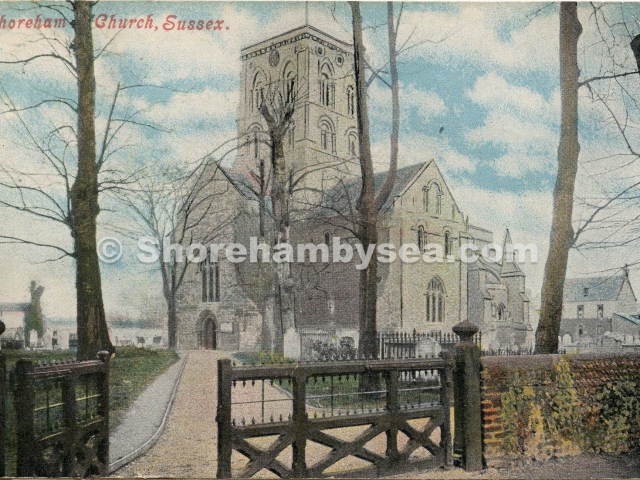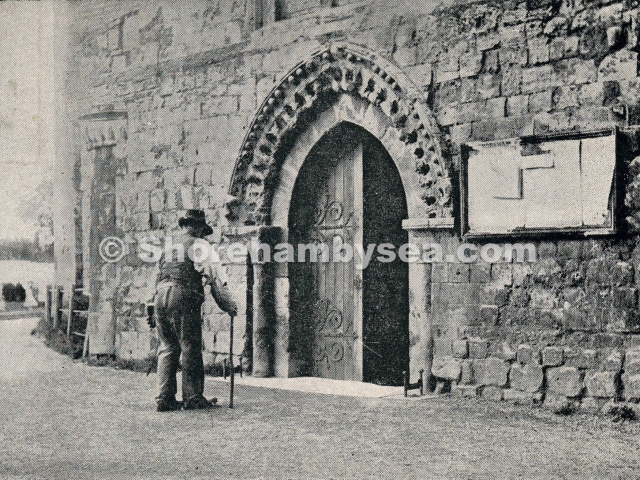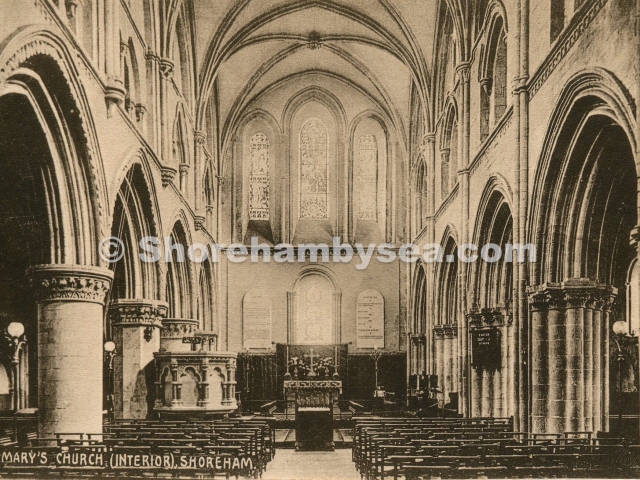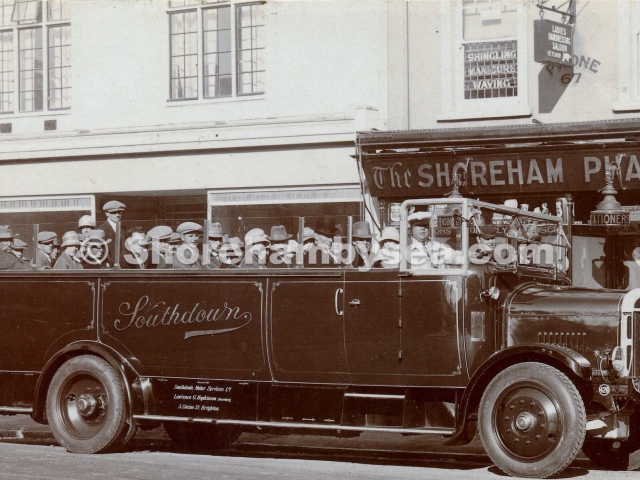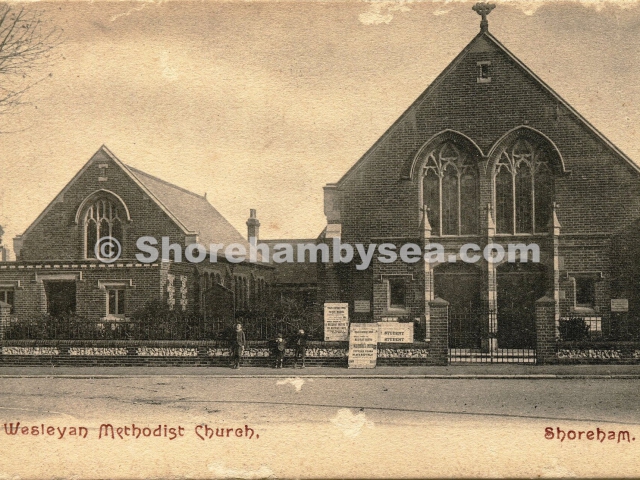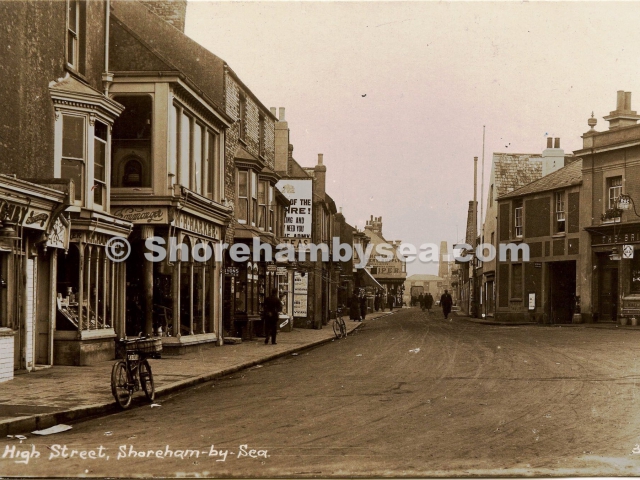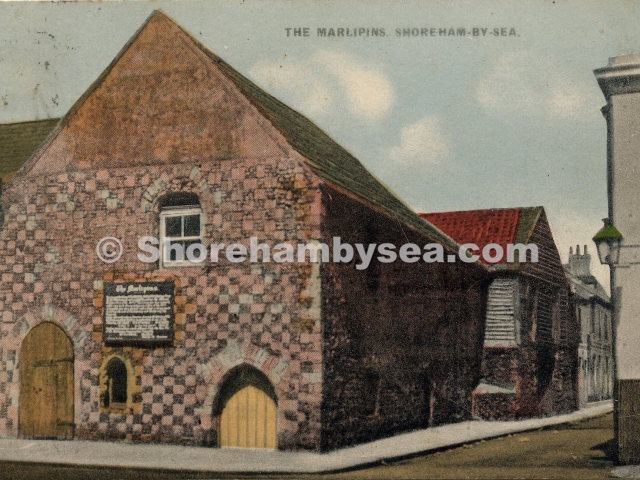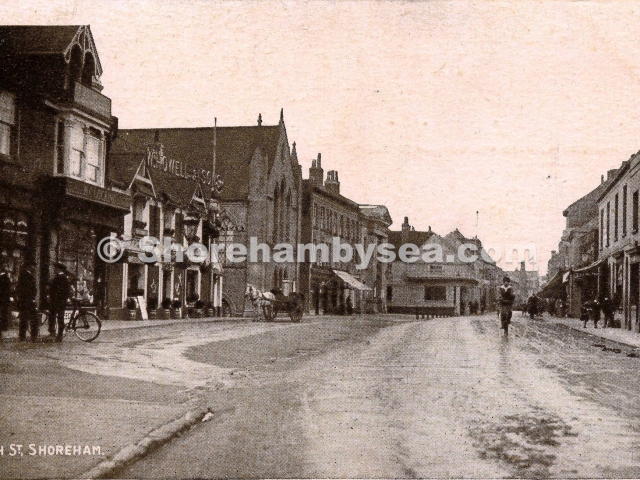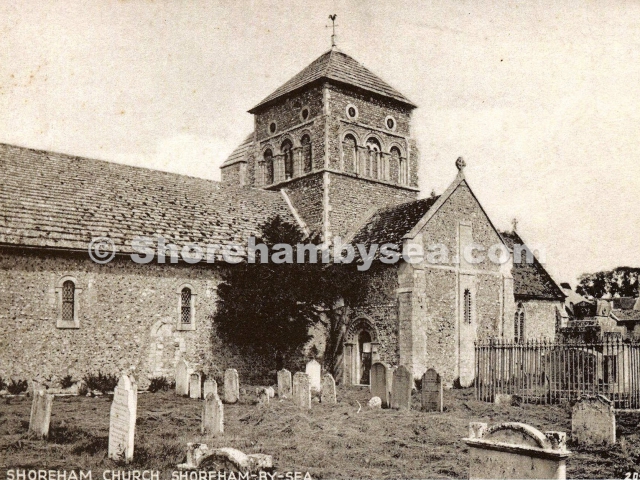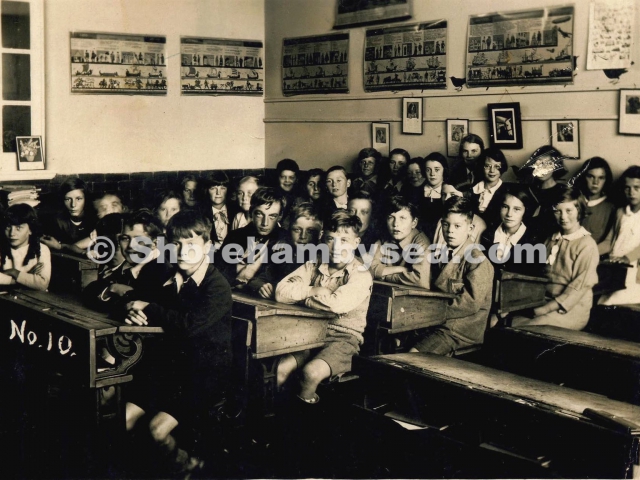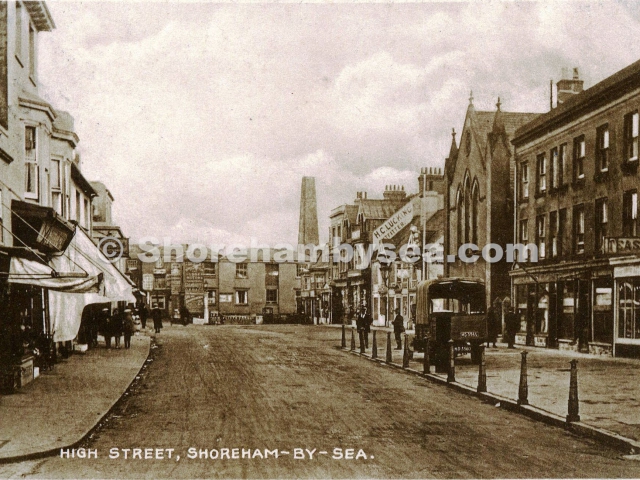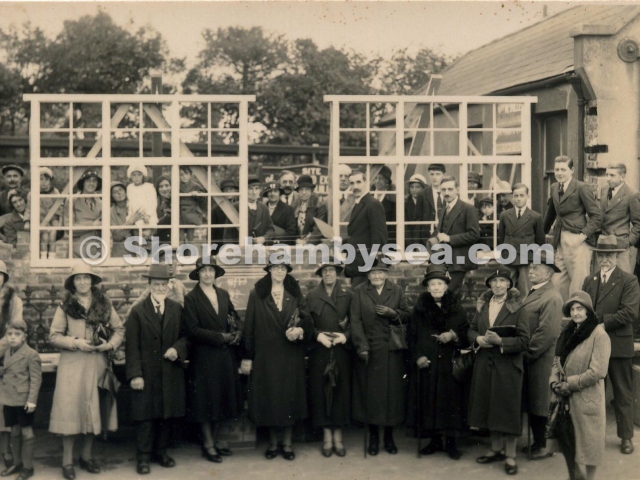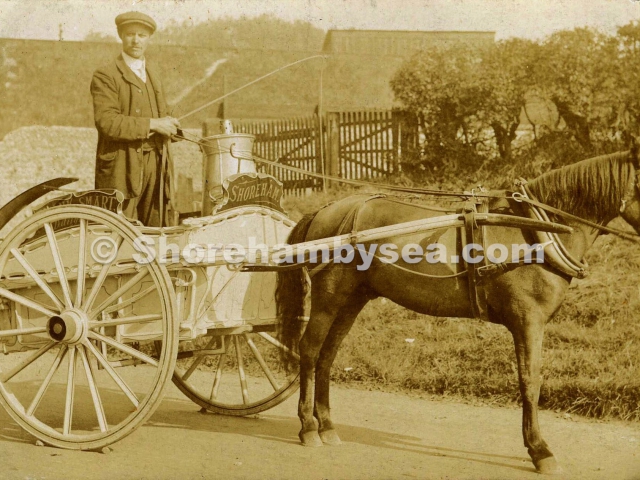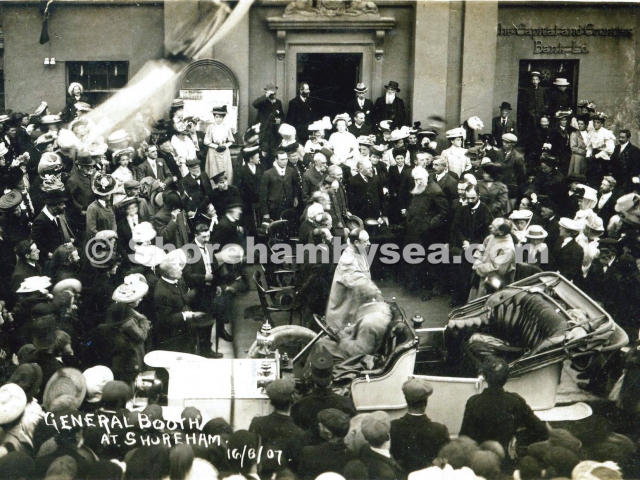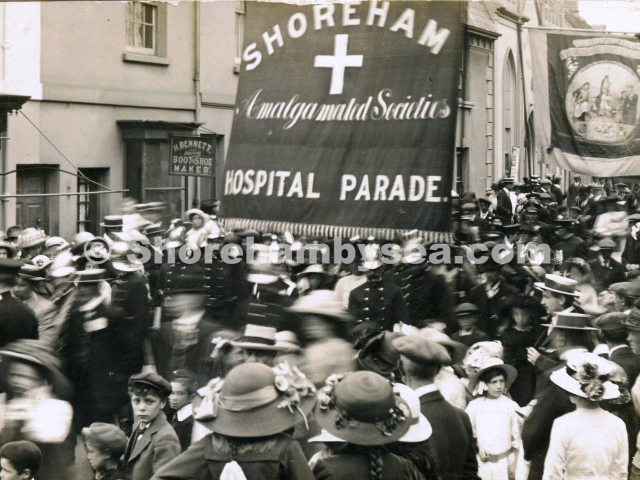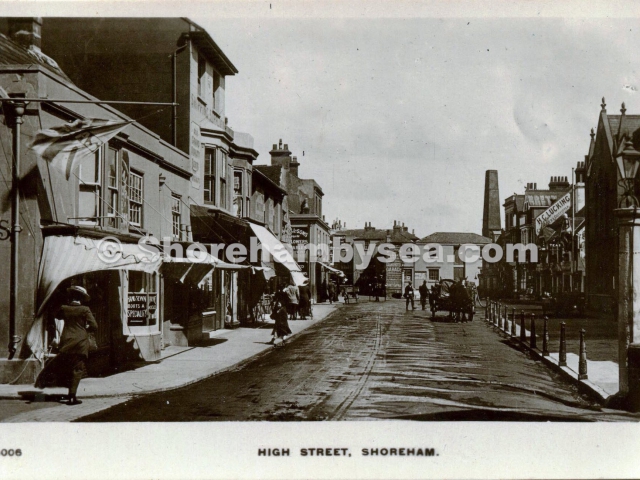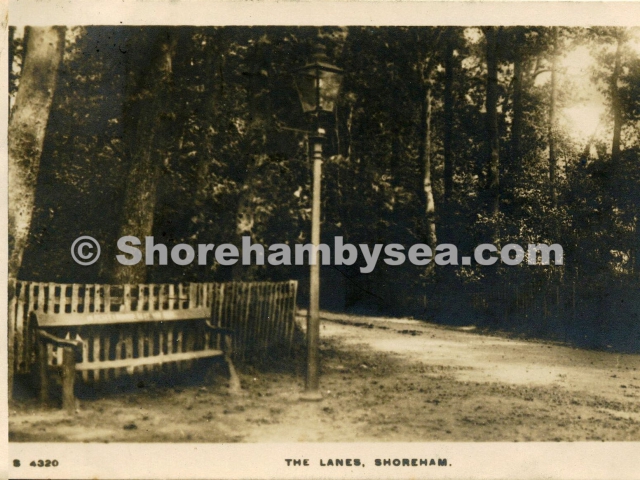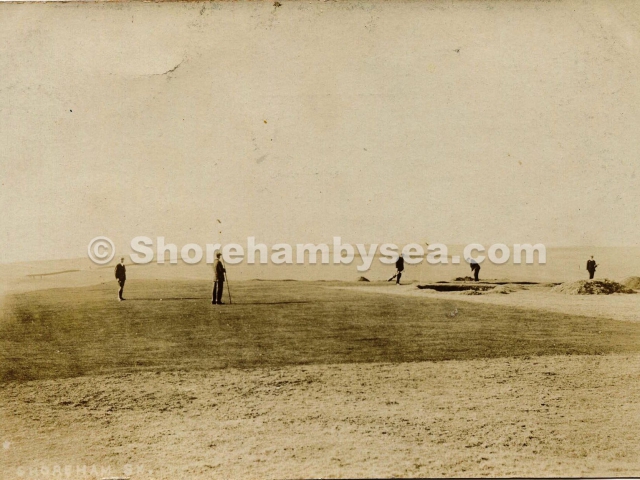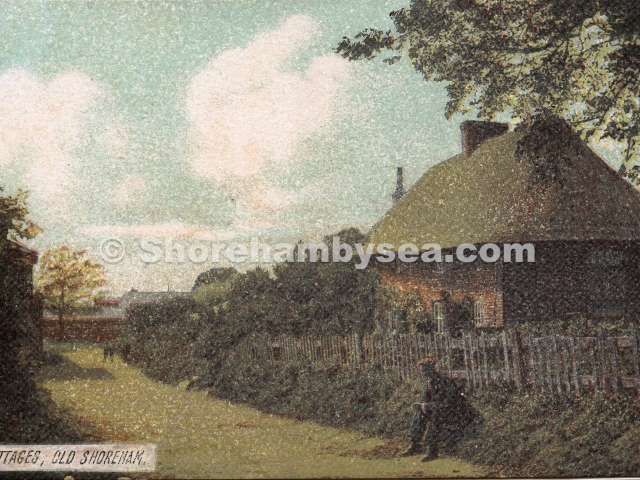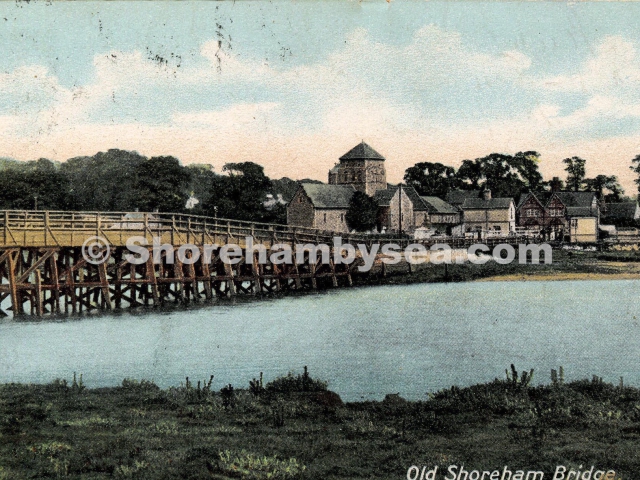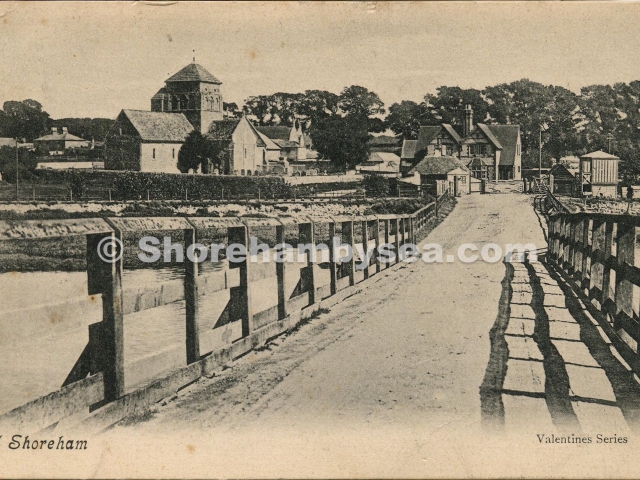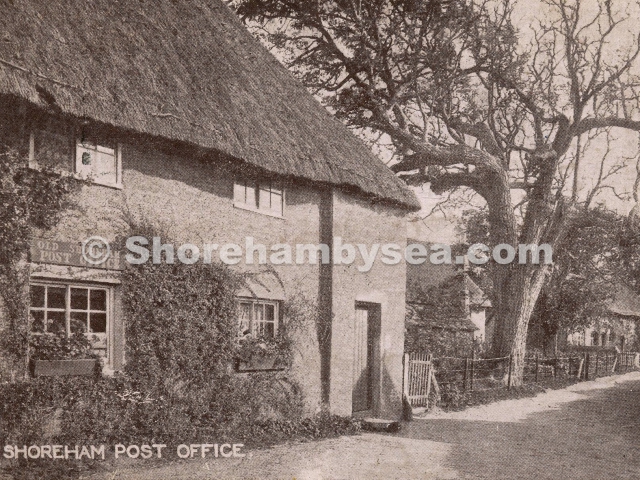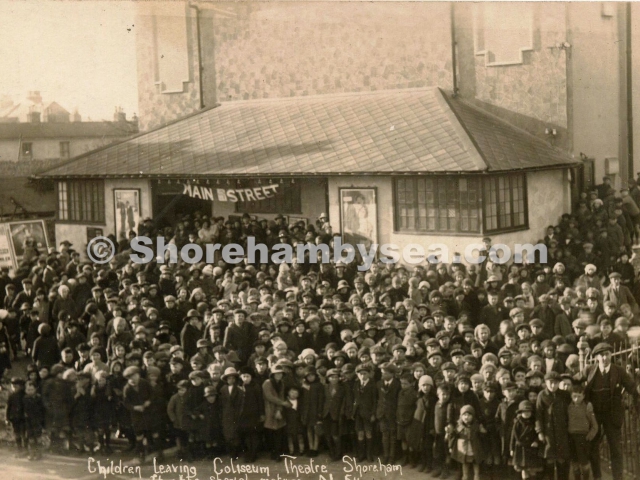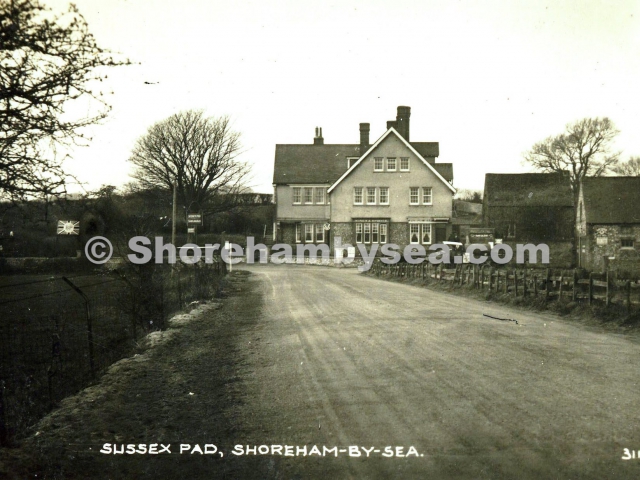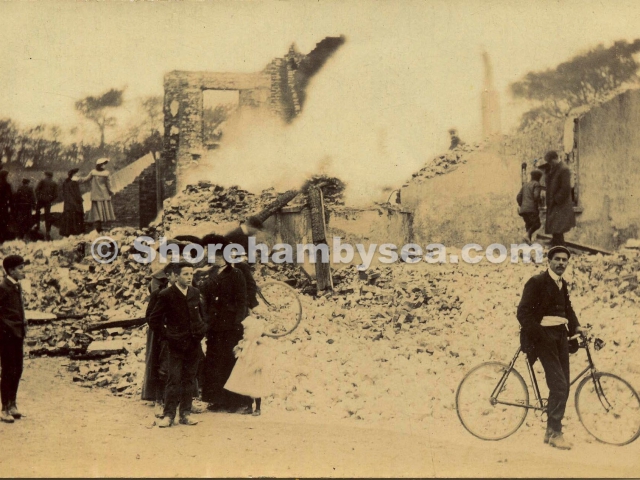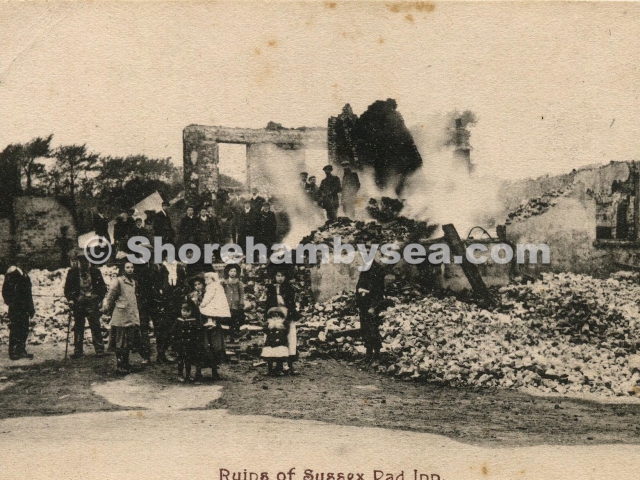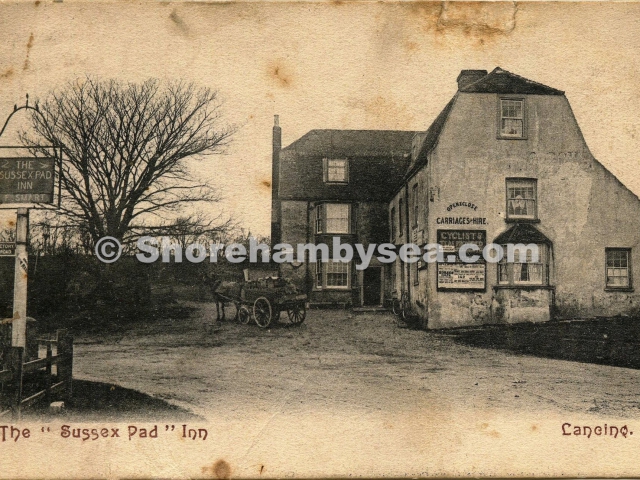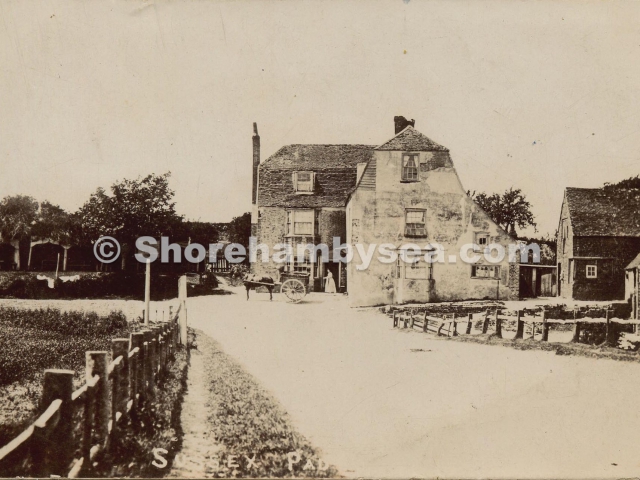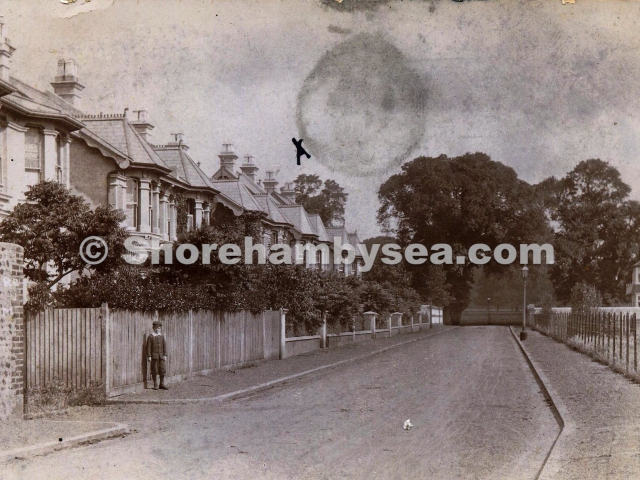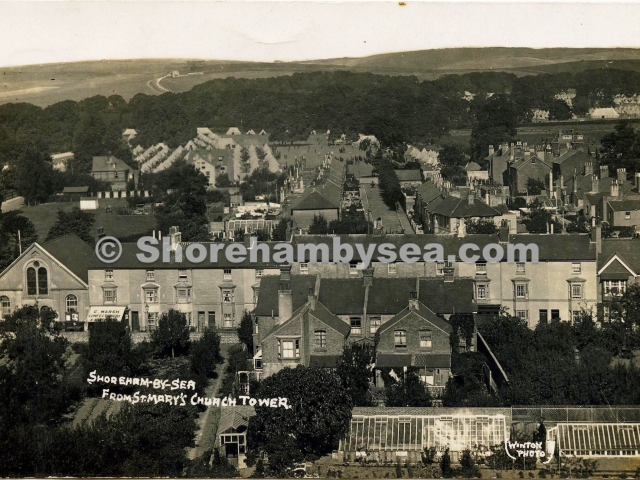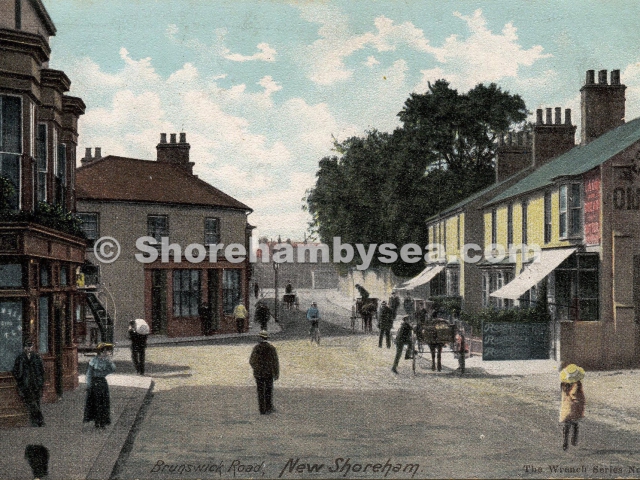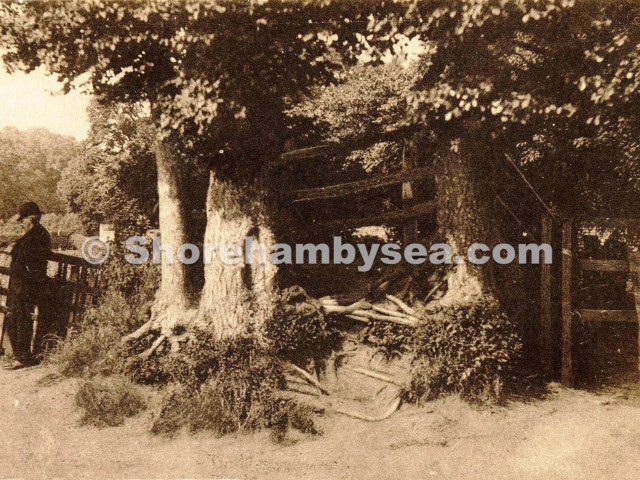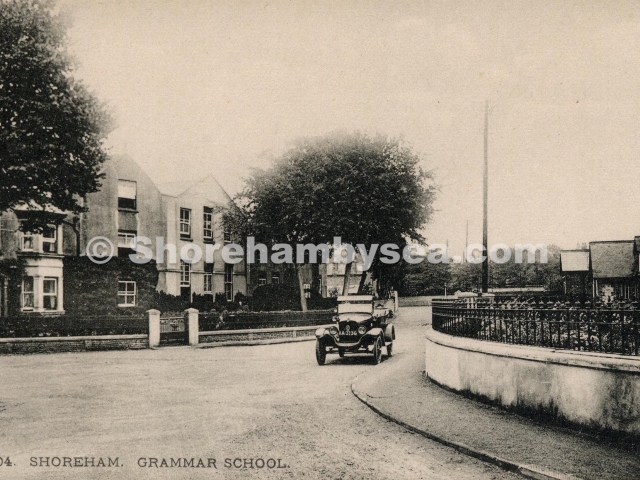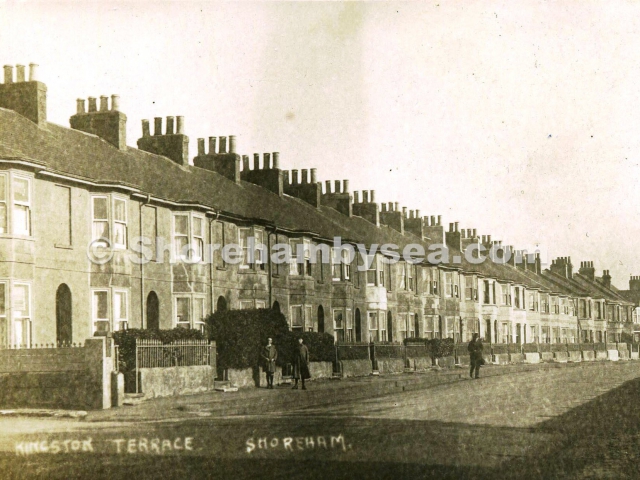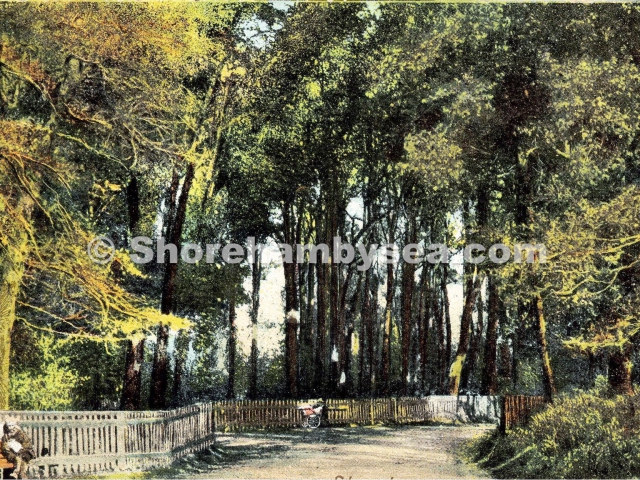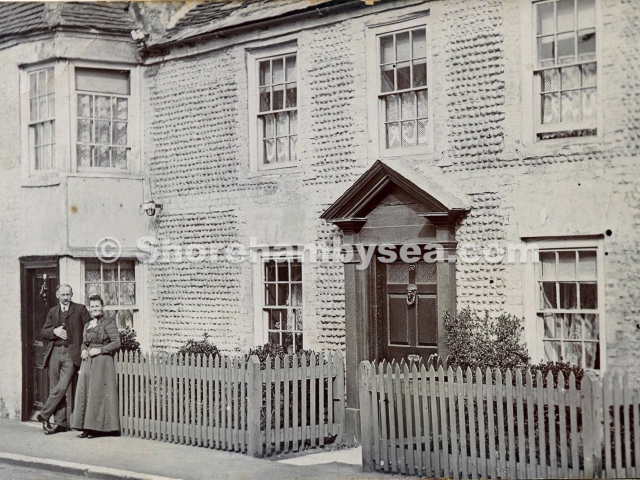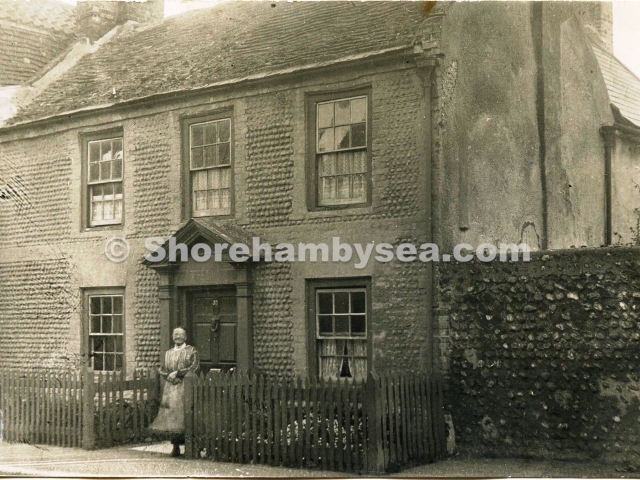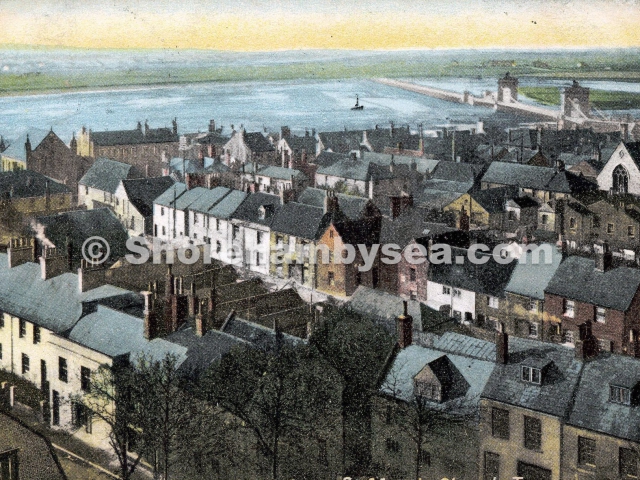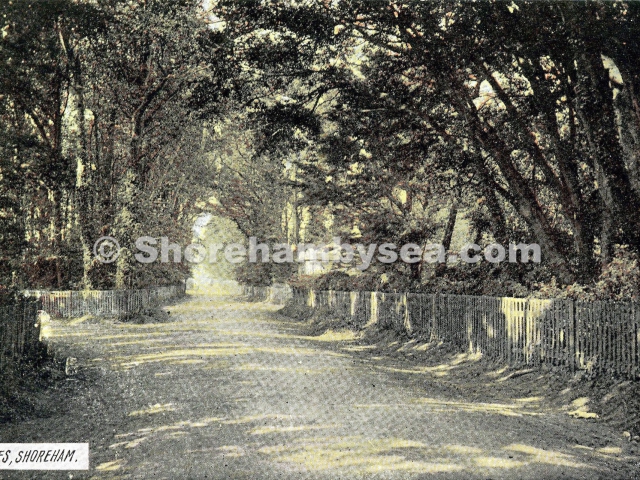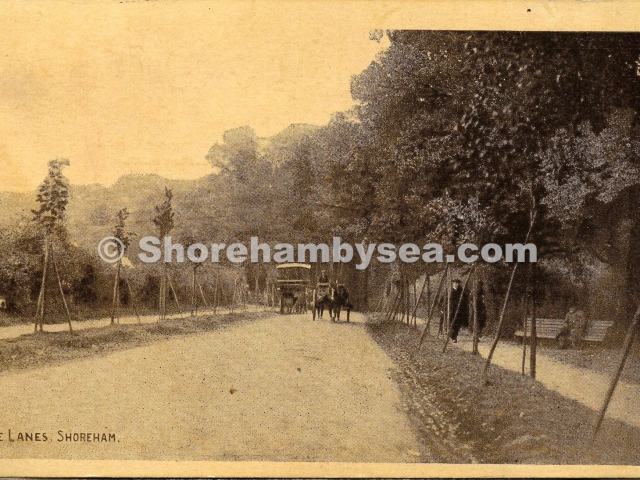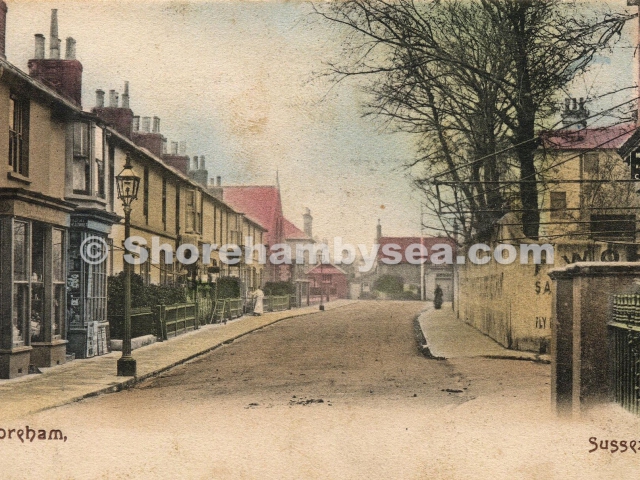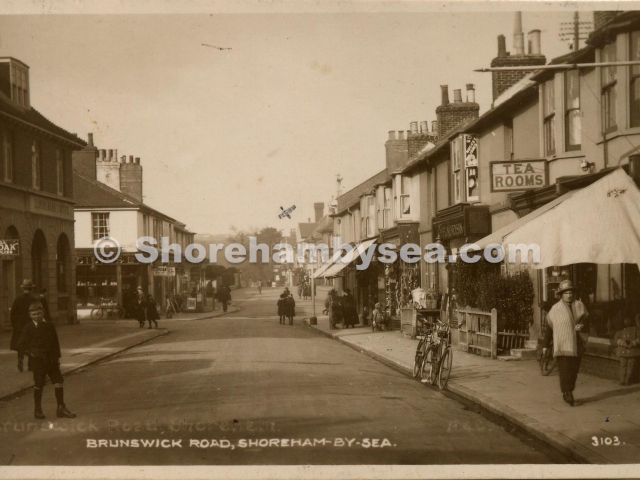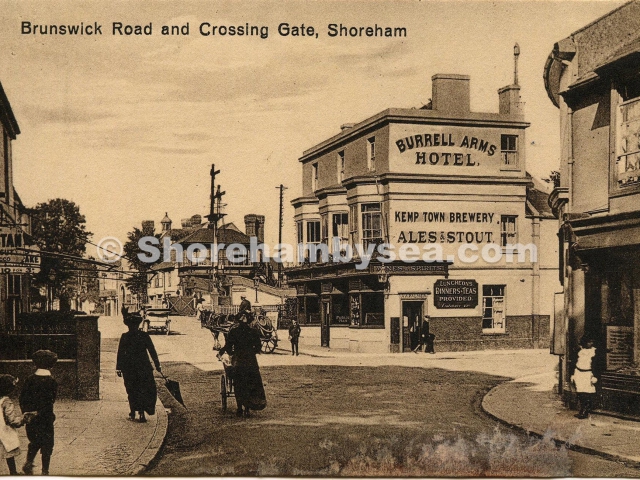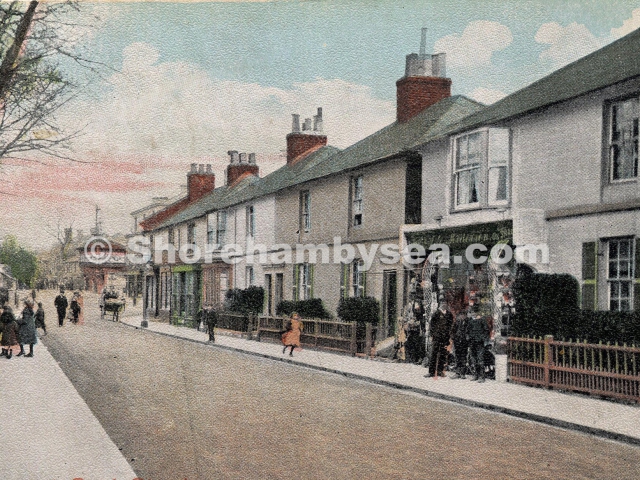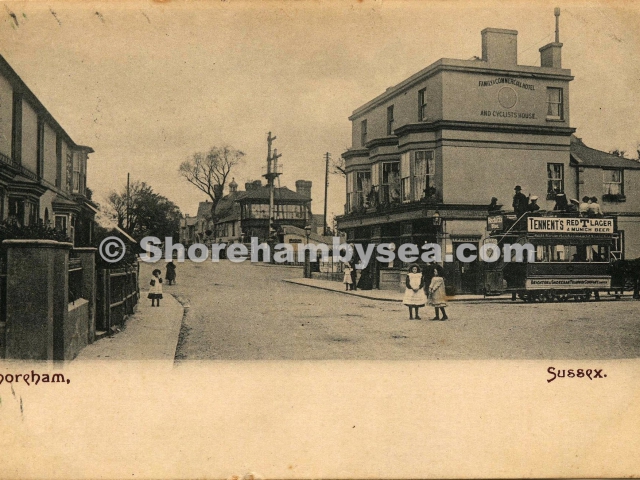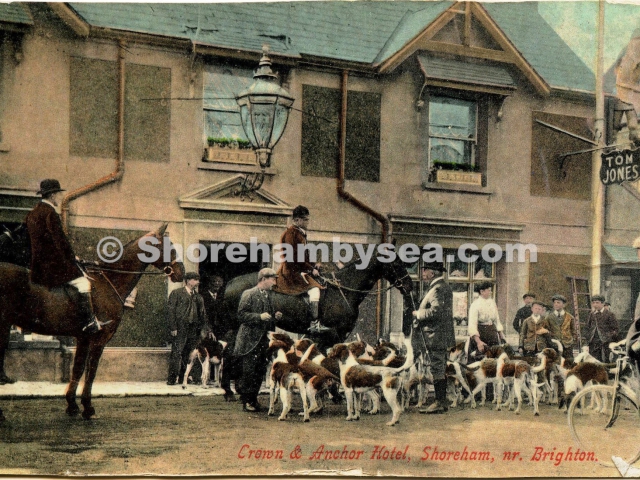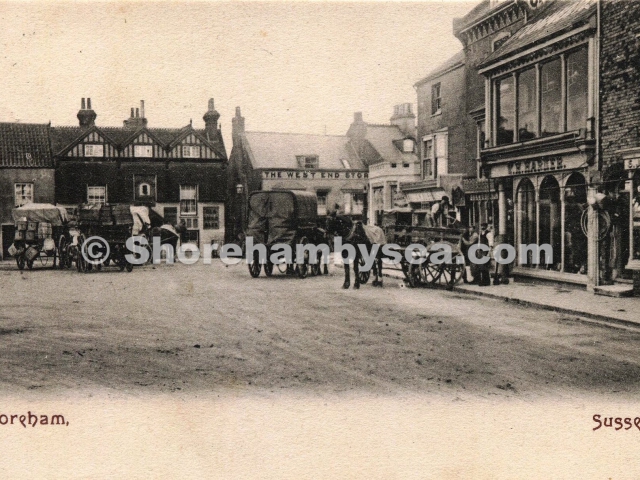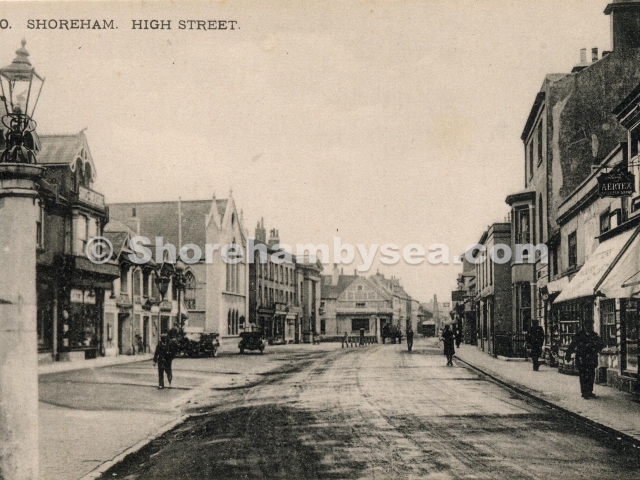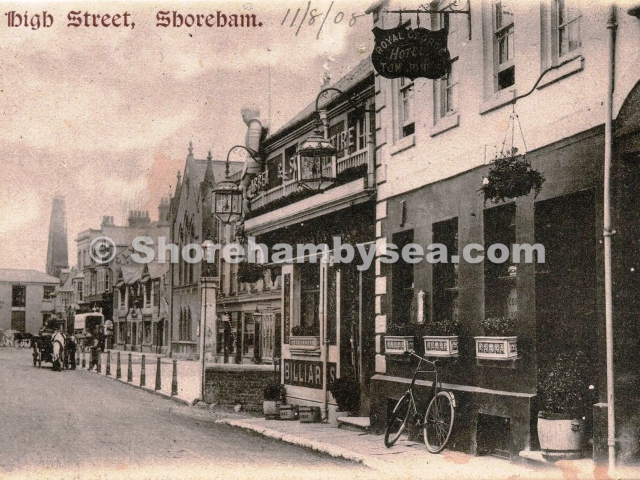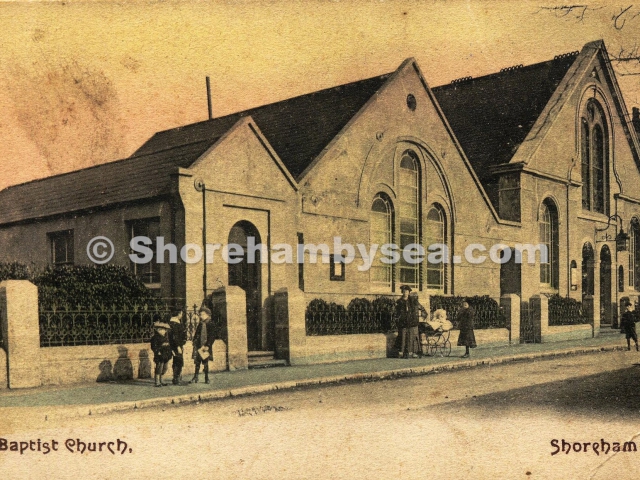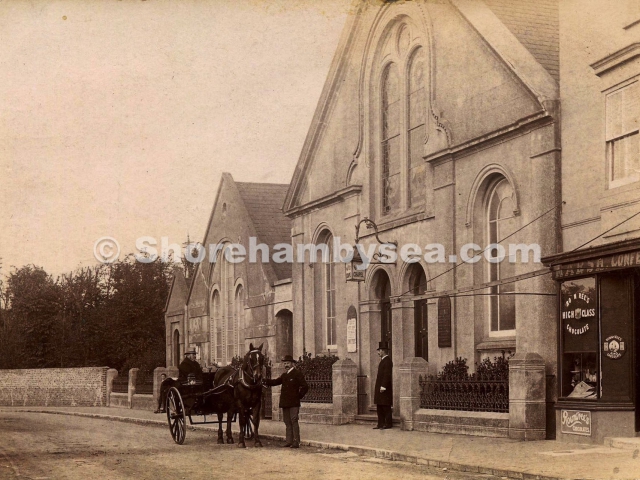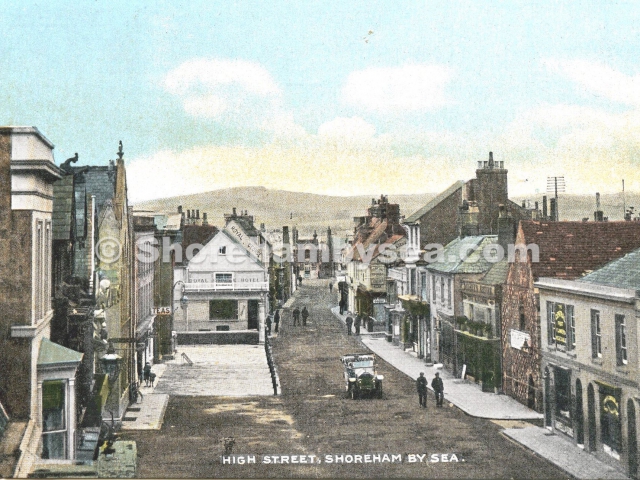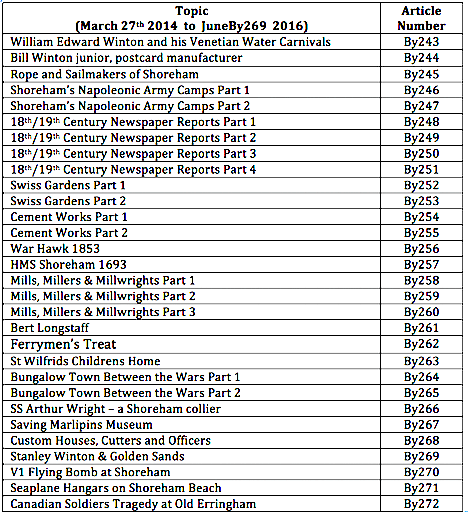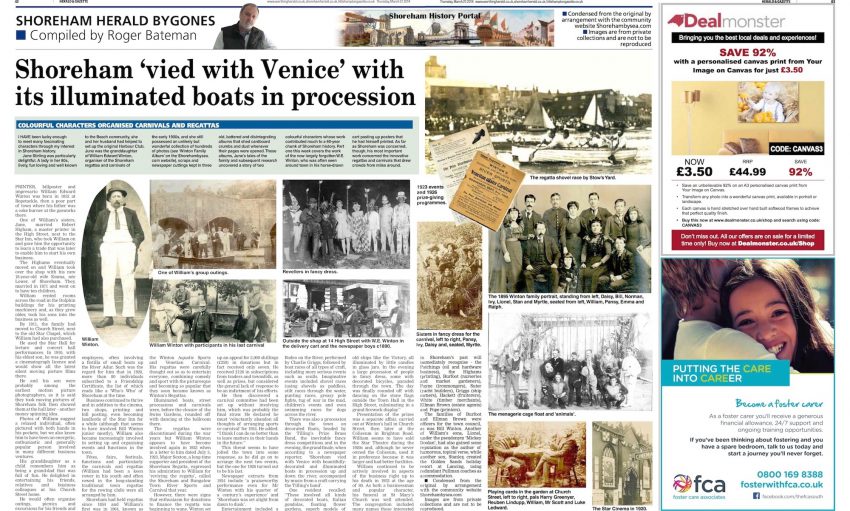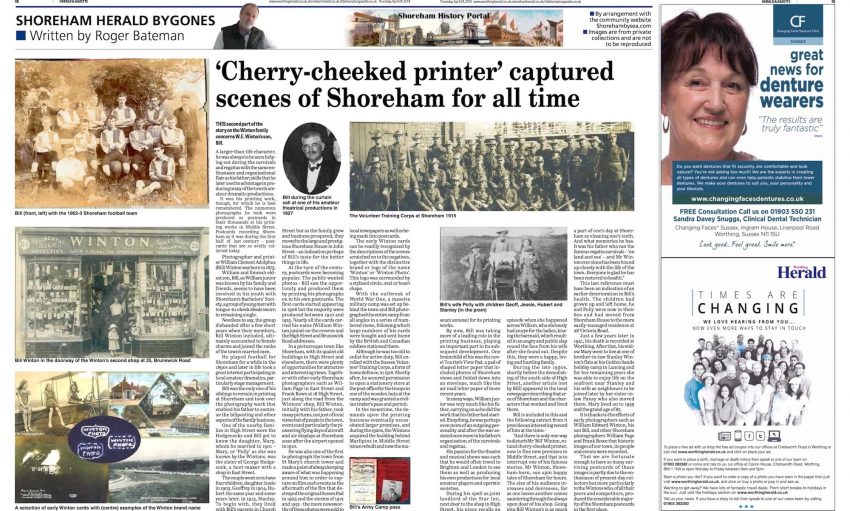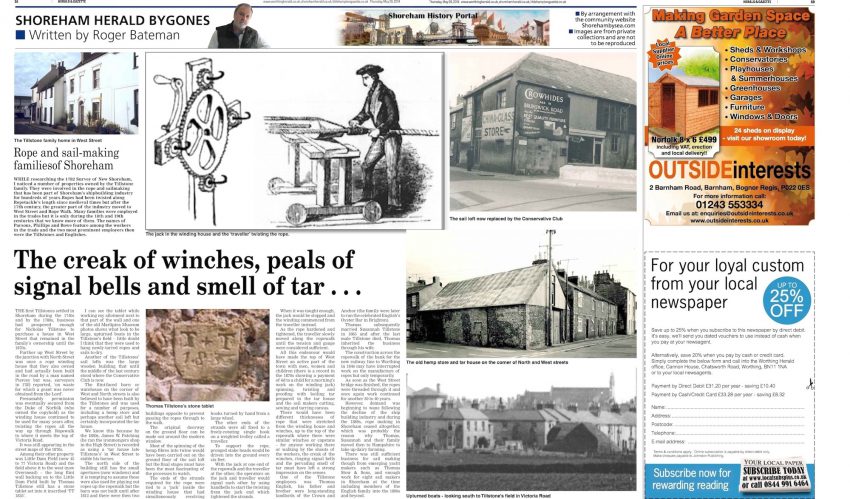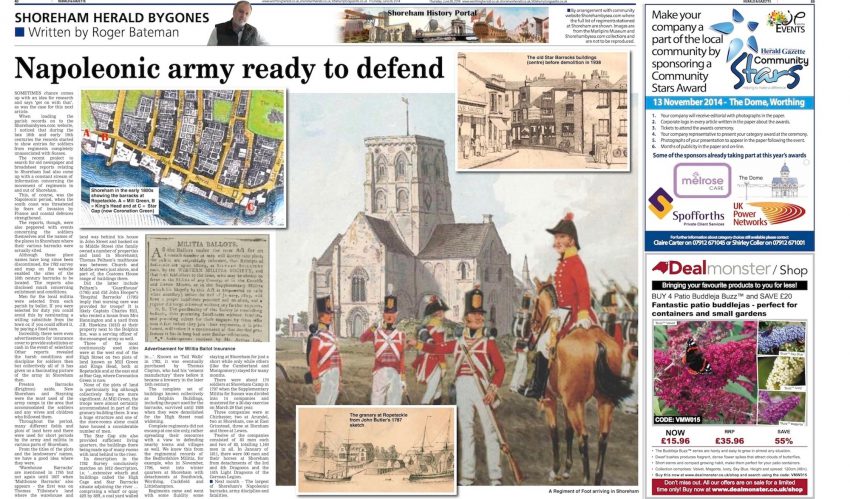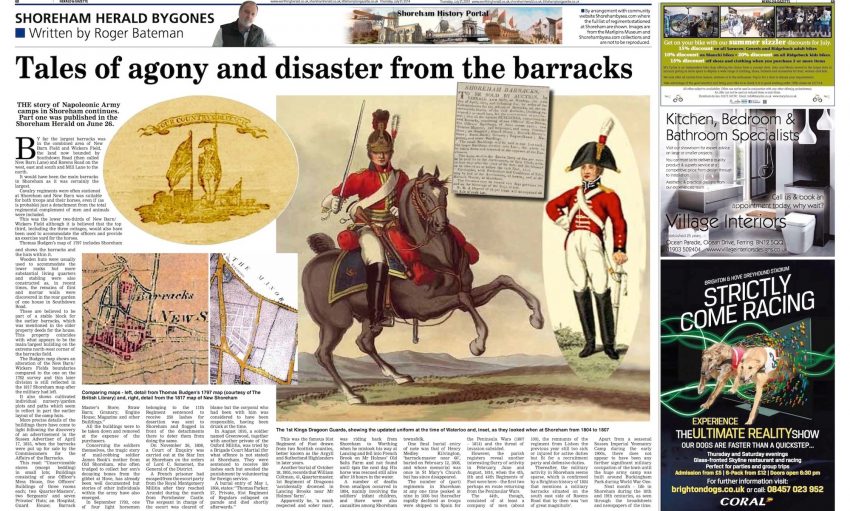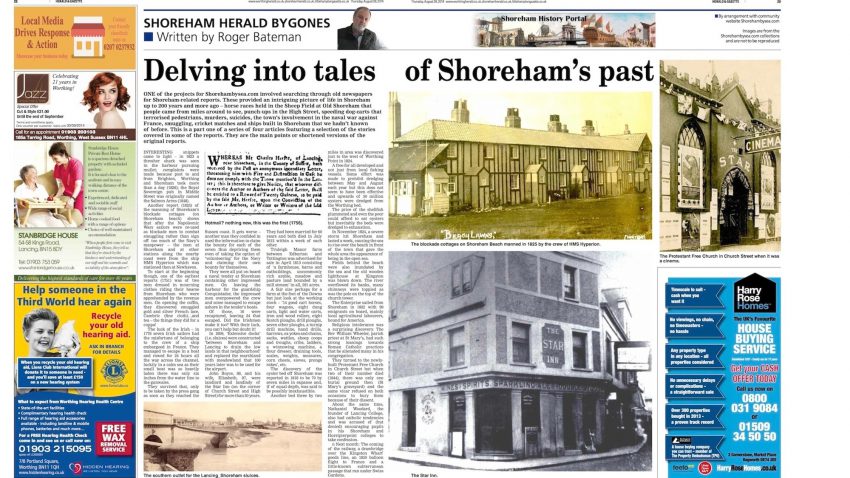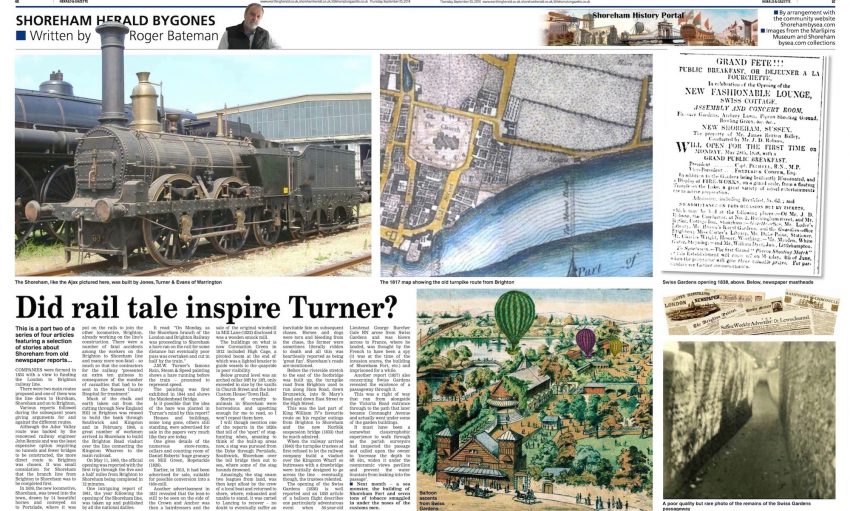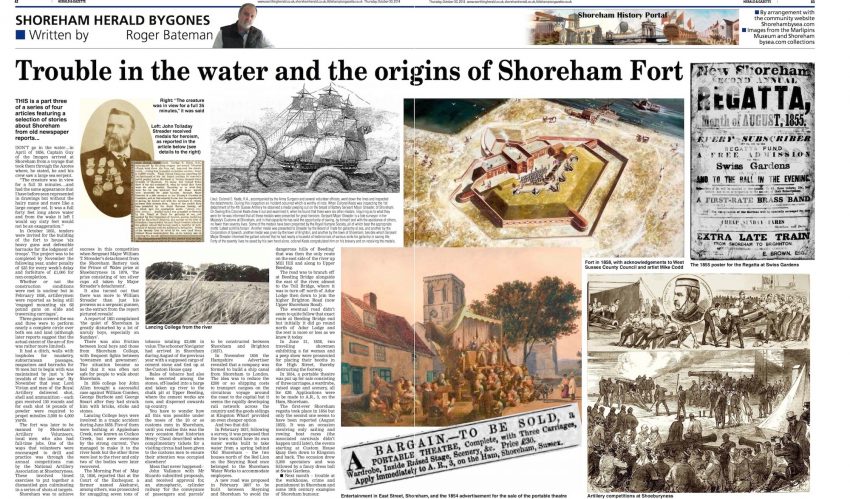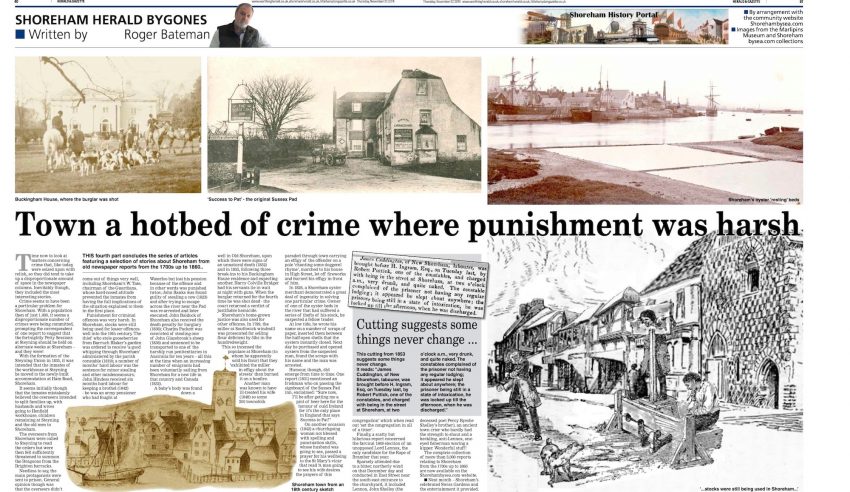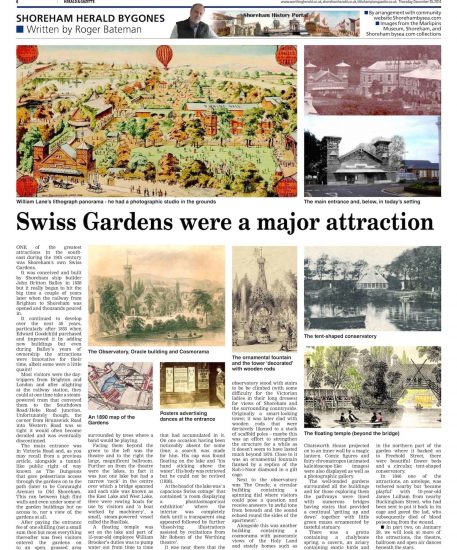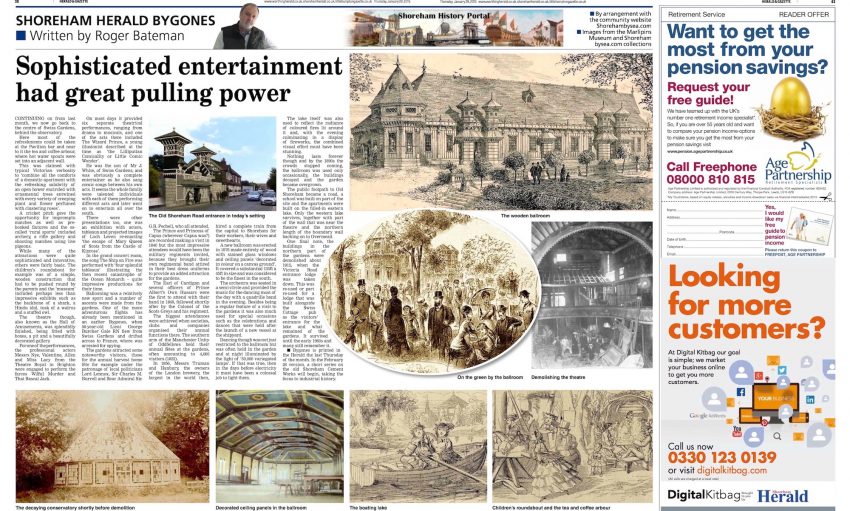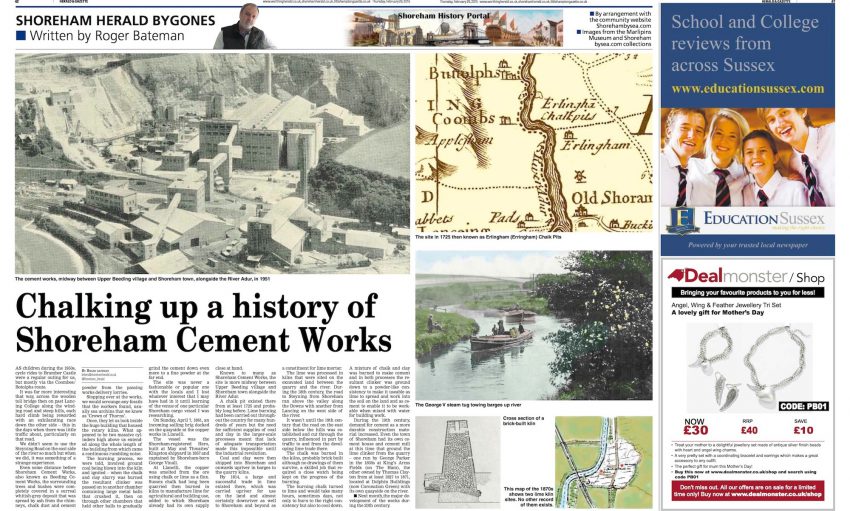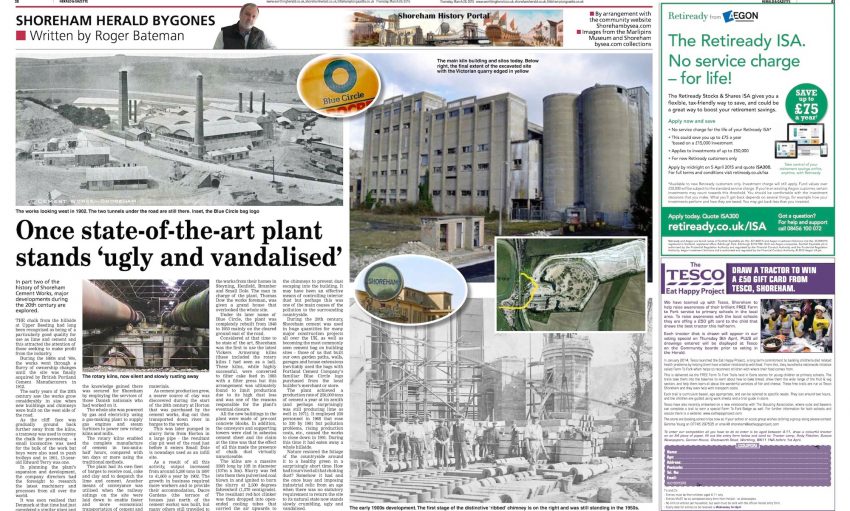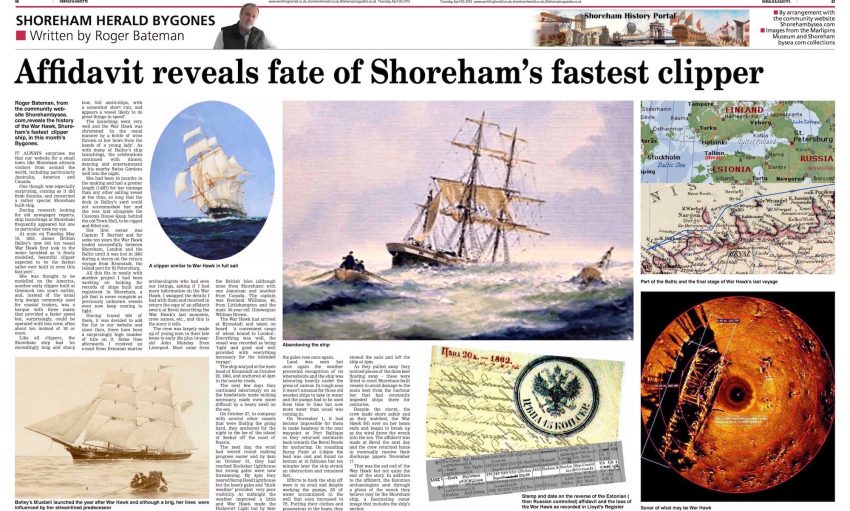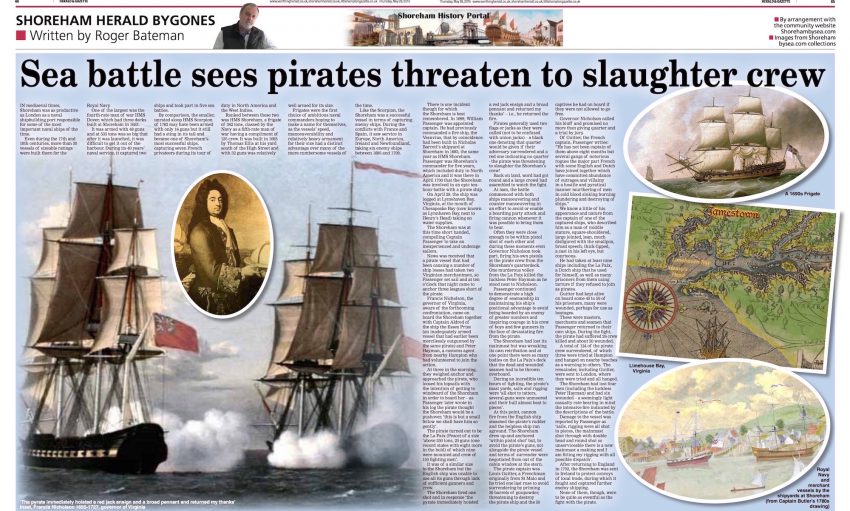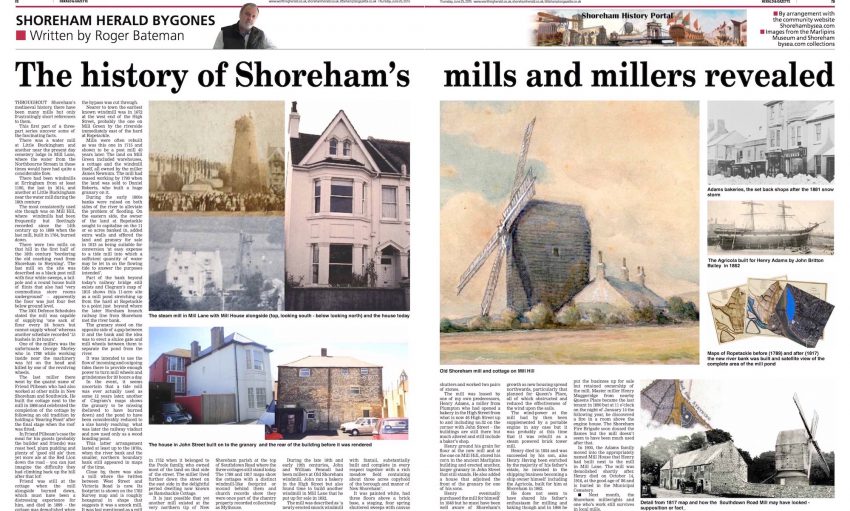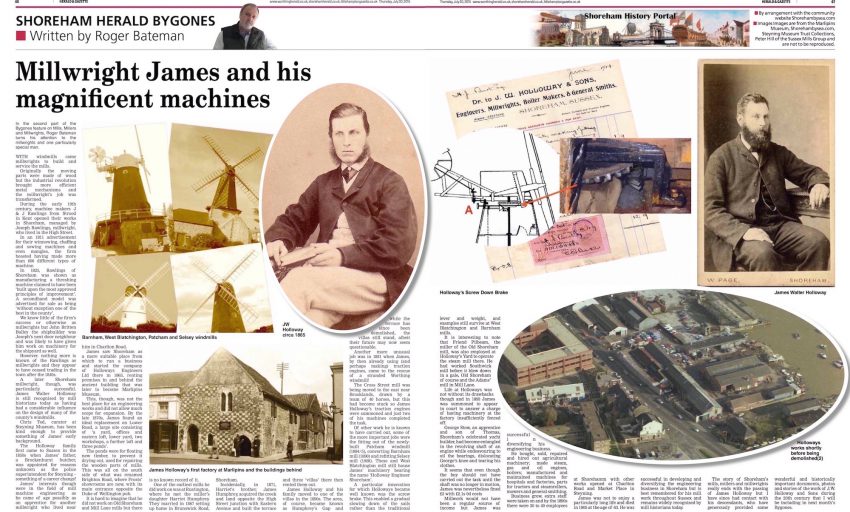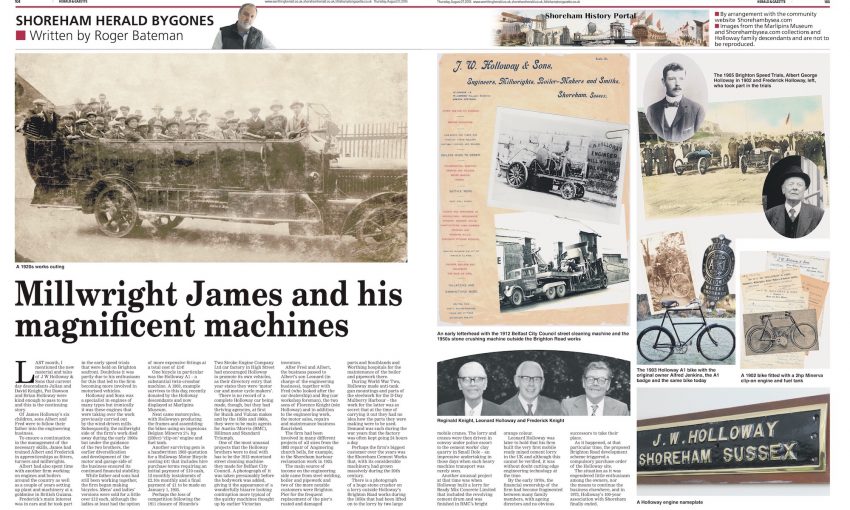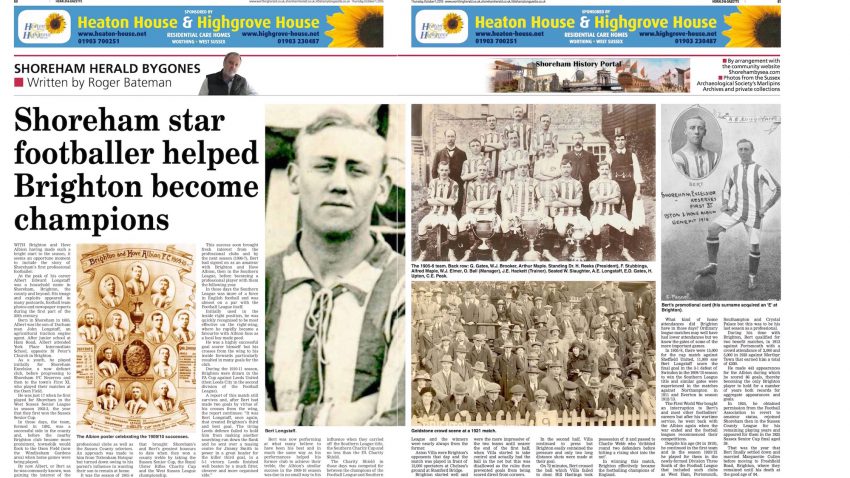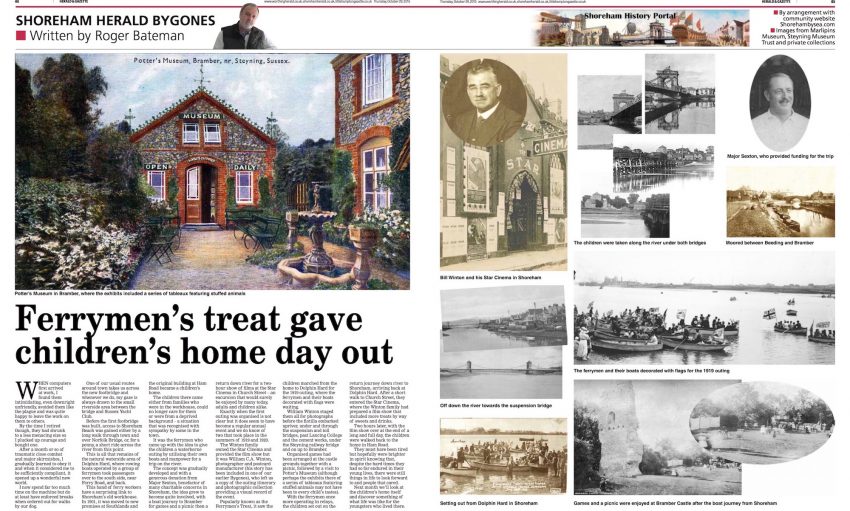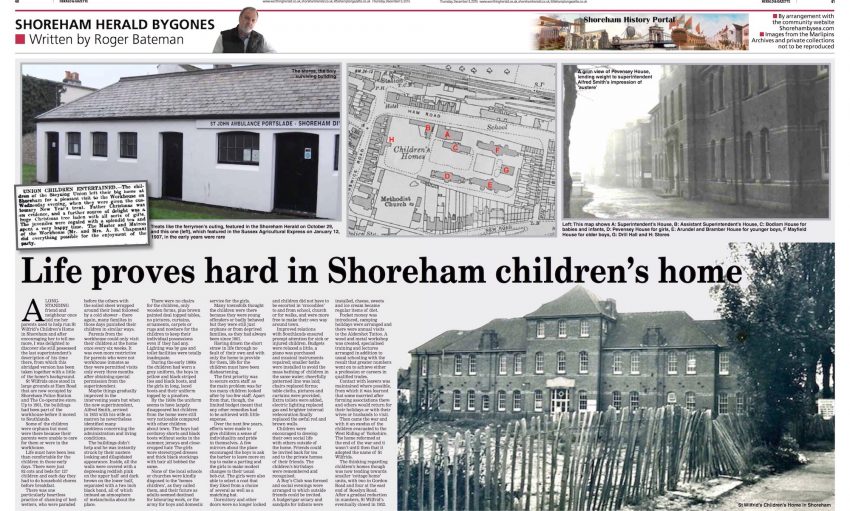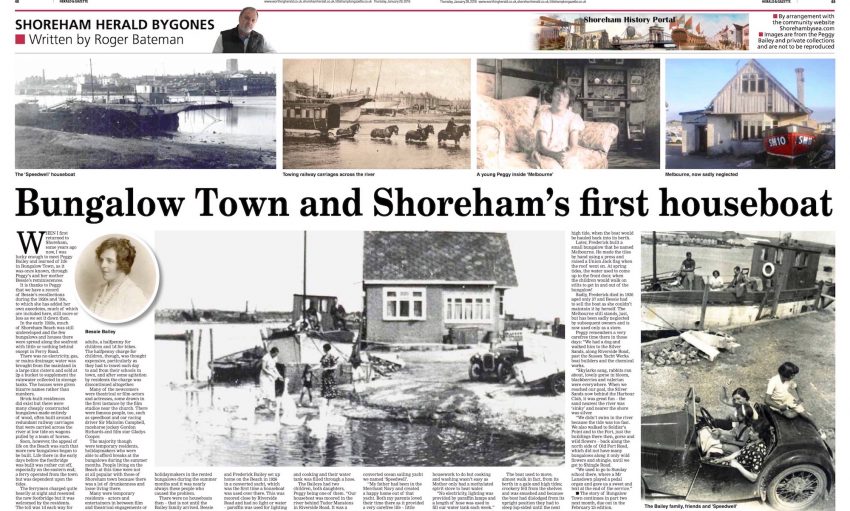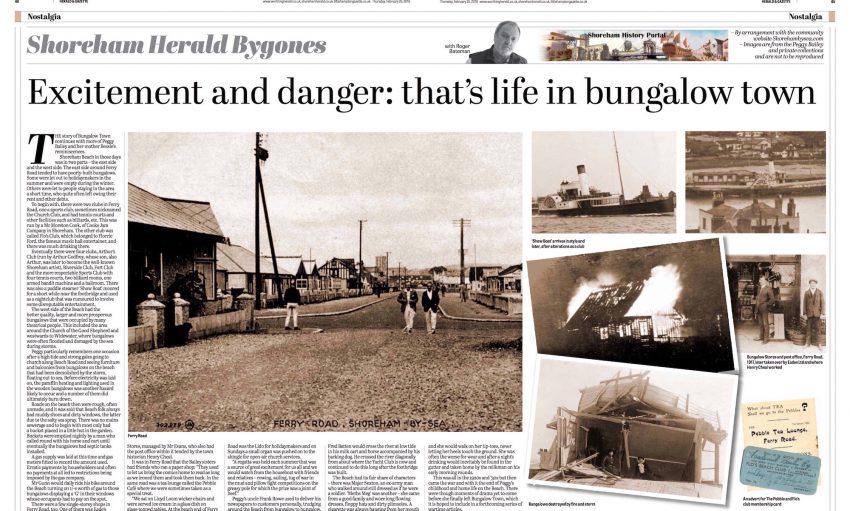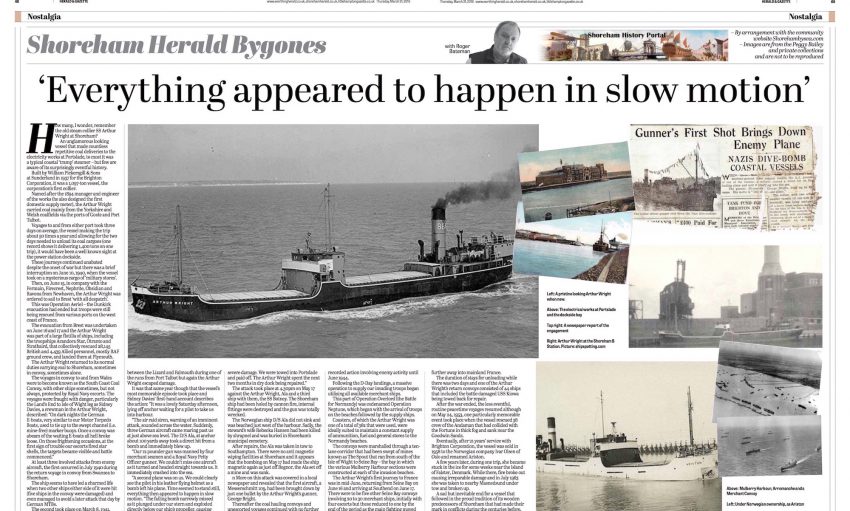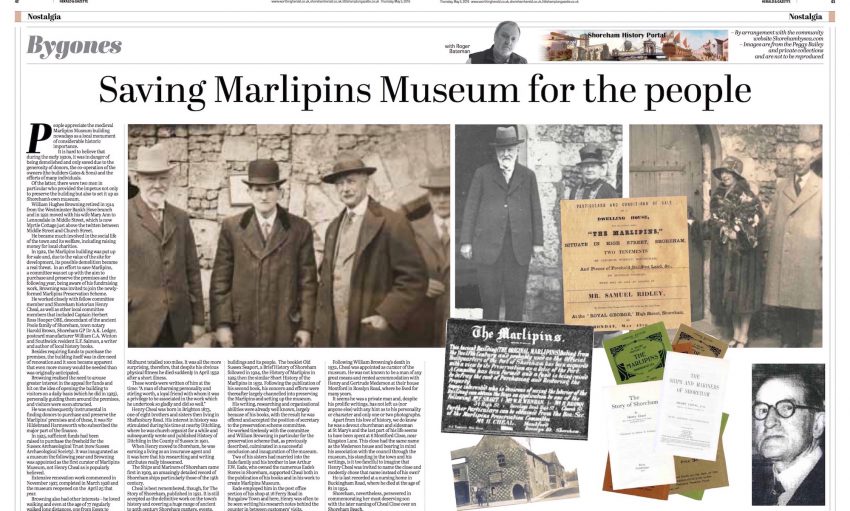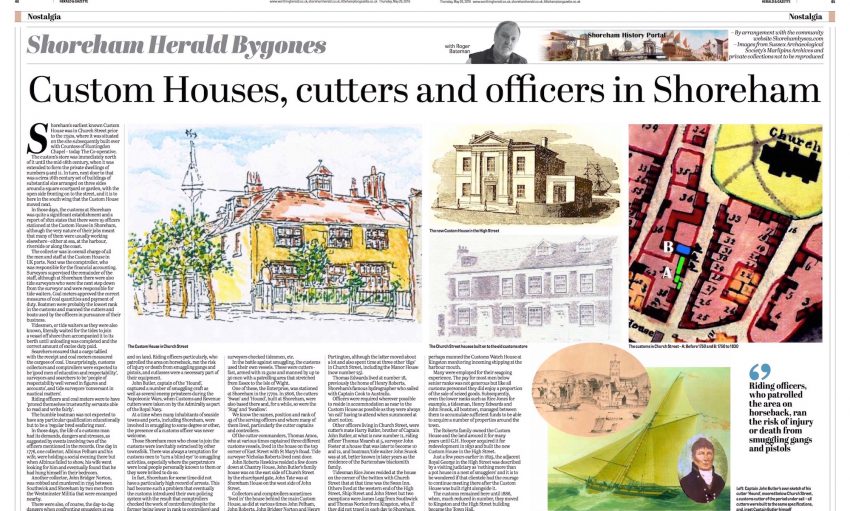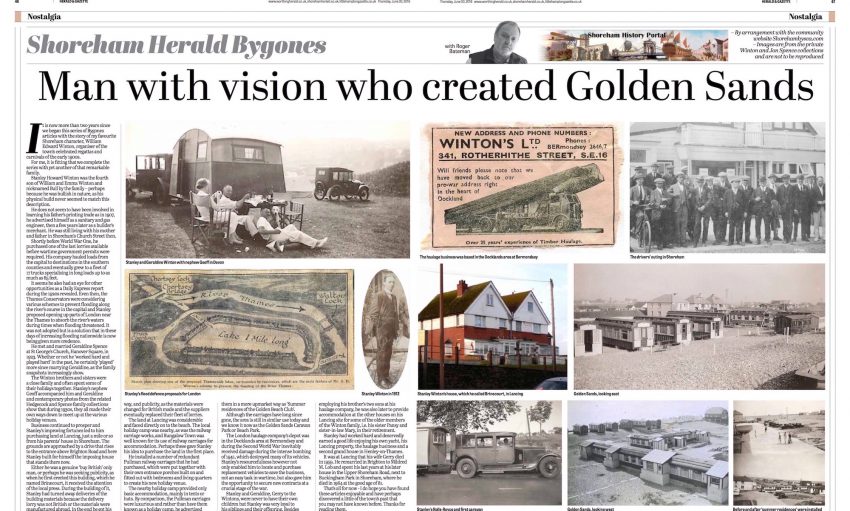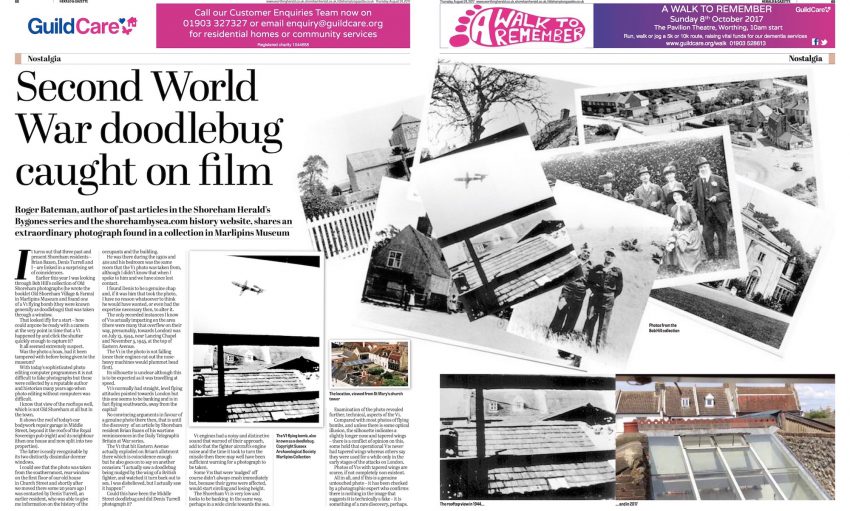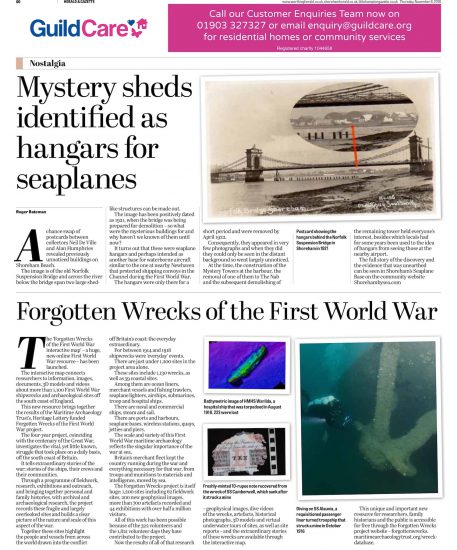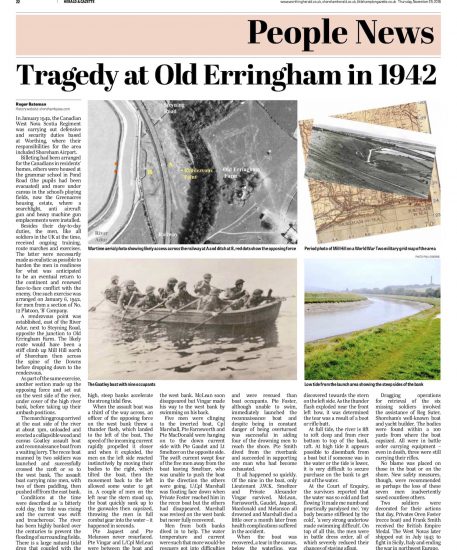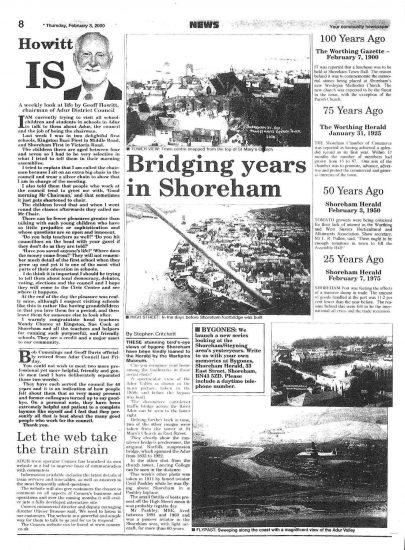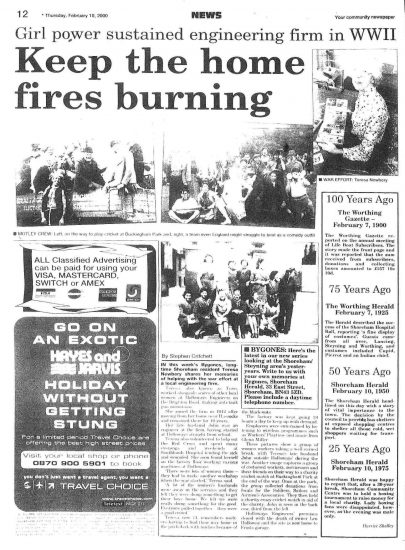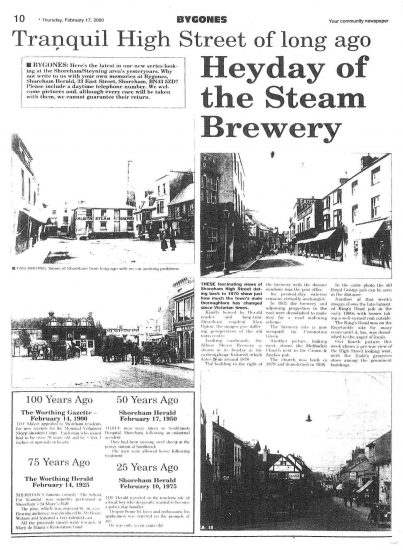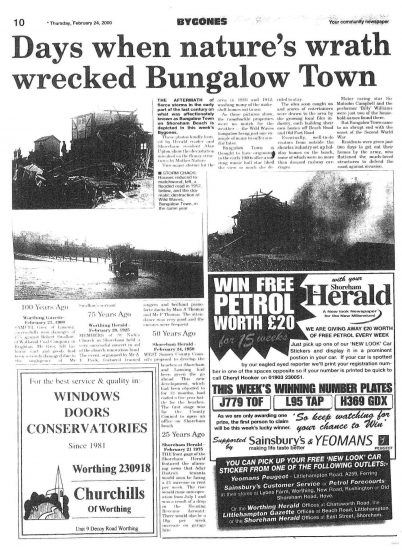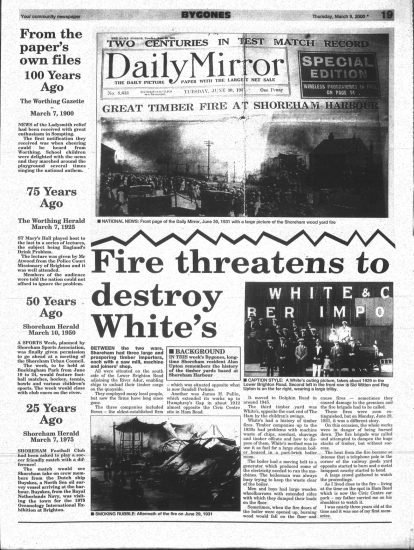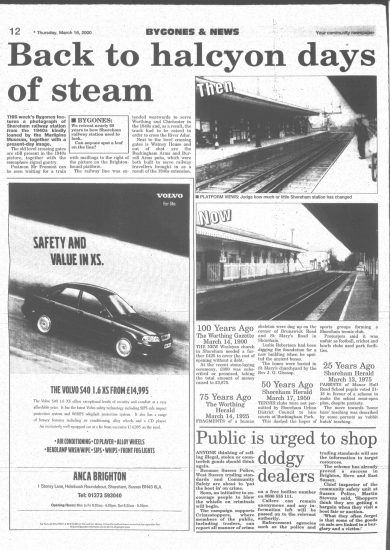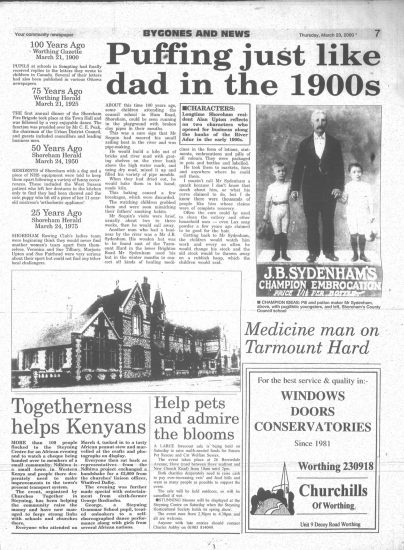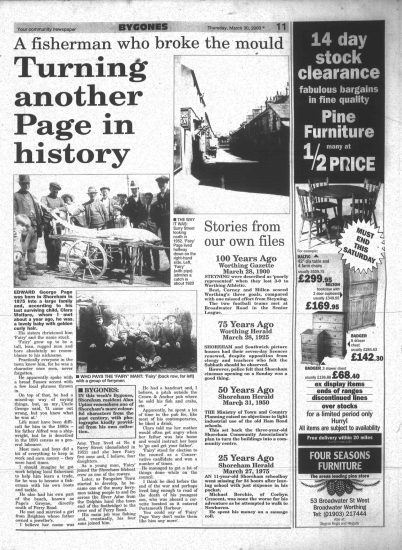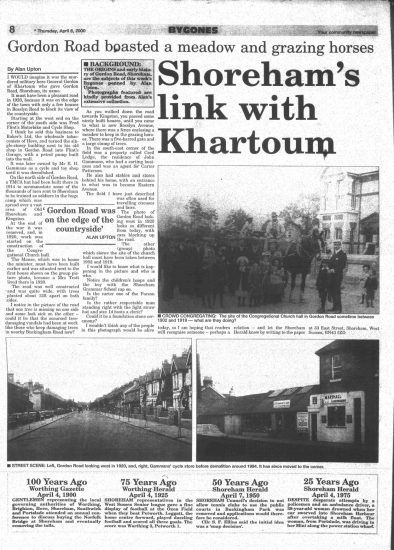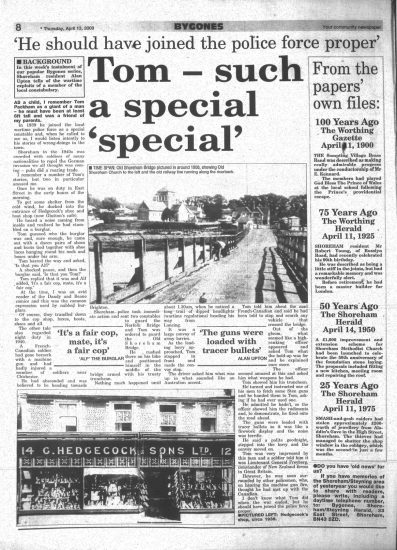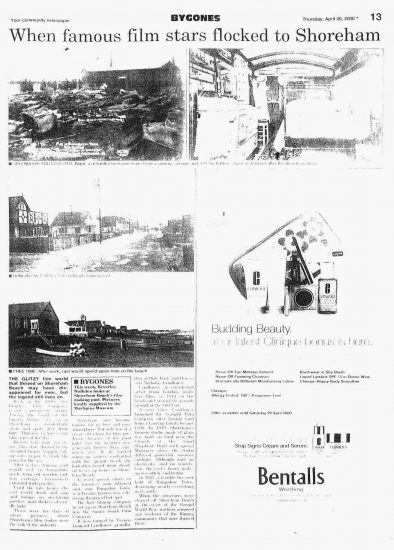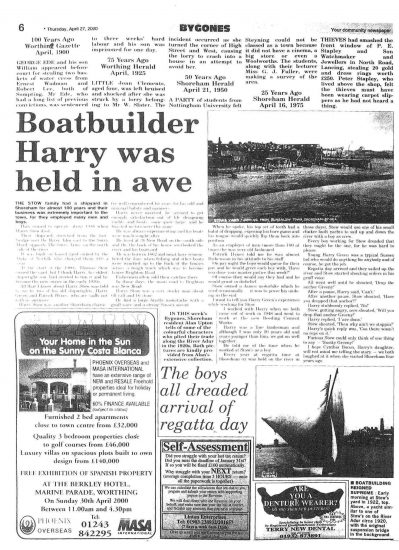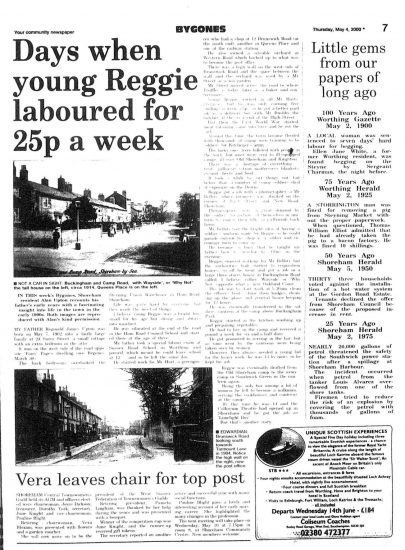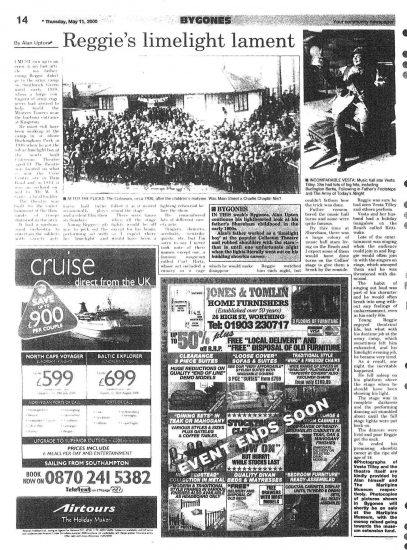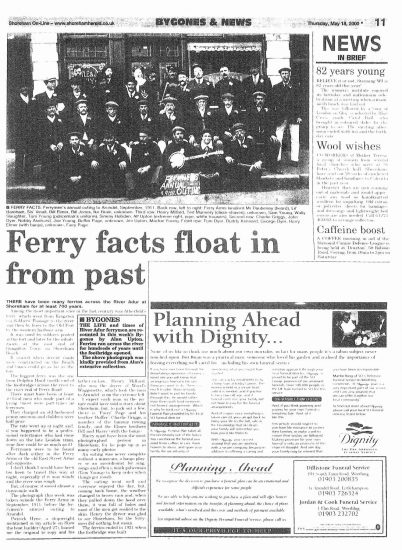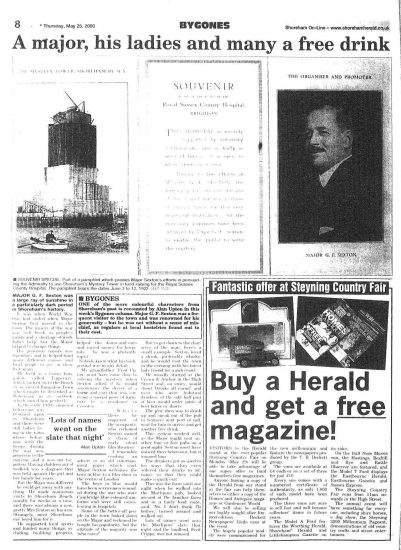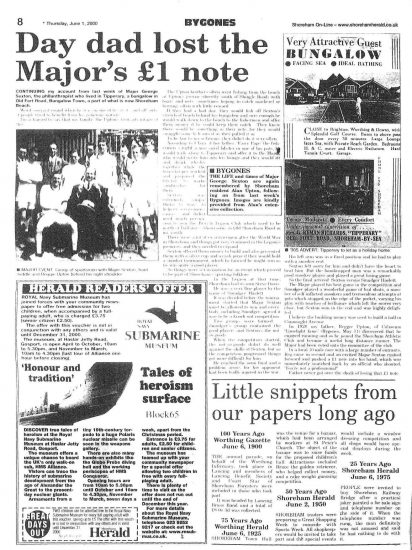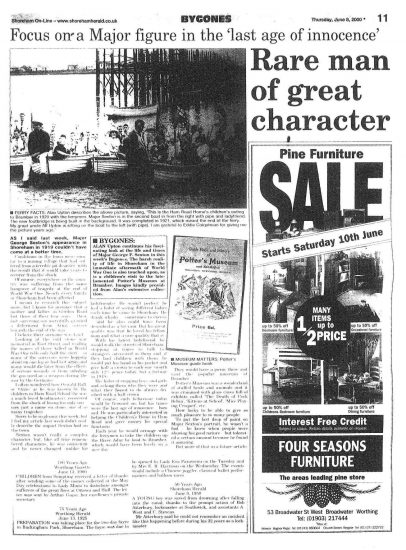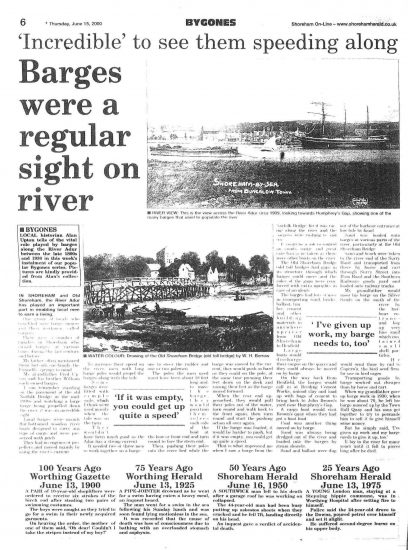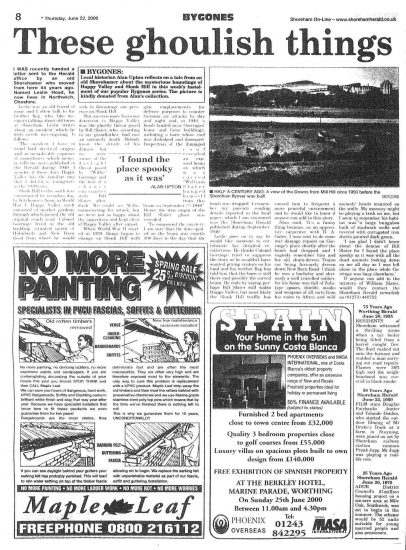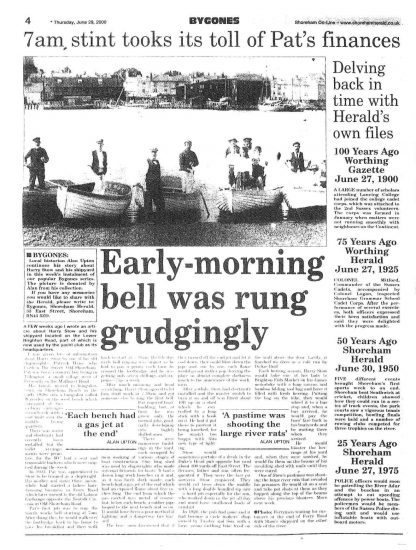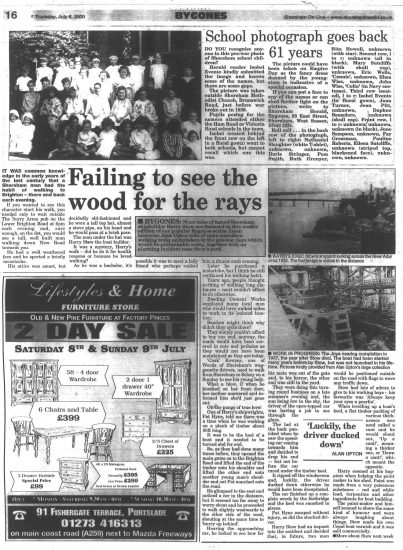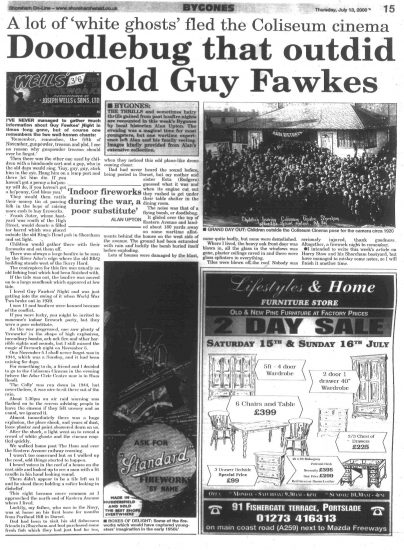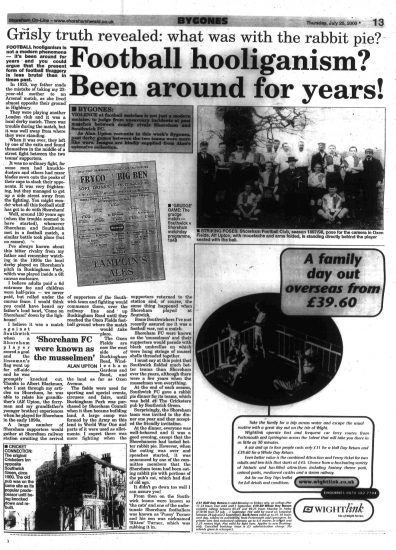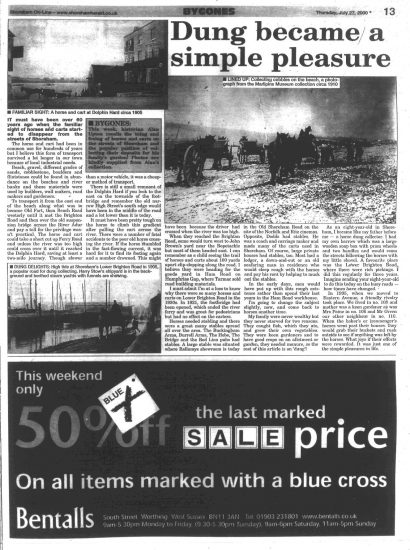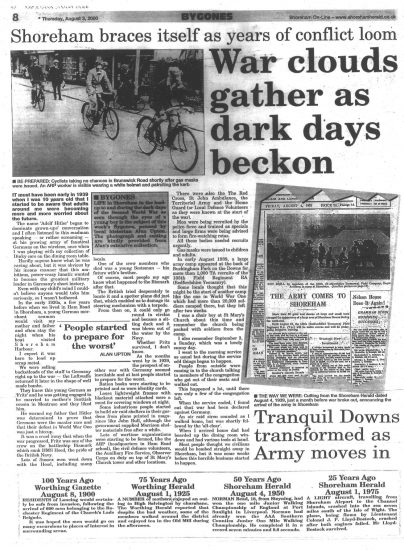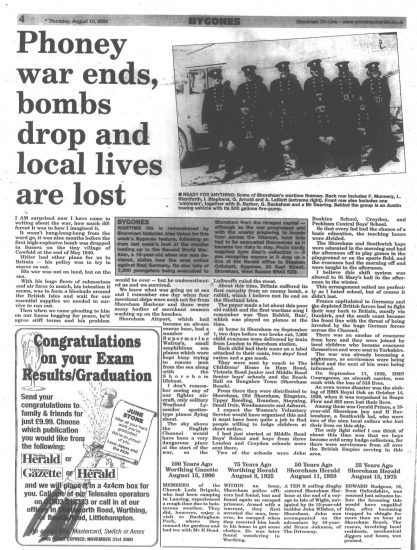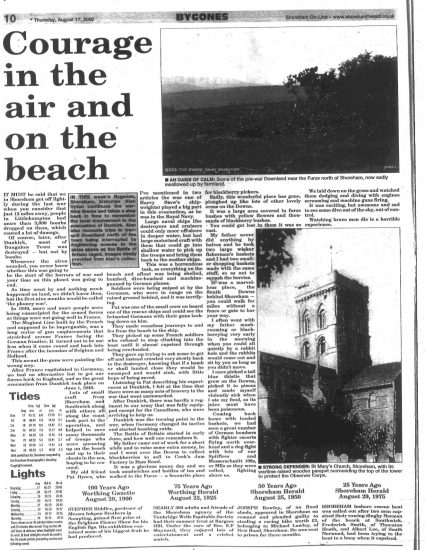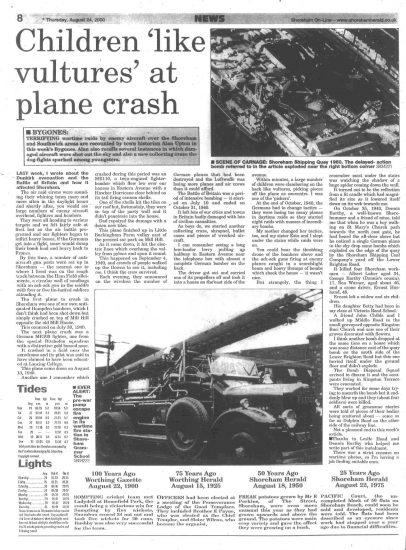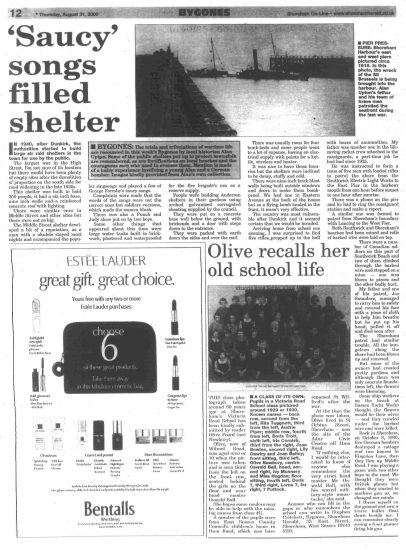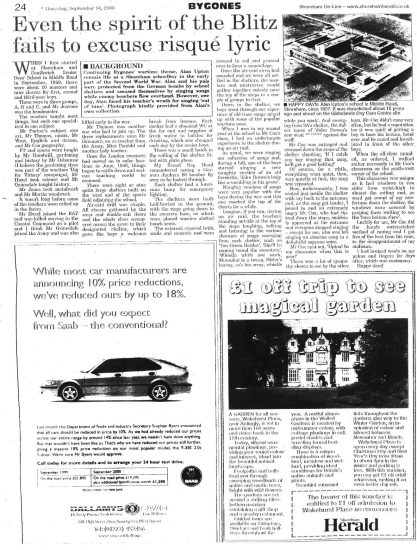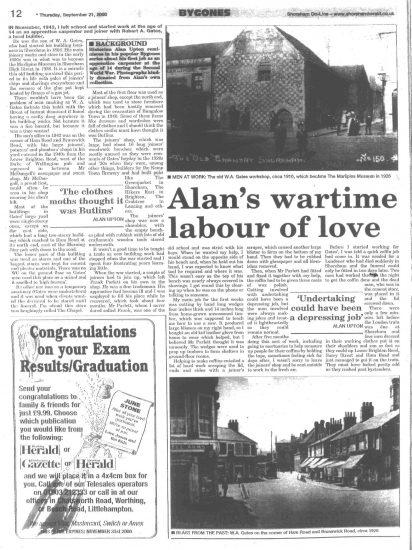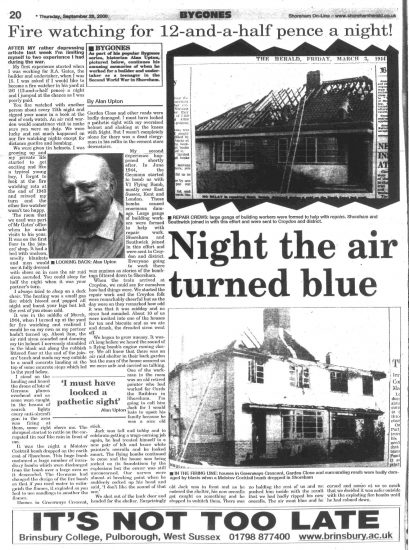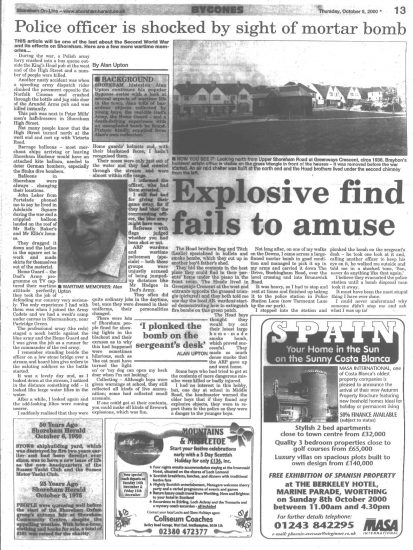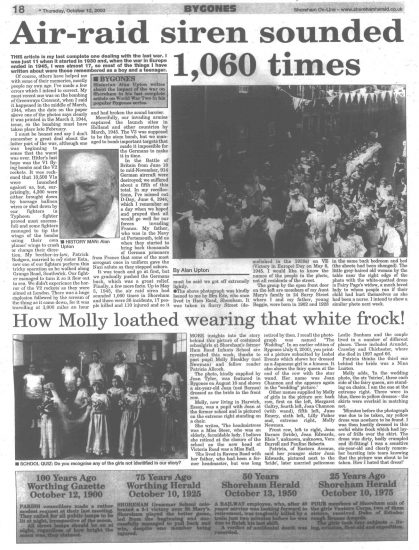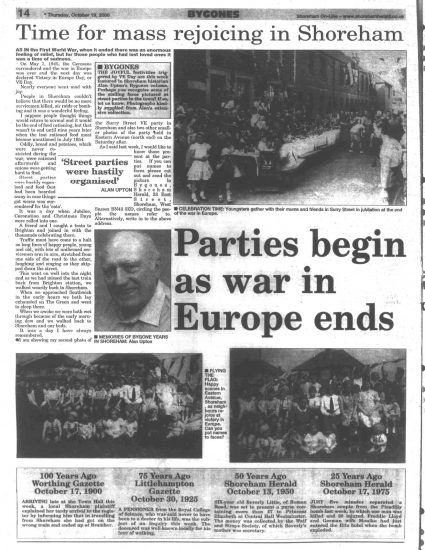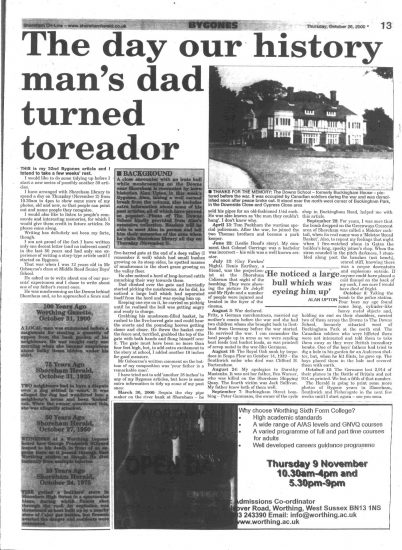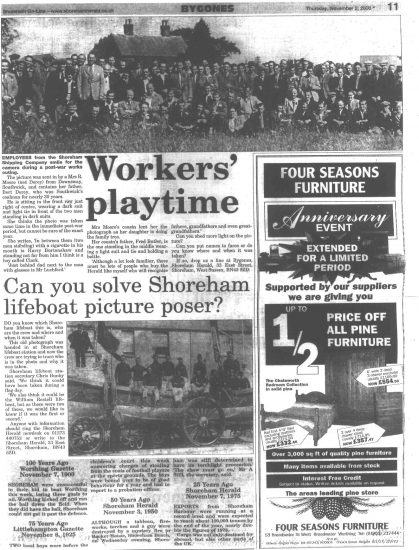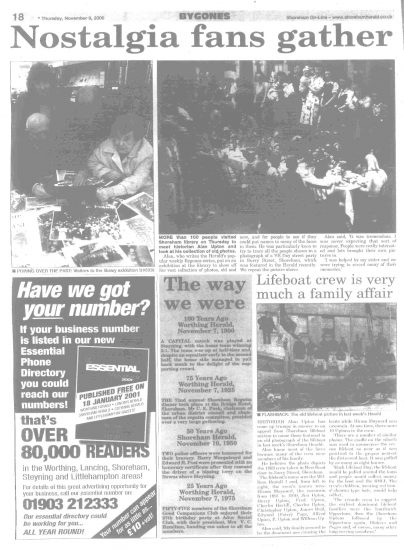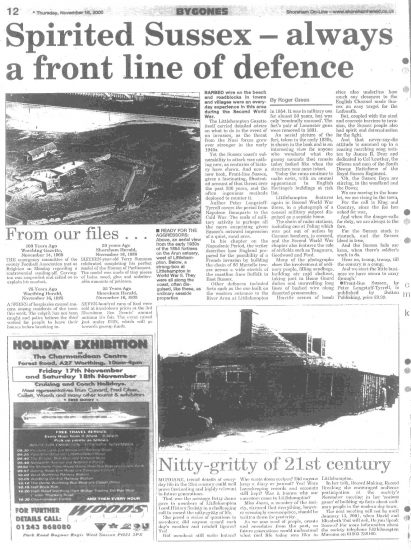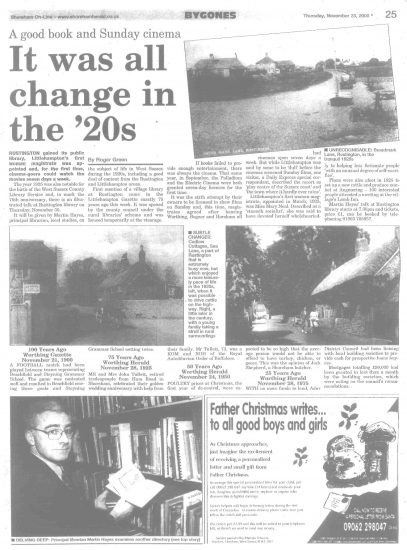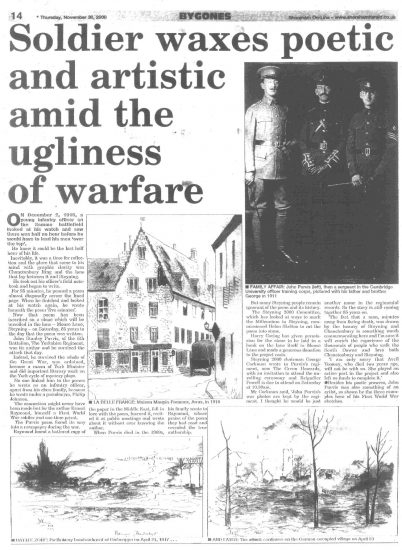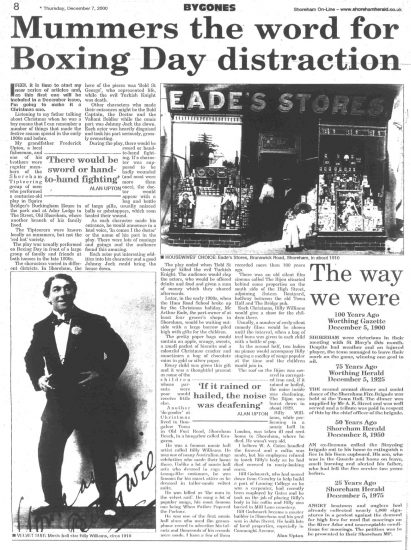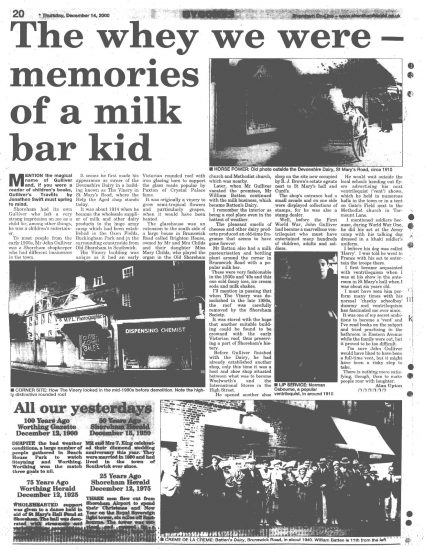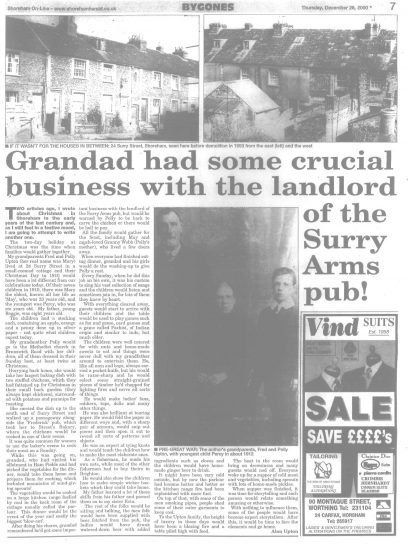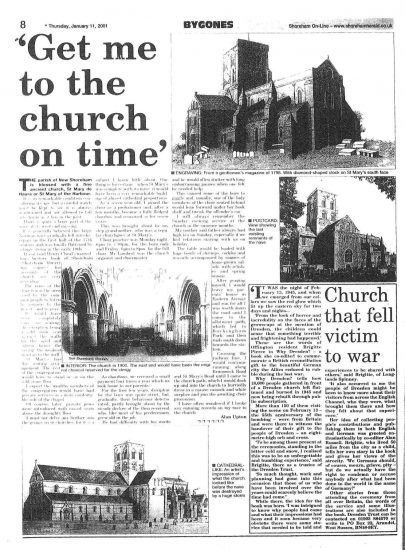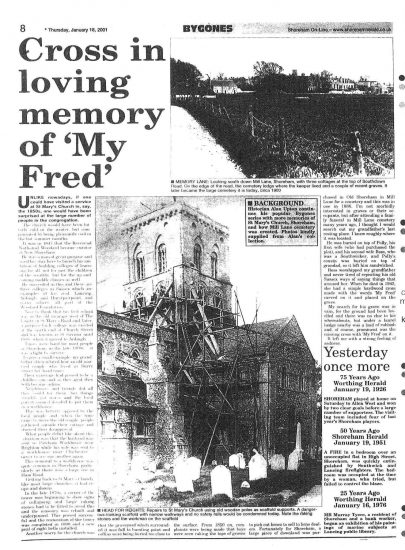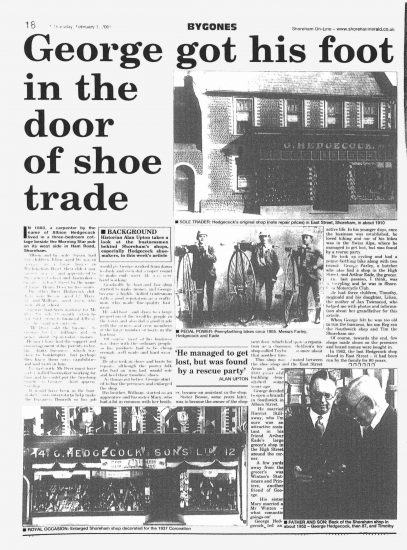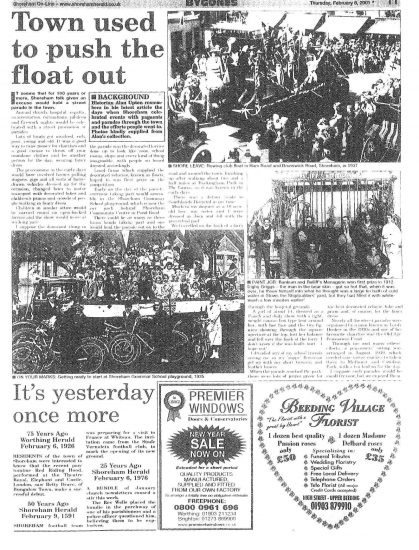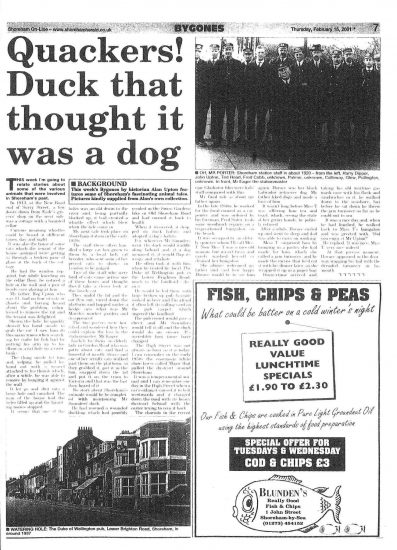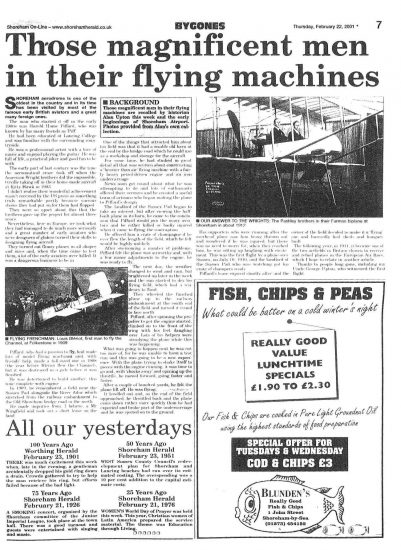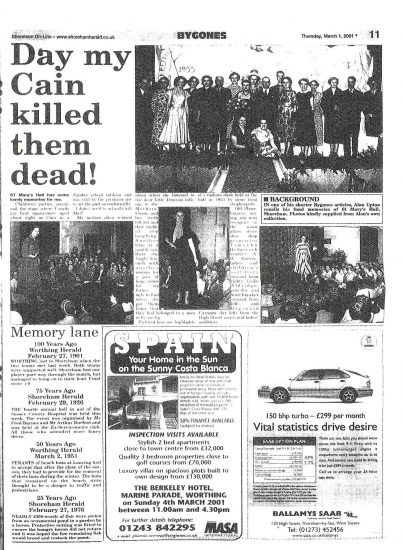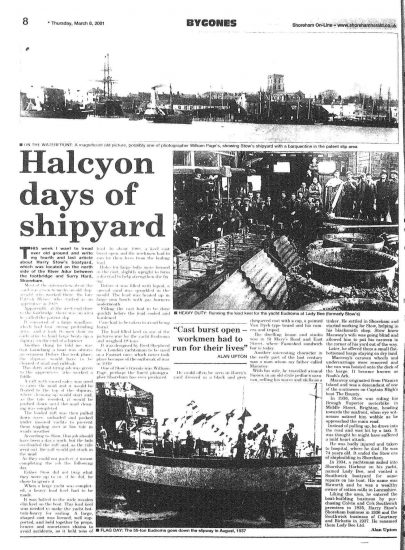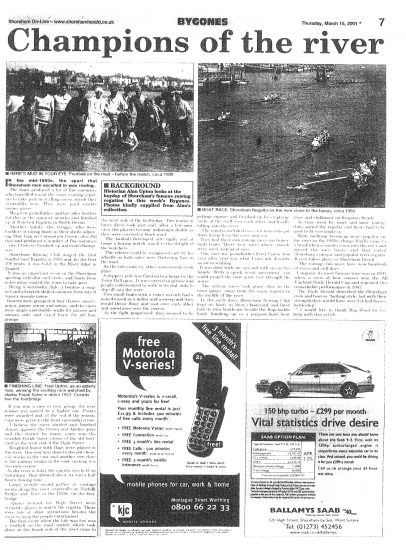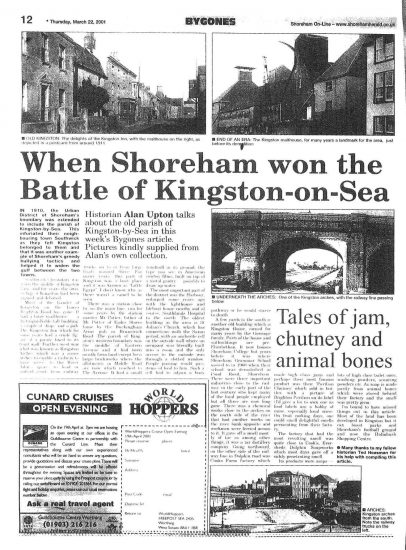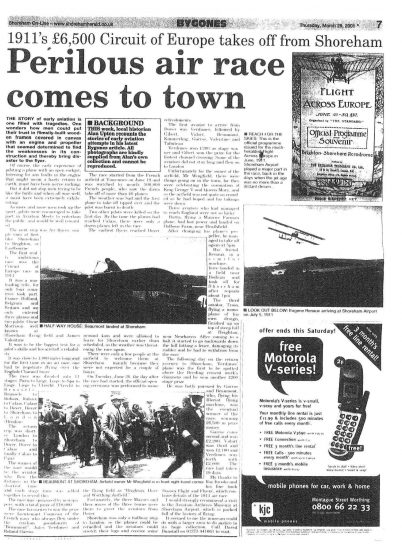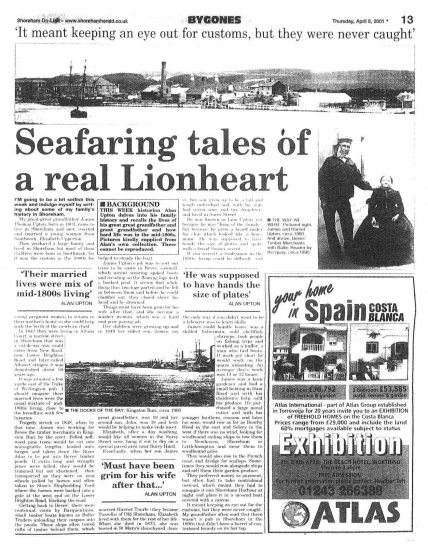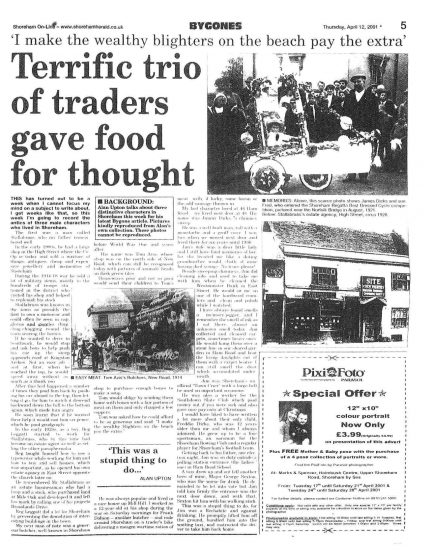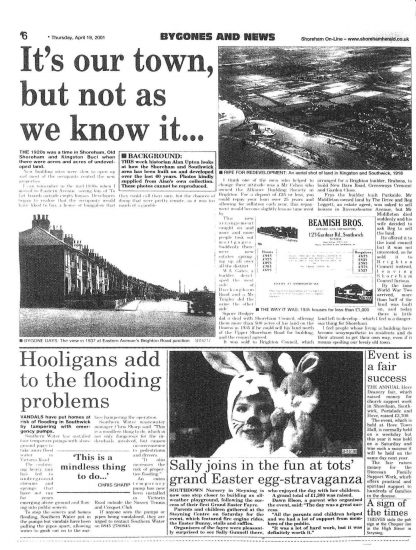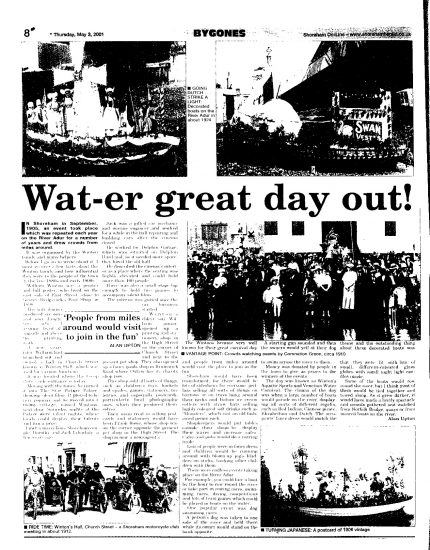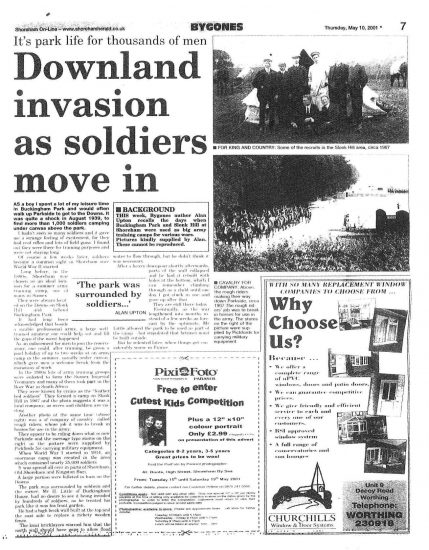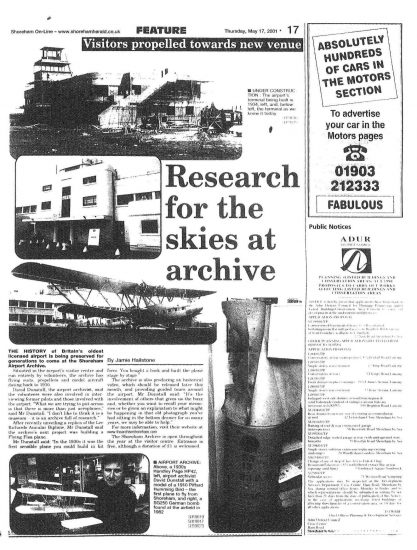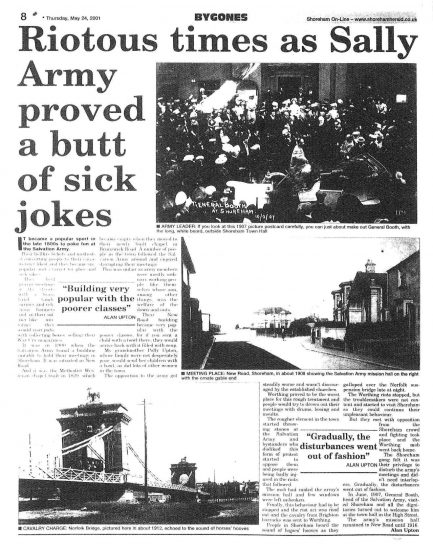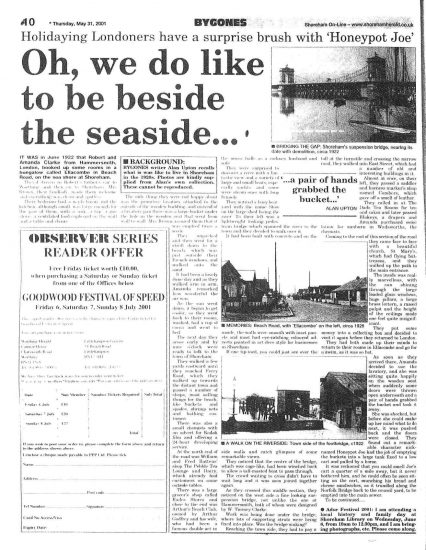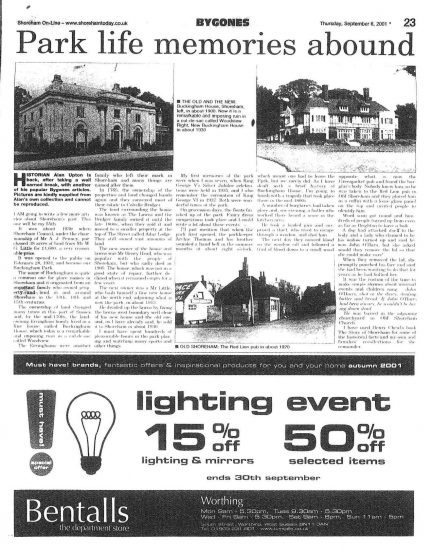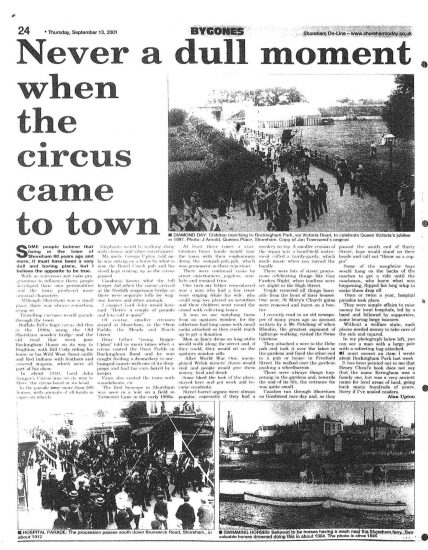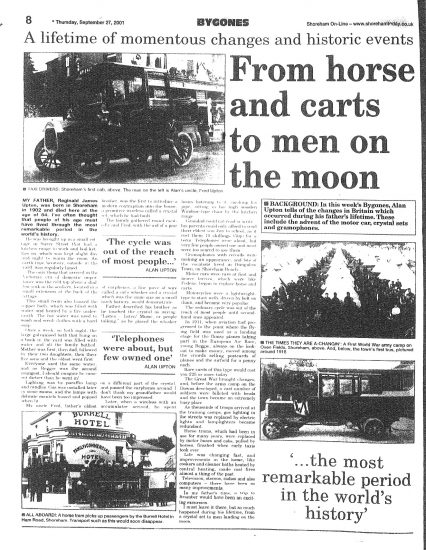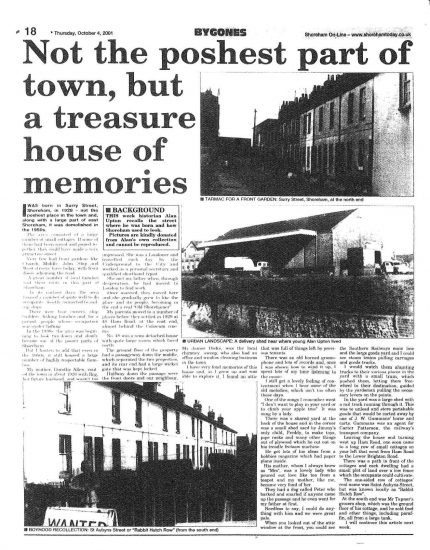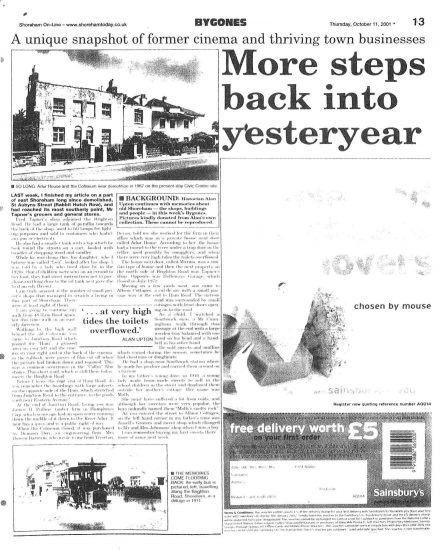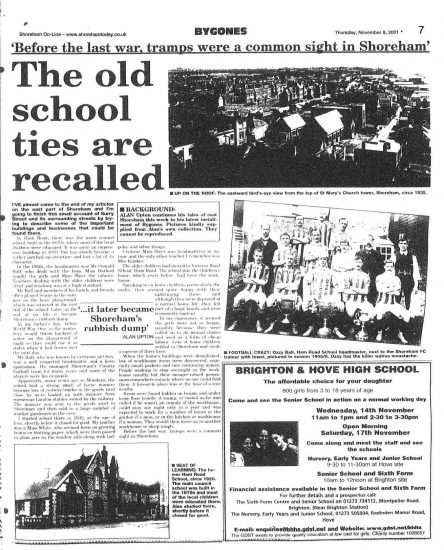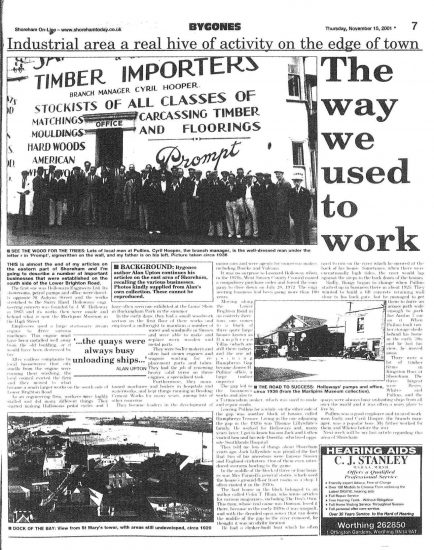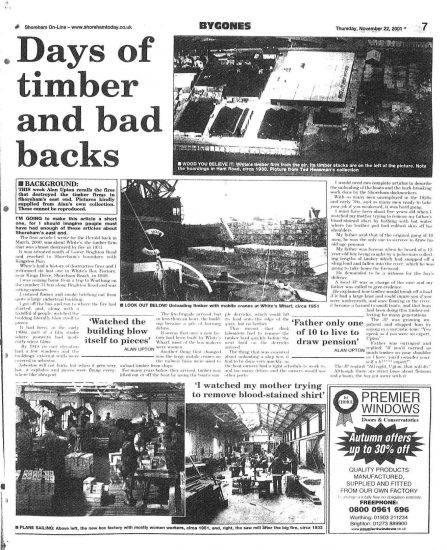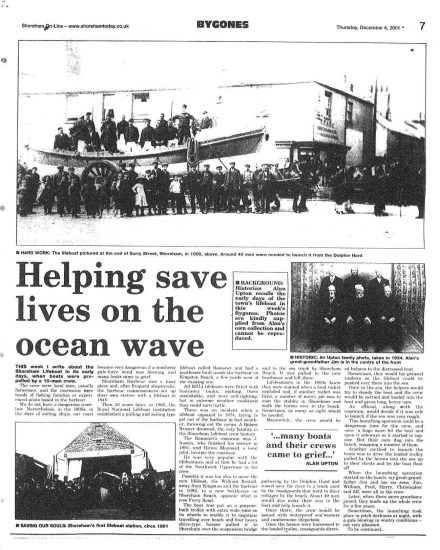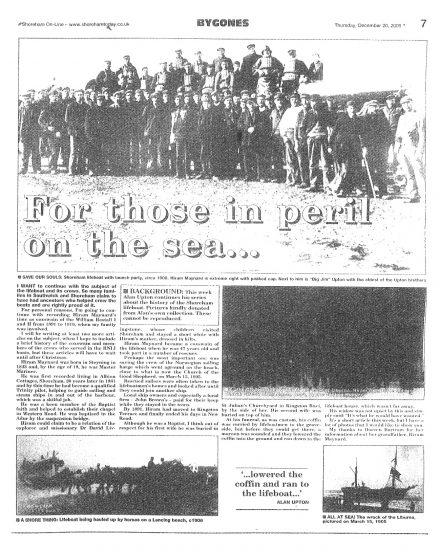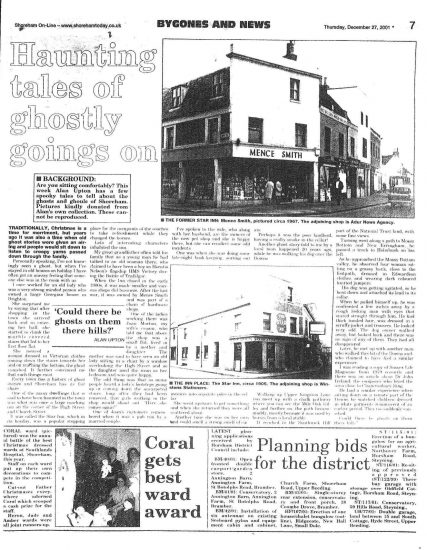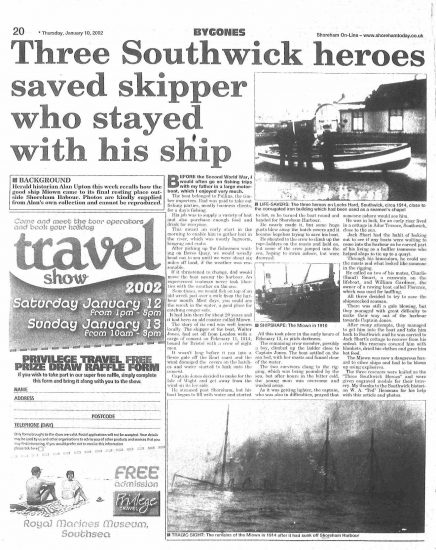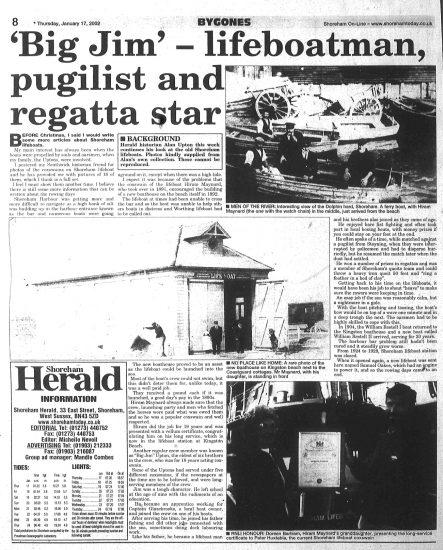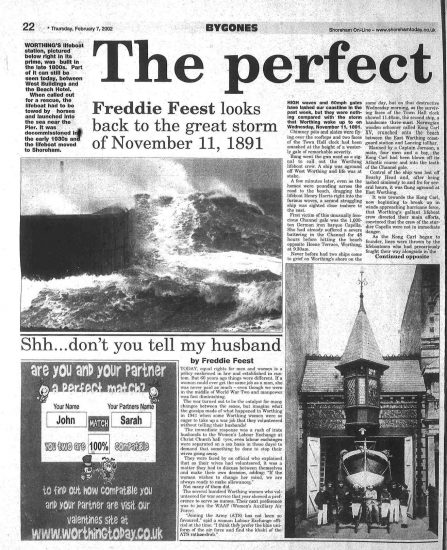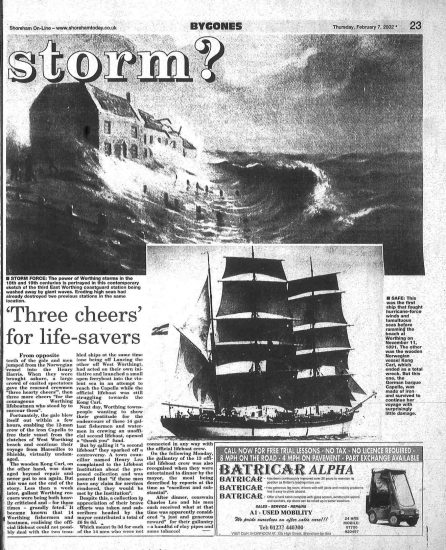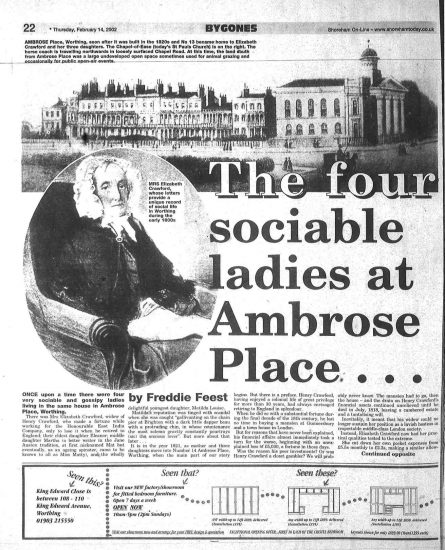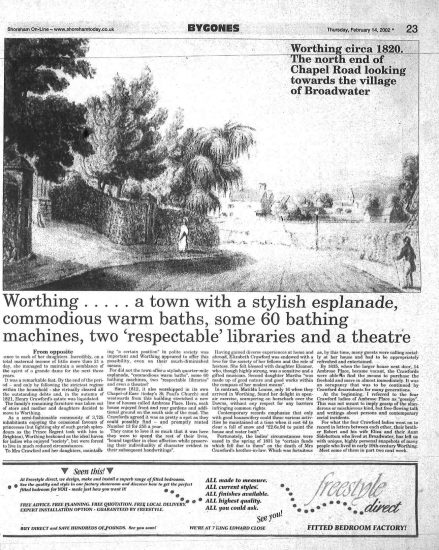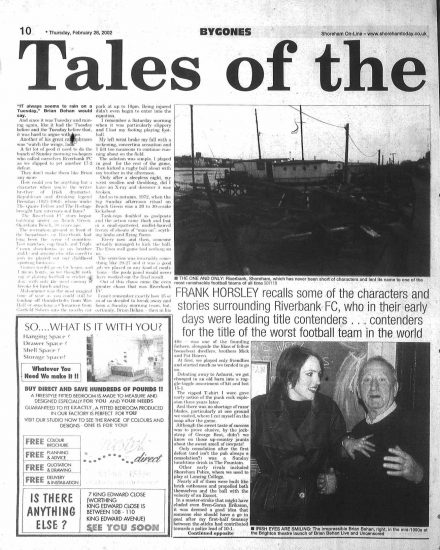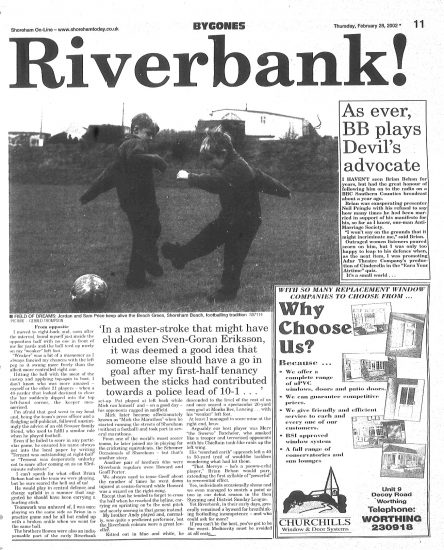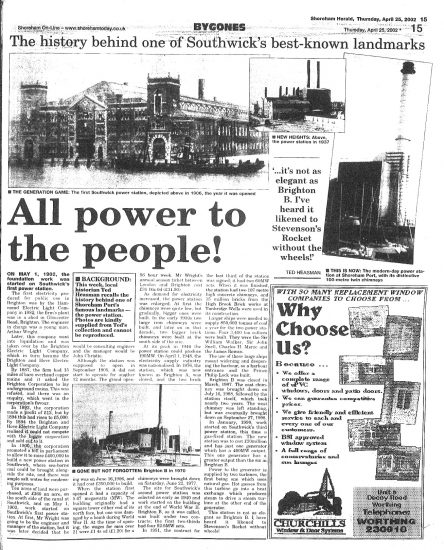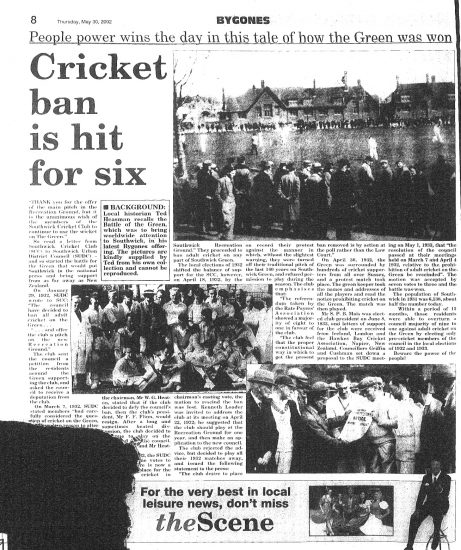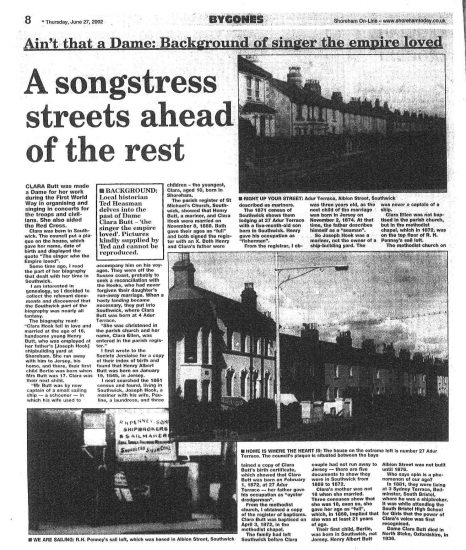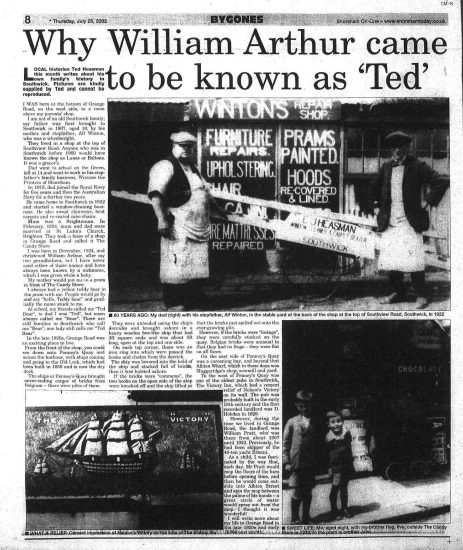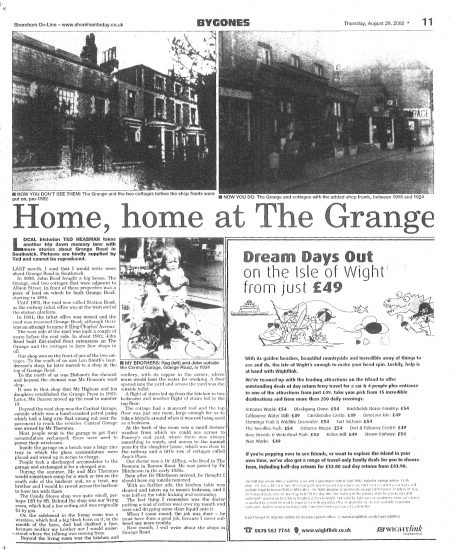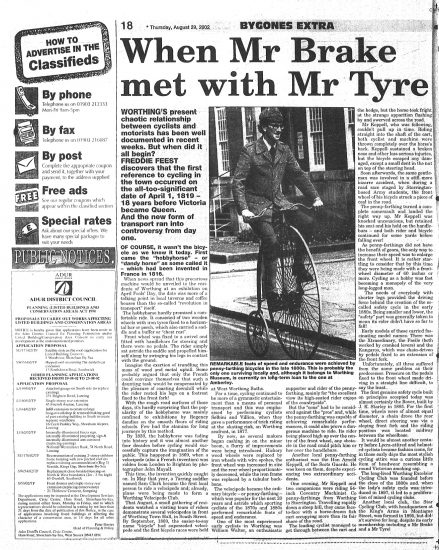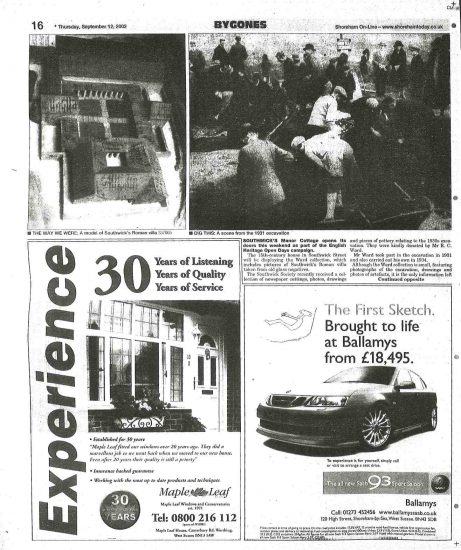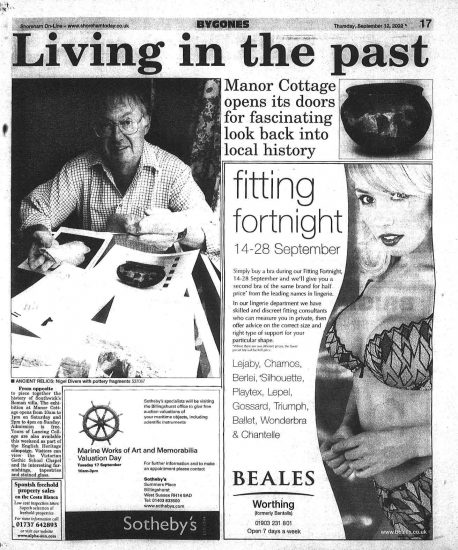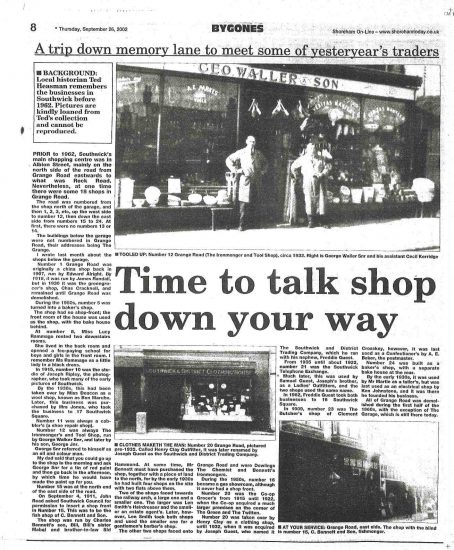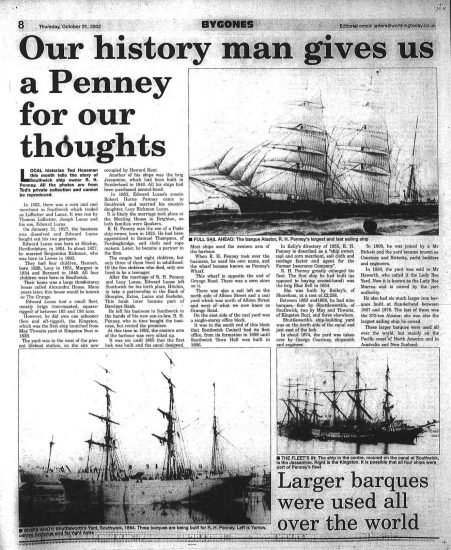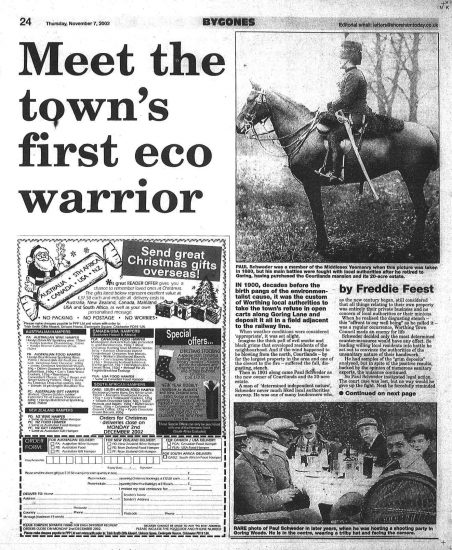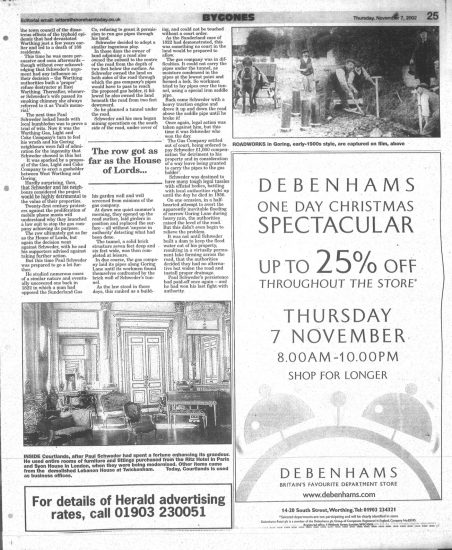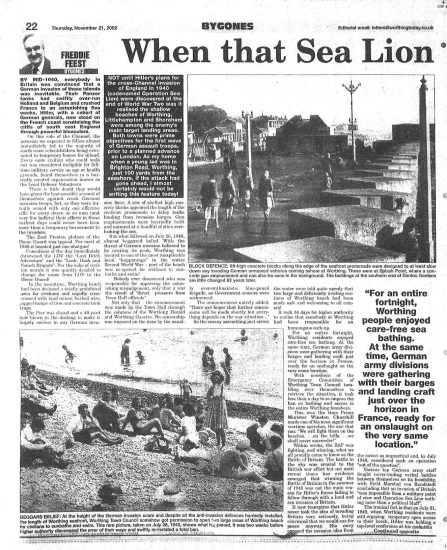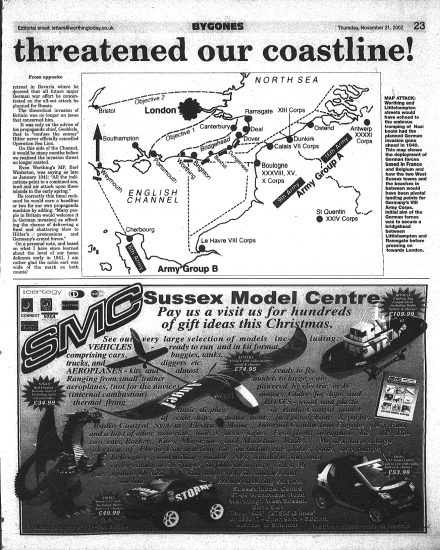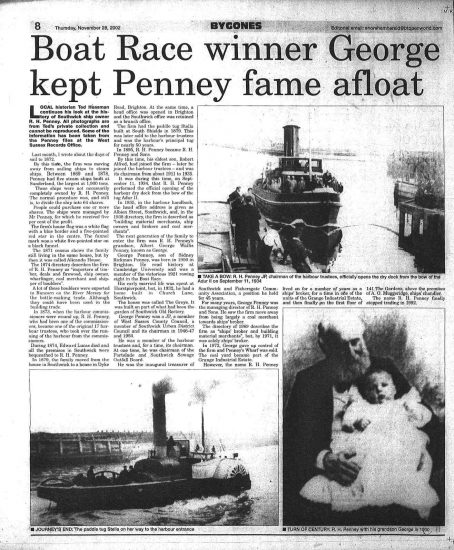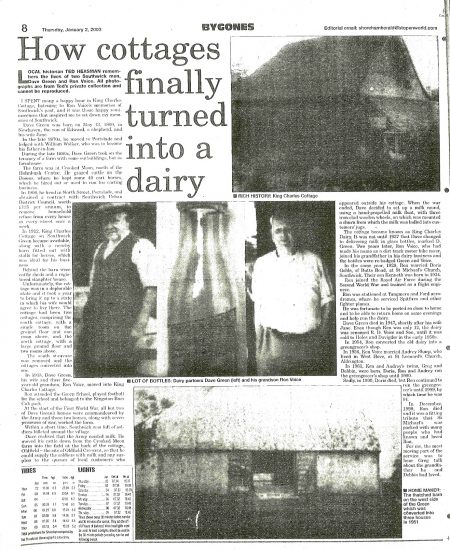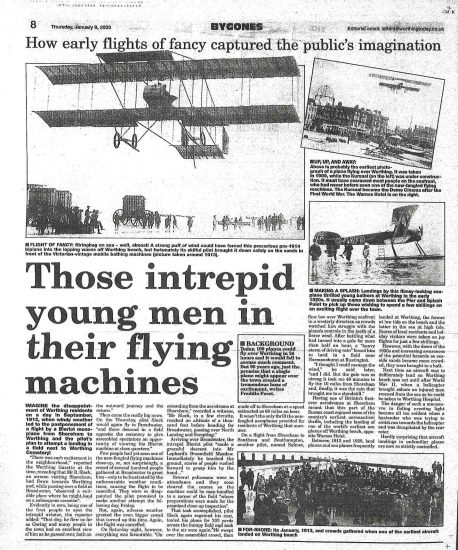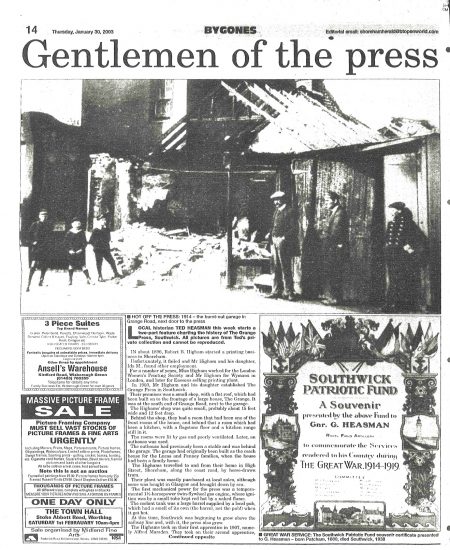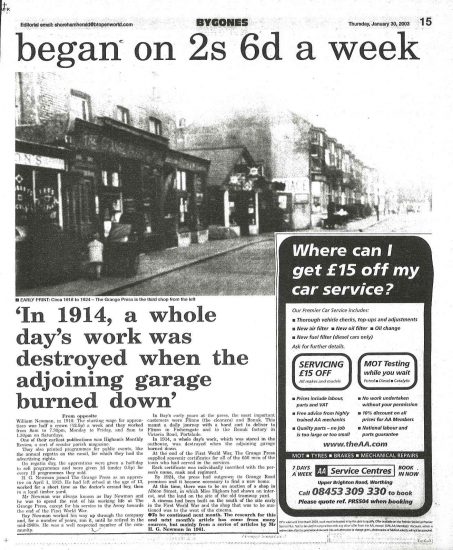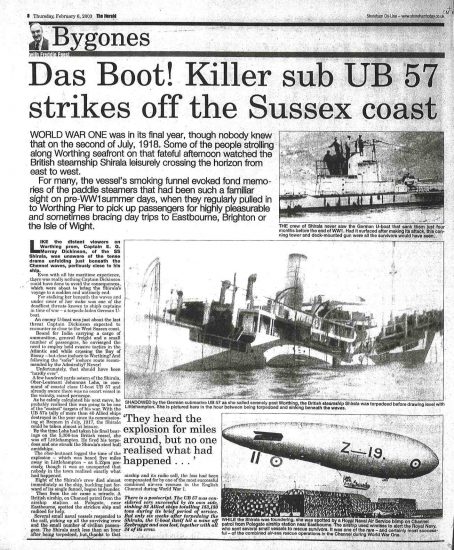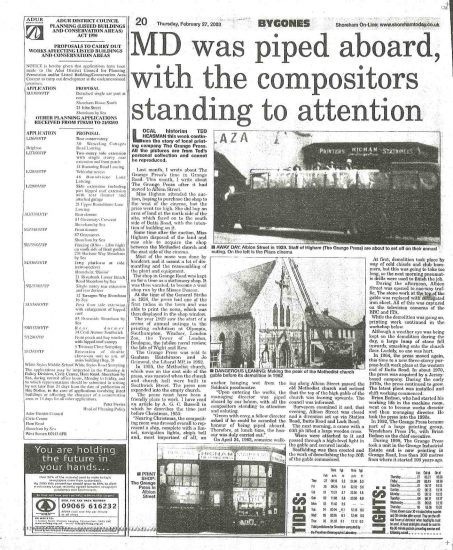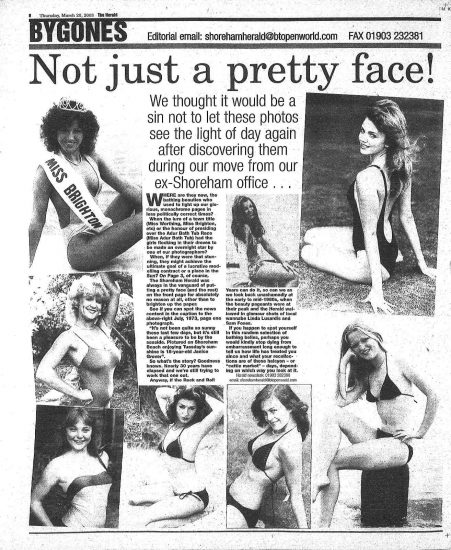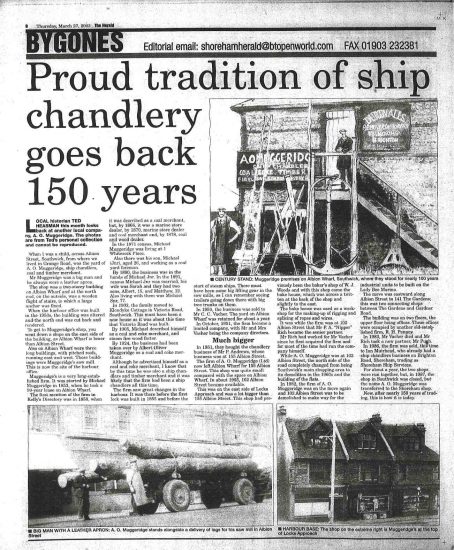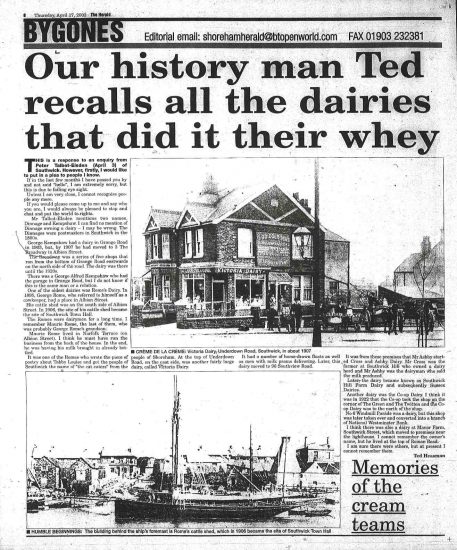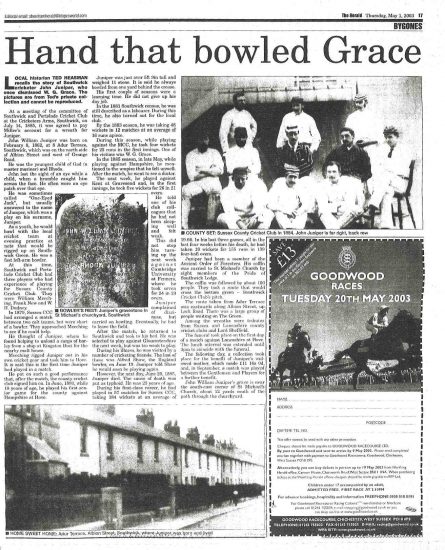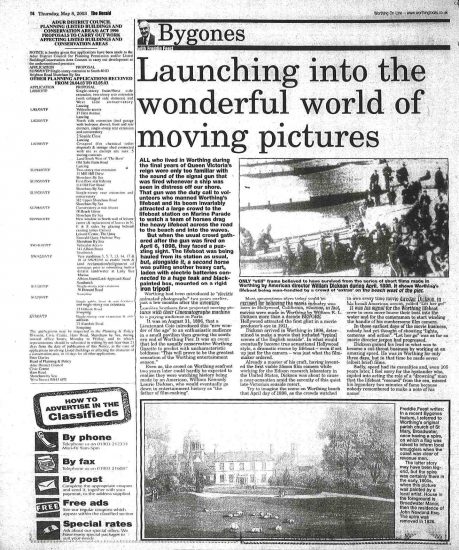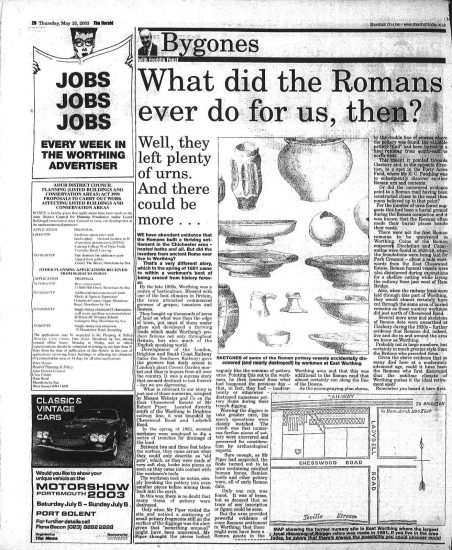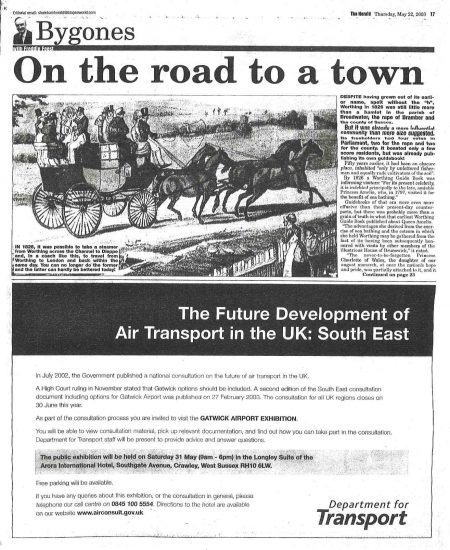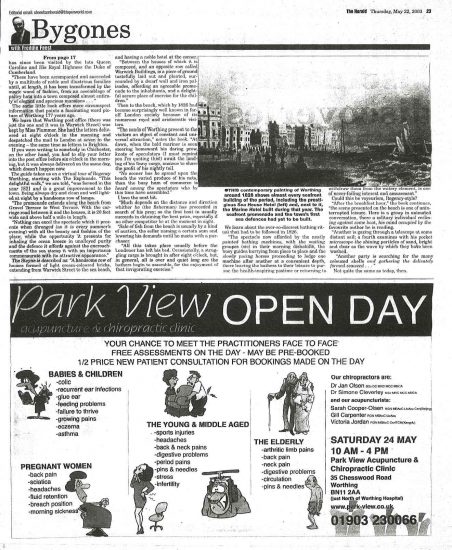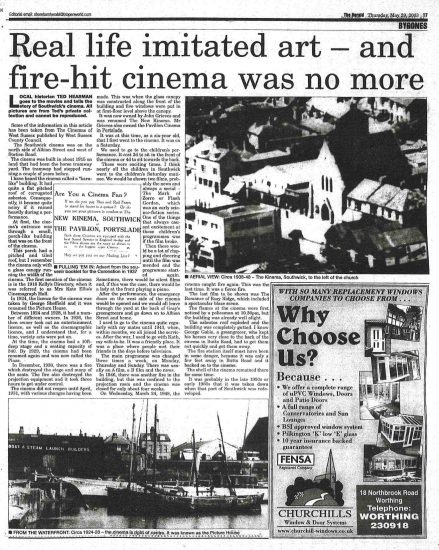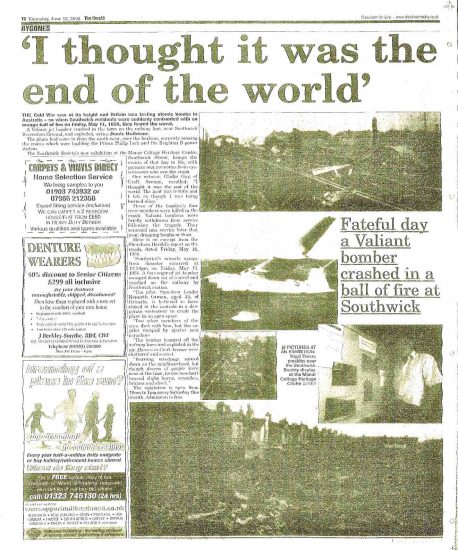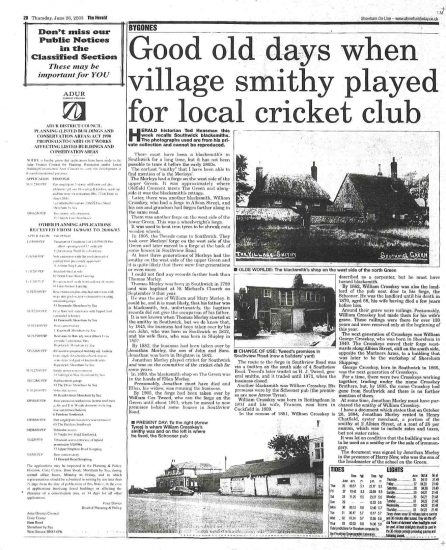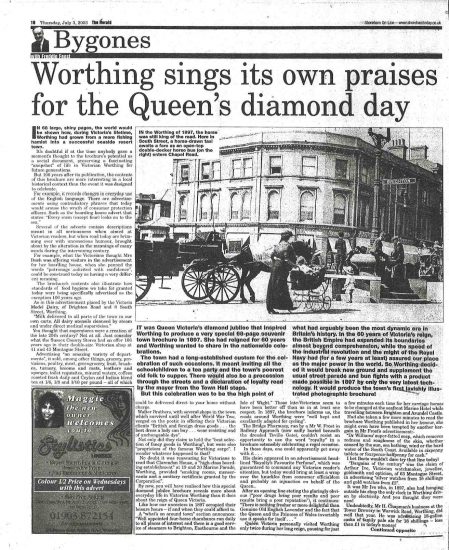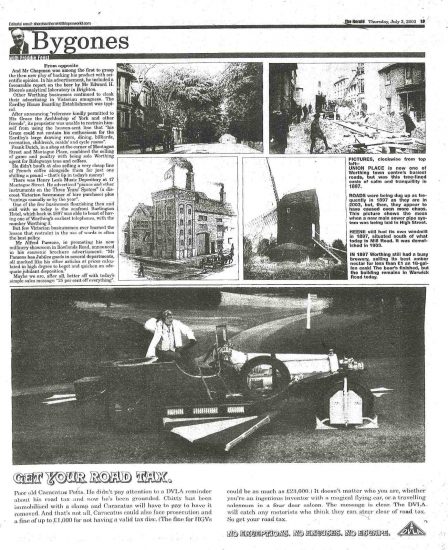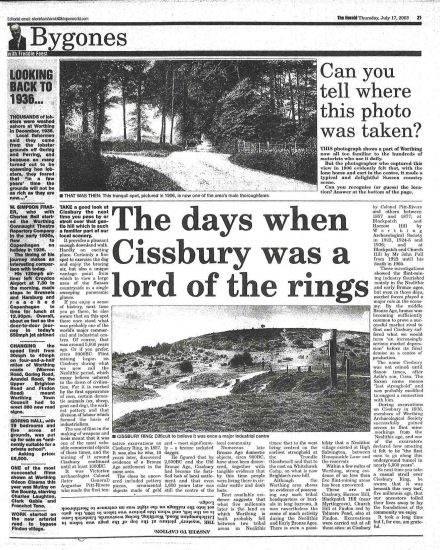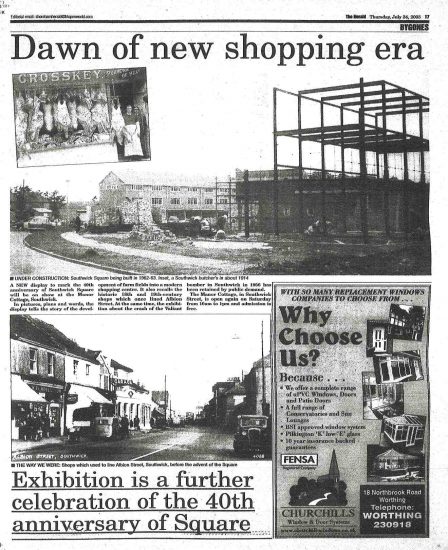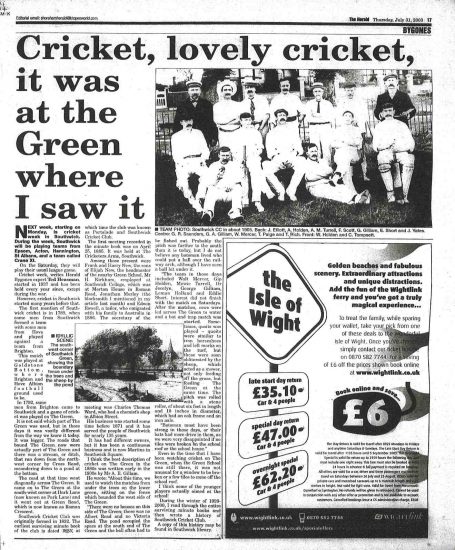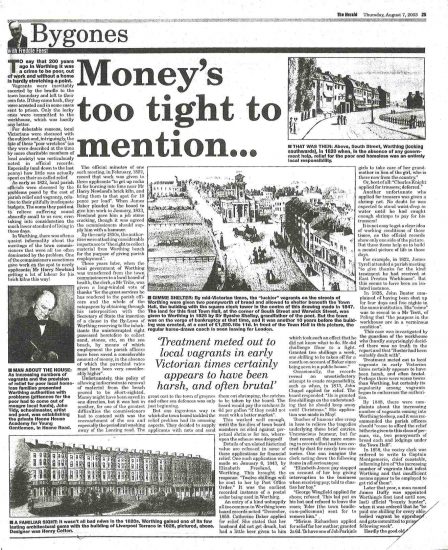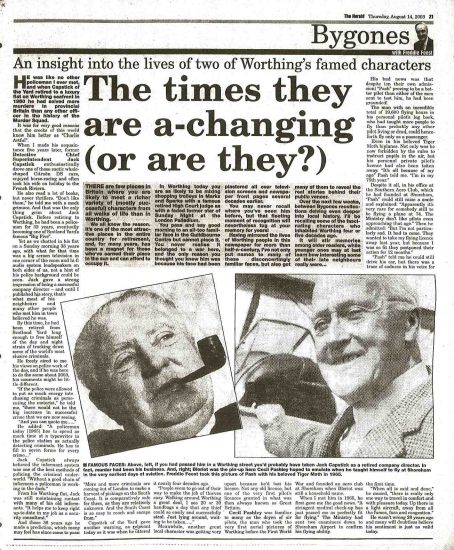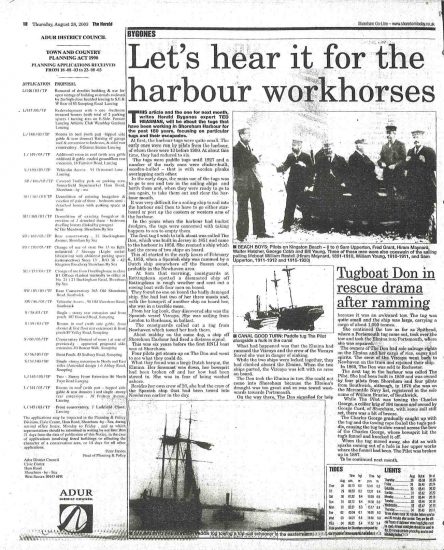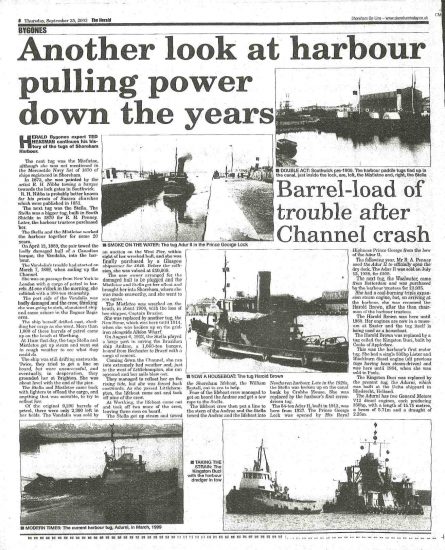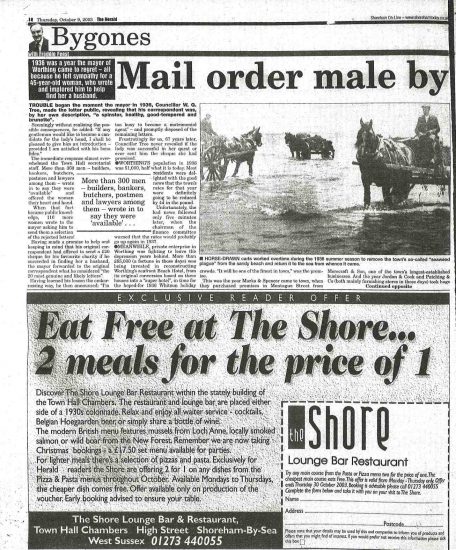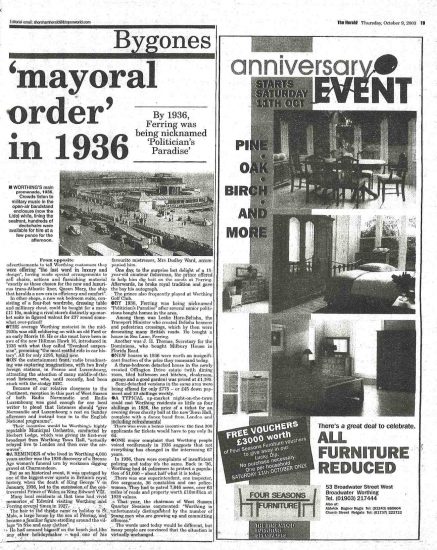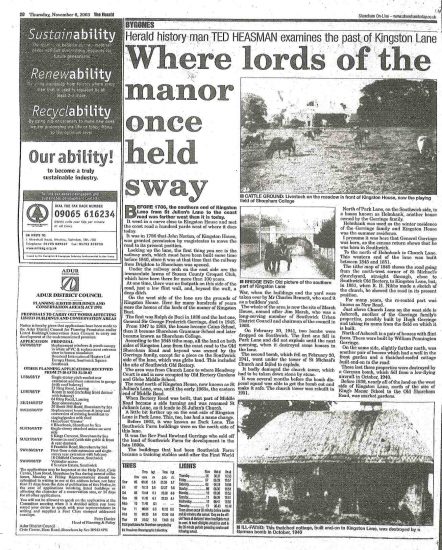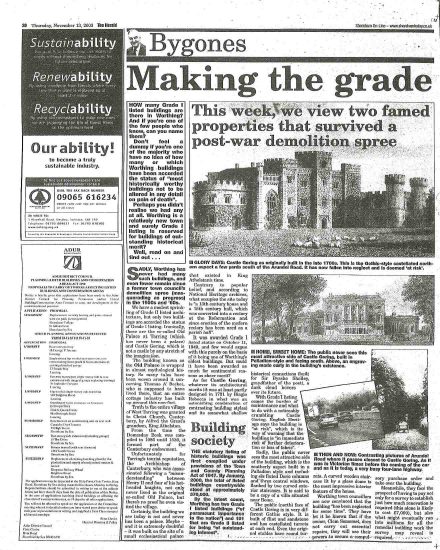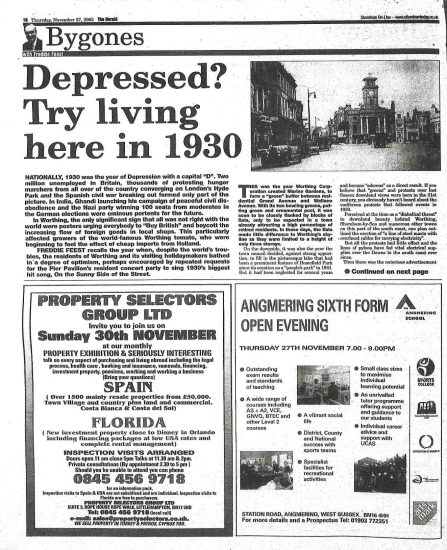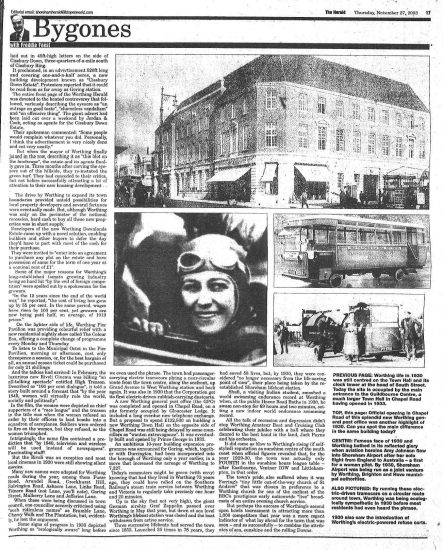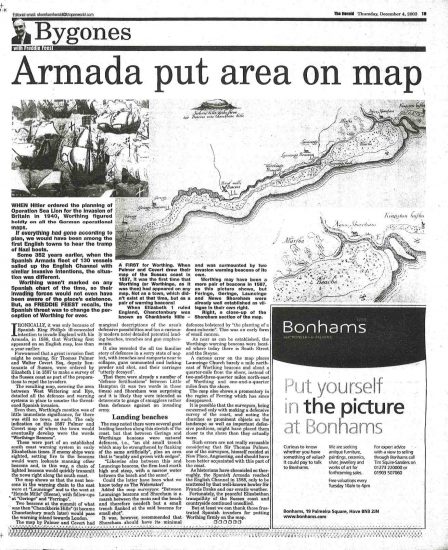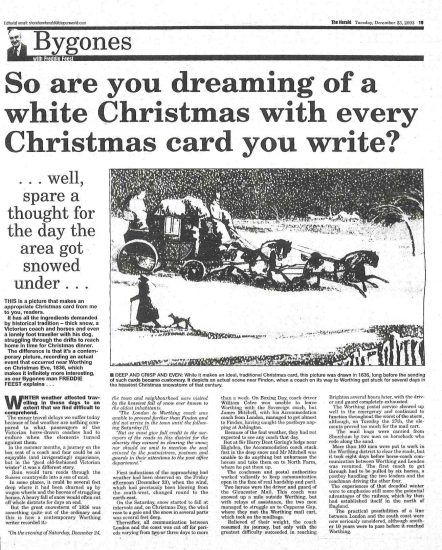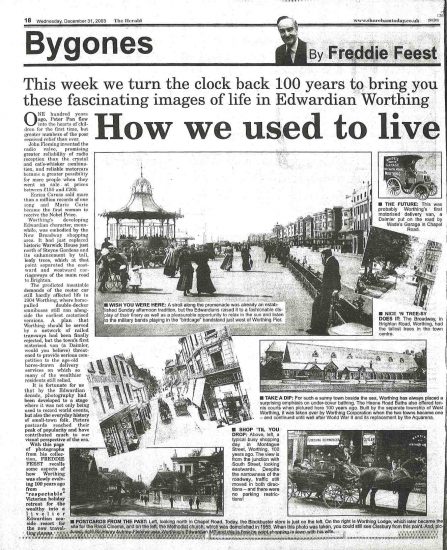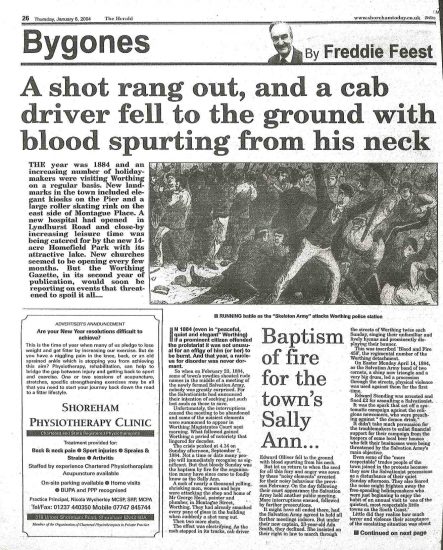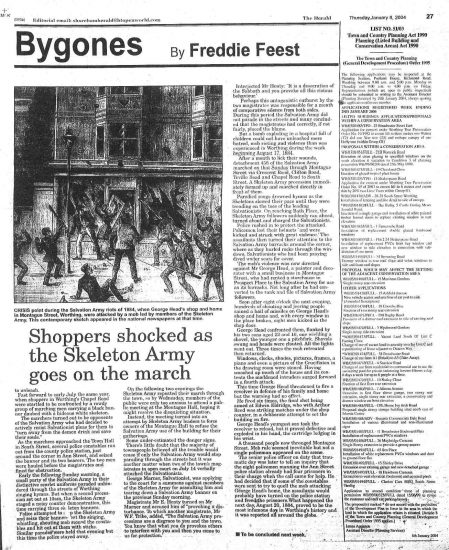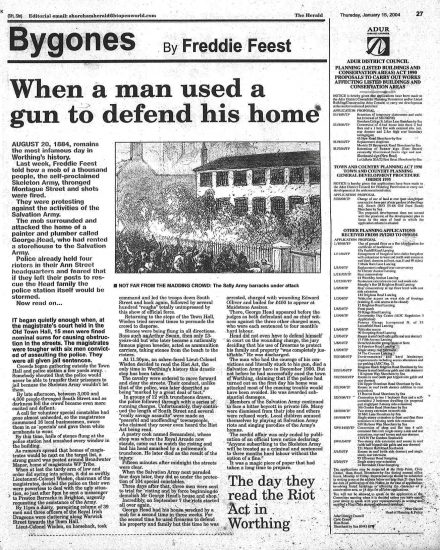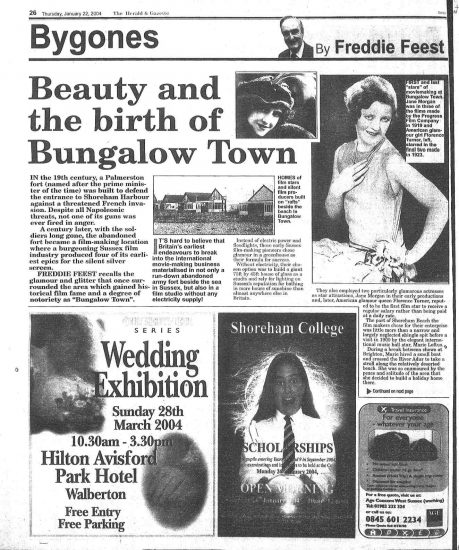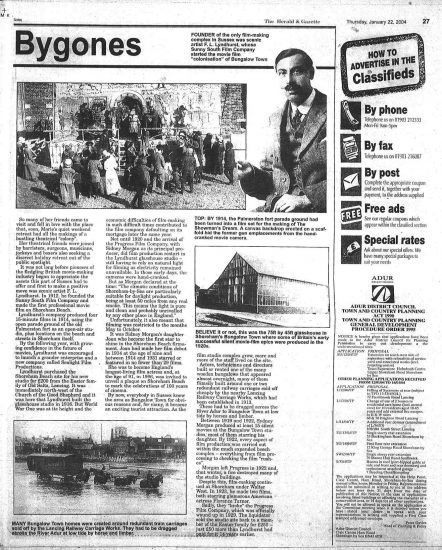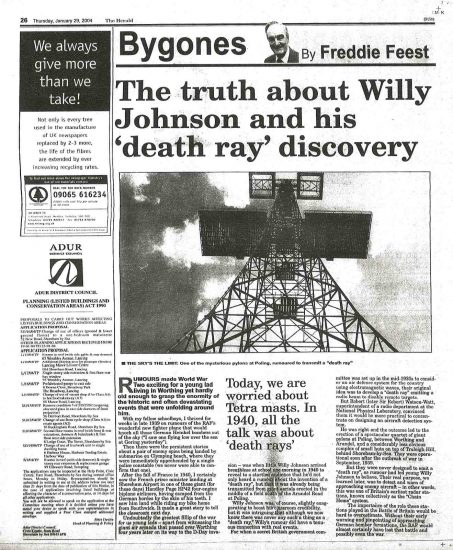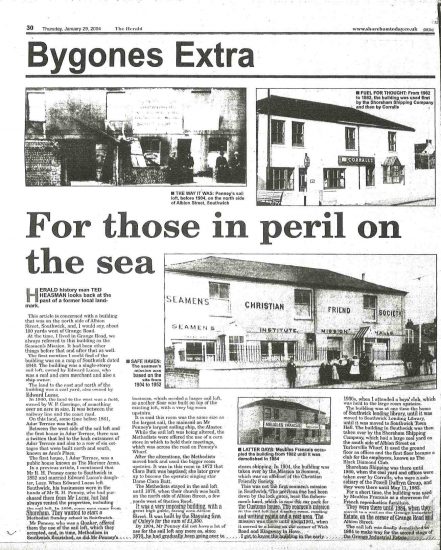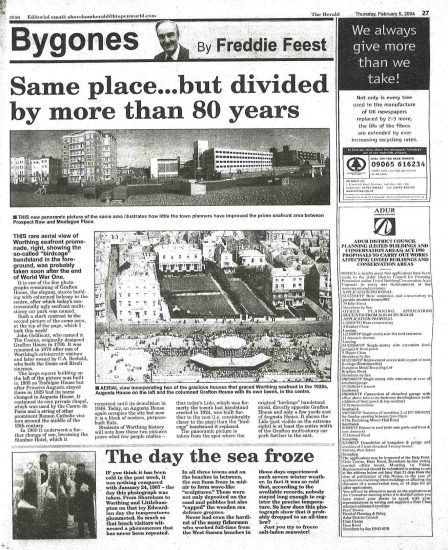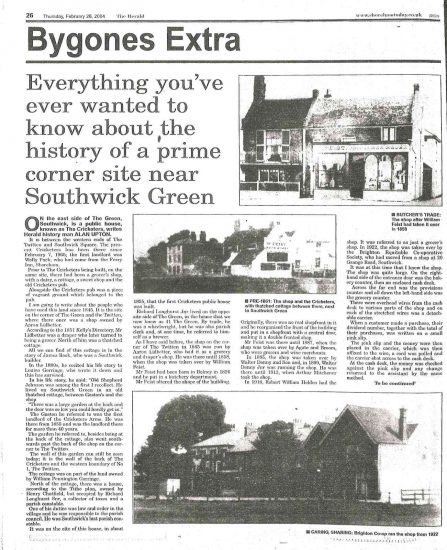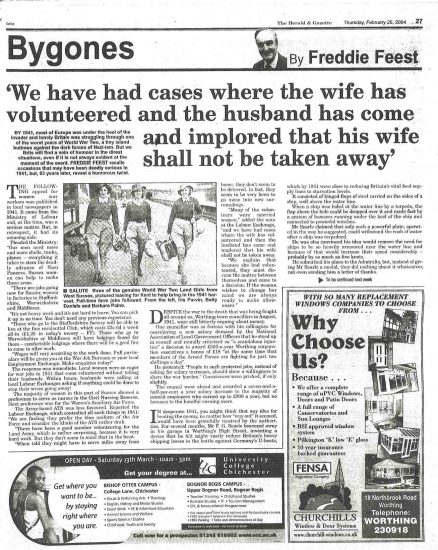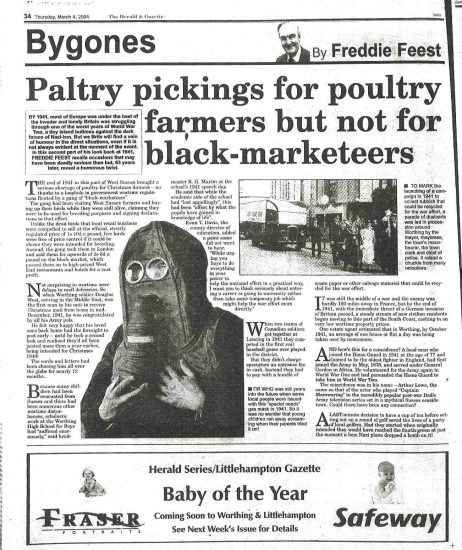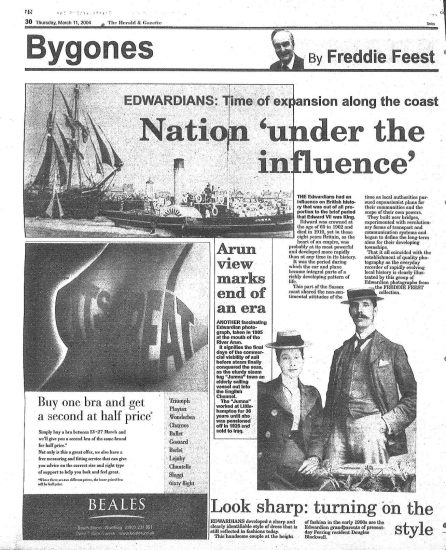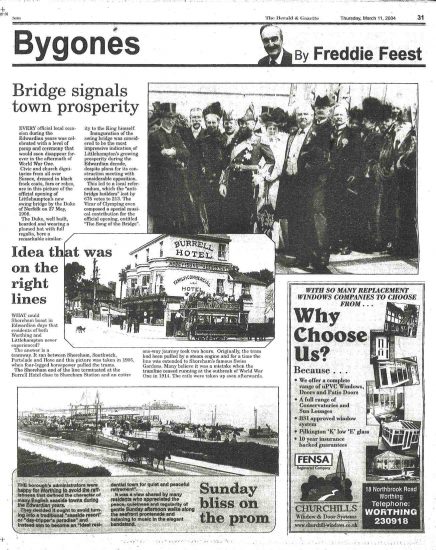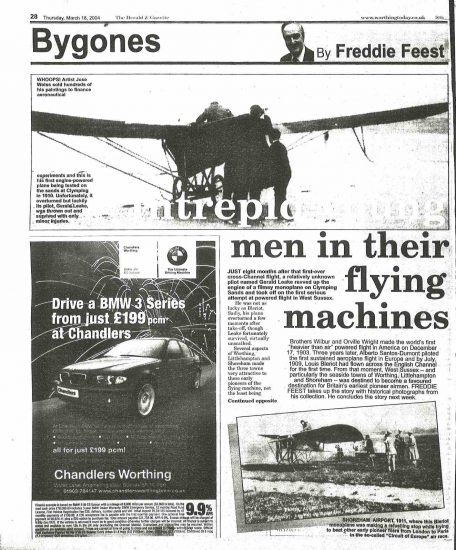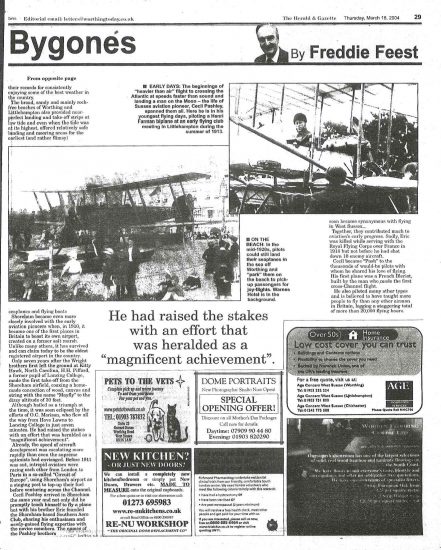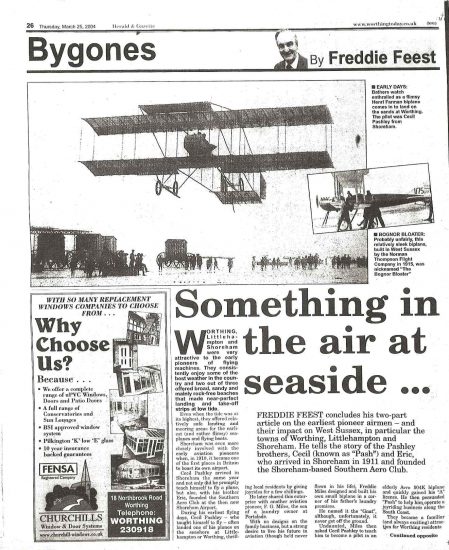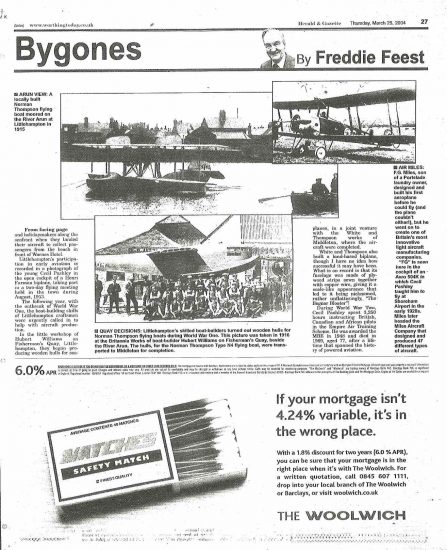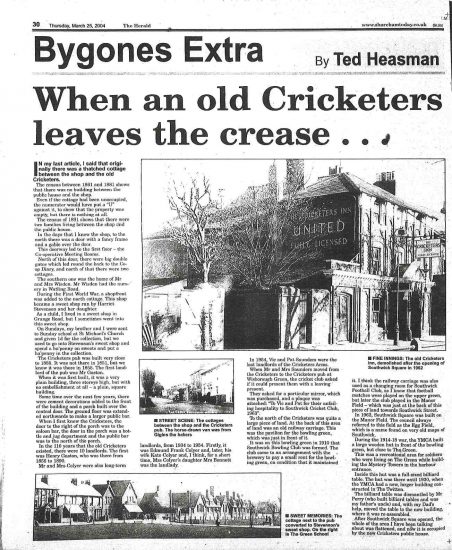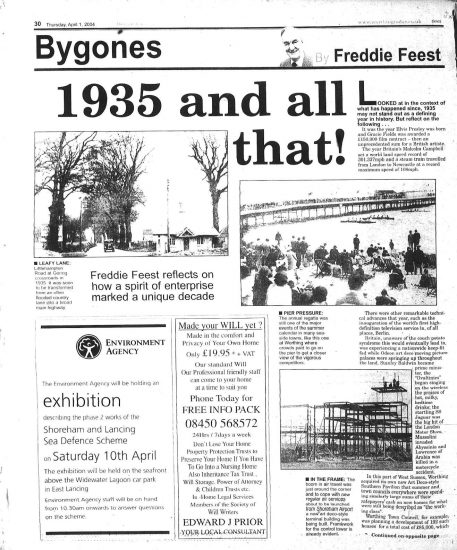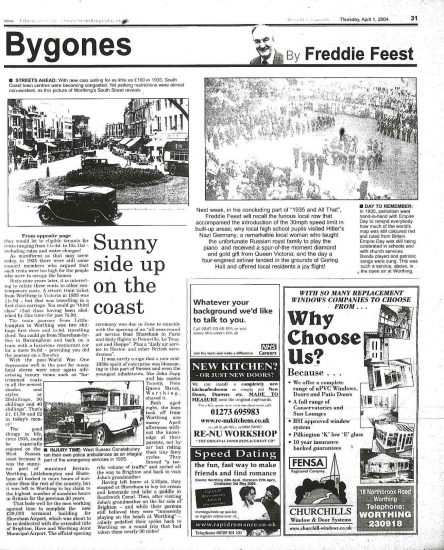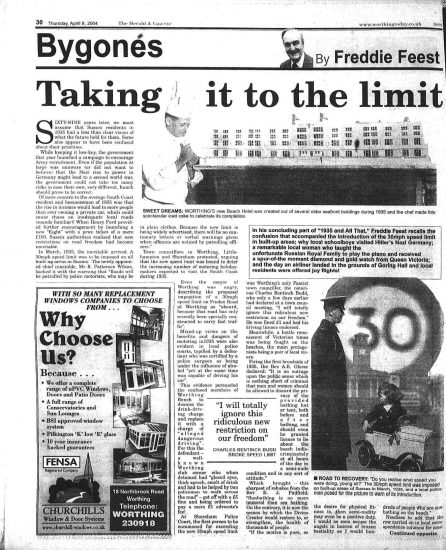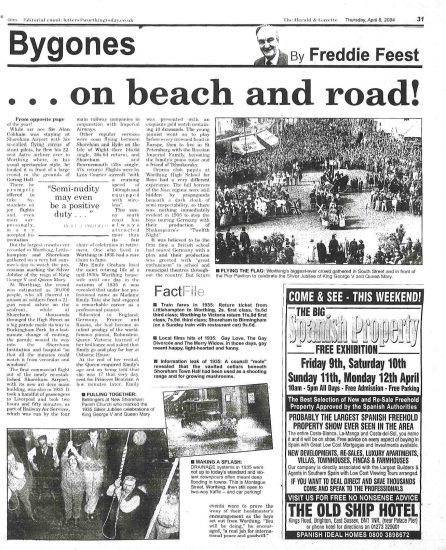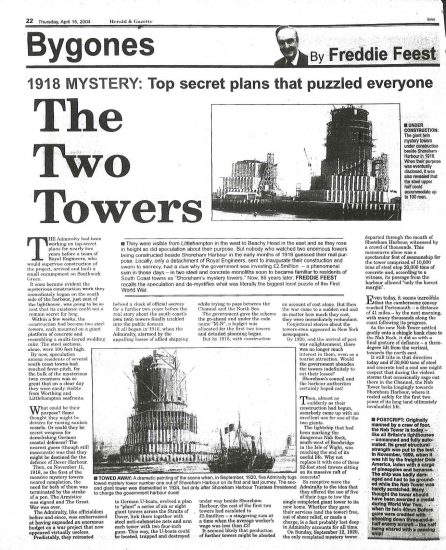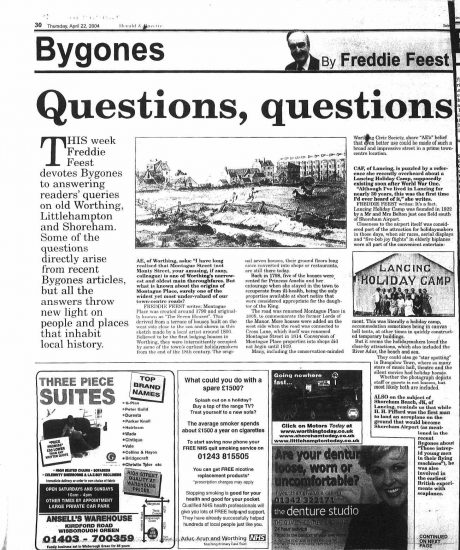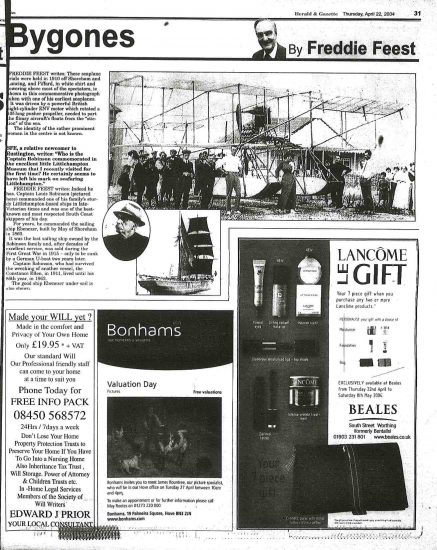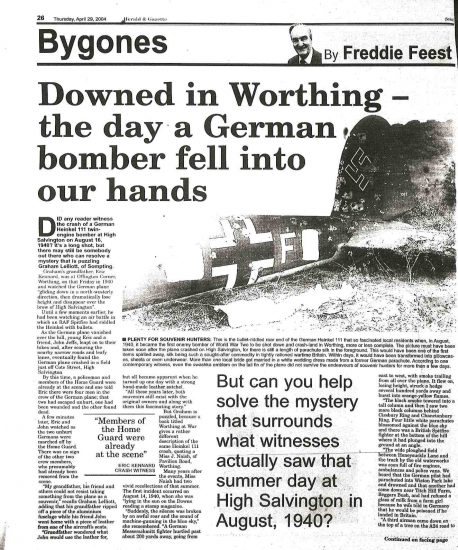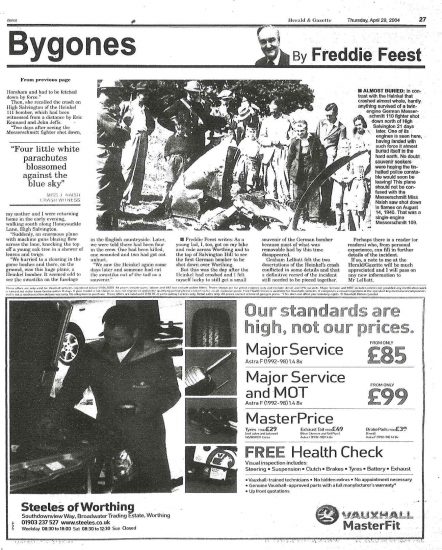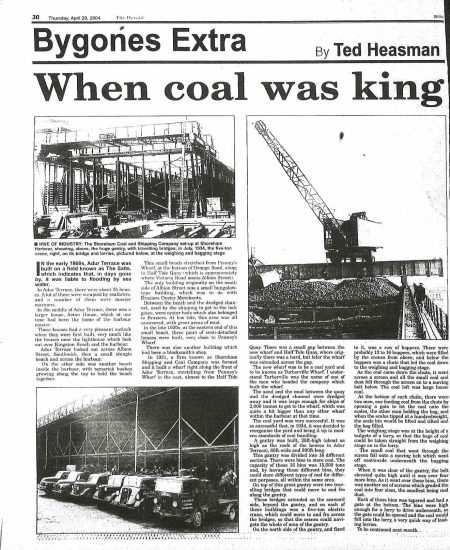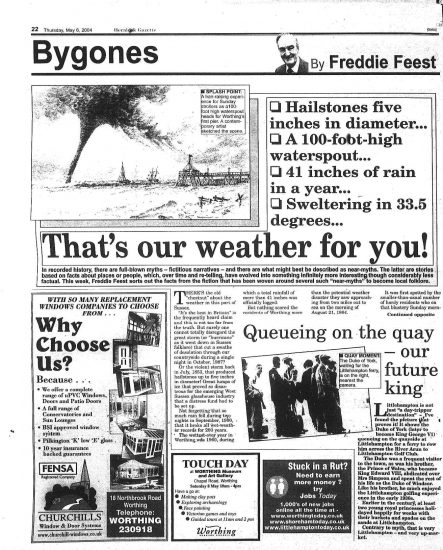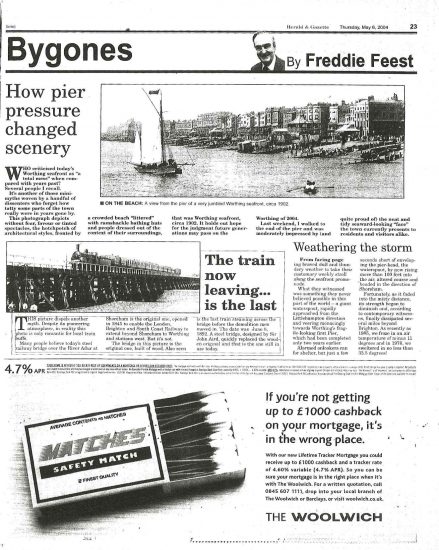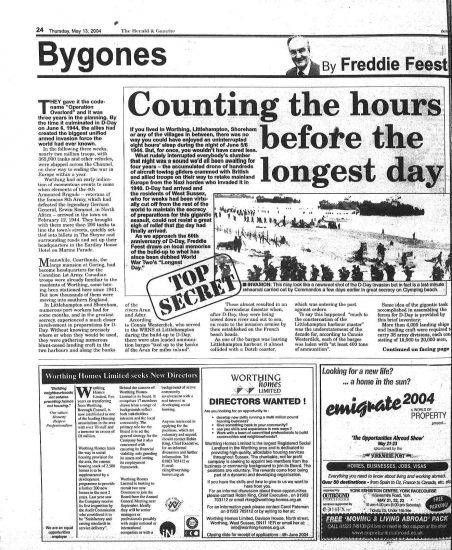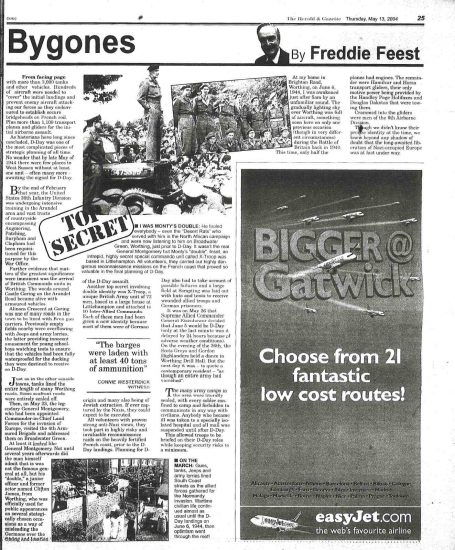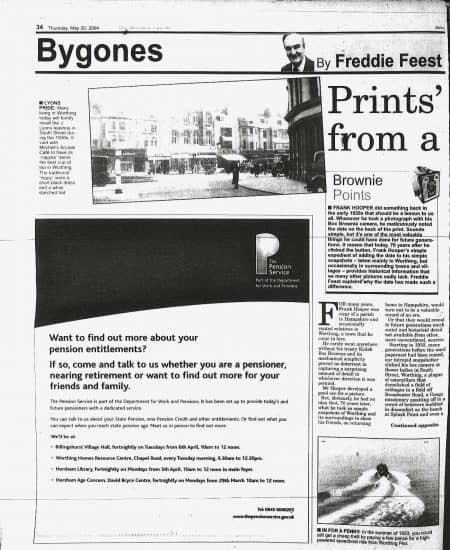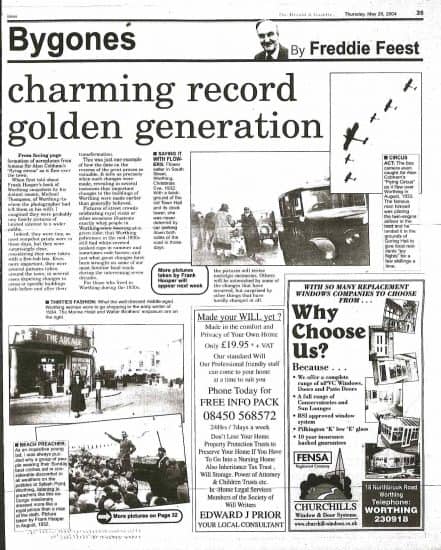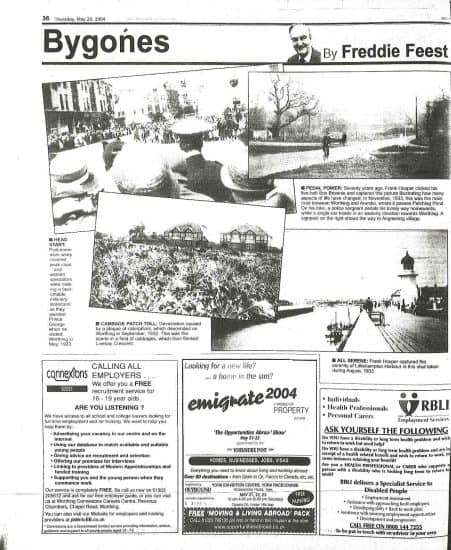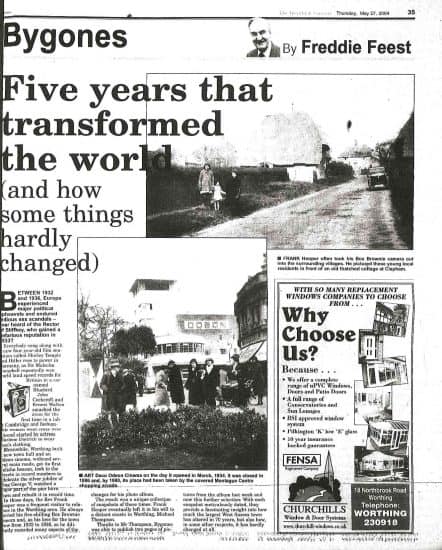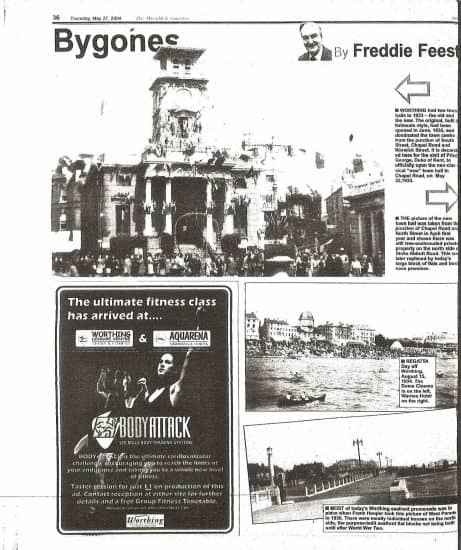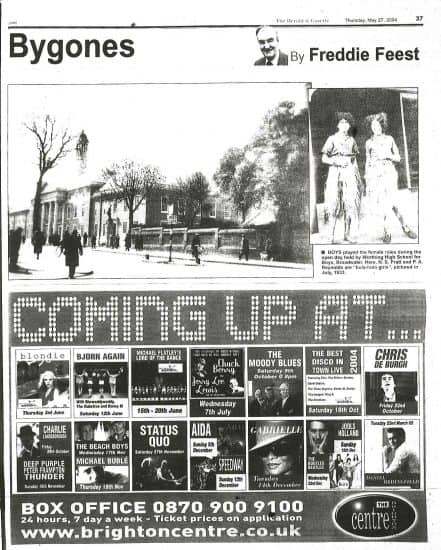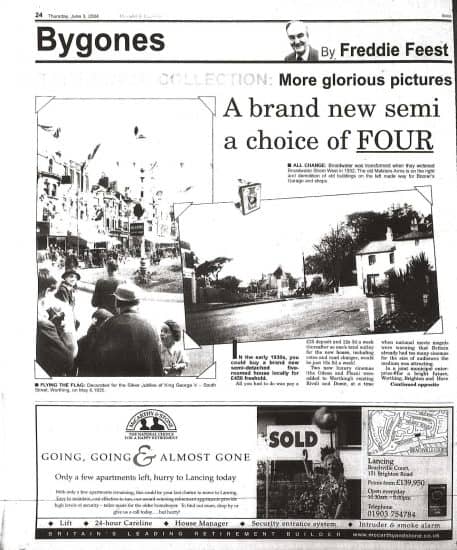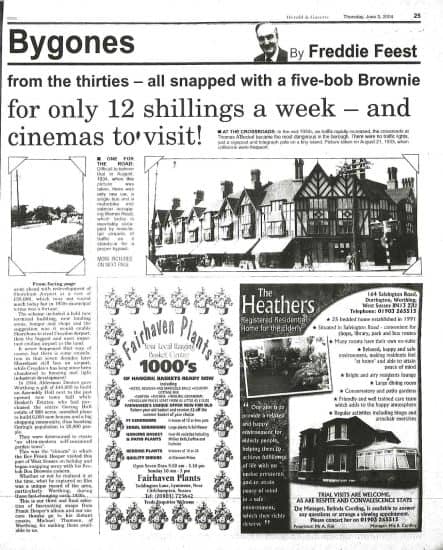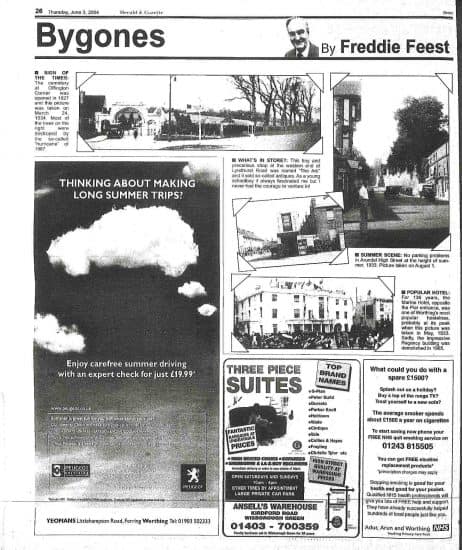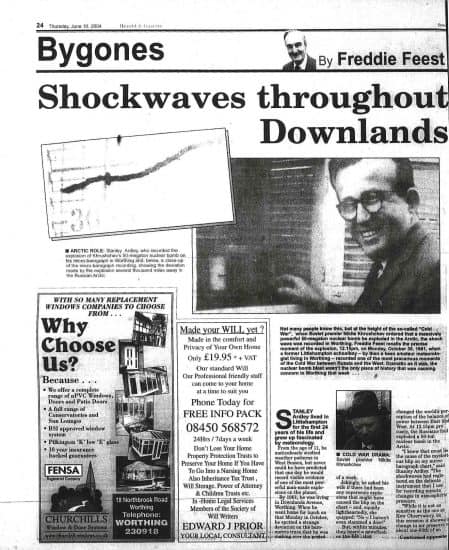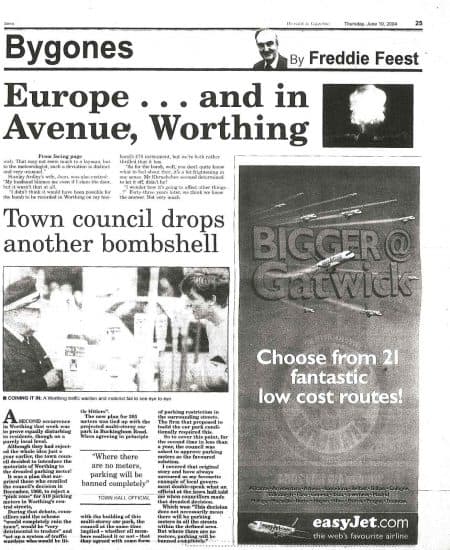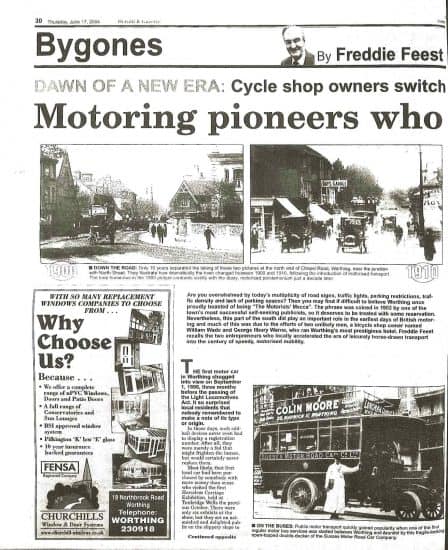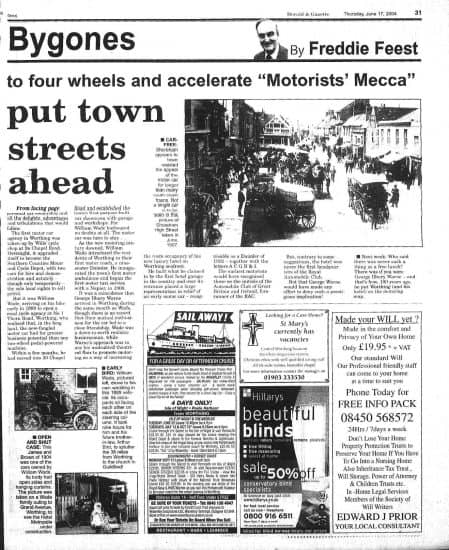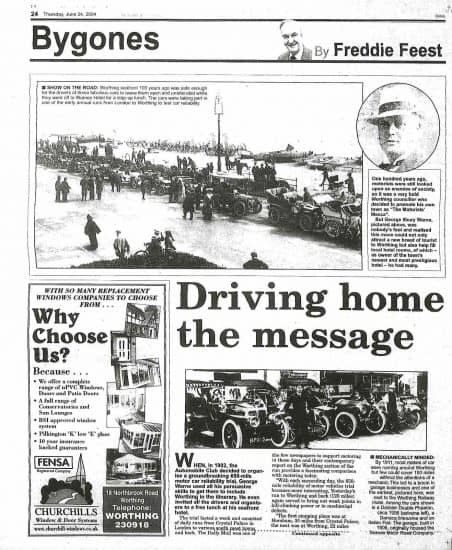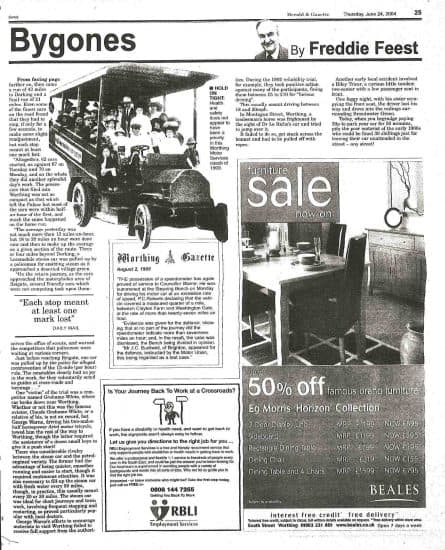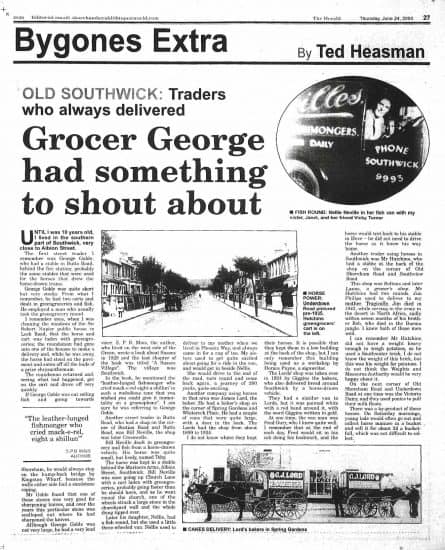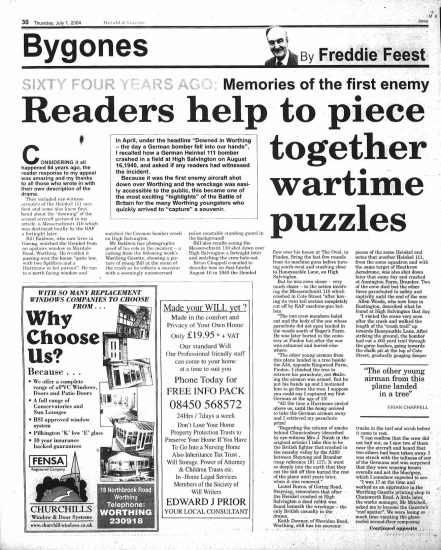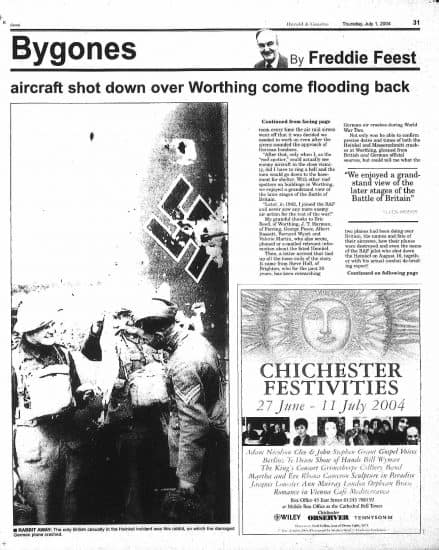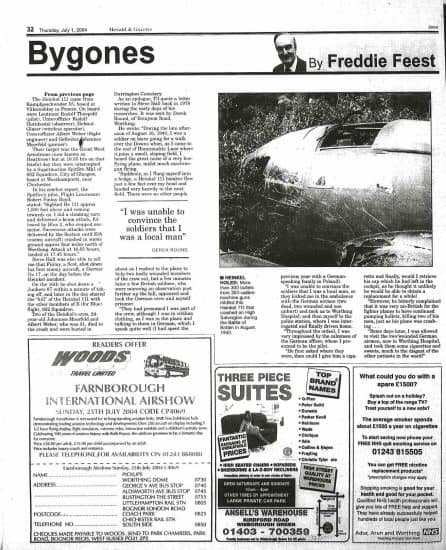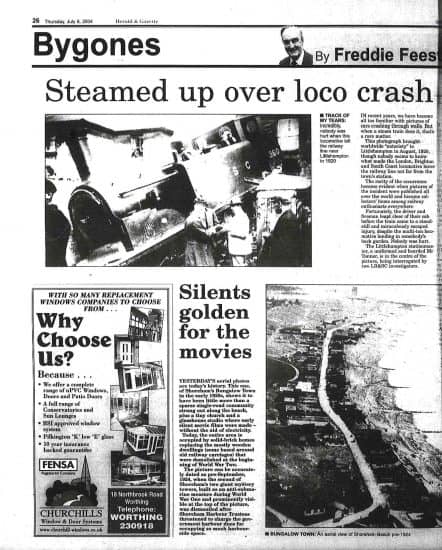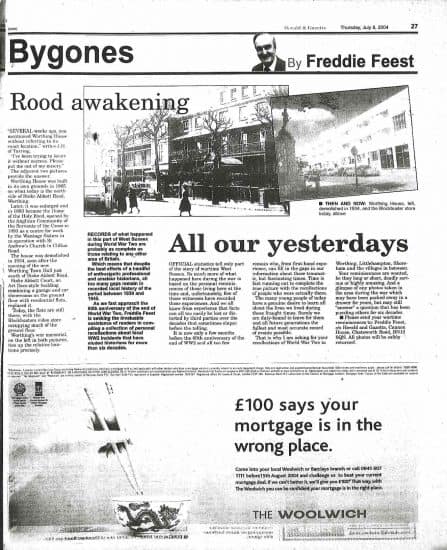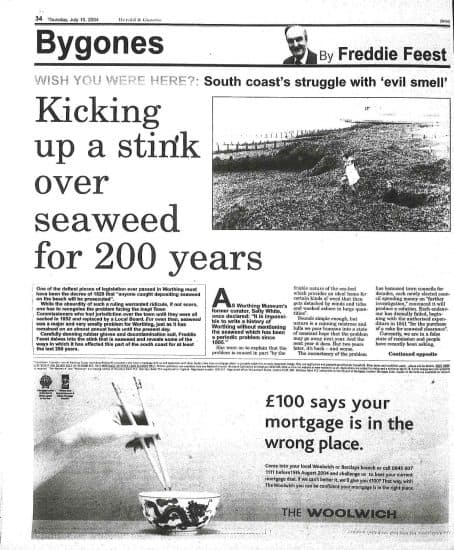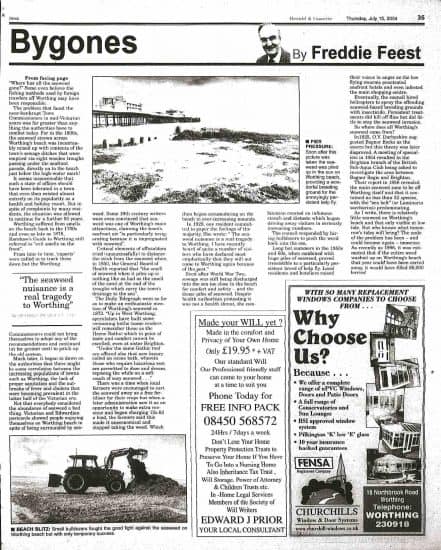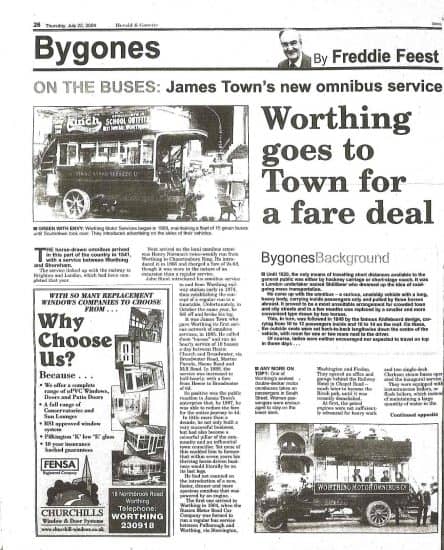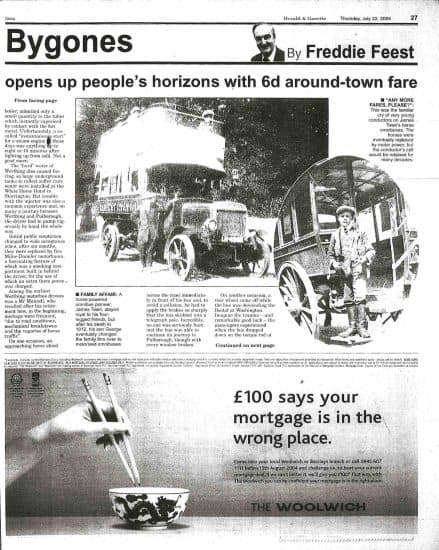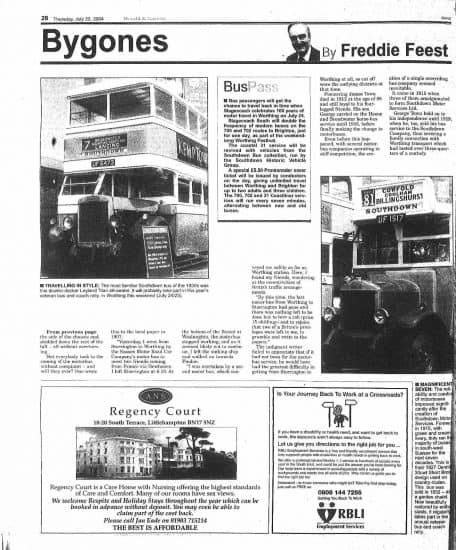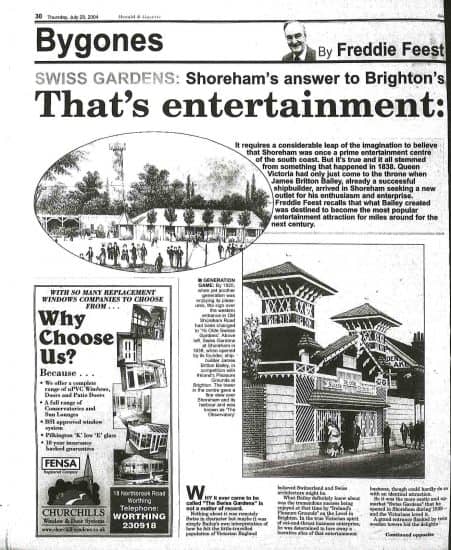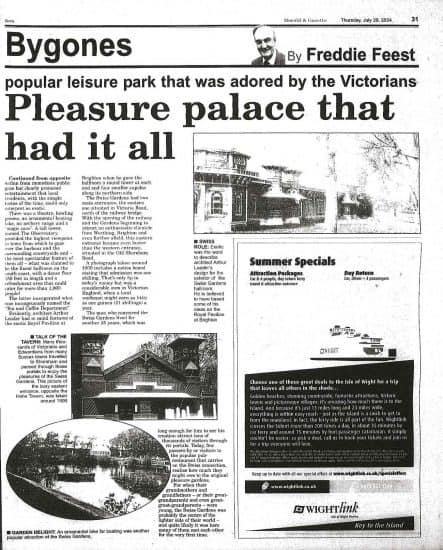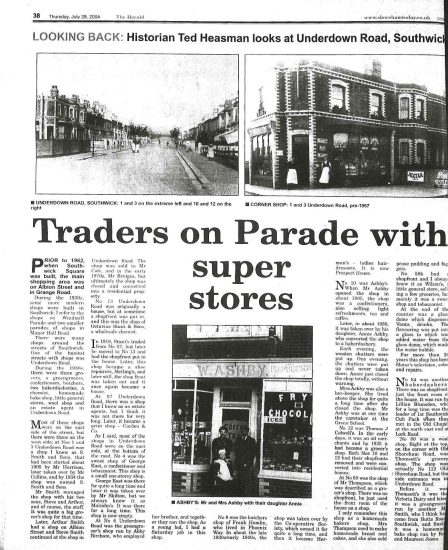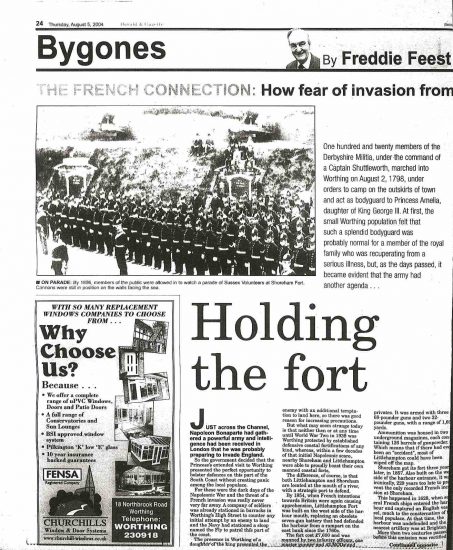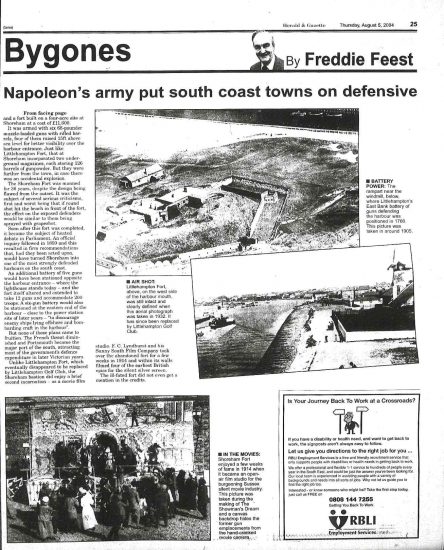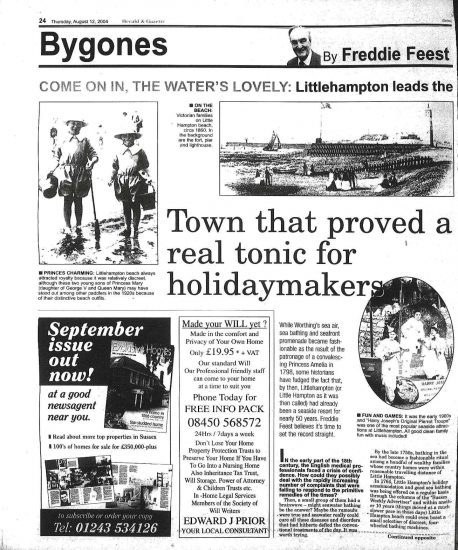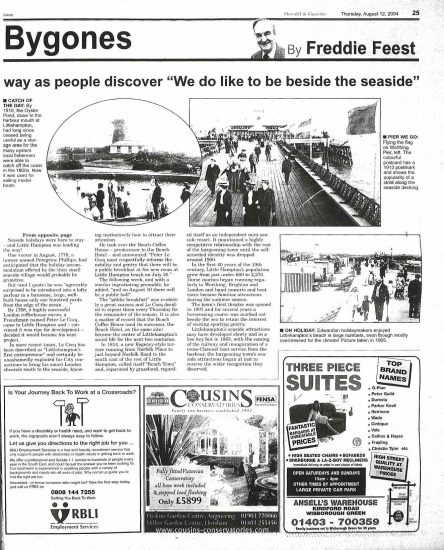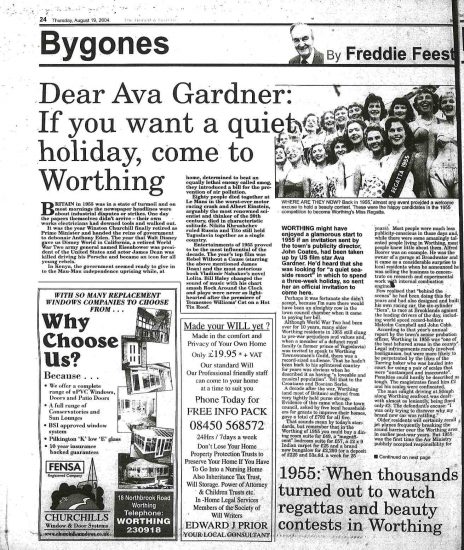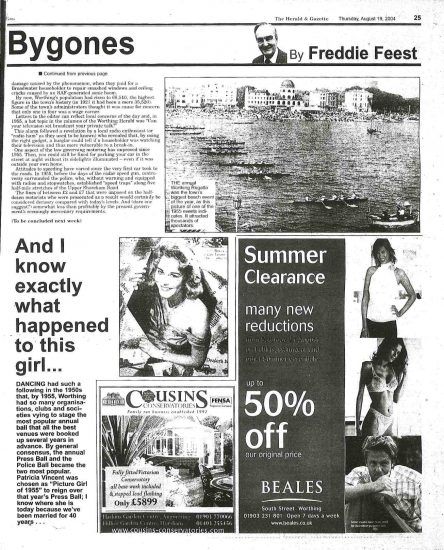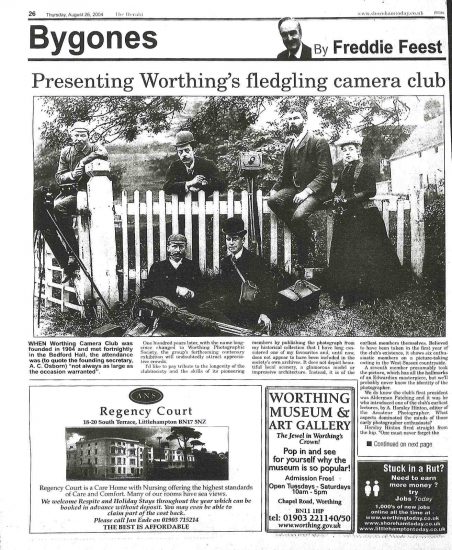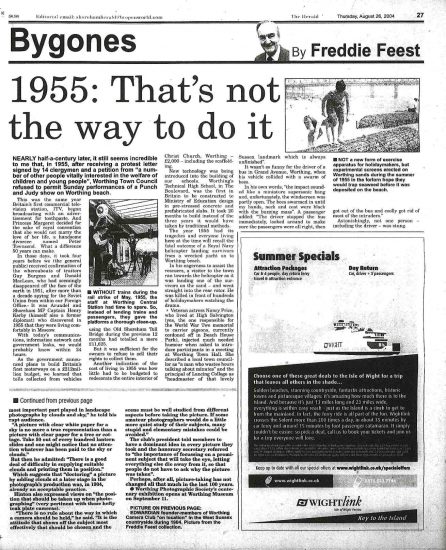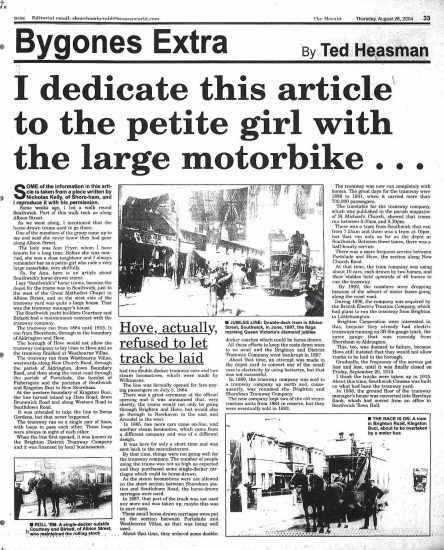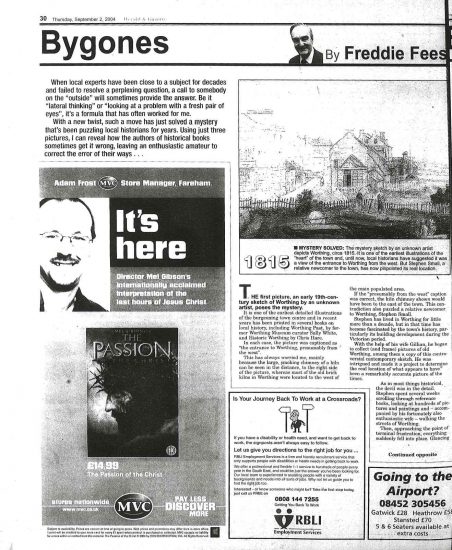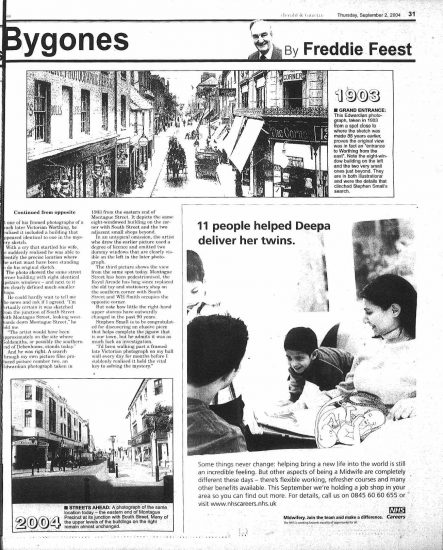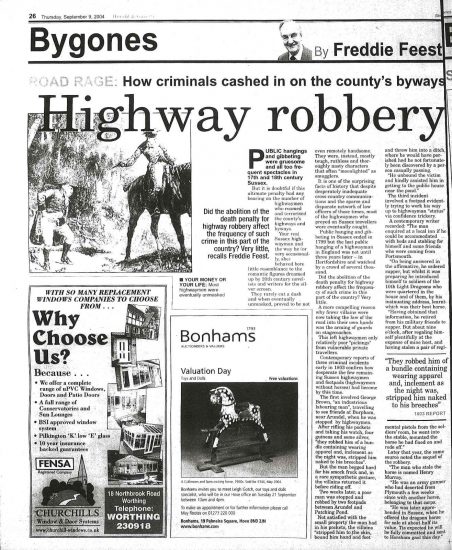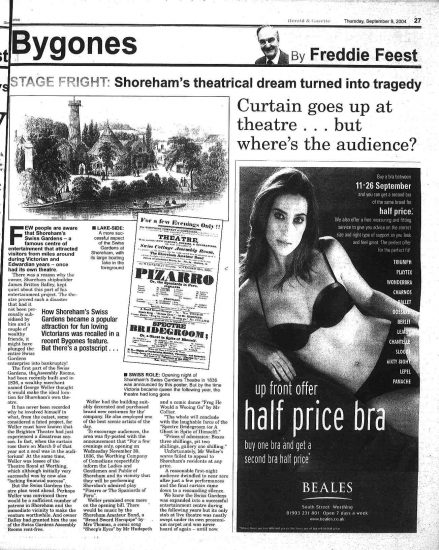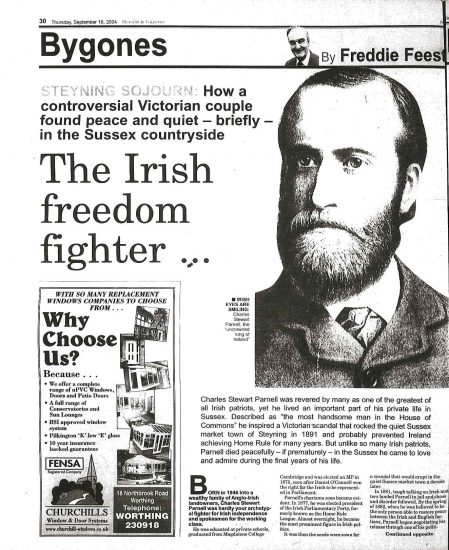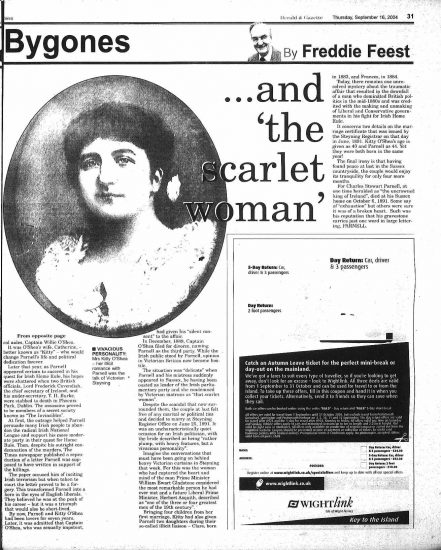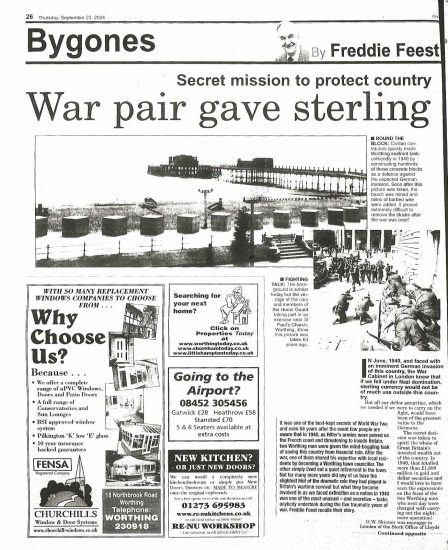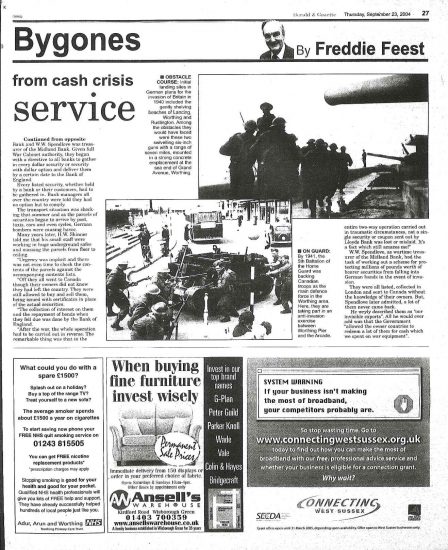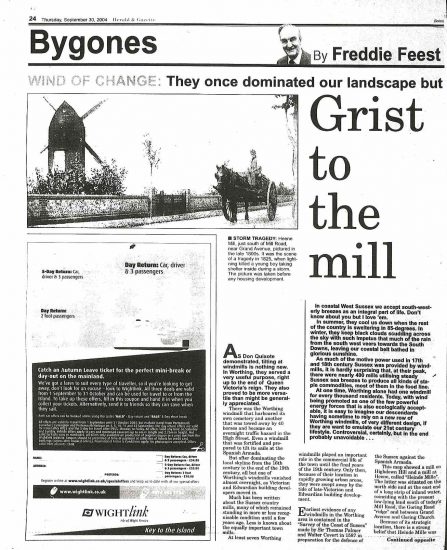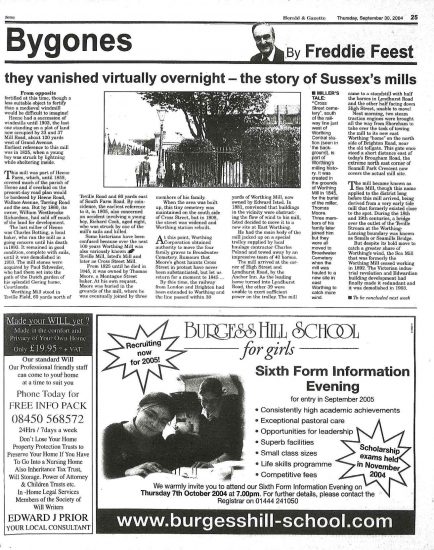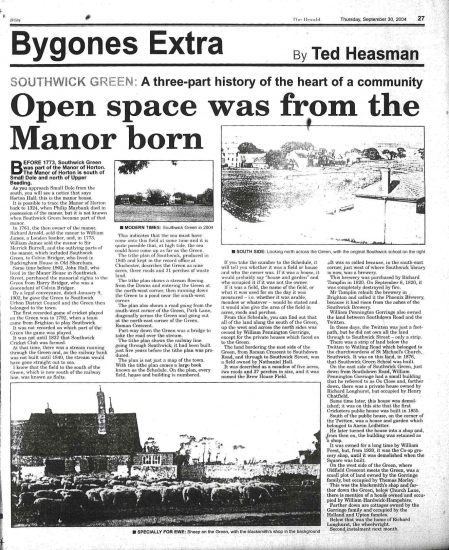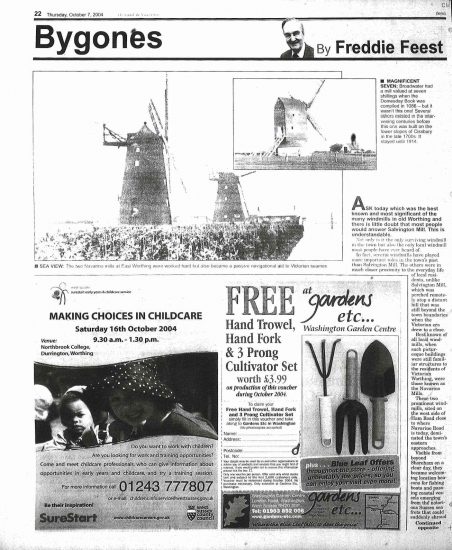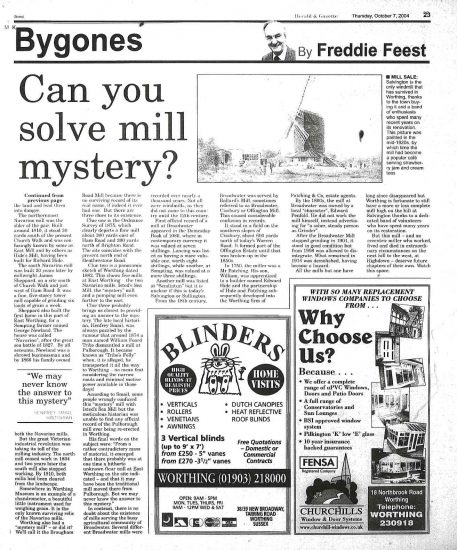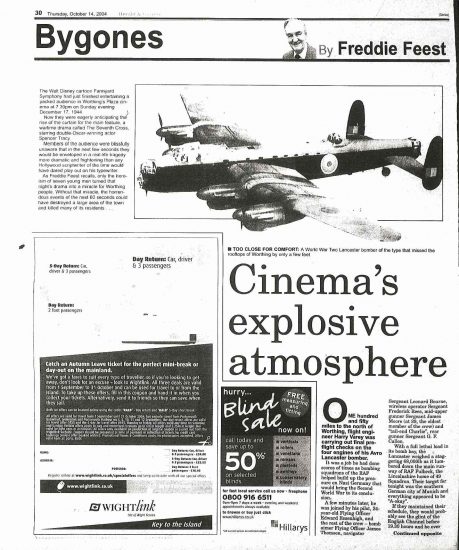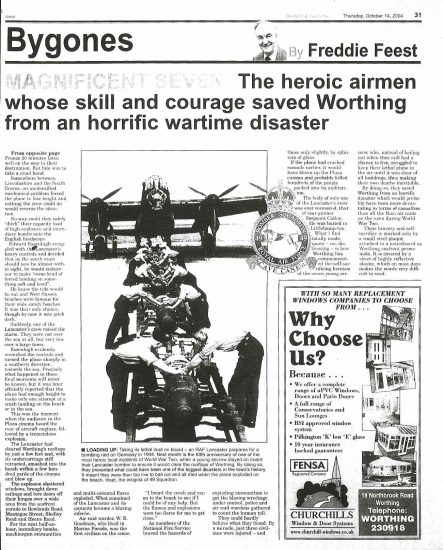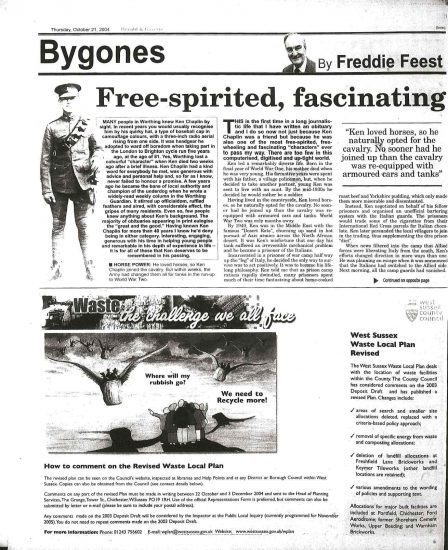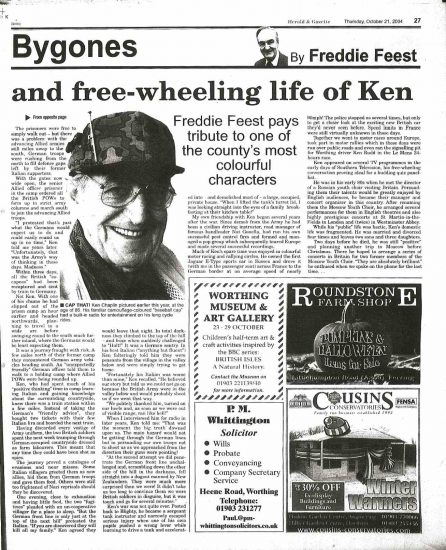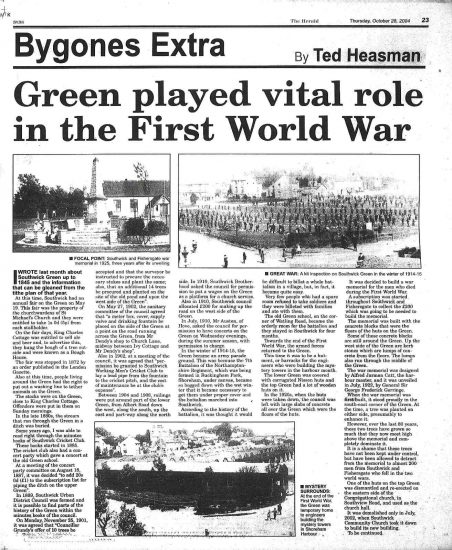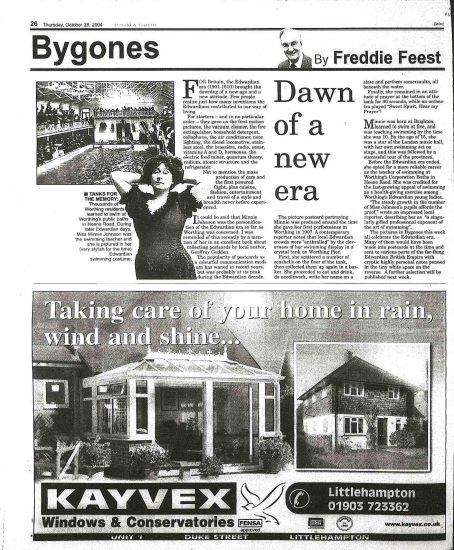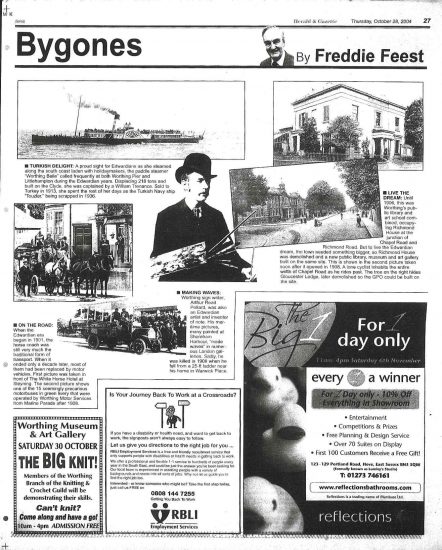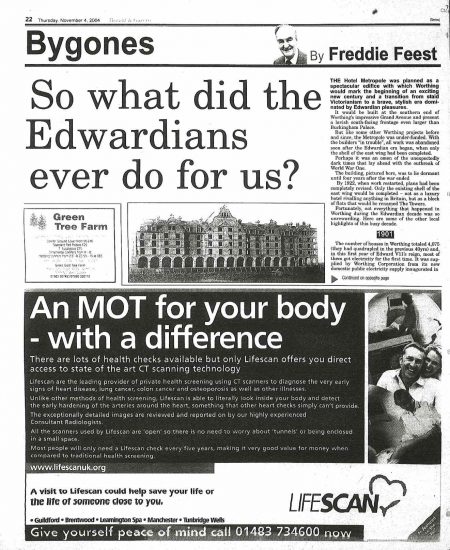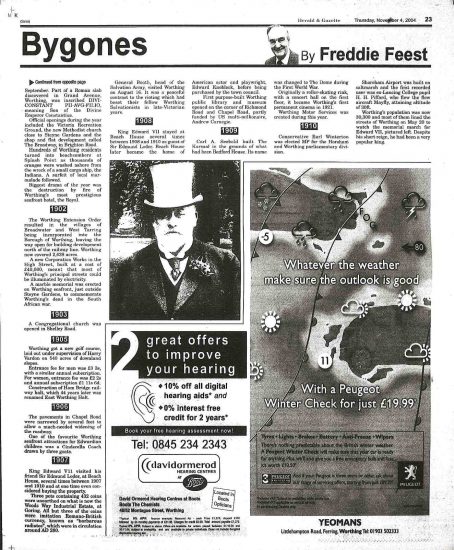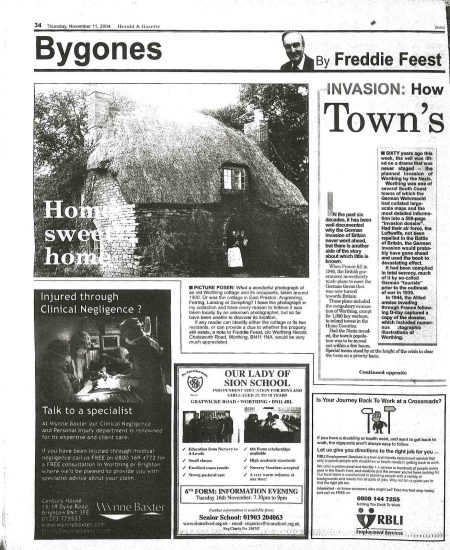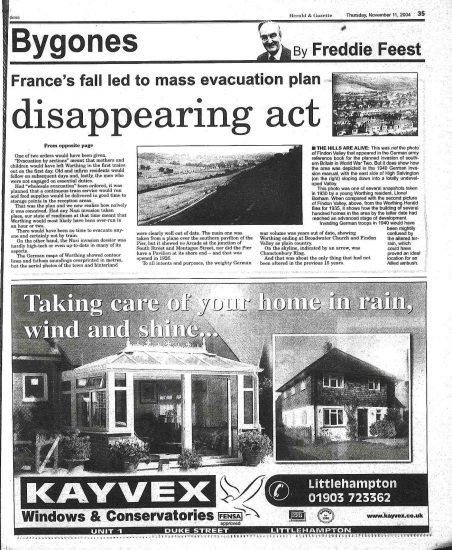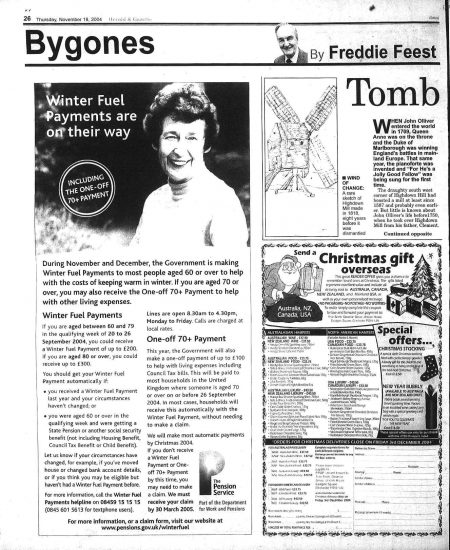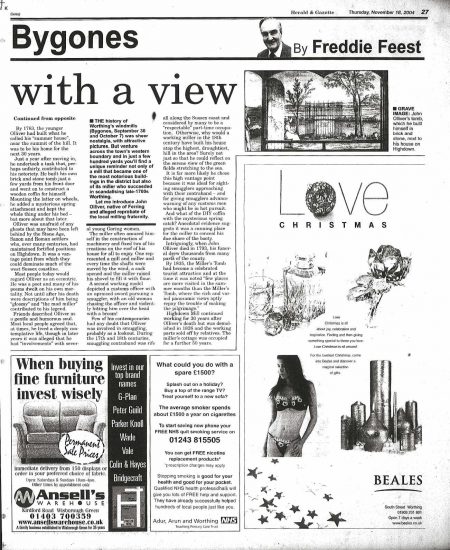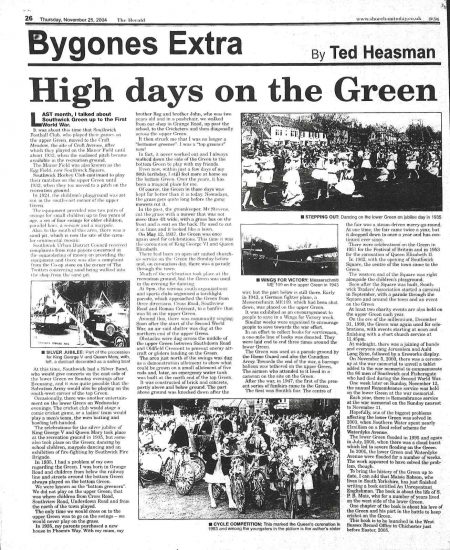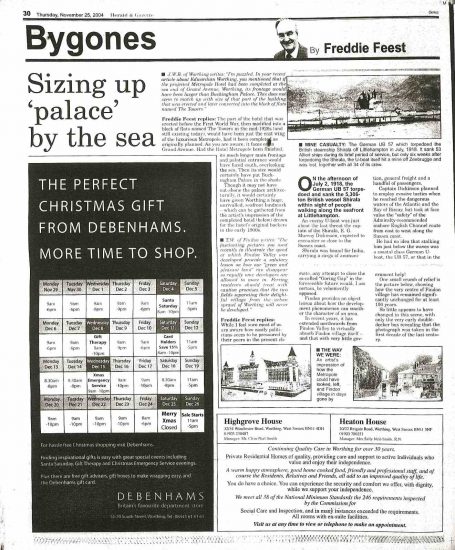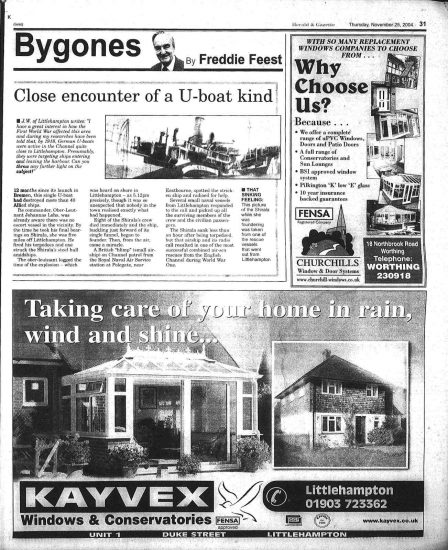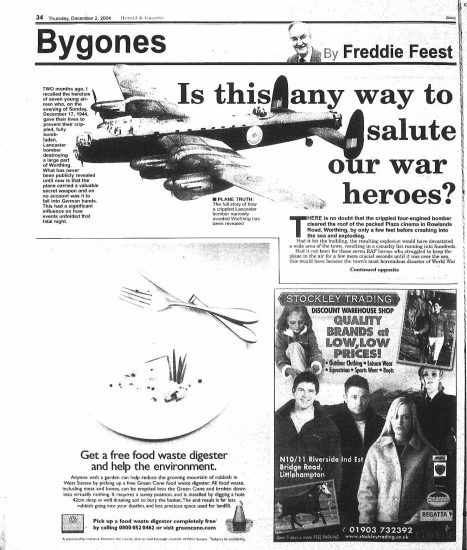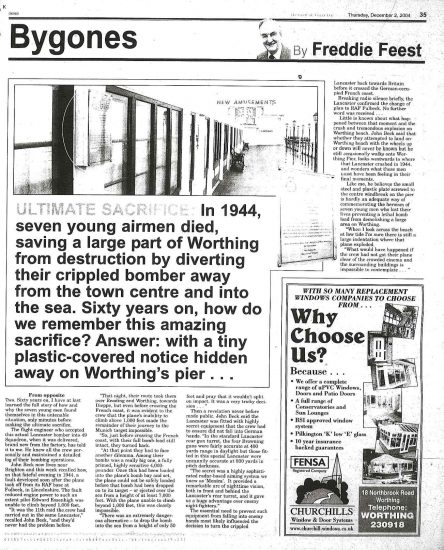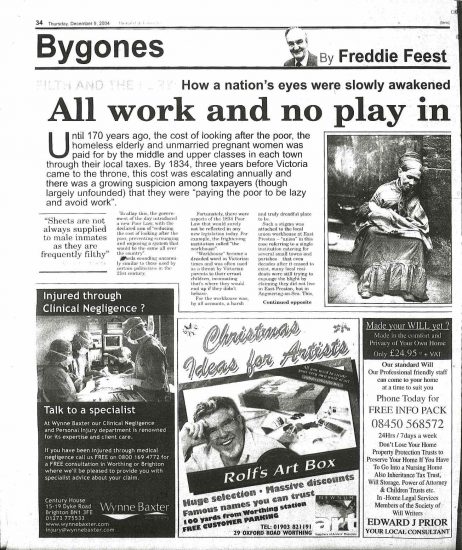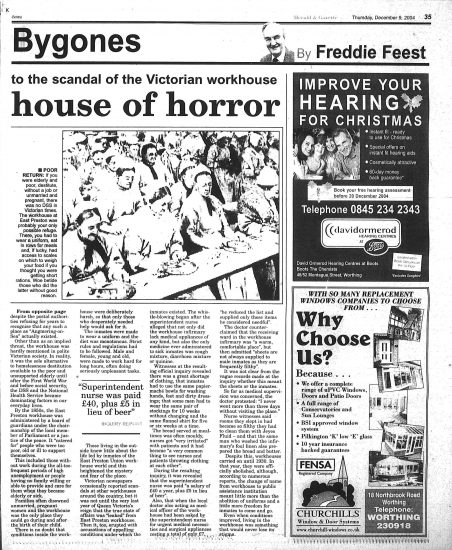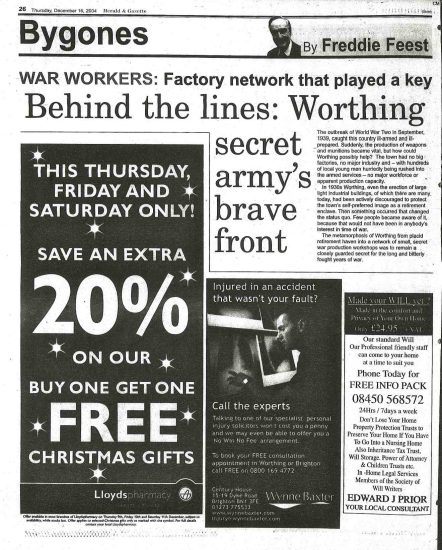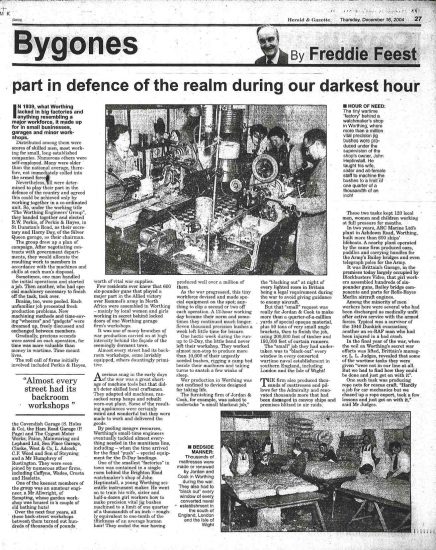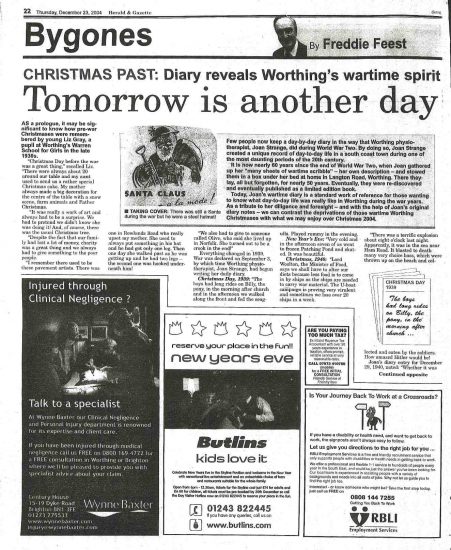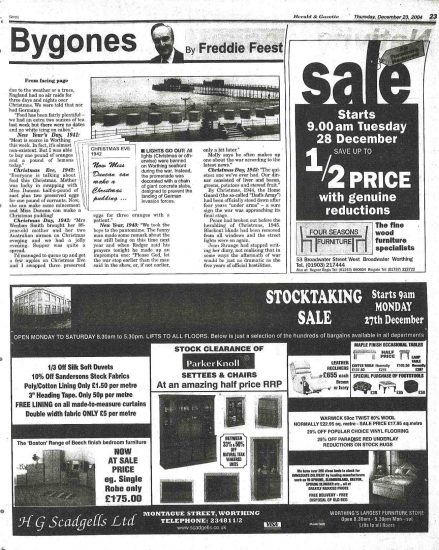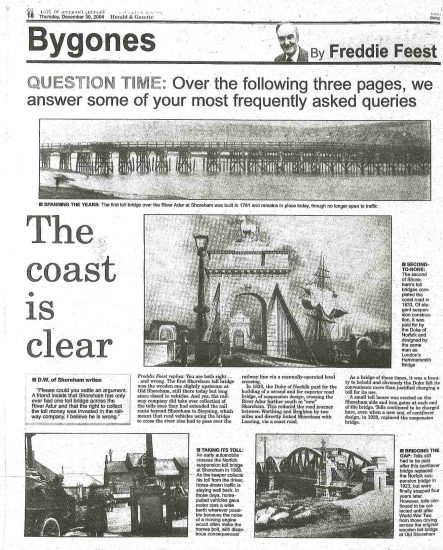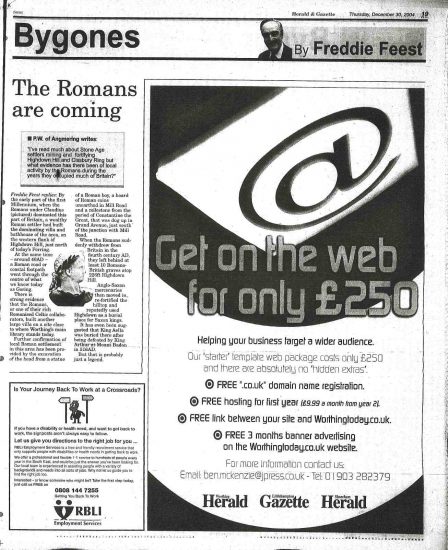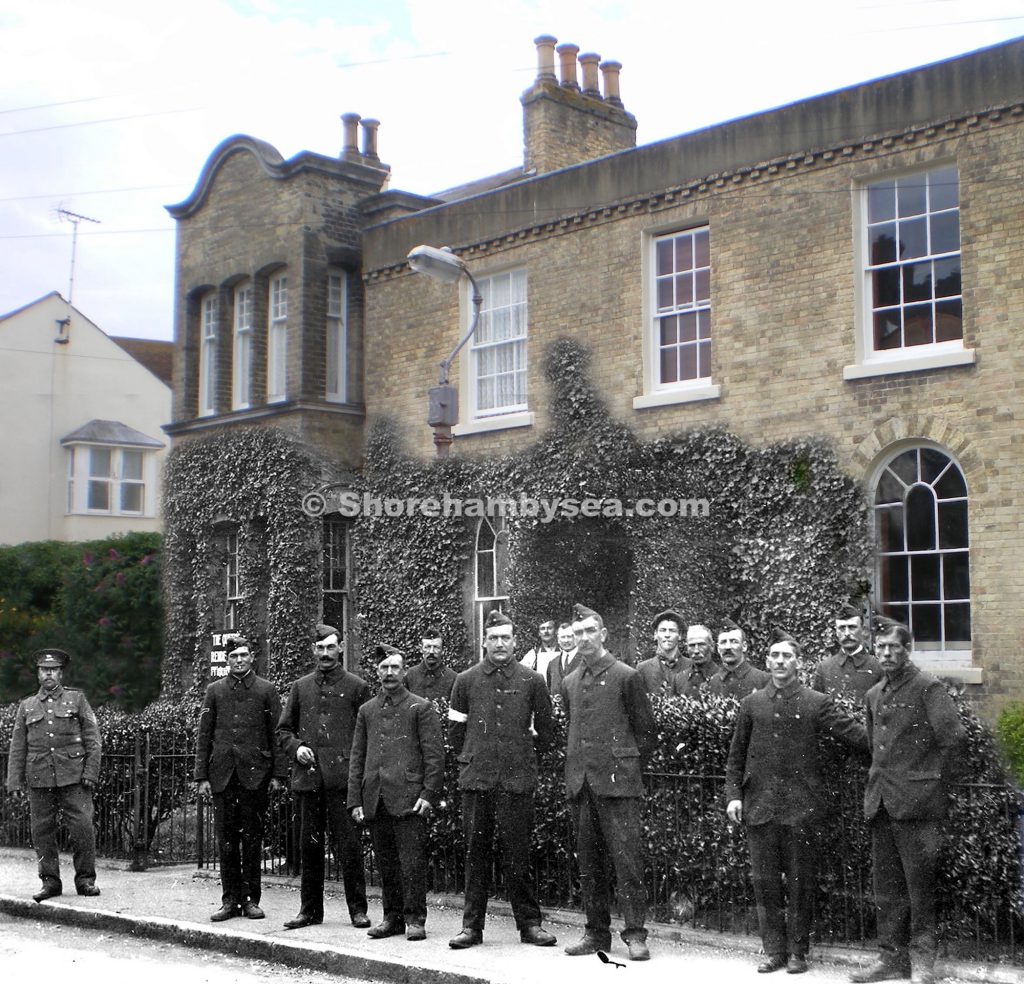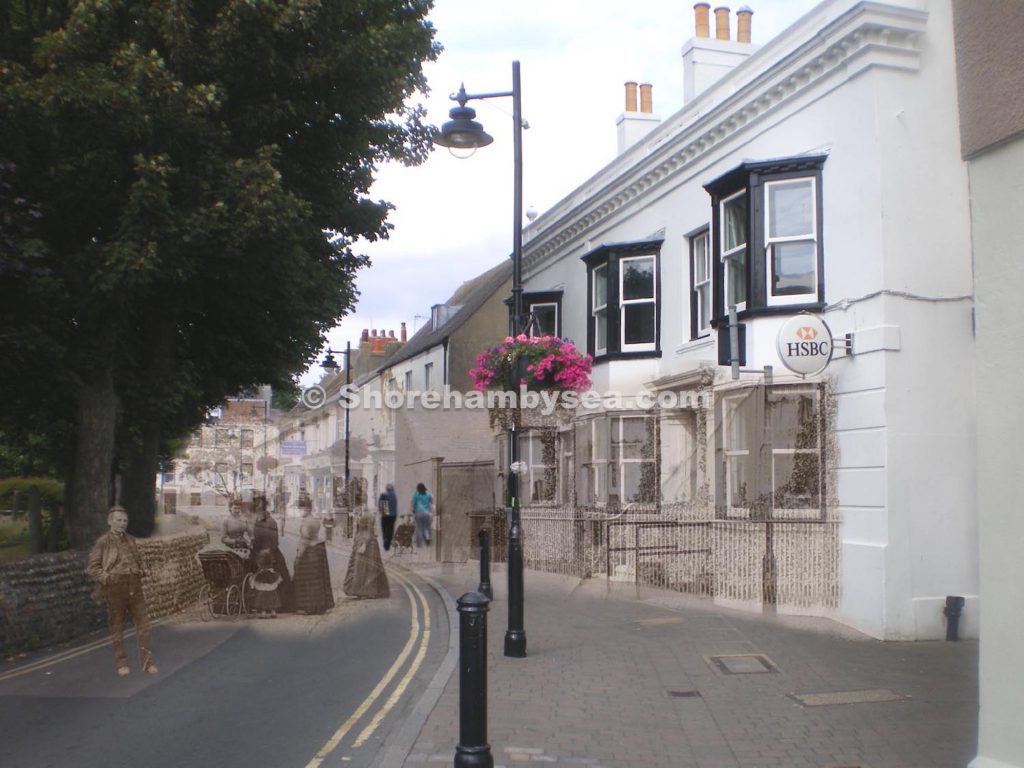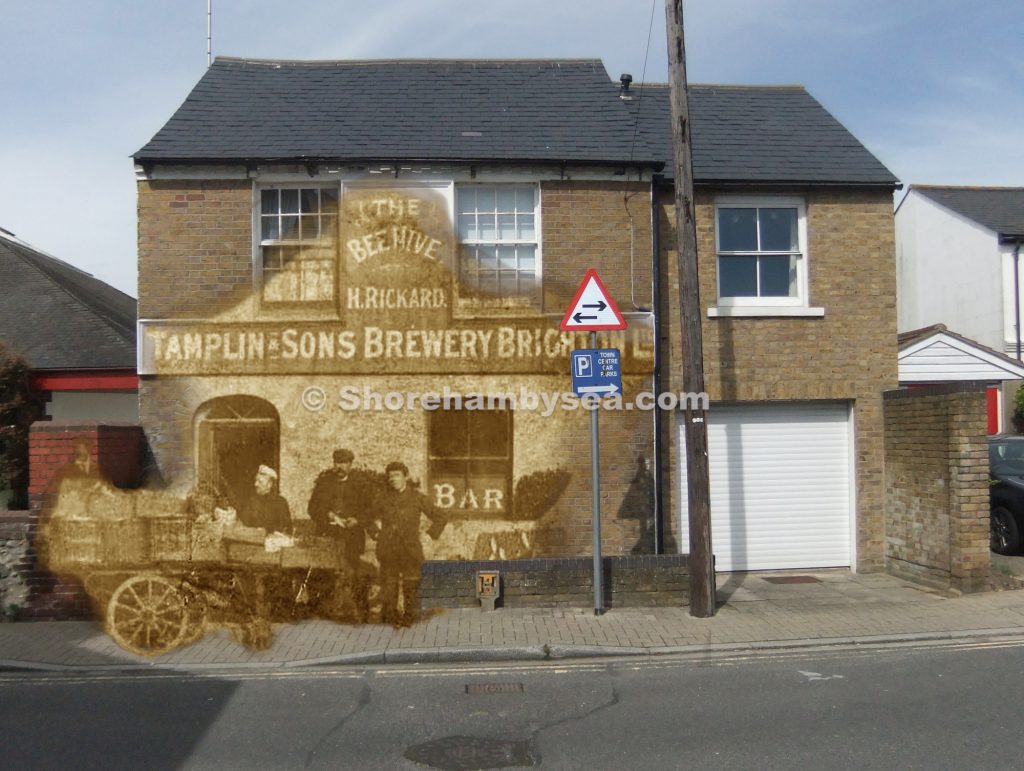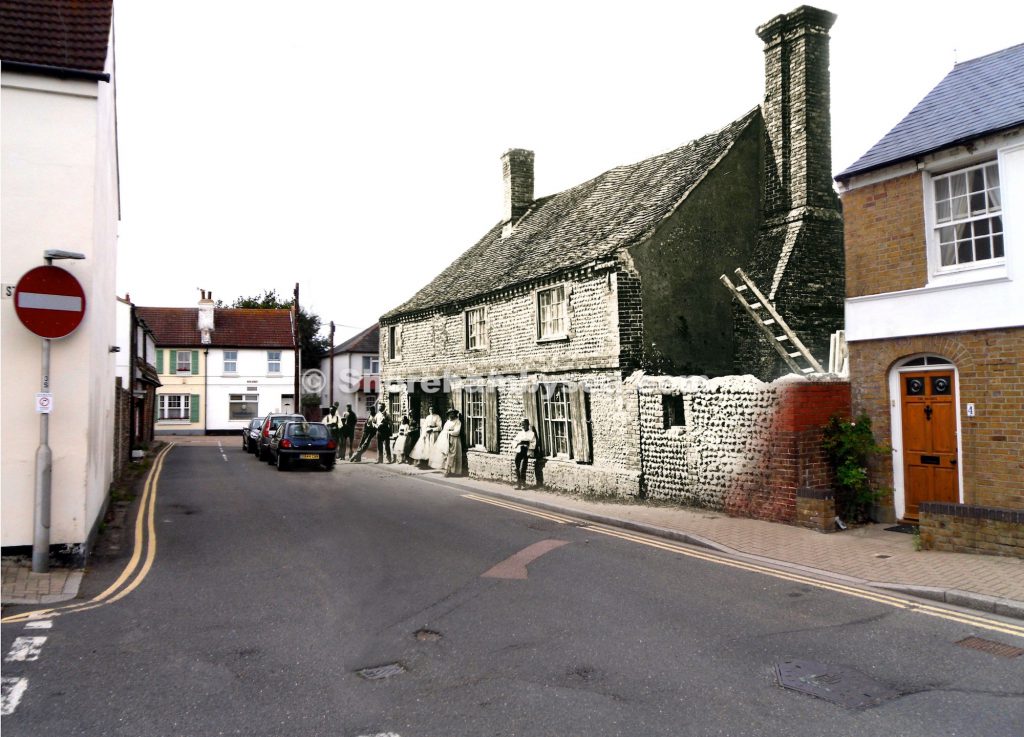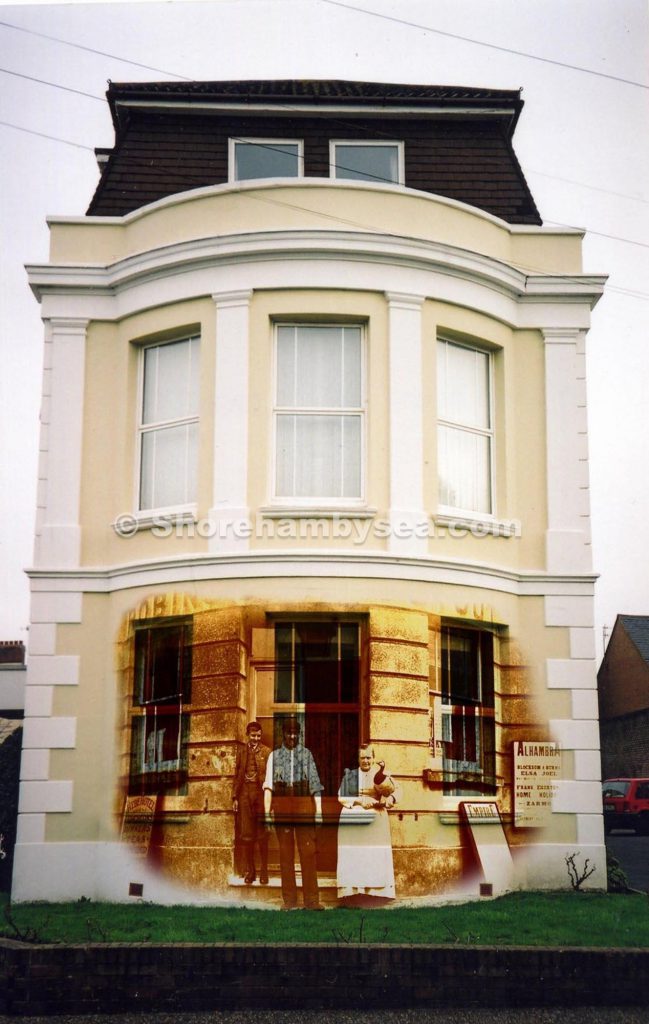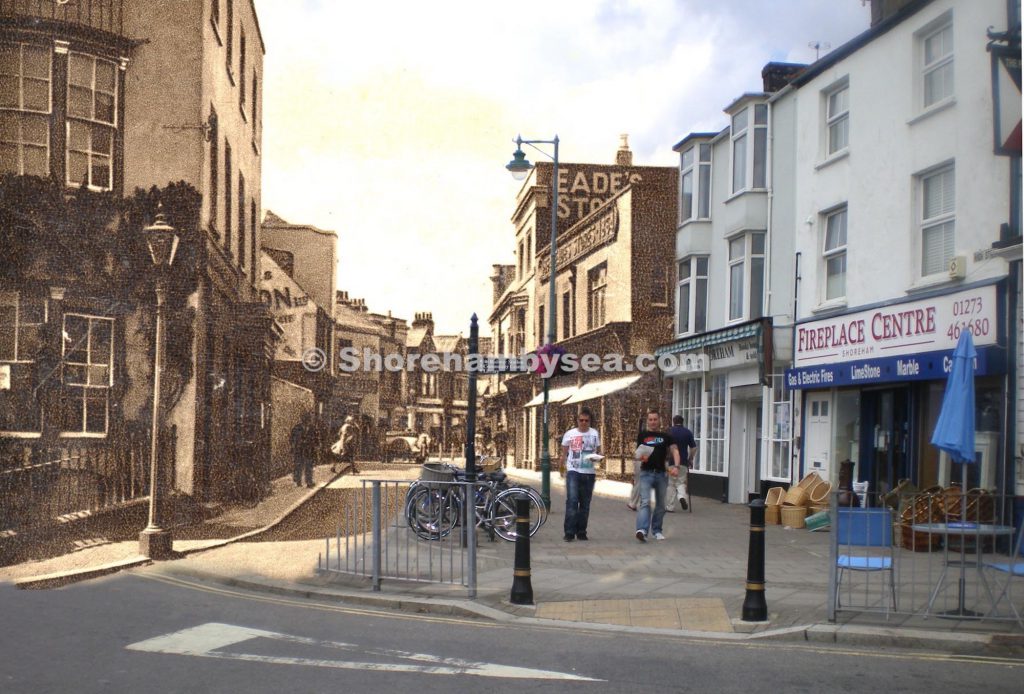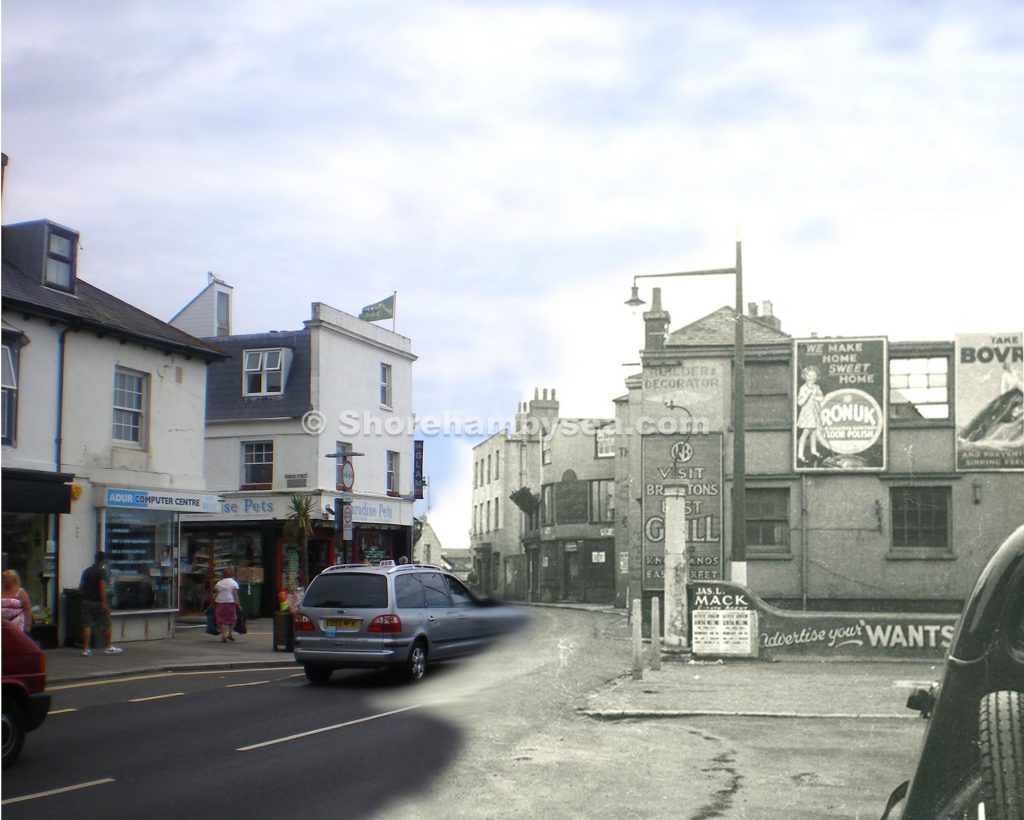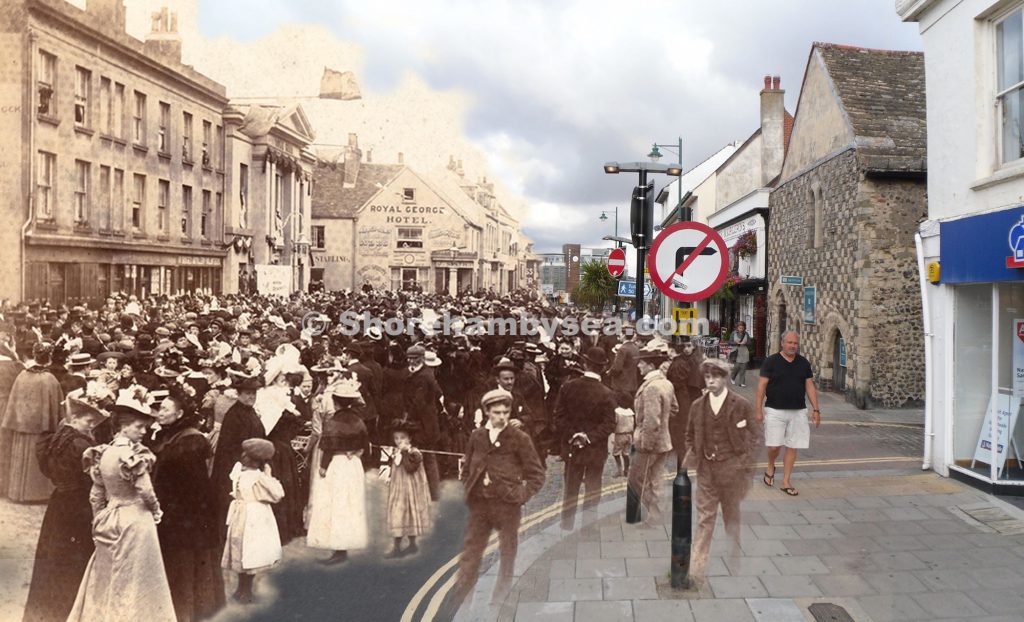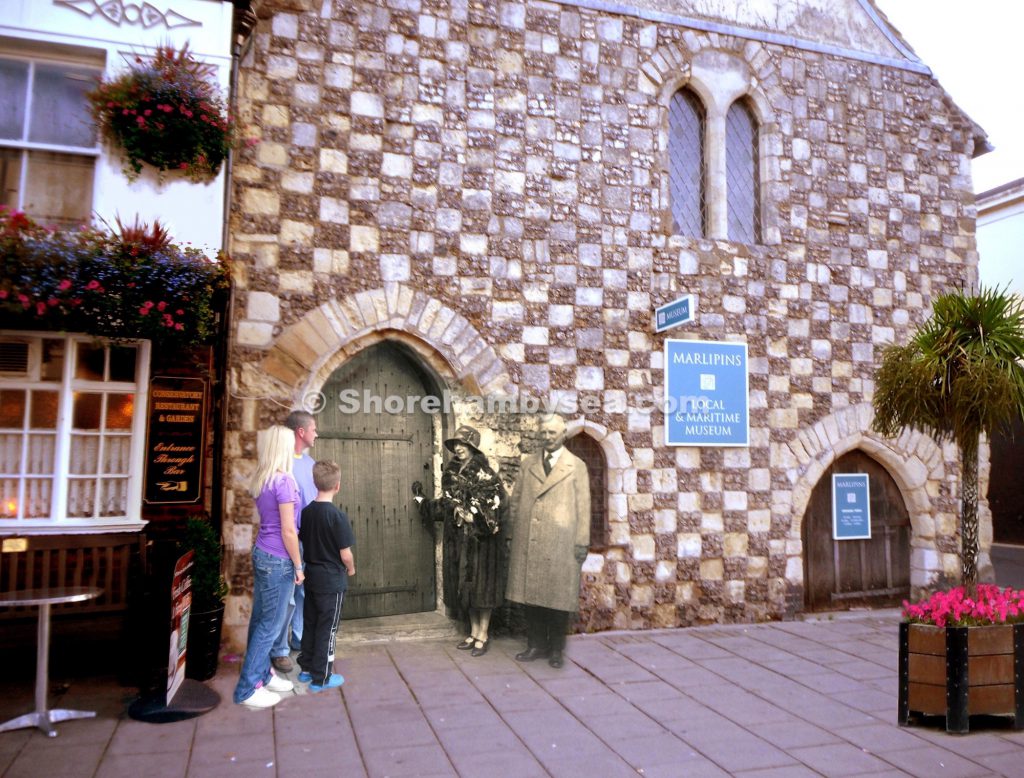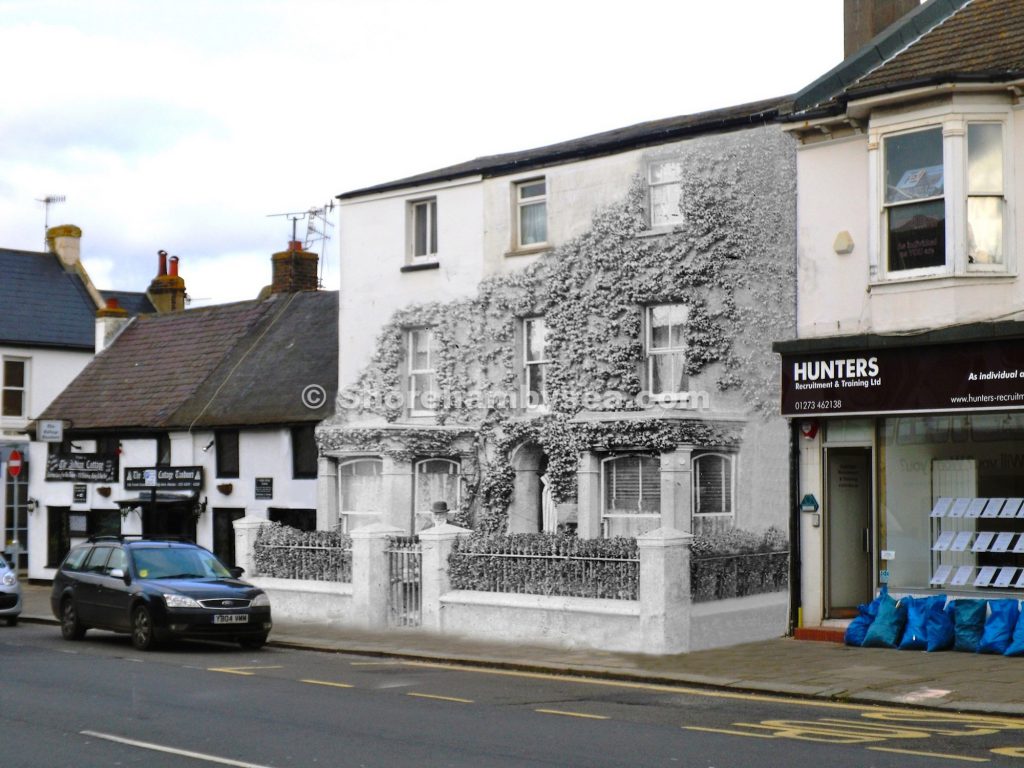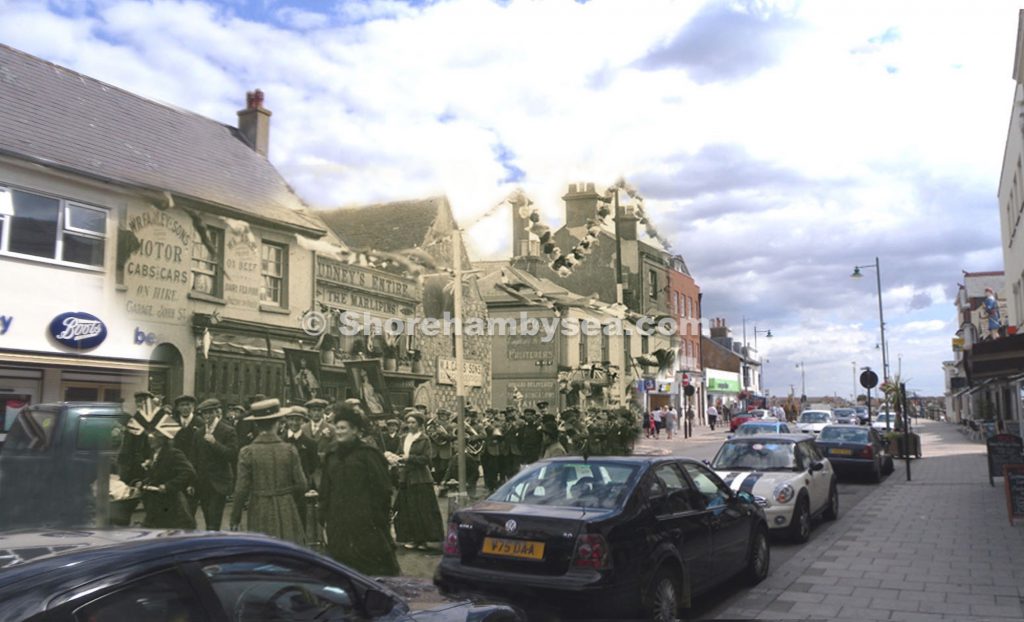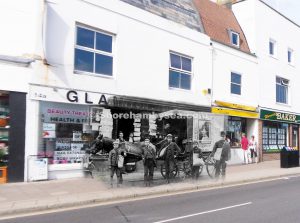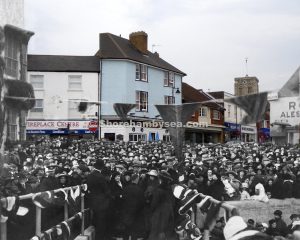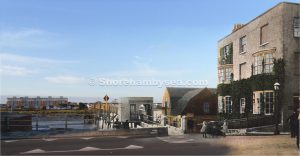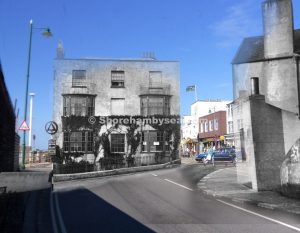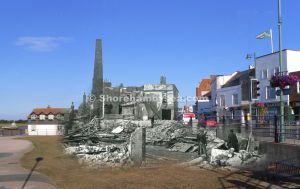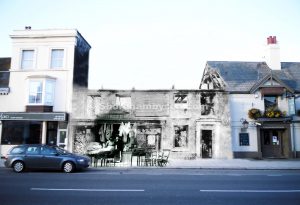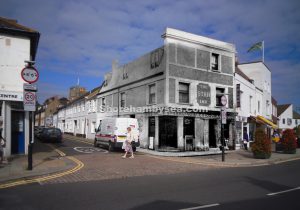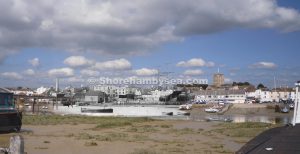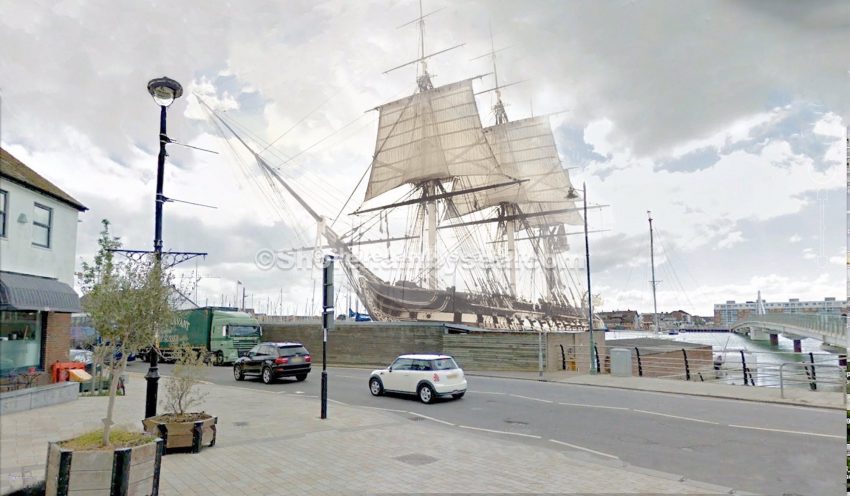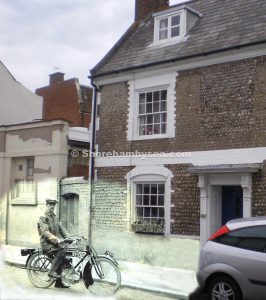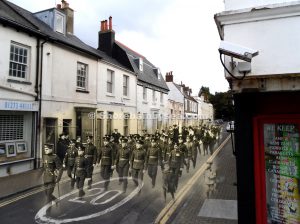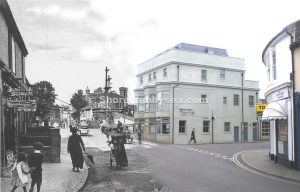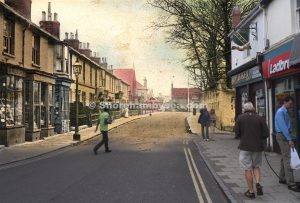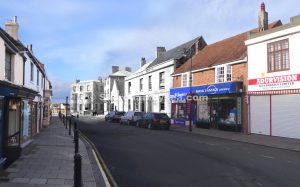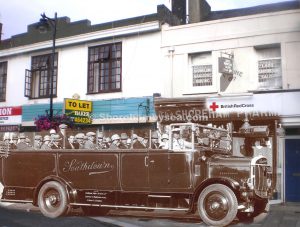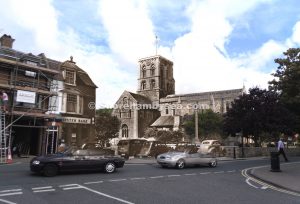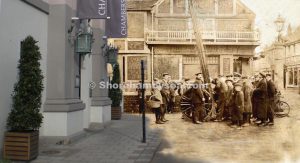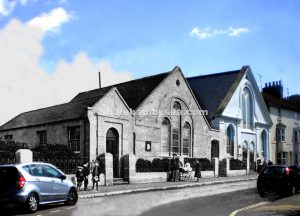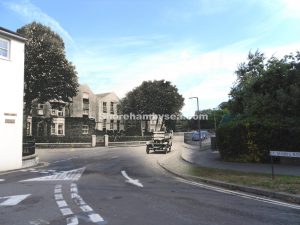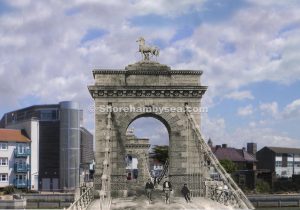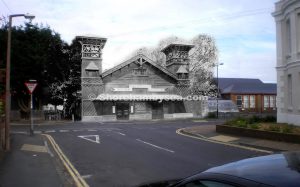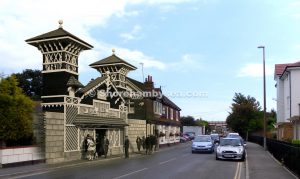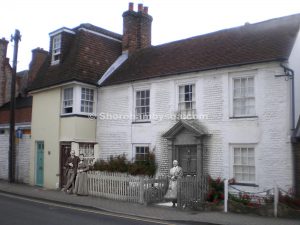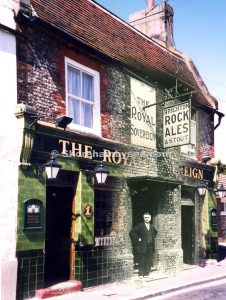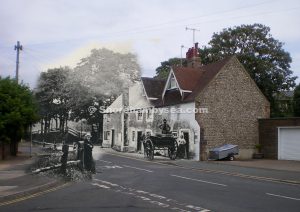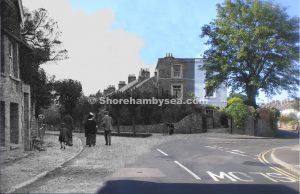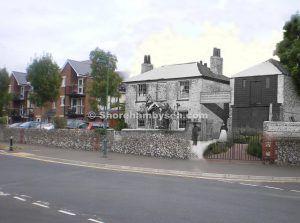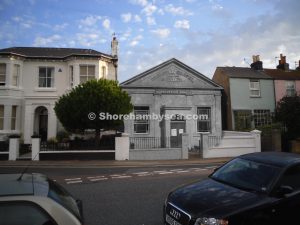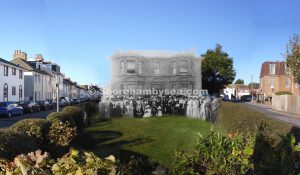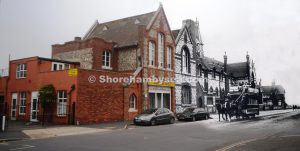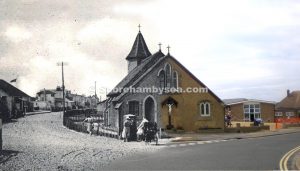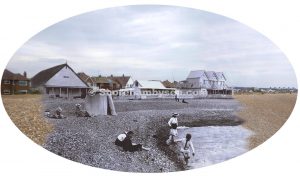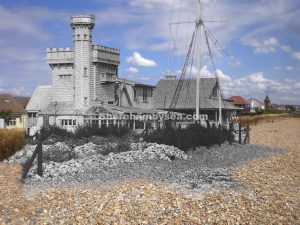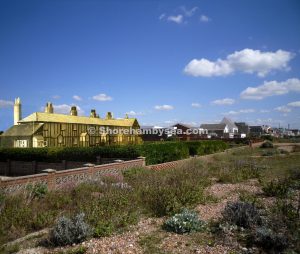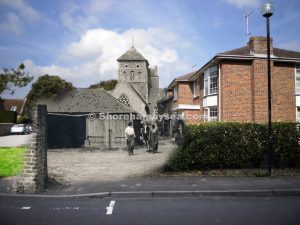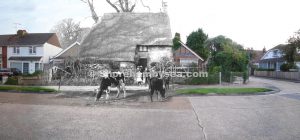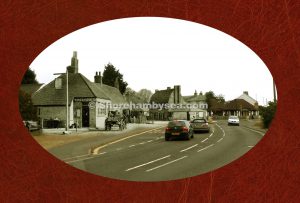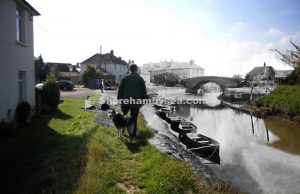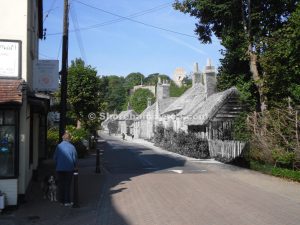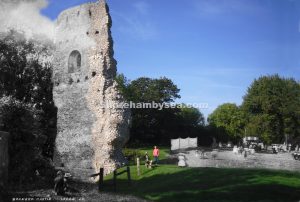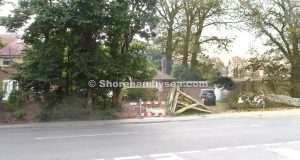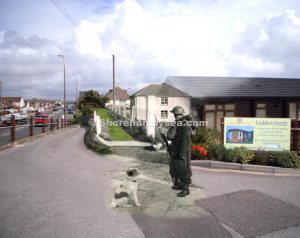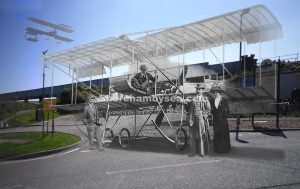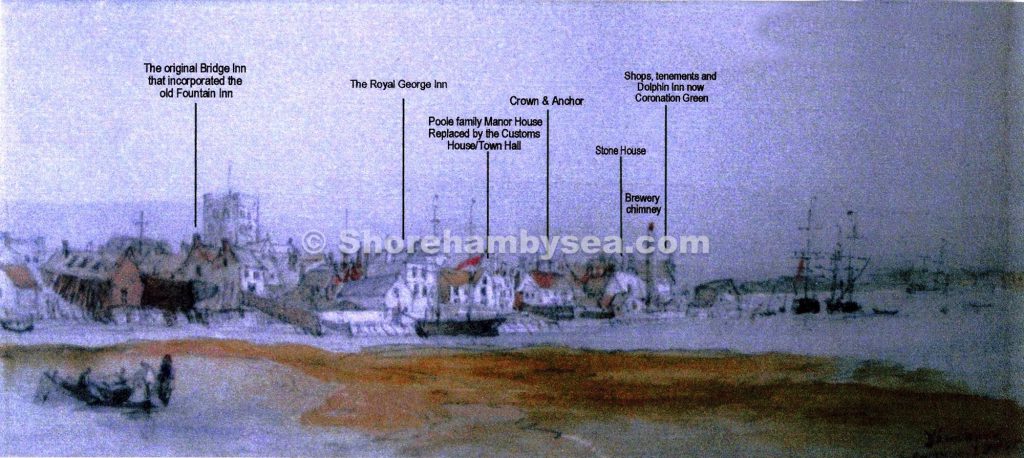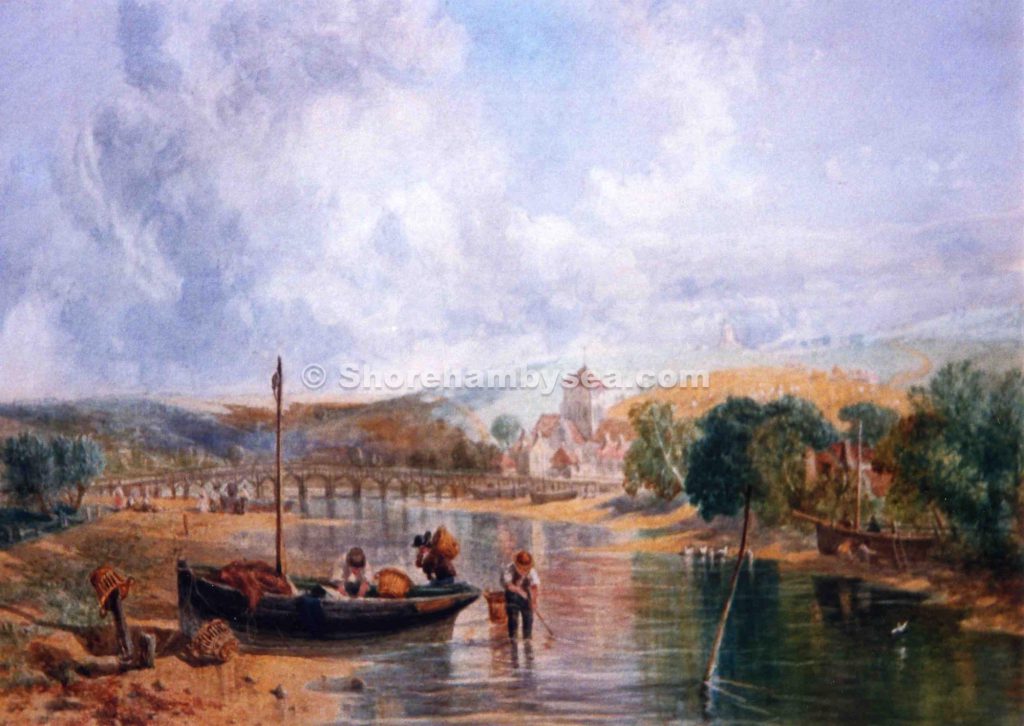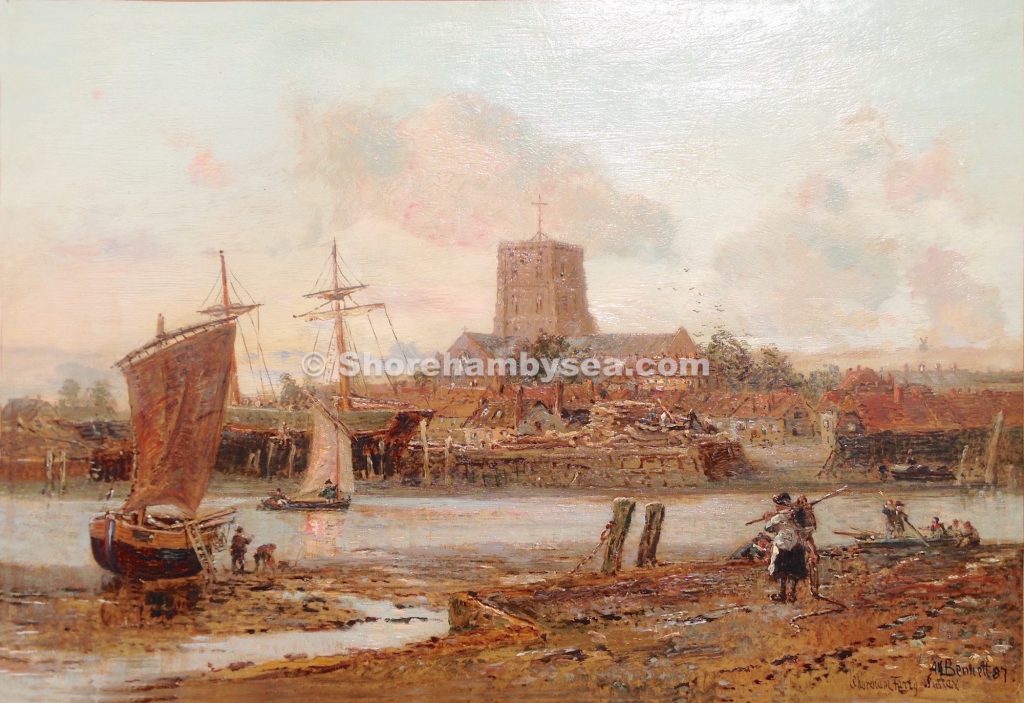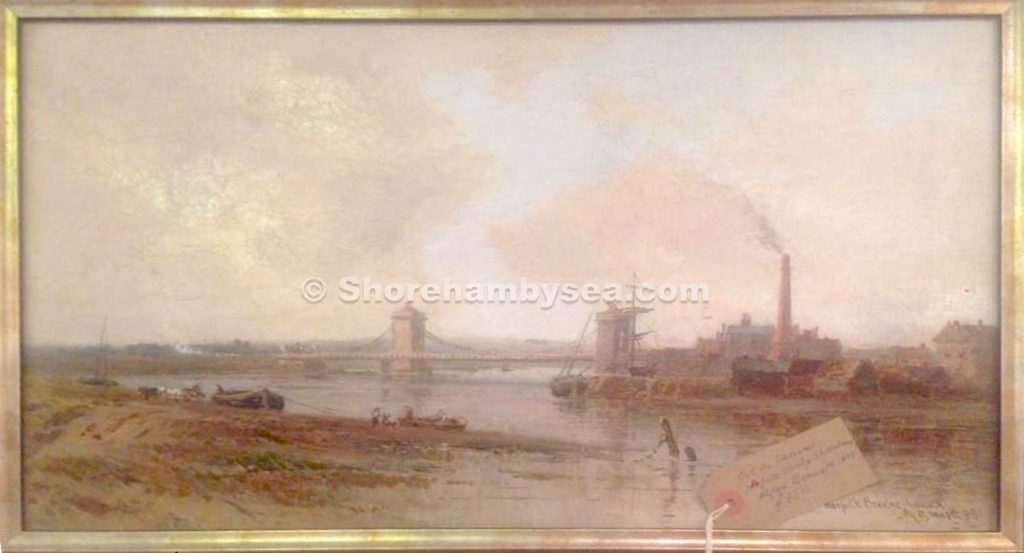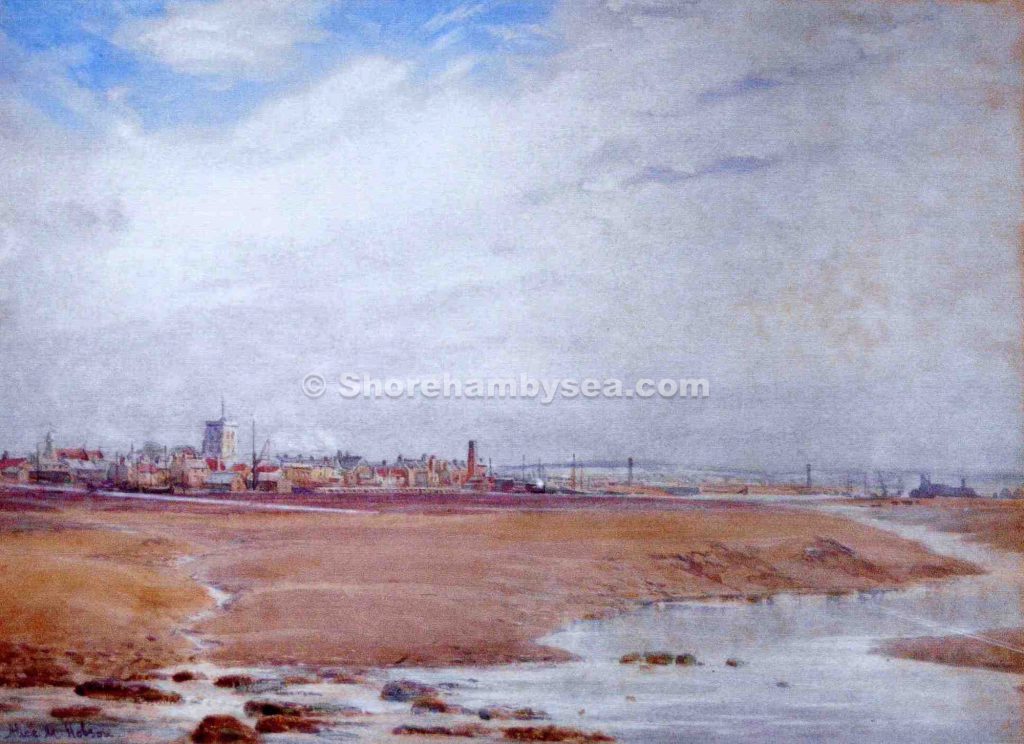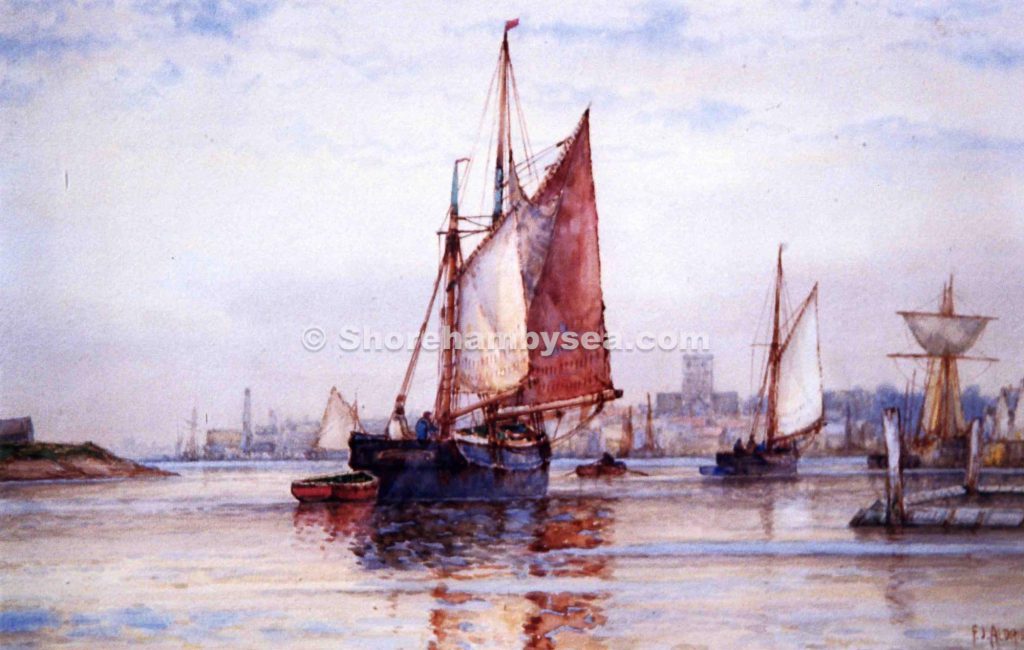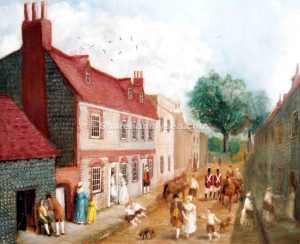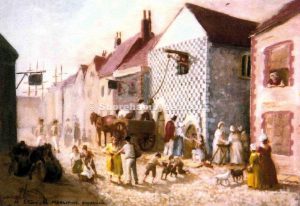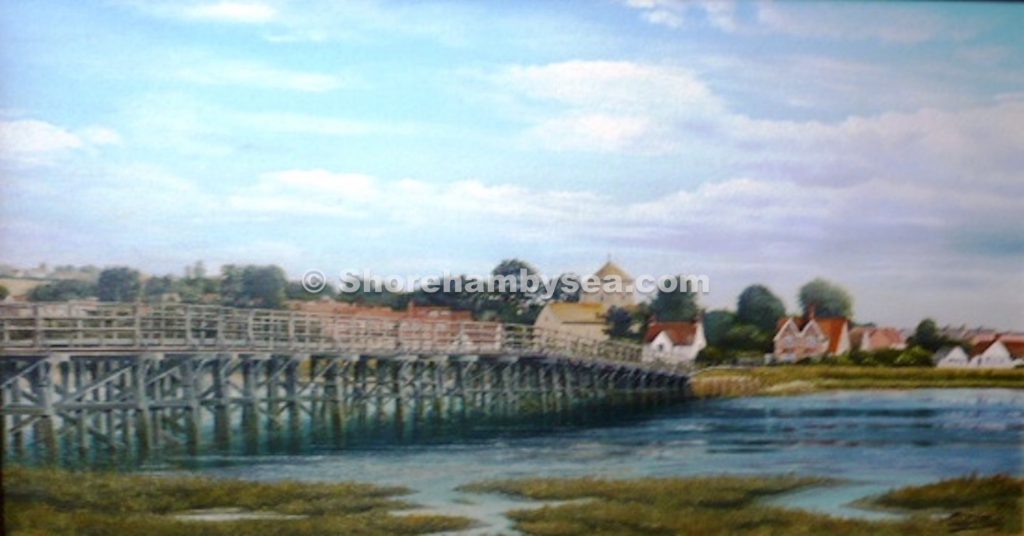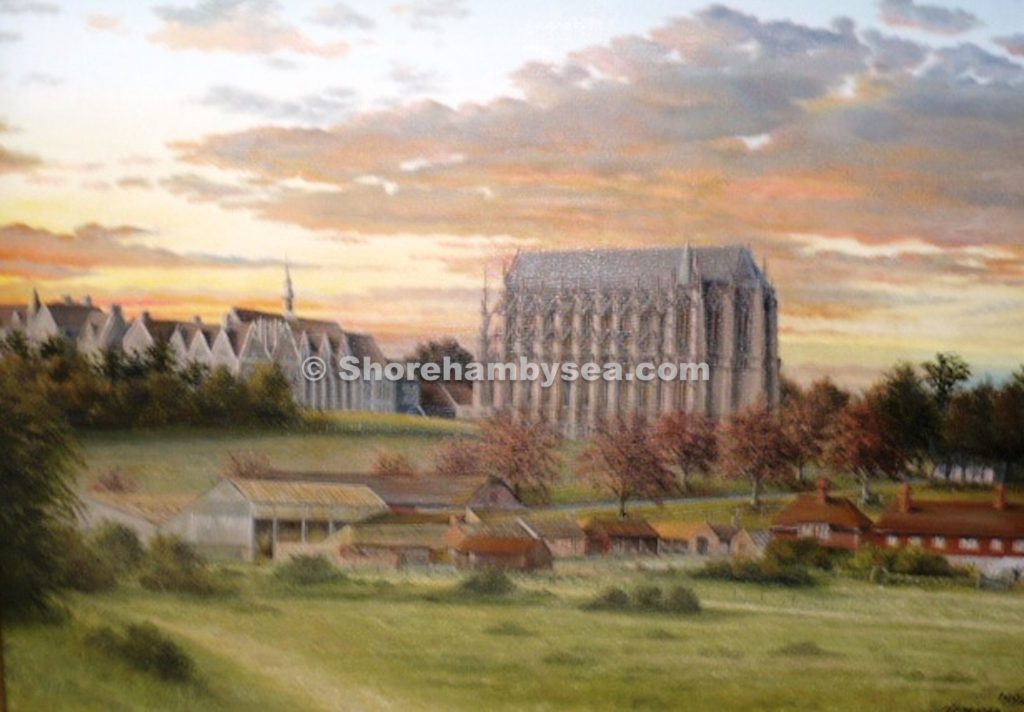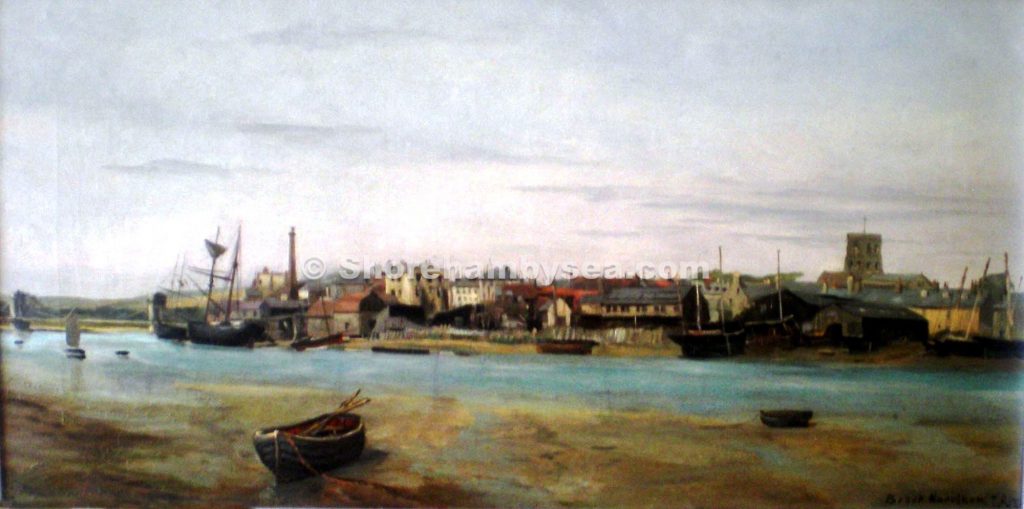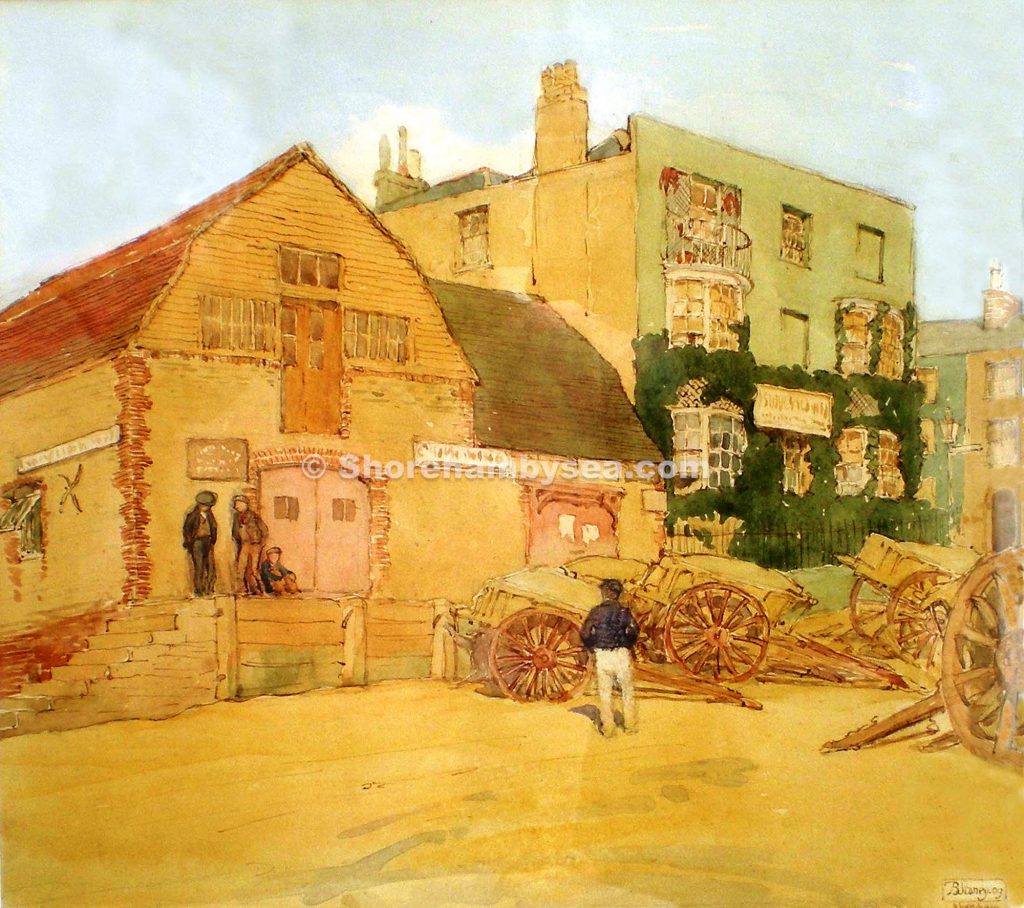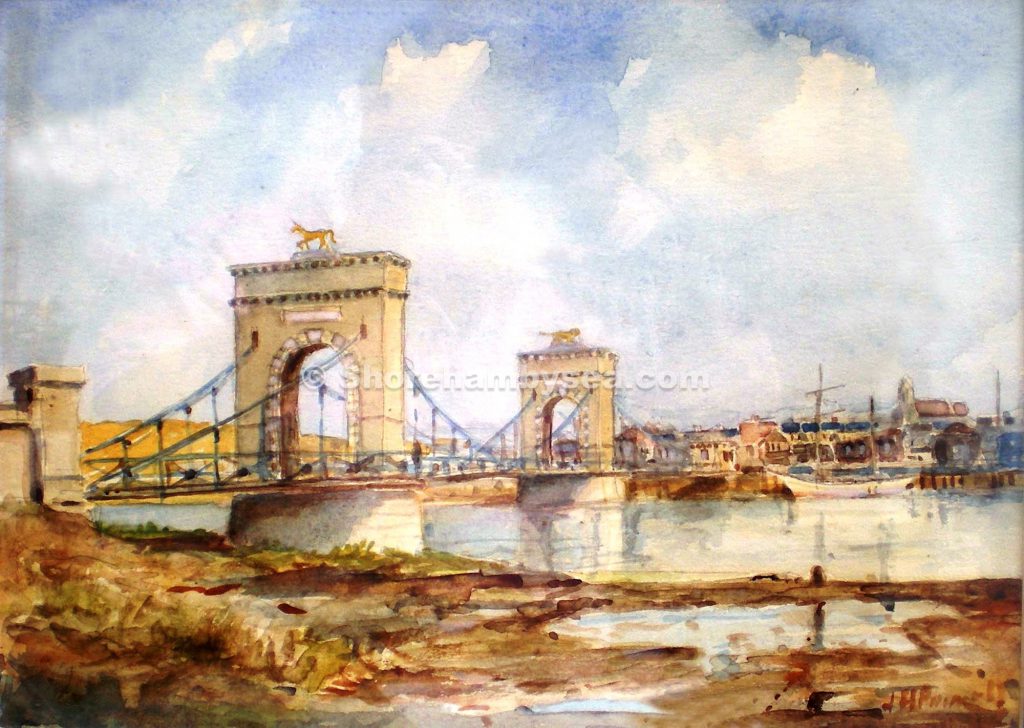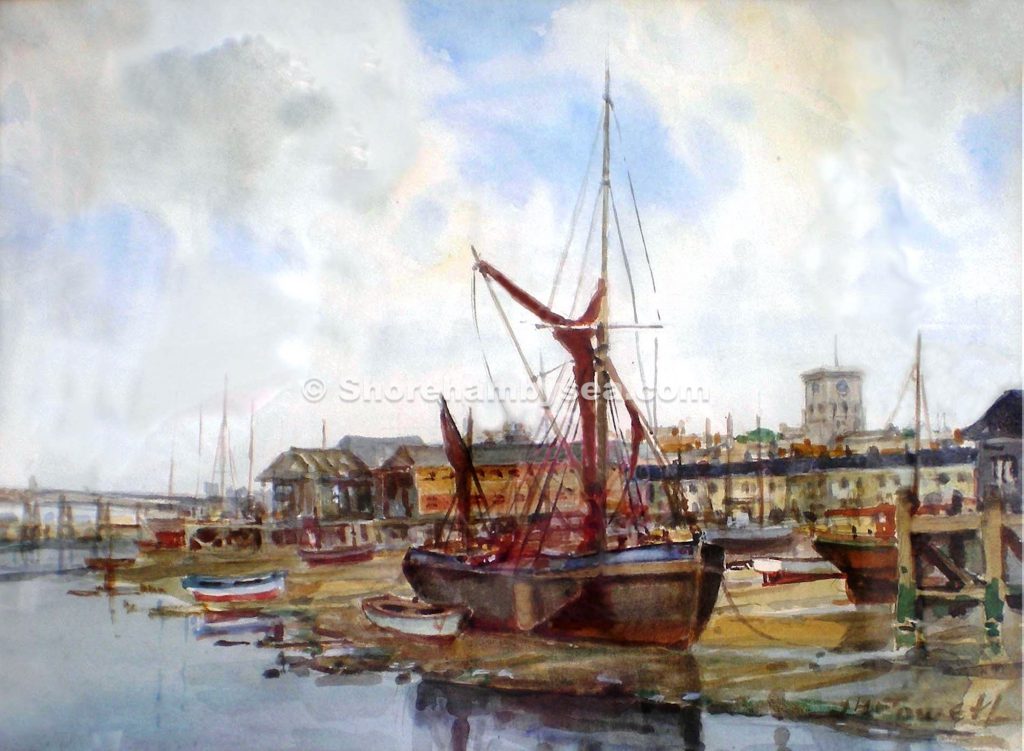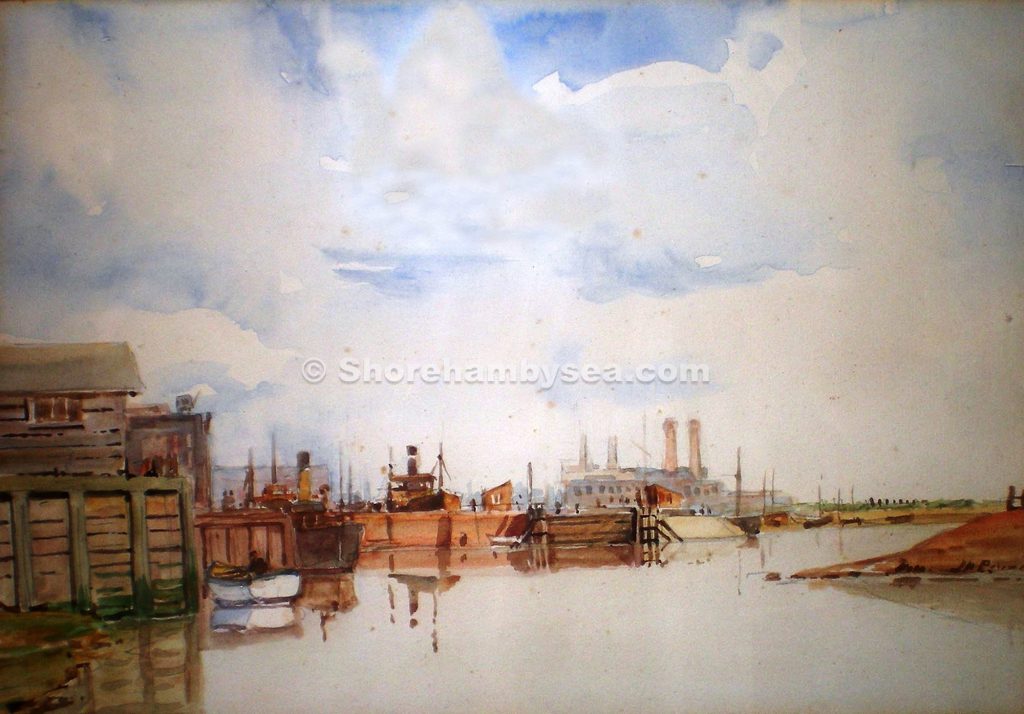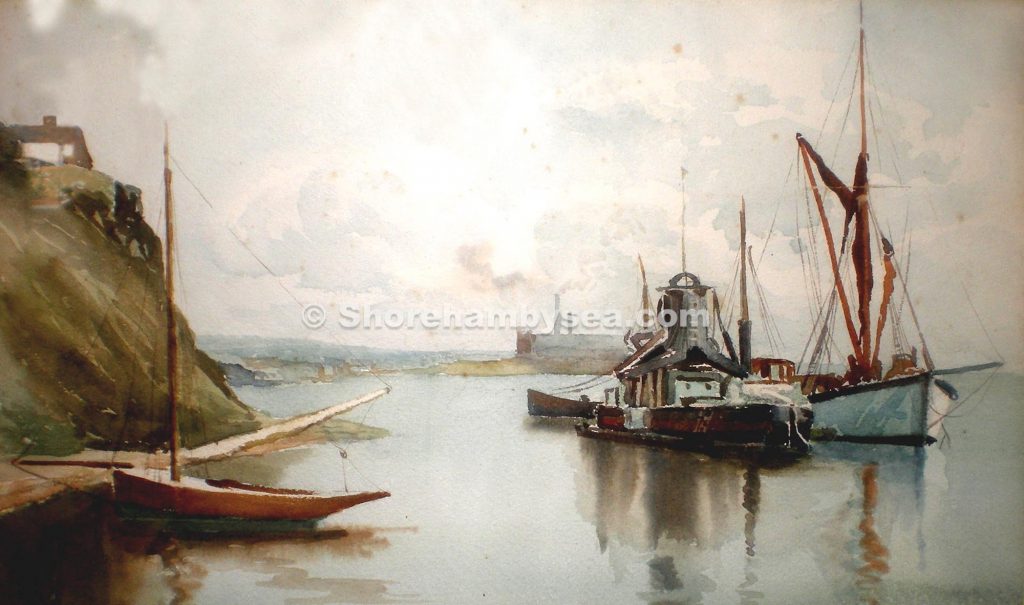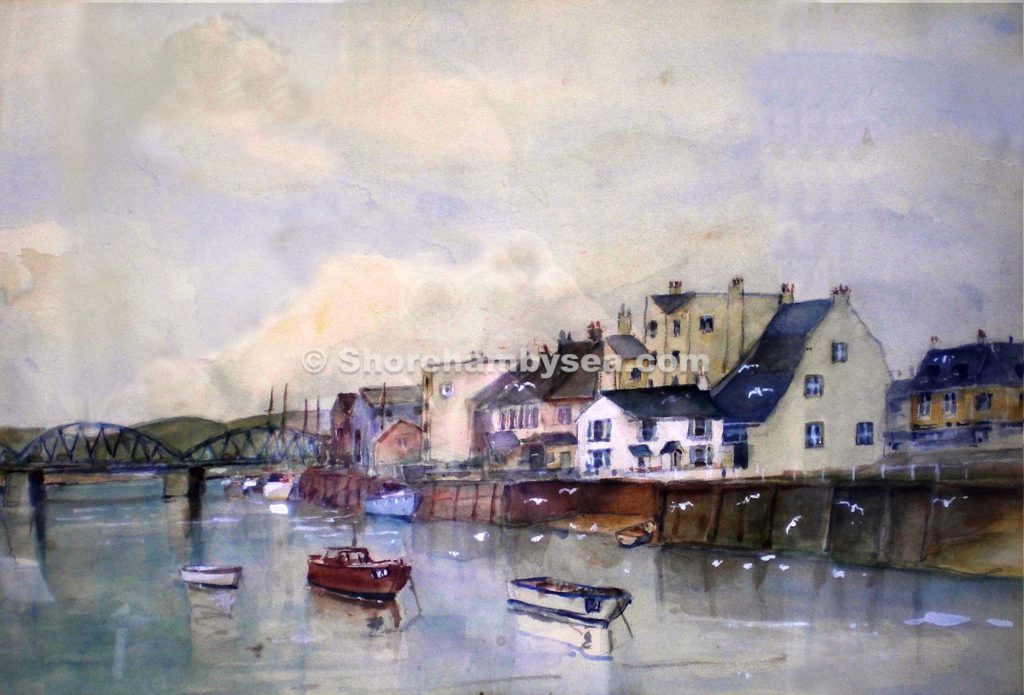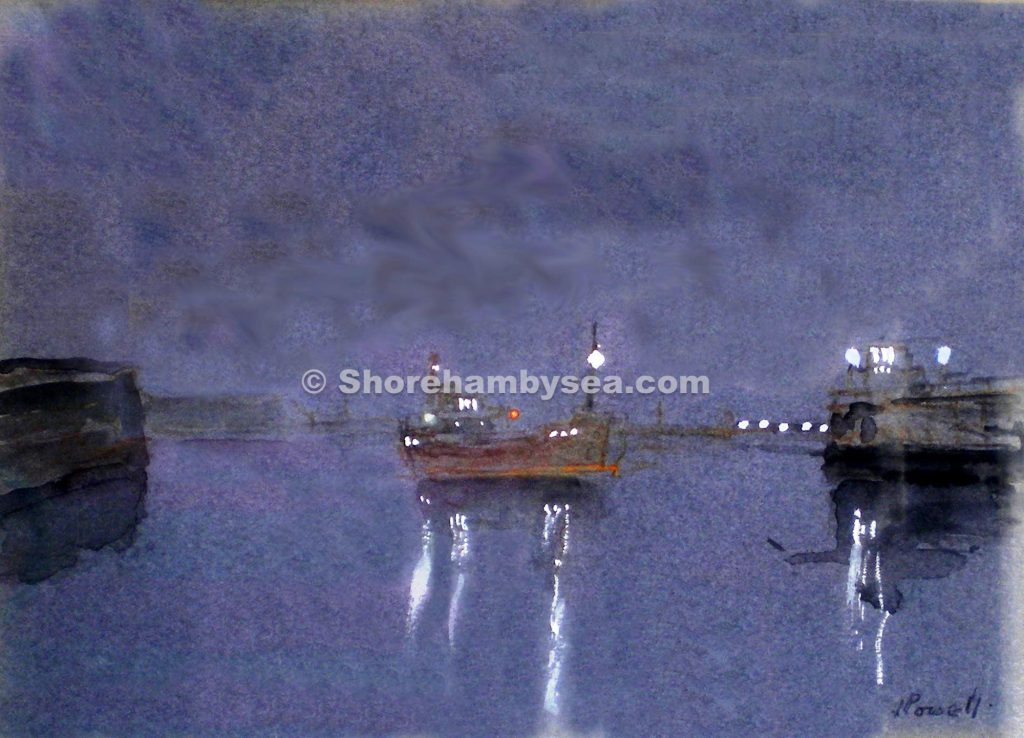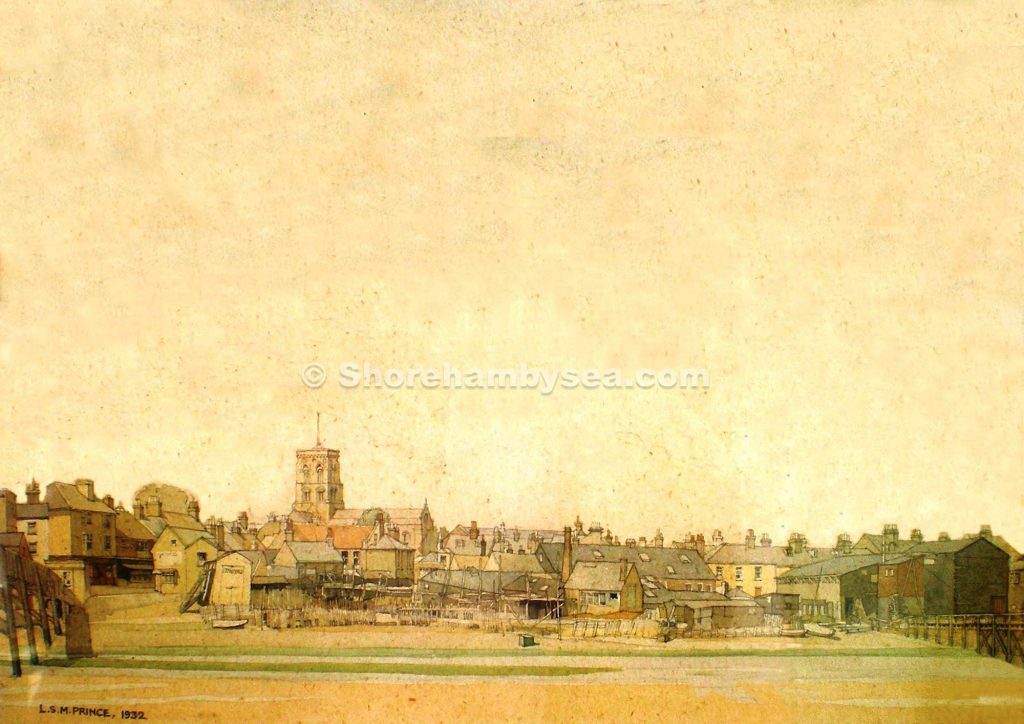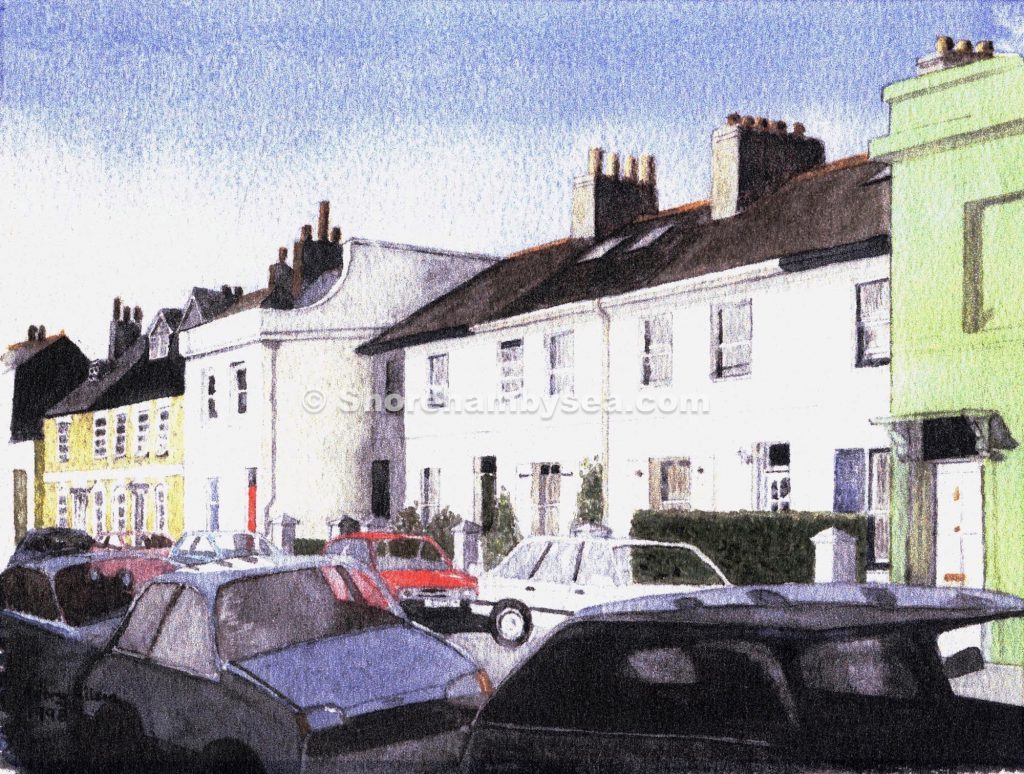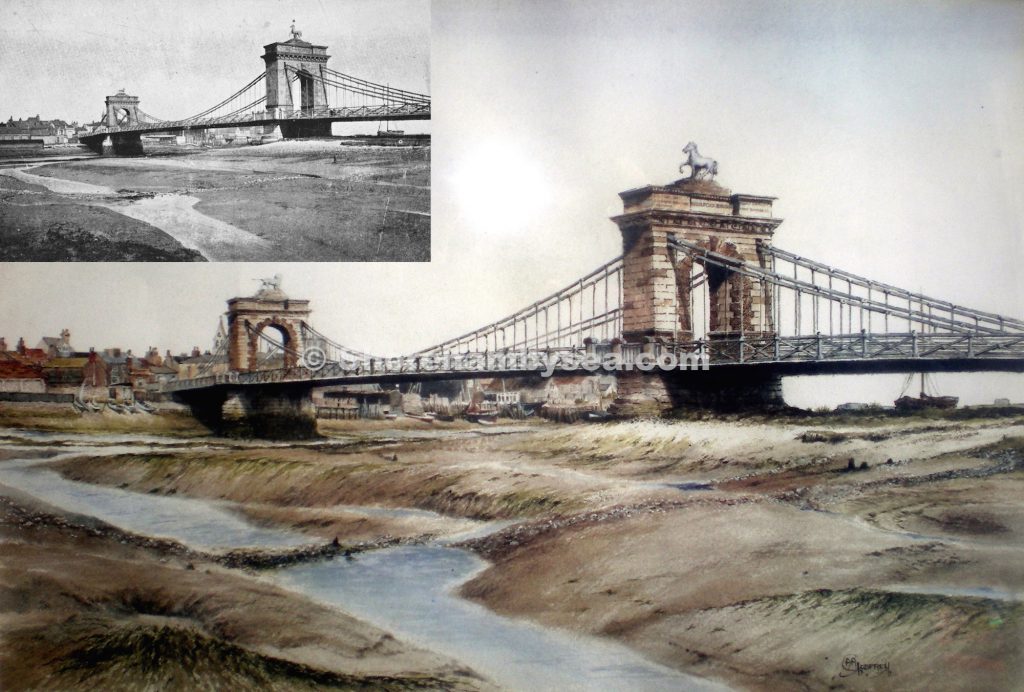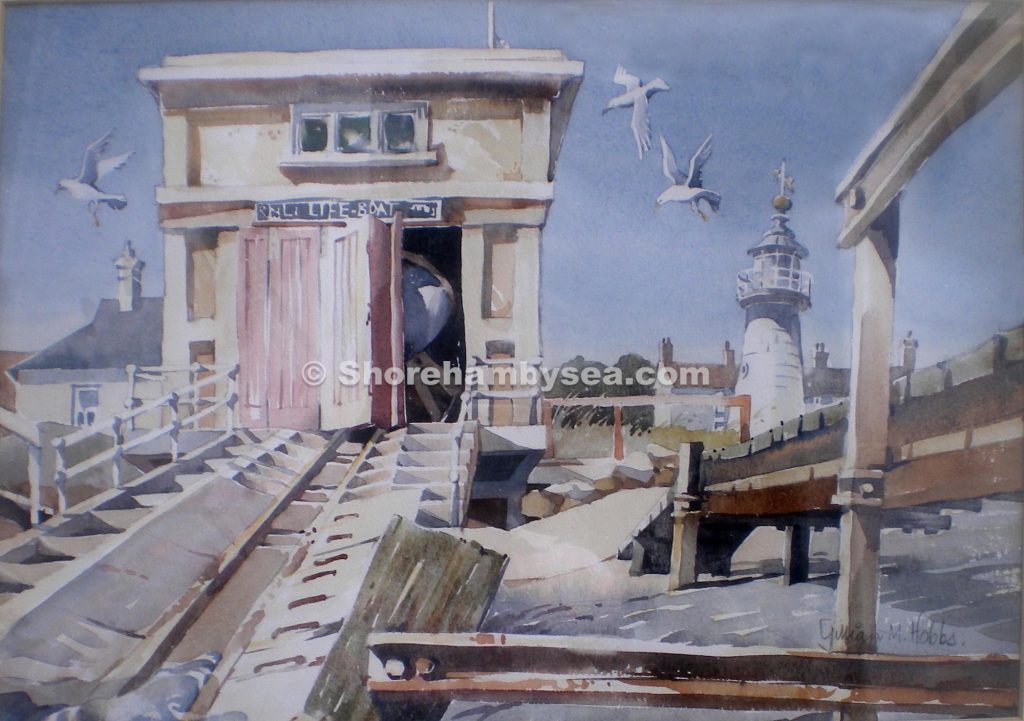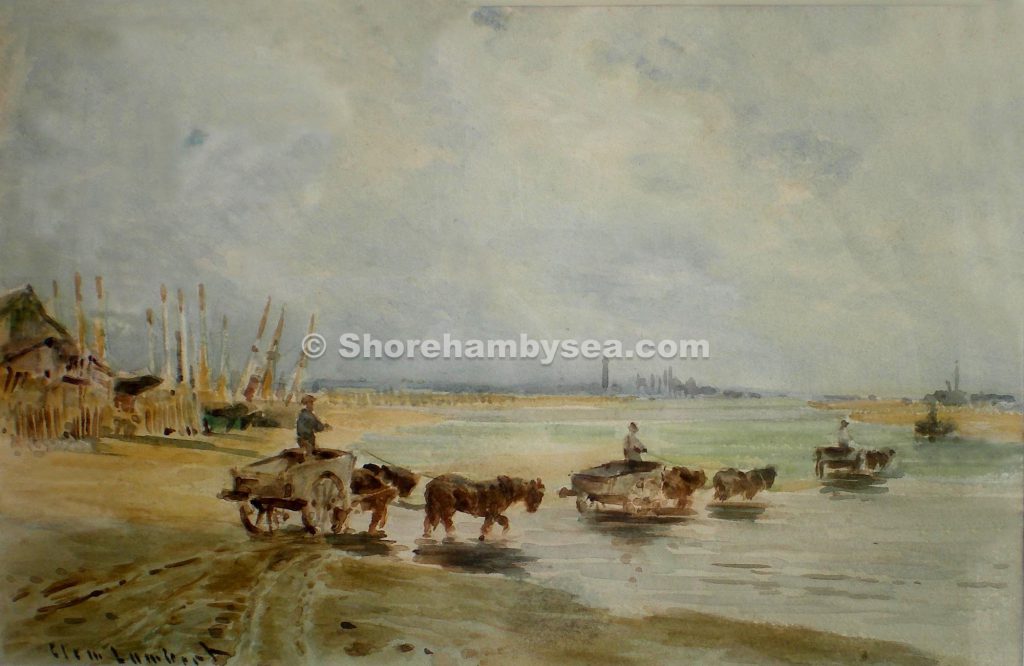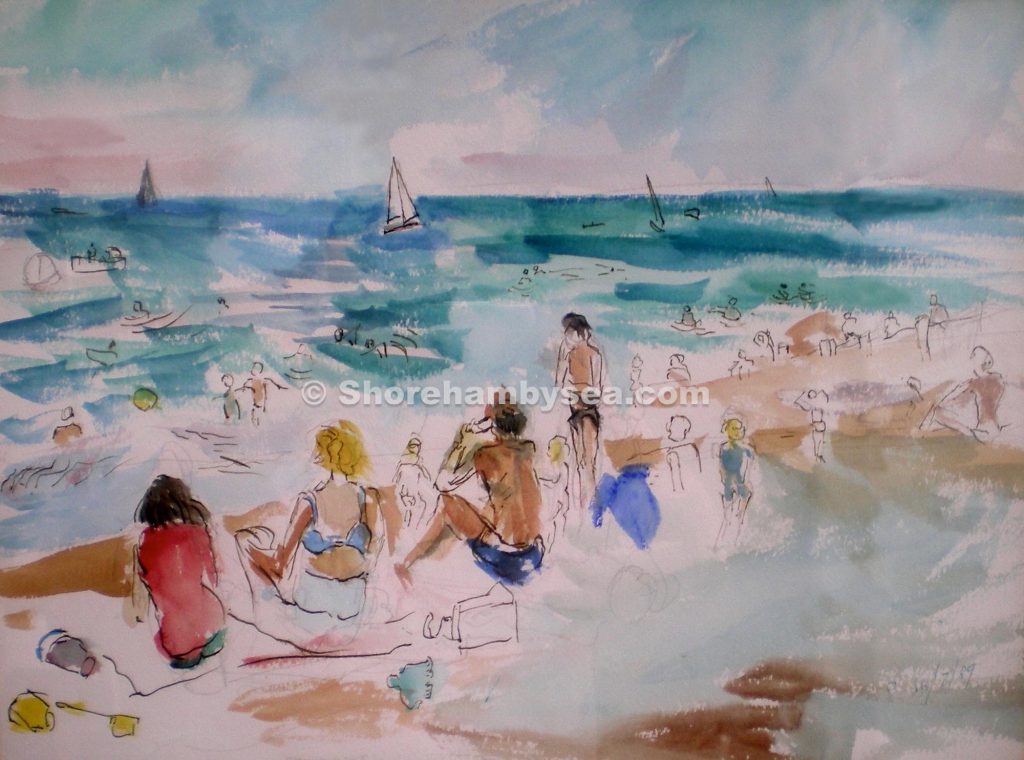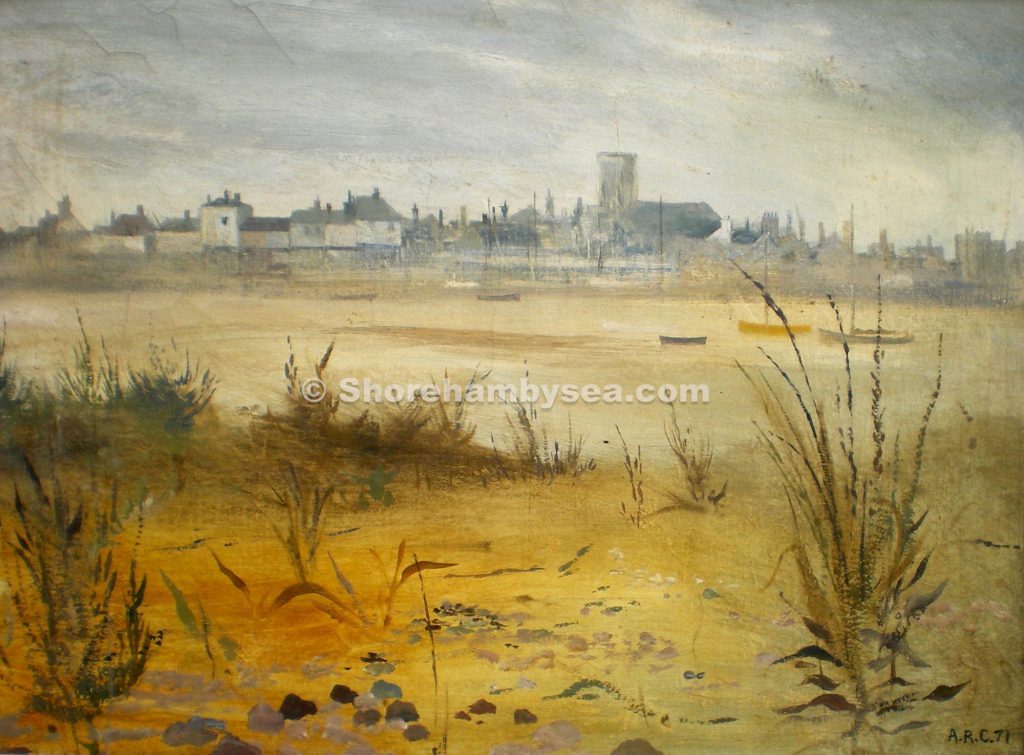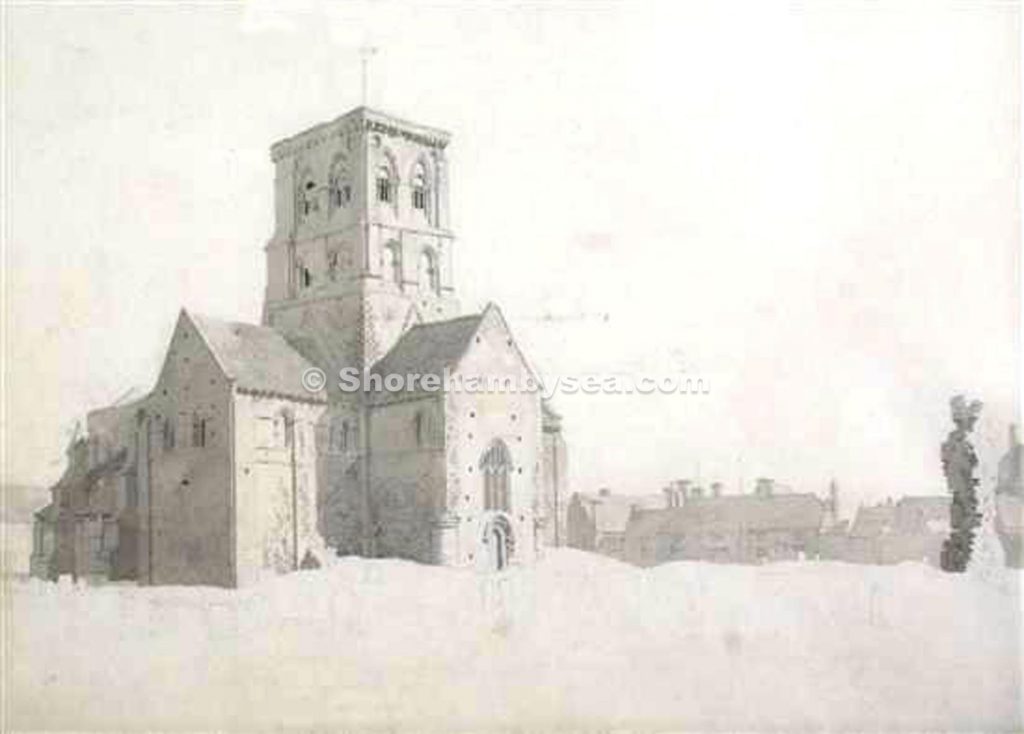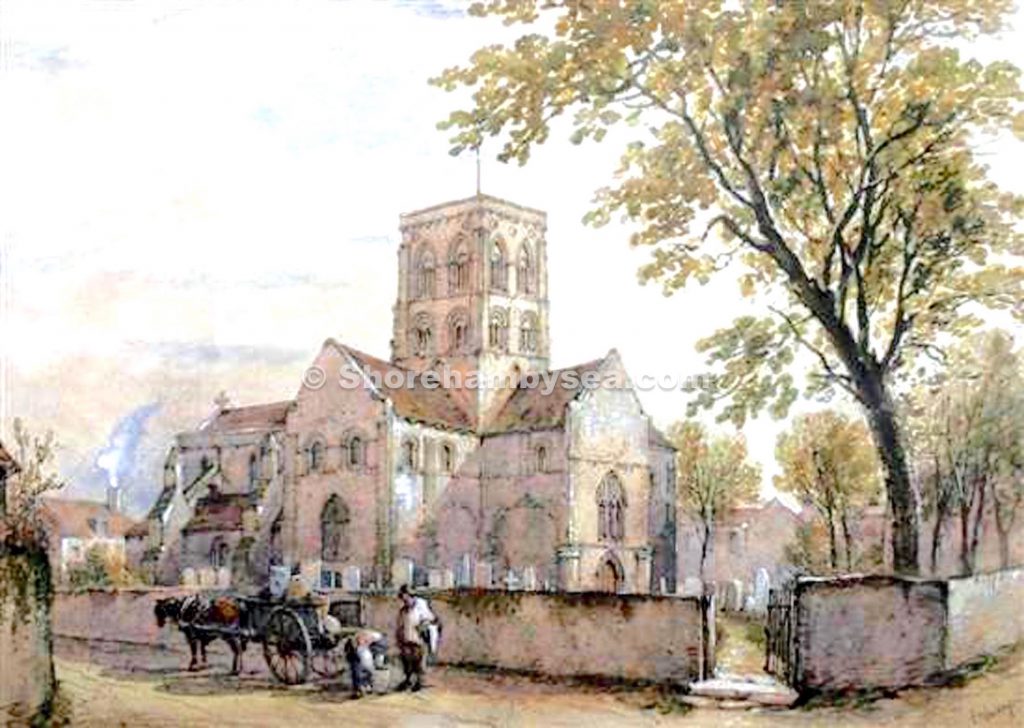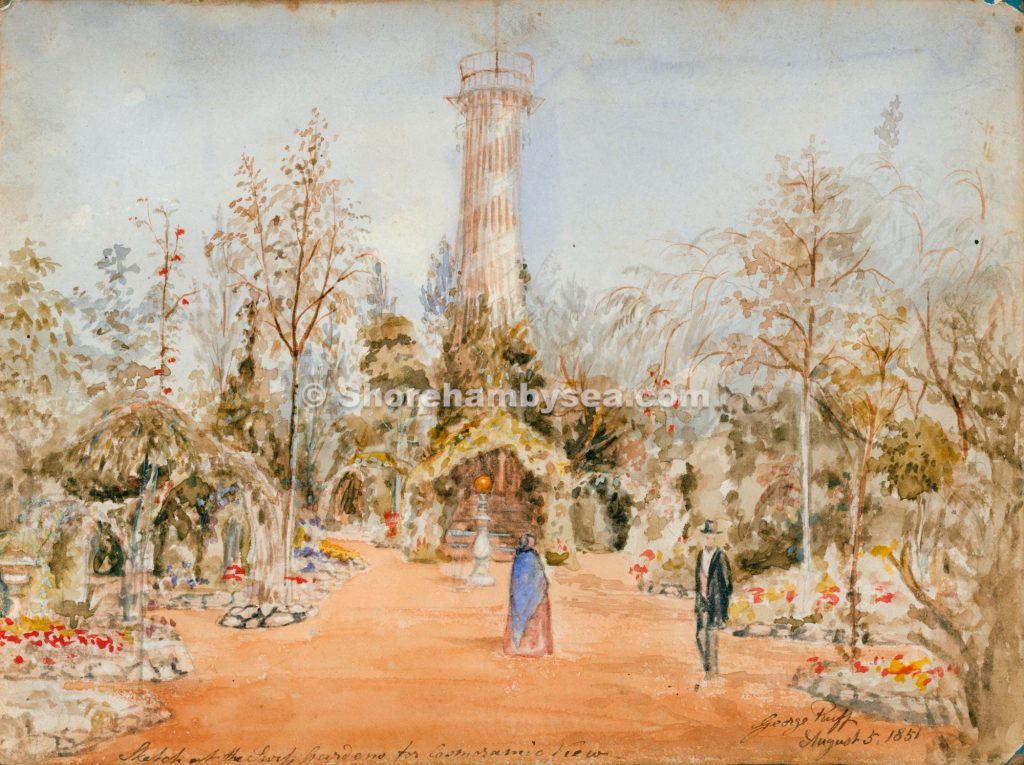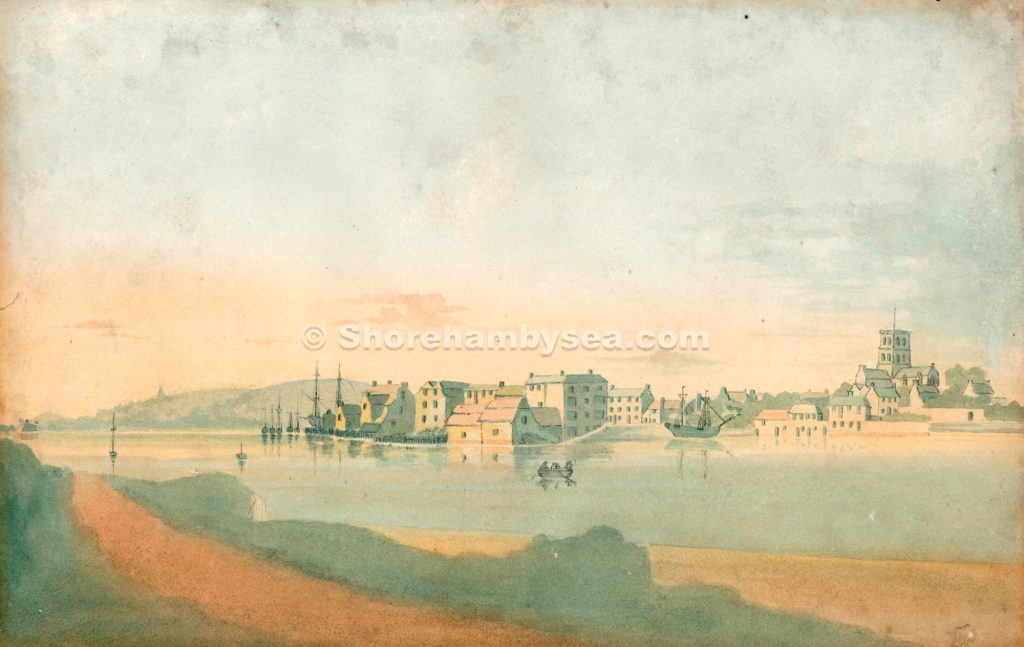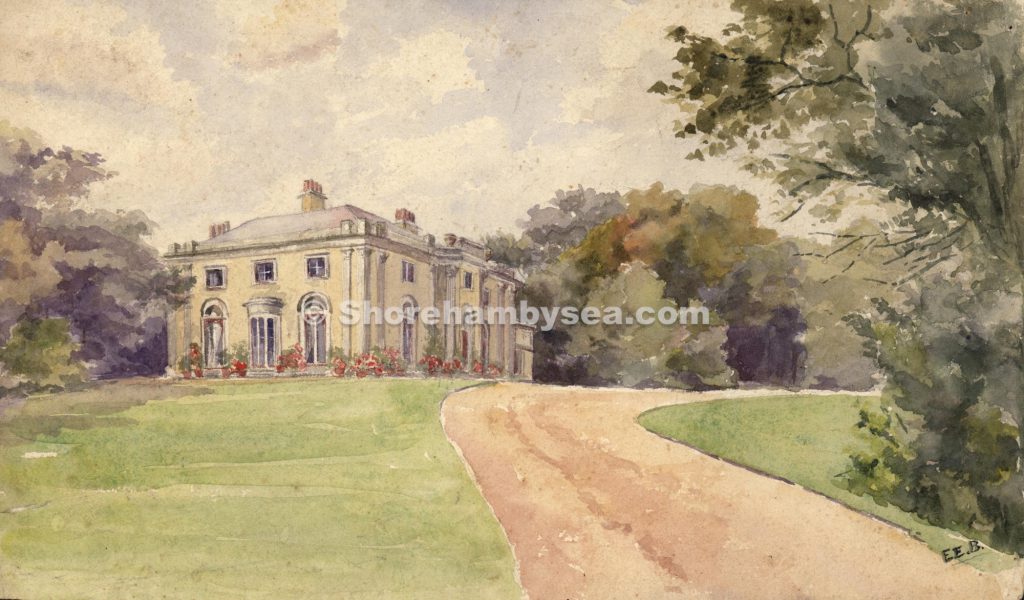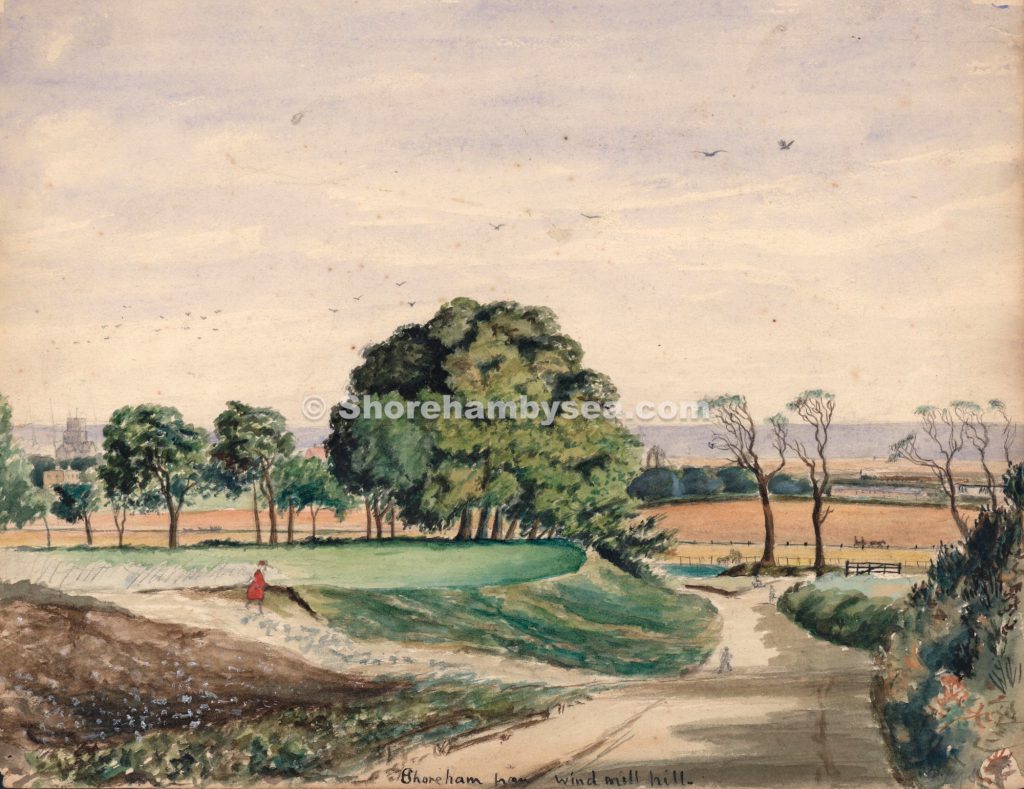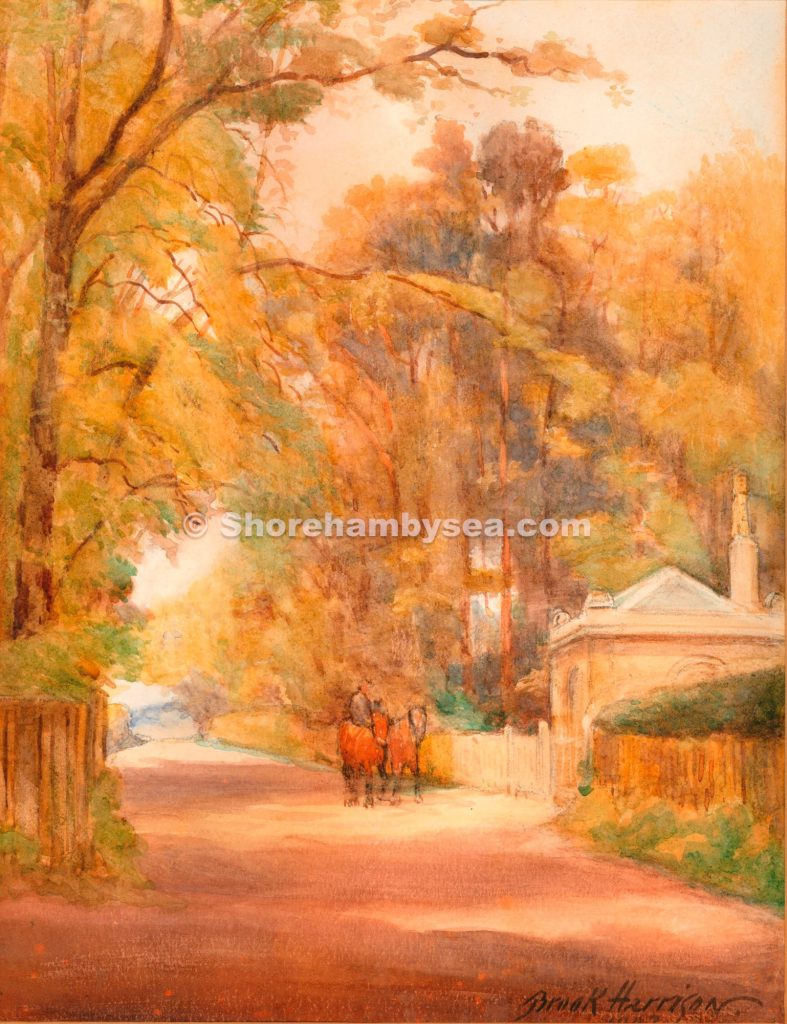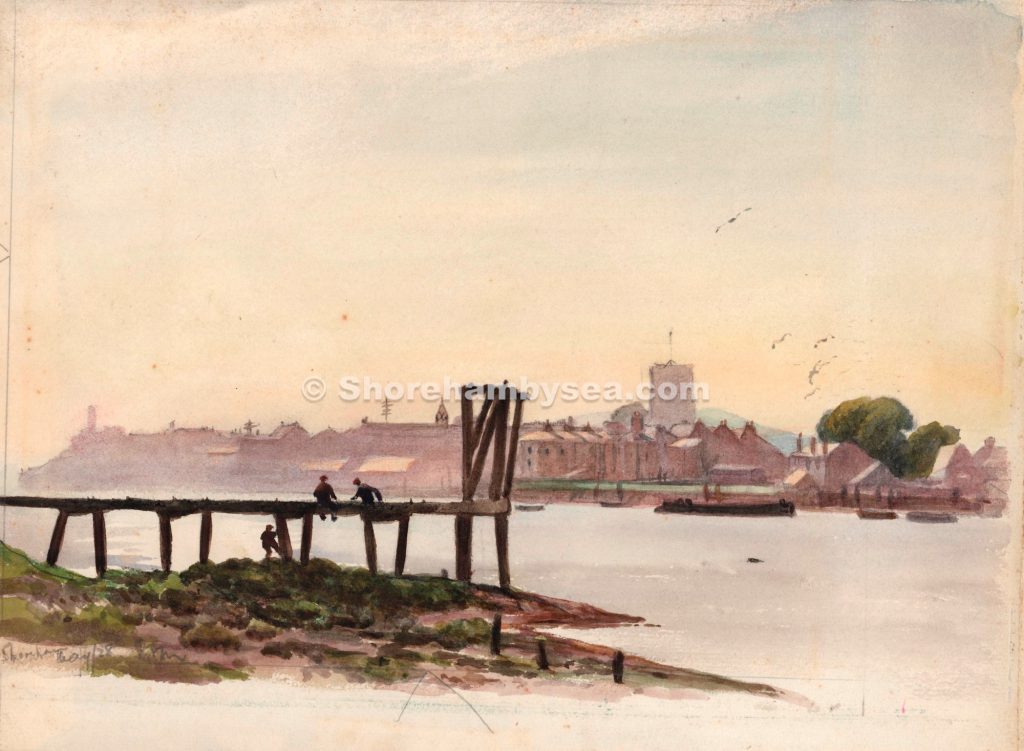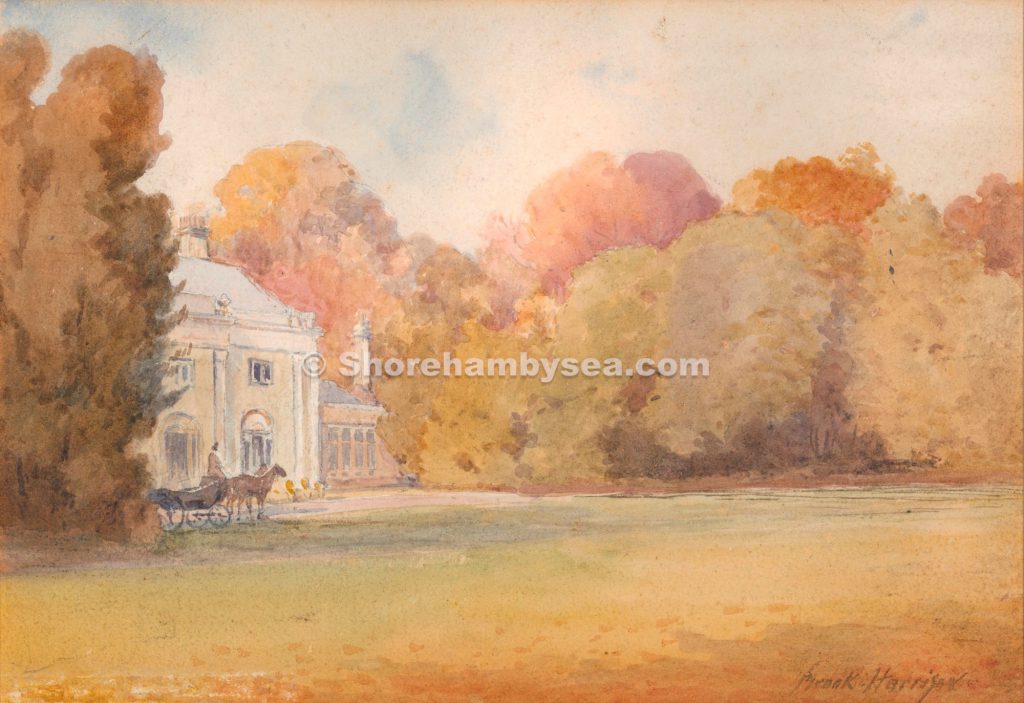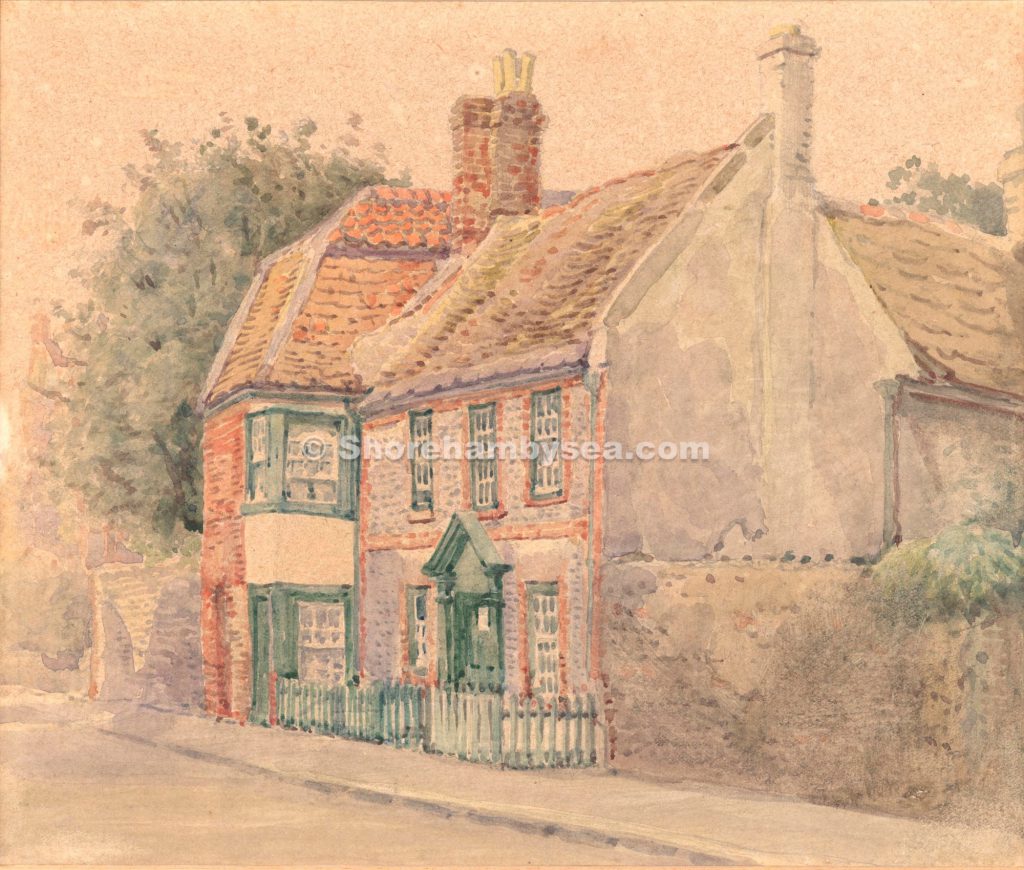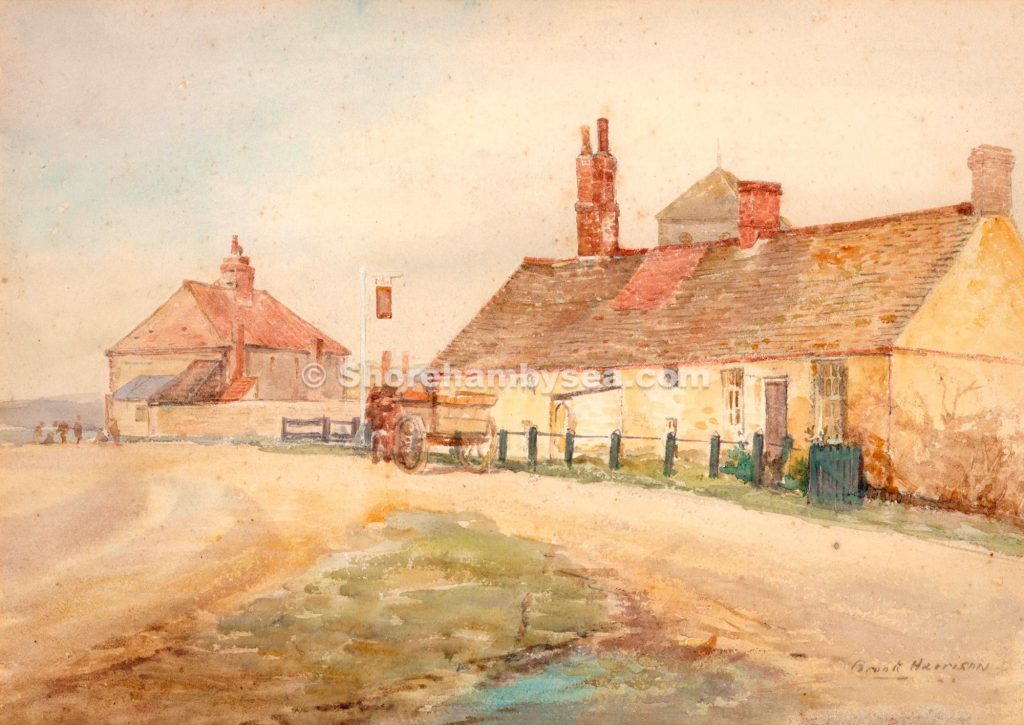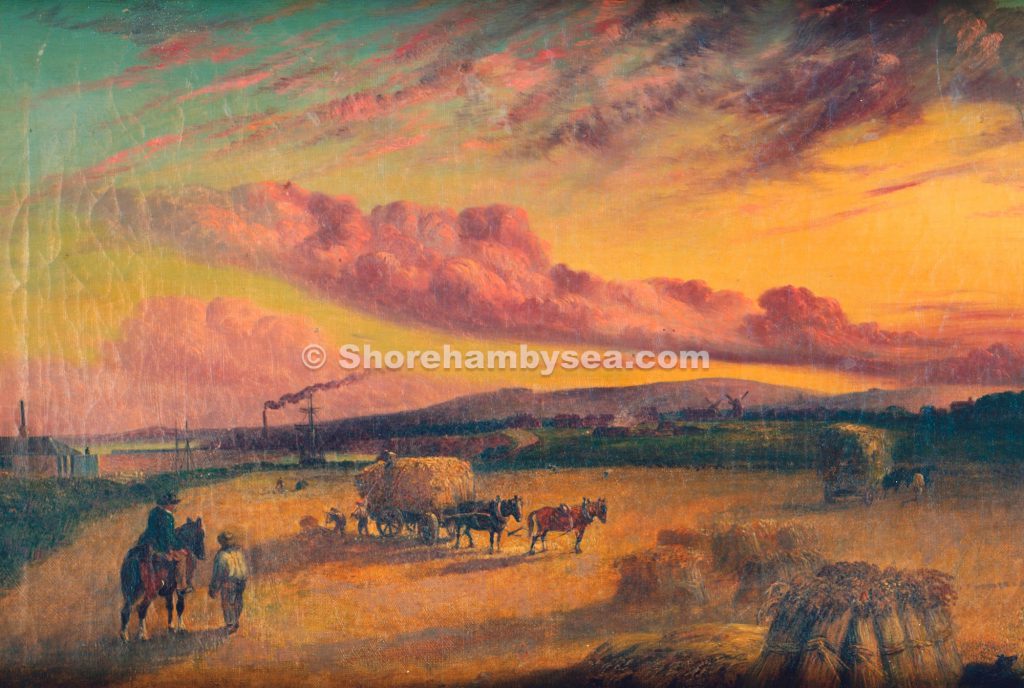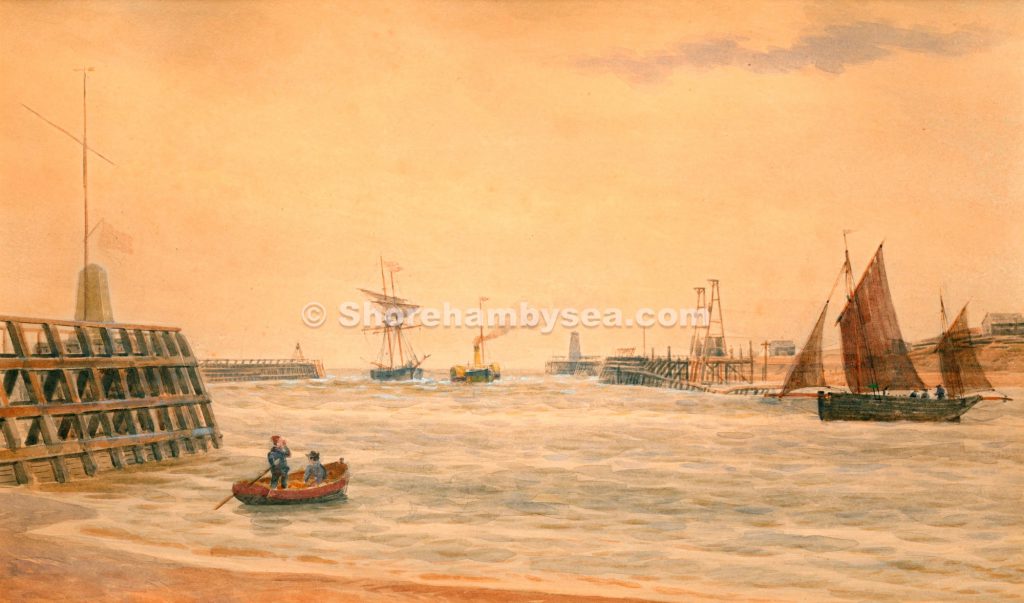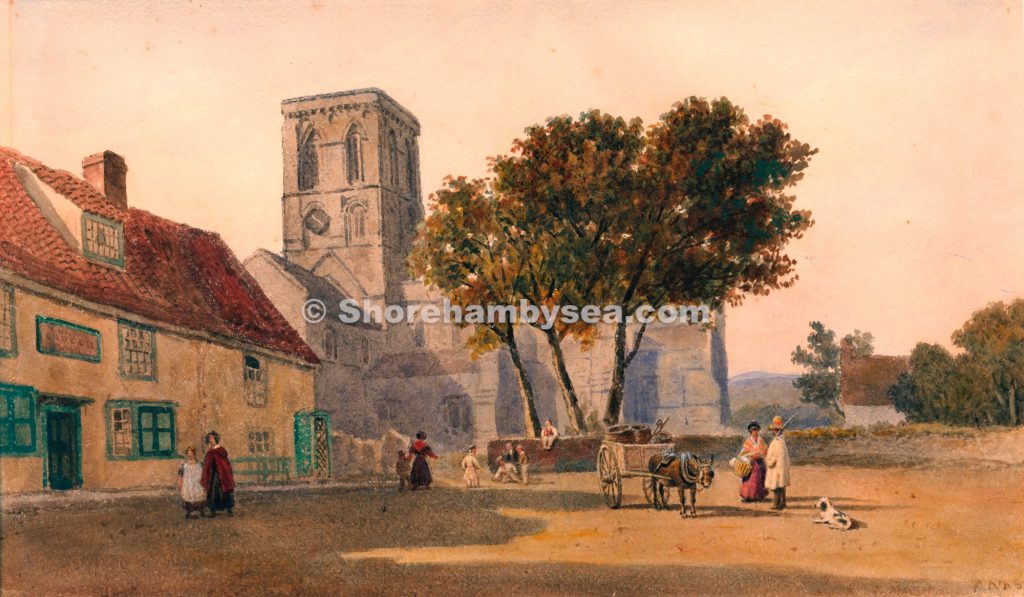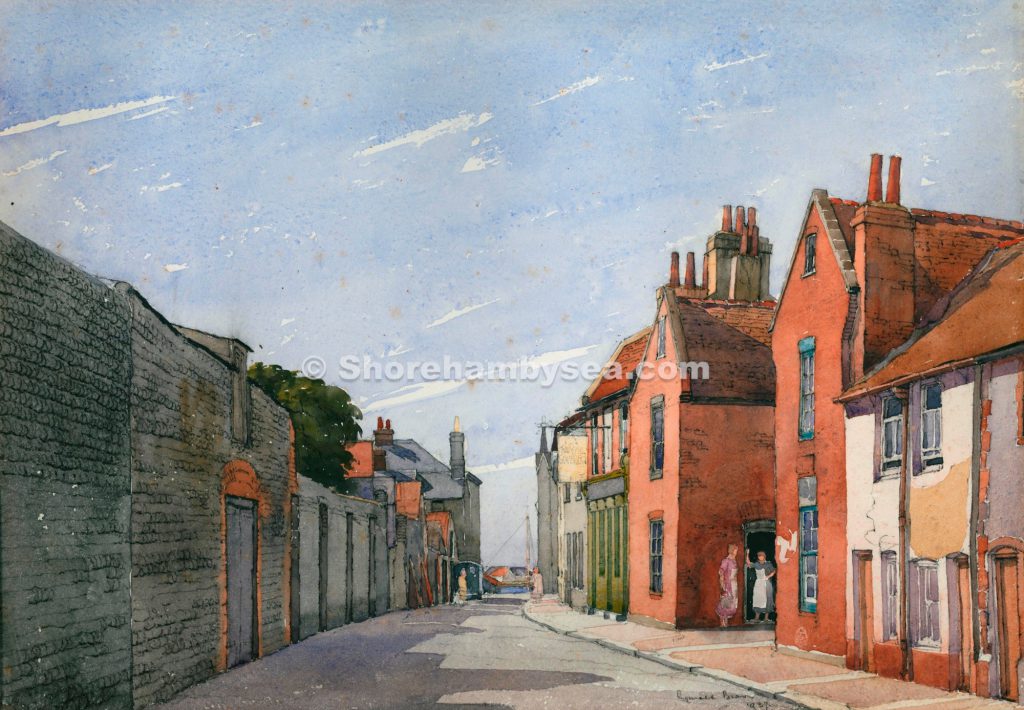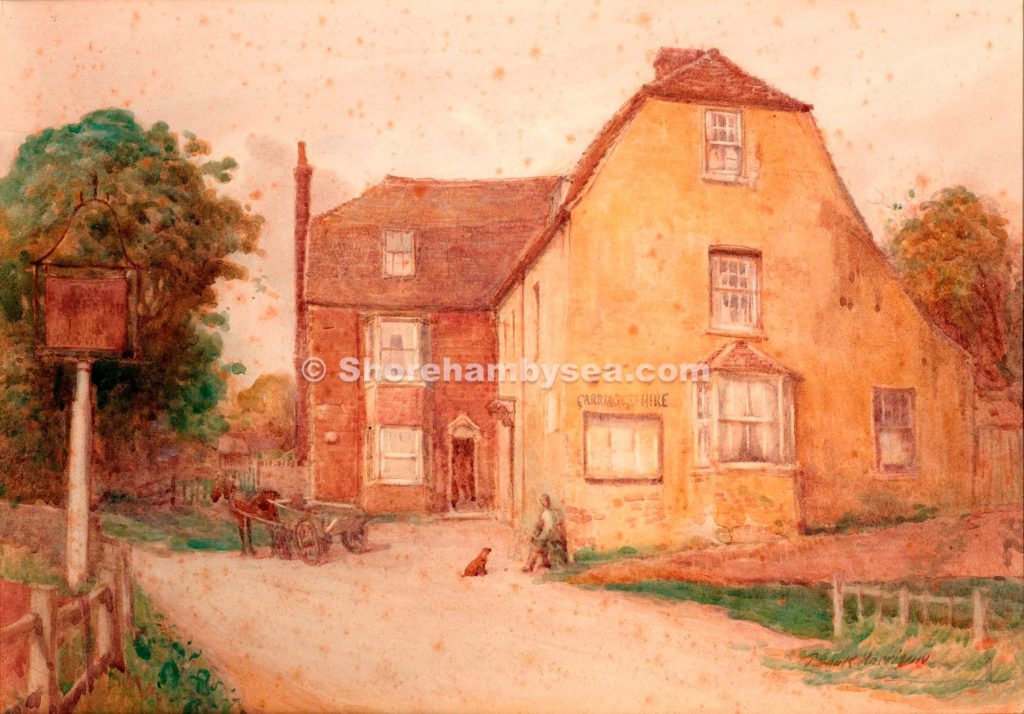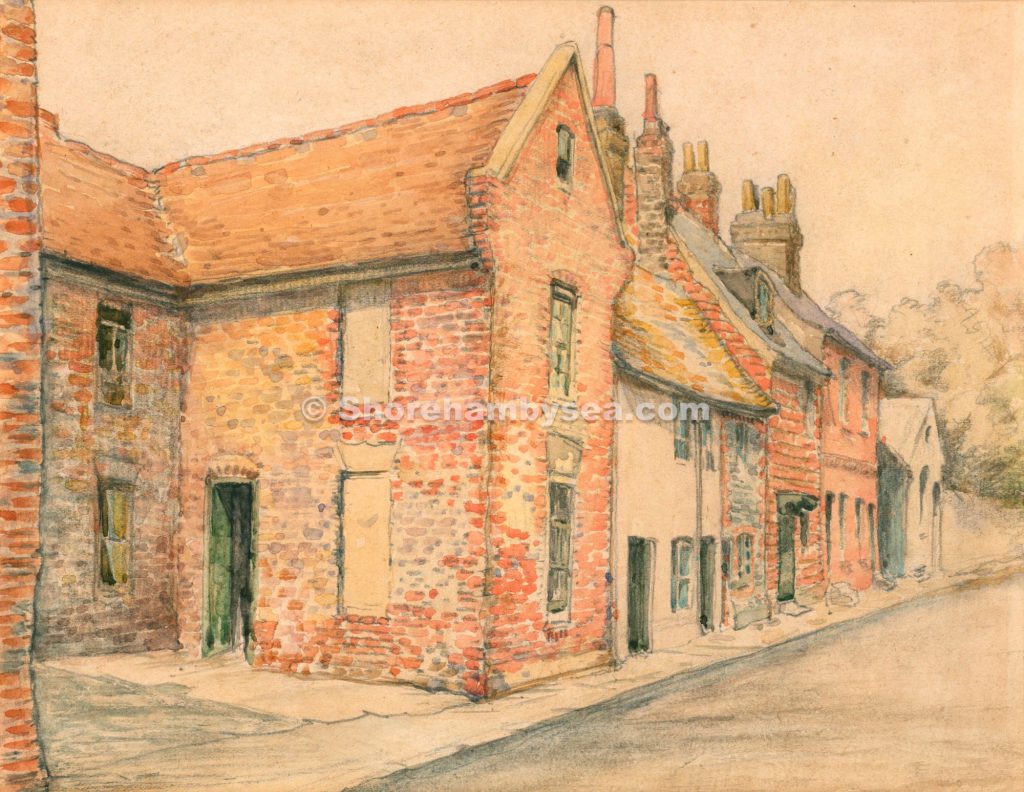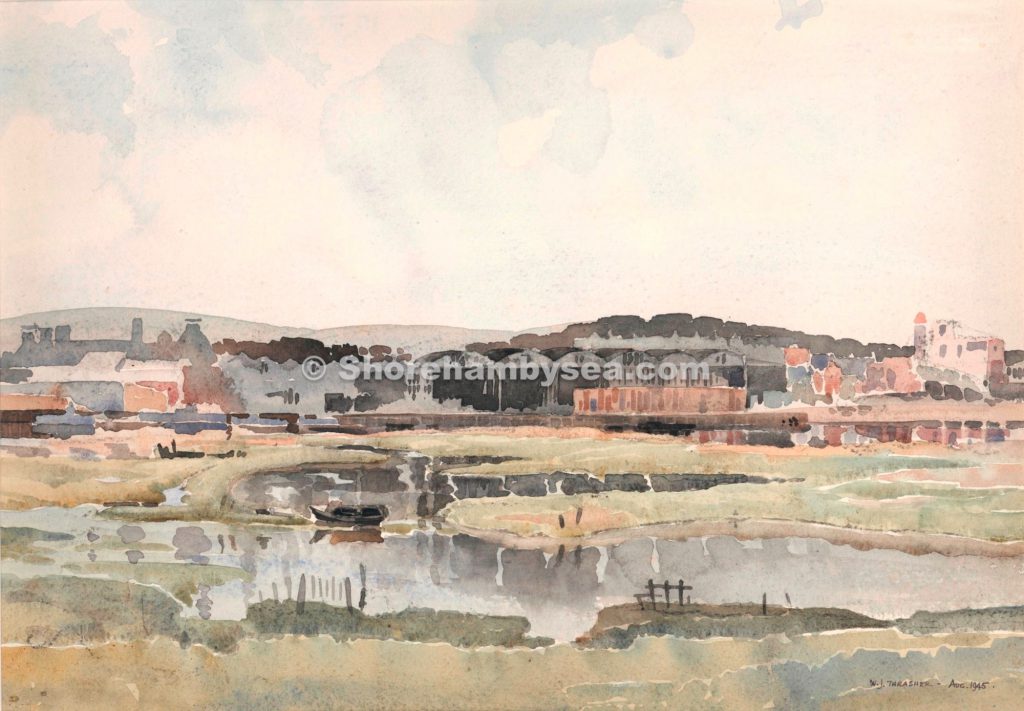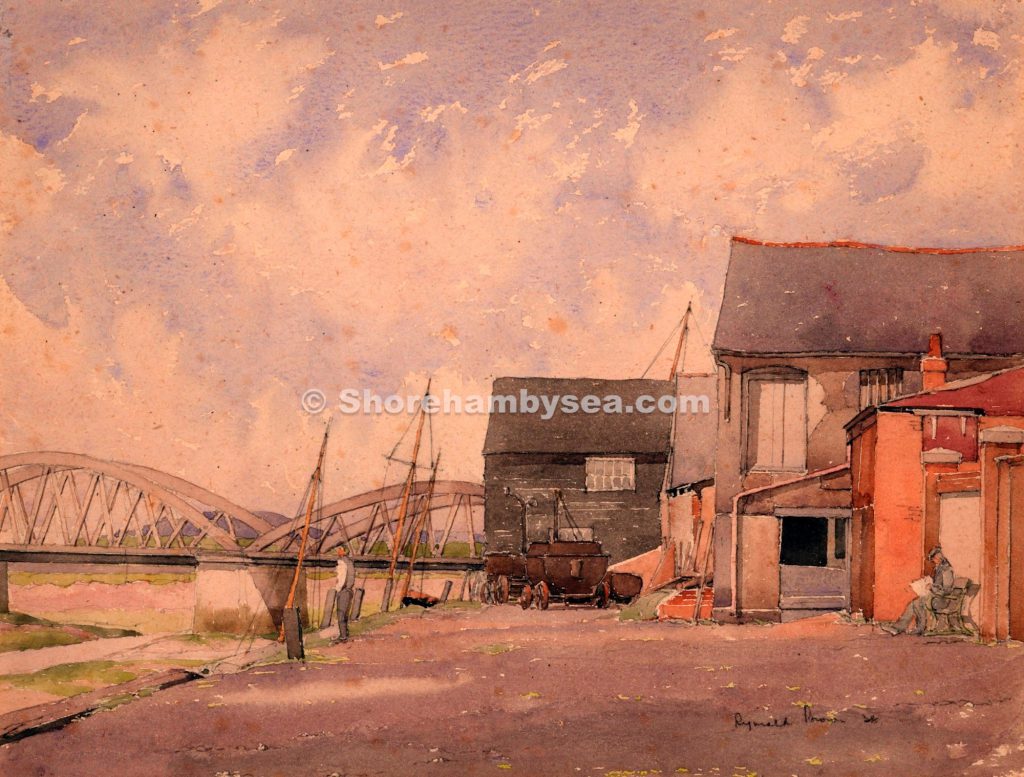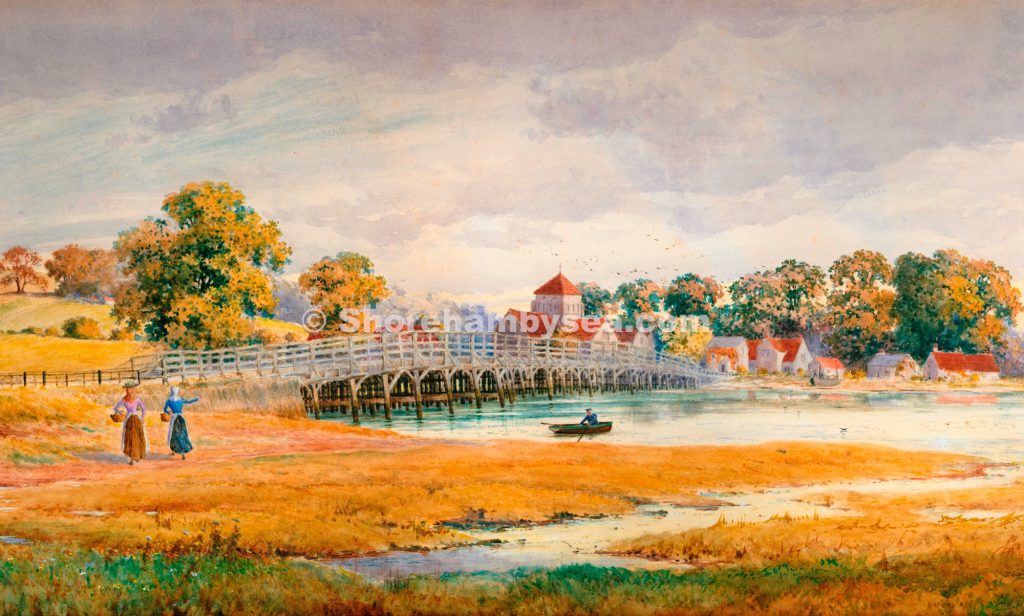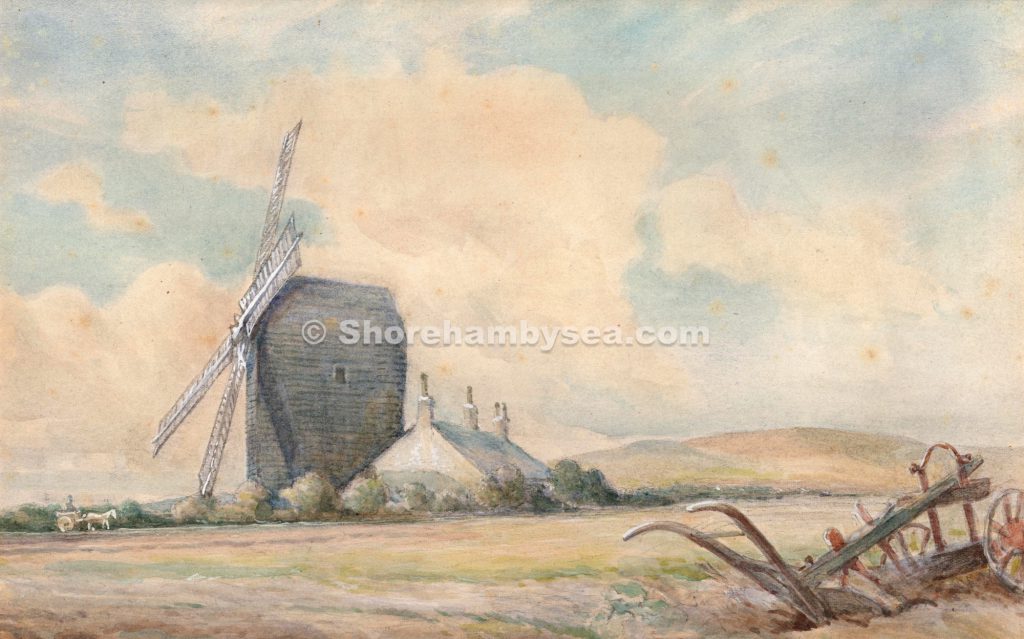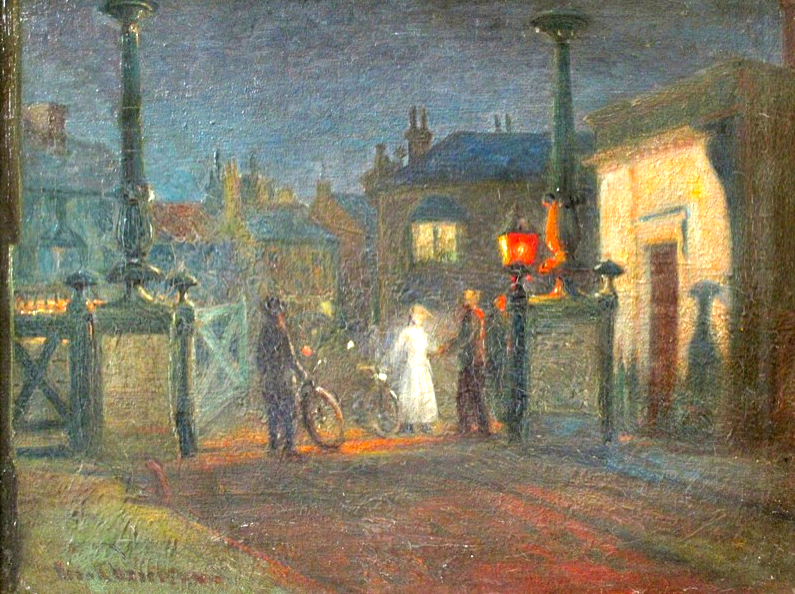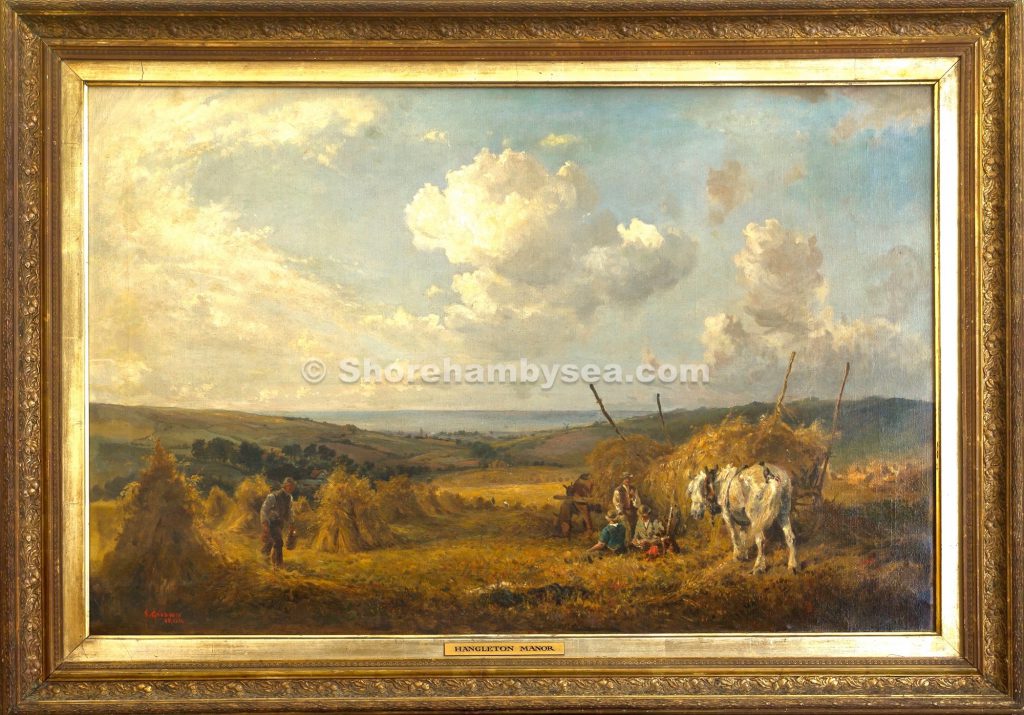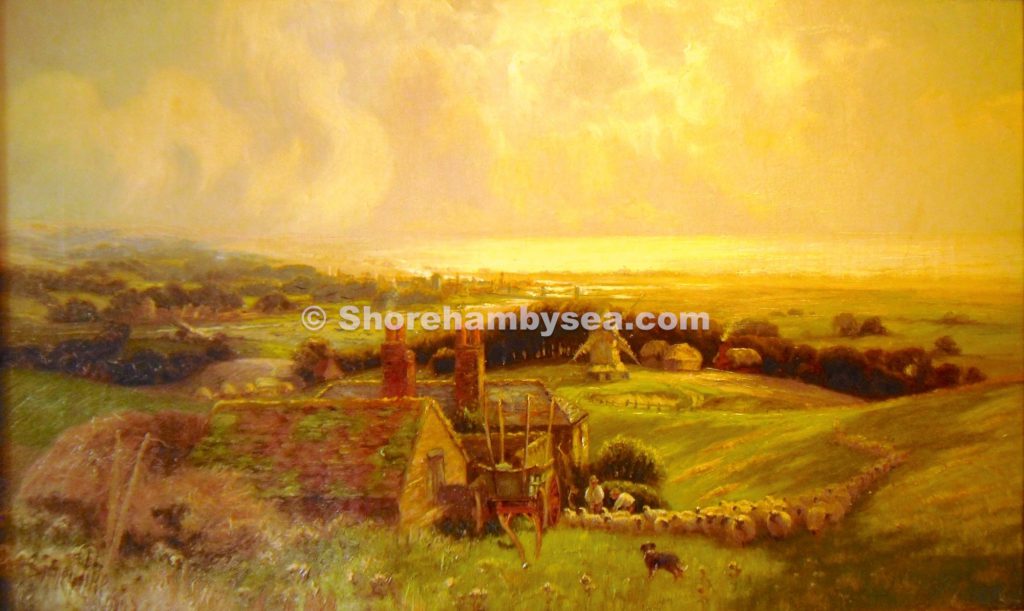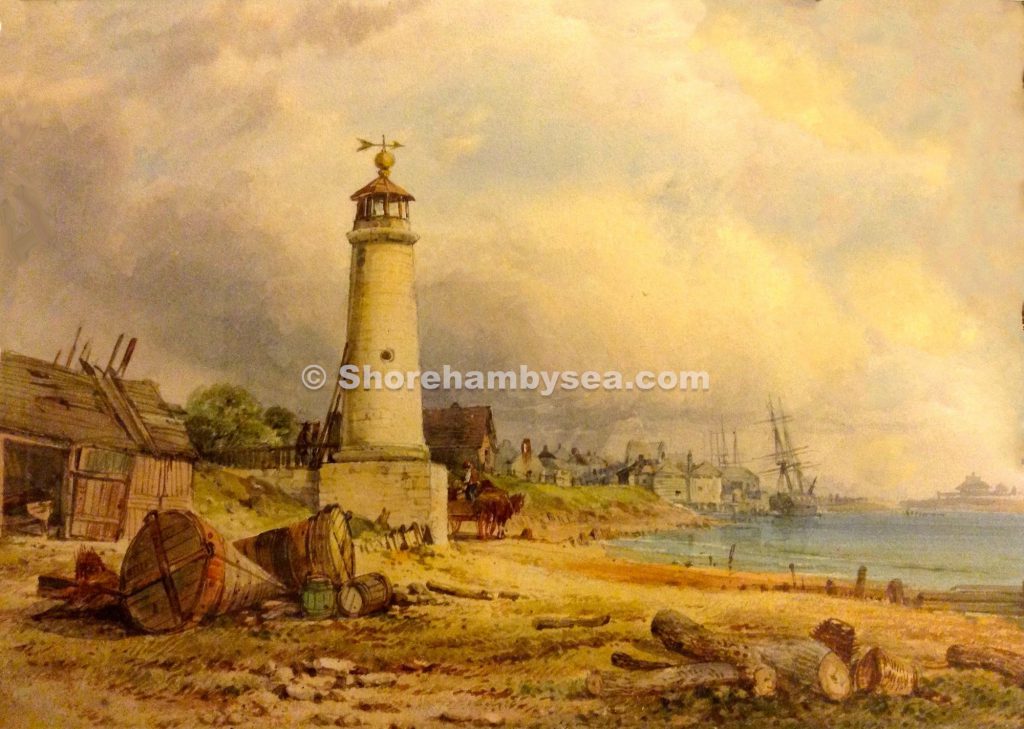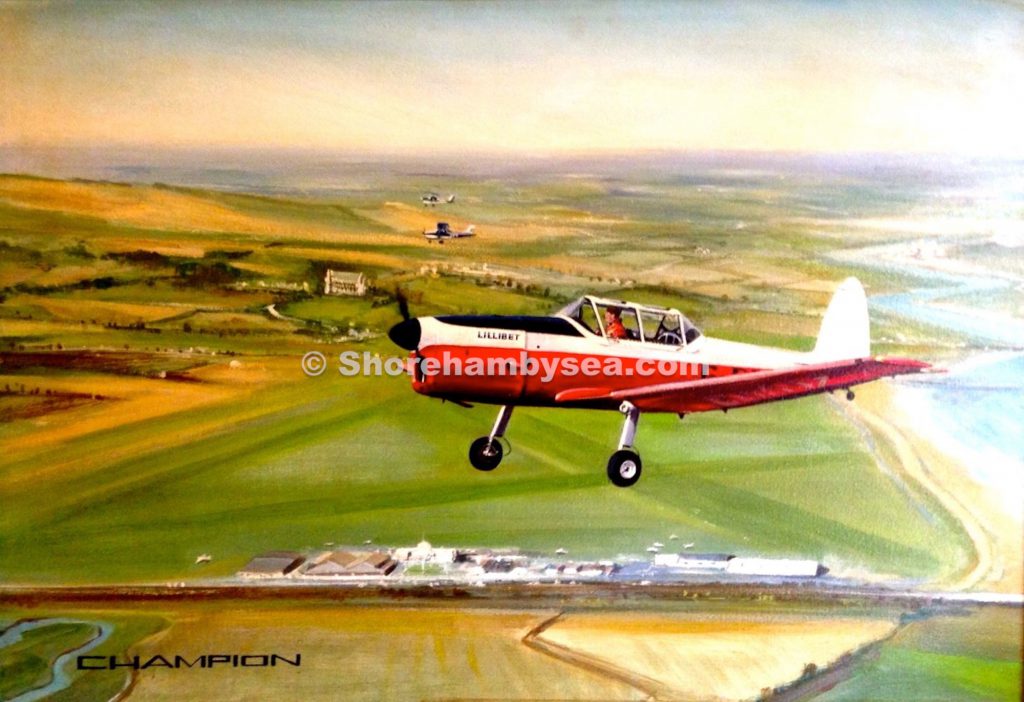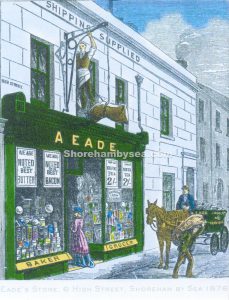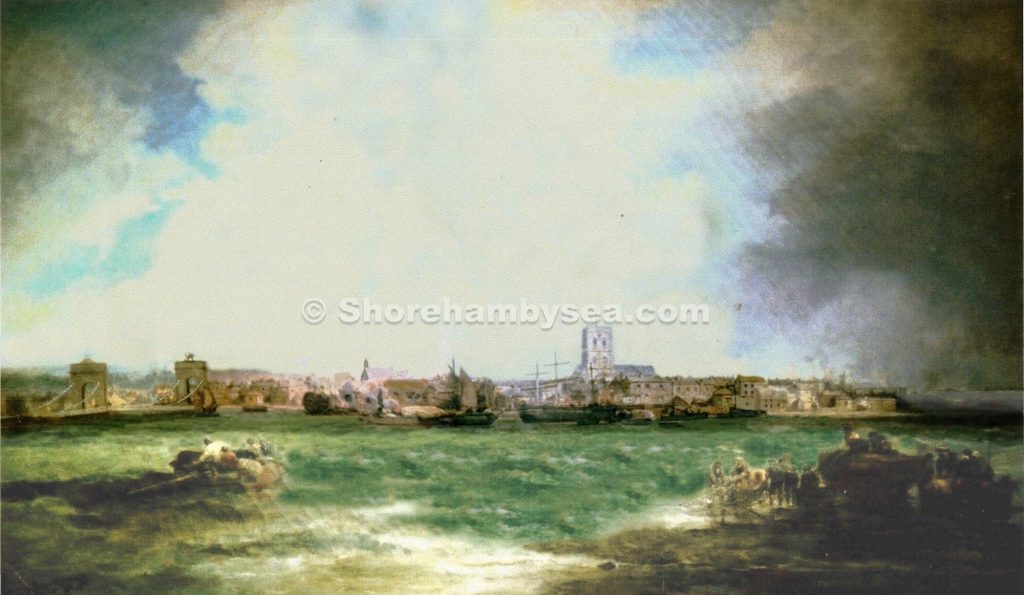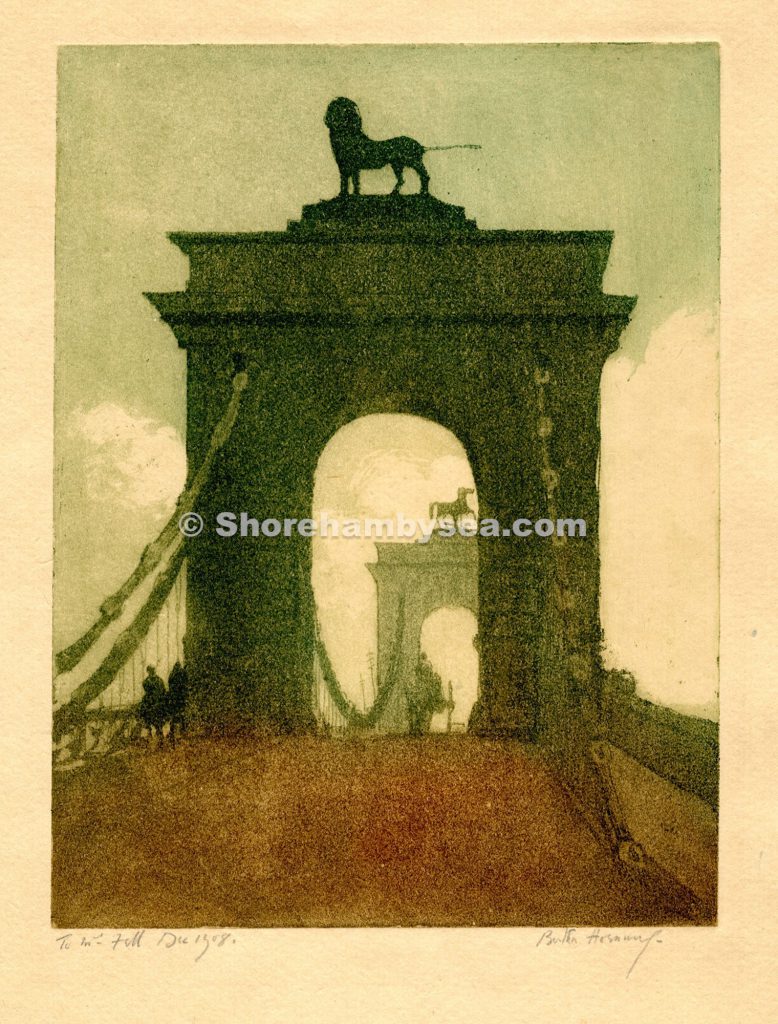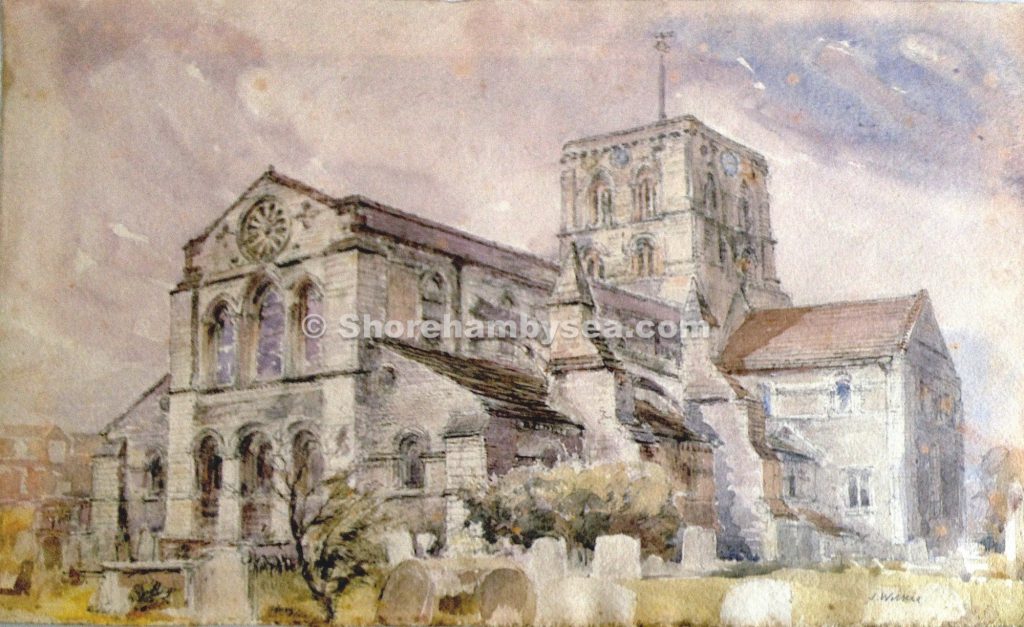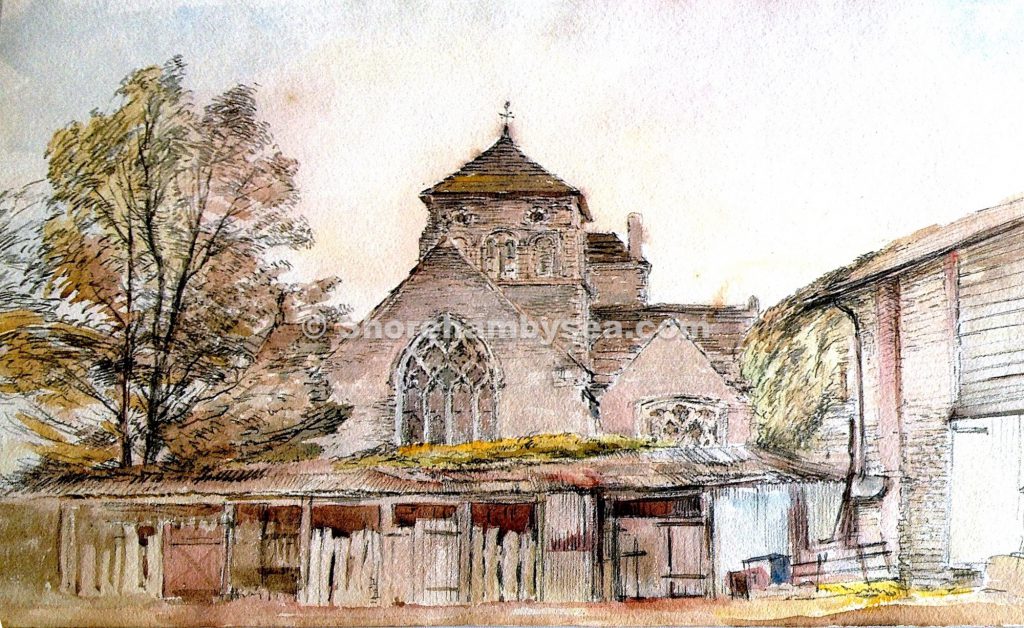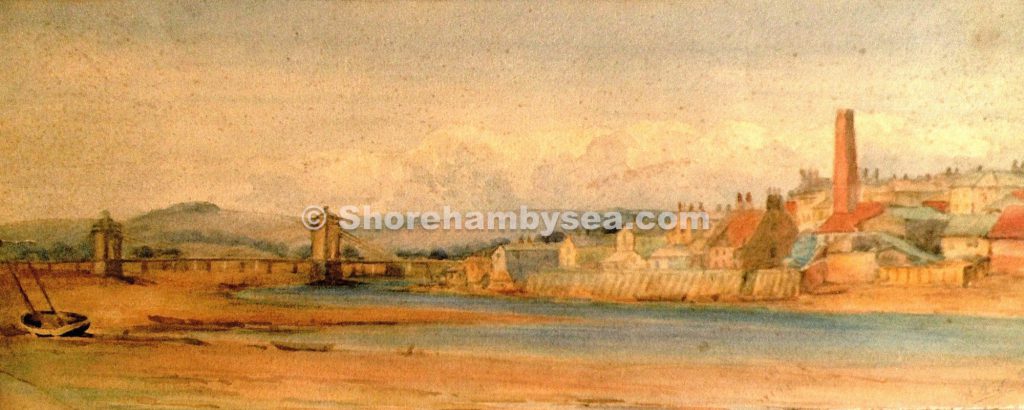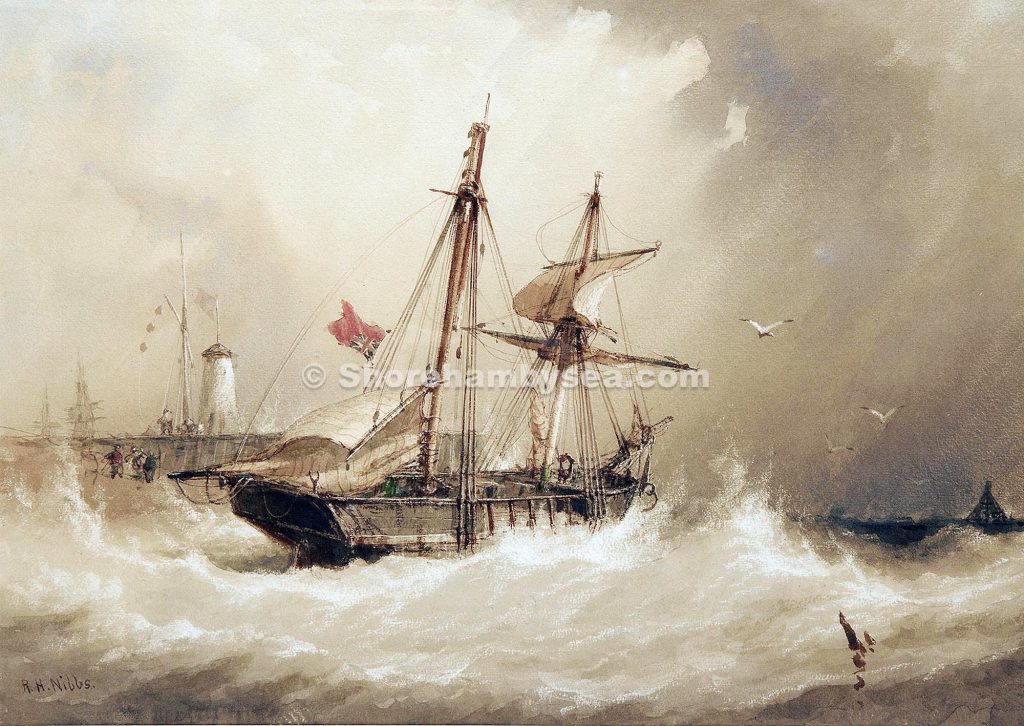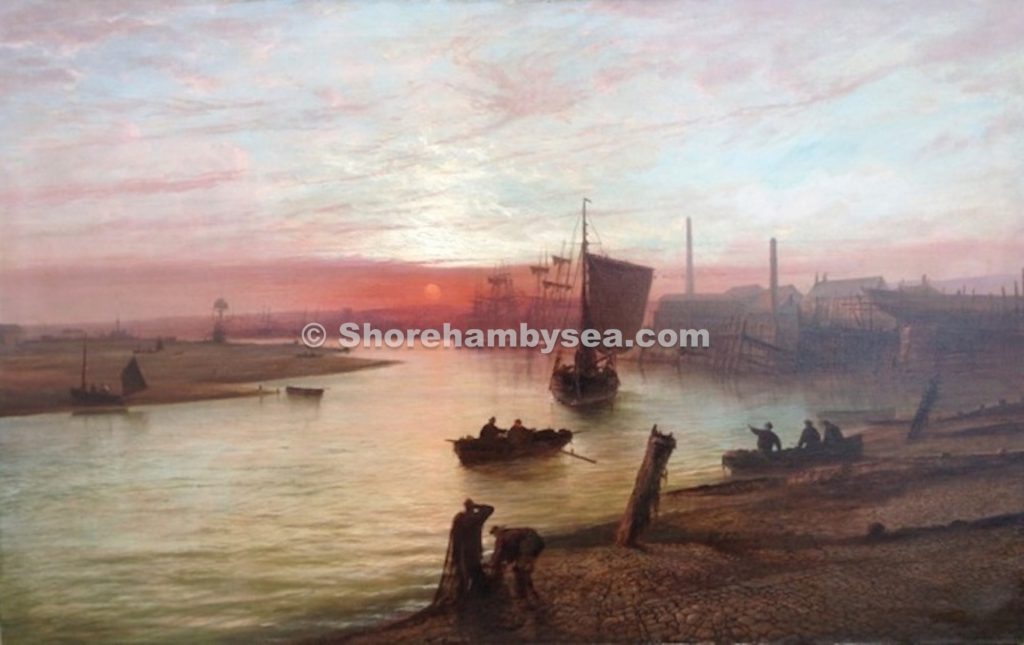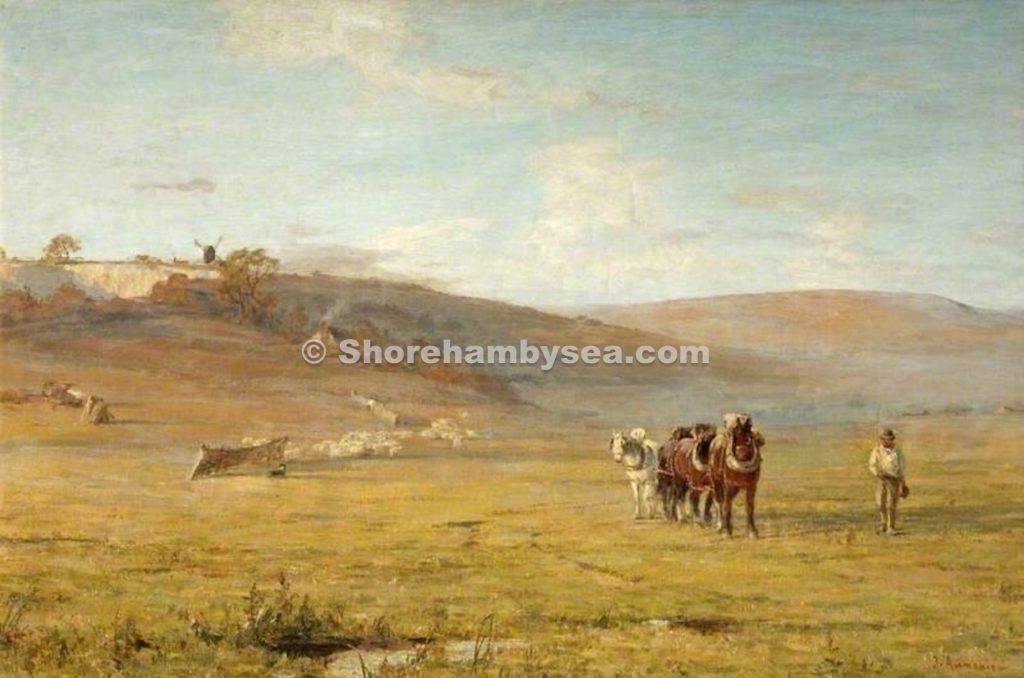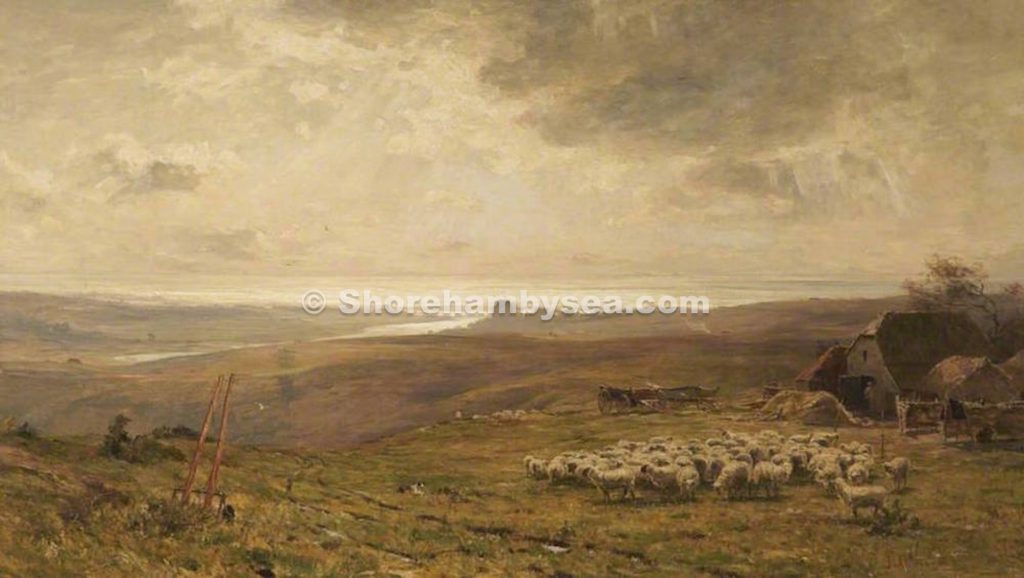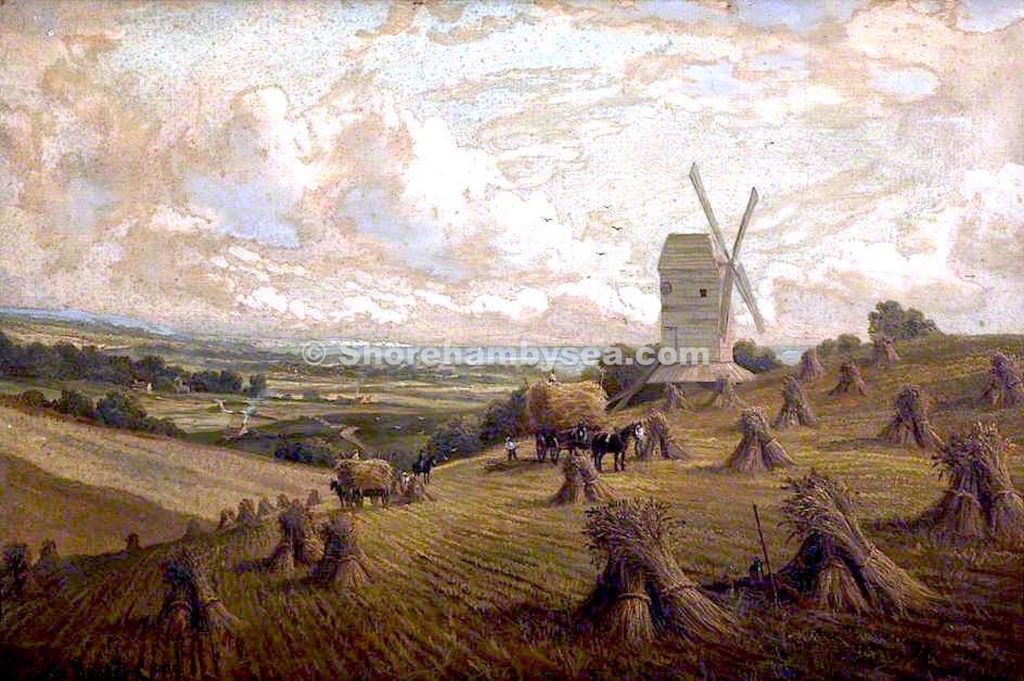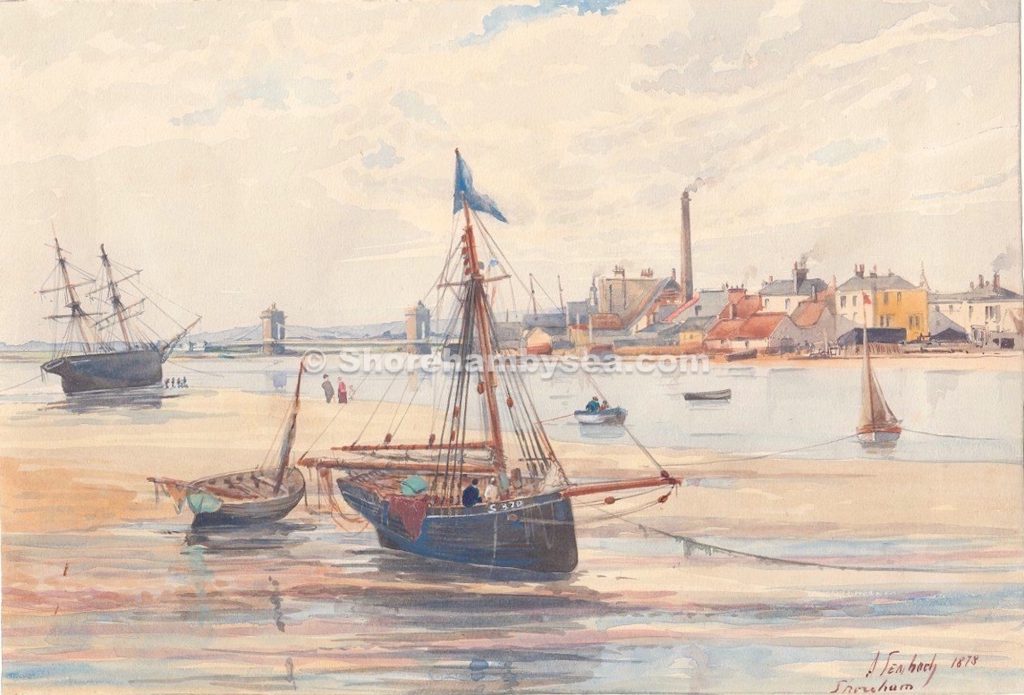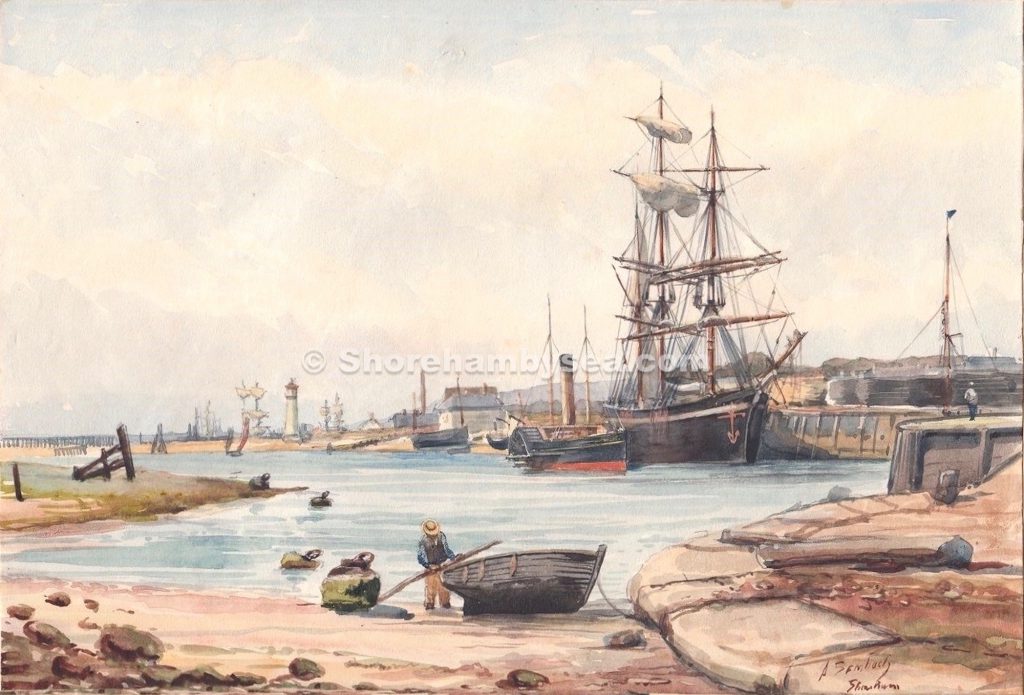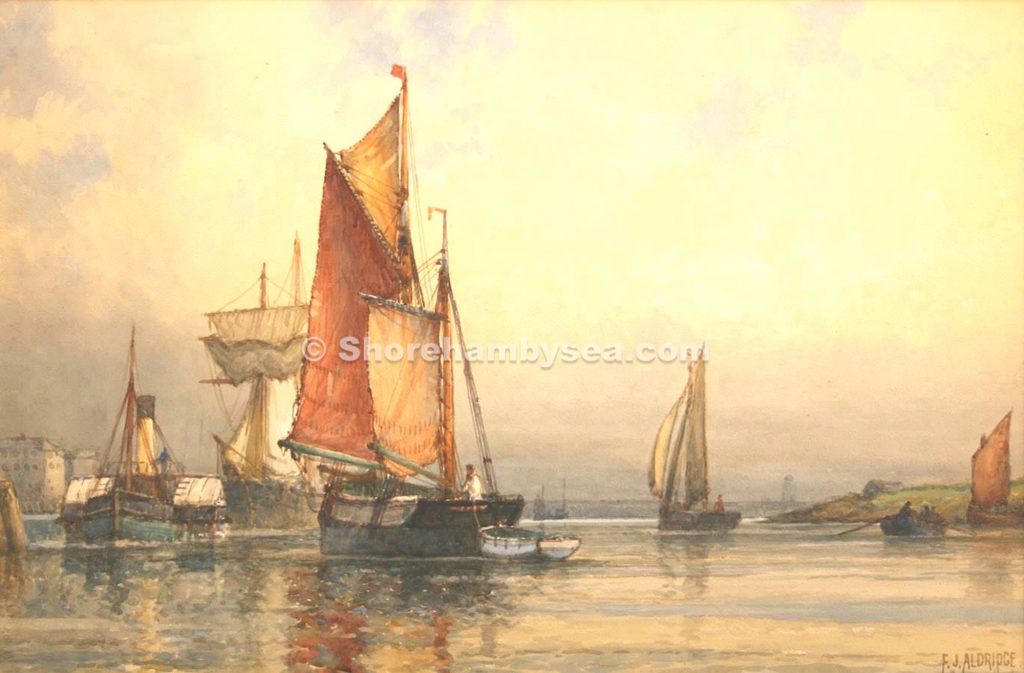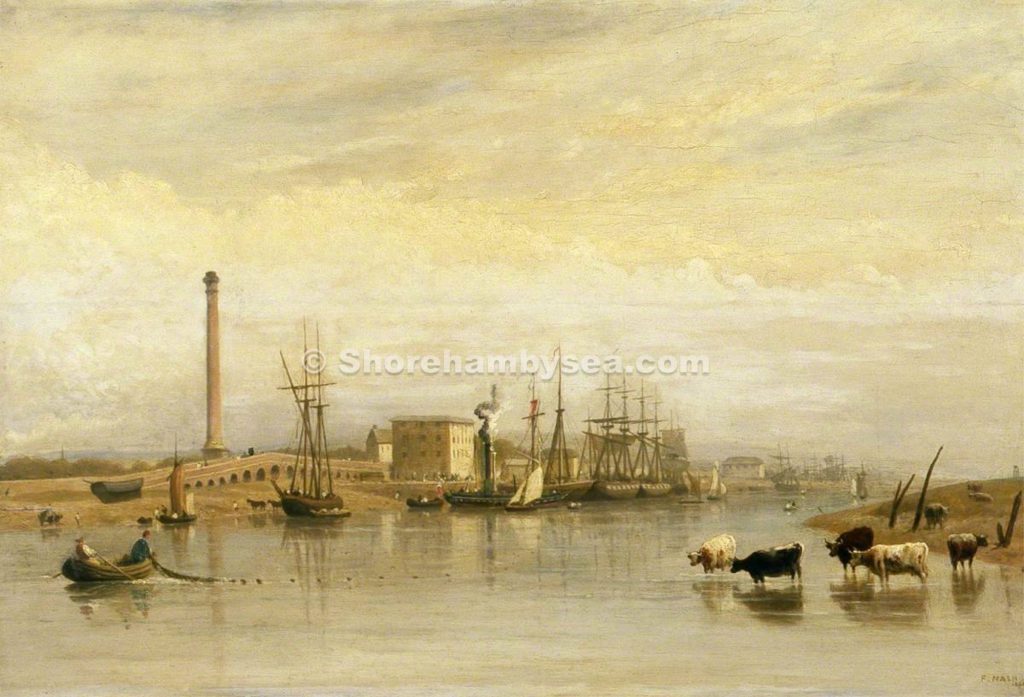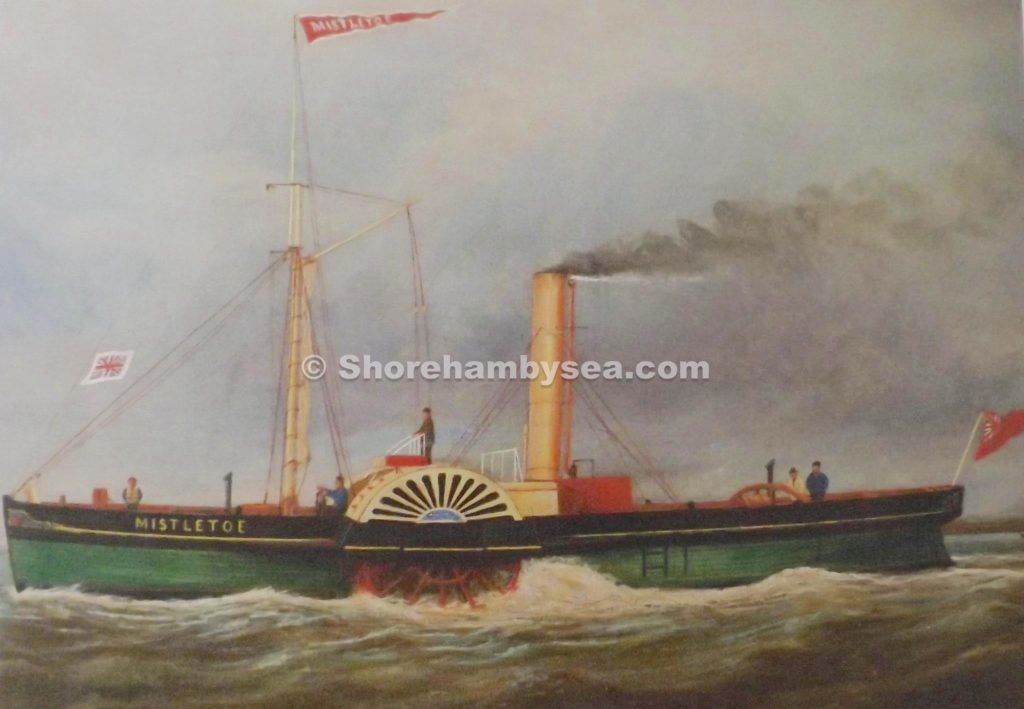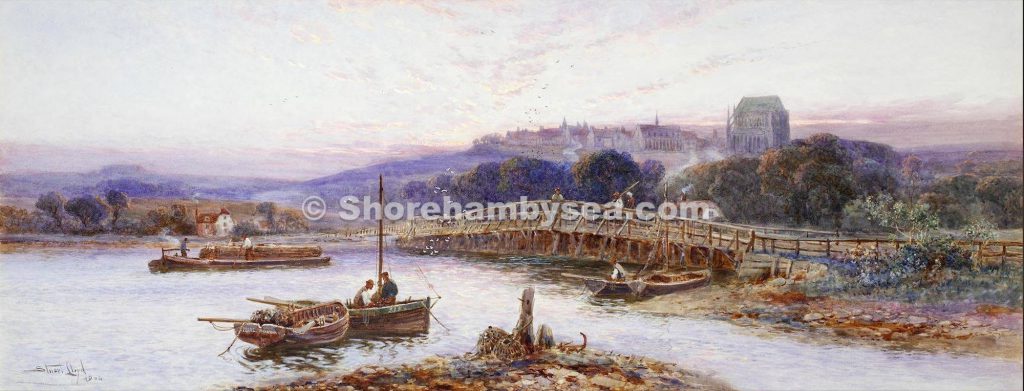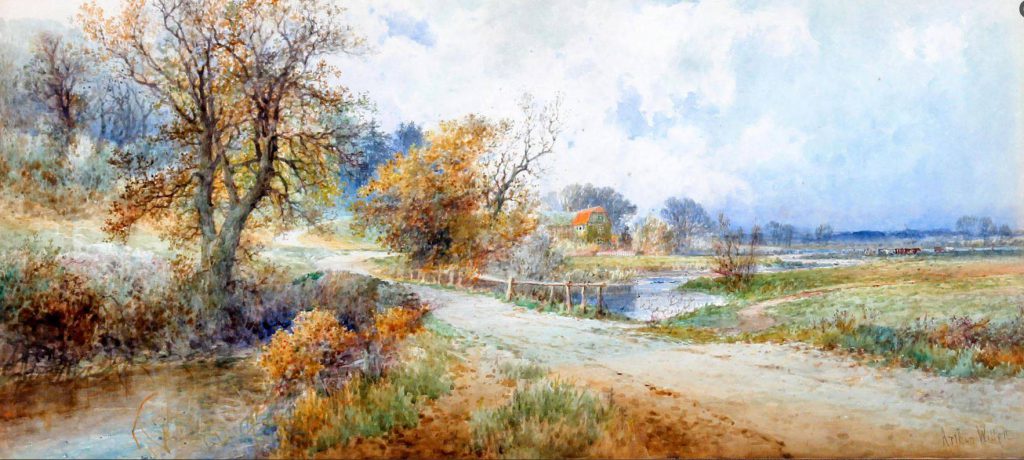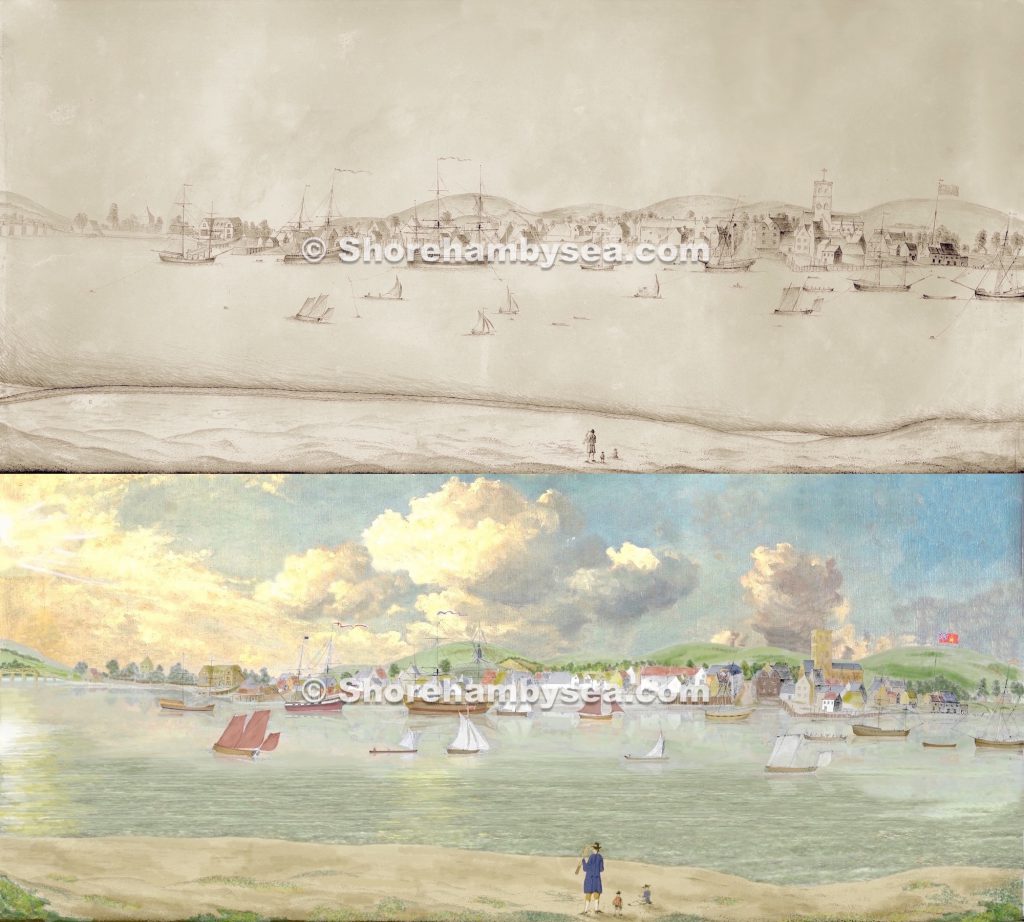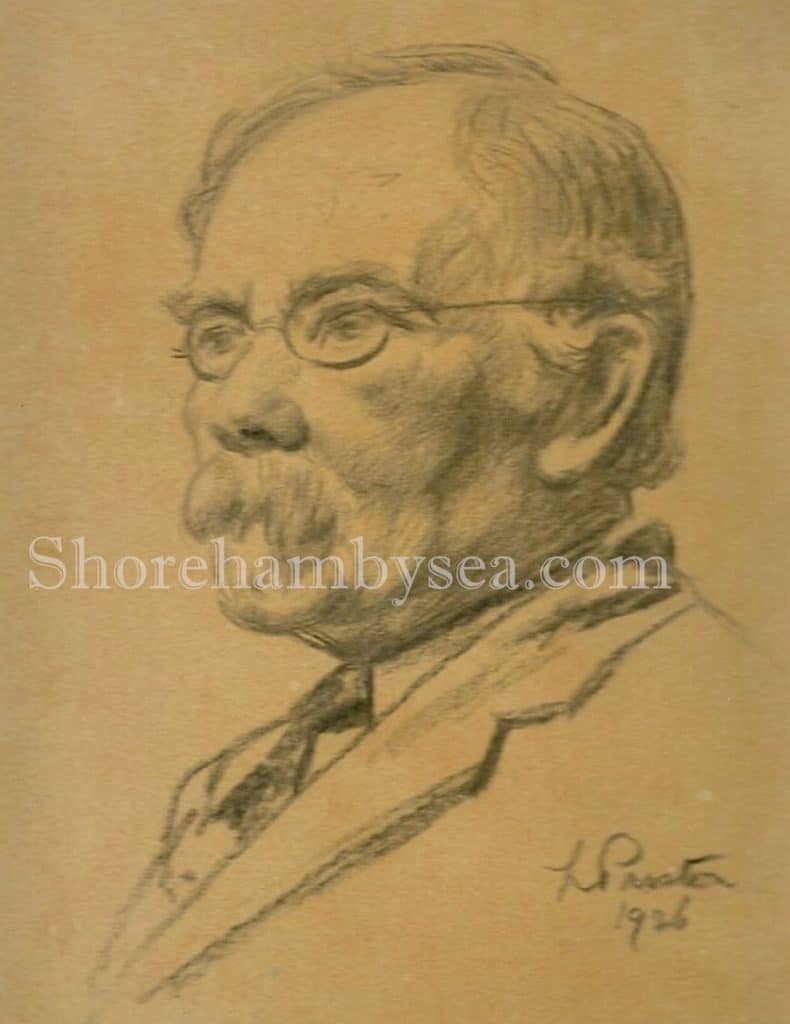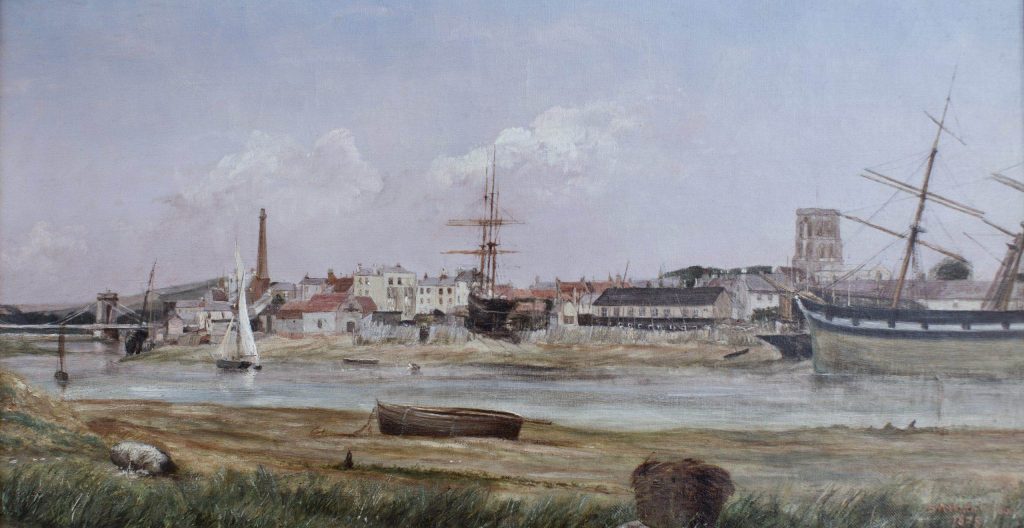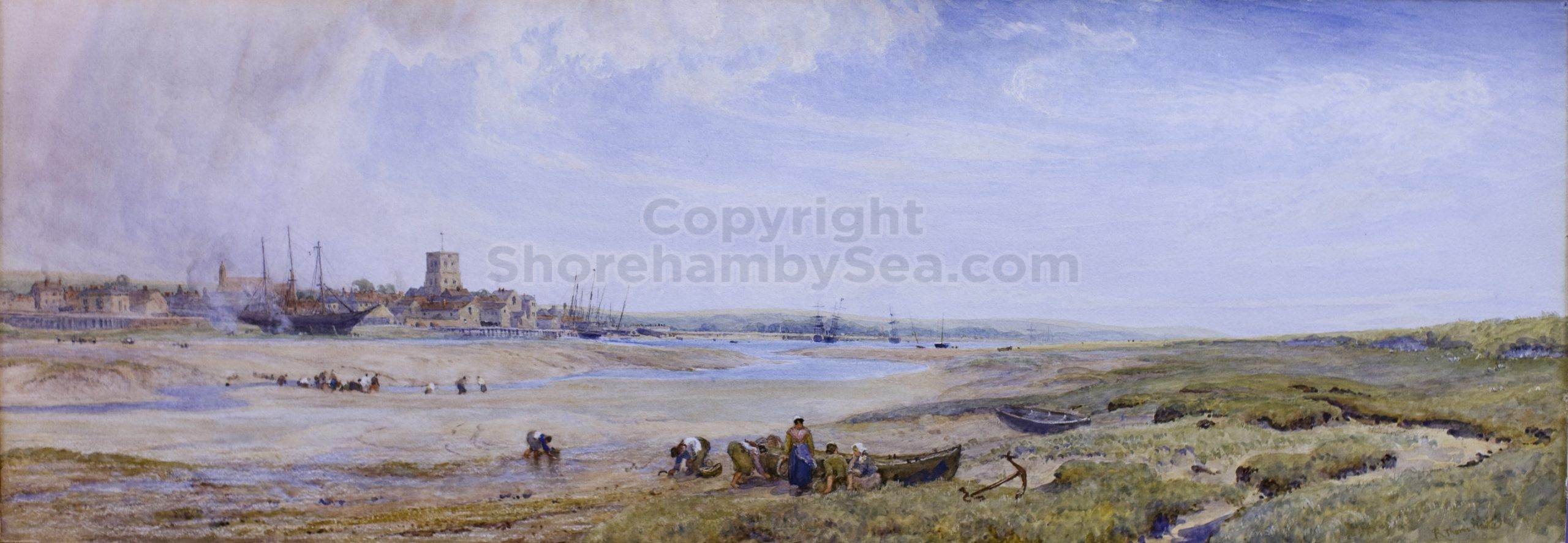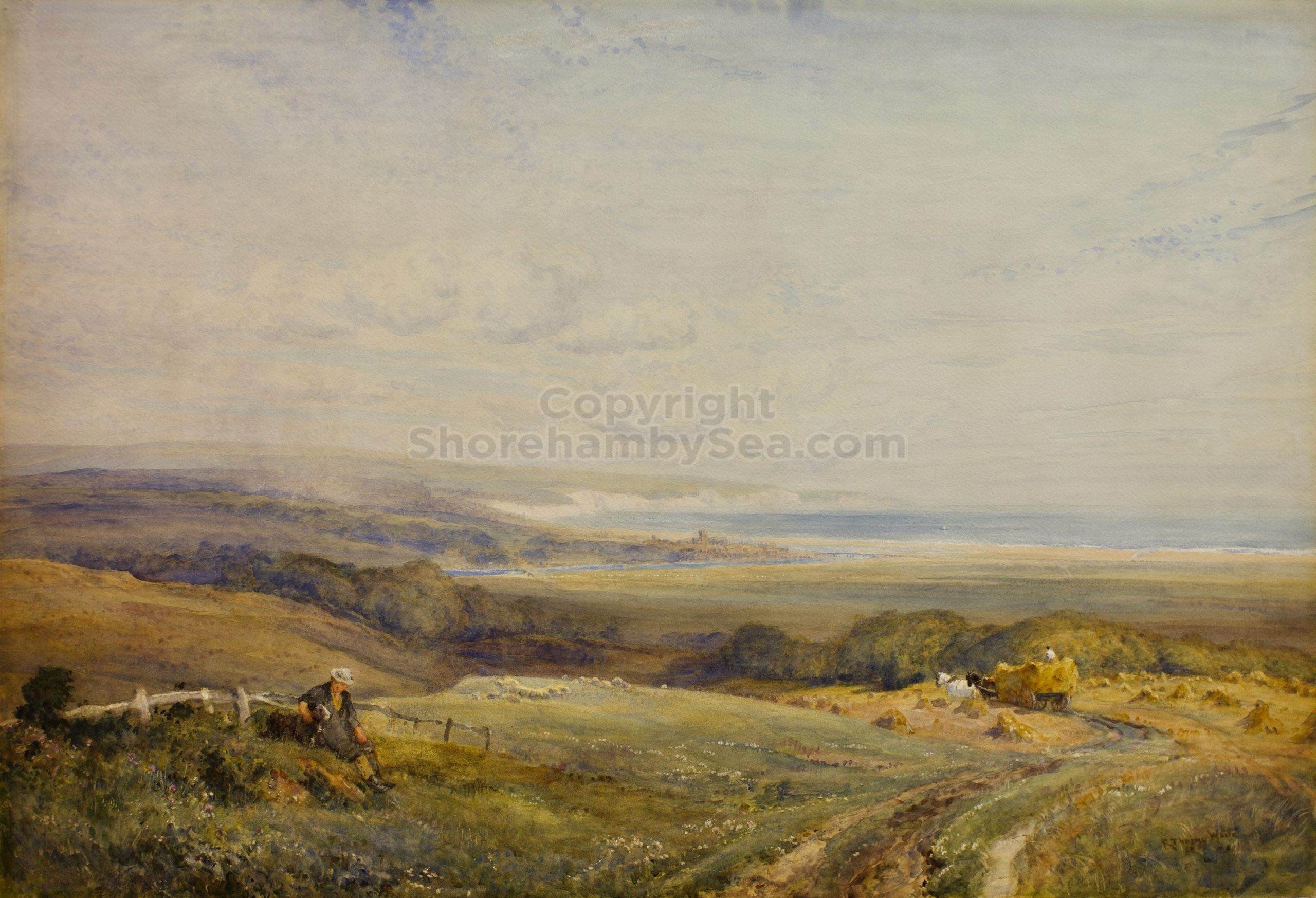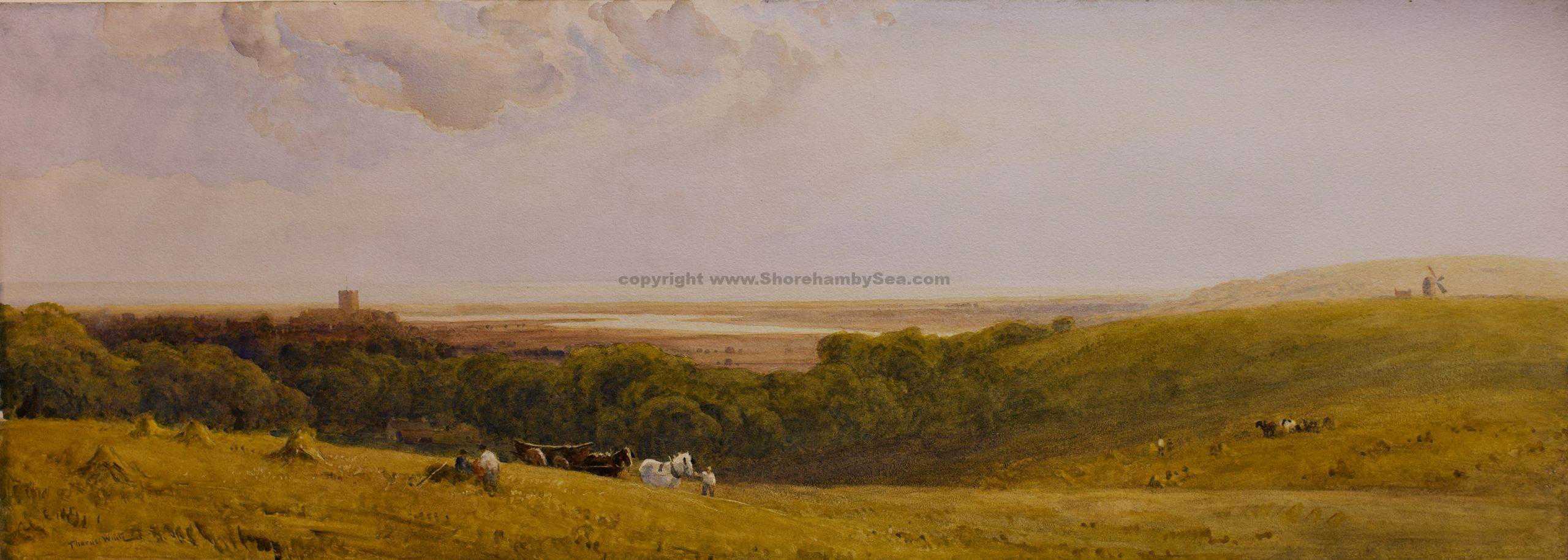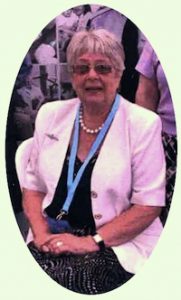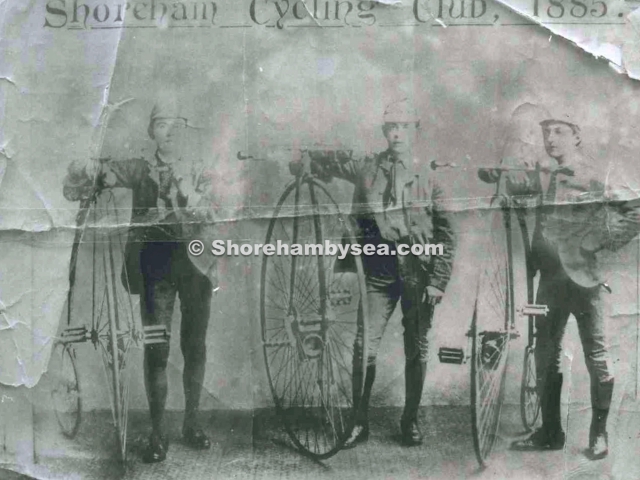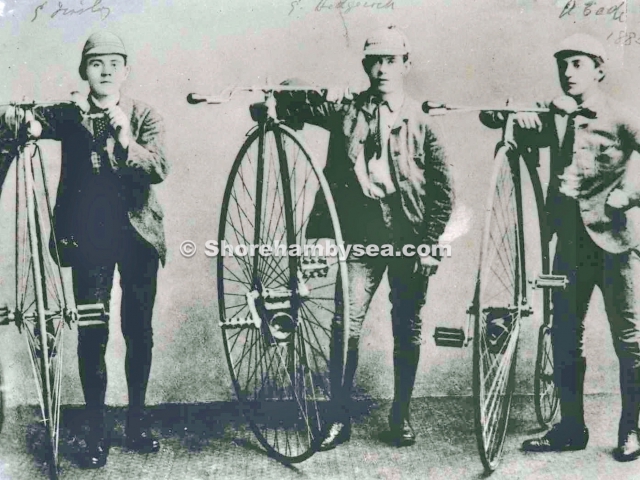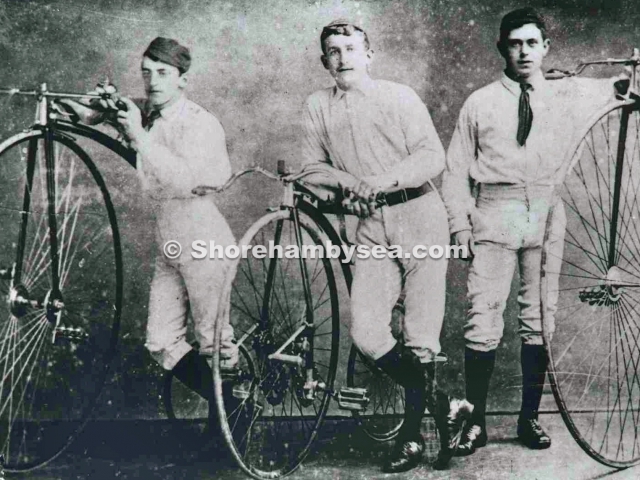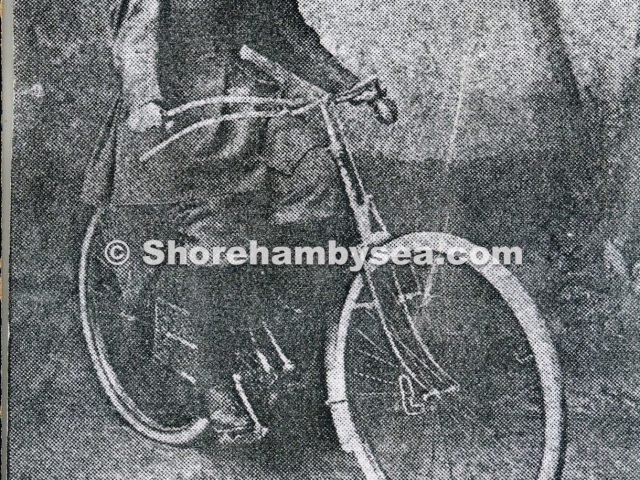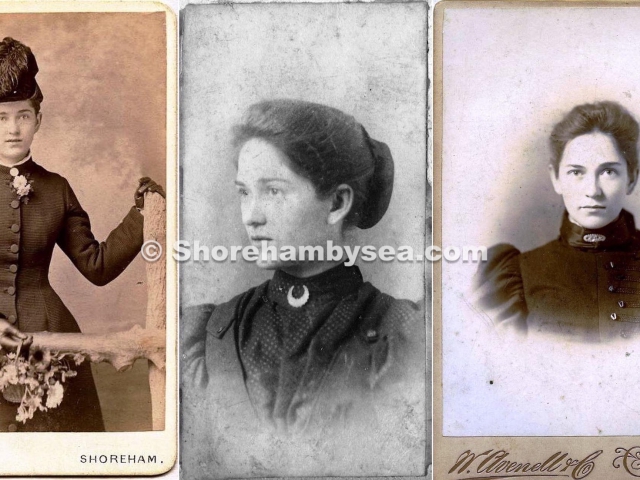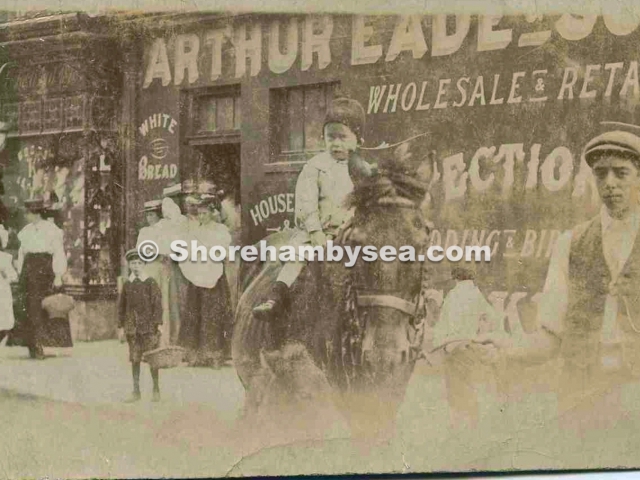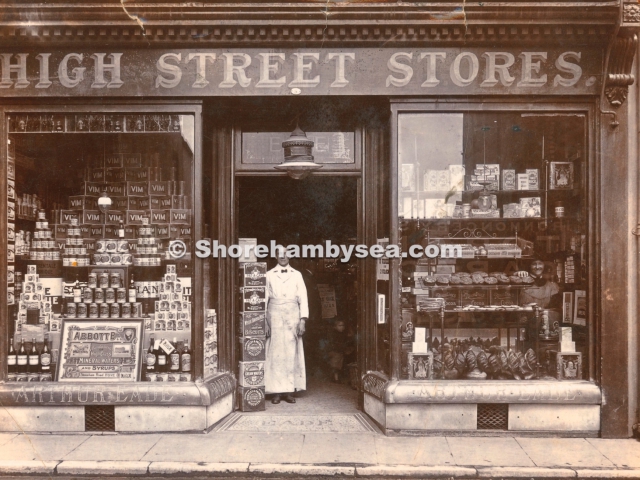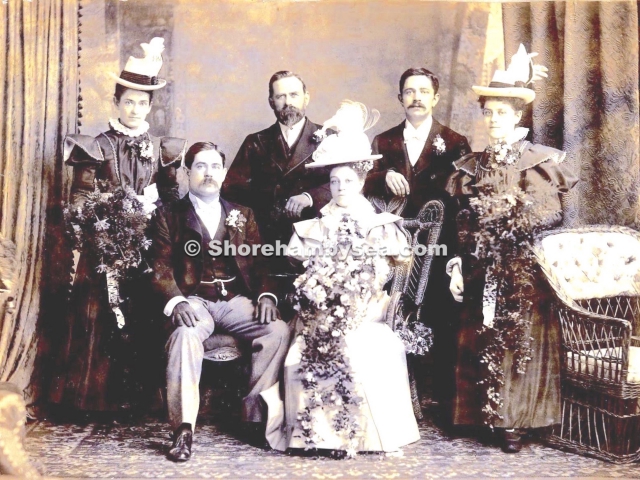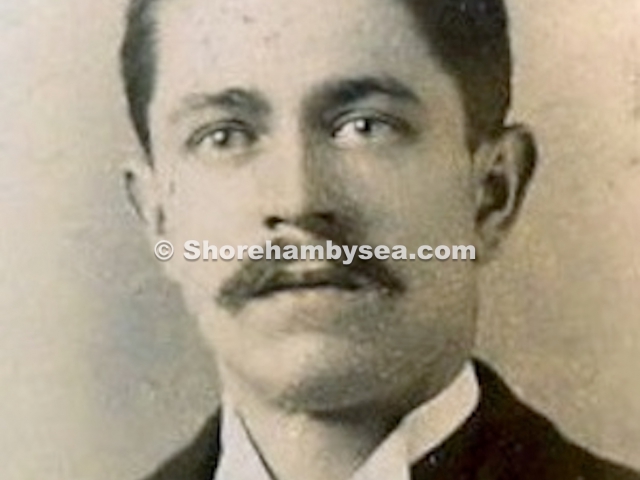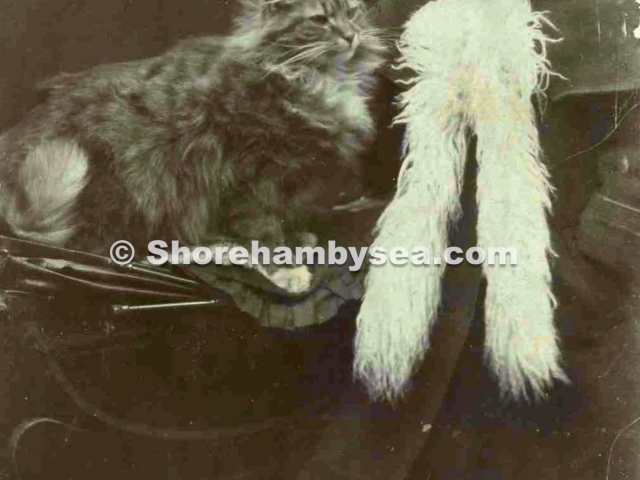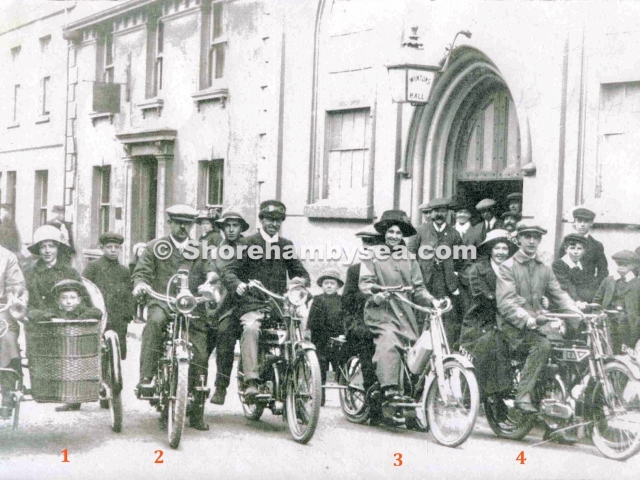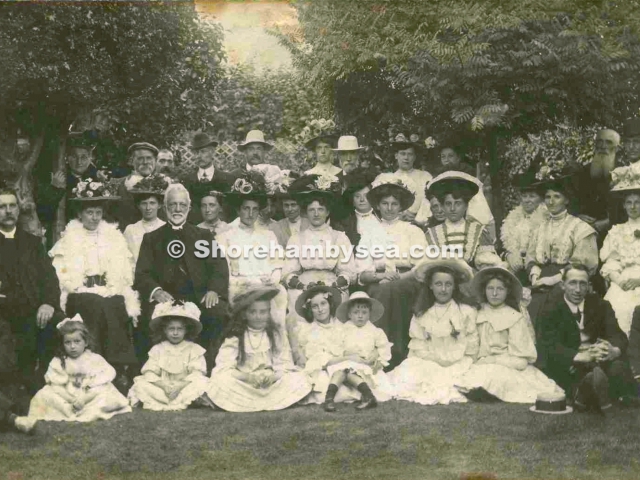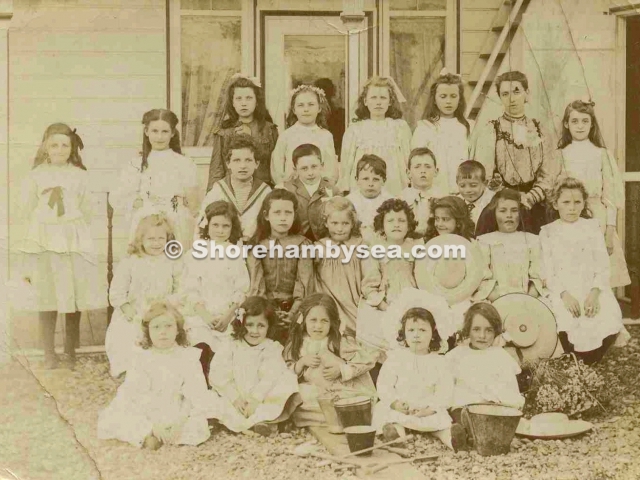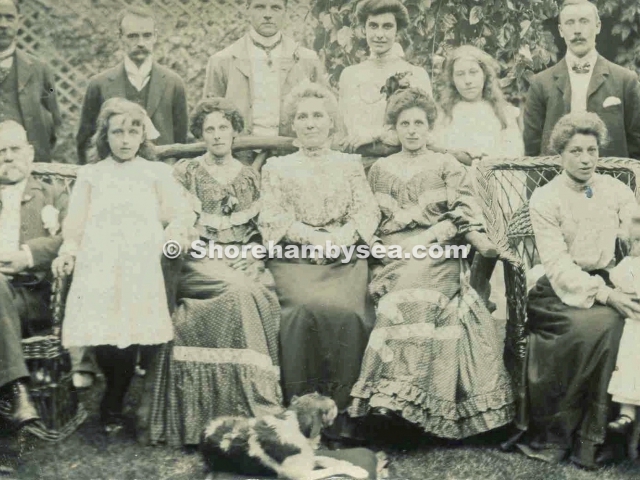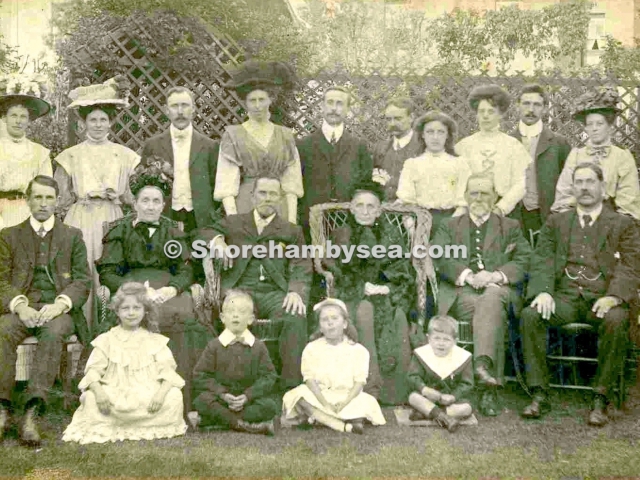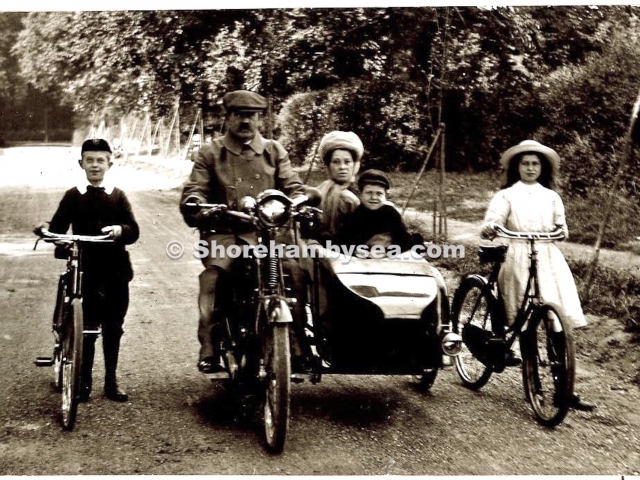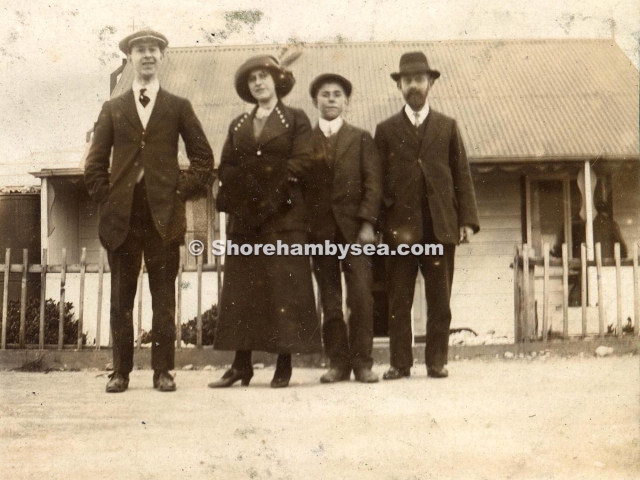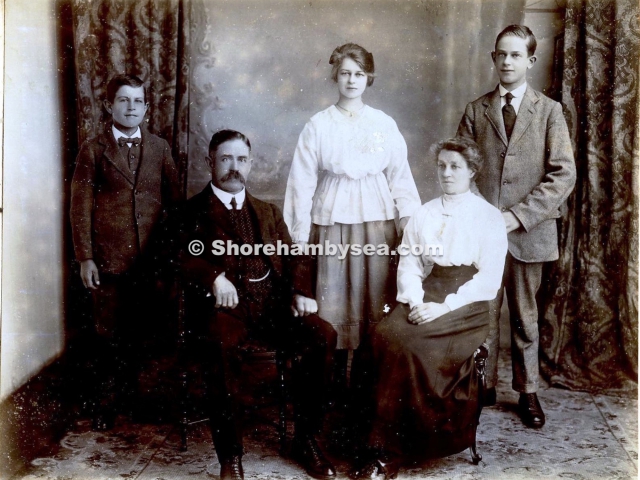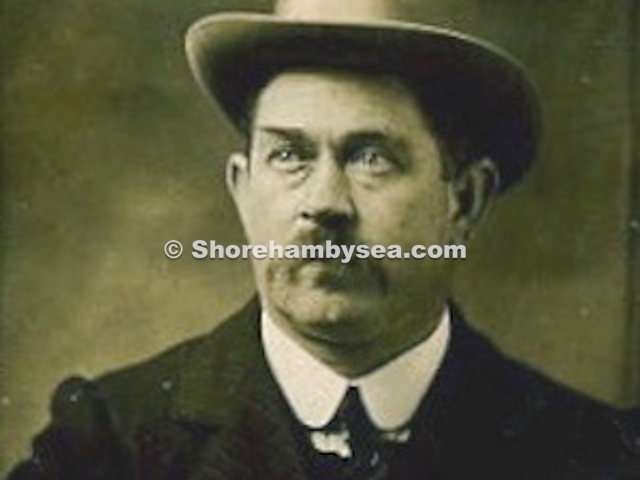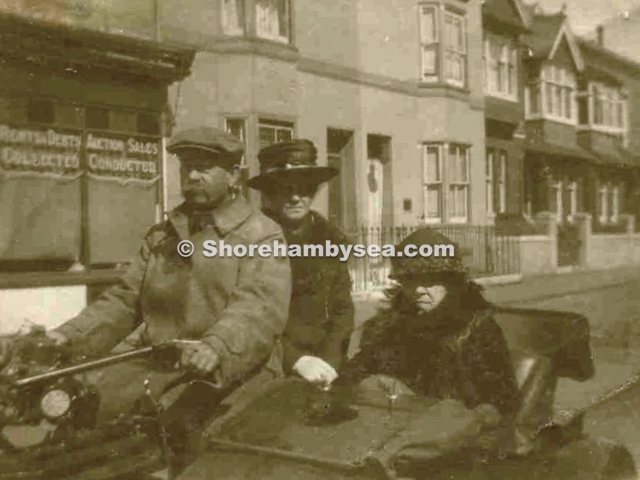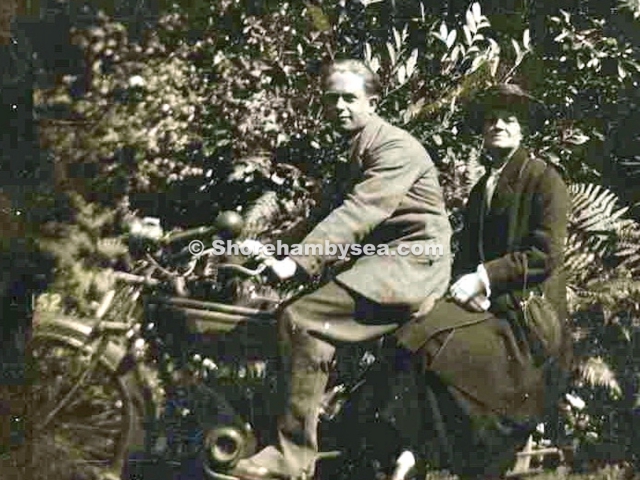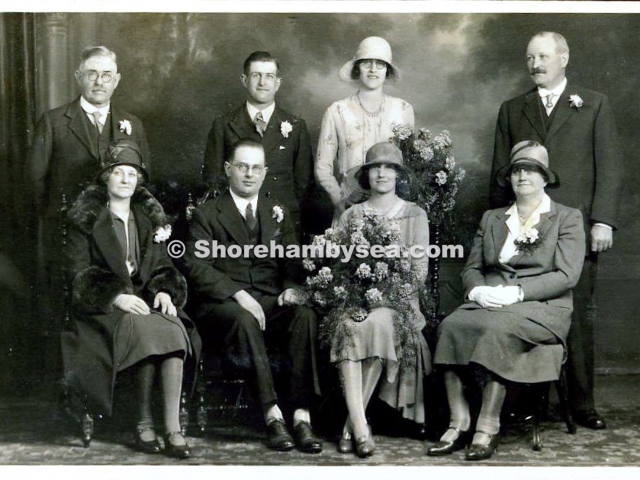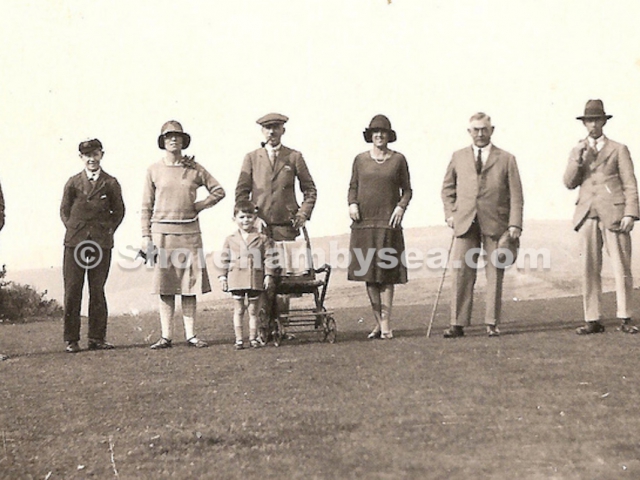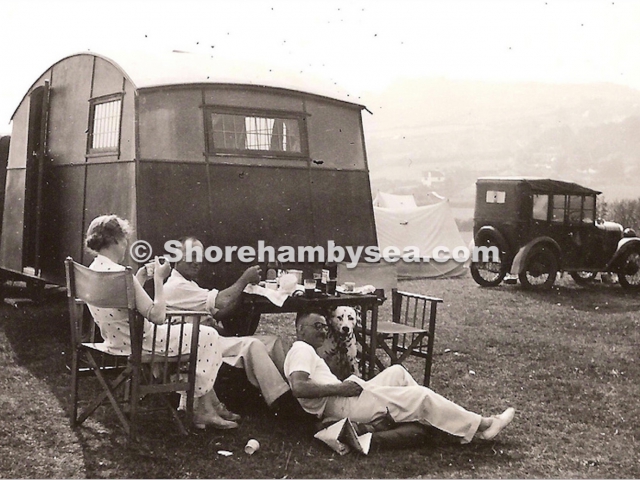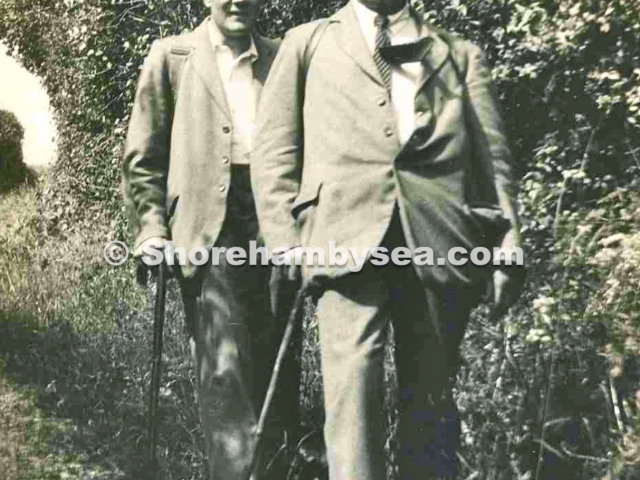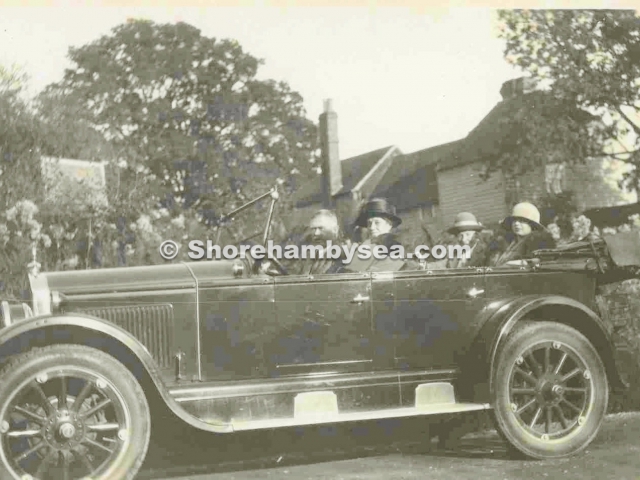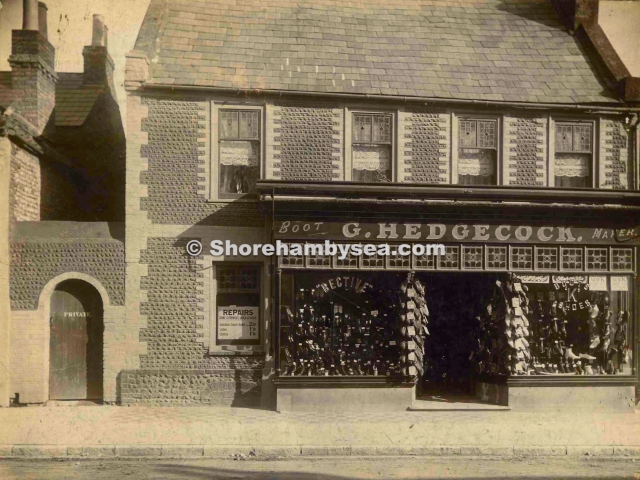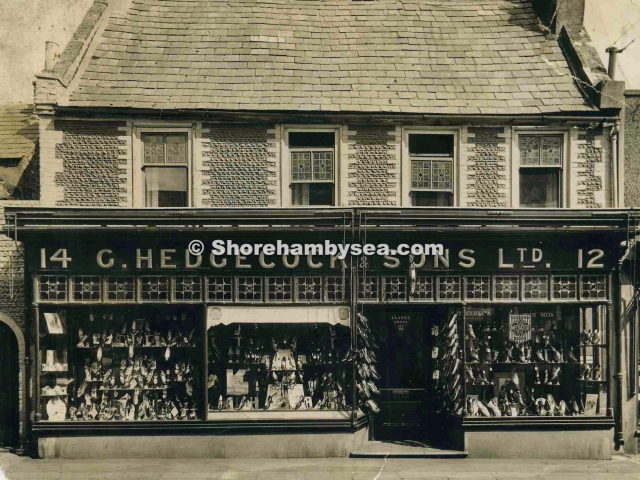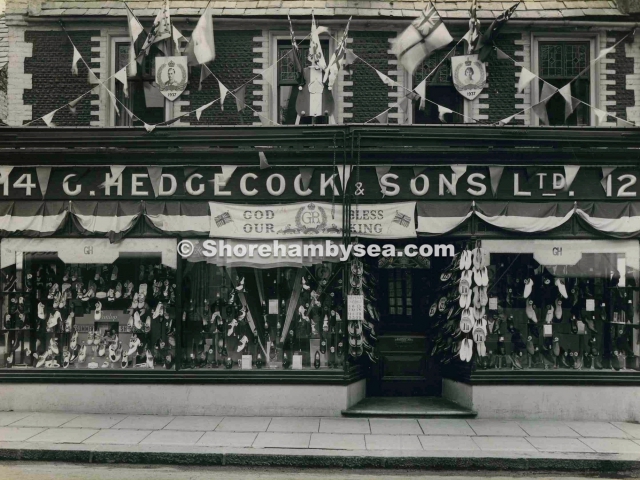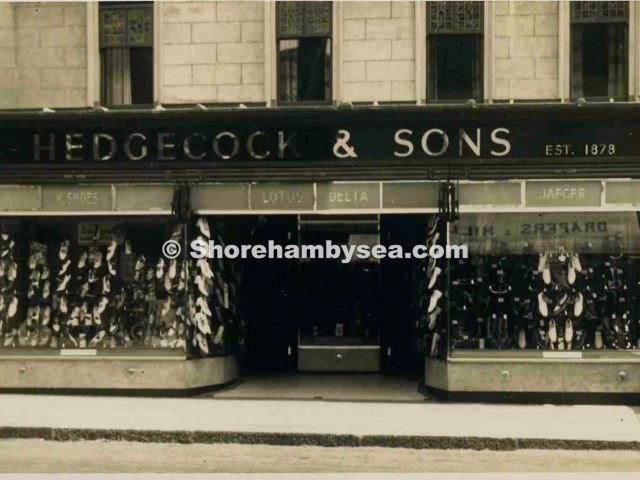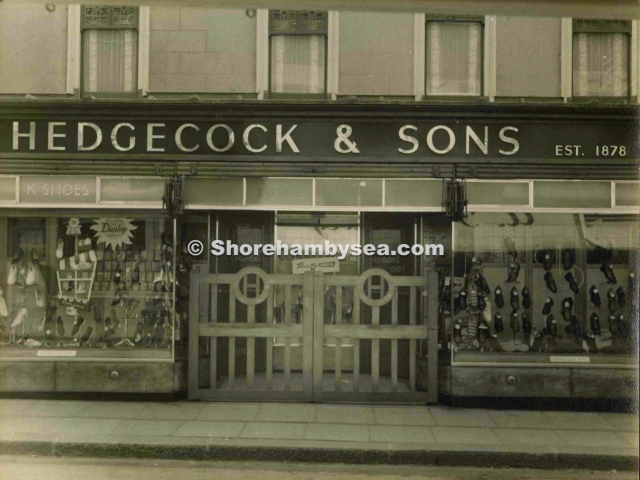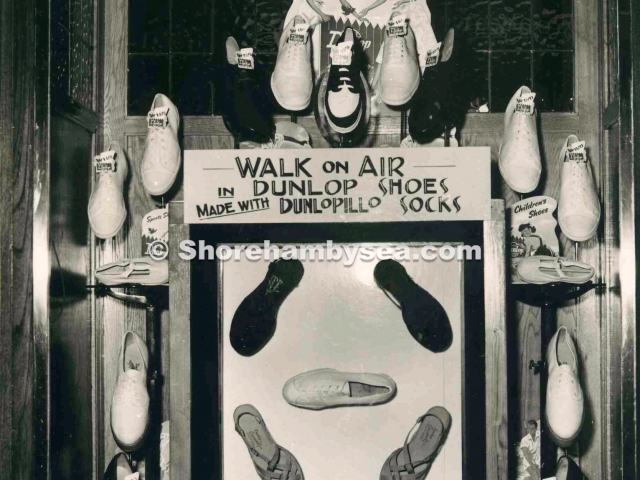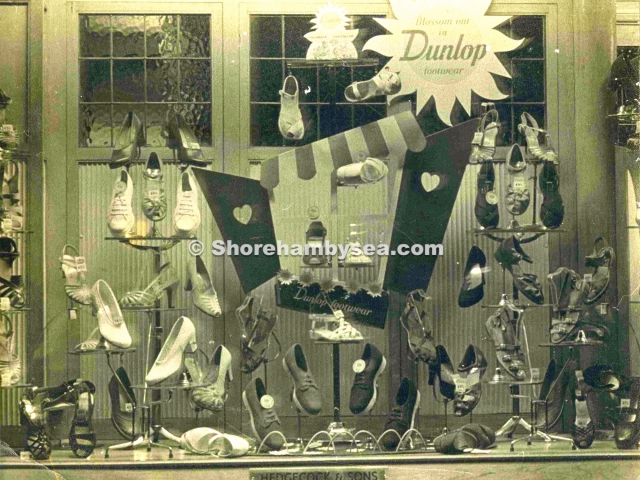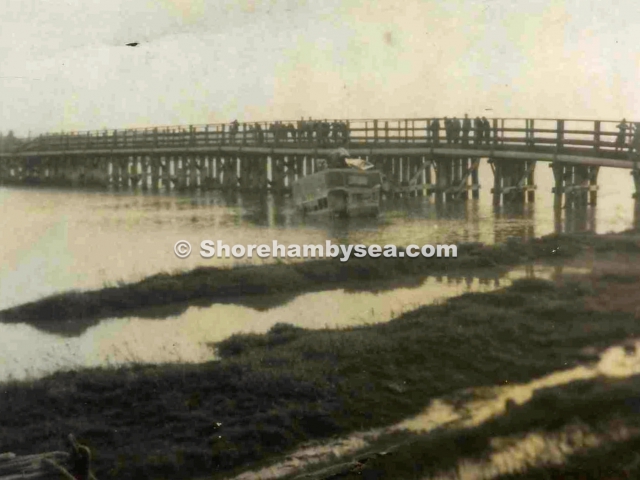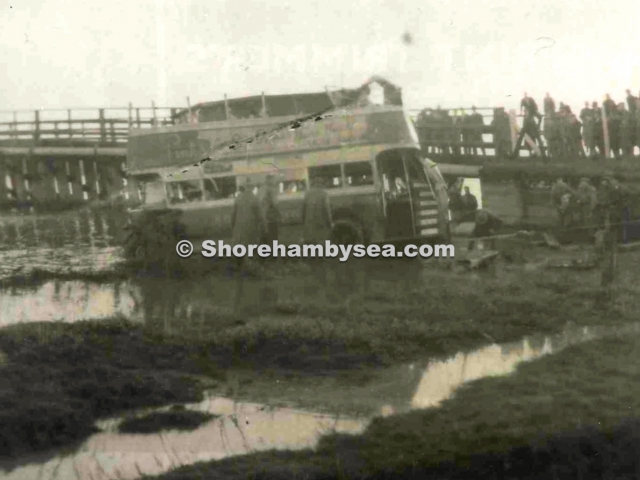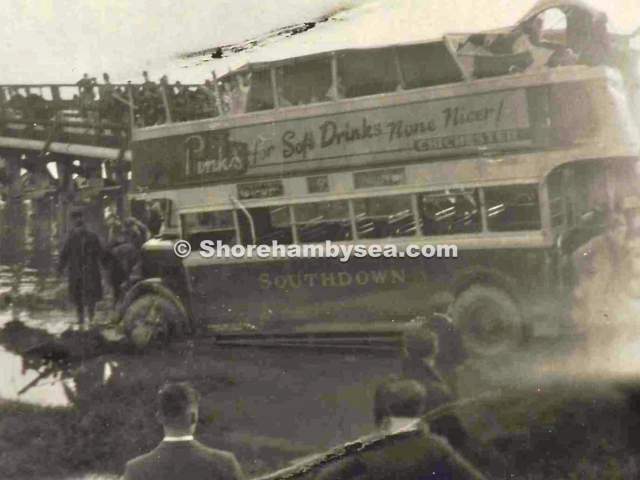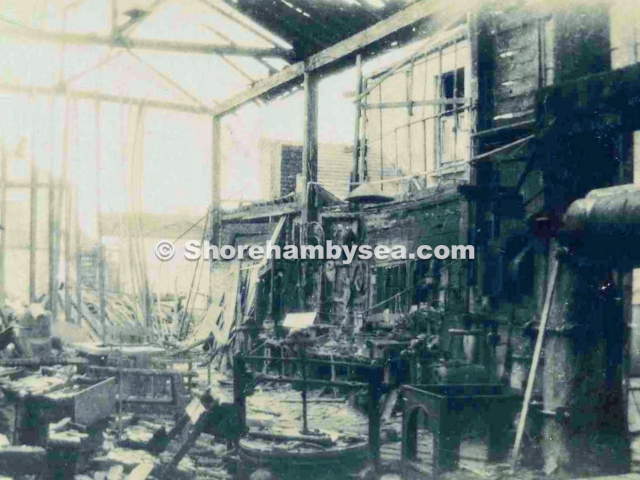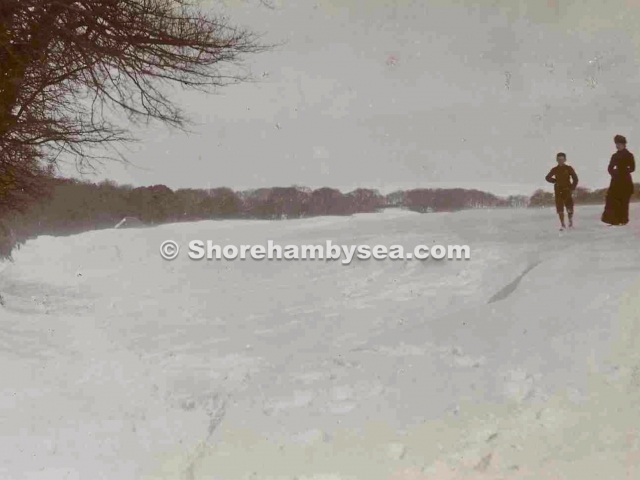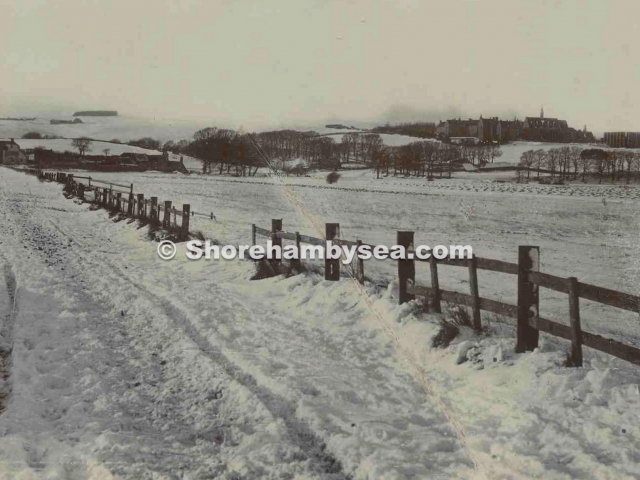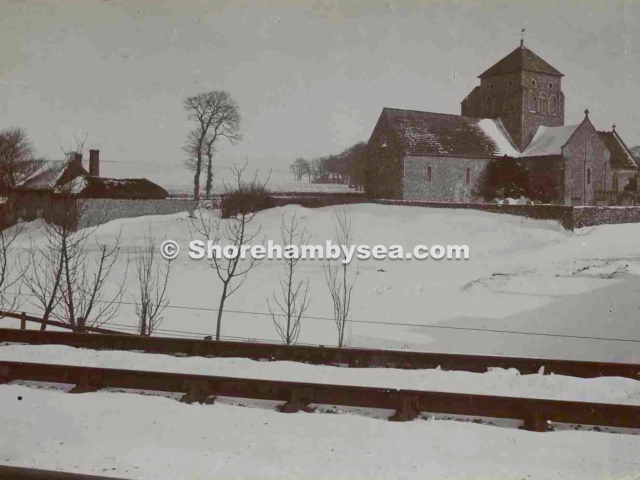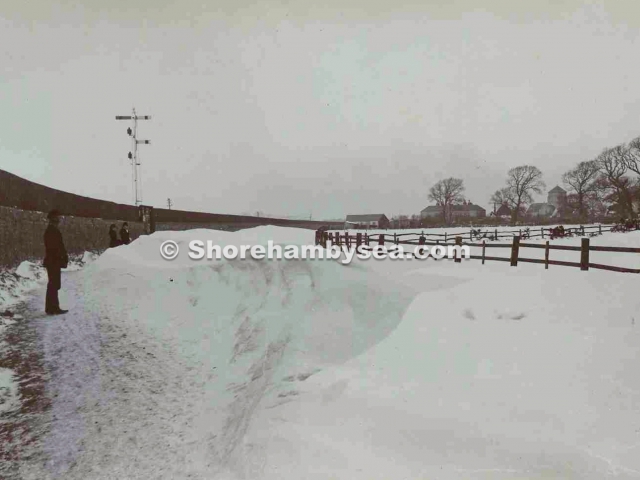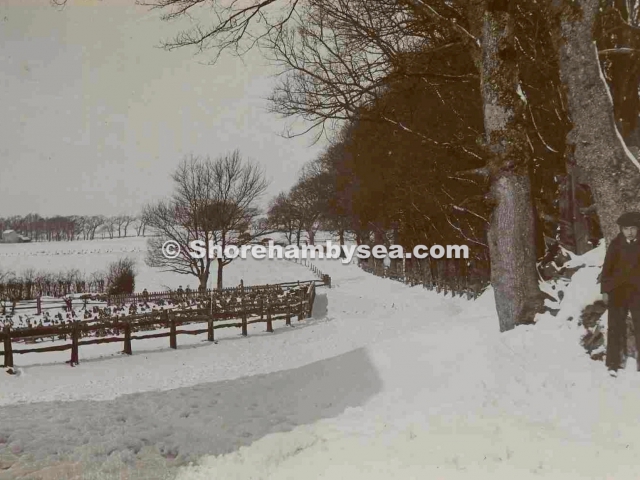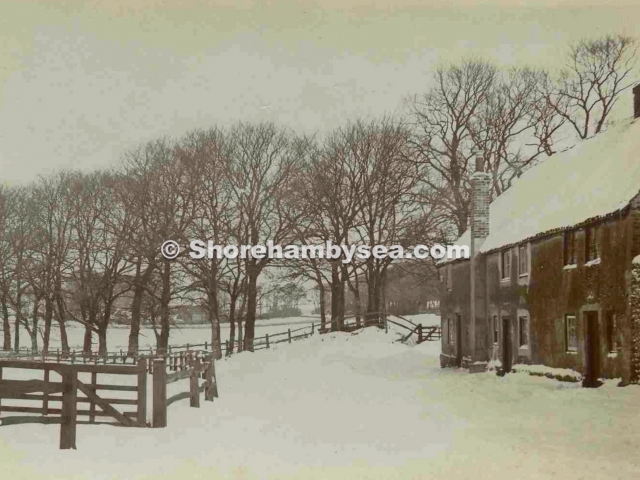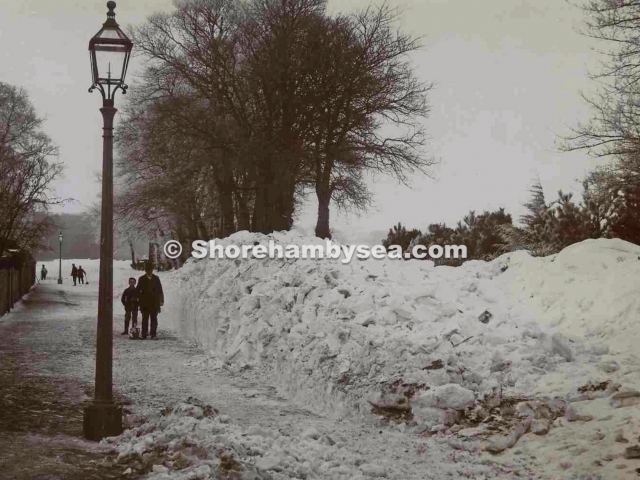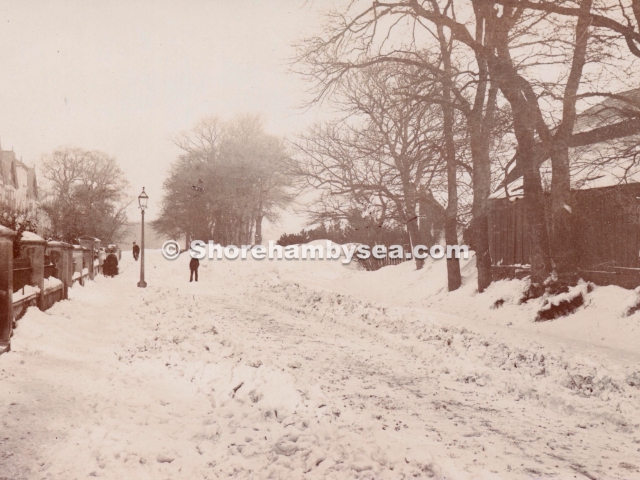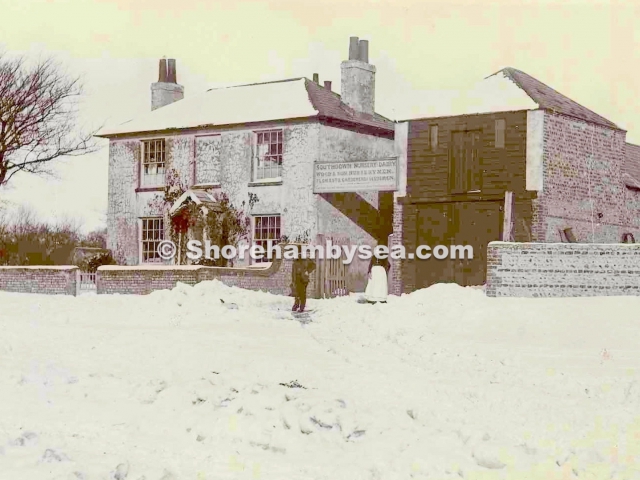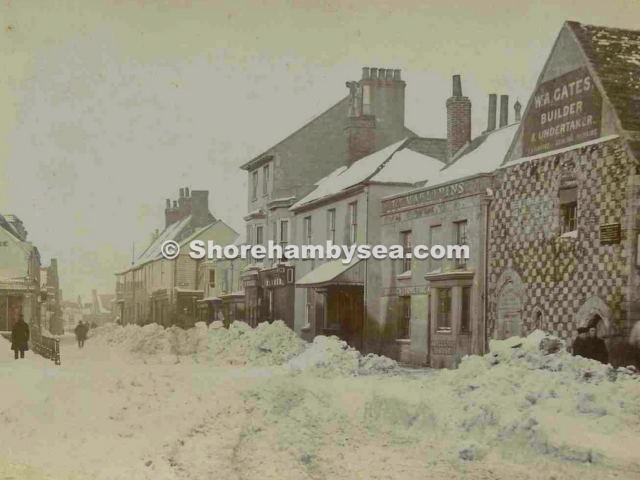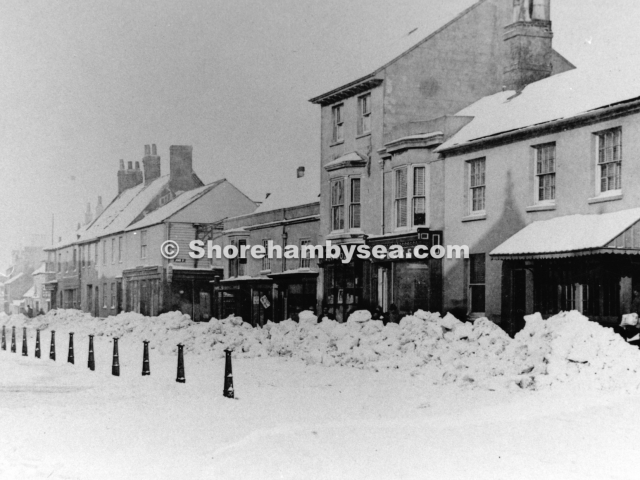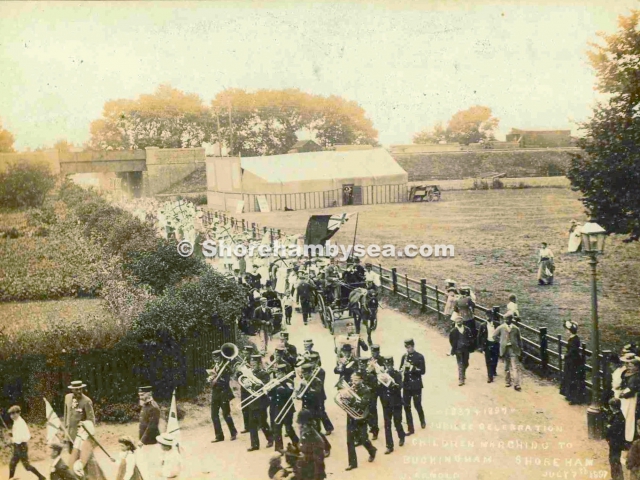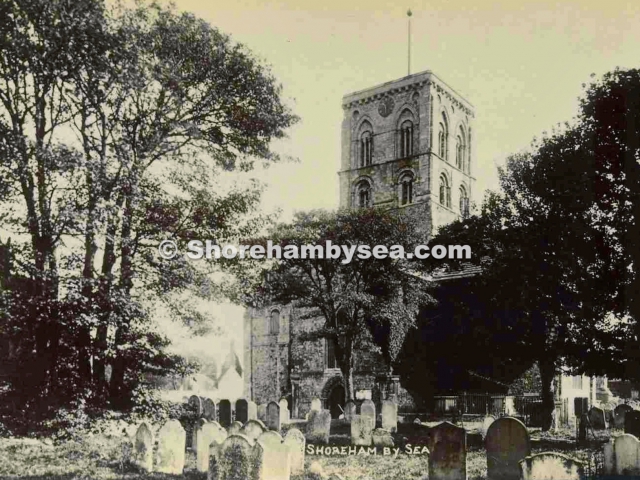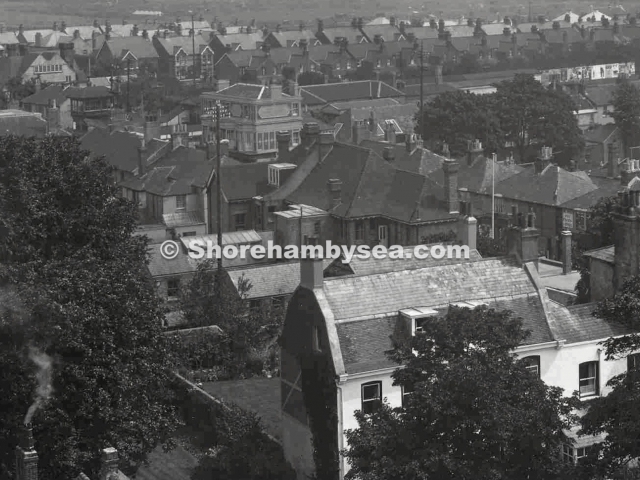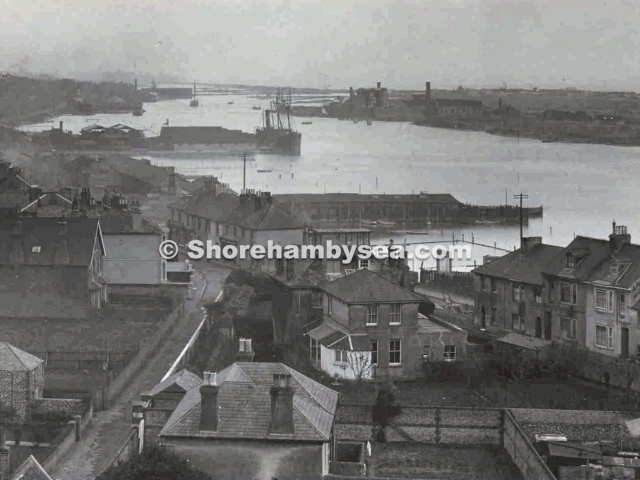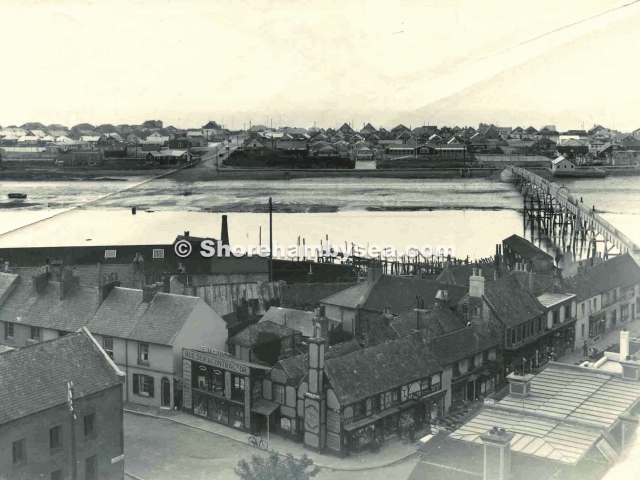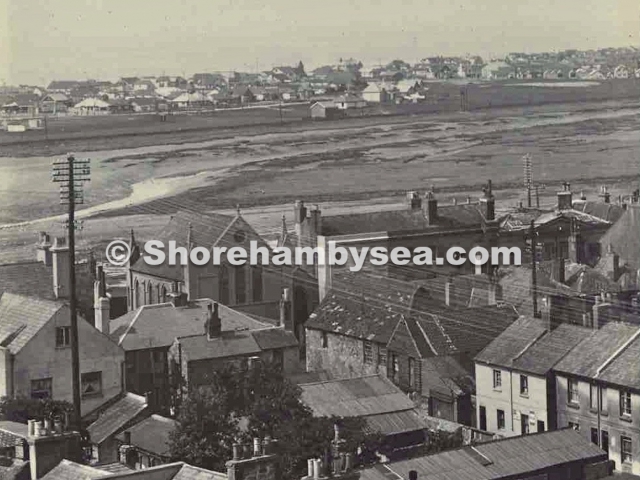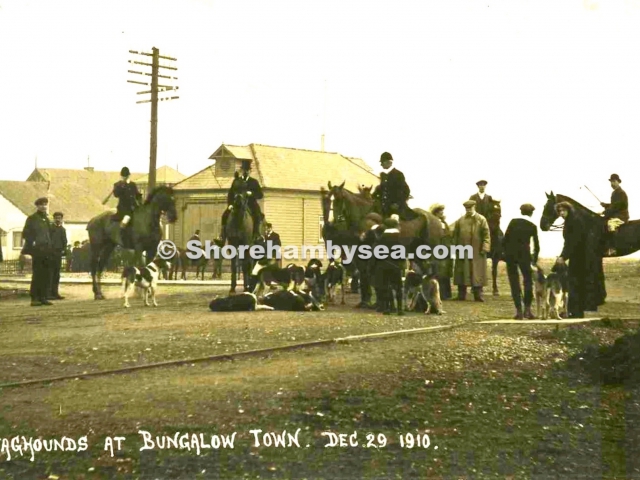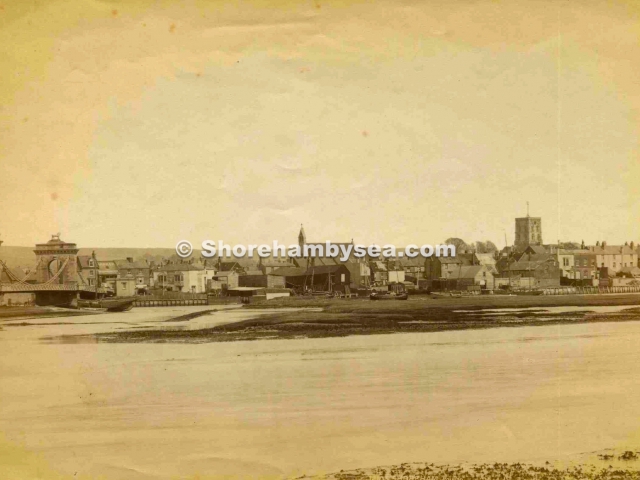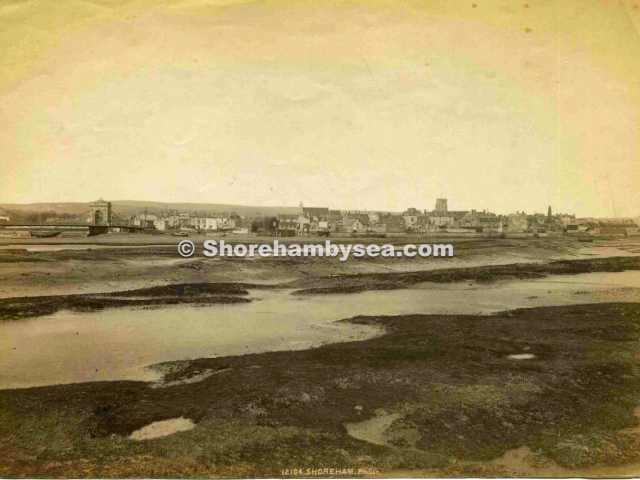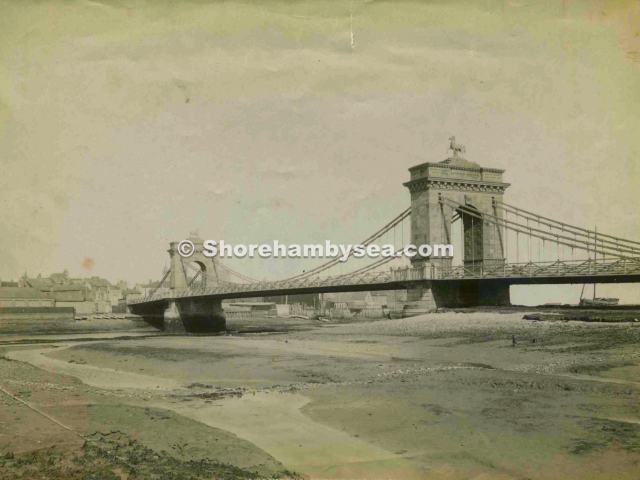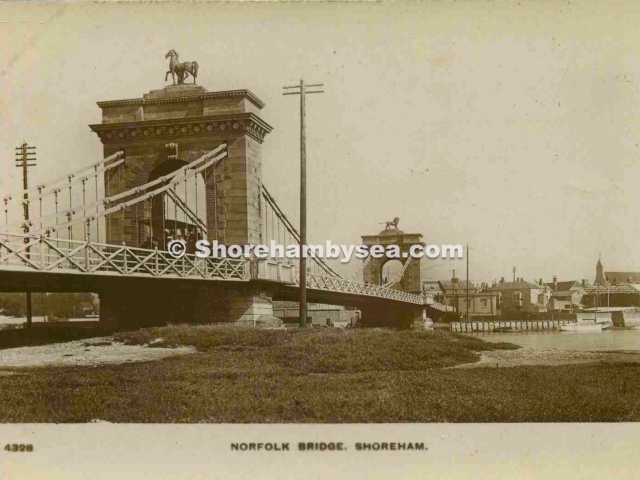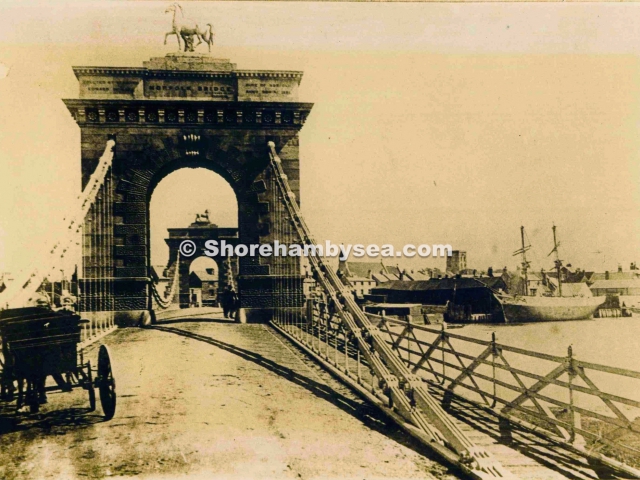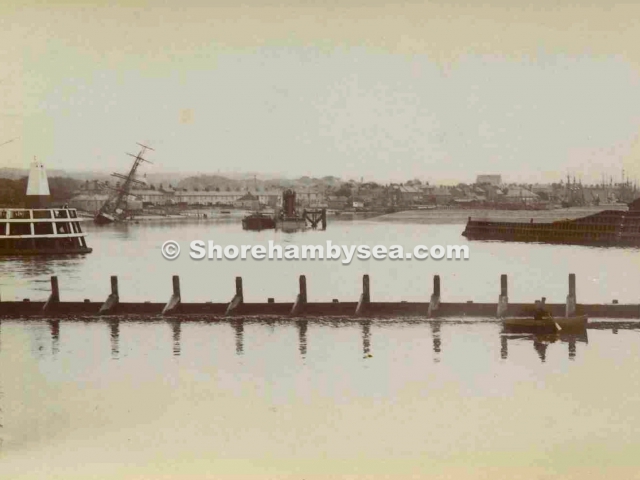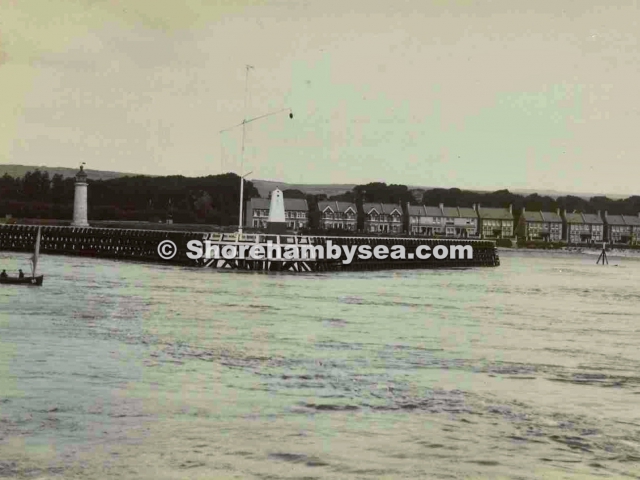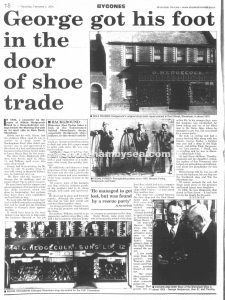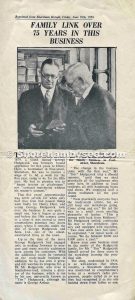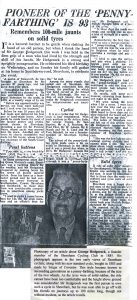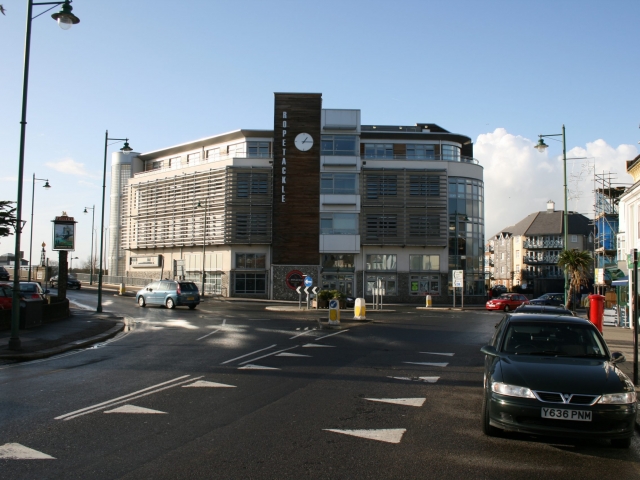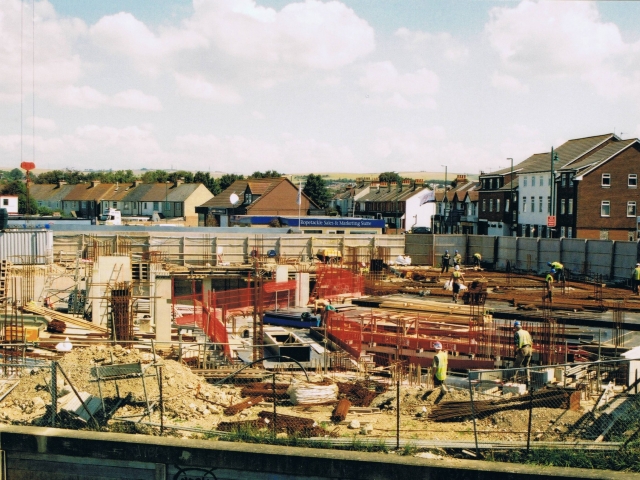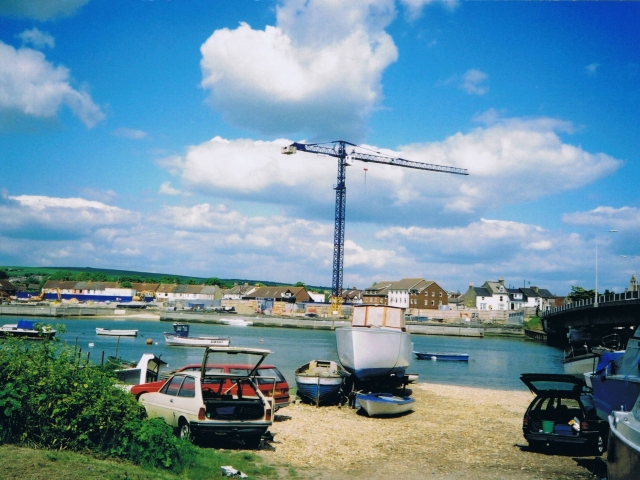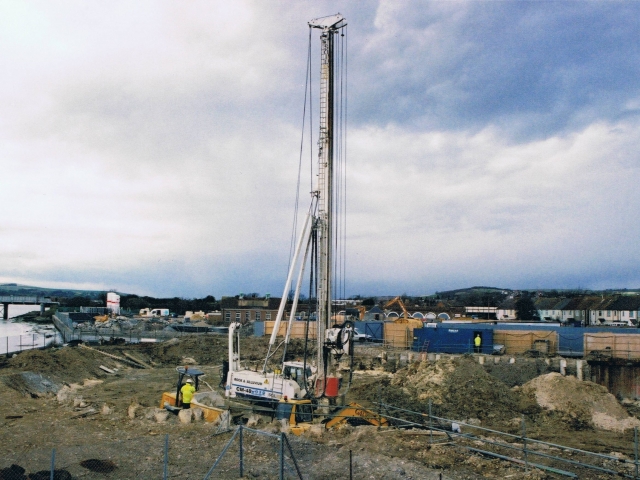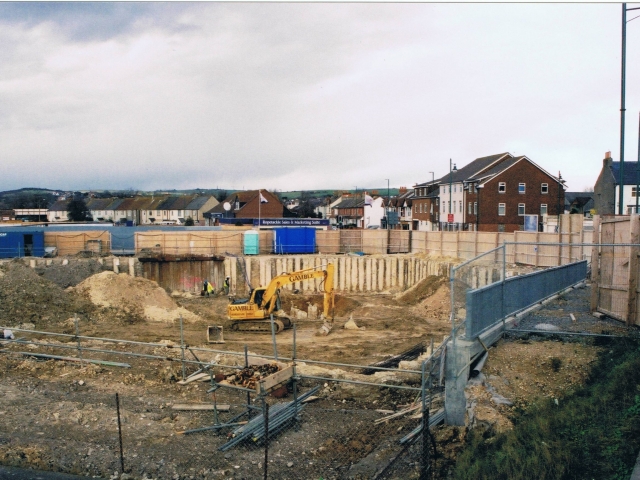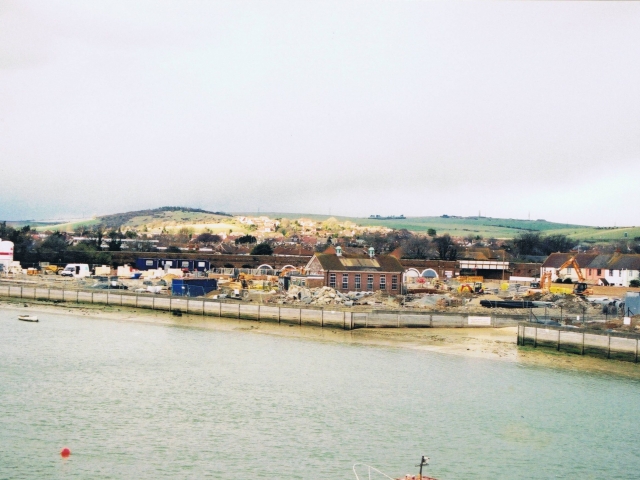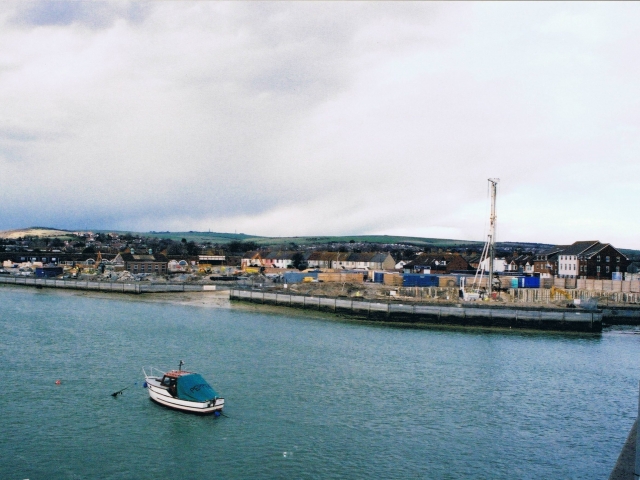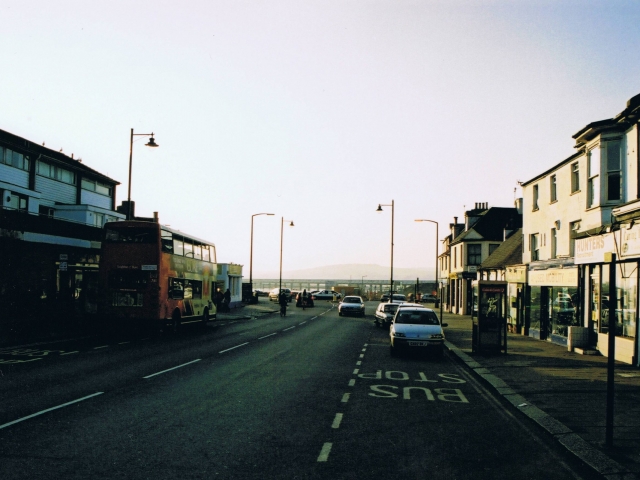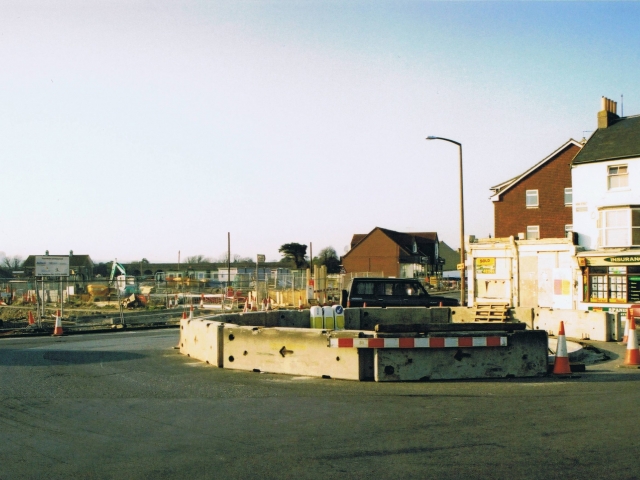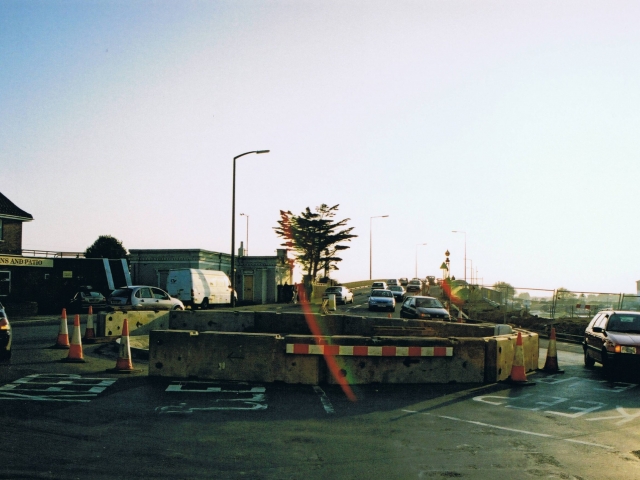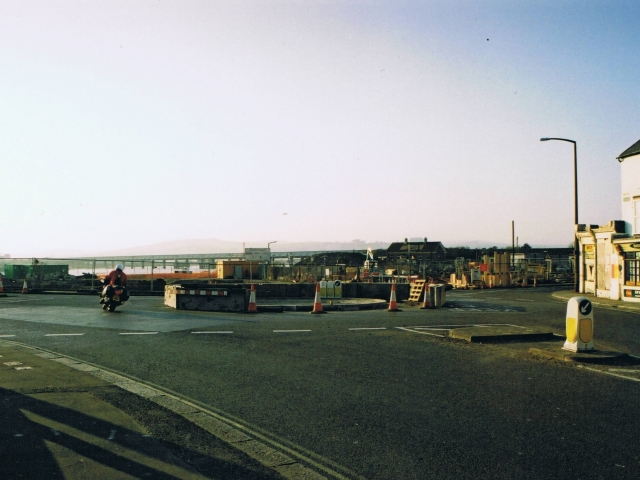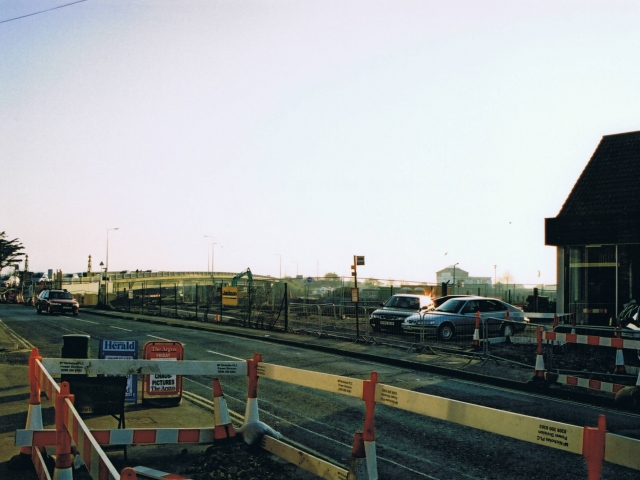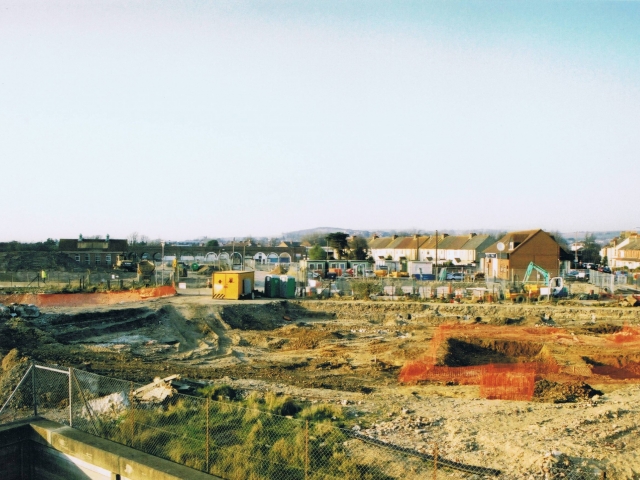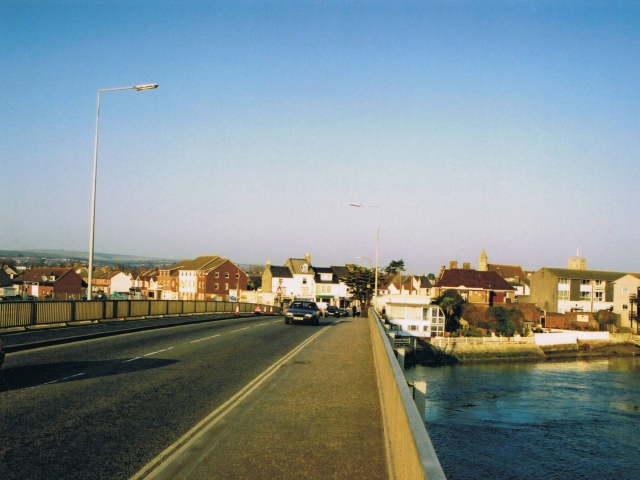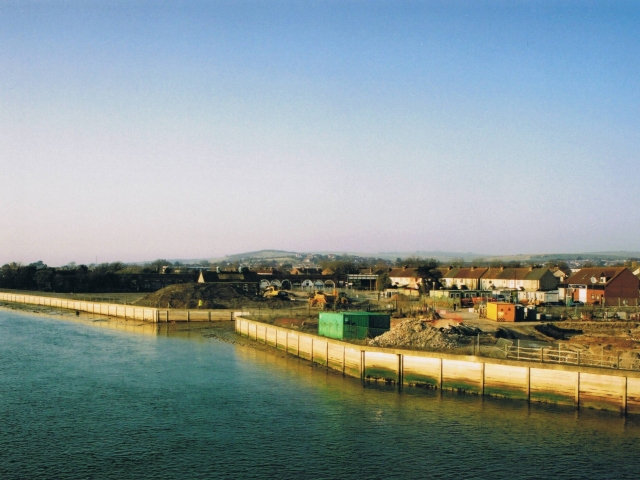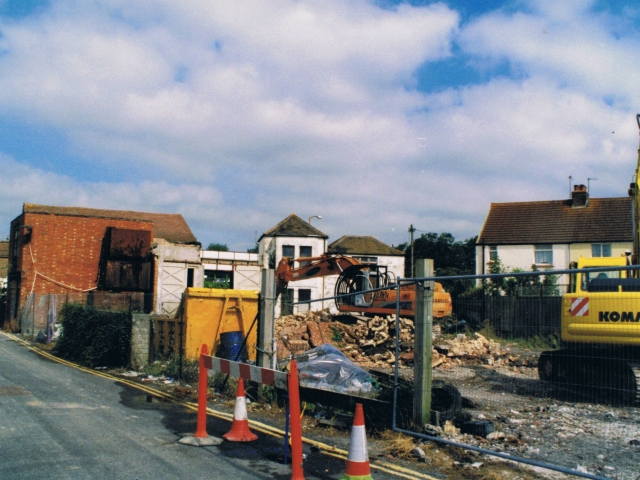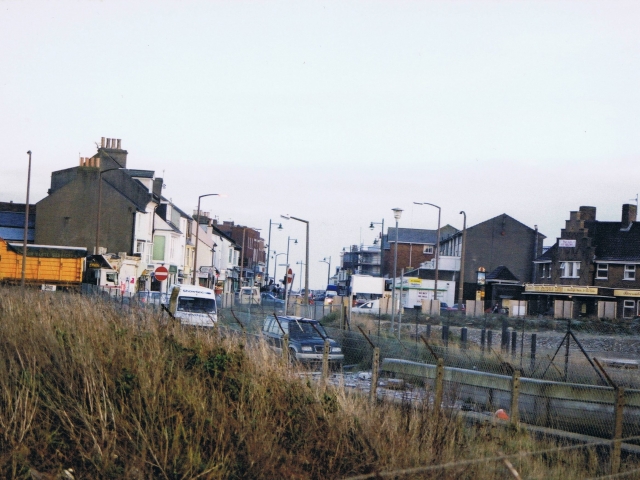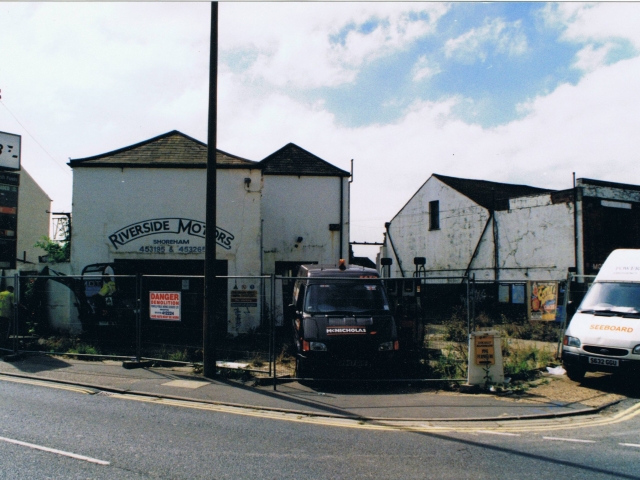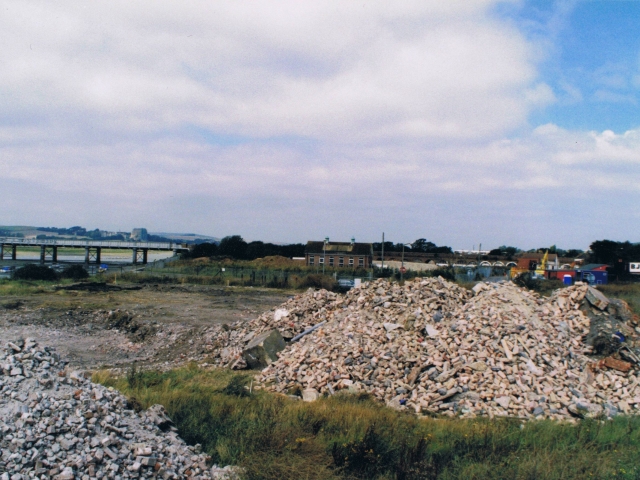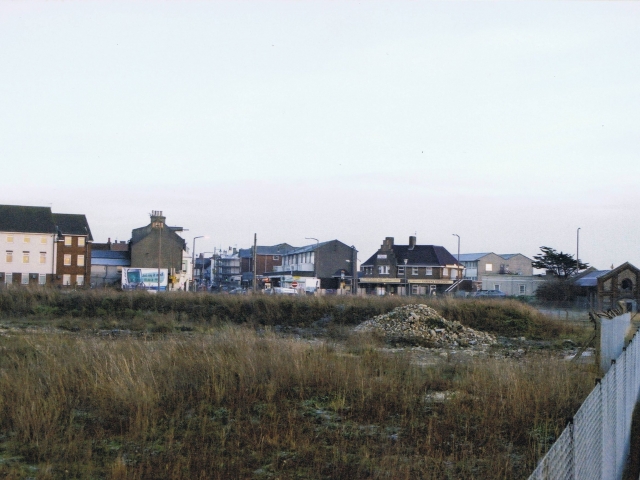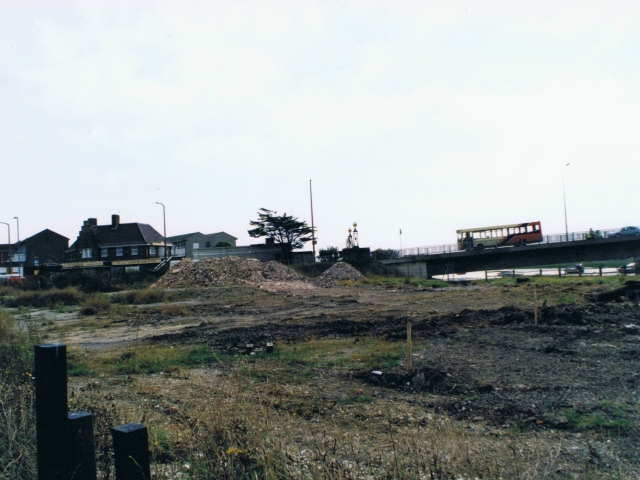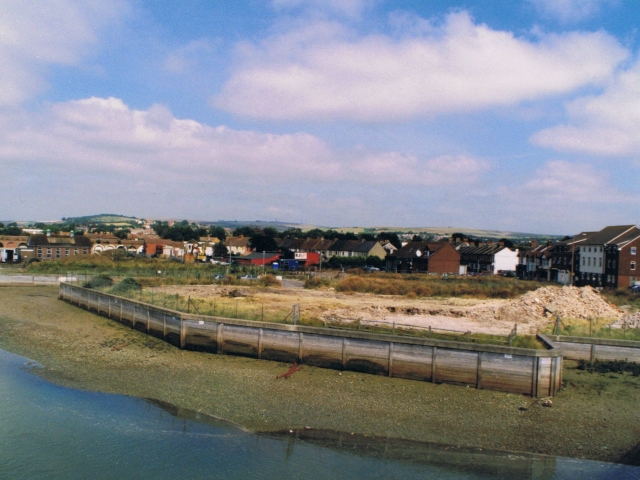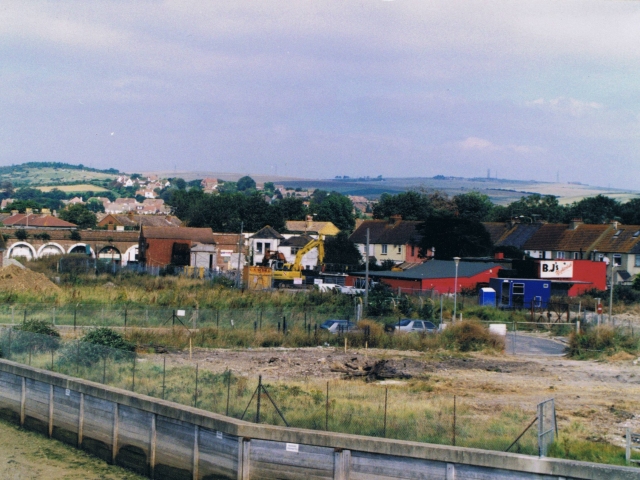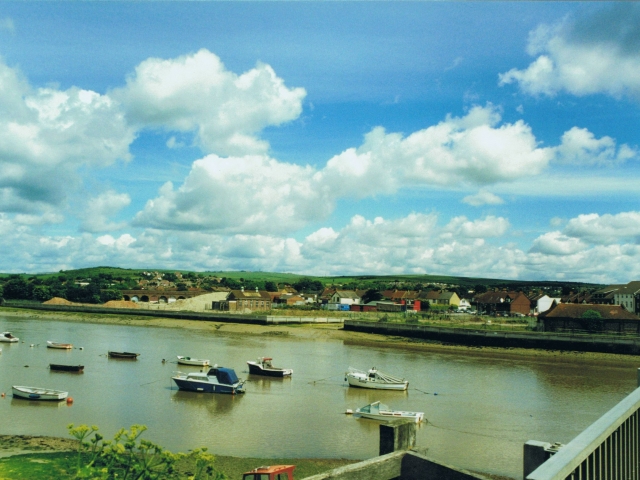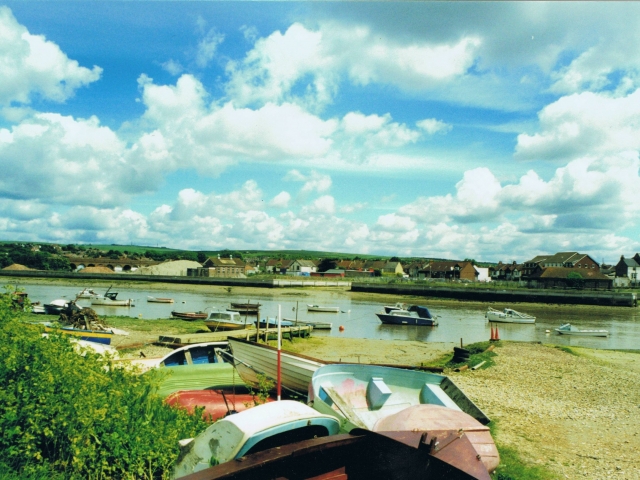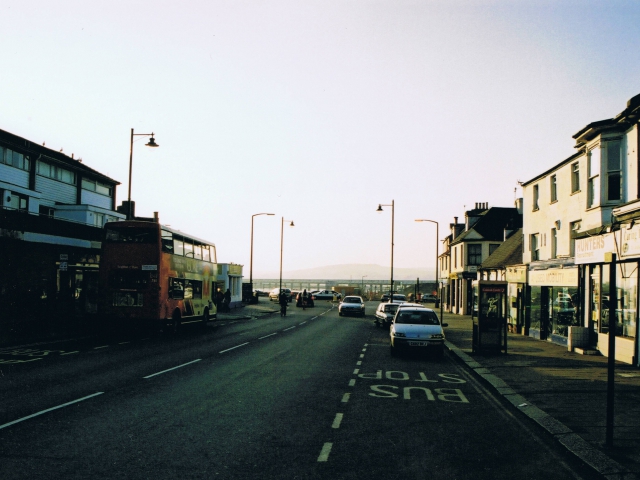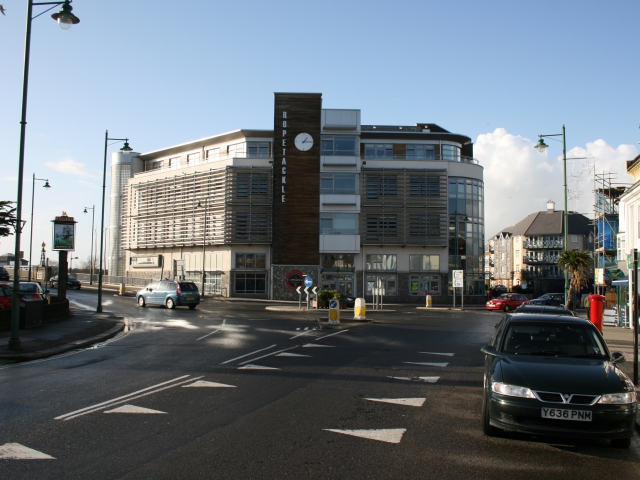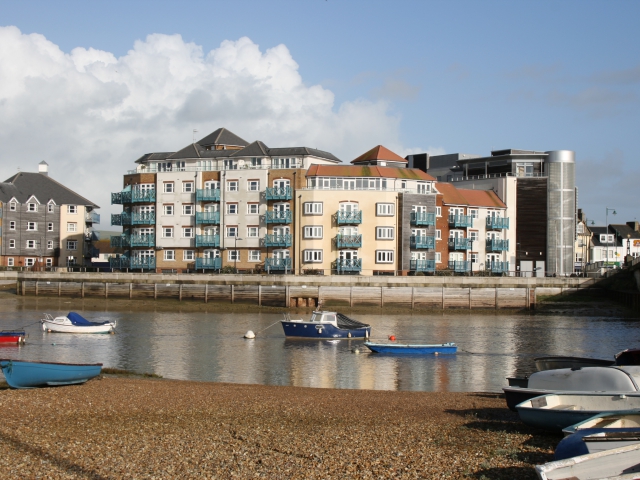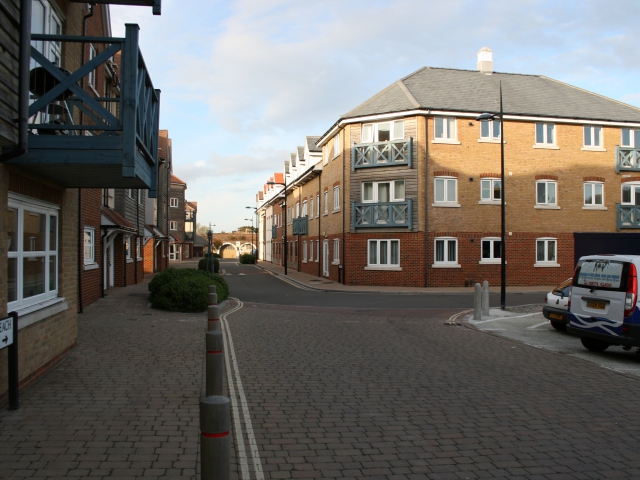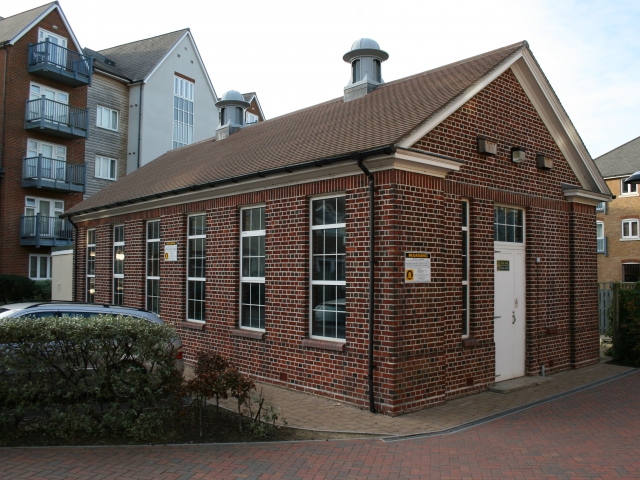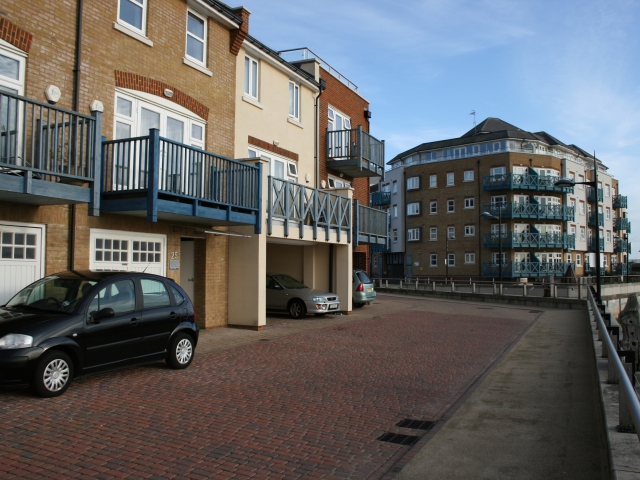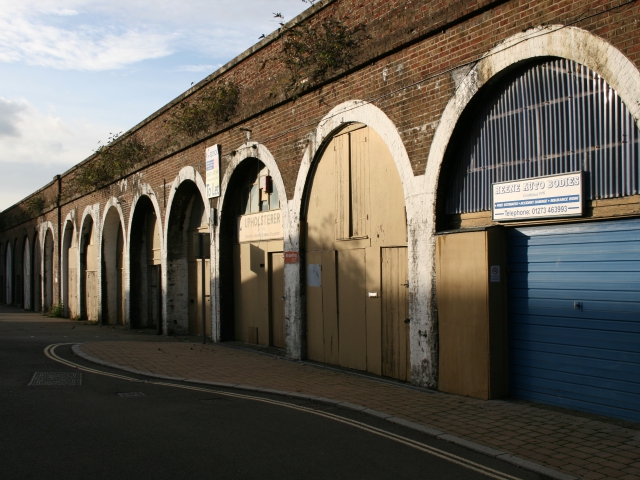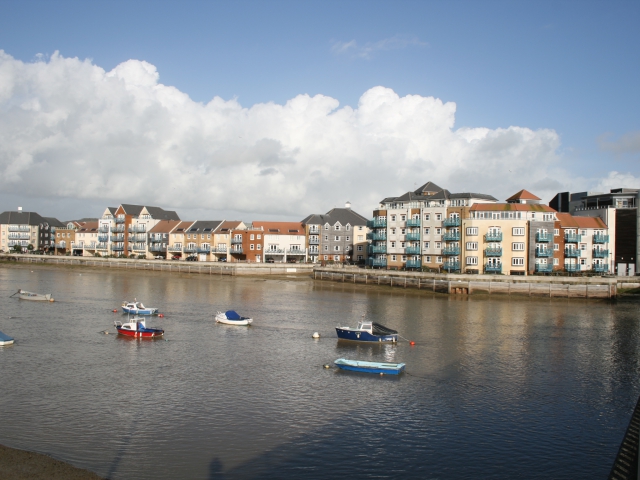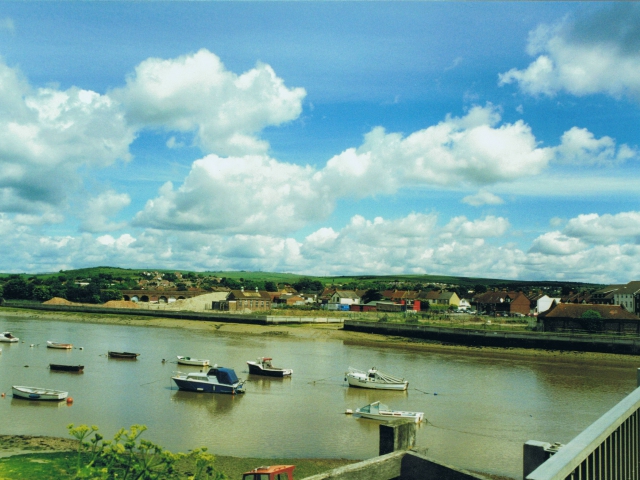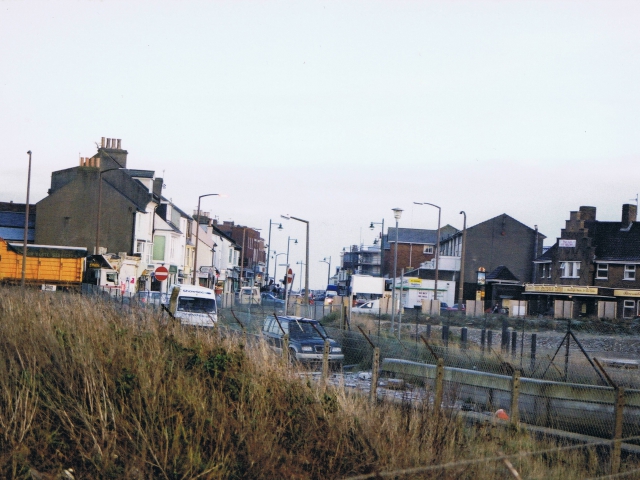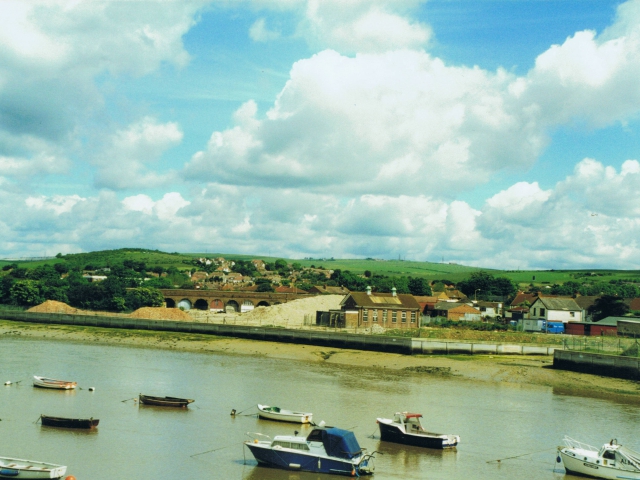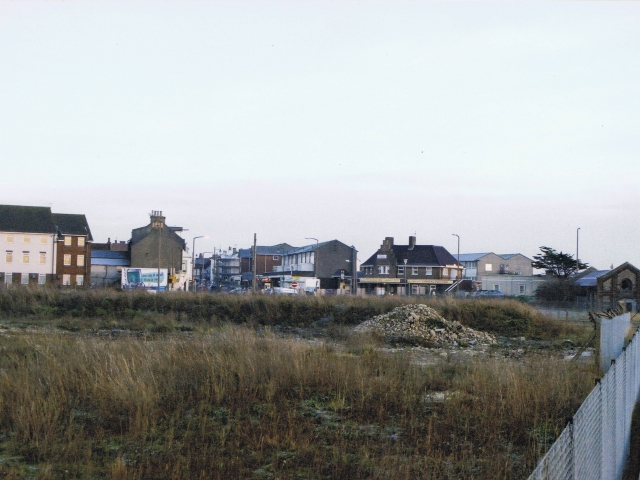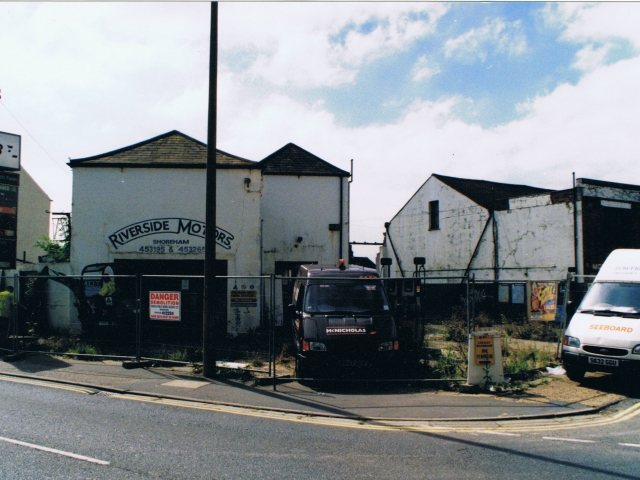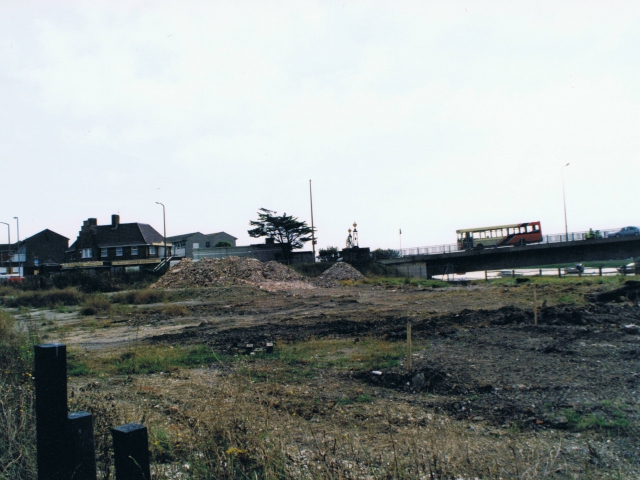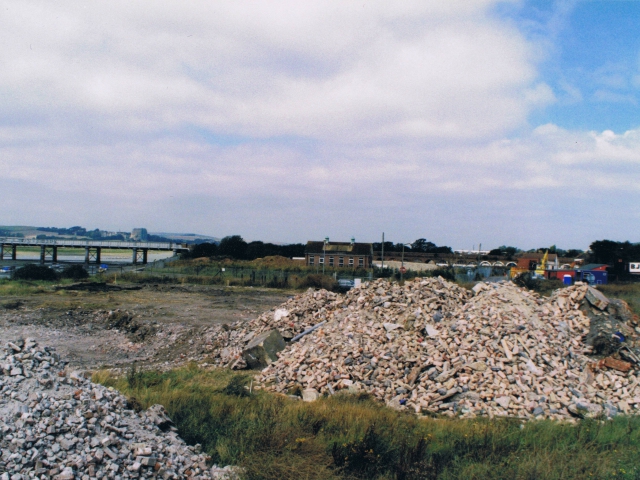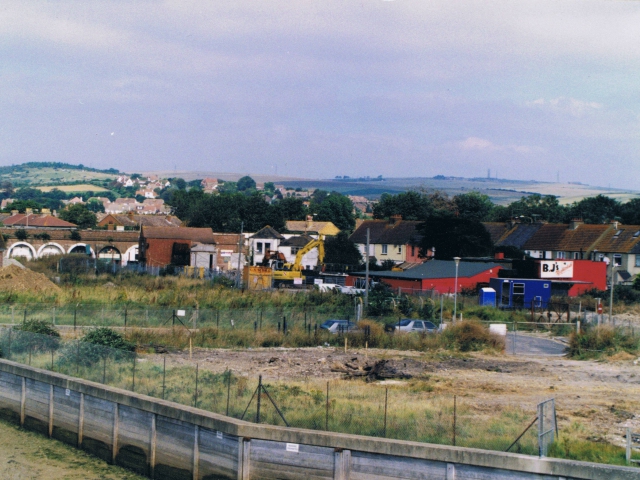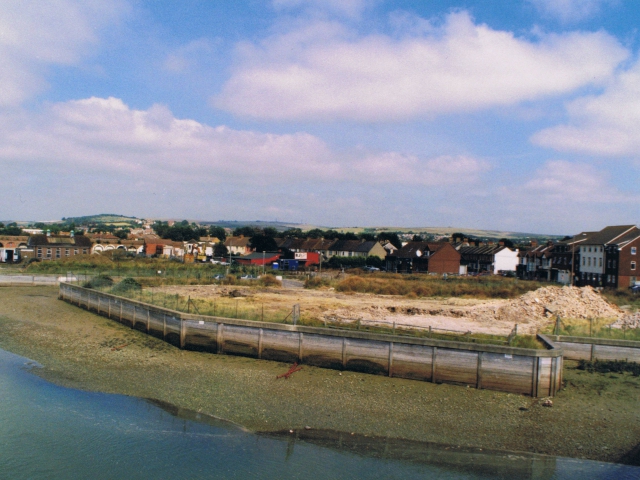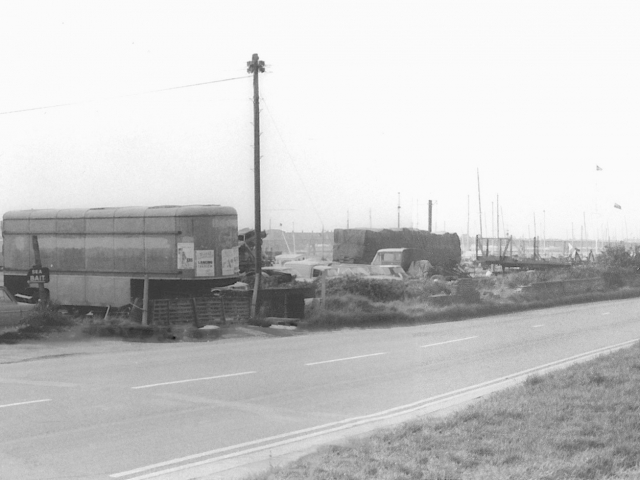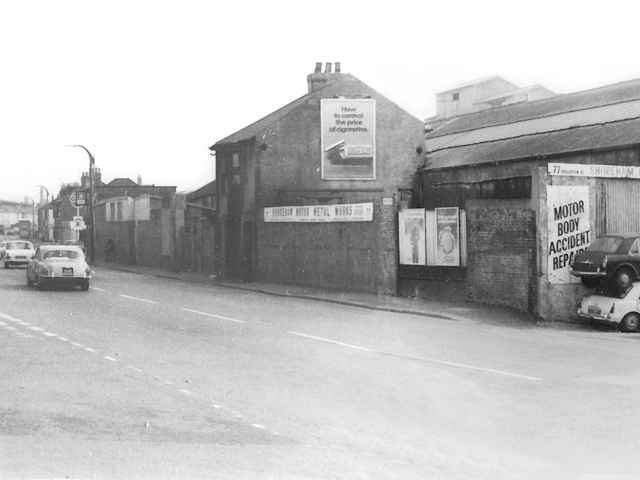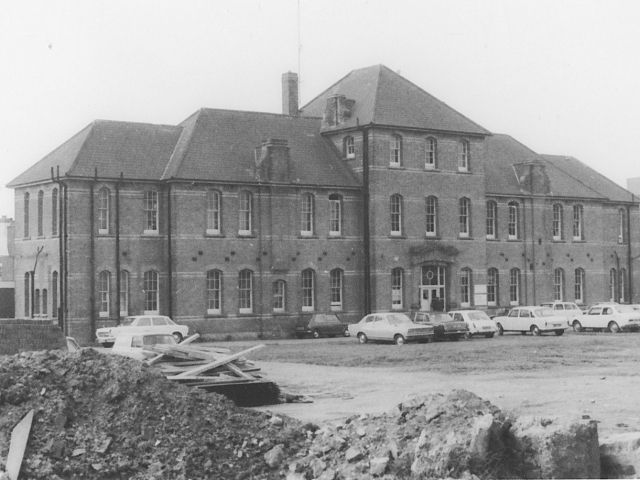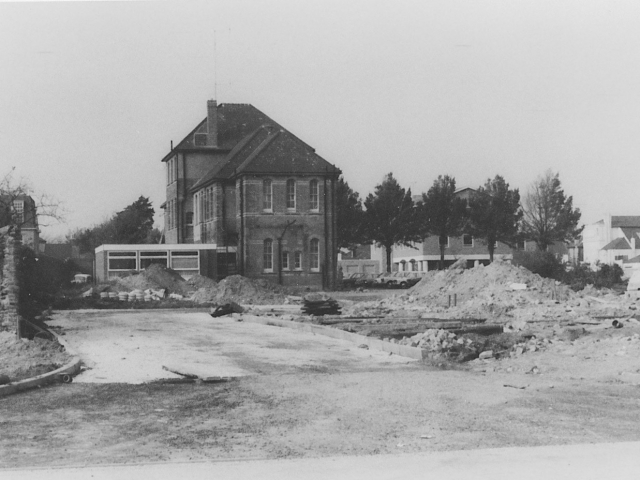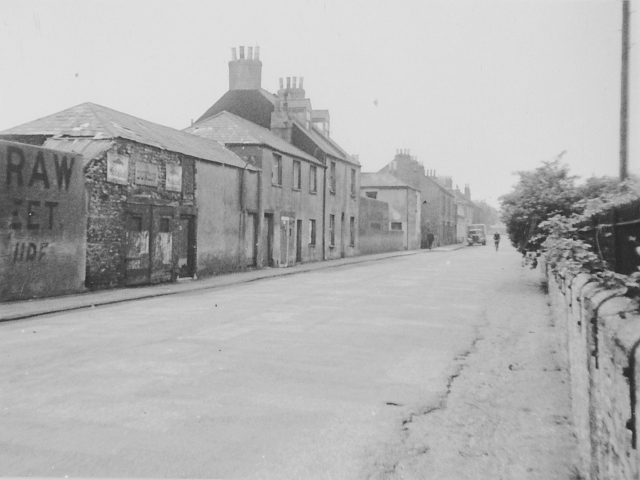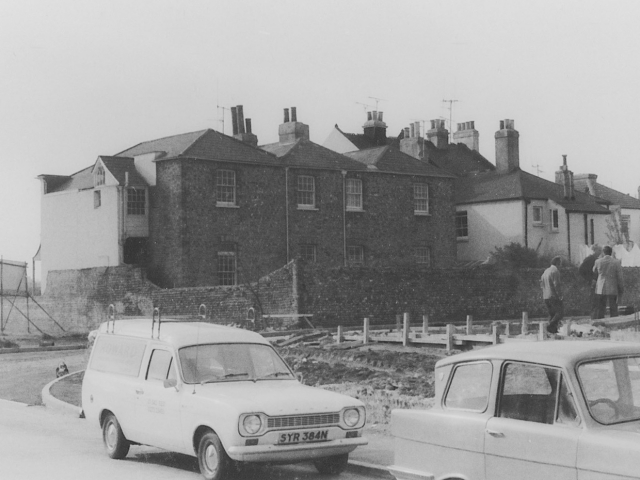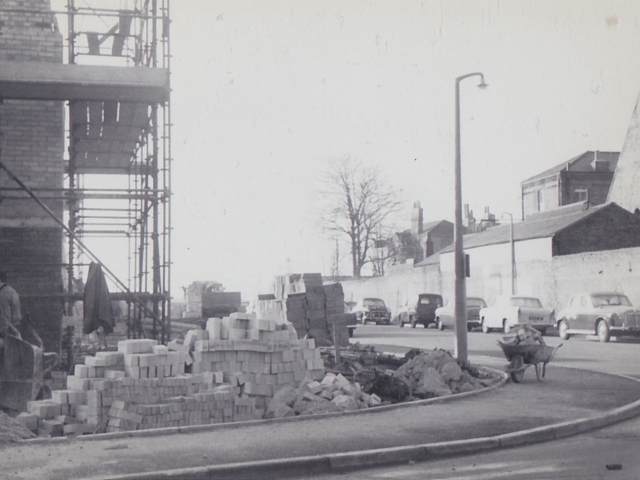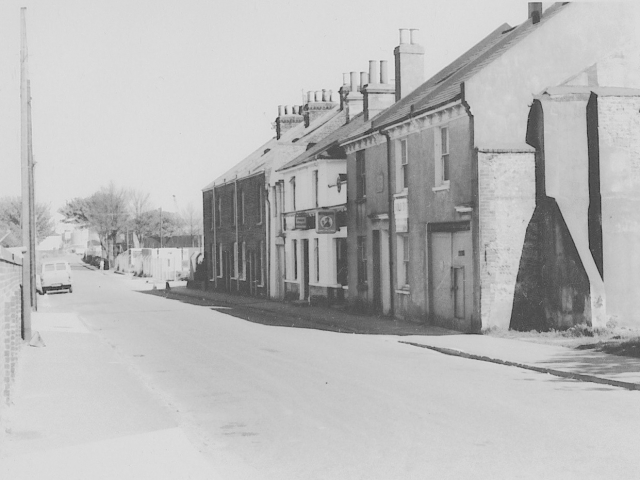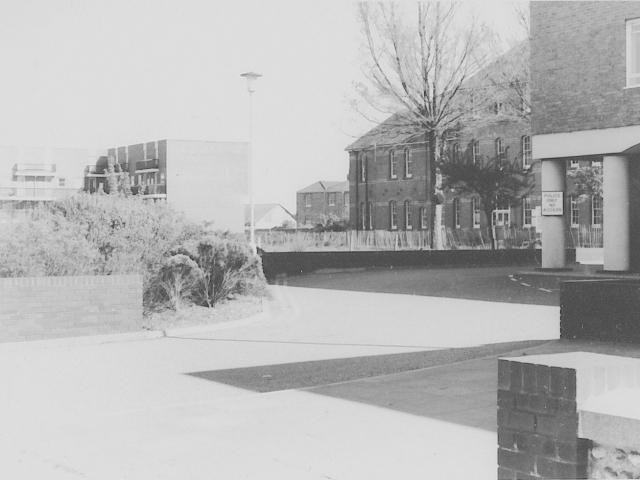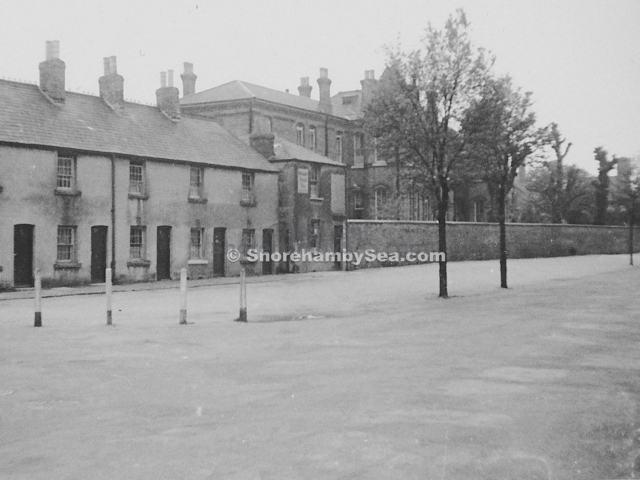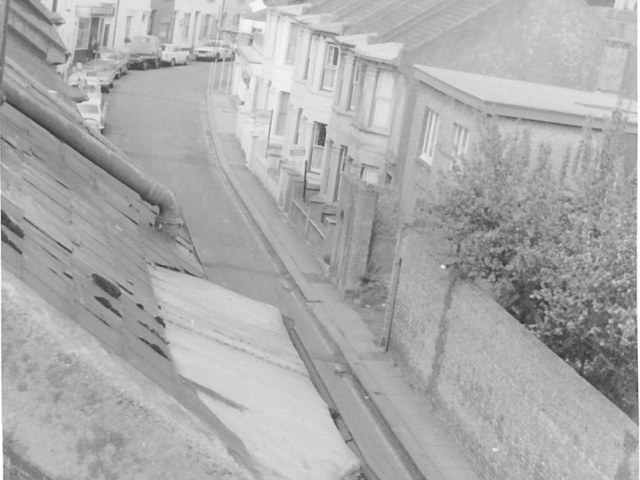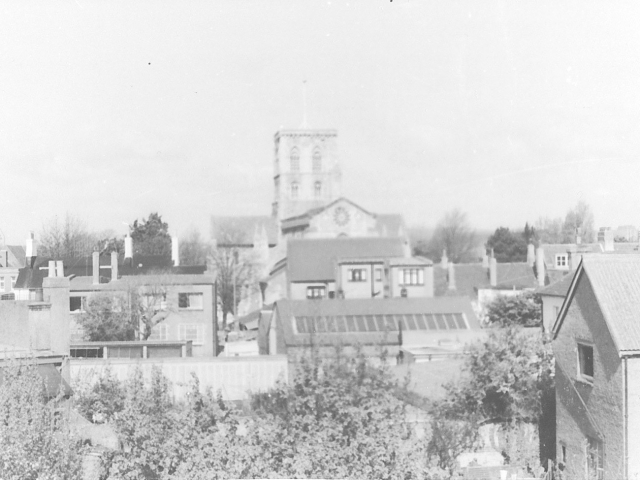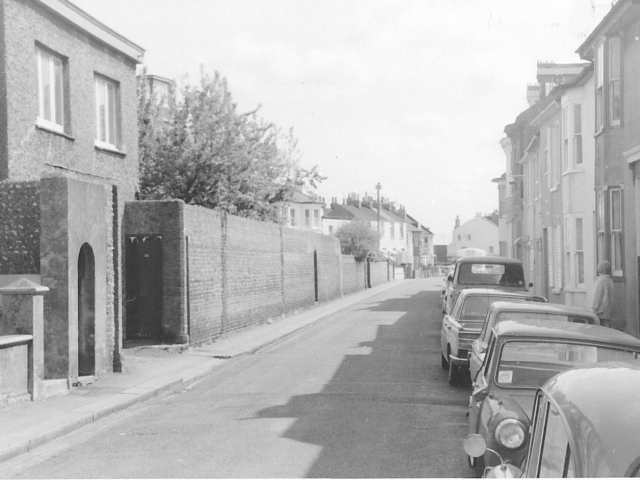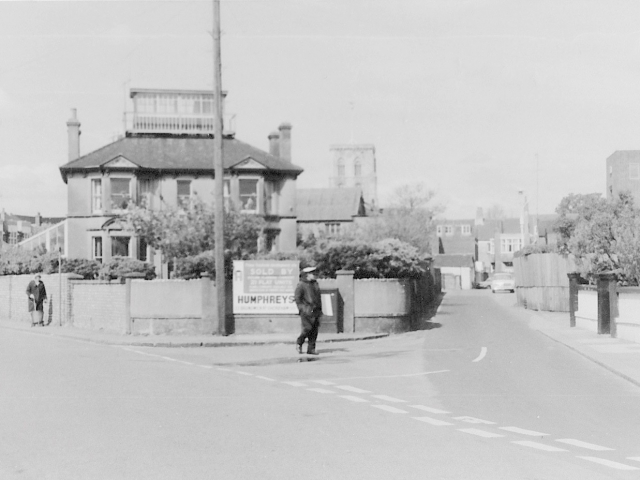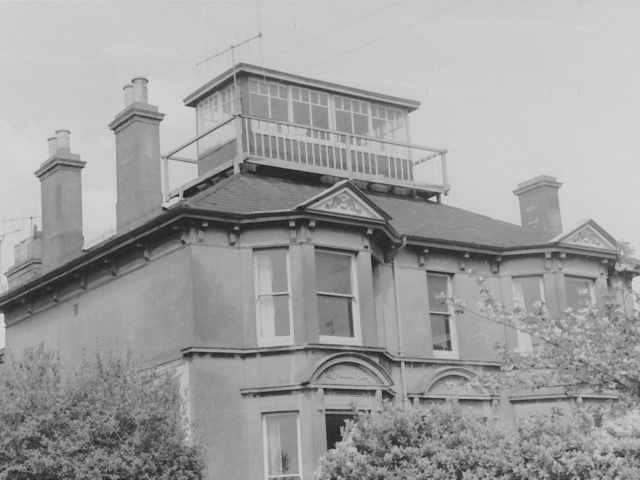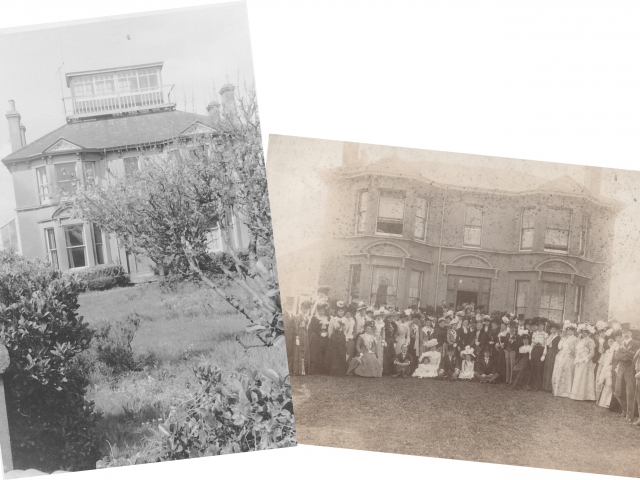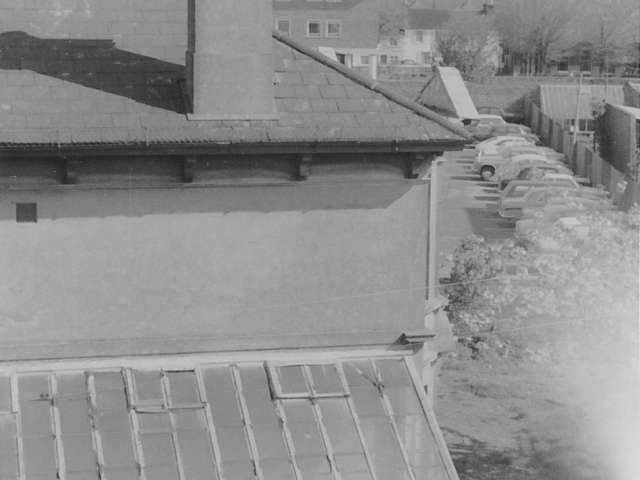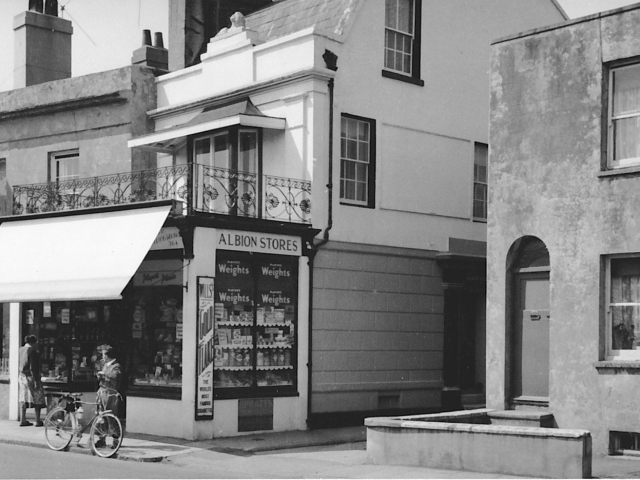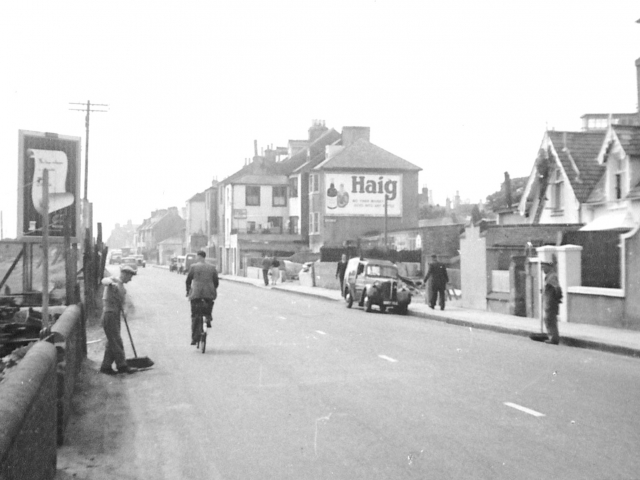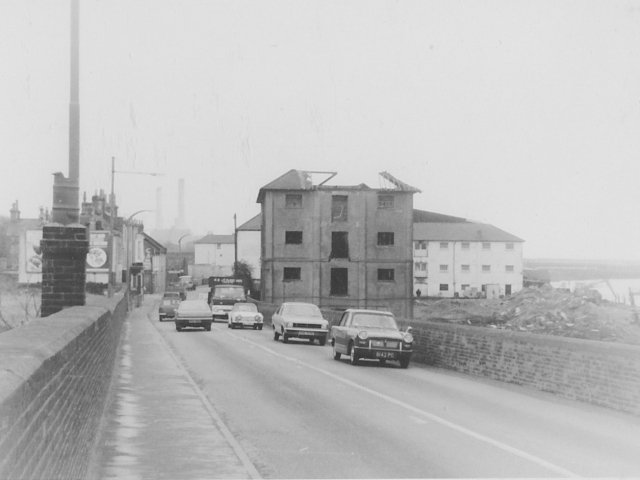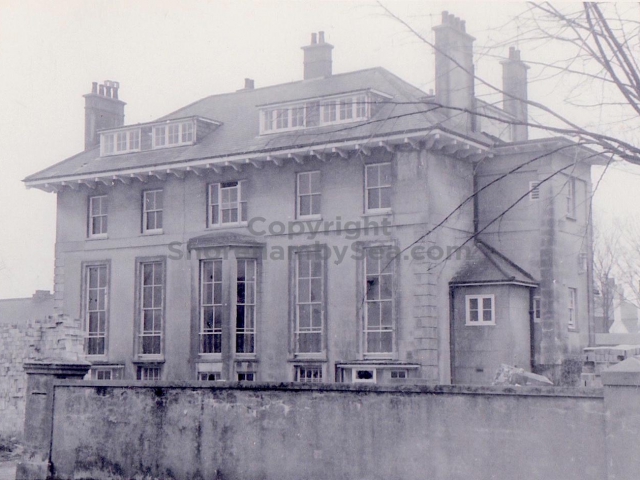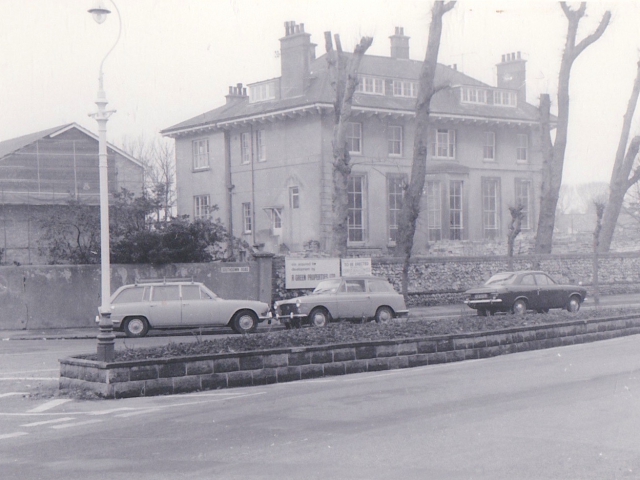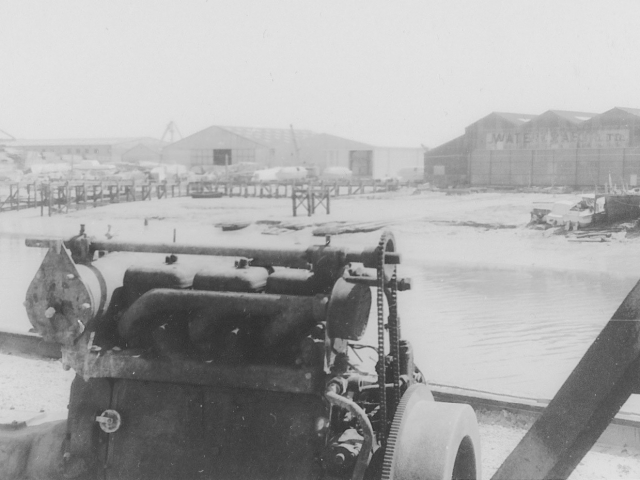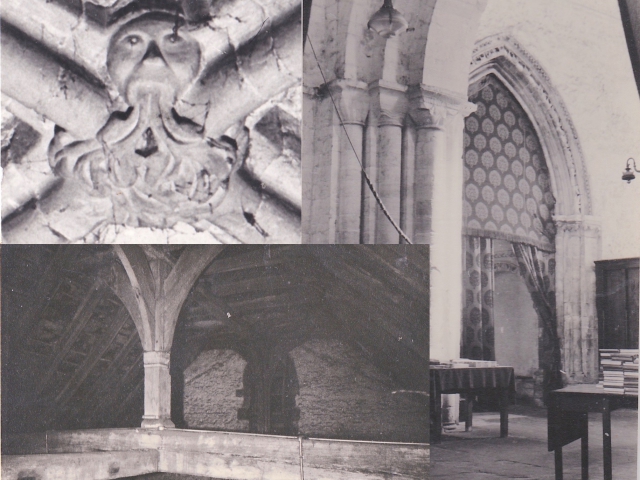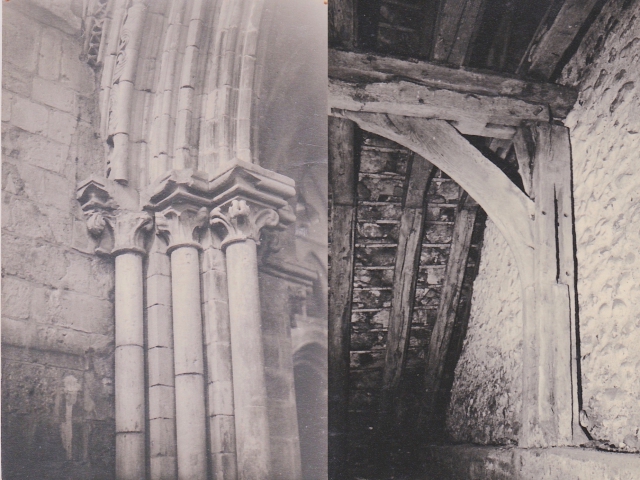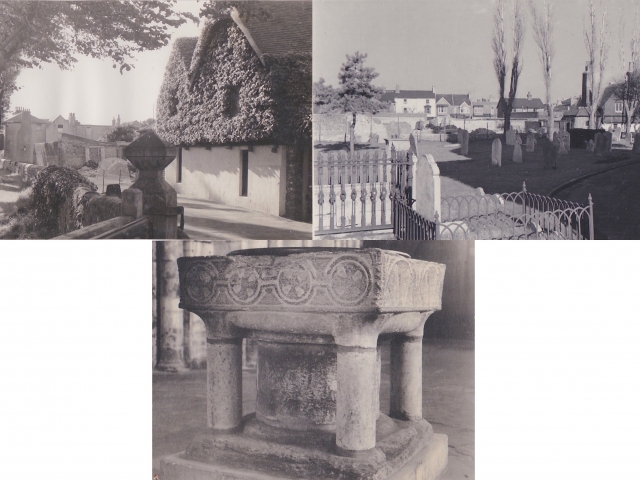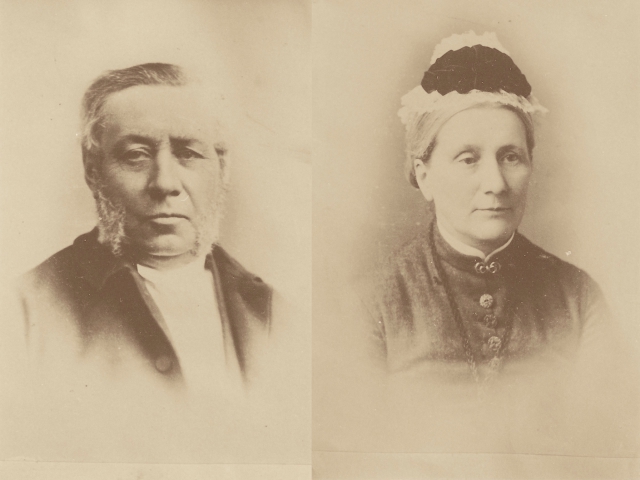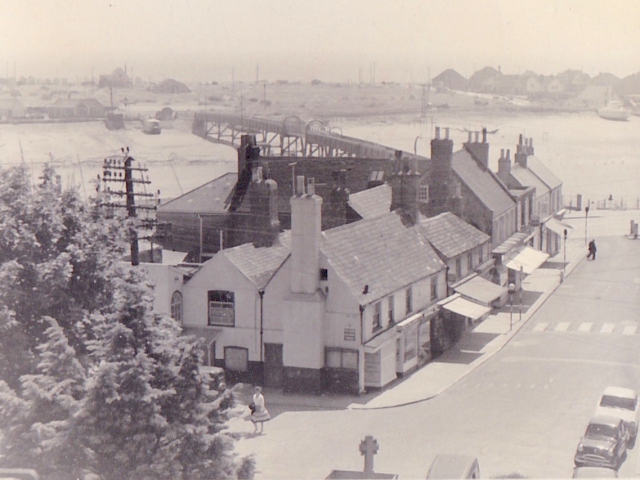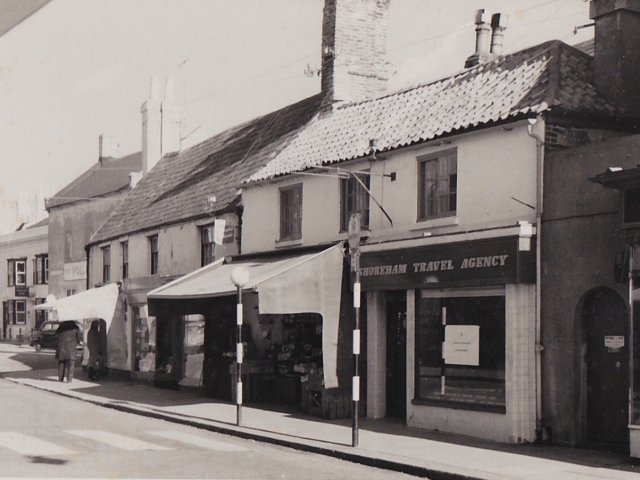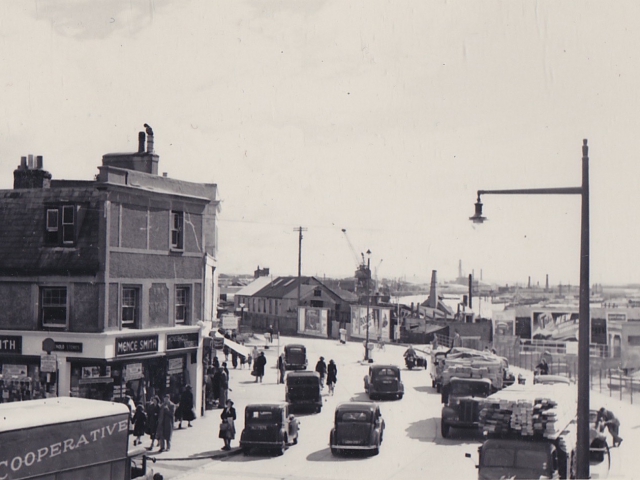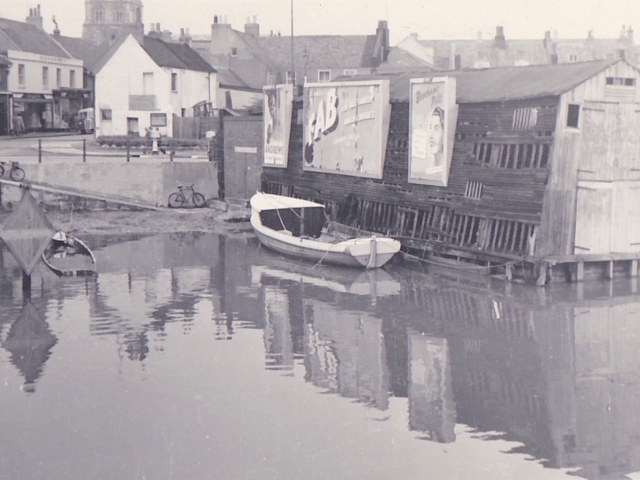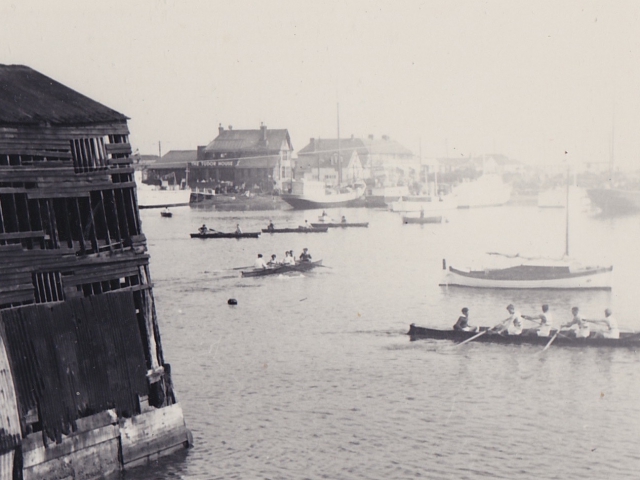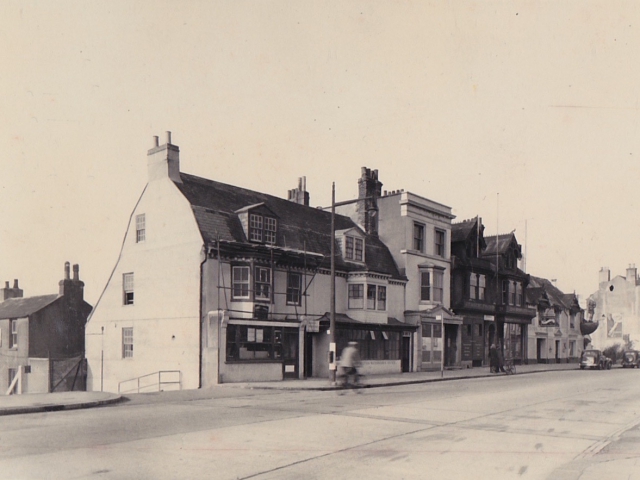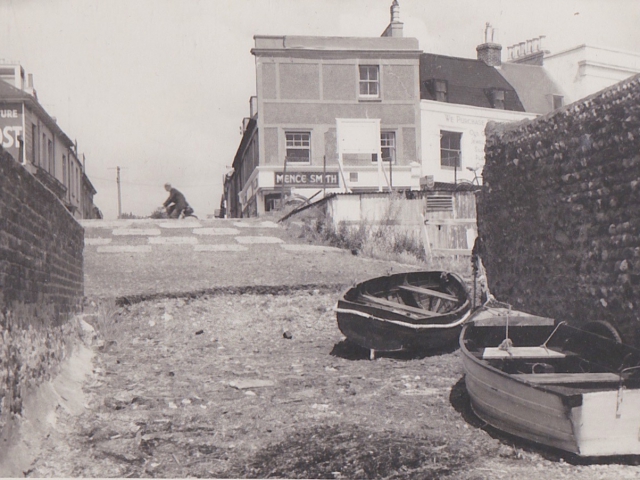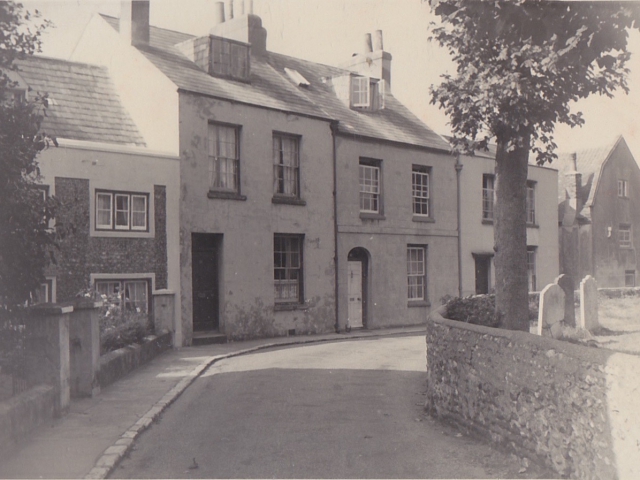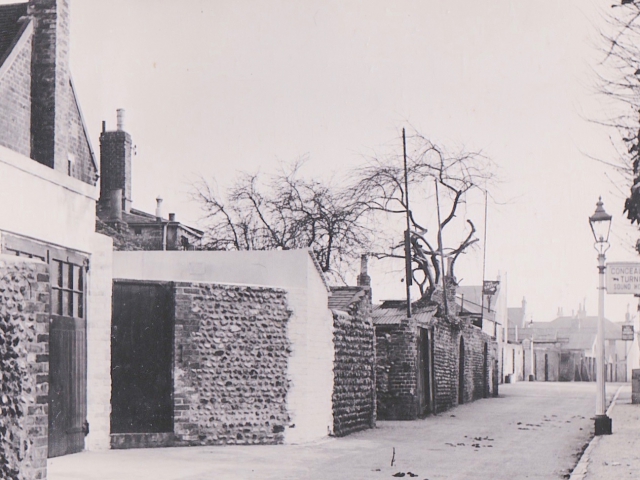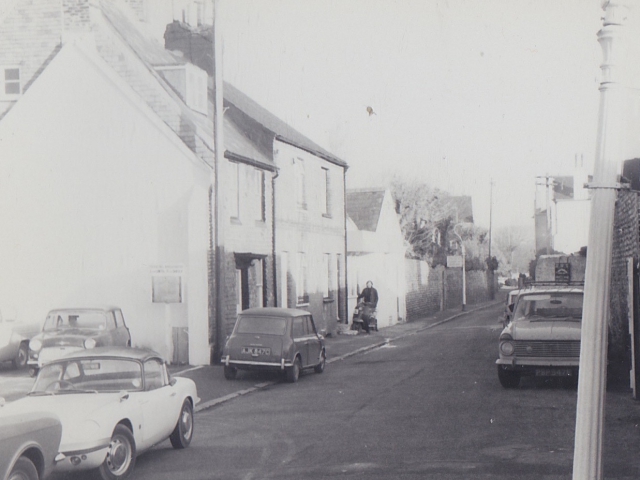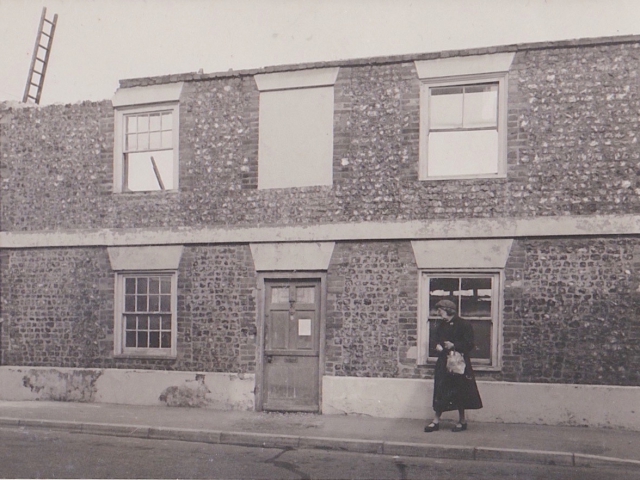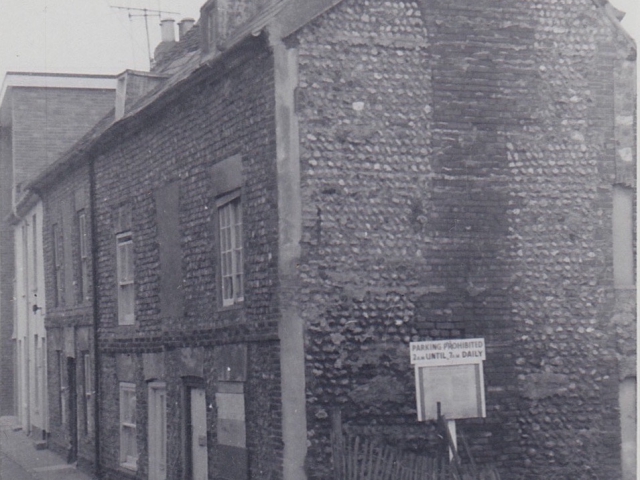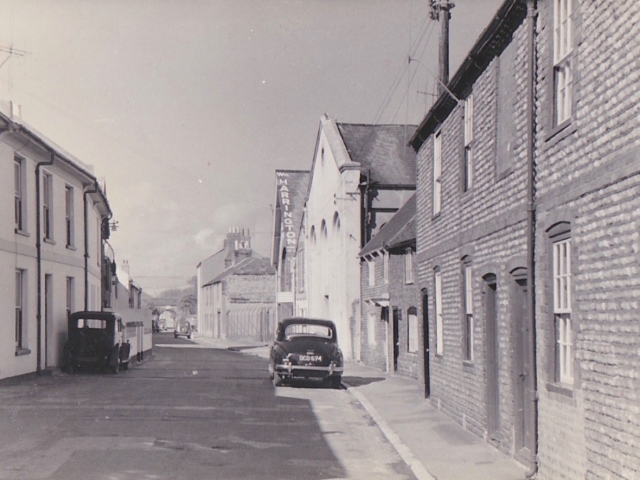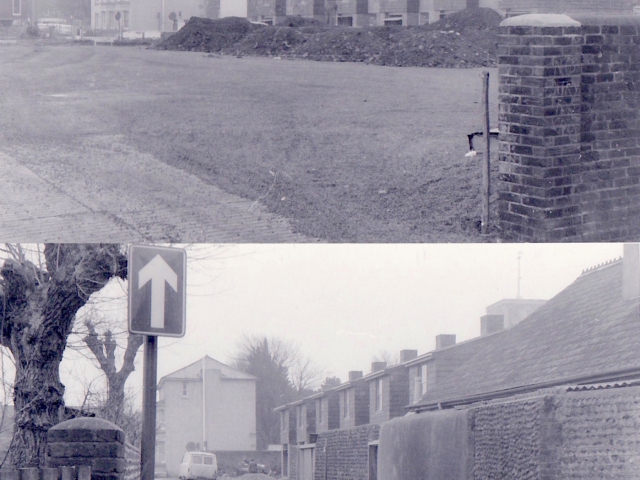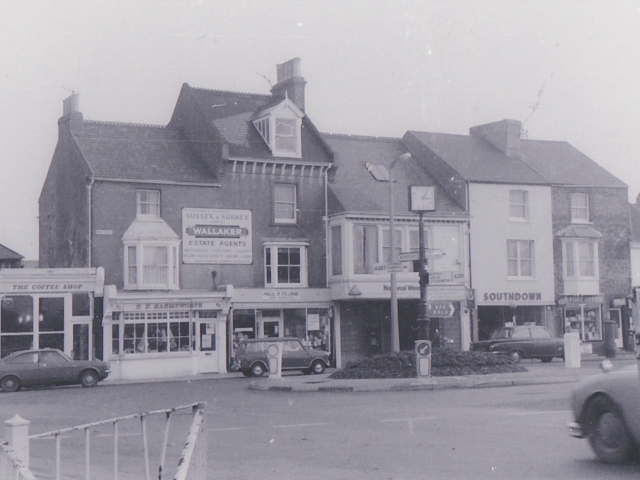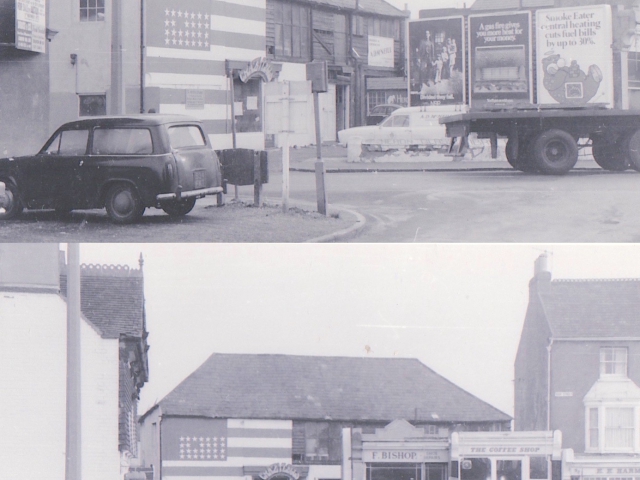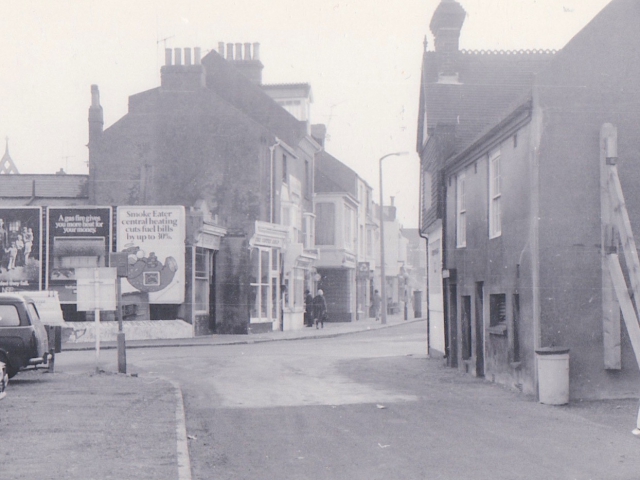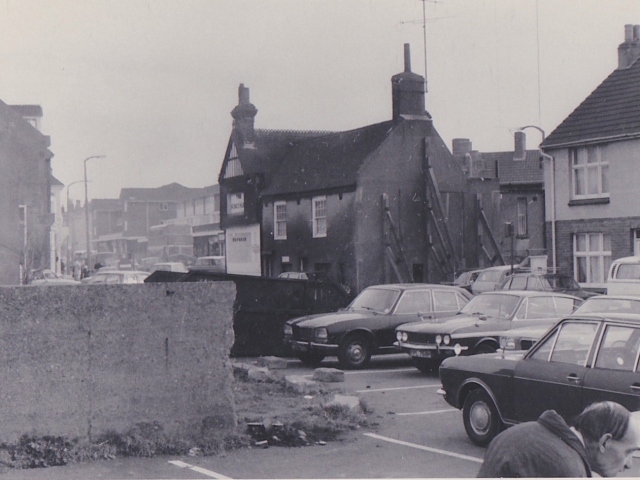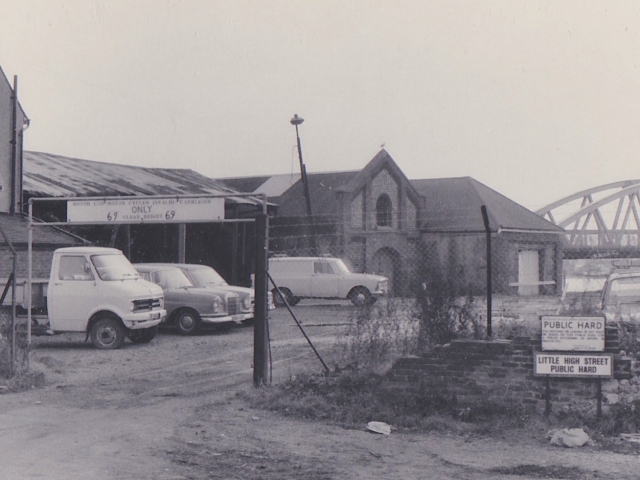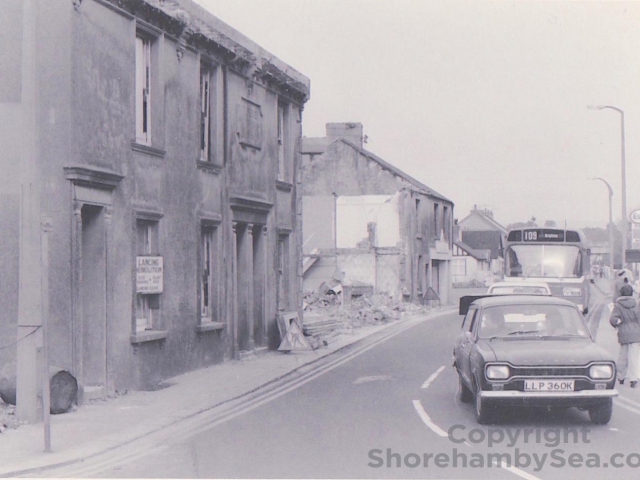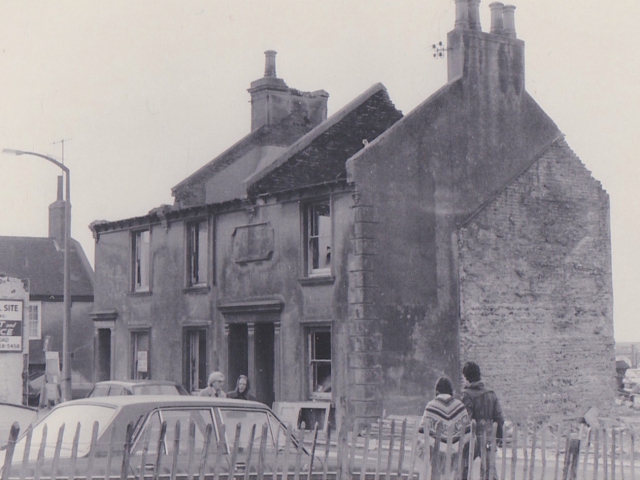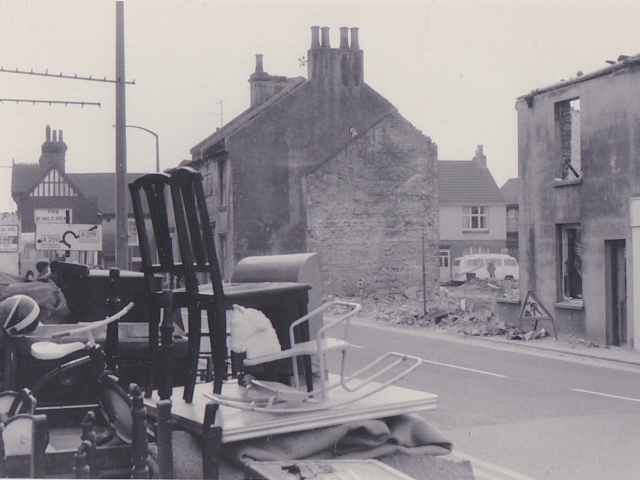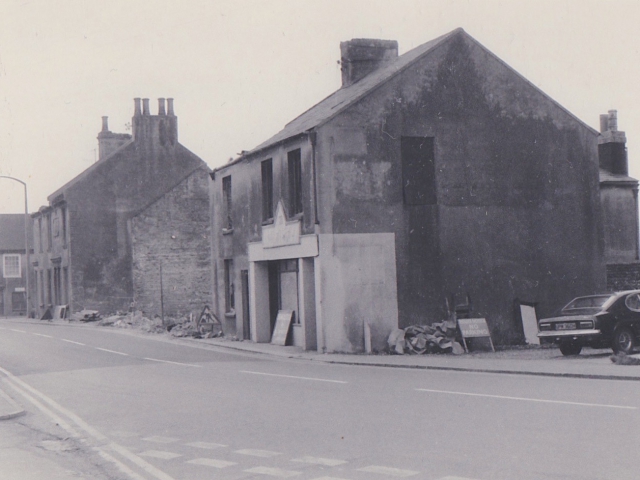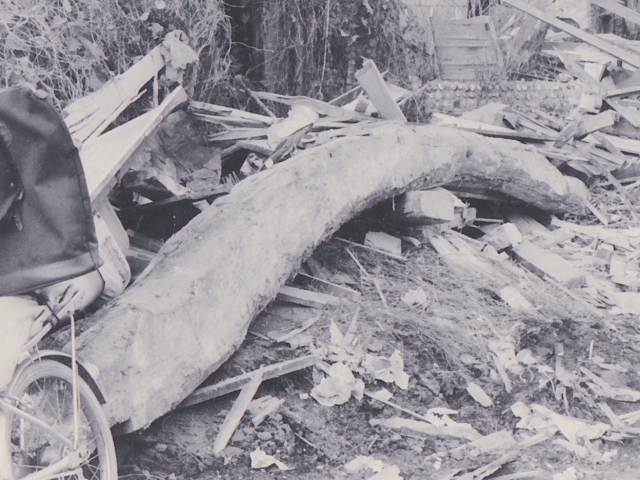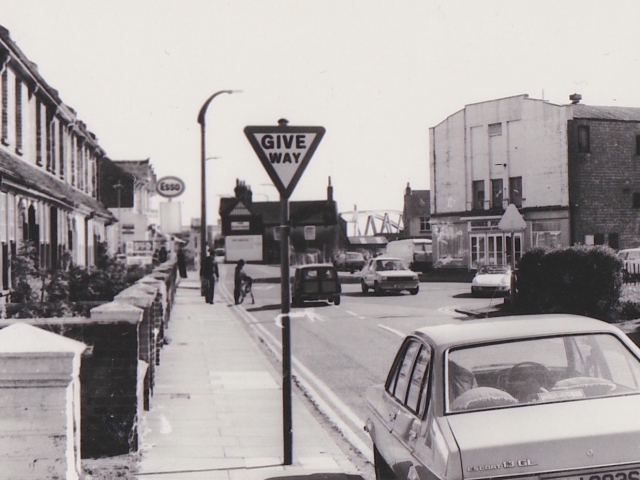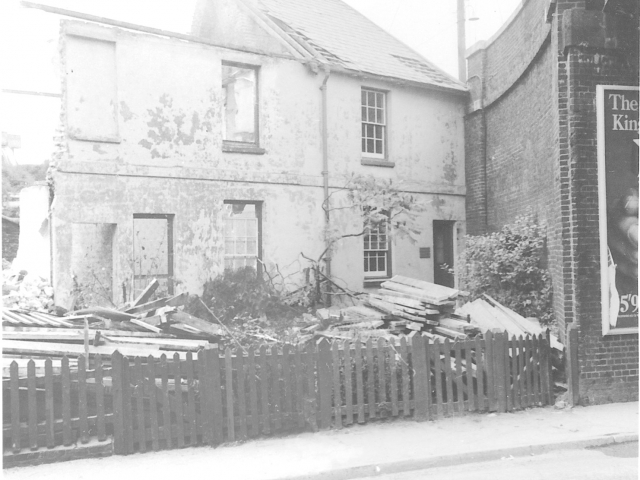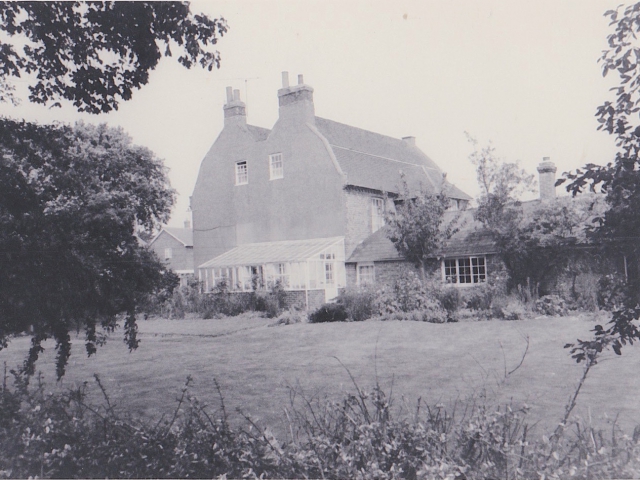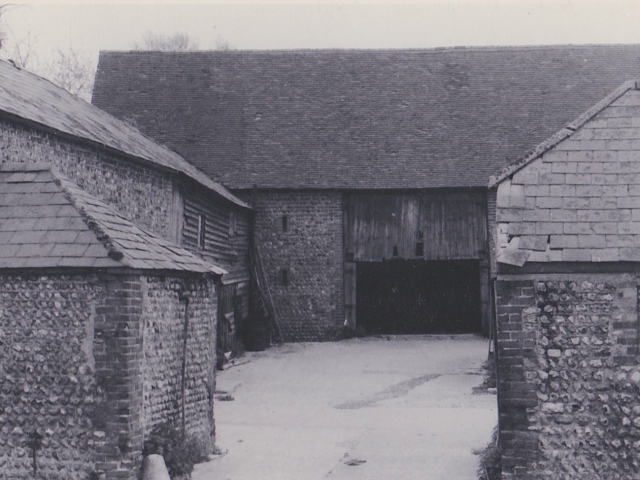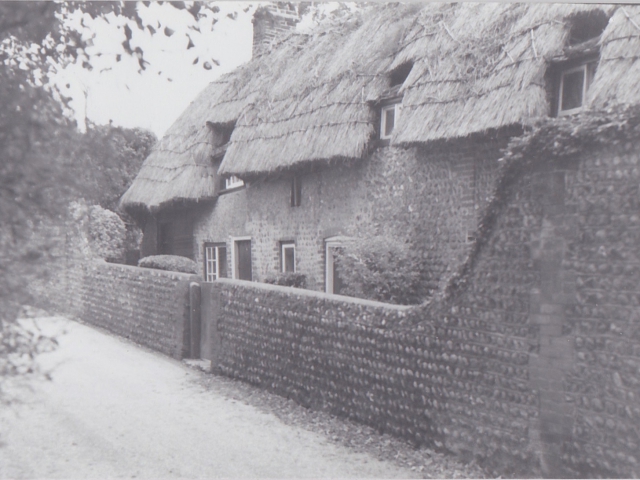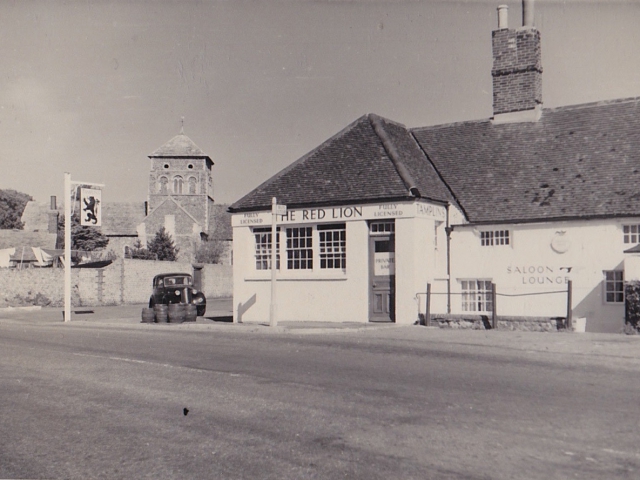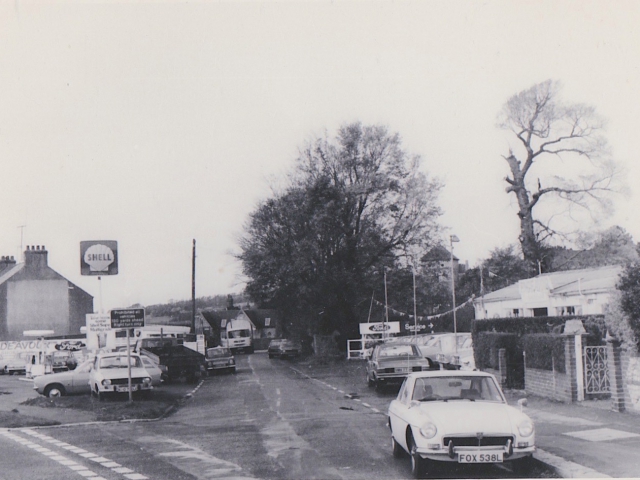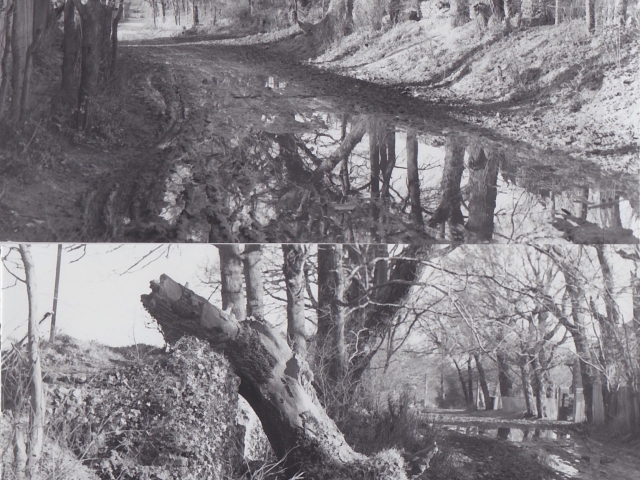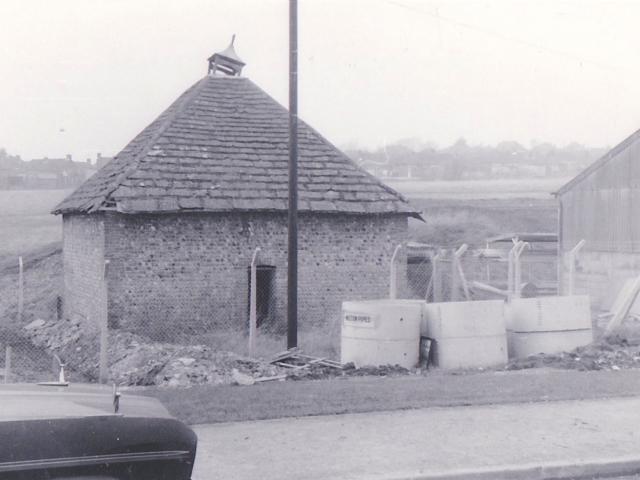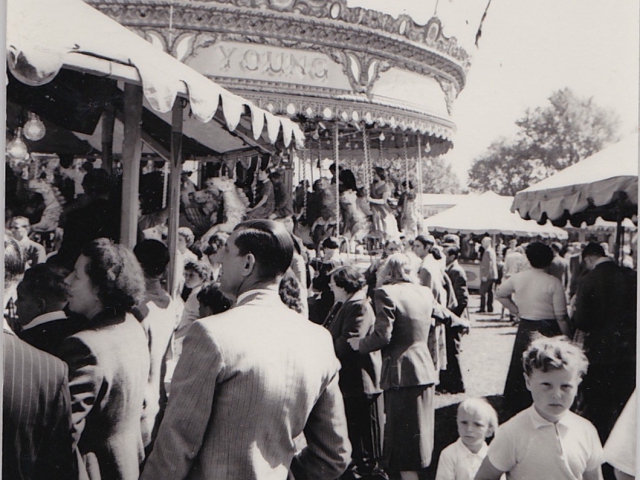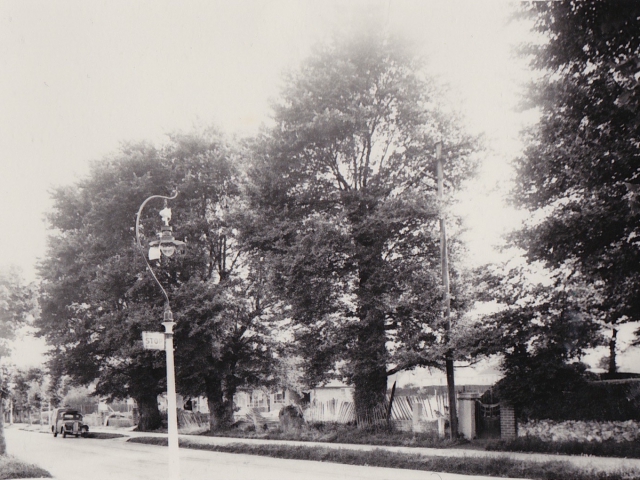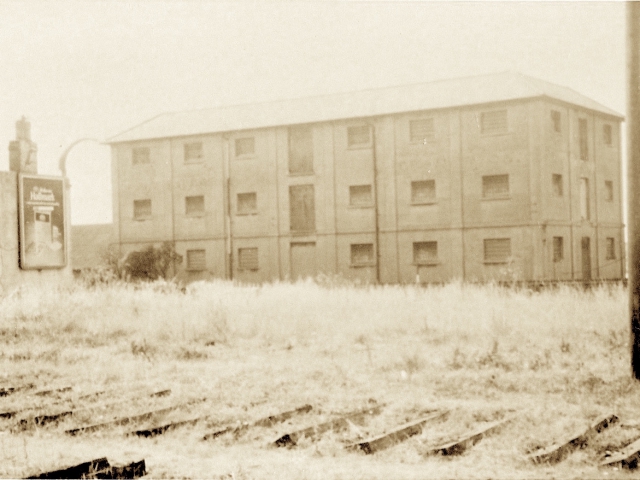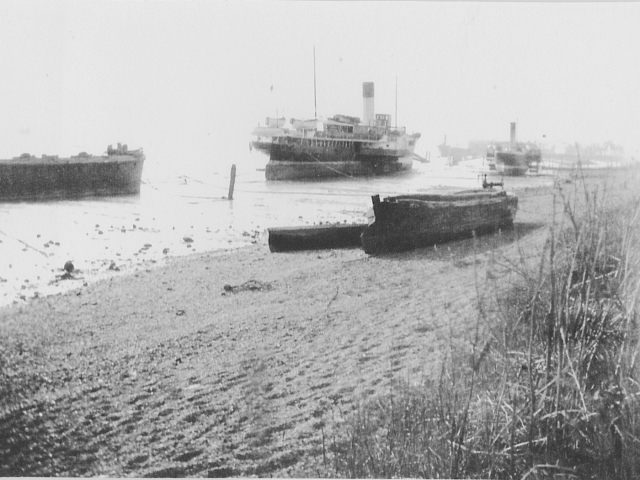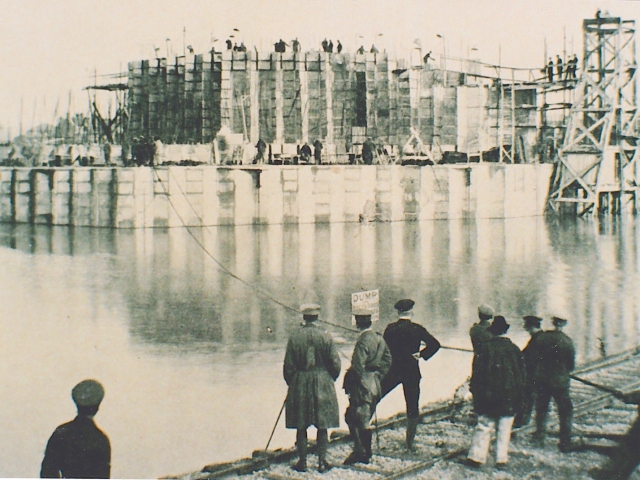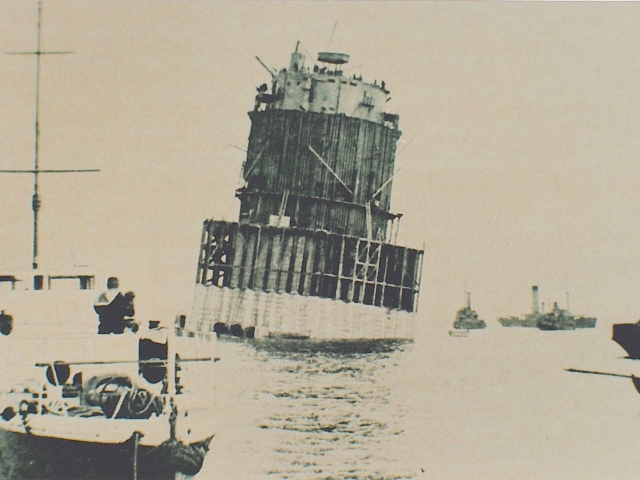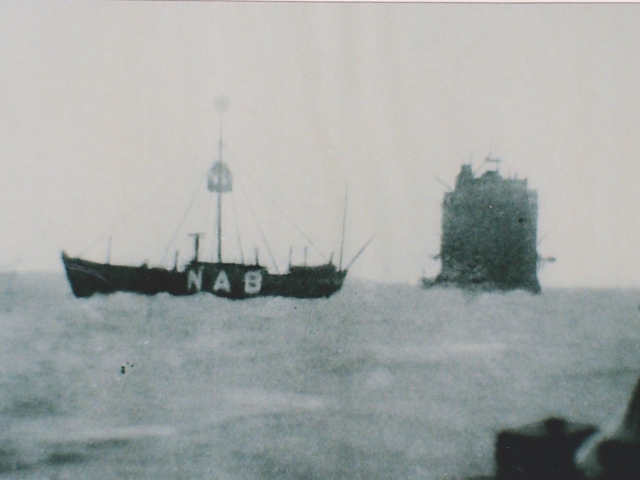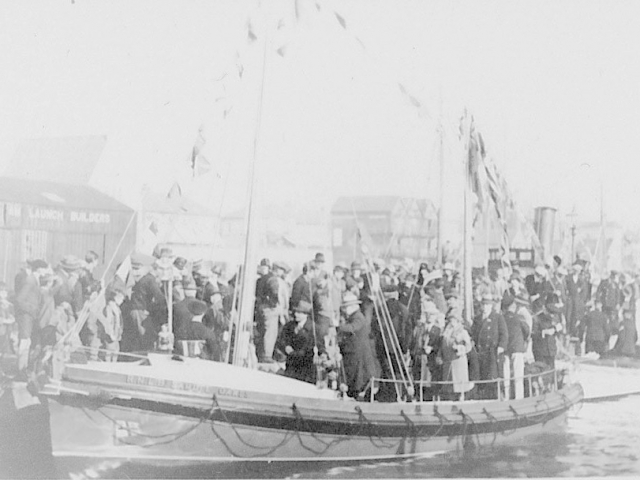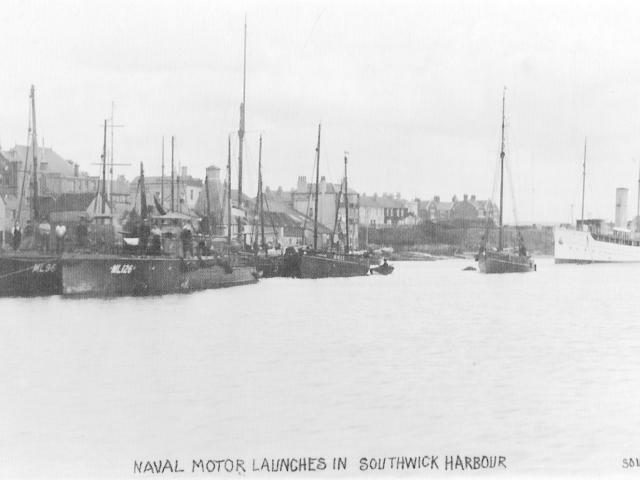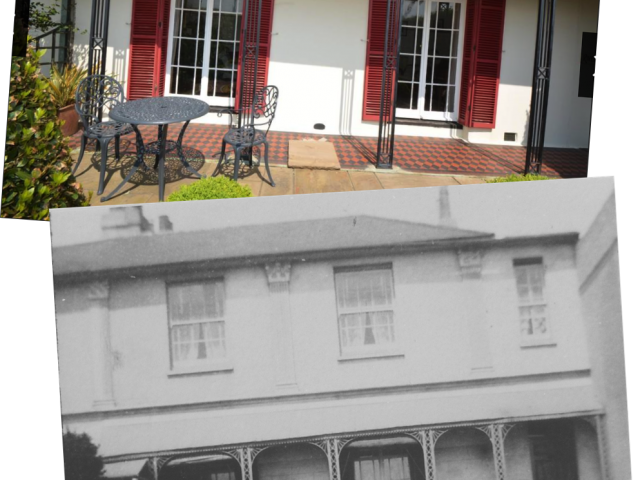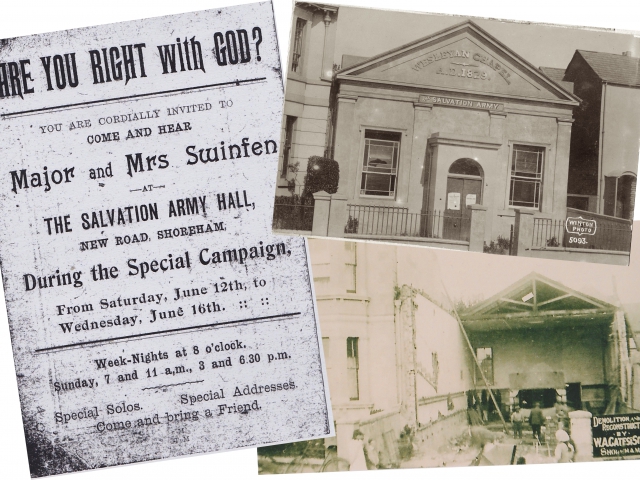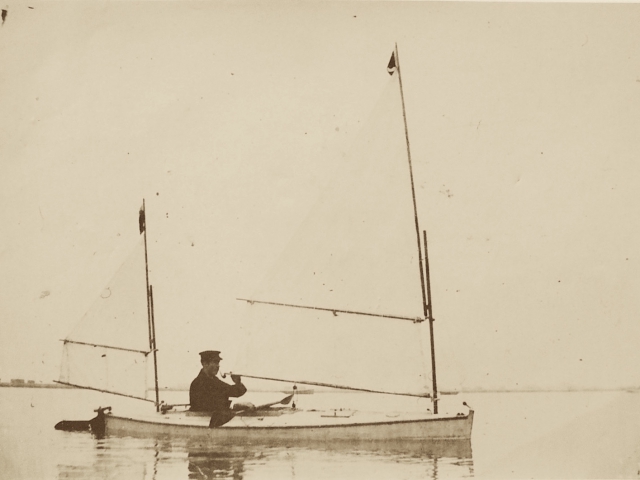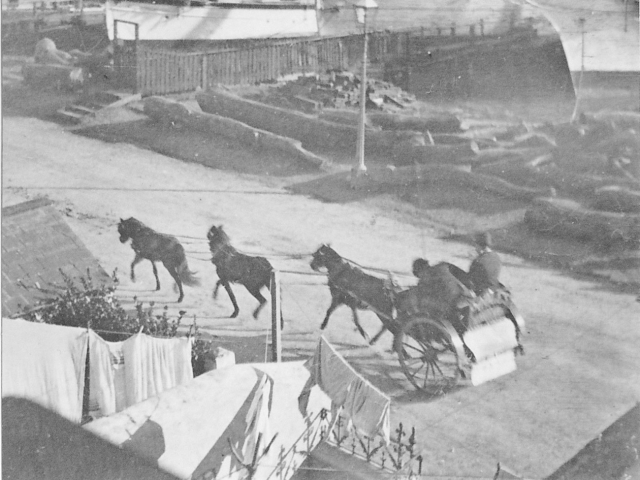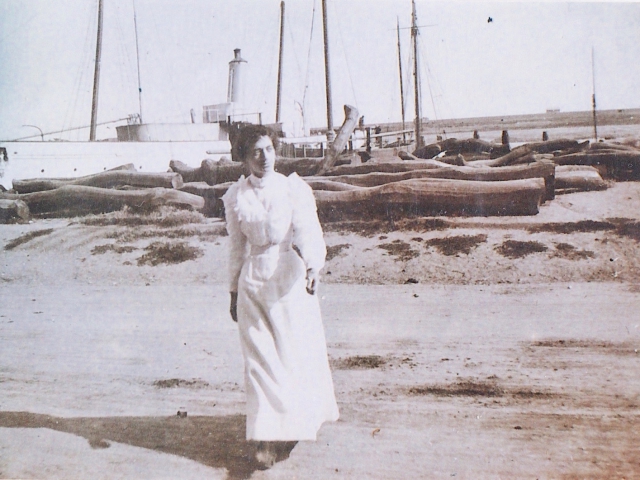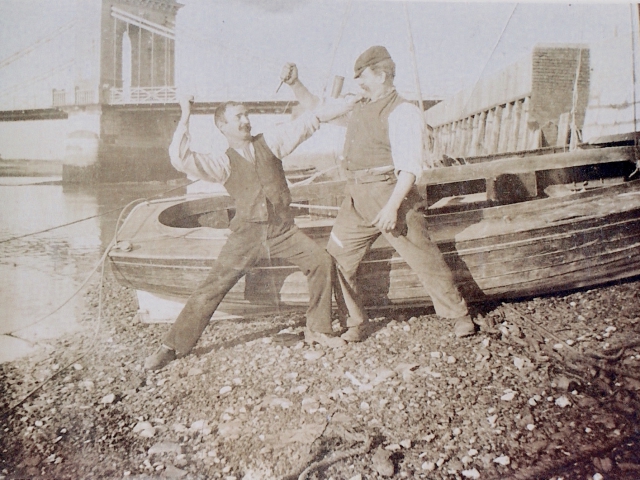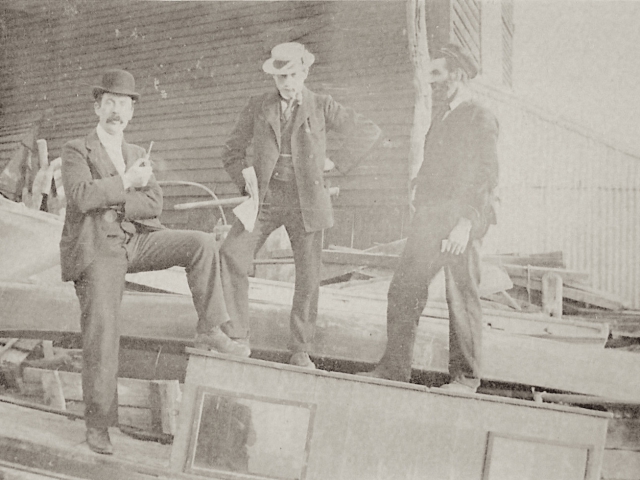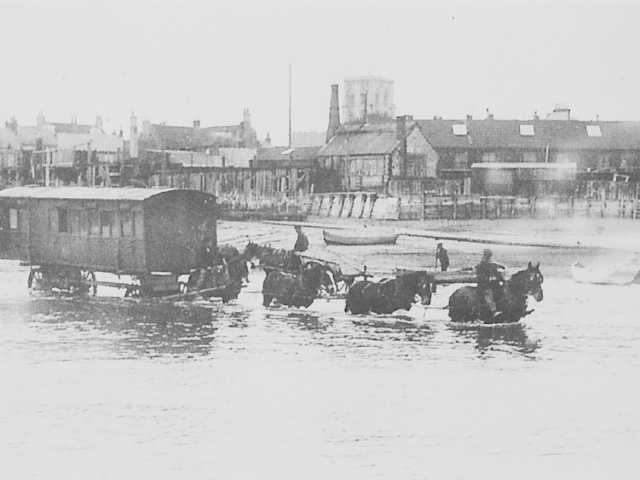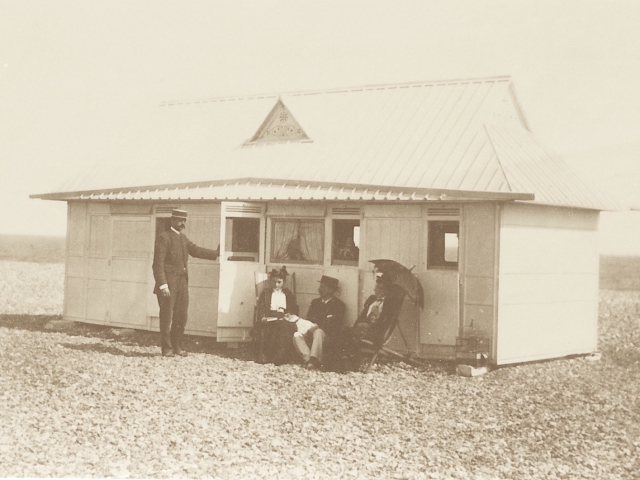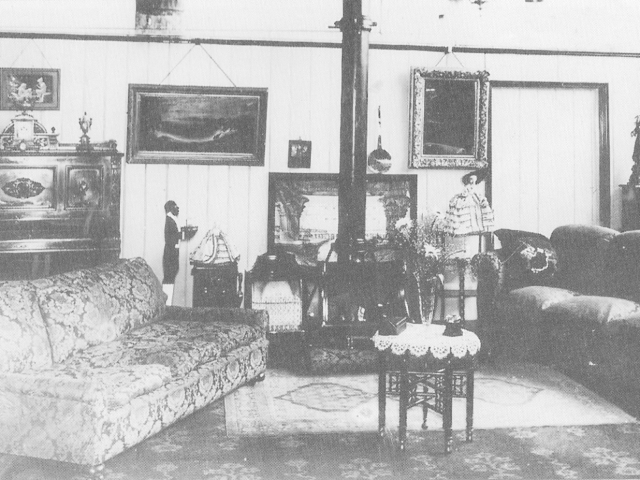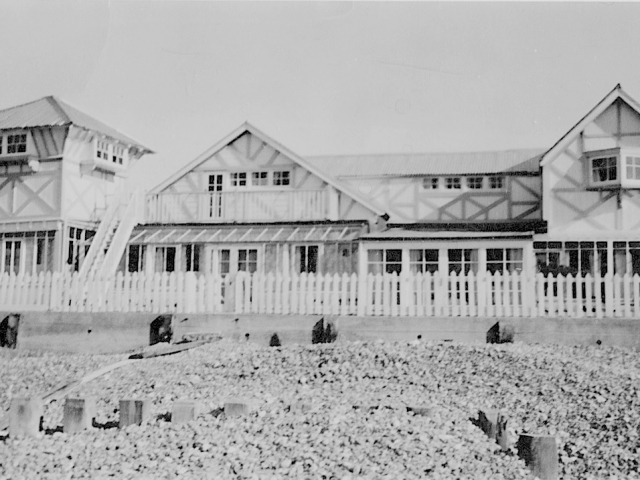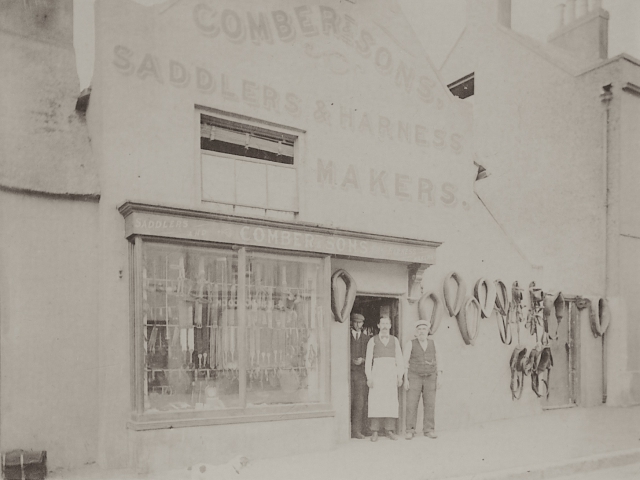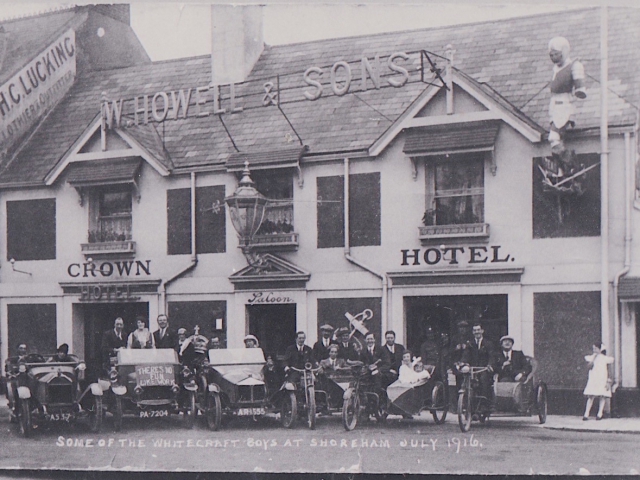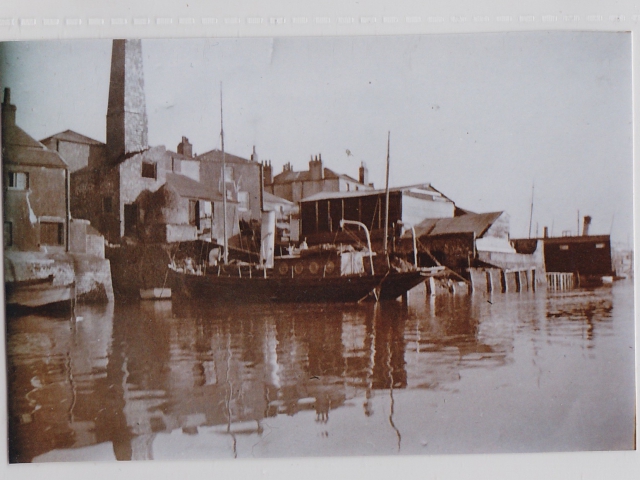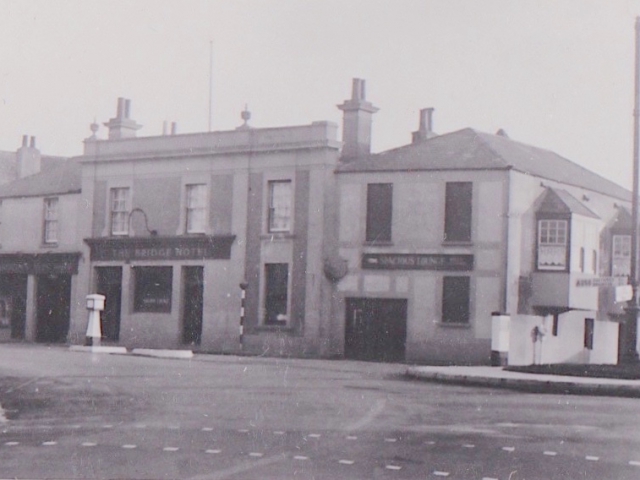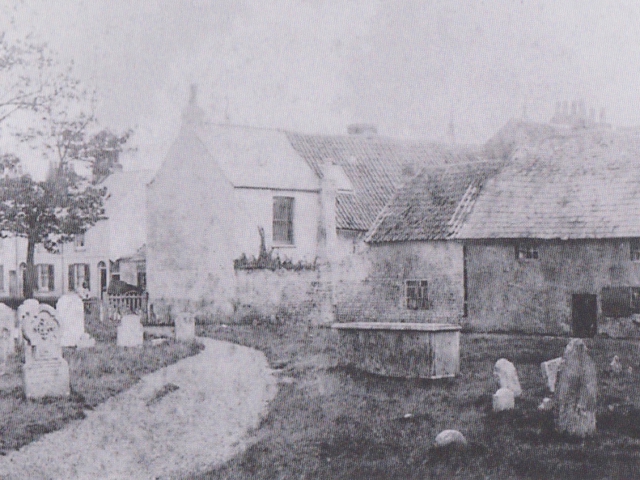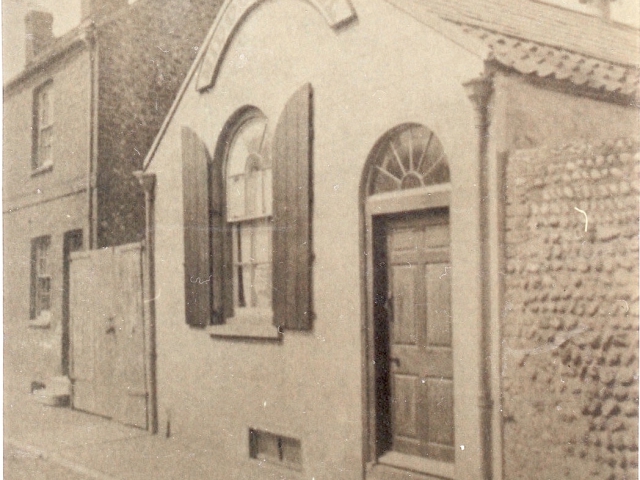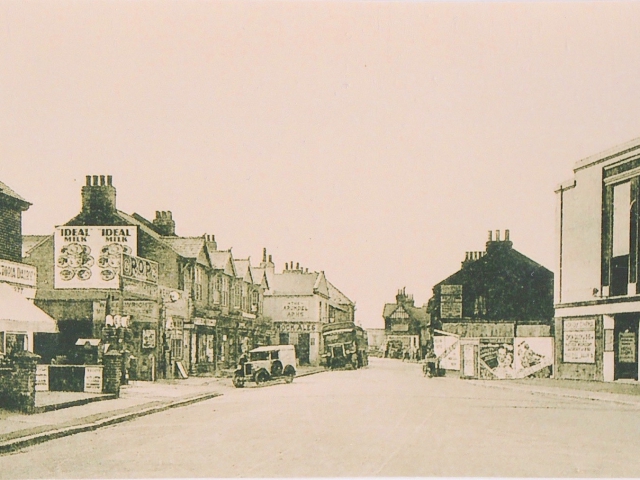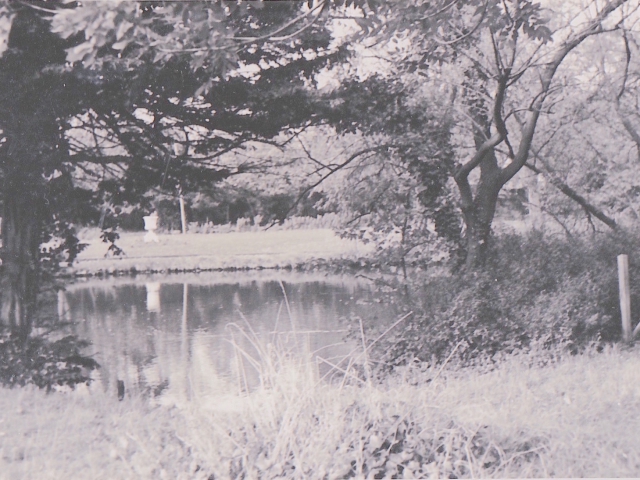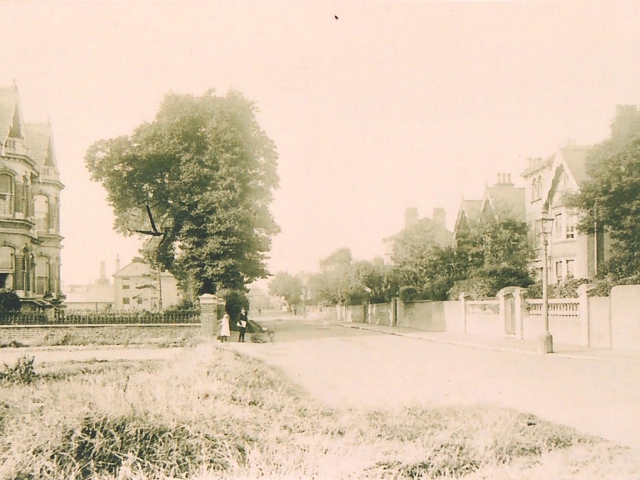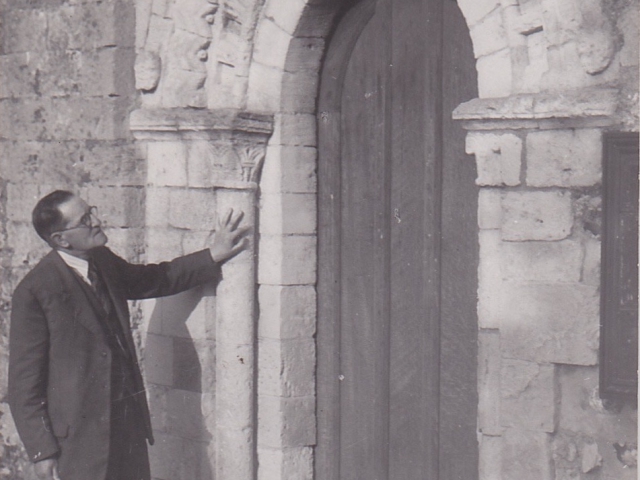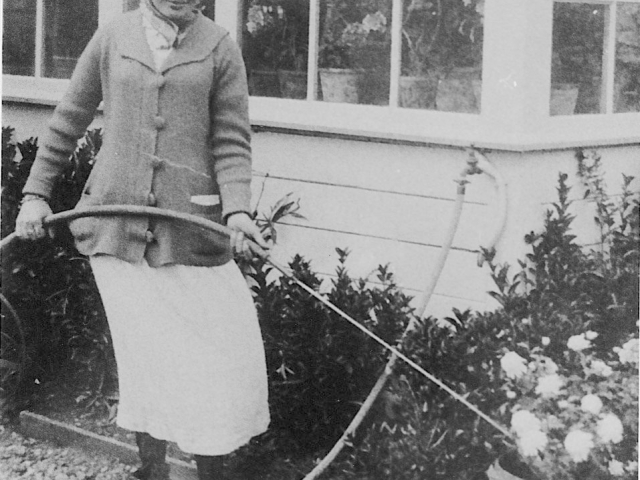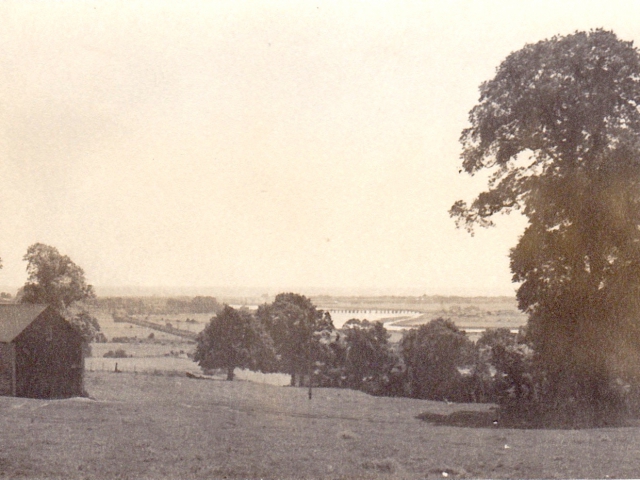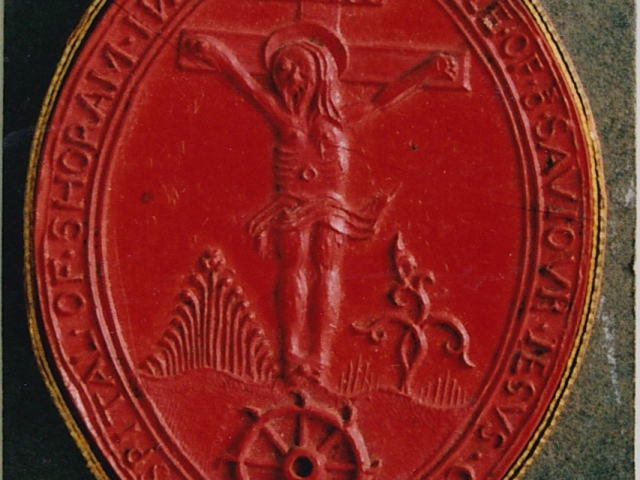Winton Collection
Introduction and Index
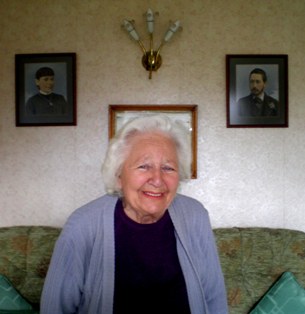
I have been lucky enough to meet many fascinating characters through my interest in Shoreham history. June Stirling was particularly delightful. A lady in her 80s, lively, fun loving and well known to the Beach community, she and her husband had helped to set up the original Harbour Club. June was the granddaughter of William Edward Winton, organiser of the Shoreham regattas and carnivals of the early 1900s, and she still possessed an unlikely but wonderful collection of hundreds of photos, mostly taken by her father Bill, scraps and newspaper cuttings kept in three old, battered and disintegrating albums that shed cardboard crumbs and dust whenever their pages were opened.
These albums, June’s tales of the family and subsequent research uncovered a story of two colourful characters whose work contributed much to a 60-year chunk of Shoreham history, the resultant article of which can be seen on this website at http://www.shorehambysea.com/william-edward-winton/.
Carelessly cut as if in haste many photos are fast fading, some beyond redemption, whilst others have been crudely over-pasted causing the images to crinkle and grow mould with age. Many are photos from the original glass plates some of which were then coloured and converted into ‘dot’ print for the Winton postcards. Newspaper articles, postcards and old theatrical and carnival programmes have been glued in a vague chronological order, one on top of the other sometimes making it impossible to see every complete item.
Yet what remains is a remarkable record, not just of one family but of a 60-year chunk of Shoreham history from mid Victorian times to the 1940’s. Put together by a young Jessie Winton, another granddaughter of W.E.Winton, organiser of Shoreham’s celebrated carnivals and regattas with the resulting family photos, newspaper scraps and snippets reflecting her and her father’s (William Winton junior, photographer and printer) love of their family, amateur dramatics and the events surrounding their friends and neighbours.
(For the sake of continuity the family photos have been put into chronological order within each branch of the Winton offspring so that their progress over the years can be more easily be followed.)
The collection has been made available through the kindness and generosity of June Stirling, the granddaughter of W.E.Winton.
Roger Bateman
February 2010

Each image has a title and description. You can search for specific image content by using CTRL+F on your keyboard, (CMD+F on a Mac) and then mouse-over the resulting images to reveal the title. A text catalogue / index of descriptions is at the bottom of the page.
Index.
W0 – William Edward Winton circa 1862. Apart from the original prints and engravings included in the albums this hazy photo is the oldest image in them. Taken in a studio and showing William as a lad of about 10 when the family were still living in Ropetackle near the gas works where his father was employed as a coke burner.
W1 – William Edward Winton and Emma (nee Lower) about the time of their wedding in 1871 when Emma was just 18.
W1a – Two photos of John Lower and his family. John was Emma’s brother and by 1913 was living at Newhaven.
W1b – ‘The burning of Richard Woodman and Other Protestant Martyrs’ – this original engraving has been included in the scrapbook as the artist M.A.Lower was a predecessor of Emma’s.
W3 – The 1895 Winton family photo. From left to right standing:- Daisy, William junior, Norman, Ivy, Lionel,Stanley and Myrtle. Seated:- William senior, Pansy and Doe the dog, Emma and Ralph.
W3a – 12/14 High Street in the 1880’s when run by the Wintons with the paper boys (and men) standing by William Edward in his bill poster’s van which has an advertisement for ‘Arthur’s Ideal Soap’ upon it.
W3b – circa 1885 -A gathering outside the shop that appears to include at least one friend (Luke Ledward with cap in hand), a policeman and a fast moving Doe, the Winton’s dog. William Edward is second from the left – unfortunately the wording at the foot of the photo is no longer legible.
W3c – The 12/14 High Street shop during the early 1900’s when E.H.Knight (standing in the doorway)leased the shop. Across the road is Payne’s grocery shop and next door to it in the same building just out of sight round the corner to the left was the Winton’s printing works. With the dogs ambling about and the lack of traffic this scene gives a generally sleepy village-like impression of the town then.
W3d – The High Street shop as it was in 1910 after William Winton junior took it over for the Wintons again. In subsequent years it was split into two premises and is now a beauticians and a jewellers.
W3da – The Star Cinema that stood next to William Edward Winton’s house at 9 Church Street and is now the goods delivery entrance for the Co-operative store. The films advertised on the posters are both British -‘Mr. Gilfil’s Love Story’ and ‘Beyond the Dream’s of Avarice’ which were on general release in 1920.
W3db – Winton advertisements from 1907 when the family were living at 8, Church Street before they moved across the road to number 9. The High Street shop is now known as ‘Winton’s Library’ and also promotes Stanley’s plumbing business as well as Daisy’s dressmaking. There is also mention of a ‘large hall’ being for let – something of an overstatement as the hall, later to become the cinema, was very small inside.
W3e – The shop at 25 Brunswick Road around 1910 which was recorded at that time under the ownership of William senior although William junior, his wife and son appear to be in the doorway in this photo.
W3g – Cadets marching along the High Street about 1914. The view looks across the street from the Winton’s shop to Henry Paine’s ironmonger’s shop and on the right the premises used for a while by the Wintons as their printing works. What looks like William junior stands in the doorway with one of the children. Daisy Winton is to the right of them below the steps. There is also a Singer motorcycle poster that advertises the machines sold by Reginald Eley (who married Myrtle Winton) who had his sales rooms/garage further down the High Street. This was the western part of a building made up of a number of properties behind the Dolphin Hotel that spread back to what is now Coronation Green.
W3h – The printing works in Middle Street used by the family business during the 1920’s/30’s that later became the annexe for Marlipins Museum.
W3ha – William Winton junior’s Tourist’s View Pad, Shoreham by Sea – Son William junior remained with the family firm playing an important part in its subsequent development. One brainchild of his was the novel ‘Tourist’s View Pad’ which was a pad of shaped letter paper that included photos of Shoreham views and folded down into an envelope much like the air mail letter paper of more recent years.
W3i – The Star Inn on the eastern corner of Church Street with the High Street. Run by the family for a while this photo is from the Winton album but at the time the photo was taken the landlord’s name over the door was in fact ‘L. Oliver.’
W4 – Norman Edward Winton, second son of William Edward Winton, with his wife Isabella Matilda Jane (nee McDougall) and two children – probably Guy (b.1901) and Ivy (b.1903). Wearing the same uniform as in the 1895 photo, Norman was posted to India where he served with the Royal Garrison Artillery at Calcutta.
W4aa – This photo of Norman in costume may suggest he was dressed up for one of the family carnivals whilst on leave or since returning from India. The family knew him as ‘Duke’ which William Winton junior has annotated above the photograph.
W4ab – A Scout gathering in India. Norman Winton appears to have been involved with the Scout Movement (possibly he is at centre right) during his time in India or this photo perhaps records a visiting dignitary but nothing further is known.
W4ag – Norman Winton with children at the family home ‘Lakeview’in India. – Of the children it is thought that Norman’s daughter Ivy b.1903 and son Guy b.1901 are standing behind him.
W4ah – Norman Winton perhaps with his daughter Ivy – Thought to have been taken during a visit to England.
W4ai – Norman Winton and family in India – Believed to include his wife Isabelle on the right of Norman, son Guy (right standing), daughter Norine b.1908 (left sitting, Ivy b.1903 (right sitting) and perhaps son Elwin b.1911 (centre below seated)
W4aj – Duke (Norman Winton)
W4ak – Norine Winton daughter of Norman Edward Winton married Nicholas d. De Praza 1937 in India.
W4b – Norman Winton’s two sons (William and ?) in India during the 1920’s.Their father, Norman Winton had been working for the Eastern Bengal Railway since 1902.
W4c – This British built locomotive was one of the engines Norman Winton was in charge of during his work as Locomotive Foreman at Chitpur in India. He is shown in the white suit and unusual headgear, doubtless an effective protection from the sun.
W4d – A certificate of appreciation presented to Norman Winton upon his retirement after 30 years of working in the administration of the Eastern Bengal Railway at Chitpur. ‘Pooling’ was a system of business sharing between different railway companies that was not considered effective elsewhere in the world but obviously Norman’s application of it was a success.
W5 – Playing cards was one of William Winton’s favourite pastimes. In this photo from the early 1900’s titled ‘Nap’ he is seen (centre) with his friends in the garden of his home at 9 Church Street. Luke Ledward’s son Alfred worked for William as a printer and compositor .
W5a – William Winton’s energy even in his sixties is demonstrated here during a rowing race at one of his regattas (William’s son, Wiliam junior, often referred to his father as ‘guvnor’ and this annotation against photos of his father often appears). Rowing with him is H.Brown – Harold Brown another well known figure in Shoreham who always a willing participant in races.
W5b – More evidence of William senior’s vitality. In this race with Messrs. Griggs and Parker he can be seen on the track that is now covered by Windlesham Gardens. In the background is the windmill that stood in Mill Lane now the site of the offices of Strattons Builders.
W5ba – Emma Winton, Myrtle Winton and Ralph Winton – Taken in the garden of 9, Church Street with Emma now in her fifties but still an attractive woman. Daughter Myrtle and son Ralph are with her.
W5bb – Ralph Winton and friends circa 1903 – Youngest son of William and Emma Winton, Ralph Winton is seen here seated on the right.
W5bc – Edward Eley visits the Wintons – Edward Eley was the father of Reg who at the time of this photo was courting Myrtle Winton. (Edward was a well known councillor from Haslemere in Surrey who’s work is described in W6l). The gathering was commemorated with this photo – left to right standing:- Pansy Winton, Mary (Polly) Winton, unknown, Reg Eley, Daisy Winton, Douglas Hedgecock, Geoffrey Winton. Sitting:- unknown, Edward Eley, Emma Winton, Myrtle Winton, unknown. The children are Jessie Winton, Sam Maple and Hubert Winton.
W5bd – Edward Eley’s Glass and China shop in Haslemere, Surrey.
W5c – William in typical ‘hands in pockets’ pose probably with his employees as the man on the left appears in a number of other photos later. The building behind them could be somewhere in Bungalow Town.
W5d – William Edward Winton was a very sociable person and enjoyed entertaining at his house in Church Street. He was also generous in organising outings for his employees and friends. The following selection of images record some of the picnics and boating trips up river that he arranged between 1900 and 1913.
This particular photo shows WEW centre rear and his son William junior just right of the children holding his fork.
W5e – See W5d – Many of the characters in this photo can be seen again in other outing snapshots
W5f – See W5d. In this photo WEW is leaning back in his chair. James Hackett, well known Shoreham athlete and amateur actor is in braces on the left of the table and Luke Ledward also in braces stands to the left of Hackett.
W5g – See W5d. One of the boating trips but does not appear to be in the country behind Shoreham.
W5h – See W5d.
W5i – See W5d. WEW as ever is immediately identifiable with his white trousers and very short tie
W5j – See W5d. WEW far left on fence.
W5k – See W5d. This time the party got as far as ???? Bridge but just how long they were able to stay standing in those boats is questionable.
W5ka – William Edward Winton (in white trousers, man extreme left appears in a number of group photos, perhaps Old Shoreham area?
W5kaa – Winton Friend and his dog – A friend of William Winton’s who also appears in the outing photo W5e and again in W5kaab
W5kaab – Winton Friend and horse – The same man as in W5kaa who is also to be seen in photos of the Winton outings.
W5kaac – Unknown Group – The identity of this happy and attractive group is not known but is thought to be the family of the man on the left who also appears in one of the Winton outing photos – image W5f, second left from William Winton.
W5kaad – Winton Friend 1 – A posed photo of another of William Winton’s friends who also appears in W5kaae, W5kaaf and the outings photos.
W5kaae – Winton Friend 2 – Another posed photo of the same man as in the preceding picture and W5kaaf as well as the outings photos.
W5kaaf – Winton Friends and Relatives – A collection of characters probably all known to William Winton including his son-in-law Arthur Maple (left), George Hedgecock (centre) bootmaker at East Street and brother of William’s daughter-in-law, and the same bowler-hatted man seen in the preceding photos.
W5kaag – Mr. Cooper outside St.Mary’s Church circa 1900 – Thomas Cooper was the cemetery keeper who lived at the lodge at the entrance to the cemetery in Mill Lane.
W5kab – William Winton and helpers in the garden of 9 Church Street when during digging a number of old cannonballs were discovered. These were presented to Marlipins Museum but sadly are now disintegrating.
W5kb – Daisy Winton in the garden of 9 Church Street c.1910 – William Winton took a similar picture of Pansy Winton (see W7b)
W5kc – Daisy and Pansy Winton in Carnival Dress – The Winton family seemed always to be dressing up for the carnivals that their father organised. In the left hand photo Pansy is top right and Daisy below left in the first photo – in the second photo they are joined by the family cat and, probably unknown to them at the time, an interested onlooker behind them.
W5kca – Daisy Winton circa 1906 – Another photo of Daisy in carnival costume.
W5kcb – Daisy and Pansy Winton circa 1906 – At the time this photo was taken Daisy was running a dressmaking business in Shoreham.
W5kd – Daisy and Freda Clements c.1923 – Daisy Winton married Frederick Clements of Southwick in 1916 and Freda was their daughter.
W5ke – Freda Clements – A portrait photo of Freda Clements.
W5l – Wedding group at the marriage of Arthur Maple to Ivy Winton in 1908. Arthur was the son of an Oyster Merchant who lived at the old cottages next to the King’s Head inn at Ropetackle. The newlyweds are seated at the front centre. Next to Ivy from right to left is her mother Emma, Mary (Polly as she was known) William Junior’s wife, then Pansy Winton. Daisy Winton is seated second from the left and father William Edward Winton can be seen behind and above Polly. The stunningly good looking couple Myrtle Winton and her boy friend Reginald Eley (with high shirt collar) stand behind William Edward. Also in this picture are Albert and Fanny Patching – Albert was a nother racing cyclist (as was Reg Eley) and later became Secretary of the Shoreham Cycling and Athletic Club – he is at the back on the extreme right and she is above and between Ivy and Emma Winton and can be compared with image number dks29c in the Doris Steers photo gallery on this web site.
W5l1 – Johnny Maple circa 1914 – Eldest son of Ivy and Arthur Maple.
W5l2 – Daphne and Sam Maple circa 1915 – Top:- Daphne Maple in car left with her brother Sam alongside her (other two children unknown. Below:- Daphne Maple a few years after.
W5lba – Daphne Maple Wedding Report – Daphne married Robert Bartlett also from Old Shoreham and her brother Sam was best man. Tragically,not so long after Daphne was to contract an ear infection that killed her within a few short days.
W5la – The Maple Family c.1925. Ivy (nee Winton), Daphne, Sam, Arthur and John in the garden of their house in Upper Shoreham Road. The boys later played football for Shoreham and the whole family were involved with the Wintons in carnivals and the amateur theatricals.
W5lb – Ivy’s daughter Daphne Maple as a young woman and (right)with her friend Renie Cheesman, another Shoreham girl.
W5lc – Ivy Maple’s (nee Winton) son Sam is reported here as a prominent Shoreham sportsman at football, cricket and rowing. His father and uncle were also Shoreham footballers during the early 1900’s when the town team was something of a force in the county.
W5lcb – John Maple’s marriage to Vera Everett circa 1940. John, a pilot in the RAF, was killed in an aircraft crash shortly after.
W5ld – Marriage of Lionel Winton to Sarah Thomsett 1909 – Lionel was the second son of William and Emma Winton. He is seen here on his wedding day with his bride and (left to right standing)Pansy Winton, William Edward Winton, Myrtle Winton, Norman Edward Winton, others standing unknown. Emma Winton is seated next to Lionel and Jessie Winton is the third child from the left.
W5lda – Wedding Group 1909, Shoreham by Sea – It appears that the young Jessie Winton cut up some photos and pasted them separately throughout the album. There are enough cut fragments to reassemble most of one photo which is shown here. It shows a relaxed assembly of friends and relatives during Lionel and Sarah Winton’s wedding.
W5lf – Lionel Winton (and dog) and his wife circa 1918.
W5lfa – Brighton & Hove Albion verse by Mickey Doolan, Shoreham by Sea – Lionel (or Bert, to use the nickname that his brothers and sisters gave him) made something of a name for himself composing comic verse. This is the only known example of his work and provides an ABC of Brighton & Hove Albion as it was about 1920.
W5lg – Donald Winton, Lionel’s son, b.1912
W5lh – Donald Winton and Mary Kemp Wedding 1938 – From left to right Daphne Maple seated, standing Donald, Mary, ‘Little’ Stanley Winton (junior) – children and other bridesmaid unknown.
W5li – Newspaper report of Lionel Winton’s Death 1940 – This report touches on Lionel’s sporting background and his humorous writings. For many years his printing business had long been in Brighton and he resided in nearby Hove.
W5o – Emma Winton and Newspaper report of her funeral, Shoreham by Sea – Emma Winton was only 61 when she died. This photo of her with her dog in the garden of 9, Church Street is probably one of the last ones taken of her. The funeral was at St. Mary’s church and there are many familiar Shoreham names amongst those attending.
W6a – Myrtle Winton as a teenager
W6aa – Myrtle Winton in her late teens
W6ab – A break for a pose during a bike ride up country. Myrtle Winton’s cycling may in part have been due to her boyfriend Reg Eley’s interests as he was a well known amateur racing cyclist.
W6b – The Winton sisters in costume during one of the earlier carnivals their father was involved in – from left to right Pansy, Ivy, Daisy and Myrtle sitting.
W6c – Myrtle Winton in fancy dress carnival costumes
W6d – Myrtle Winton with bandsmen – she is holding a string bow and perhaps played a musical instrument herself.
W6e – Seated here on an open frame ladies’ motor cycle, Myrtle Winton poses with an early Singer Moto Velo motor cycle. Her fiancé had set up a business selling these machines in Shoreham.
W6f – Reginald Eley on one of his motor cycles outside the Winton home at 9 Church Street.
W6h – This excessively pasted advertisement in the scrap book was published by the magazine ‘Motor Cycle.’ It not only uses pictures of her with the Singer bike but also an article in the name ‘Miss H. Myrtle’ which was more likely to have been written by the Singer people rather than her.
W6i – The photograph of Myrtle Winton used in the advert.
W6j – Myrtle Winton and Reg Eley on their wedding day in 1914. Both smartly dressed with Myrtle in a typical ladies fashion of the time. Myrtle was by then 29 and had known her husband since at least 1908 (see image no.W5l) – a long courtship and perhaps a late marriage but most of the other Winton sisters were of similar ages when they were wed. The couple are seen here in the garden of 9 Church Street and behind them is the courtyard of the neighbouring house at number 11 (there were no separating garden walls there).
W6ja – Reginald Eley’s motorcycle garage in the High Street. This was at number 44 which is recognisable from other old photos of the High Street as being the entrance to the stables of the remaining part of the old Fountain Inn. This had been absorbed into the later Bridge Inn and demolished in the road widening of the 1930’s. Reg stands in the doorway and Geoff Winton (William Winton junior’s son) is holding a motorcycle, a 500cc Scott, a model that won the Isle of Man TT race in 1913. The sign-writing to the right of the doorway shows that Reg was living with the Winton family at the time. By 1925 the business had moved to number 44 High Street between the John and Middle Street junctions.
W6jb – Myrtle Eley with her new son Anthony 1924 – With the onset of WW2 Anthony was in a reserved occupation and was never required to join up. Nevertheless he did and was eventually killed in action as a tail gunner in the RAF.
W6jc – Myrtle Eley outside the Wintons’High Street shop 1920
W6K – The newspaper report of Reg Eley’s funeral in 1926. His death at age 40 is poignantly recorded as ‘having been accelerated by the war.’ He had served with the Anti Aircraft Maxim Gun Section of the Royal Marine Artillery but there is no notation in the albums of his service as a soldier. Reg was from Haslemere in Surrey where he spent his early sporting years cycling for the local club then later Worthing Excelsior Cycling Club after moving to Shoreham.
W6l – Following the death of her husband, Myrtle Eley moved to Bournemouth to join her sister and brother in law, Pansy and Robert Hall. Here she met and remarried during which time her first husband’s father, Edward Eley, spent his final years with them. Previously a Chairman of the Haslemere Council, Edward’s passing was marked by reports in the Surrey press.
W6m – As Mrs Foster, Myrtle settled into middle age continuing to raise her son and also becoming involved with her new love of bowls. In this photo she is seen with her husband Samuel on the greens at Bournemouth.
W6n – Myrtle Foster with some of the trophies she won in Bournemouth. Following the subsequent death of her second husband she returned to Sussex and spent her final years at a house at Widewater in Lancing.
W7 – A young Pansy Winton early 1900’s
W7a2 – Pansy Winton circa 1905 – Perhaps William Winton junior’s daughter Jessie cut out and glued many of the photos when she was quite young as many have been quite crudely snipped. This photo of a beautiful Pansy Winton has also been cut out from a larger picture but with a little more care than the others.
W7a3 – Pansy Winton in carnival costumes c.1915. As a photographer William Edward Winton often ‘posed’ his daughters rather than taking straightforward pictures.
W7b – Pansy Winton in the garden of 9 Church Street, again suitably posed. c.1915
W7c – Stanley Winton, Billy Reading and Bobby Hall on the day of Emma Winton’s funeral. Billy is wearing a black armband and Robert, better known as Bobby, came from Brighton and married Pansy in 1916. (Although standing in the garden of number 9 Church Street the courtyard of number 11 next door can be clearly seen with its outhouse on the left and the outside toilet behind Stanley. Although now separated by a dividing wall that courtyard remains largely unchanged) c.1915
W7ca – Messing about on the River Adur circa 1920, Shoreham by Sea – The men taking it easy whilst the woman does the hard work! From left to right Pansy’s husband Bobby Hall, William Winton senior, Pansy, Stanley Winton, the family dog, unknown.
W7d – circa 1924 Standing in the garden at 9 church Street are, left to right, Edward Hall (Pansy’s father-in-law), William Edward Winton holding June Hall (Pansy’s daughter and the current owner of the Winton albums), Mrs Hall (Pansy’s mother-in-law), Pansy holding her son Dennis and Pansy’s husband Bobby Hall. Pansy and her family later moved to Bournemouth where Bobby had a job with Armour Foods. He was not a well man and suffered from a heart condition that was responsible for his premature death after which Pansy and the children returned to Shoreham.
W7e – Edward Hall Pansy’s father in law during the 1930’s. At this late stage of his life Edward caused something of a stir in the family by marrying for the second time to a girl who was even younger than his own son.
W7f – Dennis and June Hall, Shoreham by Sea – Dennis as a young baby and below, with his sister June (the owner of the Winton Collection)circa 1928.
W7fa – The Hall family and W.E.Winton, Shoreham by Sea – On a day out from left to right unknown girl (possibly Jessie Winton), June Hall, Dennis Hall, Pansy Hall and her father William Edward Winton.
W7fb – Dennis Hall and other RAF pilots wearing their newly attained ‘wings.’ – Dennis (second from left) joined the RAF during WW2, qualified as a pilot but was killed in an air crash in Scotland.
W7g – Stanley Winton aged 30 and a newspaper article report of the house he built on the Brighton – Worthing Road.
W7ga – Stanley Winton
W7h – Winton Family at Shoreham House c.1920. Outside Shoreham House in John Street, the home of W.C.A.Winton (junior). From left to right Arthur Maple in the rear seat with son John next to him and daughter Daphne Maple at the rear standing. Jessie Winton (front,standing), Sam Maple with his mother Ivy Maple (in big hat) behind him; Stanley Winton in the driving seat and Robert Hall in the front passenger seat with Little Stanley between them; to Bobby’s right is Geoff Winton, Hubert Winton and their mother Polly Winton – George Hedgecock’s daughter and son are standing behind Robert Hall. Stanley seems to be on a visit from London in his not quite so new motor as it looks to be a pre-war Renault which had its radiator behind the engine. Nevertheless car ownership then was still something of a rarity and likely to have drawn some attention.
W7ha – Golden Sands Holiday Camp, Lancing. Stanley Winton, like his father, was something of an entrepreneur always looking for business opportunities. During the 1920’s/30’s he bought a number of redundant Pullman railway carriages and fitted them out as holiday accommodation at nearby Lancing. This photo shows them in various arrangements with entrance porches built on.
W7hb – A similar view to W7ha but now a wintry scene and some time on as steps are now visible at the southern end although the pile of rubbish in the centre seems not to have been disturbed. (photo by permission of Jon Spence)
W7hc – Golden Sands looking north-east. Stanley’s three houses by the bank before the Lower Brighton Road eventually provided accommodation for his sister-in-law Mary, and sister Pansy for a while. (photo by permission of Jon Spence)
W7hd – One of the Pullman carriages with (left to right) Stanley Winton’s sister Myrtle Foster (widow of Reg Eley), Sam Maple’s wife, Sam Maple and (probably) Myrtle’s husband Samuel A. Foster. (photo by permission of Jon Spence)
W7i – A 1920’s Daily Express report of Stanley’s proposals for flood prevention on the River Thames. Needless to say it was not accepted but does involve principles that are nowadays given more serious consideration.
W7ia – Geraldine Winton, nee Spence, who married Stanley in 1923.
W7j – Winton Ltd (London) Staff Outing 1921. Stanley Winton’s London employees after lunch at Bungalow Town on their staff outing. Stanley is on the extreme right.
W7ja – Winton Ltd Haulage Advertisement, c.1930.
W7jb – William Clement Adolphus Winton,circa 1890 – William Winton junior as a youth of about 17.
W8 – William Clement Adolphus Winton as a young man. Known to most as William Winton junior or ‘Bill’ to his friends and family he was instrumental in continuing the success of his father’s printing business. He developed a passion for the theatre and became a leading light in Shoreham’s amateur dramatic and operatic societies taking part himself and stage managing many productions at the Coliseum Theatre and local church halls. C.910
W8a – Mary Emily Hedgecock photos dated 1888 to c.1900, Shoreham by Sea – As a family of photographers it is unthinkable that there were never any group wedding photos taken of Mary Hedgecock’s marriage to William Winton junior but if there were perhaps they had pride of place elsewhere in their own photo frame and missed being pasted into the family album. Neither are there many of Bill Winton junior himself in the following family photos but largely because he was the man behind the camera. What we do have though is a triplet of photographs of Mary showing her emergence from a girl into a young woman. The first dates from around 1888 and is one of her in her mid-teens taken at the William Page studio on the north-east corner at the top of East Street. The second is dated about 1895 and shows Mary as a young woman but still with the softer features of youth and it is easy to see what attracted Bill Winton to her. The last image was taken a few years later at a Brighton studio which must have been near the time of her marriage. The fact she did not chose the Wintons for her photo suggests the Wintons at that time used photography for their printing/postcard business rather than studio work.
W8aab – Jessie and Geoff Winton circa 1905, Shoreham by Sea – William Winton junior and Mary’s first two children showing Geoffrey dressed like a girl as was the fashion for infant boys then.
W8aac – Jessie Winton circa 1910, Shoreham by Sea
W8ab – William Winton junior’s family c 1910, Shoreham by Sea – Mary (Polly as she was subsequently called by the Wintons) married Bill Winton junior in 1901 but no photos of their wedding seem to have survived. Possibly taken during a visit to her mother Susan Hedgecock (left) the photo includes Mary’s son Hubert, Mary herself, son Geoff,unknown, then daughter Jessie sitting cross-legged on the chair.
W8am – An engaging picture of Geoffery Winton, Bill’s first son, dressed in Daily Express paperseller’s uniform outside the shop in the High Street. Behind him can just be seen a Sussex Daily News newspaper which provided many of the articles pasted into the Winton scrapbooks in subsequent years. c.1909.
W8an – Stanley Winton aged 3 in 1916, known by the family as ‘Little Stanley’ one of William Winton junior and Mary’s sons.
W8ao – Hubert and Geoffery Winton circa 1908, Shoreham by Sea
W8b – On the beach at Bungalow Town c.1911. William Winton junior married Mary Emily Hedgecock in 1901. Mary was the daughter of Shoreham postman Albion Hedgecock, brother of Shoreham shoemaker George in East Street and lived in the High Street between the Middle and John Street junctions. The Wintons knew her as ‘Polly’(they tended to give nicknames to most of the family). Their children seen here are (left to right) Hubert Leslie b.1904, unknown, Jessie b.1903, Polly (sitting upright), unknown with Stanley (known as ‘Little Stanley’) b.1913, and standing Geoffery Norman b.1904.
W8ba – Jessie Winton c.1911
W8c – Bill Winton’s family seen here visiting relatives perhaps – Polly is second left with Geoffery, Hubert and Jessie with the family dog. Neither the location nor the remaining individuals have been identified. C.1911
W8d – Polly and the children in the countryside – probably behind Shoreham as the downs beyond look familiar, perhaps Mill Hill area in the background?
W8e – Left to right Geoff, Little Stanley, Polly, Jessie and Hubert. Little Stanley is probably laughing at his father taking the picture. It appears to be springtime from the flowers in the field and the reversed pram is typical of the period.
W8ea – Mary (Polly) Winton circa 1912, Shoreham by Sea – Two shots of Polly clipped from larger photos probably by her daughter Jessie.
W8f – William Winton junior in the back of a chauffer driven car? One of his children, probably Stanley is beside him. Was business that profitable by then with such a large car? Certainly he and his family were now living in the prestigious Shoreham House in John Street. Did it belong to the man standing in the foreground? Perhaps it was George Hedgecock’s, William’s brother-in-law, who can be seen at the wheel of an identical vehicle in GH 25 of the Hedgecock photos on this website.
W8fa – ‘Little’ Stanley Winton in carnival costume circa 1925, Shoreham by Sea – Known by the family as ‘Little’ Stanley (to differentiate him from his uncle Stanley)he is here dressed in the same carnival costume that can be seen in the photo W10bka
W8fb – Junior Football Team 1928, Shoreham by Sea – The two cousins John Maple and Stanley Winton grew up together and both regularly played for their local football teams. They are seen here together with the rest of the team under the mysterious title of ‘Intermediate B’ in the local junior or school football league – either the team’s name or perhaps as champions/cup winners?
W8fc – Shoreham Wanderers F.C. 1930, Shoreham by Sea – John Maple and Stanley Winton in a team photo now with Shoreham Wanderers this time joined by J.H.Hackett, probably the son of James Hackett the well known amateur actor and long standing friend of the Wintons.
W8g – Geoffery and Hubert Winton c.1920
W8h – Geoffery Winton aged 16.(1920)
W8ha – Jessie Winton as a teenager on Shoreham Beach c.1918
W8i – Two photos of Jessie Winton, one in carnival fancy dress (the same one used by other members of the family in previous years). c.1922
W8j – Jessie again with pearls in her hair and by now showing a little more maturity. C.1922
W8ja – Hubert and Jessie Winton c. 1925, Shoreham by Sea – Brother and sister seen here in Scottish and 18th century attire – the Wintons who always had a store of theatrical and carnival fancy dresses and costumes.
W8jab – Childrens Tea Party (1), Shoreham by Sea – At first glance when sorting out the collection of photos the Wintons seemed to have held a good number of childrens tea parties. On further examination though it could be seen that the photos related to two tea parties. This rare couplet of shots were taken literally within minutes of each other. The garden is too large to have been at the Wintons Church Street or John Street houses but as most of the Maple family are there it may well have been in the garden of their house in the Upper Shoreham Road. Using the lower photo those seated in chairs from left to right are one of the Hedgecock boys in front of Johnny and Sam Maple who have spoons in their mouths. Behind them is their father Arthur and mother Ivy. The two women in hats are unidentified but Jessie and her mother Polly Winton are to their right followed by another unidentified woman in a hat then Geoff Winton and Norman Winton’s daughter Ivy.
W8jac – Childrens Tea Party (2), Shoreham by Sea – Probably the same party as in W8ja as the children here can be seen in those photos.
W8jad – Childrens Tea Psrty (3), Shoreham by Sea – Another party, possibly a birthday party as suggested by the toy horse and teddy bear. Mary (Polly) Winton is centre left at the rear and to her right across the gap is her son Geoffery, daughter Jessie and sister Pansy. Pansy’s husband Bobby Hall is in front of her and Daphne Maple in front of Bobby. To the right of them is Daisy Clements holding her daughter Freda and on the extreme right is Myrtle Eley.
W8jae – Childrens Tea Party (4), Shoreham by Sea – A shot of the children in W8jad which includes those from the Winton and related families.
W8jb – William Winton junior 1927, Shoreham by Sea – Bill Winton junior is not often seen in the photos of the album simply because he was behind the camera most of the time. To compensate this is an enlargement of him from the curtain call of one of his productions (see also W11ce).
W8jba – Jessie, Stanley and Geoffery Winton, Shoreham by Sea – From left to right Jessie Winton with her uncle Stanley, brother Geoffery and three others unknown possibly at Bungalow Town in the Widewater area
W8jc – Jessie Winton circa 1935, Shoreham by Sea – Thought to have been taken during a day out to Arundel.
W8jd – Winton Family Outing circa 1935 – From left to right Geoffery Winton, Stanley Winton (senior), unknown boy, Arthur Maple, Jessie Winton,(Little) Stanley Winton and Hubert Winton at Lewes Priory.
W8je – Mary (Polly) Winton, Lilian Hedgecock and others circa 1945, Shoreham by Sea – These photos were probably taken after her husband Bill Winton junior had died when the Wintons were living at 28 Victoria Road. Perhaps recording a family visit the first photo (left) show Polly’s niece Lilian Hedgecock (centre) with Polly on the right. The others may be members of the Hedgecock family.
W8k – George Hedgecock & Caroline Harriett Stillaway wedding 1897 – The group includes Mary Winton (nee Hedgecock)on the left. Mary had married William Winton junior in 1901. George was her elder brother for whom she had worked previously at his cobblers shop at 12 & 14 East Street – he had been one of the leading lights in Shoreham’s Bachelors’ in the 1880’s (see ‘Rise and Fall of Bachelors’ Hall in the research section of the shorehambysea.com history portal).
W8ka – William Hedgecock, George’s younger brother.
W8kab – George junior (Timothy?), Caroline, Reginald and George senior outside their bungalow on the Beach.
W8l George Hedgecock and family with their motorcycle c.1918, Buckingham Road, Shoreham by Sea – George purchased a Singer motorcycle and sidecar from Reg Eley’s Shoreham garage in 1912 then with an employee of his as a passenger journeyed all the way to Edinburgh and back – the journal of the event can be seen in “The 1912 Shoreham/Edinburgh Motorcycle Marathon” on this web site. Seen here with the family from left to right are thought to be son George (or Timothy?), George senior on the motorbike, wife Caroline in the sidecar holding youngest son Reginald and daughter Lilian.
W8m – George Hedgecock and family c.1925 – From left to right Reginald, George, Lilian, Caroline and George junior (Timothy?).
W8n – The marriage of George Hedgecock junior (Timothy?)c.1930. Left standing George Hedgecock senior with his wife Caroline seated. George junior centre left seated next to his bride Joan Large(?) and his brother Reginald Hedgecock behind him.
W8o – Lilian Hedgecock c.1925 – Daughter of George and Caroline Hedgecock
W8p – Hubert and Jessie Winton c. 1925.- Brother and sister seen here in Scottish and 18th century attire – the Wintons who always had a store of theatrical and carnival fancy dresses and costumes.
W9a – Always having an eye for business William Winton did not hesitate to use old engravings and prints to reproduce on to his postcards – there doesn’t seem to have been copyright restrictions then or if there was they didn’t trouble him. The original prints used for the cards are also included in the Winton scrapbooks and but for the rough cutting and pasting of them would normally now fetch a fair price.
This example shows an original print of the Norfolk Bridge and beneath it a (partially obscured) Winton postcard reproduction.
W9b – St.Mary’s Church 1915 as W9a except last sentence
W9c – Old Shoreham Church (St Nicolas)1760 as W9a except last sentence
W9d – Swiss Gardens as W9a except last sentence – this engraving shows the gardens at the height of their popularity
W9e – St.Michael’s Church, Southwick as W9a except last sentence
W9ea – Cricket on the Harbour Bar circa 1880, Shoreham by Sea – William Winton took most of his earlier photos between about 1880 and 1910 recording as he did people and events as well as views before converting them into postcards. Most of the images in this particular section of the Winton Collection were ‘masters’ for postcards that were often converted into ‘dot’ print and coloured. People and events sold well only for a short time but it was the views that were the most consistently successful selling cards. This photo was taken to record the playing of a cricket match on the harbour bar in protest of its blocking of the harbour mouth. William Winton junior obviously recognised two of the characters in it and made an note to this effect.
W9eb – High Street, Shoreham by Sea – as W9ea but include:- Looking down towards the King’s Head at the western end emphasises the way the street then dipped and turned slightly to the right.
W9ec – East Street, Shoreham by Sea – as W9ea but include:- This rare photo shows the Chantry House still with its railings. The women admiring the baby would nowadays have only a few seconds before they would have to move for passing traffic and the properties further up the street are still residential.
W9ed – Trinity Cottages, Mill Lane/Southdown Road junction, Shoreham by Sea – as W9ea but include:- The kissing gate was just behind the furthest cottage.
W9ee – The Old Post Office, Connaught Avenue, Old Shoreham, Shoreham by Sea – as W9ea but include:- Another unusual shot that includes the old cottages to the right of the tree now long gone – the post-mistress was probably not amused by her ‘smalls’ being included in the shot!
W9ef – High Street, Shoreham by Sea – as W9ea but include:- Looking west past Eades’ stores and Paines ironmongery. The Winton shop sign can just be seen above and behind the horse’s head. Part of the soon to be closed Little Dolphin pub is on the right which dates this photo no later than about 1890. A good looking horse is shown in this photo taken at a time when virtually everything was horse drawn. William Winton’s daughter Pansy once said that she could remember a family of Gypsies that lived near the town hall then and exercised their horses up and down the High Street.
W9eg – Buckingham Road, Shoreham by Sea – as W9ea but add:- most of the first few houses on the left are now shops.
W9eh – Queen’s Place, Shoreham by Sea – as W9ea but add:- The little girl appears to have a lamb with her perhaps serving as a pet to begin with but a doubtful future as it grew in size!
W9ei – Norfolk Bridge, Town and River, Stow’s Yard, Shoreham by Sea – as W9ea but add:- This collection of three photos shows two popular views but a more unusual shot of Stow’s Yard with one of the Stow family’s racing yachts with its deep keel shown to effect here.
W9ej – Entrance to Swiss Gardens 1900, Shoreham by Sea – as W9ea but add:- The Victoria Road entrance opposite the Hebe pub. It seems this included a ‘dungeon’ attraction. Use the magnifying tool to read the sign.
W9ek – Entrance to Swiss Gardens, Shoreham by Sea – as W9ea but add:- Another view of the Victoria Road entrance but this time with posters to read using the magnifying tool.
W9el – Swiss Gardens, Shoreham by Sea – as W9ea but add:- A photo much damaged by the chemical reaction of over pasting but certain details are still discernable and according to William Winton junior it is Mr Abrahams in the rowing boat.
W9ela – Swiss Gardens Tea Rooms, Shoreham by Sea – as W9ea but add:- Virtually faded beyond repair some detail has been regained by increasing the contrast on this photo to provide a rare indoor shot of the tea rooms. The indistinct bunting and flags provide a ghostly effect to the picture.
W9em – Reed’s Shop circa 1900, High Street, Shoreham by Sea – as W9ea but add:- The shop before (top) and after (below)the fire that destroyed it. It stood opposite and just west of the junction with Church Street. Image number 96.2843.12A in the Marlipins Gallery provides a better quality image of the ‘before’ building but this one shows more with the inclusion of the post office premises next door (Stone House, now the Solicitor’s offices next to Star Gap). William Winton junior’s caption wording on the lower photo is probably the wrong way round as it was of course burned down before being rebuilt and is now the red bricked building with the gable windows on the roof.
W9en – Beehive Pub, North Street, Shoreham by Sea – As W9ea but add:- The Beehive was one of the many pubs closed down in the early 1900’s due to the council’s concern over drunkenness in Shoreham (nowadays to combat the problem the hours of opening are increased!!). A damaged and small 2 inch photo of a pub that started life as a house then became a beerhouse. At the time of this photo (about 1901) mine host(ess) was landlady Harriett Rickard, then 71 who is seen here in a white bonnet receiving a delivery of provisions.
W9ena – Early Bungalows, Bungalow Town, Shoreham by Sea – As W9ea but add:- A rare photo of the first bungalows on Shoreham Beach. These lacked the ornate woodwork of the later bungalows but it looks as if redundant Victorian railway carriages were already being utilised in their construction.
W9ep – Shoreham Beach 1900, Shoreham by Sea – As W9ea but add:- William Winton tended to include his friends and relatives in his views of Shoreham. This one includes his friend William Merrix (white coat and hat) and E.H.Knight (with his dog) who leased the Winton shop in the High Street for a while. A glimpse of an integrated railway carriage can be seen end-on in the background behind them
W9eq – Ferry over the River Adur 1889, Shoreham by Sea – as W9ea but add:- An early photo of the ferry crossing but why is it manned by coastguards? The Chief Officer is noted as Murphy (standing on the right in the boat) but as is often the case in these river shots the background is inevitably overlooked. In this case Stow’s Yard is seen to advantage and more particularly a good range of their yachts moored below it. One surviving yacht sold recently for £1.5 million and there are 5 or 6 here! There are gaps between the houses on the Brighton Road in which can be seen the variously spelt Fryar’s or Friar’s House with the Wesleyan Chapel next to it both in New Road; and just to the right of the largest moored yacht/ship can be seen the canopied verandah fronts of 55 and 57 New Road that were built and lived in by Robert and George Butler, sons of Captain John Butler who drew the 1786 sketch of Shoreham.
W9er – Wesleyan Chapel, New Road, Shoreham by Sea – As W9ea but add:- This is a closer view of the chapel seen in the background of the preceding photo. The fascia was later removed but the carcase retained to form the house that is there today.
W9es – Grammar School, Shoreham by Sea – As W9ea buy add:- Over a period of years the Wintons often took more than one picture of the same scene. These two are both an almost identical view with the lower one being the oldest with its original ‘Protestant Grammar School’ name board.
W9et – W.A.Gates & Sons, Brunswick Road, Shoreham by Sea. – As W9ea but add:- This sombre shop front rather bizarrely includes ‘Builders’ in the shop front name. Nevertheless, this was not unusual for those times as many builders used their carpentry skills to make coffins and even today there is at least one builder in the area that still combines his building business with undertaking. The Gates business advertised itself at this time with emphasis on its paper hanging service. The shop window display here seems to include a number of cups and could just be the trophies won by the town’s football, cricket and rowing clubs in which the Gates family were prominent members – it is probable that the two individuals shown here are Mr. Gates senior and one of his sons.
W9f – Norfolk Suspension Bridge looking north-east, Shoreham by Sea – as W9ea
W9fa – Norfolk Suspension Bridge looking north, Shoreham by Sea – as W9ea
W9faa – Town and Riverside, Shoreham by Sea – as W9ea and:- Views across the river are common but is this an early attempt by William Winton to create a panorama? This particular much damaged photo has not been published before and, between the tears shows quite some clarity.
W9fab – Marlipins Museum, Shoreham by Sea – In fact not a Winton photo but one produced by a competitor. Winton took his own photos of the museum but perhaps kept this because it included a mis-spelling.
W9fb – Town and Riverside, Shoreham by Sea – as W9ea
W9fc – High Street looking west, Shoreham by Sea – as W9ea but add:-(Part over-pasted with another image).
W9fd – Lighthouse at Kingston, Shoreham by Sea – as W9ea but add:- An early photo taken from near where the lifeboat station was later built).
W9fe – Shoreham Ferry, Shoreham by Sea – as W9ea and:- A well known photo with Stow’s yachts in the background moored at their yard.
W9ff – Shoreham Town south west view from the Church Tower – as W9ea and:- Like other photographers at the time William Winton took a number photos of the town from St.Mary’s church tower, This one looks towards the suspension bridge and, in the distance, the airfield with its hangars just visible.
W9fg – as W9ea and:- Probably taken during 1914 – 18 William Winton junior has conveniently added notes as to the sites of the army encampments.
W9fh – Ferry Crossing, North Side, Shoreham by Sea – as W9ea and:-This view is partly obscured by an cutting pasted over it. The Dolphin Hotel is on the right and in the centre is the sign board for John Wallace Brooker. He was a painter and decorator who lived in Victoria Road and during the late 1890’s and early 1900’s was goalkeeper for Shoreham football club during their most successful years (also mentioned in ‘The Rise and Fall of Bachelor’s Hall’ on this website and appears in the football photos later in this gallery).
W9fhi – The Street, Old Shoreham, Shoreham by Sea – as W9ea and:- With the countryside then just beyond the trees which to the left later became the Lesser Foxholes and just past the house on the right the junction with Adur Avenue was later made.
W9fhia – Sussex Pad Fire 26th October 1905, Lancing – as W9ea and:- Like other photographers in the area William Winton would have gathered here to record the after effects of the fire in the hope that the local papers may purchase the image as well as producing it as postcards.
W9fi – Lancing College, Shoreham by Sea – as W9ea and:- The newly built college was a popular photo. This is one of the lesser known ones with the waste ground in the foreground later becoming part of the Ricardo works.
W9fj – Lancing Chapel, Lancing – The chapel when still under construction in this picture and therefore circa 1908.
W9fk – Lancing College, Lancing
W9fl – Lancing College, Lancing
W9fm – Dining Hall, Lancing College, Lancing
W9fn – Library, Lancing College, Lancing
W9fo – Beeding Village – as W9ea and:- Taken within a short time of each other these two differ slightly by the cart on the left of the top photo being replaced by children in the photo below.
W9foa – Beeding/Bramber Bridge – as W9ea and:- This view has changed little, the main difference being the lack nowadays of the rowing boats for hire. Perhaps these were the boats used by William Winton and his employees/friends during one of their outings pictured earlier in the gallery?
W9fp – Bramber Village – As W9ea and:- There is quite a time lapse perhaps of some few years between these two photos as can be seen by the larger foliage on the left of the lower, later photo which also has new boarding on the gable end of the outhouse nearest the camera.
W9fq – Bramber Castle Grounds – As W9ea and:- Bramber Castle was more of a popular destination at the time as can be seen by what may be a cafe in the distance and to the left of it a screen perhaps used as the backing for a throwing game to stop balls falling into the old moat behind.
W9fr – Chanctonbury Ring – As W9ea and:- Chanctonbury Ring today looks untidy and misshapen following the destructive storms of the 1980’s compared to the almost pristine condition and smooth shape that it once was 100 years ago. Following the subsequent replanting hopefully it will be so again.
W9ga – Regatta Poster 1855 and 1934 Newspaper Article, Shoreham by Sea – Presumably taken by William Winton this photograph of a poster advertises the second regatta ever to be held in Shoreham. Too early to have been printed by the Wintons it is nevertheless linked to the 1934 article alongside it which mentions a later poster (1884) that was printed by W.E.Winton and perhaps marks the beginning of his interest in the town’s regattas and carnivals.
W9gb – Shoreham Railway Station 1870, Shoreham by Sea – A circa 1920’s/30’s newspaper cutting included by William Winton junior in his scrapbook. As with other photos and cuttings this reflects his interest in Shoreham’s history generally.
W9gc – Mr. Burton Green, Shoreham by Sea – Burton Green was the Chief Engineer for Shoreham Harbour who also wrote ‘New Shoreham – a History’ in 1876.
W9gd – ‘Tabby Louise’ Southwick Cat 1879 – This sad tale is reputedly based on fact and records the fate of a cat that was dined upon at the Cricketers Pub in Southwick. Perhaps in those days people were more horrified of the thought of eating cats rather than the actual killing of one but whatever the reason it seems it caused the perpetrator to leave town.
W9ge – Shoreham/Bramber Cycle Race 1886, Shoreham by Sea – A damaged newspaper cutting recording an early cycle race. Messrs Eade and Hedgecock were from well known Shoreham families and are both mentioned together with the race in the booklet ‘Rise and Fall of Bachelor’s Hall’ included on this website)
W9gf – Tramway Terminus, Shoreham by Sea – Cut from a magazine or booklet this poor quality photo is worth including as it shows a not often seen view of the shops on the west side of Brunswick Road near the junction with Western Road.
W9gfa – Star Clover, Shoreham by Sea – Another much faded /poor quality photo but probably the earliest photo of the plant in this country. Believed to have been brought to Shoreham in the ballast of ships this Mediterranean plant was first identified on Shoreham Beach in the early 1800’s. It is still rare in this country but can now also be found in a part of Hampshire.
W9gg – Shoreham Artillery Magazine 1894, Shoreham by Sea – Four surviving pages of the 1894 magazine of No.8 Company, 1st Sussex Artillery Volunteers. Local trader W.H.Harker was one supporter and included in the names of familiar Shoreham surnames of members subsequently listed is Gunner Winton. This was William Winton junior who continued to serve with the Volunteers for many years after.
W9gi – William Winton junior’s Science and Art certificates 1895/6, Shoreham by Sea – These certificates showing his first class awards for Model Drawing have been included in the scrap book. William Winton junior was 22 at the time and his aptitude at drawing is probably reflected by some of the few cartoon postcards the family produced.
W9gj – St.John Ambulance Association Memorandum 1899 – This communication concerns eligibility for service in South Africa at the time of the second Anglo/Boer War (1899 – 1902)and it is to be assumed that William Winton junior was a St.Johns’ member as well as serving with the Sussex Artillery Volunteers (see W9gg).
W9gk – Luke Ledward, Shoreham by Sea – Luke Ledward , a gardner who lived in Ham Road, was a long standing friend of the Winton family. He shared many a hand of cards with his friend William Edward Winton in the garden of the house in Church Street (see W5) and Luke’s son Alfred worked in the Winton’s printing business.
W9gka – For some time this faded sepia image was one of the twenty or so images in the collection that could not be identified. Eventually the canopy moulding was matched to the canopy on one of the High Street shops (taken after the 1881 snow storm). It turns out to be the Farley family’s butcher shop at 40/42 High Street next to the Marlipins pub. The windows of the premises seem to be the type that fold completely back and the butcher in the foreground could well be William R. Farley who ran the business there from the 1880’s to 1930.
W9gl – Gertrude Patching, Shoreham by Sea – ‘Gertie’as she was known to the Wintons was born in 1874, daughter of Richard Patching, a blacksmith who lived in John Street next to the Roman Catholic church presbytery.
W9gm – Tramps Tale of Shoreham 1901, Shoreham by Sea – With an author’s name or title of ‘Under the Hedge’ this tale in prose is possibly the work of Lionel Winton who also wrote comical poetry during WW1 but it could equally be attributable to his brother William Winton junior who also wrote the comical article ‘Mackerel – A Tragedy’ published in the Hove Gazette (see W9gla/b). Another and perhaps more likely possibility is that it was written by one of the Hedgecock family (in laws to the Wintons). The Tramps Tale is worth a read to see between the lines a little of how Shoreham once was. ‘Under the Hedge’ also wrote another, similar poem in 1913 (see W9hx).
W9gn – Queen Victoria’s Memorial Service 1901, Shoreham by Sea – A simple, black-edged poster printed by the Wintons giving notice of a memorial service at St.Mary’s church for the recently deceased monarch.
W9gna – Shoreham F.C., Shoreham by Sea – Three persons have positively been identified in this picture, one is Oswald Ball the club secretary (back row, left), the second is Harry Upton second from the right seated and the other is William Clement Adolphus Winton (William Winton junior) seated on the ground left. Comparing the others with later team photos the following may possibly be:- next to Oswald Ball standing, Frank Longstaff, brother of Albert Longstaff who later played professionally for Brighton; second from right standing Charles Peak; second row seated extreme left Alf Maple and next to him W.Elmer. Perhaps dating from the late 1890’s when William Winton was 25.
W9go – Shoreham F.C. Team Season 1904/5, Shoreham by Sea – A dot-print postcard (from the Winton Collection) shows the Shoreham F.C. team of season 1904-5 Formed in 1892 the Shoreham club was something of a force in the county and, before the nearby Brighton club became more prominent, townsfolk would flock to the Oxen Field when home games were being played. The full line-up is thought to be:- standing at the back left to right W.J.Brooker and Oswald Ball. Middle Row:- Alf Maple, F.Longstaff, Art Maple, Ernest C. Ayling, E. D.Gates, G.Gates, F.Rose. Front Row:- H. Upton, A.E. Longstaff, W.J.Elmer, C.E.Peake. – We now have know a little more of the characters shown here (not in the same order as the photo) H.Upton is one of the well known family of that name that lived in and around Surrey Street. Full back George A. Gates 24, carpenter and son of William Gates who ran the successful builders and undertakers business in Brunswick Road; John Wallace Brooker 33, was the goalkeeper the following season but seems to have been a reserve or perhaps trainer that perhaps alternated the goalkeeping position with the Ernest Ayling. Brooker had a painting and decorating business on Dolphin Hard (his sign can be seen in photo W9fh); Ernest Cuthbert Ayling 27, worked as an estate agent – his parents ran the well known grocery and drapers business in the High Street. Ernest also appears in team photos of other years and may have played in other positions besides alternating with John Brooker as goalkeeper. Secretary and Manager Oswald Ball, 35 headmaster of Ham Road School; Art Maple (Arthur) 26, full back, was the son of oyster merchant Sam Maple – Arthur was a fisherman and also assisted in the running of the family’s fish shop business. In 1908 he married Ivy, one of the daughters of William E. Winton who organised the town’s regattas and carnivals.
Half backs:- Frank Stubbings 25, a cycle maker from Steyning; Alfred Maple 29, brother of Arthur (above); William John Elmer 28, a labourer living at Norfolk Cottages in the Ropetackle area; forwards Wallace Slaughter 22 the son of Edwin who ran the greengrocery shop in the High Street; Albert Edward Longstaff 21 who two years later signed for Brighton & Hove Albion and became a professional; Ernest Digby Gates 26 (captain) went on to run a successful auctioneering business in Shoreham, son of the wealthy ship-owner Thomas who lived at the prestigious Athole House in New Road; Harry Upton 22, one of the prolific and well known Shoreham family of that name that lived in Surrey Street; Charles Edward Peak 26, a fruit grower who owned the Southdown Nursery in Southdown Road and like Digby Gates became prominent members of the town council.
W9gq – Shoreham F.C. Season 1905/6, Shoreham by Sea – Probably the most successful Shoreham football showing the names of the trophies won in that season. Some of the individuals here have already been described in the previous photo (W9go). One of the new faces here is J.F.Hackett the trainer. He was a well known athlete in his own right (see W9hw) and a gifted amateur dramatic actor who went on to star in shows at the Theatre Royal in Brighton as well as in Shoreham’s numerous amateur productions during the twenties and thirties.
W9gr – Shoreham F.C. Season 1906/7 – Only the following have been identified in this team photo – Standing:- second from left F.Longstaff, fifth from left John Brooker, sixth from left Ernest Ayling, eight from left George Gates,twelfth from left Art Maple and Oswald Ball extreme right. Front row sitting left to right: W.Slaughter, A.E.Longstaff, Digby Gates, H.Upton, C.E.Peak. Most of these players have already been described in W9go.
W9gra – Albert (Bert) Longstaff, Shoreham by Sea – Bert Longstaff(sometimes spelt with an ‘e’ on the end) lived with his parents in Victoria Road at the time he played for Shoreham. A regular member of the team during their most successful years he later went on to become a professional footballer playing for Brighton & Hove Albion until 1921 at the age of 33. This card by E.Pannell shows his rise through the teams of Shoreham Excelsior, Shoreham Reserves and the first eleven before joining the Albion and earning his benefit in 1913.
W9h – ‘Liburna’ wrecked off Shoreham 1905, Shoreham by Sea – A newspaper cutting of the wrecked barque the original picture of which was probably taken by William Winton.
W9ha – F.A.Caney Christmas card 1905, Shoreham by Sea – A Christmas card from Caney who then ran a tobacconists shop immediately east of the Winton’s High Street shop and another in Brunswick Road.
W9hb – Santos Dumont’s Aircraft 1906 – This strange looking aircraft actually flew and keeping a postcard of it in their albums is indicative of the way flying caught the imagination of the public and of the Wintons. Just a few years later William Winton was able to photograph all the aircraft he wanted when the country’s first licenced airport opened at Shoreham in 1910.
W9hc – Rifle Range Opening 1907, Shoreham by Sea – Taken from the rear of the old town hall this photo probably includes a number of well known Shoreham characters but to date the only one we know for sure is William Edward Winton on the extreme left. The range was in the cellars of the town hall which still does extend to under the High Street and remained open for many years.
W9hd – Winton Cartoon Postcards c.1910, Shoreham by Sea – Two cartoons sold by the Wintons as postcards. The top card was on sale before 1910 (without the blue lettering) when there was much speculation as to whether Shoreham or Southwick would be allocated Kingston parish (represented by the lighthouse) in a forthcoming Local Government Board rearrangement of boundaries. In the event Shoreham got the vote following which the Wintons proudly added the blue souvenir wording to the card. The musselmen is still a well known nickname of Shoreham football club players but it is intriguing to know why Southwick is represented as a cat. Perhaps it was the influence of the 1879 legend of ‘Tabby Louise’ (see W9gd) which may still have been fresh in people’s minds at that time.
The second cartoon is a speculative and humorous view of Shoreham in the future following, no doubt, the opening of the airport. The aircraft portrayed here may not be particularly realistic but the buildings in the High Street are fairly accurate in appearance.
It is tempting to imagine that these were the work of William Winton junior (see his drawing certificates in W9gi) and they may well have been but the top drawing has the initials ‘EL’ on it.
W9hdb – Regatta Cartoon, Shoreham by Sea – A cartoon depicting a Shoreham regatta in Roman times. This gives emphasis to Harker’s Stores which was in the High Street when the sketch was drawn and probably a well meaning bit of fun between the Wintons and the Harkers. Possibly the work of William Winton junior as the figures are similar to the High Street sketch in W9hd.
W9he – Winton Carnival by torchlight, Shoreham by Sea – An early carnival shot showing that most then tended to throw themselves into the fun and dressed up.
W9hea – Winton Carnival, Shoreham by Sea – Another early carnival with what is thought to be sisters Pansy and Myrtle Winton. William Edward Winton’s organisational skills were so successful that the events became known as ‘Winton’s Regatta and Venetian Carnivals.’
W9hf – Menagerie Float, Winton Carnival, Shoreham by Sea – ‘Bunkum and Bailiff’s Marvellous Menagerie’- one of the floats in the procession that toured the town at an early carnival.
W9hg – Obstacle Race, Winton Carnival, Shoreham by Sea – An exhausted and soaked contestant in one of the races. These races were very imaginative and this one probably involved climbing along ropes and underwater between certain parts of the wooden piles. The angle of these piles indicate them not to be the Old Shoreham Toll Bridge but possibly the trestle supports erected beneath the Norfolk Suspension Bridge shortly before its demolition in 1923 – a year that matches the set of regatta/carnival accounts in W10bp.
W9hi – Race winners, prizes and donors 1908, Shoreham by Sea – This scribbled scrap is a remnant recording obstacle race winners (perhaps the race in W9hg). The contestants’ names of Griggs, Patching, Maple and Woods were from well known Shoreham families as was one of the donors Mr. Luckin(g).
W9hj – Shoreham Crests, Shoreham by Sea – An embroidered card and a printed one of the type popular before WW1.
W9hl – Porpoise, Shoreham Beach, Shoreham by Sea – A Shoreham fisherman proudly displays his recent catch. It would seem that in those days even porpoises were used as food.
W9hm – Rhoda Standing, Bungalow Town, Shoreham by Sea – Pictured outside a bungalow is Rhoda Standing (left) friend of the Winton family and a sultry looking friend, both in typical Edwardian bathing costume fashion.
W9hn – Toll Bridge sketch, Old Shoreham, Shoreham by Sea – A stylised coloured chalk drawing of the bridge and St.Nicolas church.
W9ho – F. Suter senior circa 1910,Shoreham by Sea – An impressively posed photo of F.Suter senior then aged about 62 – he was a yacht builder himself and had a yard just east of the Norfolk Bridge. It was his son Frank though that became better known for his yacht building and, together with the Stow family’s business further along the river, gave Shoreham a name for yacht building excellence during the first half of the 20th century.
W9hp – King Edward VII’s Memorial Service 1910, Shoreham by Sea – The cover of a pamphlet printed by the Wintons of the hymns and anthems sung at the service in St.Mary’s church.
W9hq – Military Parade, 1910, Shoreham by Sea – The Shoreham Volunteer Battalion of the Royal Sussex Regiment seen here during the day of King Edward VII’s funeral. Sergeant William Winton (junior) can be seen at the rear of the assembly in front of West’s shop door. E. West was number 39 High Street and J.F.Cooper, furniture dealers, at 41, just one door east of the Town Hall.
W9hqa – Mackerel Fishing 1911, Shoreham by Sea – This article appeared in the Hove Gazette of 24th June 1911. It is not clear if it was written by William Winton senior or junior and although it is a comic ‘take’ on the Maple family’s fishing catch or ‘shot’ of mackerel it does provide a fascinating glimpse of the town’s fishing past. The Maples worked alongside and in competition with other well known Shoreham fishing families such as the Lakers, Ratcliffes and Pages. In 1908 William Winton senior’s daughter Ivy married Arthur Maple who besides being one of these fishermen was also a well known Shoreham footballer during the club’s most successful years.
W9hr – Sketch of King Charles II escaping from Shoreham 1651, Shoreham by Sea – Copyright of the Traders’ Section of Shoreham’s Chamber of Commerce did William Winton junior draw it?
W9hra – Lieut. Davies in an early Avro at Shoreham aerodrome 1910-1914, Shoreham by Sea. Like most people then William Winton had a fascination for flying and aircraft – this section of the Winton gallery shows just a few of the many photos he took of aircraft and sold as postcards.
W9hrb – ‘Ready to Fly’1910-14, Shoreham by Sea – Lieut.Davies again in what looks like another, earlier Avro built aircraft. Using his imaginative photographer’s flair William Winton posed the two girls on the fuselage as if they were about to take off sitting there.
W9hrc – R.Barnwell in a Martinsyde monoplane 1910-14, Shoreham by Sea – The Martinsyde company also supplied aircraft to the Royal Flying Corps during WW1. This picture shows the screening used on the eastern boundary of Shoreham aerodrome during display and race days.
W9hrd – Piffard Aircraft 1910 – 1914, Shoreham by Sea – Harold Hume Piffard was a former Lancing College pupil who pioneered the development of Shoreham aerodrome in 1909. The aircraft here was also built and designed by him. This postcard is not one of the Wintons’ cards but a competitor of theirs Frank Rowe. Rowe had his shop near to the Wintons in the High Street and was also fascinated by aircraft; he later joined the RFC as a photographer in reconnaissance aircraft but died shortly after the war from respiratory problems caused after his aircraft flew through a cloud of gas over the front.
W9hre – Gustav Hamel 1910 – 1914, Shoreham by Sea – Hamel was an internationally recognised pilot and one of the first to regularly loop the loop in his aircraft at displays. Seen here standing in a long coat in front of a French built Morane-Saulnier monoplane.
W9hrf – Famous Aviators at Shoreham Aerodrome 1913, Shoreham by Sea – Pilots Hamel, Brock and Slack seen here with the Hendon Aerodrome manager shortly before what is thought to be an air race at Shoreham on 8th November 1913.
W9hrg – Dyott Monoplane 1910 – 1914, Shoreham by Sea – Born in the USA George M.Dyott seen here with his monoplane designed at least two aircraft. This monoplane flew for countless hundreds of miles in air shows and races both sides of the Atlantic. A clean looking and well proven aircraft built in this country by Hewlett and Blondeau Ltd it is surprising it never figured in the aircraft used by the RFC in WW1. Dyott gave up flying to become an explorer in Africa, India and South America and died in America in 1972.
W9hrh – Lee-Richards Annular Monoplane 1913, Shoreham by Sea – It is only in the Winton collection that you can see three different original views of this unusual aircraft. Designed and built by Cedric Lee and George Richards in 1913 it was never a particularly stable aircraft although it did fly over Lancing and Worthing that same year but then crashed. It was finally dropped in 1914 but replicas of it in monoplane and biplane versions are displayed at Newark Air Museum. Still well known in vintage aircraft enthusiasts circles as being typically representative of the most eccentric of early British aircraft design a replica was also used in the film ‘The Magnificent Men in their Flying Machines’ and as a flying model it is popular even now with model aircraft enthusiasts.
W9hri – Pashley Brothers and Farman Biplane 1914, Shoreham by Sea – The story of Shoreham’s own aviation pioneering brothers is already well known. Eric was killed flying for the RFC in WW1 and Cecil formed the Southdown Flying Club. William Winton would have known the Shoreham flyers and his mention here of them flying ‘near the camp’ of course refers to the large military encampment that stood north of the town during WW1
W9hs – Star Gap Fire 1911, Shoreham by Sea. Nowadays our health and safety conscious society would never allow the public to wander in and out of what must have been a fairly unsafe site.
W9ht – Masqueraders at Steyning Union Infirmary 1911, Shoreham by Sea – A group of amateur entertainers shown here at the Infirmary when they put on a show for the inmates. The Infirmary later became Southlands Hospital.
Wnhu – ‘Stella’ Tug circa 1912, Shoreham by Sea – An unusual but striking view of this tug which, besides its towing duties at the harbour, often towed the old rowing lifeboat William Restell out to attend ships in distress.
W9hv – Titanic Postcard 1912 – Not one of the Wintons’ postcards but included by William junior in his scrapbook and something of a collector’s item nowadays.
W9hw – James Hackett, Sussex Half Mile Champion 1913, Shoreham by Sea – Besides being an accomplished athlete Hackett had also trained the Shoreham Football Club during their successful 1905/6 season. In the 1920’s and 30’s he turned his hand to amateur dramatics and starred in many productions at the Theatre Royal in Brighton and in Shoreham. William Winton junior was himself keenly involved in amateur dramatics and was a close acquaintance of Hackett’s.
W9hx – Tramp’s Tale of Shoreham 1913 – The tramp’s second look at Shoreham twelve years after the first tale (see W9gm) and the changes he notices. Underneath the humour many of Shoreham’s buildings and characters are described in this, a priceless record of the town as it was.
W9hxb – Demolishing the Swiss Gardens Theatre (1) 1913, Shoreham by Sea – Another of many Winton photos that were reproduced as postcards and have found their way into other collections.
W9hxc – Demolishing the Swiss Gardens Theatre (2) 1913, Shoreham by Sea – Another view of the demolition. Like many of his photos at the time this image was developed on a glass plate which has a crack and can clearly be seen.
W9hz – Shoreham Wednesday Cricket Club 1914, Shoreham by Sea – Winton’s postcard of the cricket club together with another thought to be of the same team relaxing on Shoreham Beach.
W9ia – Blockhouse/Coastguard Cottages circa 1914, Beach Lawns, Bungalow Town, Shoreham by Sea – For some time before the Winton collection became available to shorehambysea.com we had often searched for photos showing the front view of the old blockhouse/coastguard cottages on Shoreham Beach. The odd one or two tantalising glimpses of the rear of its roof could be seen from a distance in old photos looking south across the river as well as its footprint on maps but nothing more. Until now – this rare Winton postcard shows the building as it stood on the corner of Ferry Road with Beach Road before it was demolished to make way for wooden bungalows during the development of Bungalow Town. Built around the time of the Blockade (1817 – 1830) it was never fortified and was only ever intended to house Blockade Officers and their families. On being taken over by the Coastguards it received a facelift that seems to have given it an almost mock-tudor appearance.
W9ib – Adur River between Shoreham and Beeding, Shoreham by Sea – The house on the hill is still a well known sight to motorists travelling the Steyning Road. This tranquil scene shows Bill Winton junior and his family enjoying a day out on the river in complete contrast to the dramatic changes shortly to be experienced by them and the town with the outbreak of WW1.
W9ic – Steamer ‘Miown’ wrecked off Shoreham 1914, Shoreham by Sea – The story of Miown’s fate is already described in the Sussex Archaeological Society’s photo collection showing the same image (96.2843.11A) which tells us that the crew took to the water and were drowned but the captain stayed on the vessel whilst it sank but was subsequently rescued. Could this photo be William Winton’s attempt to reconstruct the captain’s rescue? It is doubtful that the captain is the msn on the rigging as he is not wearing a uniform but civilian clothes!
W9id – Bungalow Stores, Ferry Road, Bungalow Town, Shoreham by Sea. – The stores staff including a neatly turned out Mr. H.E. Pyke (or Pike) who first opened the stores in Bungalow Town. It was later taken over by Eades.
W9ie – New Fire Escape Ladder, High Street, Shoreham by Sea – The demonstration here of the town’s new fire ladder also presents us with an unusual, close-up view of the side of the Royal George and part of the High Street.
W9if – New Recruits Leaving for the War 1914, High Street, Shoreham by Sea – A poignant photo showing Shoreham’s young men as they leave for the war. Some smiling faces, others less sure as to what awaited them. Bill Winton junior notes his father (as ever) as ‘Guv’ and Tom Maple seen at the rear of the photo.
W9ig – Military Camp 1914, Slonk Hill, Shoreham by Sea – One of a series of photos that William Winton produced as postcards to sell to the thousands of soldiers that passed through the camp during the war. This one is number 2 and Bill Winton junior has conveniently dated it for us as 1914.
W9ih – Embroidery Cards circa 1915, Shoreham by Sea – Two embroidered cards, one depicting the military camp and the other showing the British, French and other flags with a year of 1915. Embroidered cards were popular at this time both in the UK and abroad.
W9ii – Norfolk Suspension Bridge, Humorous Card, Shoreham by Sea – This is a later version of an earlier Winton card but now updated with comments in the ‘balloons’ reflecting more the influx of soldiers to the town.
W9ij – Military Camp Poem Postcard 1914-18, Shoreham by Sea – A humorous postcard, presumably published by the Wintons with the military business for their store at the camp in mind.
W9ik – Funeral of an R.F.C. pilot 1919, Shoreham by Sea – Lieut. W.F.N.Sharpe a Canadian in the Royal Flying Corps was killed 4th February 1915 at Shoreham airport on his first solo flight. The episode and Sharpe’s previous history is well documented elsewhere.
The exact location of this view had at first puzzled many for a while – until the shorehambysea.com forum members combined their resources and identified the house (it is still there) in the near distance as being on the corner of Erringham Road with The Avenue. The soldiers are marching down the top part of Mill Lane having crossed the Upper Shoreham Road. The officers’ quarters are the huts just discernable in the distance beyond the house.
W9il – ‘Chanctonbury’ bungalow fire 1915, Bungalow Town, Shoreham by Sea – The wooden bungalows on the Beach were very susceptible to fire and once it took hold they were inevitably totally destroyed. Little remains of ‘Chanctonbury’ here.
W9im – ‘G’(Shoreham) Company, Sussex V.T.C.1915, Shoreham by Sea – More a local defence force arm of Royal Sussex Regiment this picture of the Shoreham Company includes Bill Winton junior – probably third from the right standing. Taken on the waste at Ropetackle with the Norfolk Suspension Bridge in the background.
W9in – S.S.‘Hampshire Coast’ ship salvage 1915, Shoreham by Sea – A close up of the salvage crew on the ‘Hampshire Coast’ that was grounded on Shoreham Beach. A full view of the ship can be seen on the Doris Steers photo gallery, image no.dks47c.
W9io – The Queen’s Rendezvous 1917, John Street, Shoreham by Sea – With a store on the Military Camp the Wintons would have got to know many of the soldiers there. Bill Winton junior made his house (Shoreham House in John Street) available to the Queens Regiment (probably the Surrey’s) that were training there as a social venue.
W9ip – Kingston Lighthouse and Mystery Tower, Shoreham by Sea – An unusual view of both the lighthouse and tower together published in ‘dot’ print.
W9ipa – Mr.Swift – thought to have been a gardener at the walled garden, Buckingham House.
W9iq – Mrs. Earle and beach circa 1917, Bungalow Town, Shoreham by Sea – A rare shot of Shoreham Beach from the upper verandah of a bunglow. In 1917 Mrs Earle owned ‘Fildes’ bungalow which was on the Old Fort Road.
W9ir – Soldier and Motorbike, Shoreham by Sea – A grainy and indistinct photo but perhaps of Bill Winton junior in uniform.
W9is – Concert Programme 1914-18, Shoreham by Sea – Patriotic wartime concerts were held for Shoreham residents and soldiers from the camp alike. The entertainers’ names in this programme include many familiar Shoreham names that include locals Bill Winton junior’s rank as a Sergeant (Volunteers) and J.F. Hackett as a Captain, although the latter was probably a full-time soldier.
W9it – Bill Winton Junior’s Permit Book 1917, Shoreham by Sea – This one records his shop address in the High Street. Due to the Germanic origin of his third christian name he often used ‘Augustus’ instead during WW1.
W9iu – Military Camp Pass 1918, Shoreham by Sea – Issued to enable the Wintons to run their stationery store at the camp, it is not clear if this one was issued to William Edward Winton or his son William Clement Adolphus Winton.
W9iua – Winton Stores Shopkeeper at Military Camp – Believed to be the lady who ran the Winton’s stationery store at the military camp. The photo left shows her on the steps of the hut that housed the store.
W9iv – Mobilisation Instructions, Medical Grade and Entrenching Payment 1918 – An interesting collection of WW1 military documents. Issued to Bill Winton junior they show he was graded III at his medical examination, presumably because he was over the minimum active service age of 41 when the war started. The entrenchment payment and mobilisation papers almost suggest that despite his age he was eventually used for active service or perhaps because of his photography experience as a wartime cameraman (see images W9ixa, b, c, and d) but are more likely to have related to local exercises only.
W9ix – Service Certificate 1919 – Signed (or a facsimile)by the then Secretary of State for War, Winston Churchill, this certificate acknowledges Bill Winton’s service with the local volunteers and also confirms he was not actually involved in any active duty.
W9ixa – L2 Zeppelin – One of a series of WW1 images in the Winton scrapbooks that appear to be reproduced from fairly well known photographs. The L2 German Navy airship here was destroyed in a mid-air explosion killing all on board in 1914.
W9ixb – WW1 Unknown Shelled Town – One of a series of WW1 images in the Winton scrapbooks that appear to be reproduced from fairly well known photographs.
W9ixc – WW1 British Tank – One of a series of WW1 images in the Winton scrapbooks that appear to be reproduced from fairly well known photographs.
W9ixd – WW1 King George and Duke of Connaught inspecting troops in Hyde Park – One of a series of WW1 images in the Winton scrapbooks that appear to be reproduced from fairly well known photographs.
W9ixe – Kaiser Humorous Postcard 1918 – This is glued onto the scrapbook page and doesn’t enable the reverse to be seen to identify if this card was produced the Wintons.
W10ba – Interior of St.Mary’s Hall c. 1920, Shoreham by Sea – This photo shows that the hall was used by the social club but like many halls everywhere we know it was also used for other functions including the local amateur theatrical productions that the Wintons were involved in. Have a look round using the magnifying tool – a poster advertises a whist drive, there are two snooker tables with racks for cues and scoring boards and a counter with a two glass cases, one advertising Rowntree’s Chocolate.
W10bb – Shoreham F.C. versus Vernon Athletic, Shoreham by Sea – The visiting side were a well known Brighton football club that existed between the 1910’s to 1920’s.
W10bc – ‘Rhodesia’ bungalow, Bungalow Town, Shoreham by Sea – A strange name for an unmistakeable castle-like building which stood just west of the Church of the Good Shepherd was a popular subject for Bungalow Town postcards and many were sold in the 1920’s. As the inked in words state this ‘bungalow’ was burned down (a fate that befell a good number of the wooden bungalows then) in January of 1923 and the event recorded on film by Pathe news. The smaller replacement bungalow built in its place during that time was named ‘Castledene’ as a reminder of its grander predecessor.
W10bd – Mr.A.Willett and Jessie Winton at Ropetackle, Shoreham by Sea – Another Winton carnival and in this photo Jessie, Bill Winton junior’s daughter and local builder A.Willett are dressed in 18th century costume. If you look carefully at the background you will be able to make out the Norfolk Suspension bridge.
W10be – Shoreham House, John Street, Shoreham by Sea – Ivy covered Shoreham House was Bill Winton junior’s family home in the 1920’s and 1930’s. Like his father, William Edward Winton, Bill was a sociable person and, as photos in this collection show, used his large home and garden to do much entertaining. During and after the Great War whilst living here it is interesting to note that because of the Germanic origins of his third Christian name ‘Adolphus’ Bill referred to himself in documents as ‘William Clement Augustus Winton.’
W10bf – Dolphin Ferry sketch, Shoreham by Sea – Drawn about 1920 by ‘J.F.’- perhaps one of the Farley family at number 10 Church Street just across the road from the Wintons.
W10bg – William Winton’s Friendship Certificate, Shoreham by Sea – From the photos in the Winton collection and the snippets seen in newspaper cuttings and elsewhere it is obvious that William Edward Winton was regarded with fondness and affection by friends, colleagues and competitors alike. Evidence of this is seen here in this Friendship Certificate that was subscribed to by many of these people. The list of names is almost a ‘Who’s Who’ of Shoreham personalities familiar to those interested in Shoreham’s history and include town notaries, traders and friends alike.
W10bh – Ex. Service Men’s Club Opening 1921, Shoreham by Sea – Opened by the Duke of Connaught a figure long associated with the town, the Ex. Service Men’s Club went on to become the British Legion and is now situated in Buckingham Road.
W10bi – Footbridge Opening 1921, Shoreham by Sea – Opened by Edward Turnour, the 6th Earl Winterton, the footbridge provided more direct access to the Beach and Bungalow Town than the route across the Norfolk Bridge. Initially there was a charge of one penny made for each way across but this was dropped after a while following protests by town and Bungalow Town residents
W10bj – The Lost Fleet, 1921 Regatta Report, Shoreham by Sea – A newspaper report of the 1921 regatta that describes a mishap in the proceedings during one of the races when half the competitors in one race seem to have just kept going out to sea. Otherwise things seem to have gone reasonably well and the recorded names reflect that the majority of the competitors were Shoreham residents, including some town notaries
W10bk – Regatta Victors, Shoreham by Sea – Two unidentified competitors in the regatta but could possibly be Gladys Maple and C. Griggs (in white) winners of the mixed pairs double sculls.
W10bl – St.Mary’s Cricket Club August 1922, Shoreham by Sea – Perhaps others can help identify these players as the only ones that can be named presently are Johnny Maple (fourth from left standing) and Geoff Winton (seventh from left standing). The venue appears to be the Adur Recreation Ground (Buckingham Park was not a public park until 1931).
W10bm – New Norfolk Bridge Opening 1923 and Free of Tolls 1927, Shoreham by Sea – Lord Leconfield opened the bridge on the 4th July 1923 but returned four years later to ‘open’ it again when it was taken over by the Sussex County Council and tolls were abolished. William Winton junior’s invitation card to the second event is shown below the 1923 photo and whilst it is inconceivable that his more illustrious father was not invited there is no surviving invitation in the collection.
W10bn – Major Sexton and Carnival, Shoreham by Sea – Major Sexton was one of Shoreham’s best known characters in the 1920’s. He was an ex. army man but still dressed in military style clothes and for a while lived at ‘Ivanhoe’ bungalow in Bungalow Town and later at the original Royal Coach pub. Seen here with his dog, probably after one of the regatta swimming races for dogs – the second photos is of carnival revellers and both photos are newspaper cuttings undoubtedly taken by William Winton who sold many of his images to newspapers.
W10bo – Major Sexton letter and Lionel Winton’s Liar’s License 1923, Shoreham by Sea – Major Sexton (previously described in W10bh) was also an enthusiastic supporter of the Winton Carnivals and in this letter is donating a generous £20 towards another. The letter implies that there had not been a regatta in 1922 as Sexton mentions a ‘revival.’ Sexton also seems to bemoan the fact that Shoreham people he has lent money to have not repaid their loans.
Beneath the letter (in the Winton scrapbook)is a comic ‘license’ issued to Albert Winton (the Christian name Lionel Winton was known as by his brothers and sisters – they all had pet names) by The Ancient Reckless and Independent Order of Prevaricators – thought to be another of Sexton’s pranks.
W10bp,q,r and s – Balance Sheet and Subscriptions for Winton’s 1923 River Sports and Carnival, Shoreham by Sea – William Winton’s despondent report whilst praising the generosity of Carnival President Major Sexton bemoans the general lack of financial support and the fact that the town has created a carnival committee, presumably without involving him. Obviously taking umbridge to this Winton concludes the report by proposing to leave the organisation of future events to the new committee. As it turned out this veiled threat seems to have worked as William continued his carnivals but only until 1926 after which it seems the town did take over. The balance sheet has been partly pasted over with a newspaper cutting (probably by Jessie Winton) The subscription list and prizes donated is shown in the following three pages W10bq,r and s.
W11ba – Newspaper or magazine cuttings of East Street and the War memorial, Shoreham by Sea – Vickery-Kyrle were publishers during the 1920’s. George Hedgecock’s boot and shoemaker’s shop is on the right – it was here that Emma Winton worked before she was married as did William Hedgecock, the intrepid motor-cyclist (see W8l)
W11bb – Kathleen Brown on her wedding day 29th October 1924, Shoreham by Sea – Kathleen was the daughter of Harold Ellman Brown seen here with her father on arriving at the church, presumably St.Mary’s. The Wintons would have known the family well (Bill Winton junior was himself a councillor) and despite their high standing in the town as councillors and notaries the Ellman Browns often took part in the town regattas and the amateur dramatics.
W11bba – Shovel Race, Winton’s Regatta 1924, Shoreham by Sea – Many of the events in the Winton regattas were novelty events and this was one where shovels were used instead of oars. This photo probably shows the race won by H.F. and W. Upton with C. Hursee making up the crew. In the right background is the black shed in Stow’s Yard.
W11bbb – Dogs’ Swimming Race 1924, Winton’s Regatta, Shoreham by Sea – Another novelty was the dogs’ events which had different categories for different sizes of dog. Perhaps this photo is the race for ‘Big Dogs’ won by W.P.Glazebrook’s ‘Jock’ with Pilot W. Hatcher’s ‘Jummer’ second.
W11bc – Winton’s Carnival and Regatta report 1924, Shoreham by Sea – the first newspaper report describes the day’s proceedings and include many well known Shoreham names. The event carried on all day and the town would have been crowded with residents and visitors alike. Boats on the river were illuminated and a firework display concluded the day. The report also mentions the subsequent official prize-giving which was to be held at the Coliseum theatre so that the second report (pasted alongside the first) of a prize-giving at the Winton Hall in Church Street must relate to a different year.
W11bd – R.Payne and W.P.Glazebrook prize presentations, Shoreham by Sea – Both the Paynes and the Glazebrooks were well known to the Winton family as the former ran the ironmonery shop across the street from the Wintons and W.P.Glazebrook was landlord at the Bridge Inn for a time. Presenting the prize in the first picture is Mrs.Torre Tor, wife of Capt. John Harold Torre Torr of Little Buckingham House.
W11be – Marlipins Museum, Shoreham by Sea – William Edward Winton stands on the right of this photo.
W11bea – Chestnut Tree circa 1925, Buckingham Park, Shoreham by Sea – There were two of these magnificent old trees in Buckingham Park and still remembered by many as they were only felled in the second half of the last century.
W11beb – Aerial View circa 1925, Shoreham by Sea – With Britain’s oldest licensed airfield so close by aerial shots of Shoreham are not uncommon but this one is more unusual as it provides a view from west to east rather than south to north. Although an image in ‘newspaper dot’ print there is still enough detail to see that Ropetackle then had a good number of allotments and the shops and cottages there together with those on the south side of the High Street were still standing. A steam train has just pulled out of the station on its way to Worthing or Horsham and beyond Eastern Avenue there are fields and orchards where the fruit for Cook’s jam factory were grown. The orphanage at Ham Road still stands as does Surrey Street, St.Aubyns Street and the large boat building shed at Stow’s Yard. The beach or Bungalow Town is only half built and the chemical works stands in isolation.
W11bf – The Shoreham Follies programme cover 1926, Shoreham by Sea – The front cover of an original programme (glued incorrectly so that the fold cannot be smoothed out without tearing the pages). Held at St.Mary’s Hall the programme details are shown in W11bg.
W11bg – The Shoreham Follies programme 1926, Shoreham by Sea – Although the mis-pasting of this programme in the scrapbook prevents the fold from being straightened a full report of the details follows in W11bh.
W11bh – Worthing Herald report of the Shoreham Follies 1926, Shoreham by Sea – A detailed report of the show from which many familiar Shoreham names can be identified including Bill (W.C.A.) Winton who took an active part.
W11bi – William Edward Winton’s final regatta and carnival 1926, Shoreham by Sea – William Winton is seen here with cowgirl and cowboy on horseback during his last carnival. He was then 74 and is wearing a black armband probably in recognition of the recent death of his son-in-law Reginald Eley.
W11bj – Prize Distribution Programme 1926 Regatta and Carnival, Shoreham by Sea – Now proudly titled ‘Winton’s Shoreham and Bungalow Town Aquatic Sports and Venetian Carnival’ the prize-giving was held at the Coliseum theatre. Perhaps William Winton felt he was now too old to consider organising further events or perhaps the job was taken from him as the 1923 balance report of accounts indicated.
W11ca – ‘Rehearsing for Follies’ cartoon of R. Palmer 1927, Shoreham by Sea – Jessie Winton’s impression of R. Palmer who played the piano during rehearsals at St. Mary’s Hall. Also just visible is the cheeky additional wording ‘or poor old Palmer’ and it would be intriguing to know what Jessie meant by that.
W11cb – The Tin Can Fusiliers, Follies Revue 1927, St. Mary’s Hall, Shoreham by Sea – Meant to represent street urchins using odds and ends to dress up as soldiers this sketch is described in W11ccf.
W11cb2 – Bill Winton junior in Policeman’s uniform 1927, Shoreham by Sea – In fact it was H.W.G.Tingley who played the part of the police constable in the ‘Tin Can Fusiliers’ sketch but the Winton family made and kept a lot of the stage dresses at their house in Church Street. Bill winton was a bit of a joker and it looks like he couldn’t resist the temptation to dress up.
W11cba – ‘Moonlight on the Ganges’ sketch, Follies Revue 1927, Shoreham by Sea – Although this sketch is described in the newspaper report in W11ccf it mentions a different lead singer. ‘Follies’ was also presented at Lancing and Steyning as well as Shoreham and Ron Griffiths is the lead in this particular production. Some of the chorus girls here also took part in the ‘Peter of Petrograd’ sketch in the same show.
W11cbb – Ron Griffiths and chorus girls, ‘Moonlight on the Ganges’ sketch, Follies Review 1927, Shoreham by Sea – Probably one of the productions at Lancing or Steyning.
W11cbc – Chorus Girls, Follies Review 1927, Shoreham by Sea – Thought to be an impromptu moment showing the girls with one of the Maple brothers (sons of Ivy, nee Winton) who often helped out behind the scenes.
W11cbd – ‘Peter of Petrograd’ chorus line, Follies Review 1927, Shoreham by Sea – Another sketch that is described in the newspaper report in W11ccf.
W11ccb – ‘The Charleston Cinderellas’ sketch, Follies Review 1927, Shoreham by Sea – This sketch was jointly written by Bill Winton junior and Mrs.Wheeler. From left to right:- Mr.A.Austin as Buttons, Jerry Walsh as the Baron, Miss Hook the Valet, Bill Winton junior the Clergyman, Mrs.S.Williams as Cinderella, Miss Gibbons as Prince Charming, Miss B.Blaber the Page, the Ugly Sisters Miss J.E.Brown and Miss M.Nye, Mr.H.G.Tingley as the Fairy Godmother.
W11cce – Curtain Call, Follies Review 1927. – Two photos taken within moments of each other showing the curtain call at the end of a performance. This was not St.Mary’s Hall so is likely to have been either Lancing or Steyning where the Revue was also produced.
W11ccf – Newspaper Report of the Follies Review 1927, Shoreham by Sea – A detailed and enthusiastic report of one of the productions at St.Mary’s Hall.
W11cd – ‘The Quaker Girl’ musical, Coliseum Theatre December 1927, Shoreham by Sea – Finale, first act of the production at the Coliseum.
W11ce – The Mannequin Parade, Quaker Girl musical, Coliseum Theatre 1927, Shoreham by Sea – A newspaper cutting showing part of the performance.
W11cea – Miss. M.Nye and J.E.Harker, Quaker Girl 1927, Shoreham by Sea – Both were regular stalwarts in Shoreham’s amateur productions and, of course, Harker ran one of Shoreham’s most successful stores.
W11cf – Between the scenes 1927, Shoreham by Sea – Dressed as a Quaker butcher and looking decidedly menacing, Bill Winton junior stands with others of the cast awaiting their call to the stage.
W11cg – ‘The Quaker Girl’ finale, Coliseum Theatre December 1927, Shoreham by Sea – This photograph appeared in the local press and shows the cast after the presentations “including Mr. Drury the producer and S. Williams the conductor.”
W11ch – ‘The Quaker Girl’ newspaper reports December 1927, Shoreham by Sea – Various reports from the Worthing Herald, Worthing Gazette and Sussex Daily News. Mention is made of H.W.Tingley’s illness eventually requiring a late stand-in and many familiar Shoreham names including June Brown who starred in many local productions and ran a dancing school at St.Mary’s Hall.
W11cj – Our Miss Gibbs November 1928, June Brown and James Hackett, Shoreham by Sea – The principals in this musical comedy were June Brown (Miss Gibbs) and James Hackett (Timothy Gibbs). The photo was one of a number that appeared in the local newspapers of this production at the Coliseum by the Shoreham Amateur Players.
W11ck – Our Miss Gibbs November 1928, Tom Bailey and Mrs. R.Messent, Shoreham by Sea – The photo was one of a number that appeared in the local newspapers of this production at the Coliseum by the Shoreham Amateur Players. Shown here are Tom Bailey who played Lord Eynsford and Mrs.R.J.Messent as Lady Elizabeth Thanet.
W11cl – Our Miss Gibbs November 1928, H.W.G.Tingley and Miss P.lockyer, Shoreham by Sea – The photo was one of a number that appeared in the local newspapers of this production at the Coliseum by the Shoreham Amateur Players. Shown here are H.W.G.Tingley who played the Manager of Garrods and Miss P. Lockyer as the Modiste at the store.
W11cm – Our Miss Gibbs November 1928, Chorus Line, Shoreham by Sea – This is a proof copy photo from the Sussex Daily News of the musical comedy by the Shoreham Amateur Players produced at the Coliseum. It was not unusual to use men in chorus lines when there weren’t enough women – is there one here?
W11cn – Our Miss Gibbs November 1928, The Dudes, Shoreham by Sea – This is a proof copy photo from the Sussex Daily News of the musical comedy by the Shoreham Amateur Players produced at the Coliseum. This line up shows the male chorus.
W11co – Our Miss Gibbs November 1929, Sussex Daily News Report, Shoreham by Sea – A realistic and fairly honest sounding report of the production that gently criticises some actors but praises the performances of James Hackett and June Brown.
W12ba – A Crinoline Wedding, Shoreham Follies 1928, Shoreham by Sea – A newspaper cutting of the Follies revue – the man holding the top hat is R. Trenchard and the bride June Brown
W12bb – A Dream, Shoreham Follies 1928, Shoreham by Sea – This was performed by two women S.Williams and Janette Kerr.
W12bc – The Way Out, Shoreham Follies 1928, Shoreham by Sea – A burlesque acted by Miss.W.Willett and James Hackett, the latter who made so many appearances in the local amateur dramatics.
W12bd – William Winton junior, June Brown and James Hackett in ‘The Bigamist,’ Shoreham Follies 1928 – Bill Winton (junior) wrote this sketch as well as taking part in it. He also stage managed the entire production as he did for many of the other production during those years.
W12be – The Shoreham Follies 1928, Worthing Herald Report, Shoreham by Sea – Another newspaper report of the production at St.Mary’s Hall which again includes so many well known Shoreham characters.
W12bf – J.E.Dell letter, Shoreham Follies 1928, Shoreham by Sea – J.E. Dell a solicitor (who lived at ‘Weppons’) in the Shoreham firm of Dell & Loader so enjoyed ‘The Bigamist’ sketch that he was inspired to write this letter of congratulations to Bill Winton.
W12bg – A Gathering at the Rectory, Old Shoreham Parish, Shoreham by Sea – Taken in August of 1929 this photo was badly faded in parts but now restored. None of the people here have yet been identified but was perhaps included in the Winton album because of a connection with the girl sitting in the front row with a cross marked beneath her.
W12bh – The Late Ellman Brown , Shoreham by Sea – A newspaper cutting recording the death of Ellman Brown in 1929.Brother of Harold Brown and son of John Brown the celebrated Victorian notary in Shoreham. Ellman lived at his father’s old house in Brunswick Road and ran an auctioneer and estate agency business at 18 East Street. Like his brother he was also involved in amateur dramatics and the last known production he was involved in was ‘Quaker Girl’ in 1927. He was only 55 when he died.
W12bi – The Toreador Programme 1929, Coliseum Theatre, Shoreham by Sea – The programme of this musical comedy presented by the Shoreham Amateur Players at the Coliseum. Some familiar names here include H.W.G.Tingley, A.W.Evershed, James Hackett, Winnie Willett, Joyce Brown, Marjorie Nye, J.E.Harker who were all well known to the Winton family as well as the Maples and Clements – Jessie Winton and her father Bill also took part and even the Shoreham Town Band had a part.
W12bj – The Toreador Musical Comedy Newspaper Report 1929, Shoreham by Sea – Partially damaged but still readable.
W12cb – Henry Cheal’s letter re. HMS Shoreham 1929, Shoreham by Sea – Henry Cheal, Shoreham’s foremost historian, is here putting everyone right as regards where ships bearing the name ‘Shoreham’ were built. Between 1929 to 1930 a number of Shoreham Class Sloops were constructed – HMS Shoreham was built and launched at Devonport in 1930, served (amongst other places) in the Red Sea and saw action during WWII in the invasions of Iran and Sicily and then the far east in Burma. She was scrapped in 1946.
W12cc – Princess Charming Production, South Coast Operatic Society, Daily Sketch February 1930 – Presented at the Theatre Royal in Brighton, this production included a number of Shoreham members including Vera Garbutt, Kitty Willett and James Hackett.
W12cd – Golden Harvest, Shoreham by Sea – A newspaper cutting of the Standen family whose nursery was at the foot of Southdown Road in the area at and behind where the St.Pauls Lodge apartments are now.
W12ce – Extending the Boundaries June 1930, Shoreham by Sea – If things had gone Shoreham’s way then Upper Beeding, Bramber and Steyning may now be part of the Adur District Council area. The separate article on the lack of medical attention to a patient seems as relevant today as it was then.
W12cg – S.Gregory-Taylor Funeral June 1930, Shoreham by Sea – Newspaper report of the funeral of S.Gergory-Taylor, Principal of Shoreham Grammar School since 1894 where some of the Wintons and their friends had attended and whose’ names are shown in the section showing those attending the service.
W12ch – Shoreham Amateur Players and Hove Sportsman Newspaper Snips, Shoreham by Sea – Comments on the sporting past of a few of the Players. Sporting photos of Messrs Hackett, Peak and Winton have appeared in earlier images in the Winton Gallery.
W12ci – Cheeseman/O’Key wedding July 1930, Shoreham by Sea – Doubtless included in the Winton scrapbook because they were friend of the Wintons – or at least of Jessie Winton. The O’Key surname has been misspelt and the family lived at 13 Gordon Road.
W12ck – Shoreham Regatta Report 1930,Daily Sketch, Shoreham by Sea – The Wintons were not involved in organising regattas since 1926. Although the 1930 event attracted the attention of a national newspaper it was plagued by rain and the reporter seems particularly uninspired perhaps because of the weather and the fact that the footbridge prevented sailing races. In fact he seems to have been more interested in beach suits including this false looking photo of an attractive girl in a large hat and beach suit supposedly shouting her team on.
W12cl – Police Superintendant T.W. Bubb and Harold Brown, Shoreham Police Ball, Shoreham by Sea – Thomas William Bubb was in charge of Shoreham Police Station in the late 1920’s/early 1930’s and Harold Brown was one of the town’s leading notaries. Besides being Clerk to the Council he was President of the British Legion and Vice Consul for Norway, Portugal and Denmark in the days when Shoreham was still considered important enough as a port to warrant such representation.
W12co – The Geisha Production October 1930, Shoreham Coliseum, Shoreham by Sea – Again, many familiar Shoreham names are shown again in this report and recognisable in the photos are:- top picture on the right James Hackett; centre picture of coolies and geishas is William Winton junior on the extreme right; picture on right shows Marjorie Nye on the left with Lola Barnes.
W12cr – Lola Barnes Newspaper Item, Shoreham by Sea – Although some time later than the ‘Geisha’ report (W12co) this snippet gives a thumbnail of Lola Barnes subsequent career on the stage – unless it was a mistake in the report it seems she adopted the new stage name of ‘Lalla.’
W12db – Audree Watson, P.C.Wykes and F.S.Miles, Shoreham by Sea – Three newspaper clips that reflect Jessie’s interests in things local. Jessie and her father were much involved in local amateur dramatics and Audree Watson was probably a friend; P.C.Wykes was almost certainly well known to most people in Shoreham in the days when police had more of a regular presence and Frederick Samuel Miles since identified as the journalist/assistant editor for the Argus, that accompanied George Hedgecock on his 1912 motor cycle marathon to Edinburgh and back! RB October 2017.
W12dc – Shoreham Chronology 1931, Shoreham by Sea – A list of locally important dates in history that the Winton’s probably used in their cards, booklets etc.,
W12dd – Collingwood Studios Formation 1931, Shoreham by Sea – Believed to be the founder members of the studio including seated W.H.Browning left, H.R.Drury centre, possibly Mrs. R. Scott Paine centre right and W.C.A.Winton right.James Hackett is though to be second from left, standing So far no trace has been found of this company.
W12de – A.F.W.Eade Letter 1931, Shoreham by Sea – Eade lived at York Lodge, Southdown Road and owned the Eade’s grocery stores in Shoreham. Having leased the shop at 14 High Street to the Wintons for many years he felt they had deserved ownership and gave it to them outright.
W12df – Proposed Development near Shoreham Airport 1930’s, Shoreham by Sea – This impressive looking development never progressed beyond the planning stage.
W12dg – Newspaper reports of Hubert Scott-Paine and Dr.W. Hall 1931,Shoreham by Sea – Hubert Scott Paine came from the family that ran the ironmongers shop in Dolphin Buildings opposite the Wintons shop in the High Street. He spent his money on fast motor boats and was well acquainted with Lawrence of Arabia. Hubert had a brother Leo who won the D.S.O. whilst in the Royal Naval Air Service on 22nd June 1916. Dr Hall was a local GP but was better known for his playwriting. The other picture is of H.R.Drury who was a leading light in local amateur dramatics.
W12dh – W.H. Browning, First Curator of Marlipins Museum, Shoreham by Sea – It wasn’t Henry Cheal who was the first curator of the museum but W.H.Browning. He was a close acquaintance of the Wintons and is seen here on the left during one of his visits to 9 Church Street. He lived at Lennoxdale in Middle Street, which is now Myrtle Cottage just above the twitten between Middle and Church Streets. Following his death in 1932 Henry Cheal took over as curator of the museum.
W12dib – Duchess of Danzig Production 1932, Theatre Royal, Brighton – Newspaper cuttings from a production that featured Shoreham’s James Hackett as Napoleon and Marjorie Nye as Pauline. Another photo of Hackett (bottom right) as Senator Gilroy in an earlier Theatre Royal production is also included, all of which emphasises his position as a leading local amateur actor.
W12did – William Edward Winton Death Announcement and Funeral 1932, Shoreham by Sea – This announcement (left) of William Winton senior’s passing summarises all too briefly the life’s work of someone who made such a considerable impact on Shoreham. A second newspaper report of the funeral is now lost but a transcript of it survives and is reproduced here (right).
W12dif – Lancing Amateurs’ production ‘Cock-Eyed Courtship’ December 1932 – Written by the Vicar of the Parish of Lancing Rev. E.C.Paton. Some of the Shoreham Amateur Players were also members of the Lancing group including Sam Maple shown here.
W12dig – Shoreham Commemorative Medallion 1932, Shoreham by Sea – Jessie Winton seemed to be interested in every occurrence that involved Shoreham. She included this newspaper photo in the scrapbook of a medallion that was struck to commemorate the first electric train that passed through Shoreham (at 11.20am on 8th November 1932). The complete electrification of the Shoreham to London service was opened by the Lord Mayor of London on January 1st 1933.
W12dih – (Left)E.D.Gates Funeral 1933, Shoreham by Sea – A well known Shoreham figure, solicitor and Council member Digby Gates was also a founder member of the Bachelors’ Society (see ‘Rise and Fall of Bachelors’ Hall’ in the research section of this website) as well as being captain of the successful 1905/6 Shoreham football team.(Right)Almost certainly George Sexton known as ‘Major Sexton,’ a major beneficiary of the regattas, Shoreham Cricket Club and other charitable organisations. Something of a character who often dressed in semi-military uniforms. He wrote the letter in W.10bo.
W12dii – Duke of Kent opening the new lifeboat station 1933, Shoreham by Sea – During this visit the Duke also opened the repaired Southwick lock. He later lost his life during a flight to Iceland in 1942 when the Sunderland flying boat he was in crashed.
W12diia – The Desert Song programme, Theatre Royal, Brighton September 1934 – The original programme and newspaper report of the show produced by The South Coast Light Opera Company which included Shoreham’s James Hackett as General Birabeau and Vera Garbutt as Azuri. Jessie Winton has underlined the Shoreham participants in the cast which included her father, Bill Winton junior
W12dij – ‘Les Cloches de Corneville’ programme cover 1934, Shoreham by Sea – A comic opera by the Shoreham Amateur Players produced at the Coliseum Theatre.
W12dik – ‘Les Cloches de Corneville’ programme and cast 1934, Shoreham by Sea – So many familiar names from previous productions are again included here.
W12dika – Kathleen Wix, Opera singer 1934 – Kathleen Wix played the part of Manette in the ‘Les Cloches’ production in Shoreham.
W12dil – J. E. Hackett as ‘Wun Hi’ and ‘the Miser’, Shoreham by Sea – Three photos taken when Hackett took part in ‘The Geisha’ and ‘Les Cloches de Corneville’ Jessie Winton has added her own sketch of Hackett as ‘Mrs May’ from another production and the year‘1930’ against ‘the Miser’ photo referring to an earlier production of ‘Les Cloches’ opera on the West Pier at Brighton.
W12eb – 100 Notable Events in Shoreham History, Shoreham by Sea – Researched by Arthur Wilde this listing provides some unusual facts that are missing from other chronologies.
W12ec – Blakely and Gates Advertisements 1935, Shoreham by Sea – Two advertisements included in the scrapbook perhaps because the shop owners were acquaintances of the Wintons.
W12eca – R.M.S. Berengaria – William Winton senior’s son Ralph Winton emigrated to North America but returned to the UK to visit the family. They in turn visited Ralph and his family in America and Canada on at least one occasion and the inclusion of this postcard in the scrapbook suggests they probably travelled in the Berengaria to do so. German built as the ‘Imperator’ in 1912 this ship was taken over by the Cunard-White Star Line in 1919 and used mostly in the north atlantic passenger trade during the 1920’s and 30’s.
W12ed – Shoreham’s Poetic and Literary Associations, Shoreham by Sea – This newspaper article of the mid-1930’s lists a surprising number of books and poems written about and around Shoreham.
W12ee – The Marlipins Museum, Sunday Times Article 1935, Shoreham by Sea – A description of the history of the ancient building and its use as the town museum.
W12ef – Rio Rita, Brighton Hippodrome 1936 – Produced by the South Coast Light Opera Company whose members included those from Shoreham amateur dramatic societies, this particular show was made into a film in the 1940’s starring Bud Abbott and Lou Costello.
W12eg – Rio Rita Rehearsals, Brighton Hippodrome 1936 – A glamorous line-up of the chorus line.
W12eh – Rio Rita, La Fille De Madame Angot and Maid of the Mountains newspaper reports circa 1936. – Reports of three productions at the Hippodrome and Theatre Royal by the South Coast Light Opera Company and Brighton & Hove Operatic Society
W12ei – Air Defence Exercise 1936, Shoreham by Sea – Perhaps prompted by the gathering threat from Nazi Germany this exercise must have been intriguing to watch. However, it surely couldn’t have been a realistic measure of defences as in a real life attack enemy aircraft would not have been so easily shot down!
W12ej – Paddle Steamer Monarch 1937, Bournemouth – A photo probably taken during a break in Bournemouth where William Winton junior’s sisters Pansy and Myrtle lived – perhaps they are in the picture. The Monarch was built in 1888 as a pleasure steamer for the trips from Bournemouth to Alderney and Cherbourg. It served in WW1 as a minesweeper and in WW2 as an examination vessel.
W12ek – Acquisition of Downland 1938, Shoreham by Sea – This little known record of the acquisition of the Downs behind Shoreham is at great pains to spell out the Council’s efforts to secure the land for the town but chooses to gloss over the generosity of the Bridger family in donating it in the first place. It looks as if the restriction on building above the 200 feet contour line has been generally complied with in the intervening years but the building density of 8 houses per acre has surely been exceeded.
W12el – Shoreham High Street before Demolition 1938 Part One, Shoreham by Sea – The first half of an article written shortly before the demolition of the High Street. Some welcomed the change if only because of the danger to pedestrians by motor traffic mounting the pavement at the narrow end of the street by Dolphin Chambers. At the time the Council also expressed the intention of providing sunken gardens and a promenade from the Toll Bridge to the Norfolk Bridge – needless to say it never happened and Shoreham lost much of its character and history to be replaced by a bland, soulless High Street looking much like any other in the country.
W12em – Shoreham High Street before Demolition 1938 Part Two, Shoreham by Sea – This half of the article concentrates more on the personalities and characters in Shoreham including Bill Winton junior. The main photo reflects the ageless Shoreham tradition of mussel picking which in recent years seems more to have involved large families of oriental origin.
W12en – Demolition of Dolphin Buildings 1938, Shoreham by Sea – View from the footbridge following the demolition of the Georgian era buildings that housed the brewery and Paines ironmongers shop amongst others. Not only was most of the southern half of the High Street to disappear but a few years later so did the bungalows seen here on the opposite bank of the river.
W12eo – ‘Throwing the Stack’ 1938, Shoreham by Sea – Apart from the Dolphin Hotel which had yet to be demolished at this point, the chimney was the last structure in the Dolphin Buildings area to be demolished.
W12ep – Death of Mrs. R.Scott-Paine 1938, Shoreham by Sea – It is rather poignant that in the very year of the demolition of her ironmongery shop in Dolphin Buildings Mrs.Scott-Paine died. A staunch Roman Catholic born Rosie Scott who married into the Paine family and continued the business long after the death of her husband. Rosie was also involved in amateur dramatics with her neighbours the Wintons across the street and the exploits of her children are also described here.
W12eq – S.S. Brighton – Possibly taken at Newhaven this photo shows the steam ship Brighton moored at the quayside. In 1939 the ship was taken over by the Admiralty as a hospital ship and was bombed and sunk by German aircraft at Dieppe on 24th May 1940.
W12er – A.R.P. Transport Section circa 1939, Shoreham by Sea
W12es – Shoreham man in Second Battle of Narvik 1940 – An account of the battle on 13th April 1940 by ex.Shoreham man C.R.Purse and sent to the Headmaster of the town’s Grammar School which Purse had once attended. This is perhaps understandably something of a one-sided view and a bit jingoistic for today’s tastes but intriguing for all that. What the account does not tell you is that the German ships ran out of ammunition during the battle – Purse’s disgust at the sight of Germans running away from the fight is a typical reaction of those times but still a somewhat overcritical remark. However, neither Purse nor anyone outside of Germany knew the German ships had exhausted their ammunition until after the war. Nevertheless, this was an all too rare success in the early days of the war when defeat was becoming more likely with the retreat in France well under way a month or so before the Dunkirk evacuation.
W12esa – June Stirling and friend, WAAF in WW2 – June Stirling (left) the owner of the Winton Collection and daughter of Pansy Winton on a makeshift bridge near one of her airfield postings.
W12esb – RAF WW2 Variety Show with June Stirling and ‘Penny on the Drum Man’Clay Keys – June Stirling (showing her stocking garter) with comedian Clay Keys (bending) during a variety show either at RAF Hurn or Didcot. Clay Keys was originally part of a comedy duo act Haver and Lee but during the war also starred on the radio variety show ‘Old Town Hall’ when he was also known as the ‘penny on the drum man.’ The ‘customers’ at the tables were RAF personnel. Keys also wrote the song ‘There are Eyes’ which was recorded on 22nd August 1928.
W12esc – Dog and Sentry, WW2 Lancing – June Stirling’s husband to be took this endearing photo of his dog and a sentry at the entrance to Golden Sands Caravan Park during WW2.
W12et – James Hackett Presentation, Shoreham by Sea – A newspaper cutting that dates from the mid 1950’s and mentions Hacketts’ achievements as coach to the successful 1906 Shoreham football team, champion county athlete and well known local actor – all of which are included in the various photos and newspaper articles in this Winton Collection.
W12etb – Stanley, Pansy, Ralph and Gerry Winton circa 1960, Shoreham by Sea – Even in their old age the Winton brothers and sisters enjoyed going out together and having fun. This was taken on one of their outings and June Stirling remembers her mother (Pansy) and Stanley waltzing down the road from their house on the Beach in the 1960’s.


